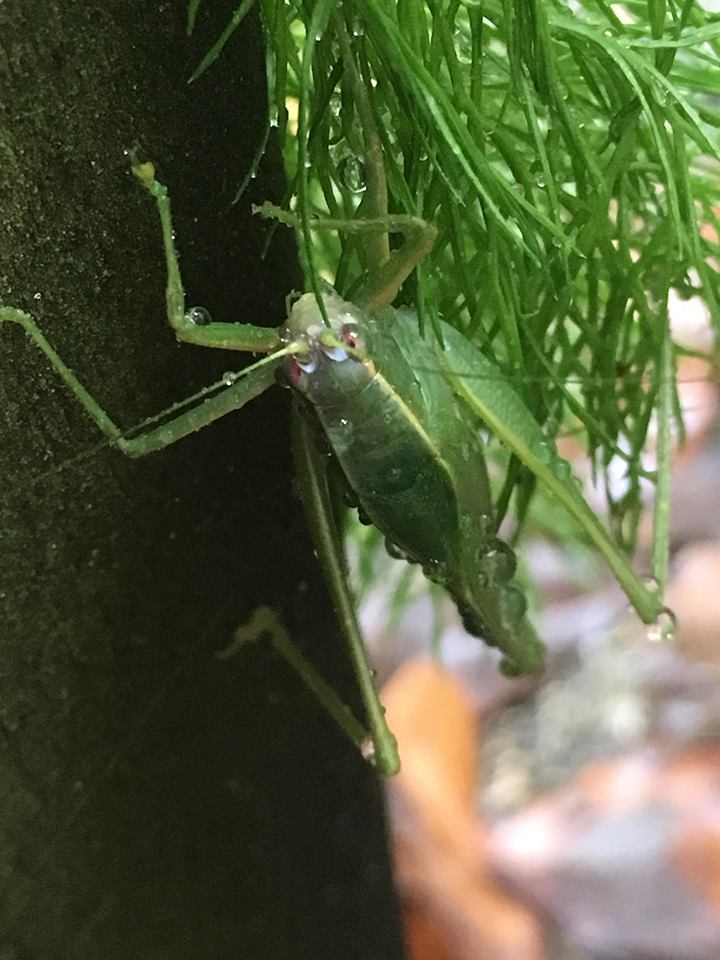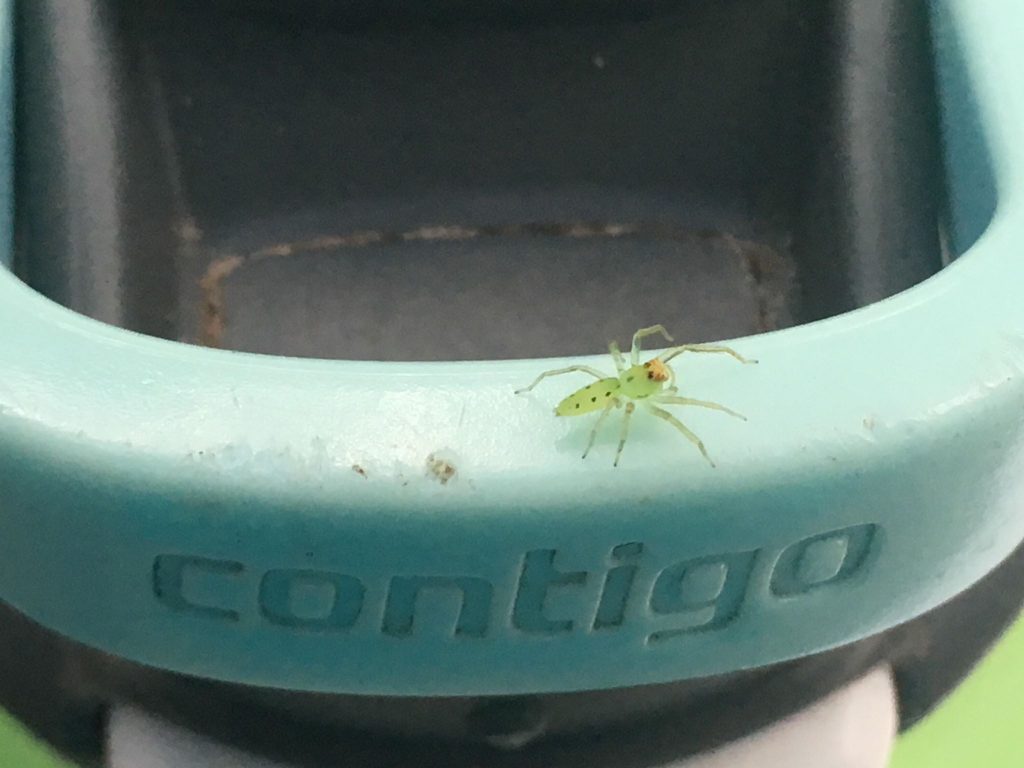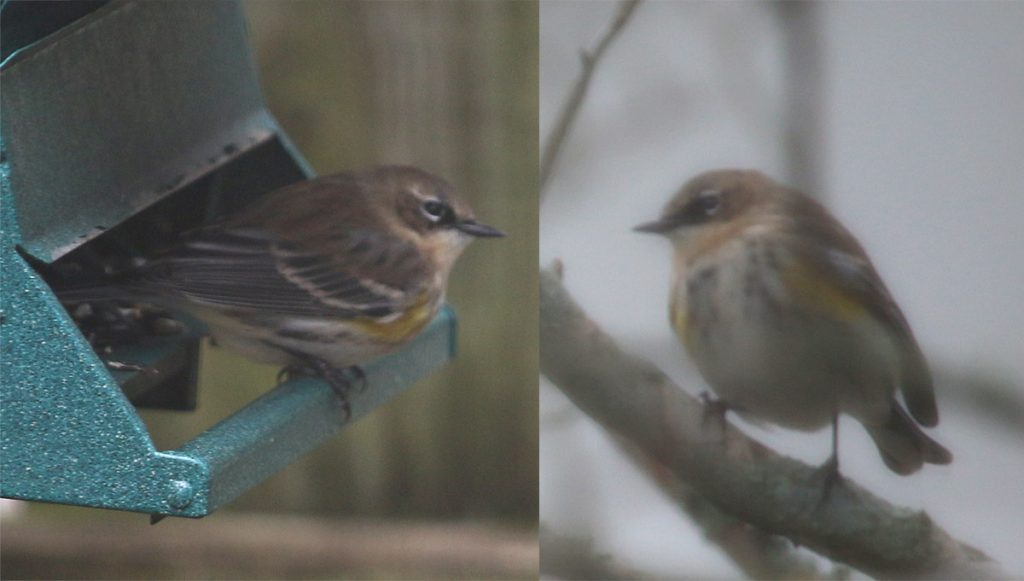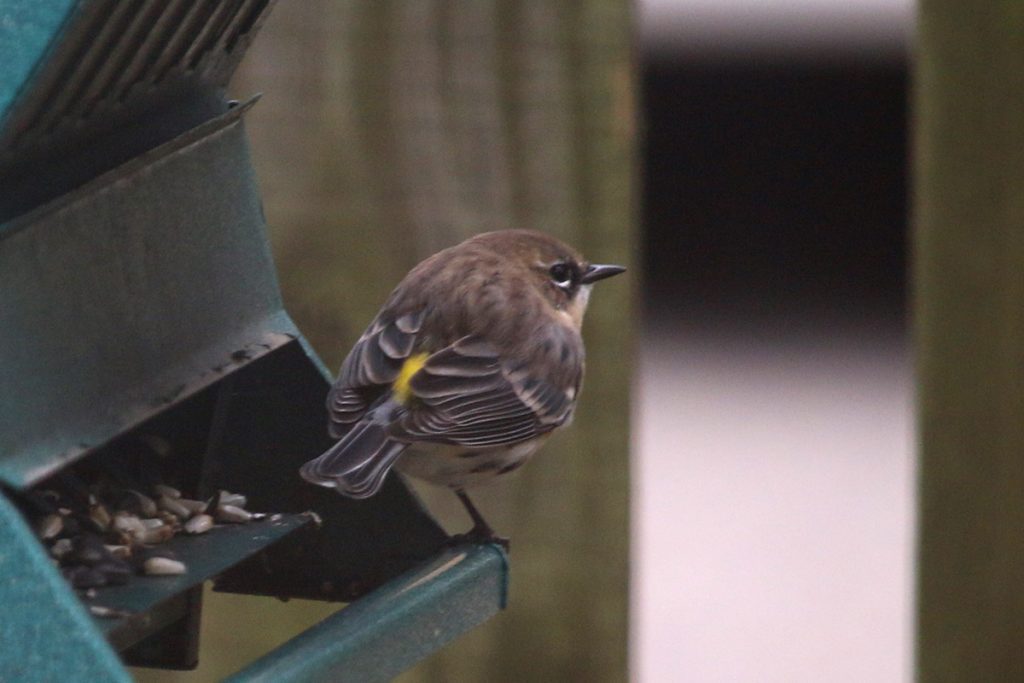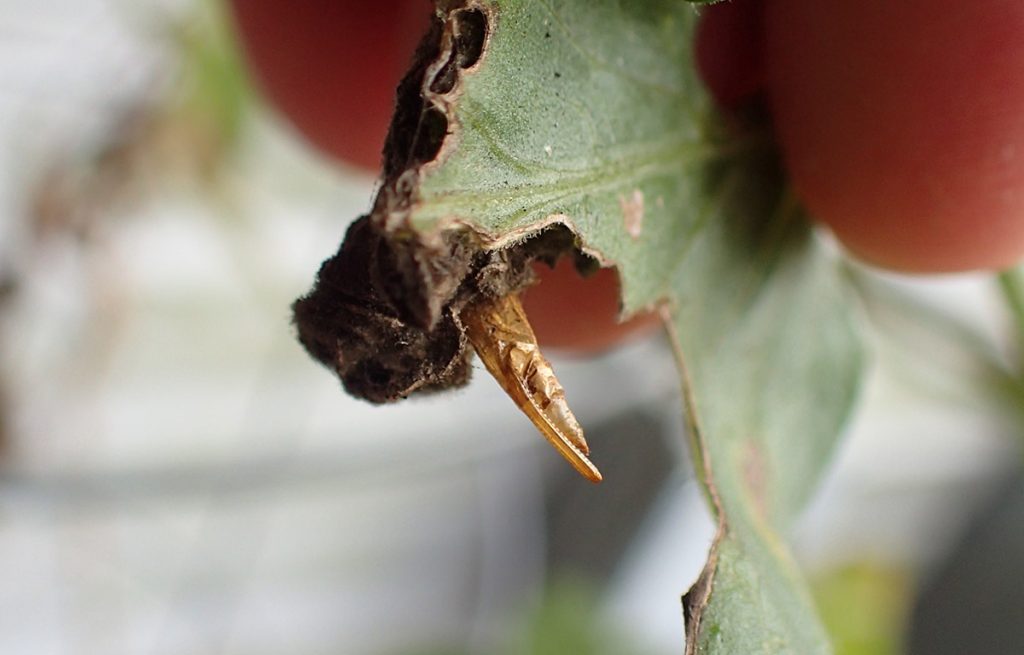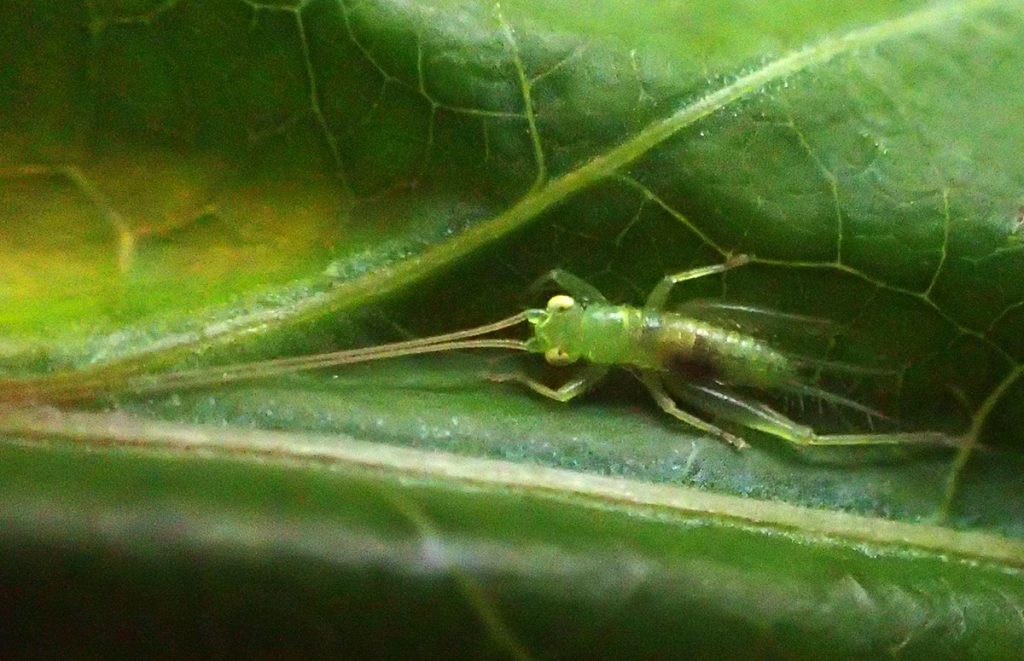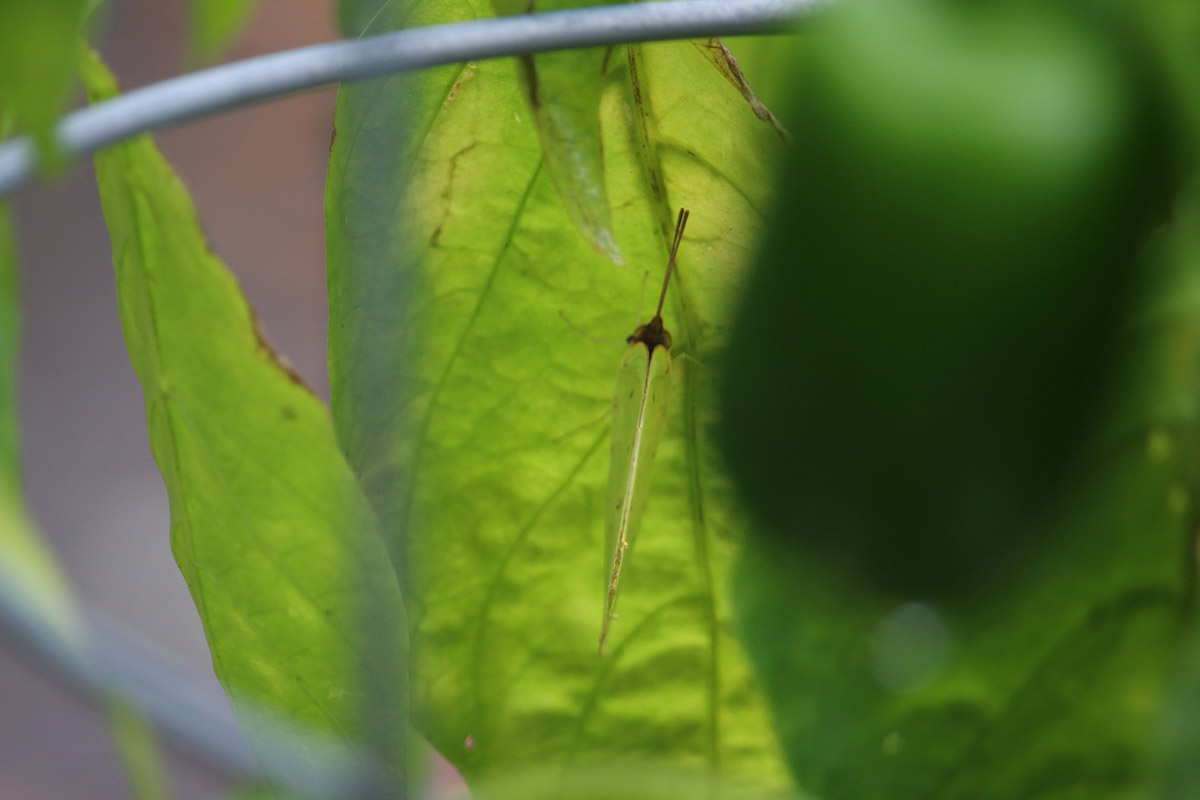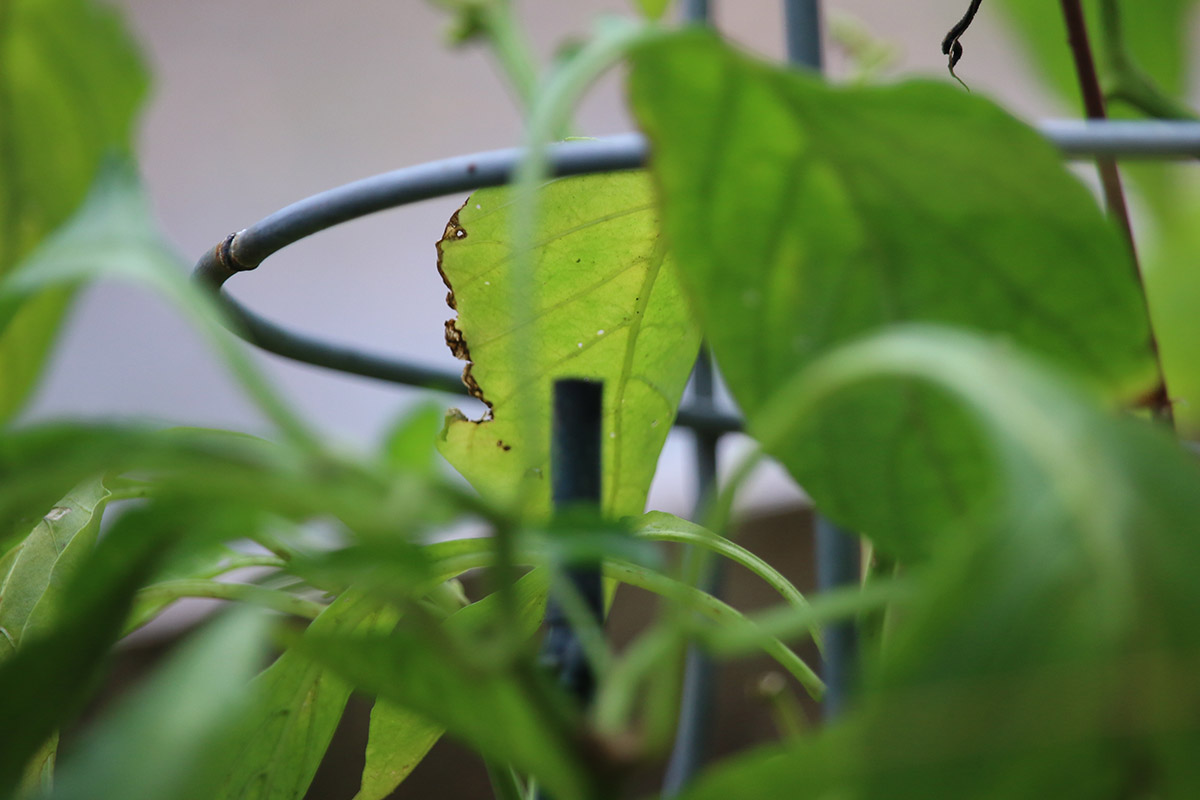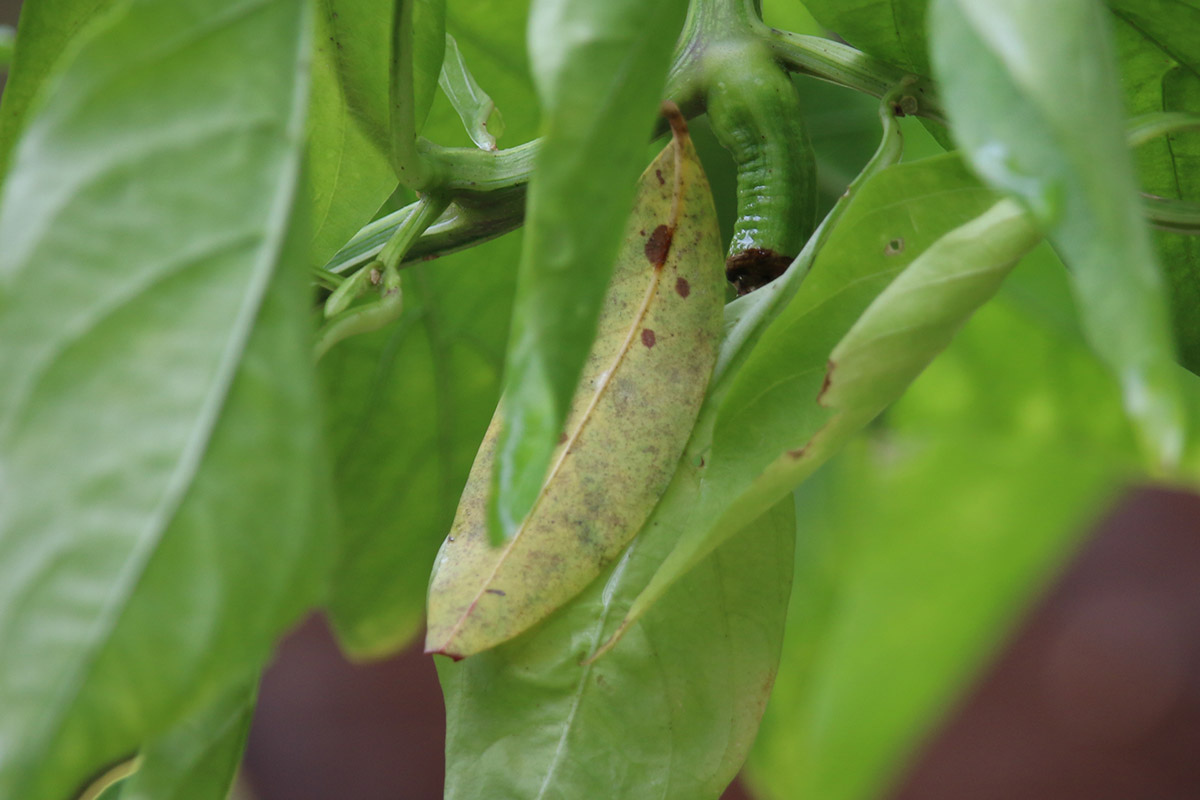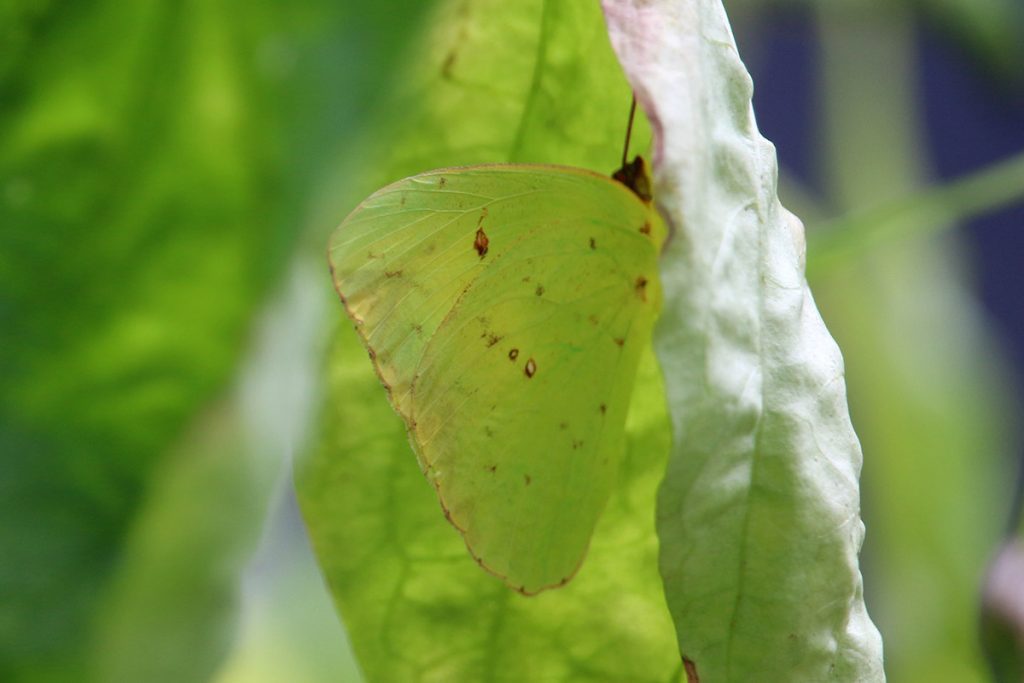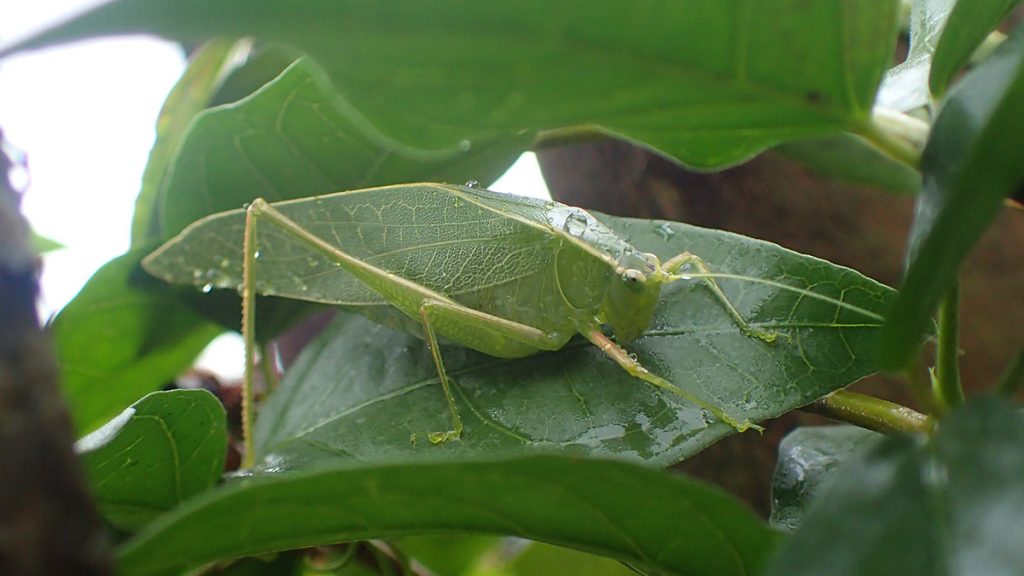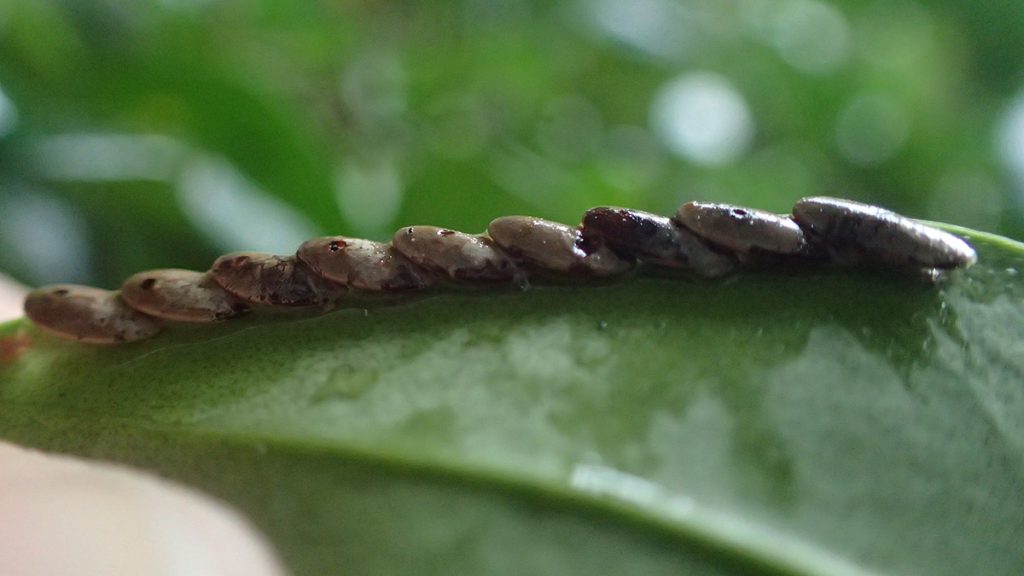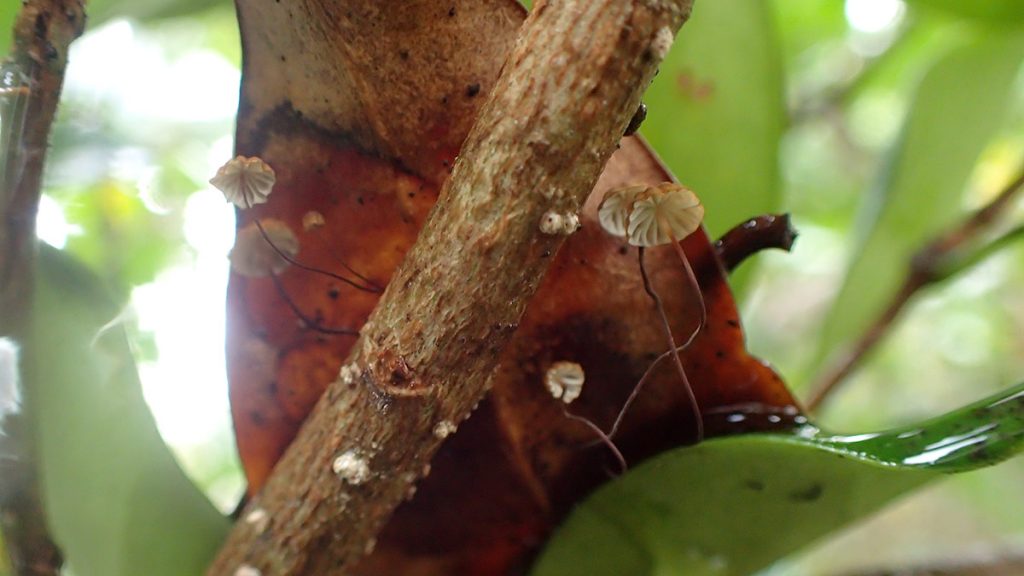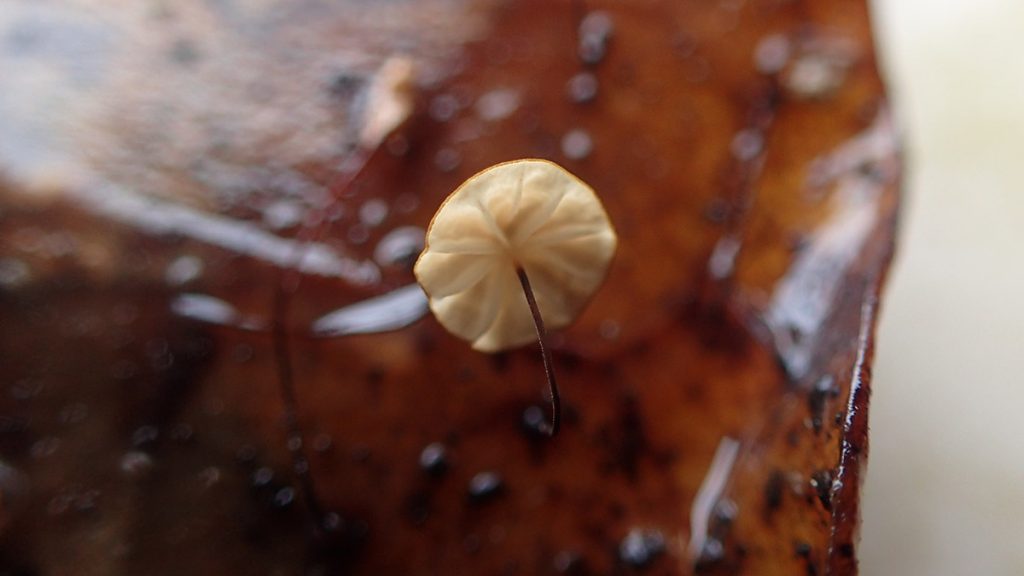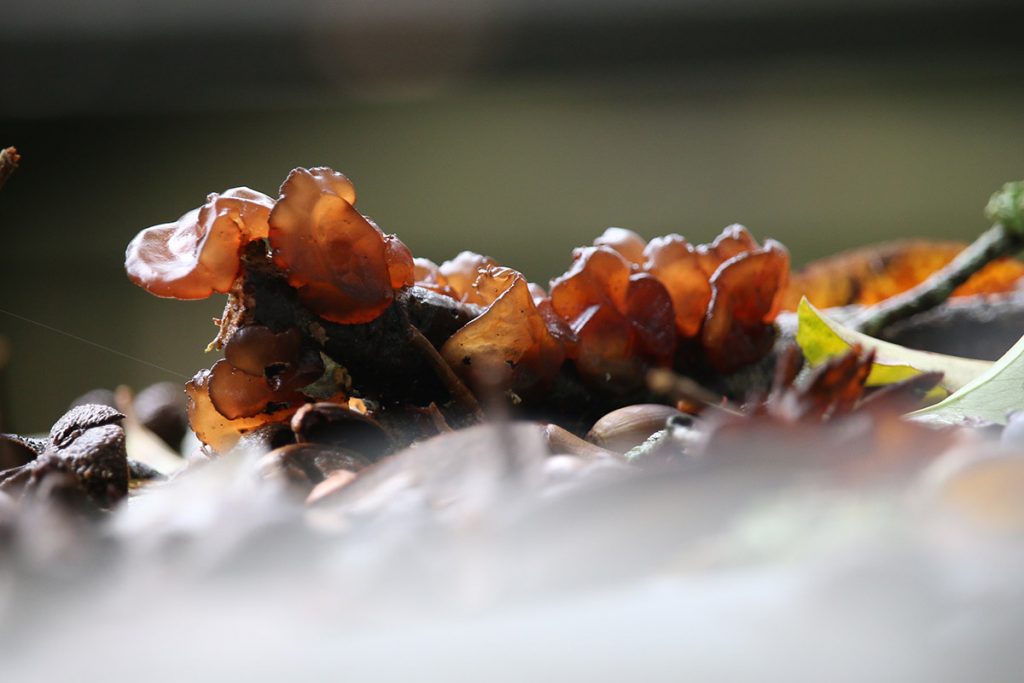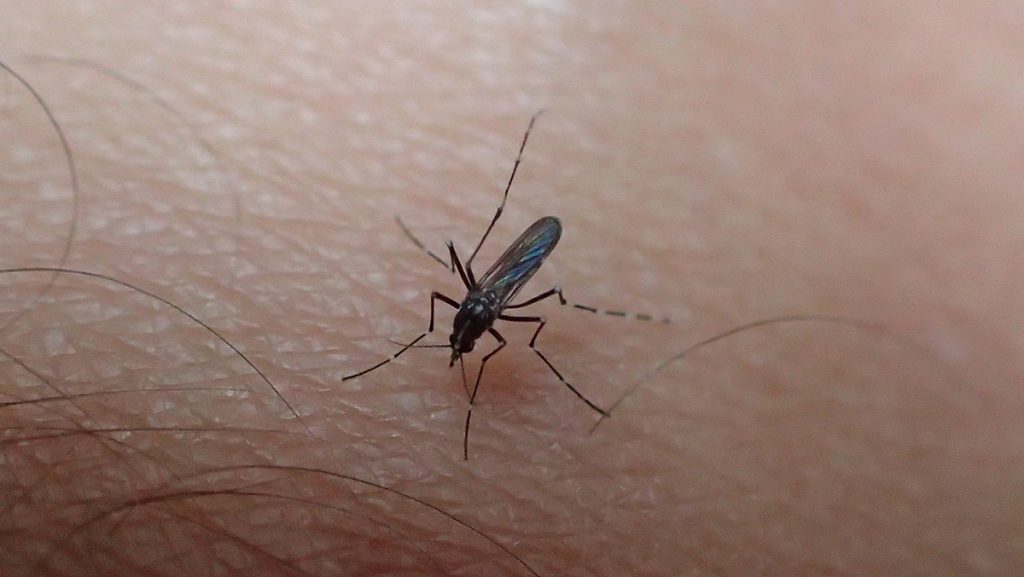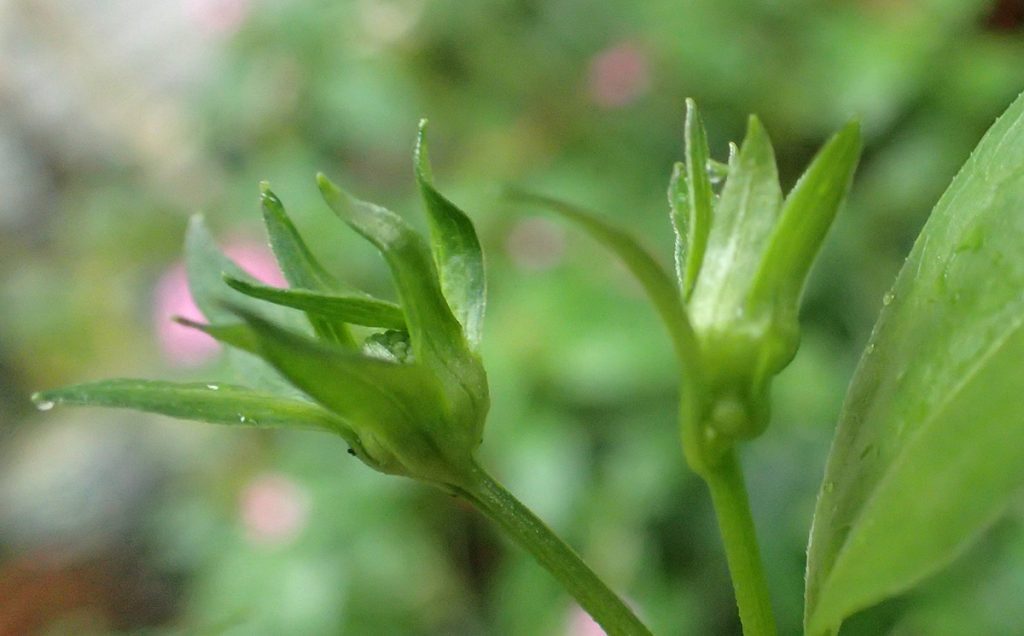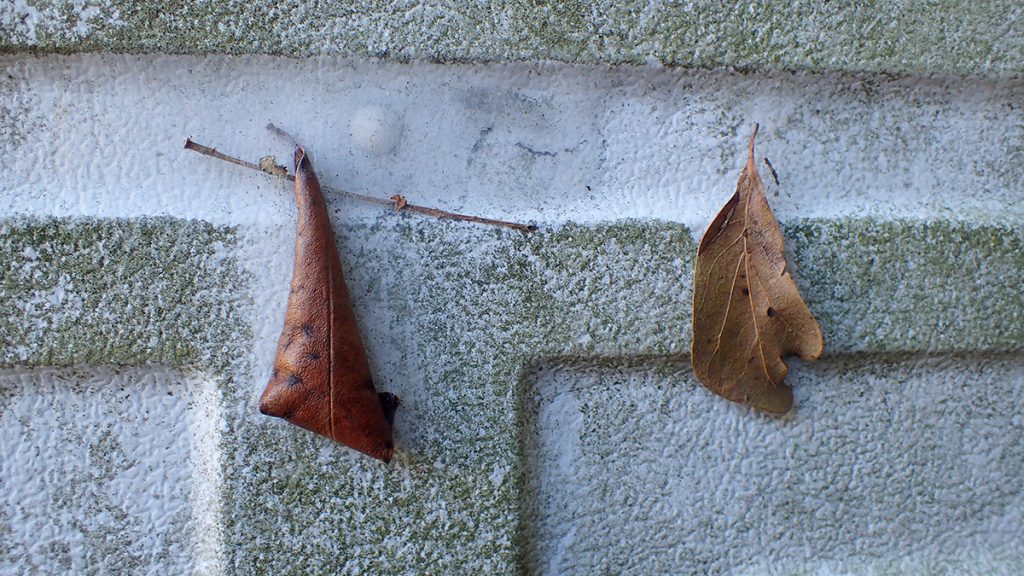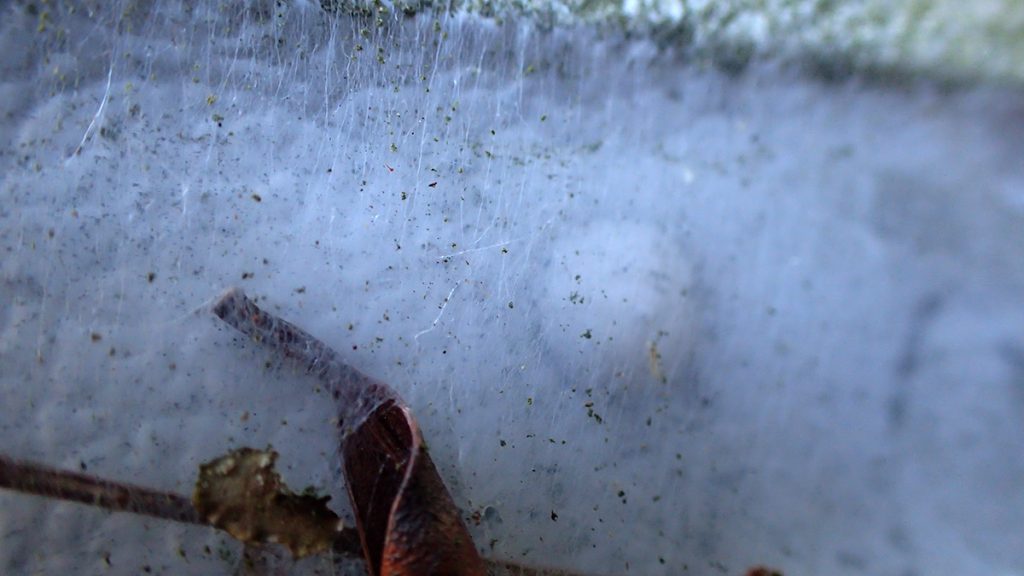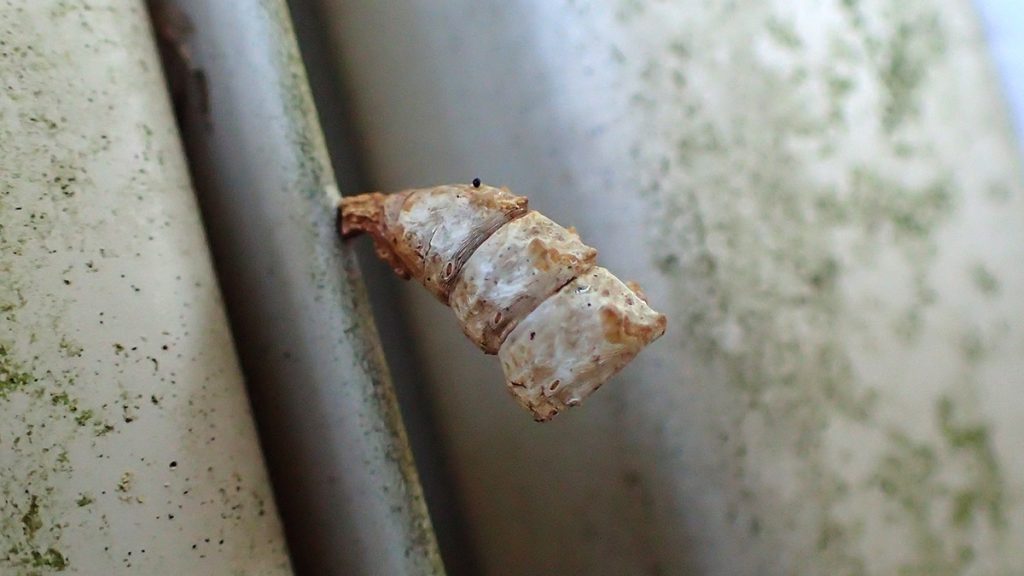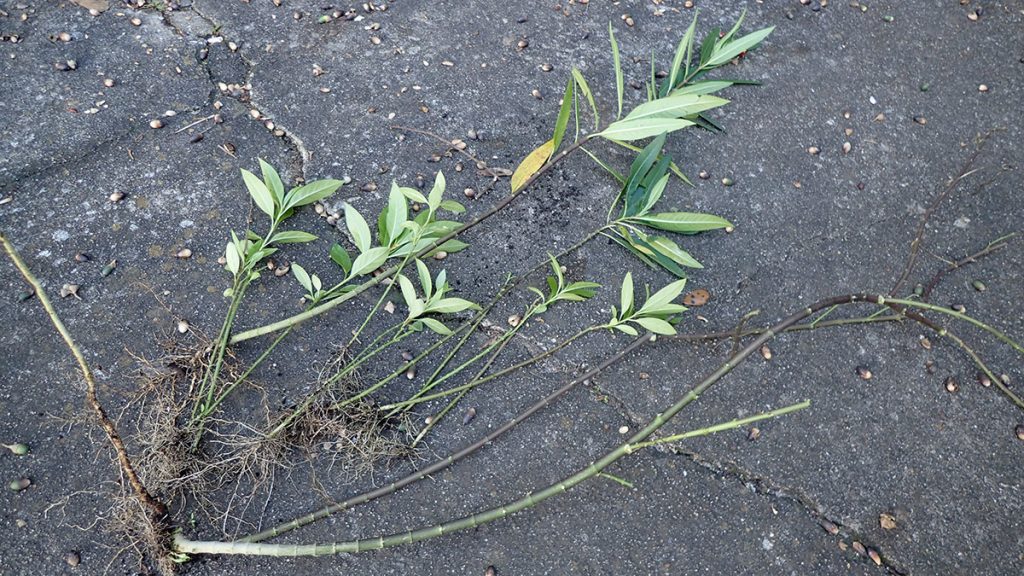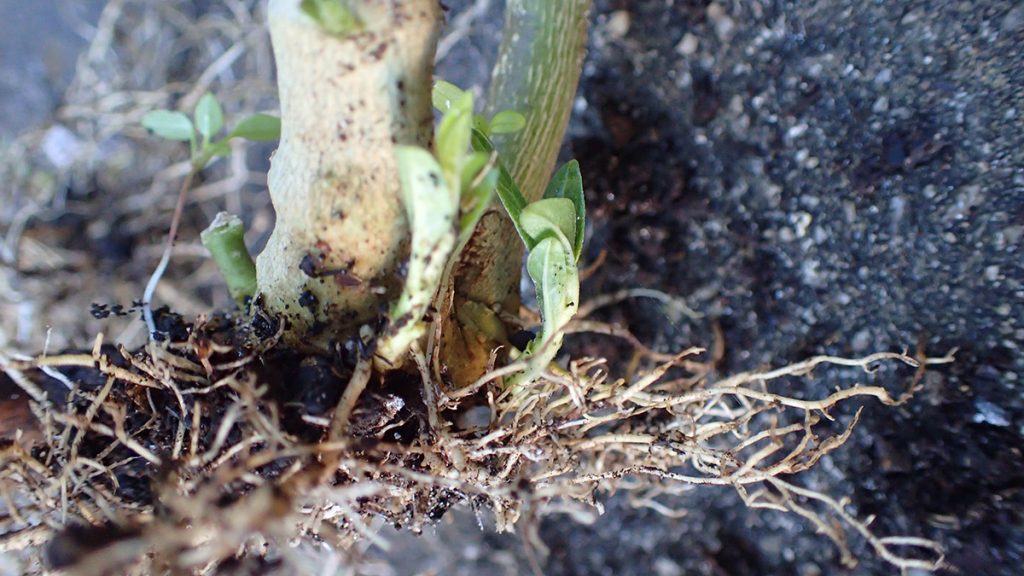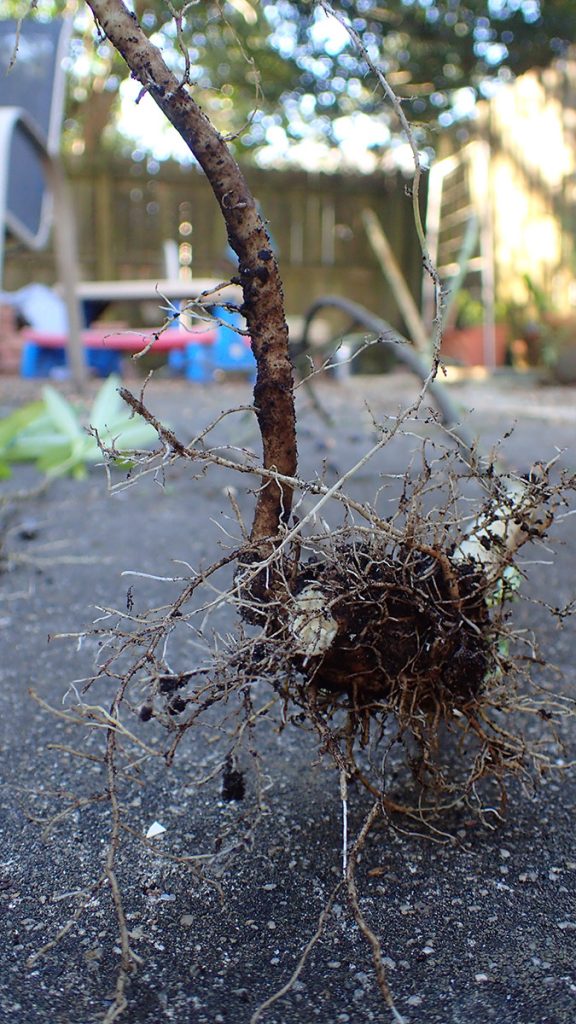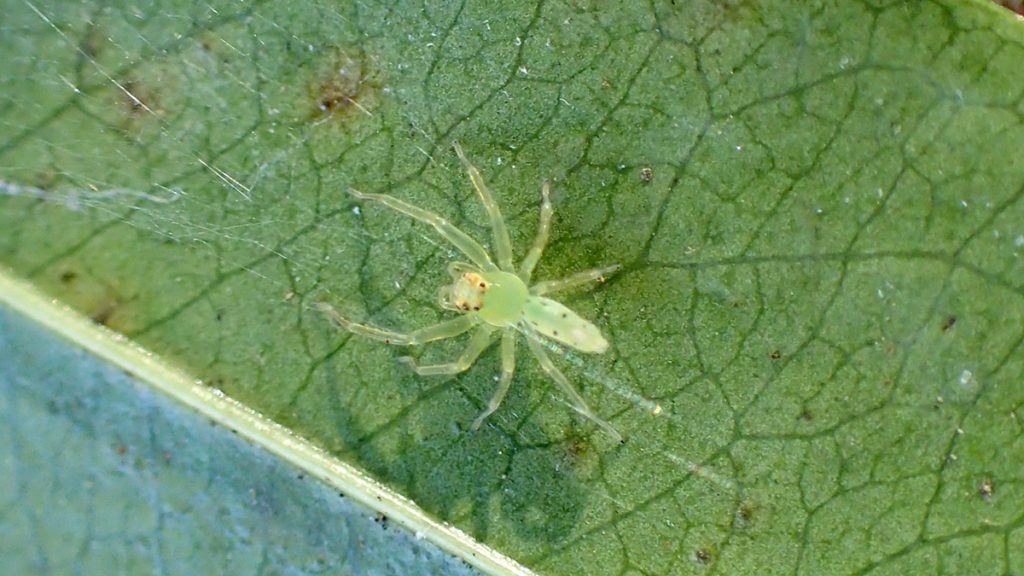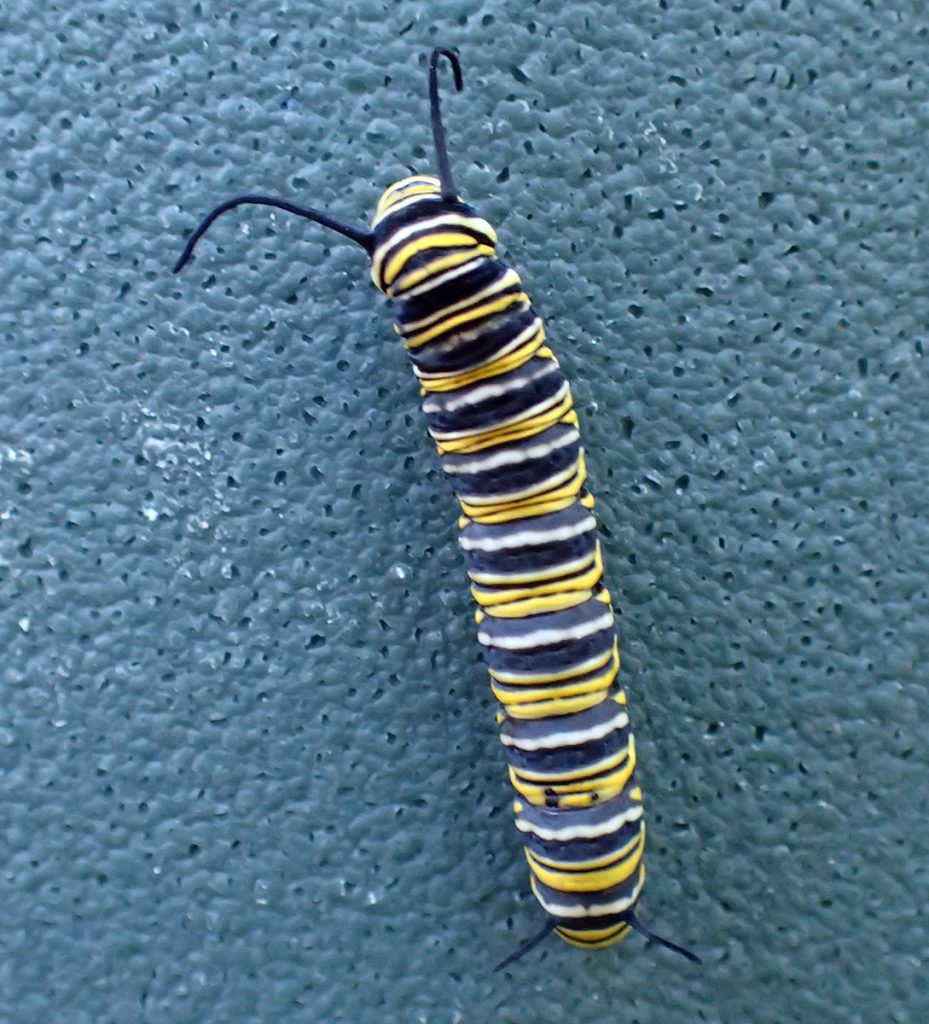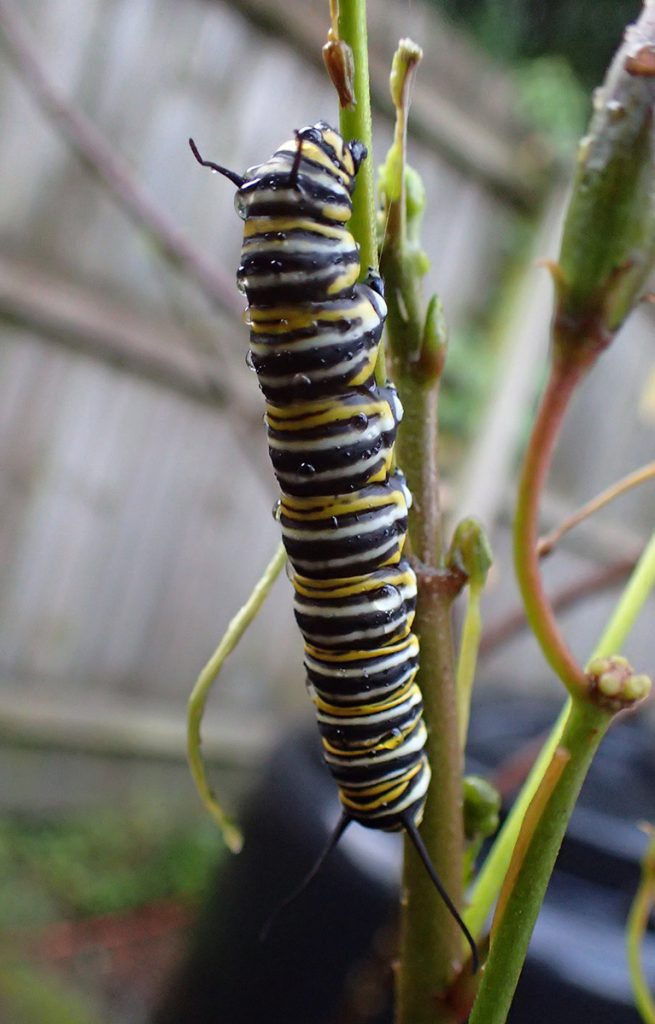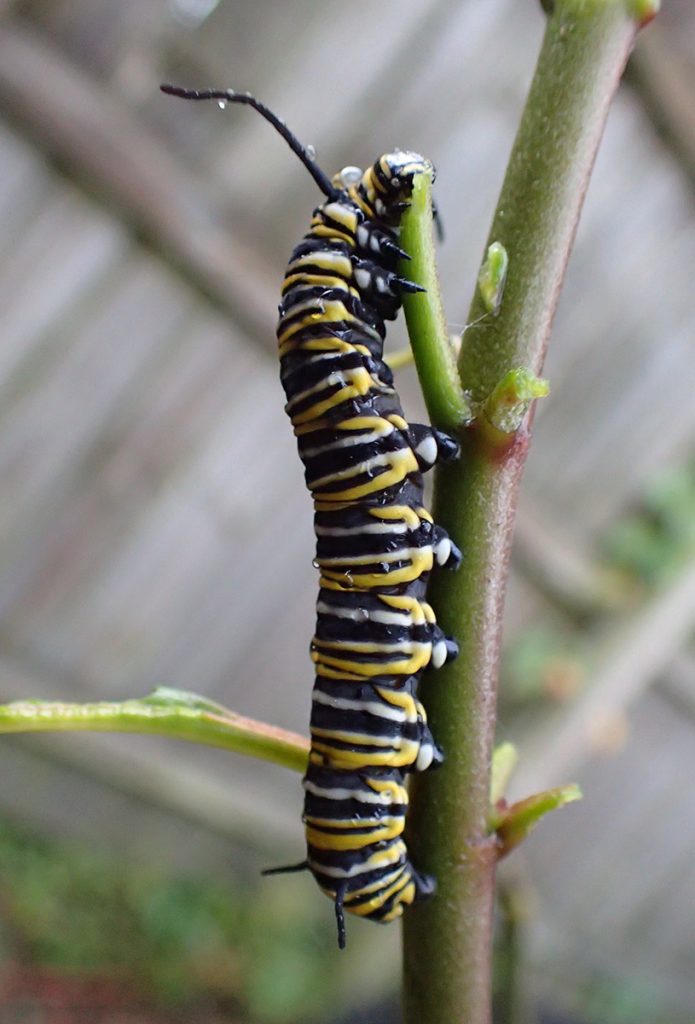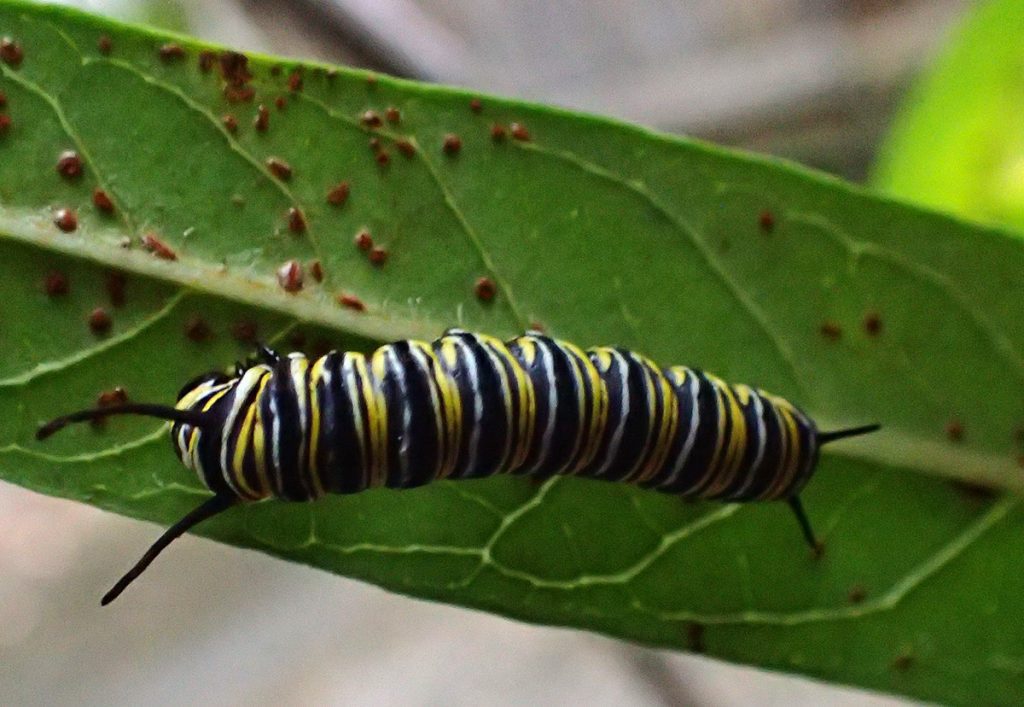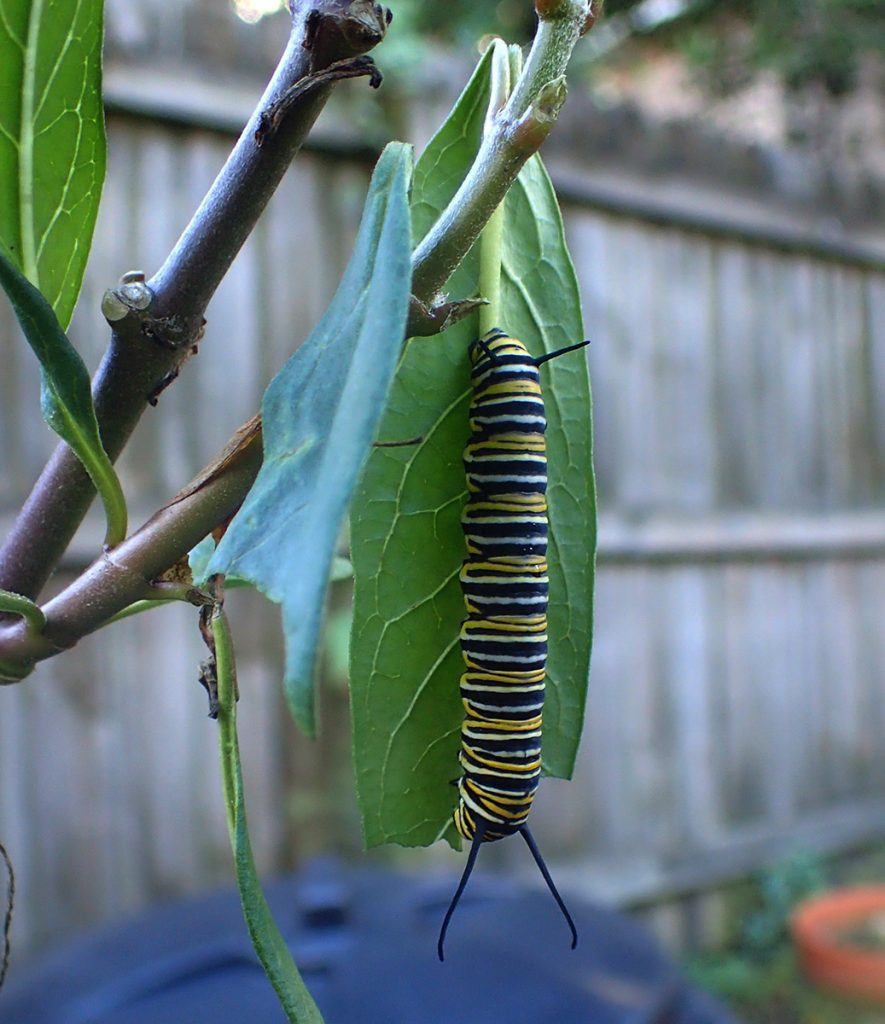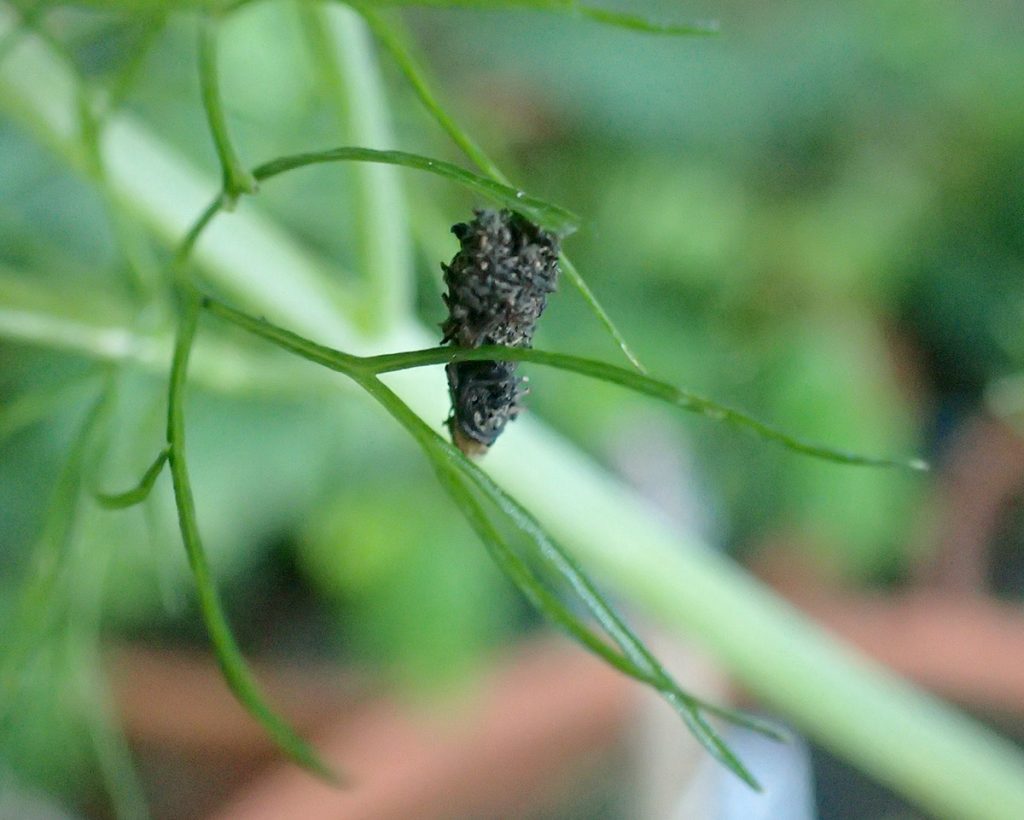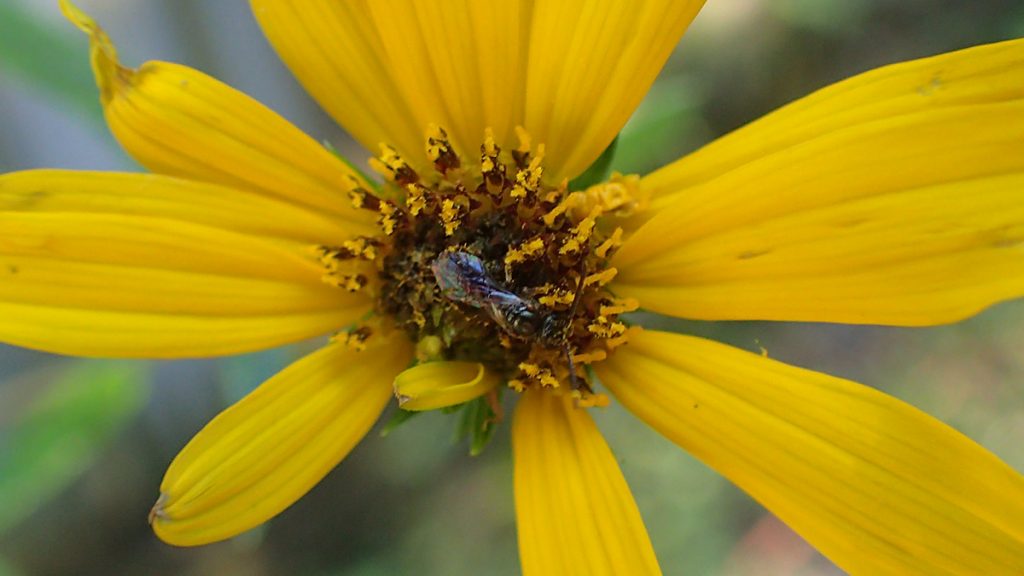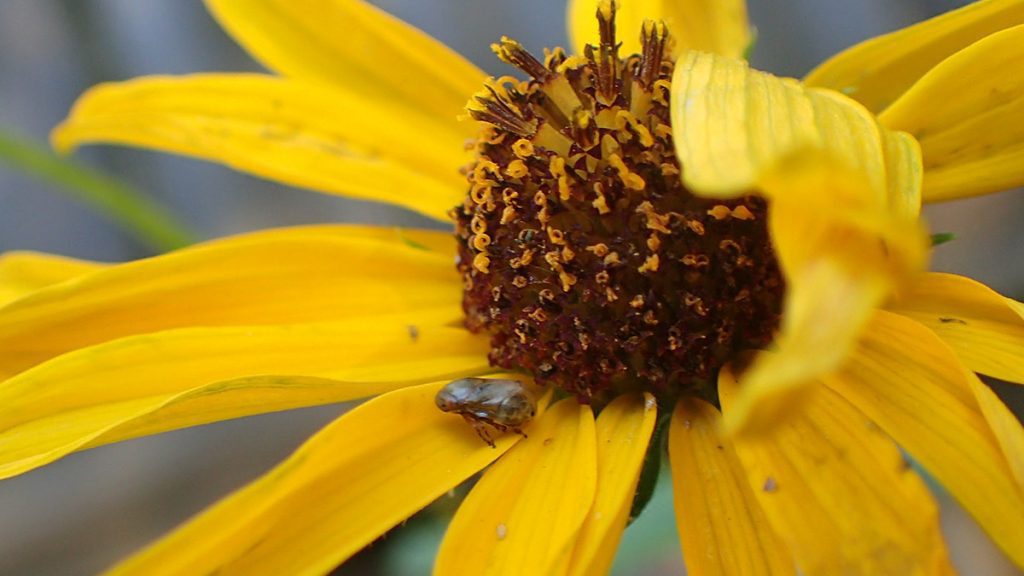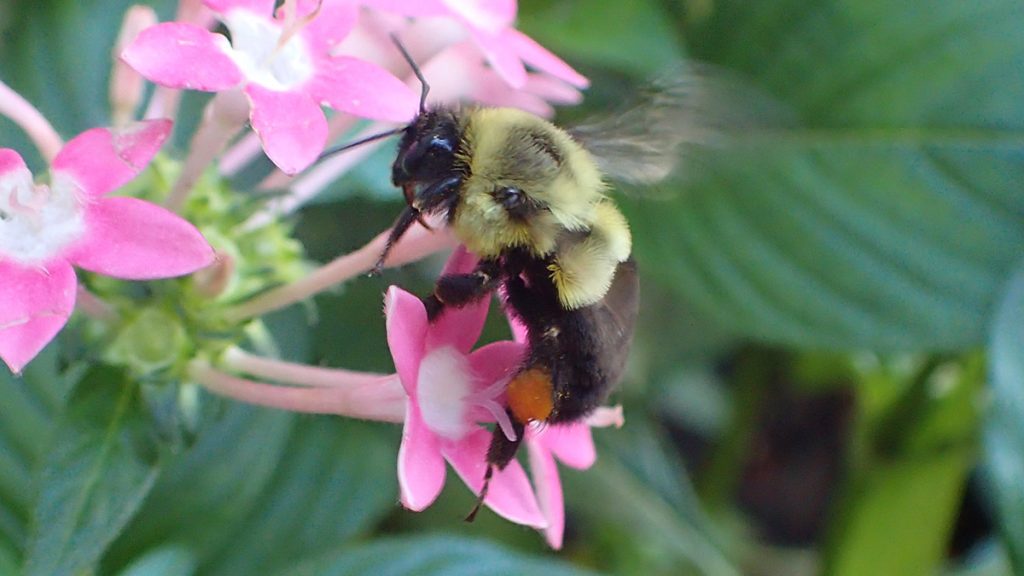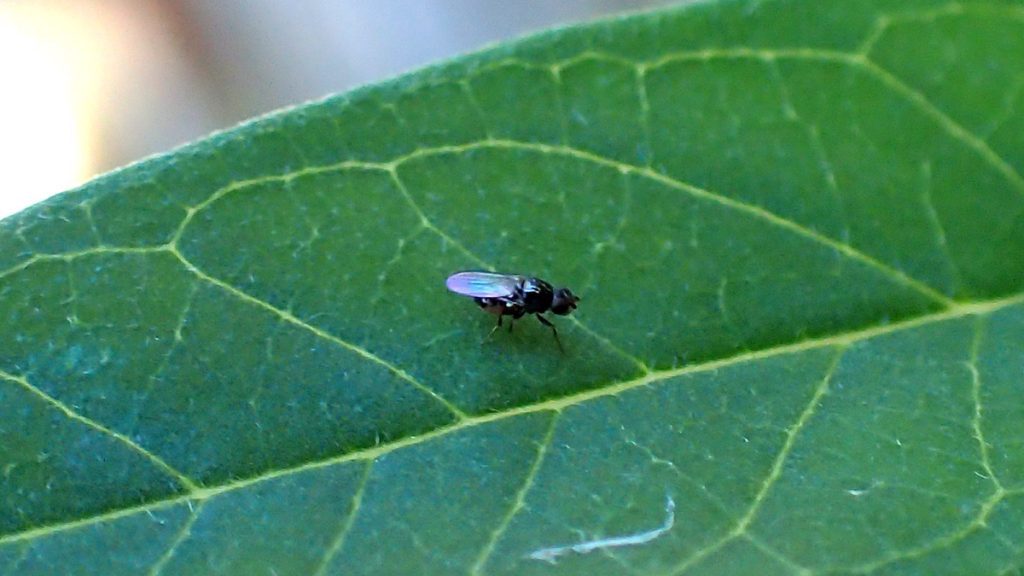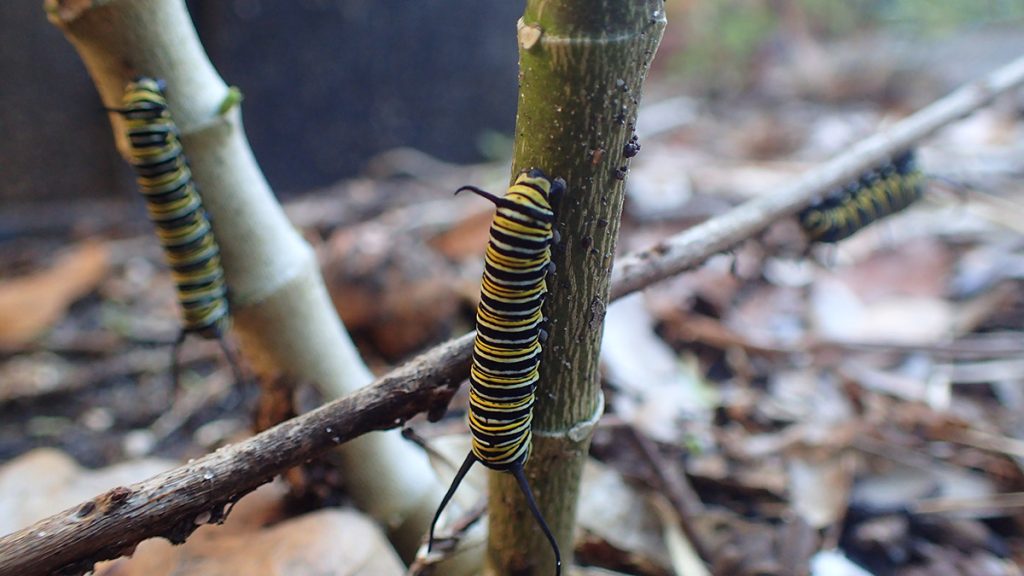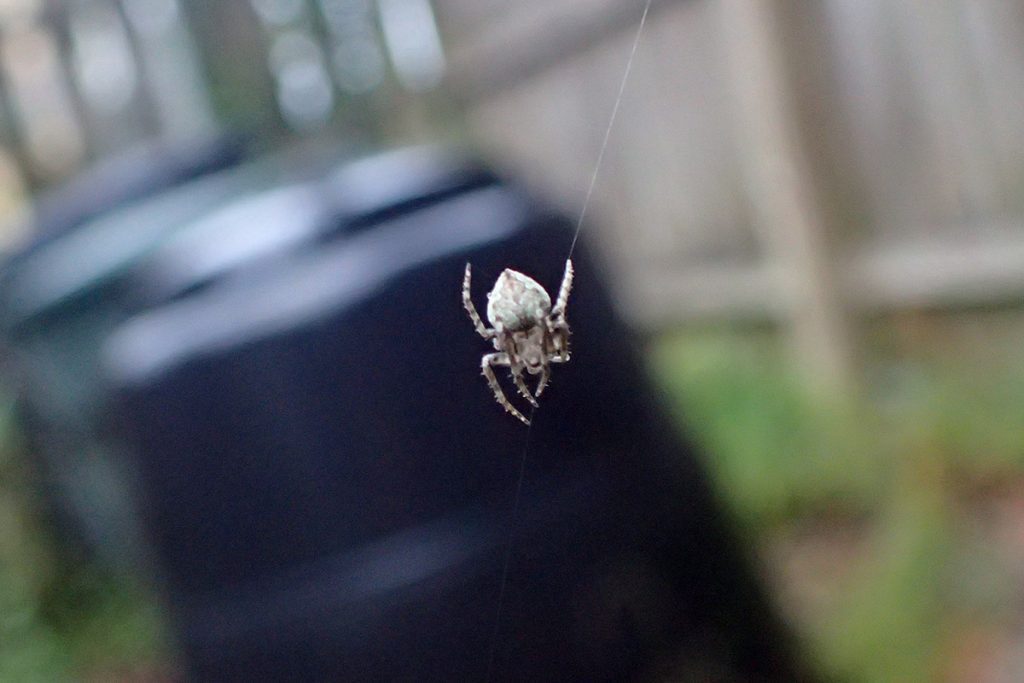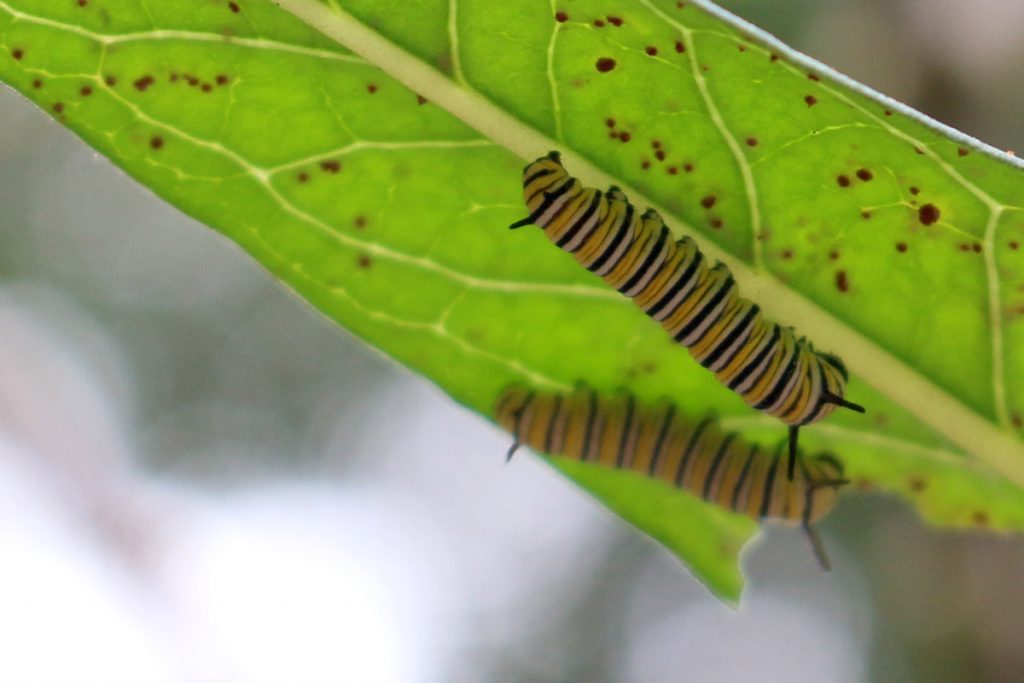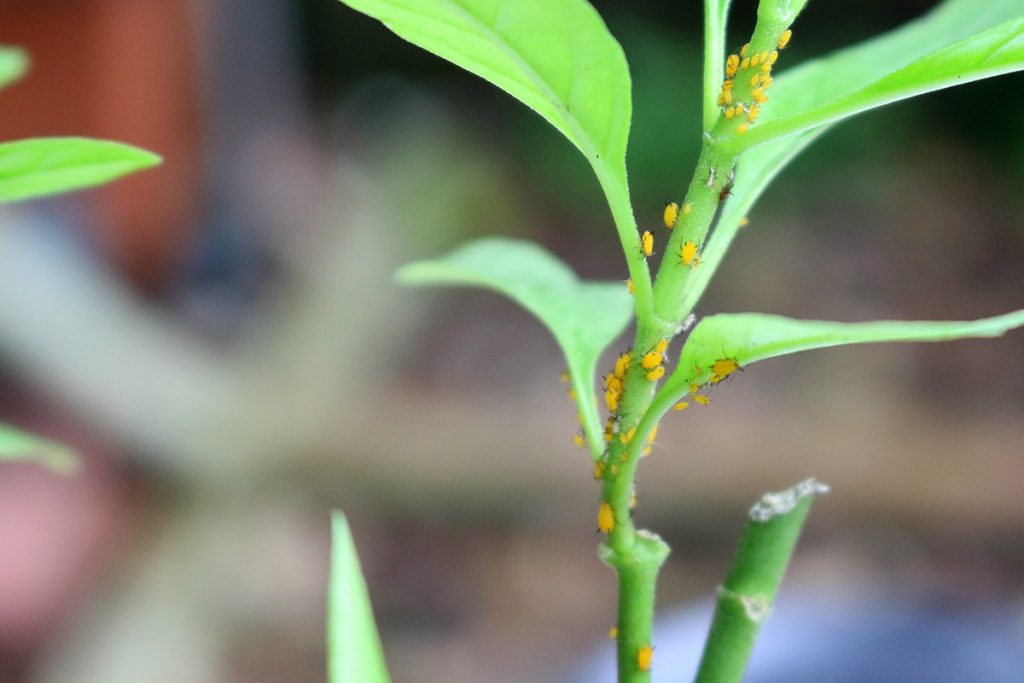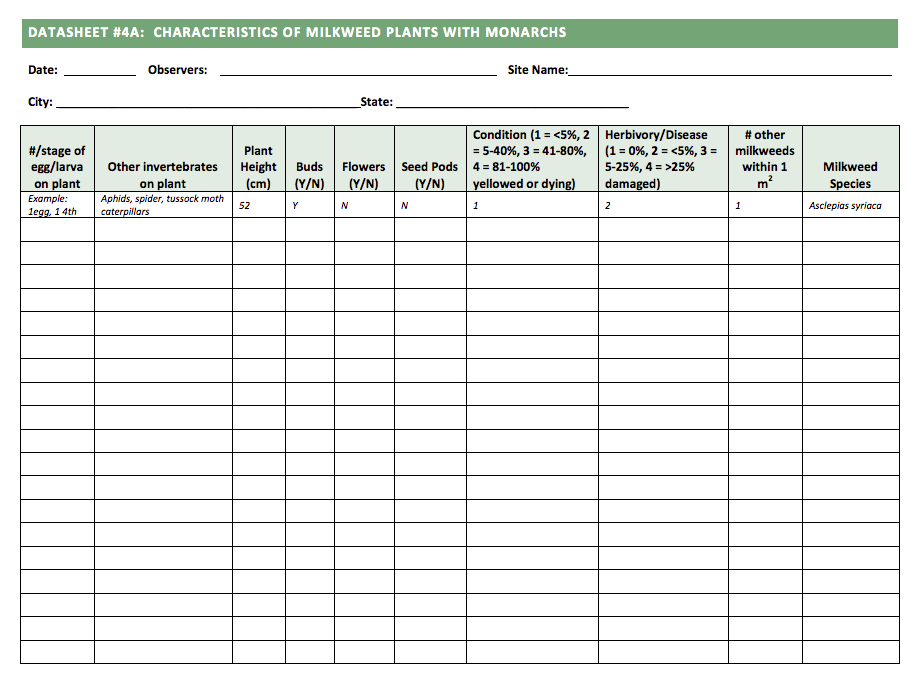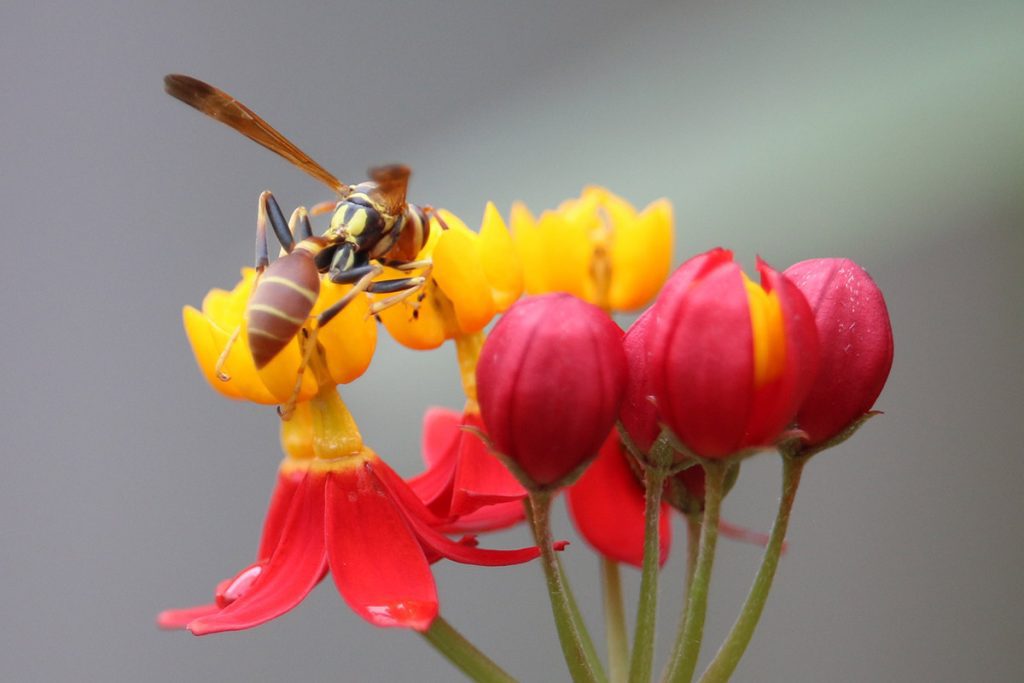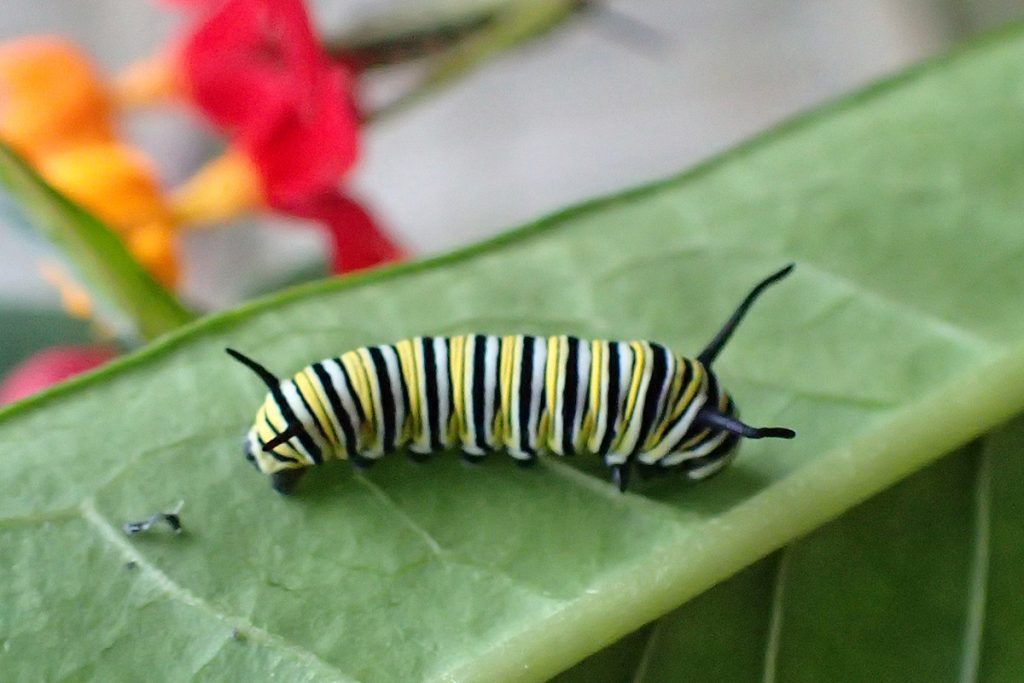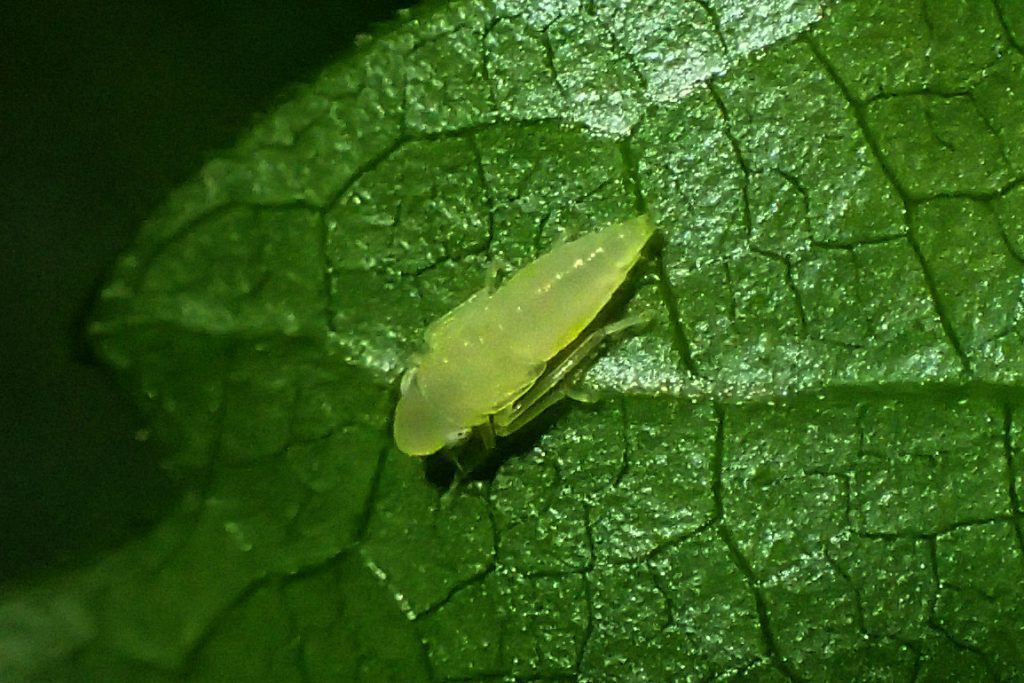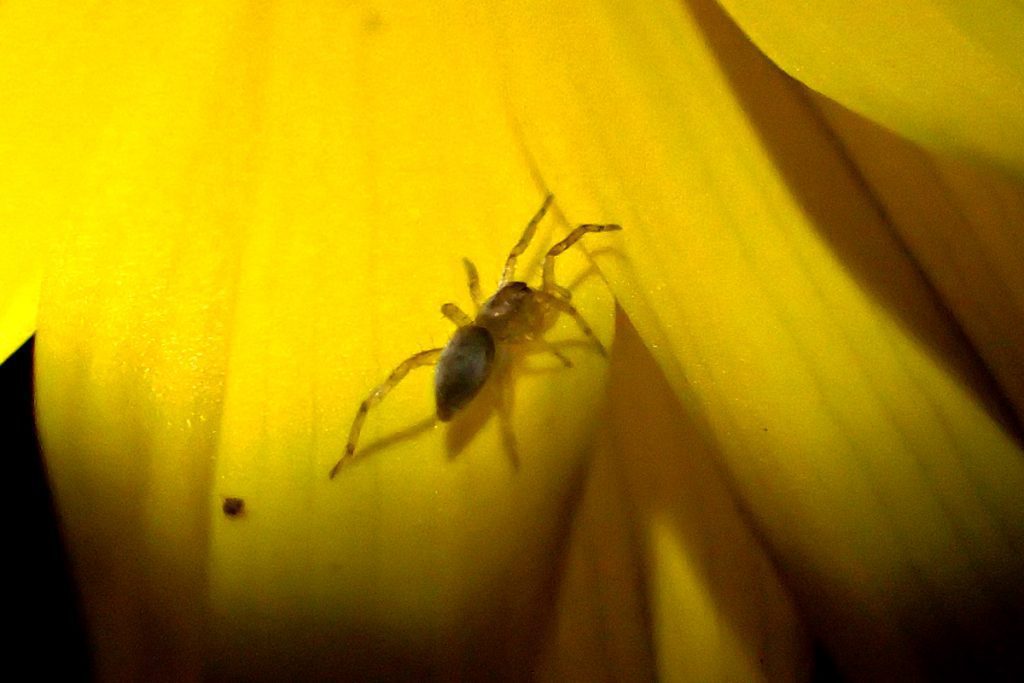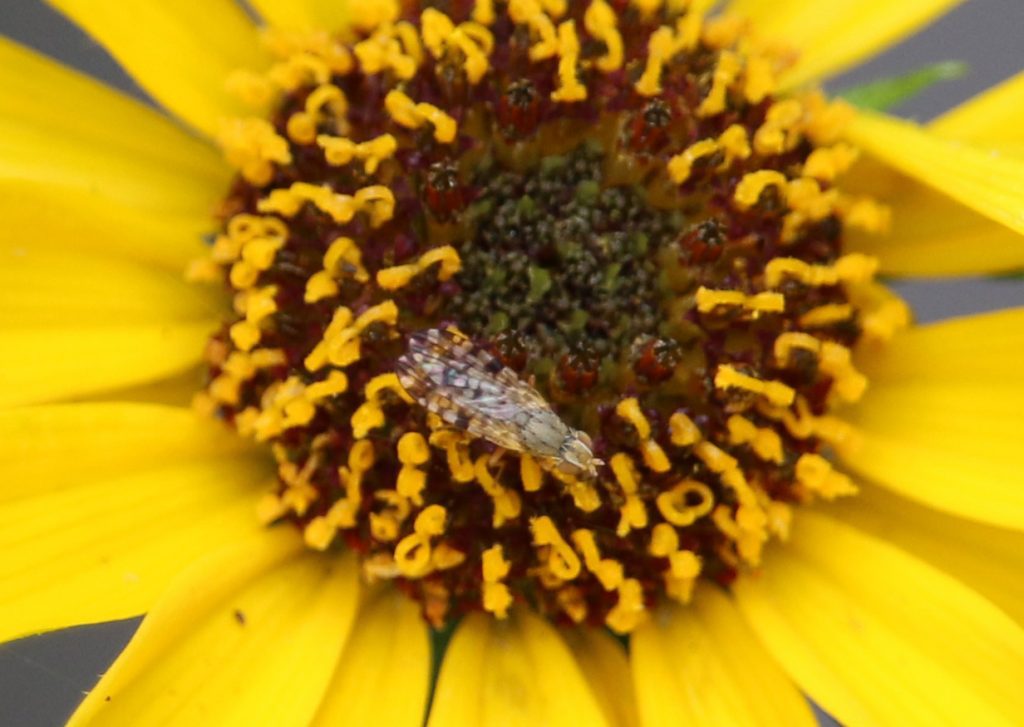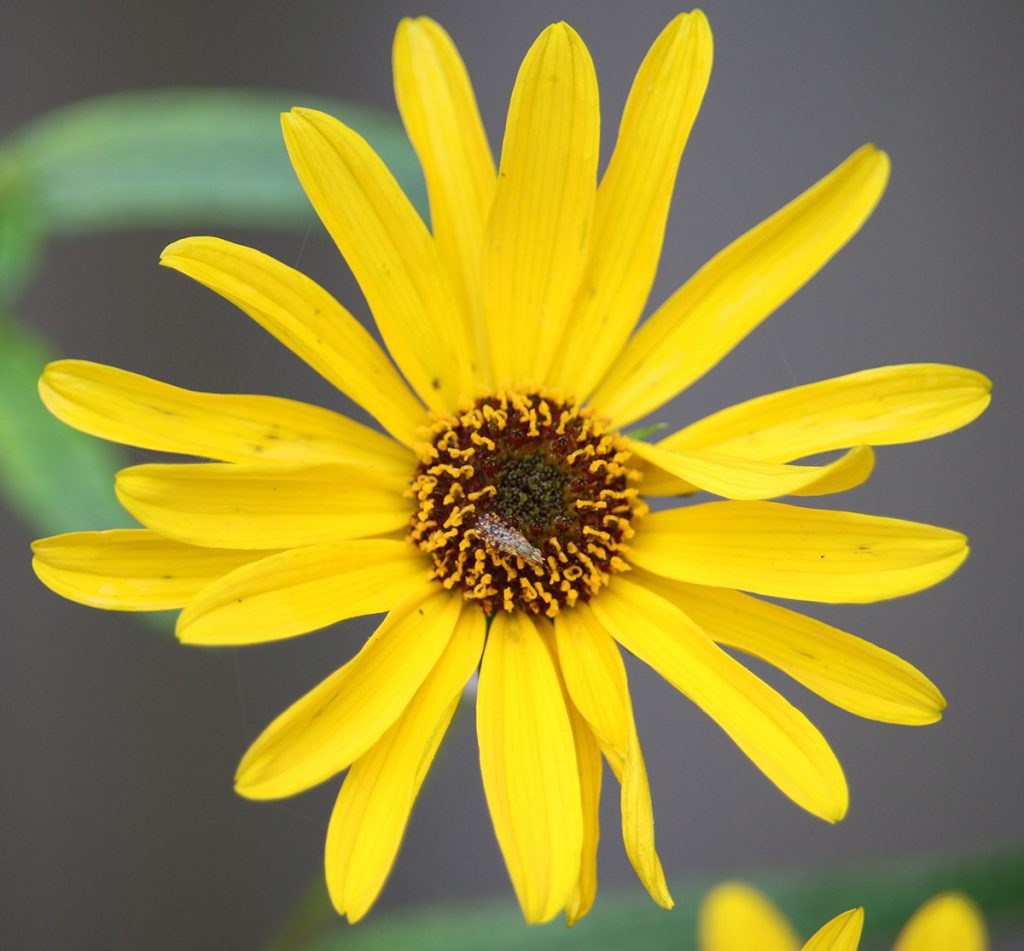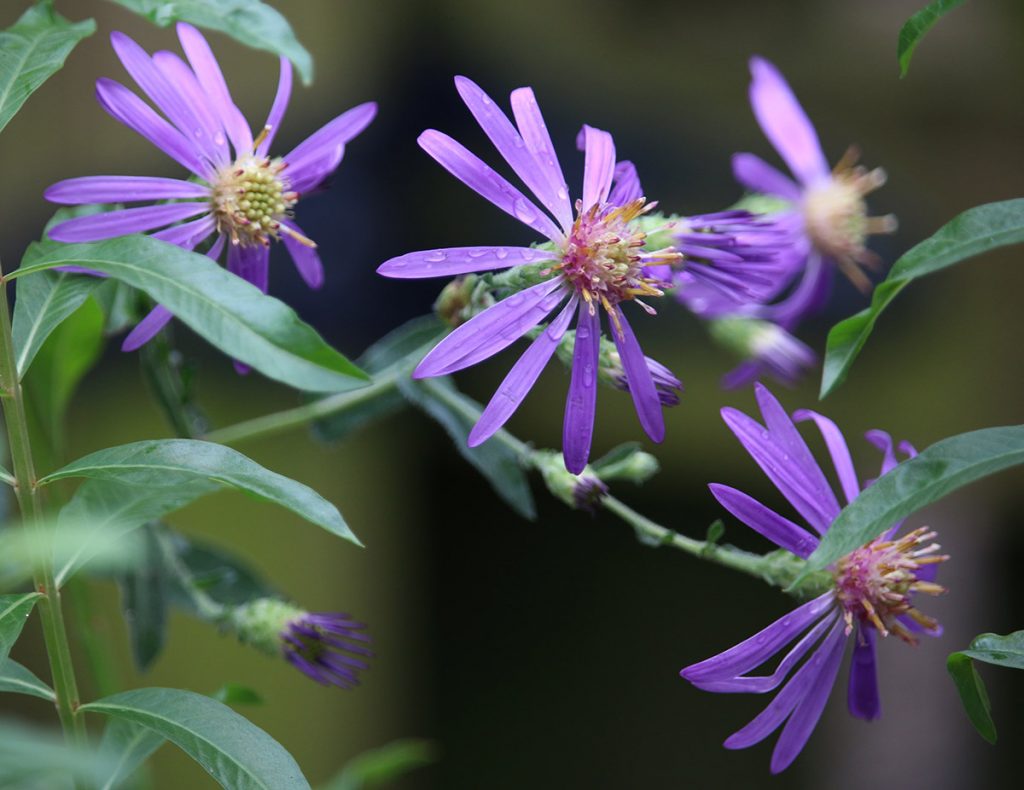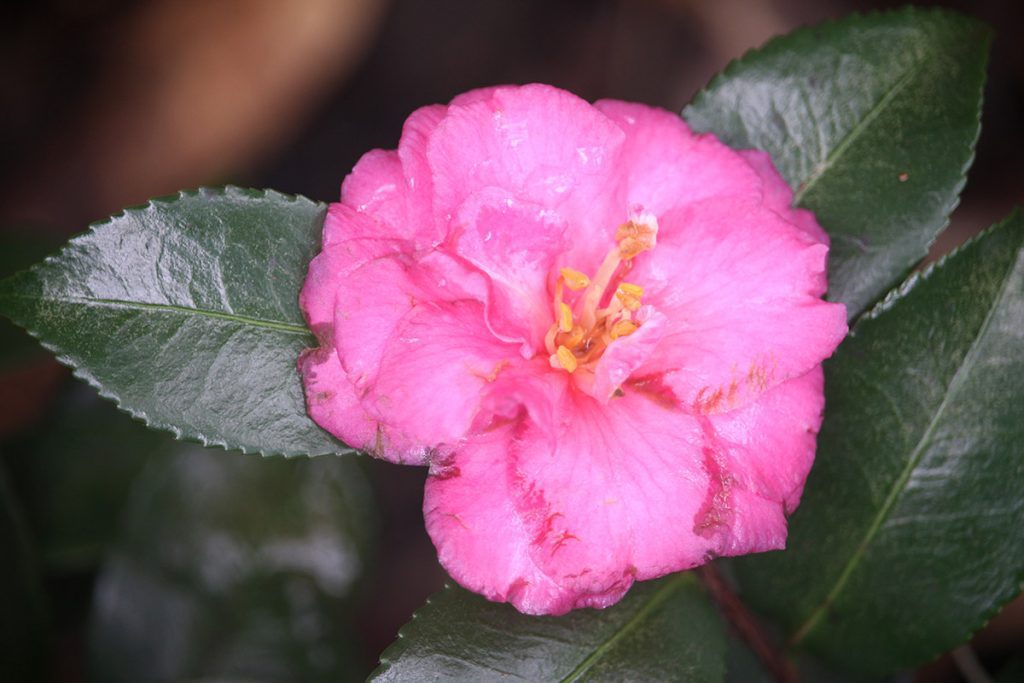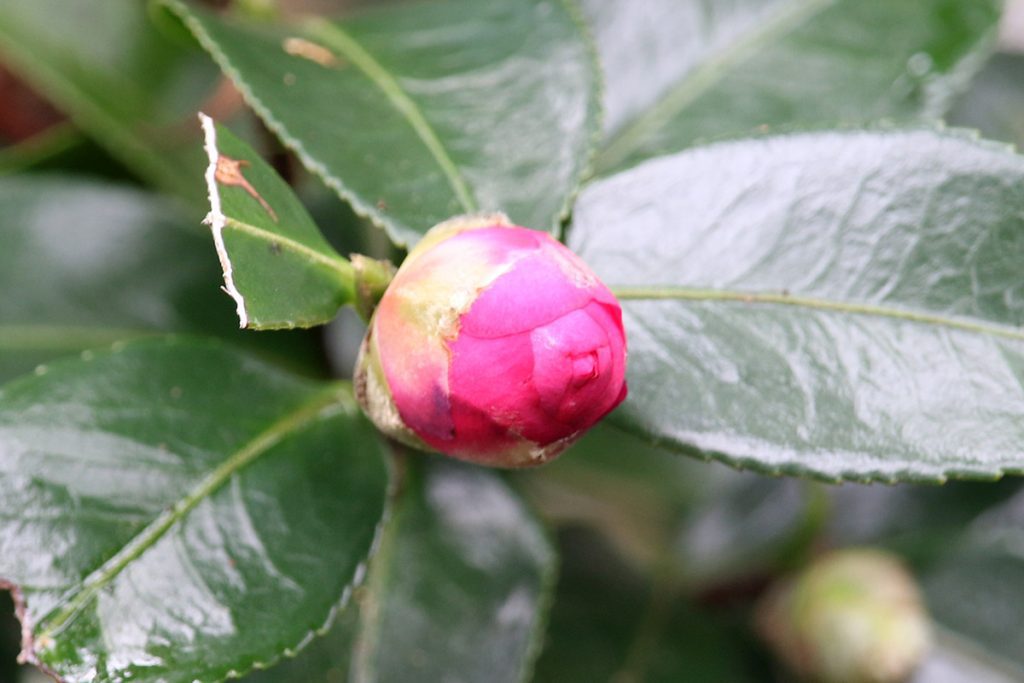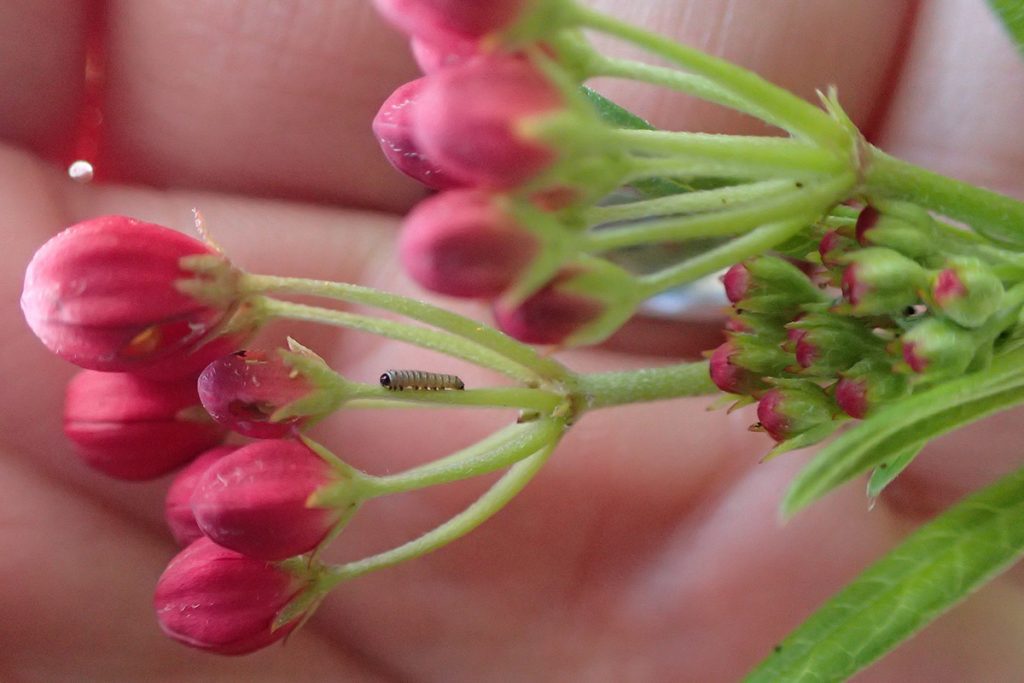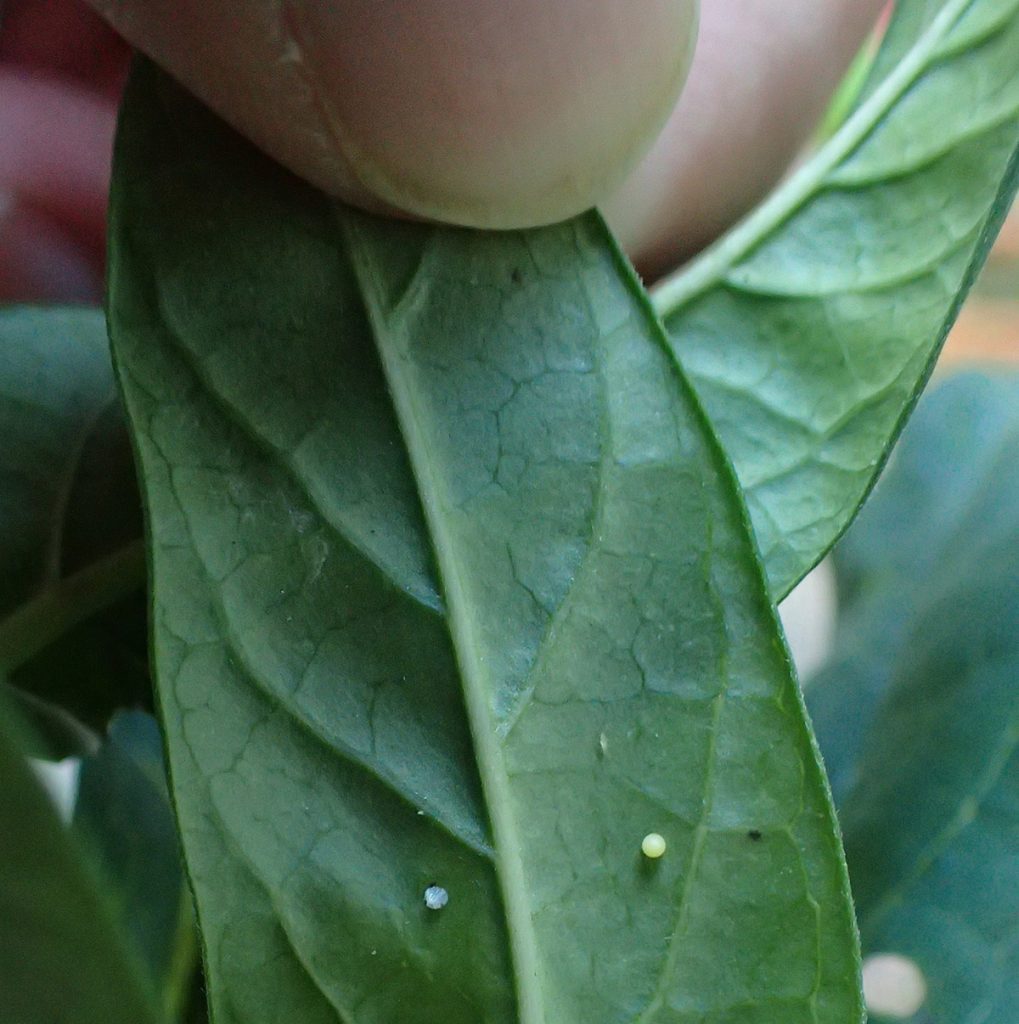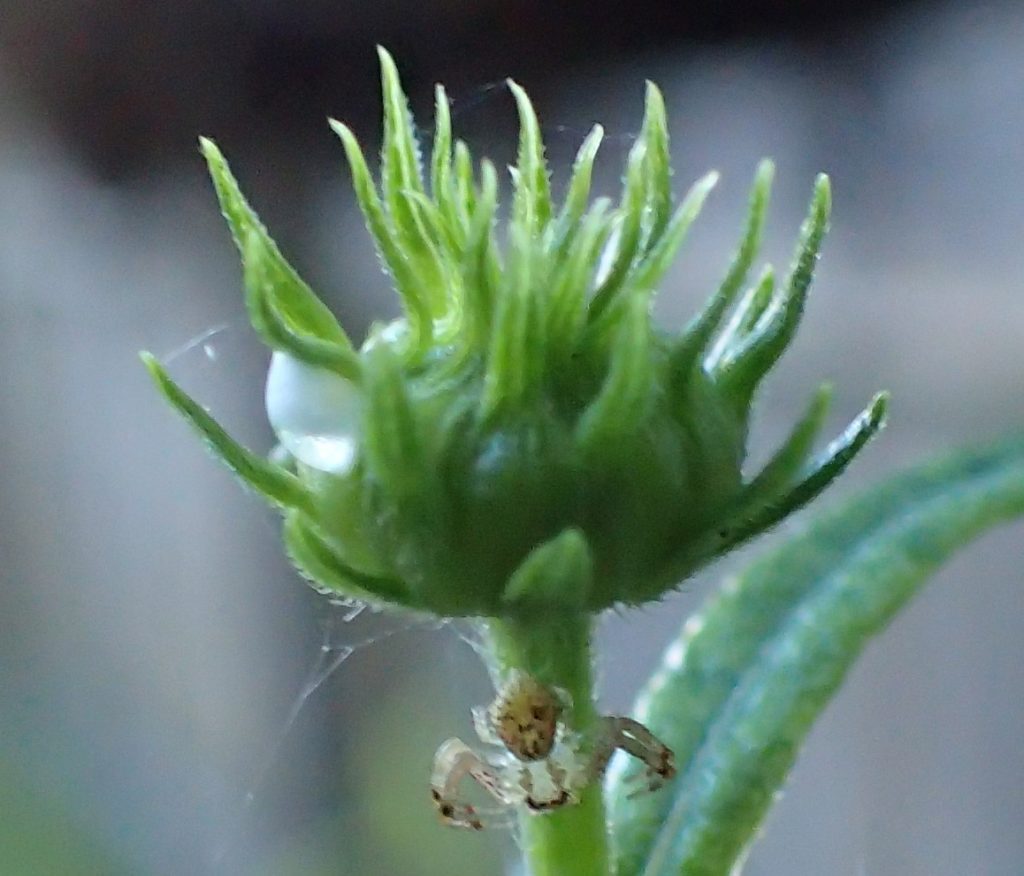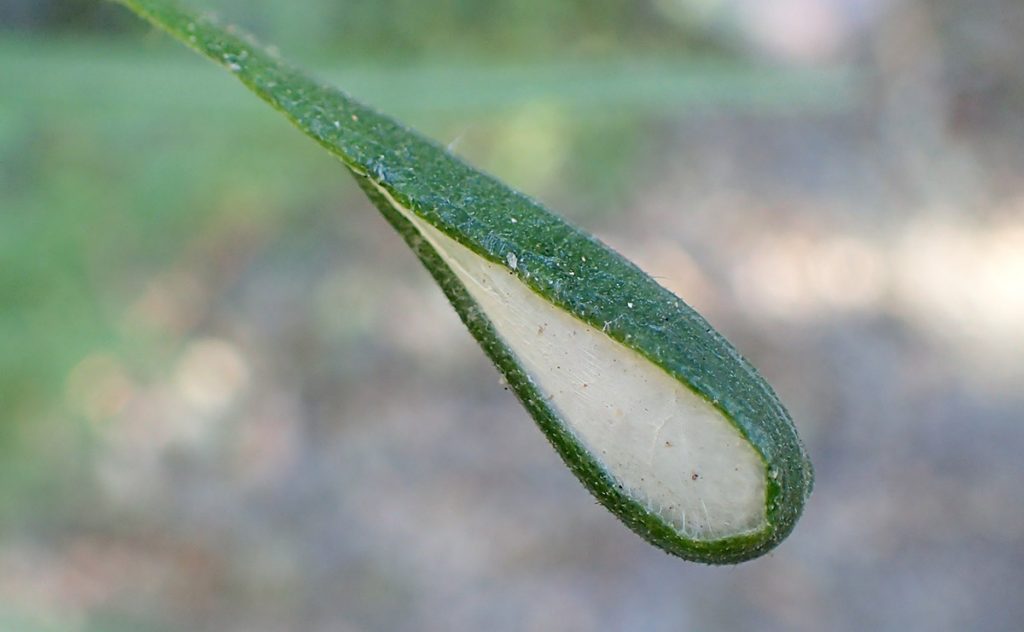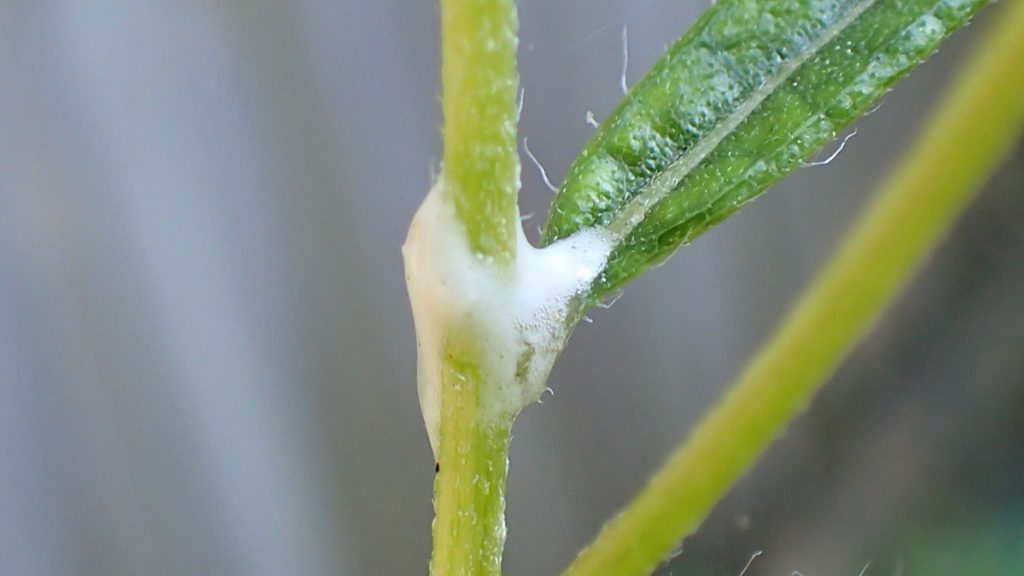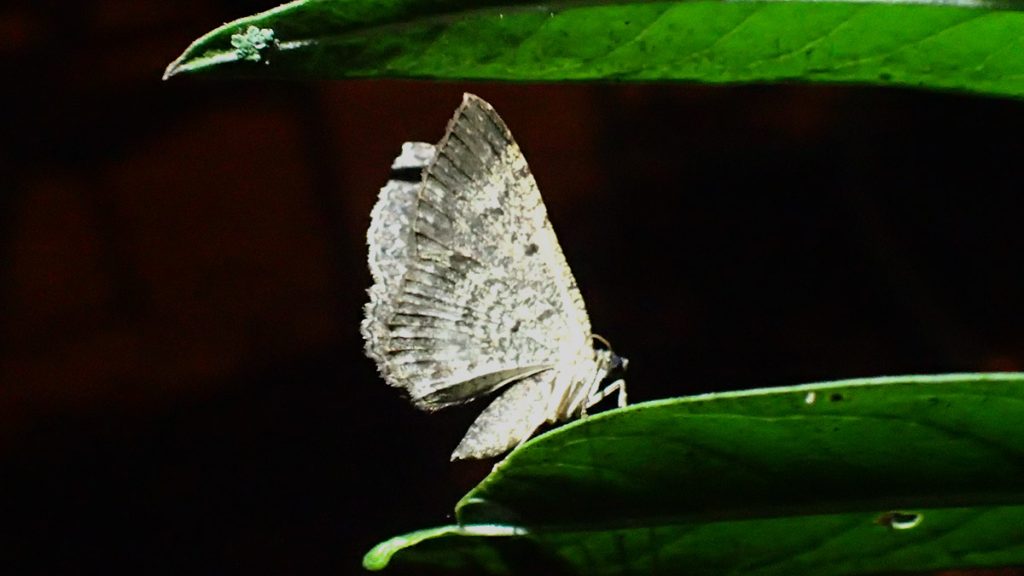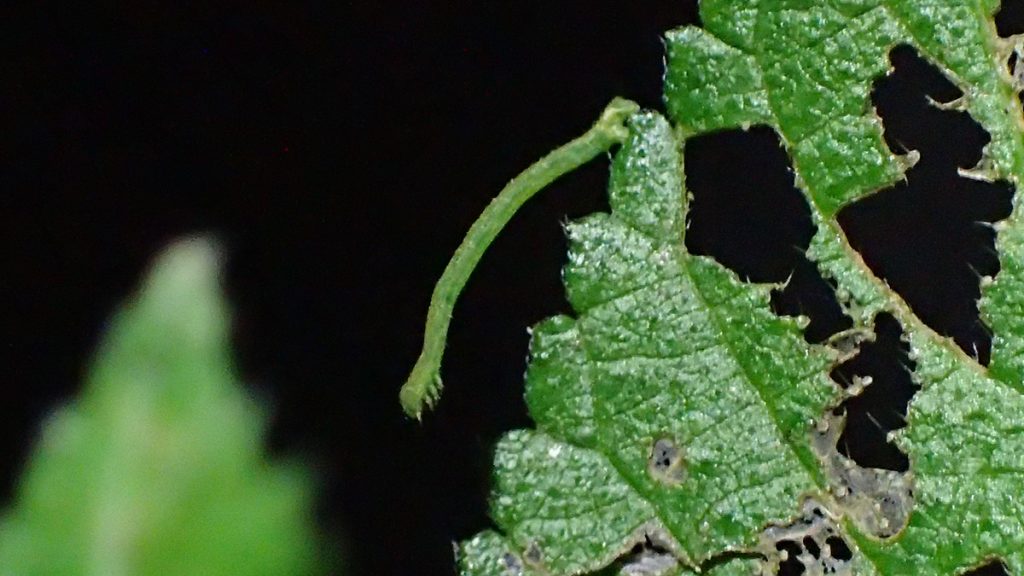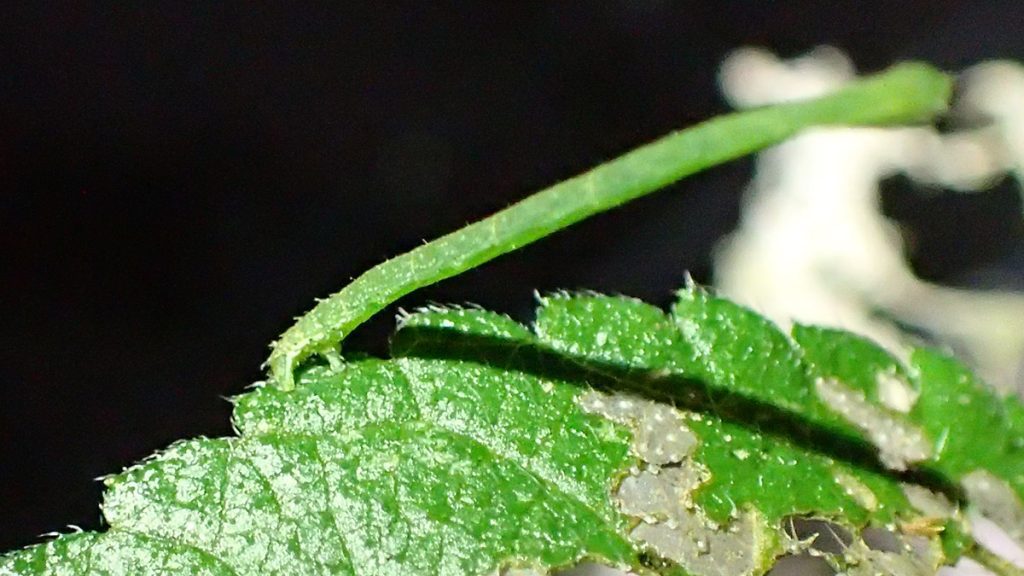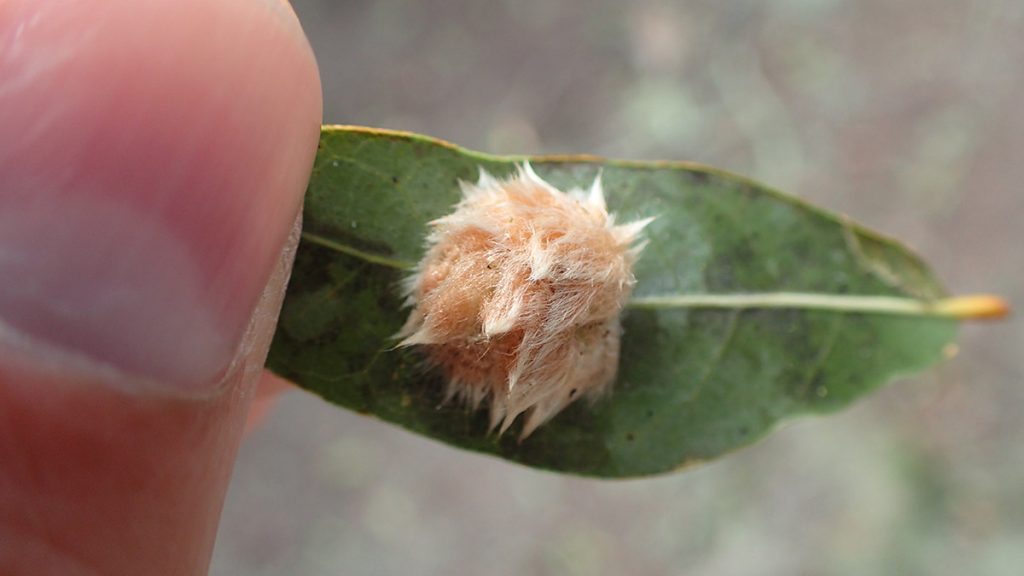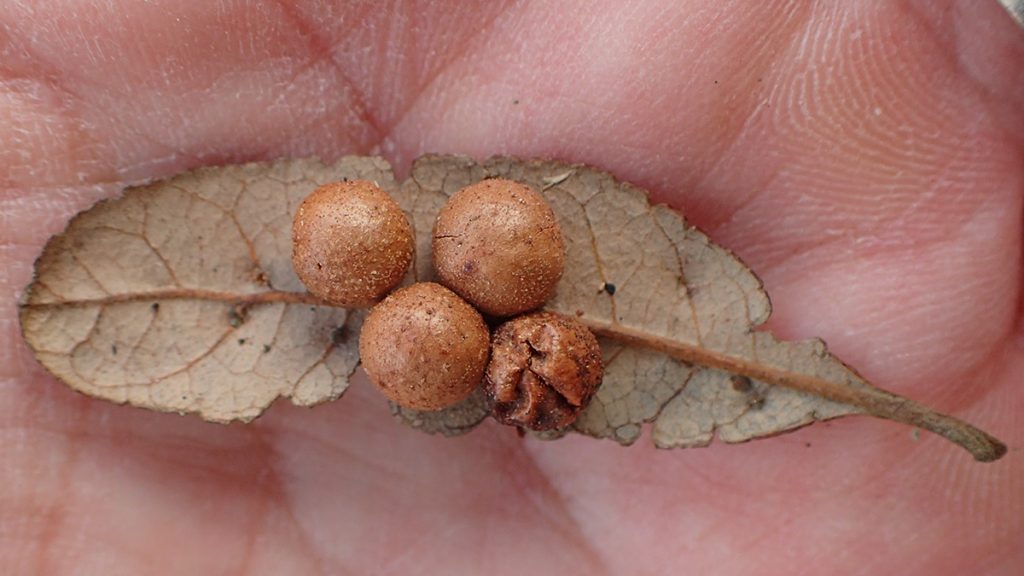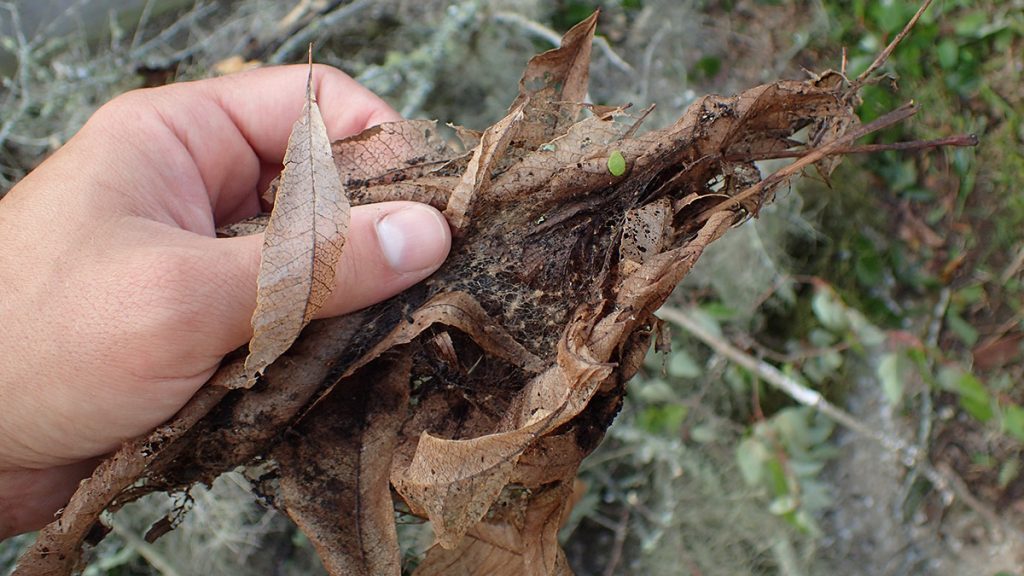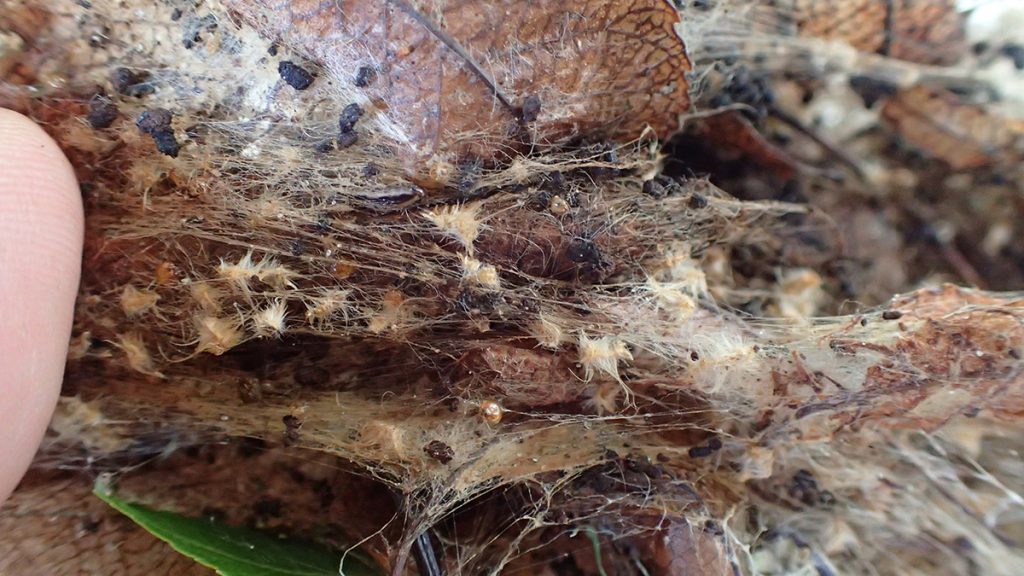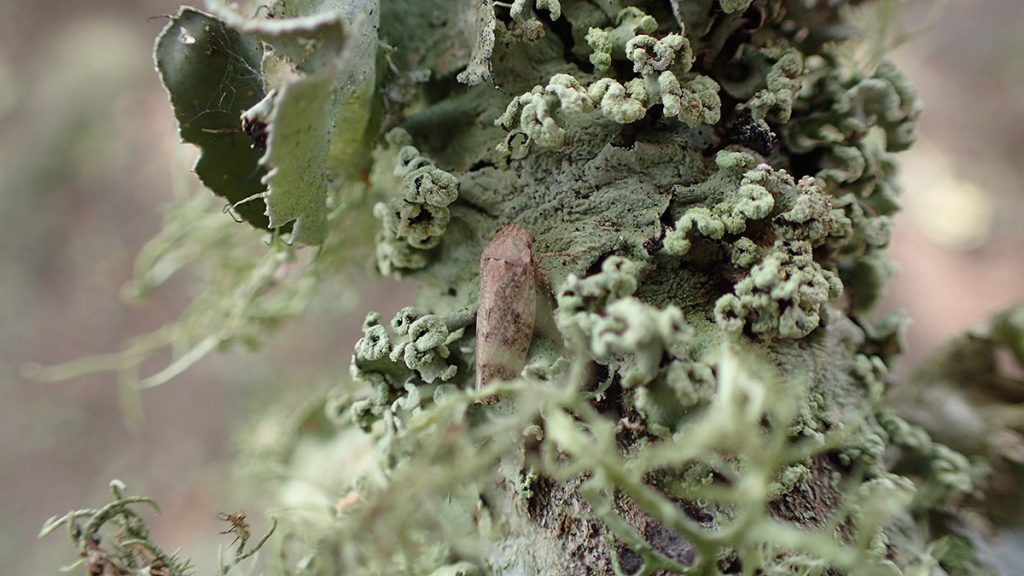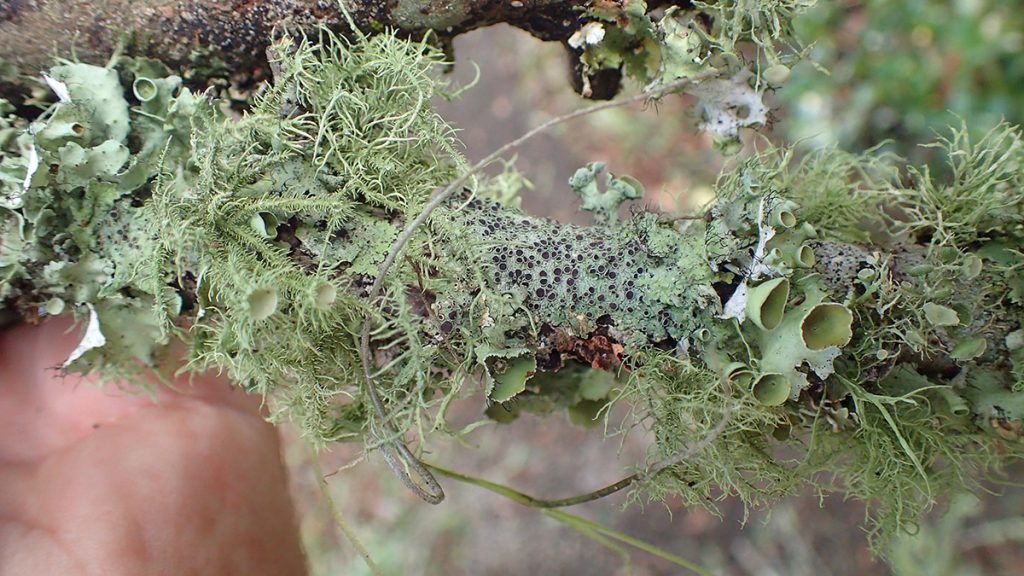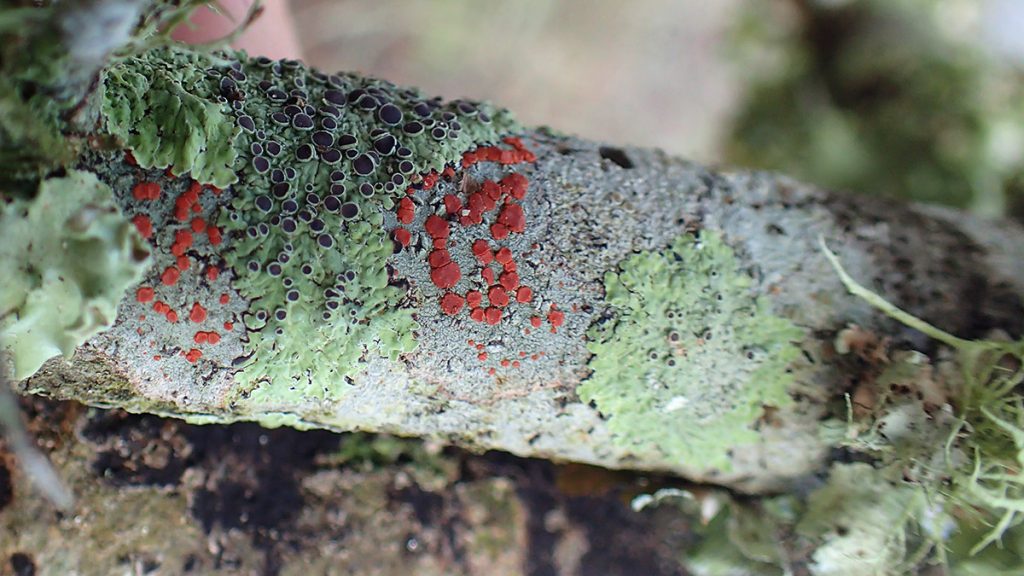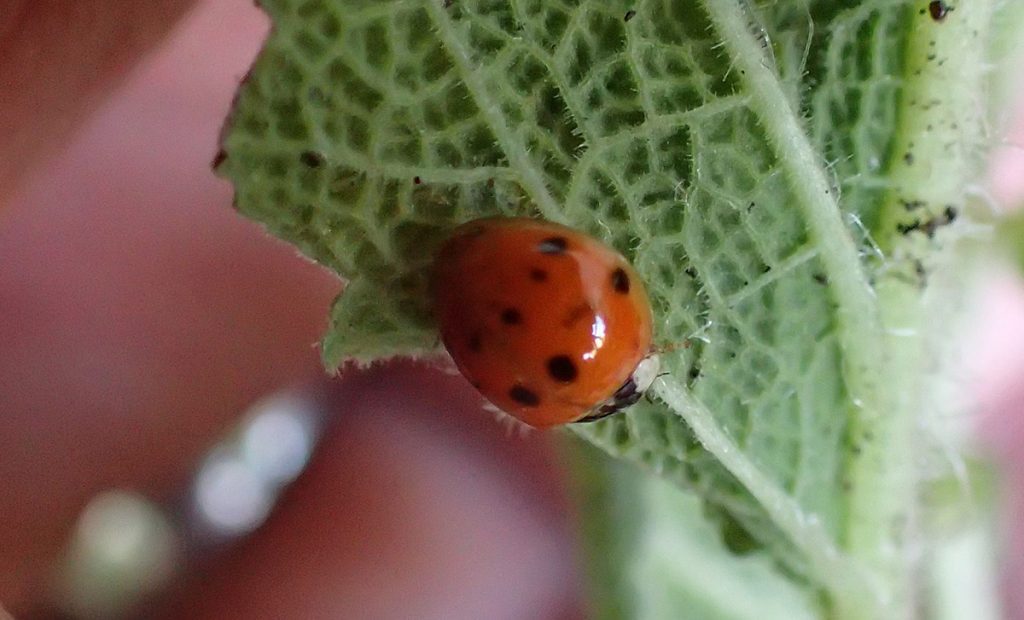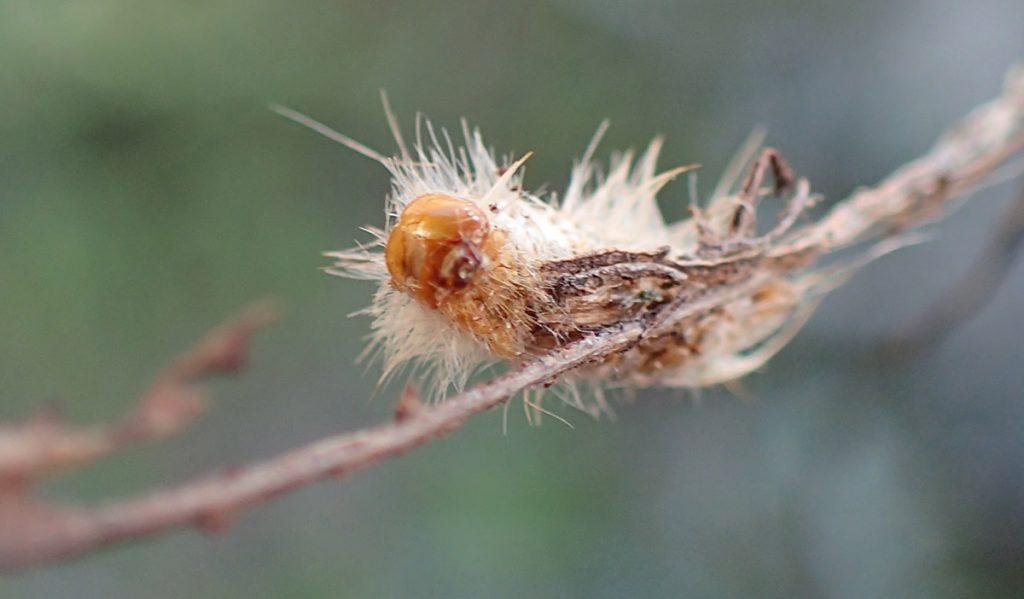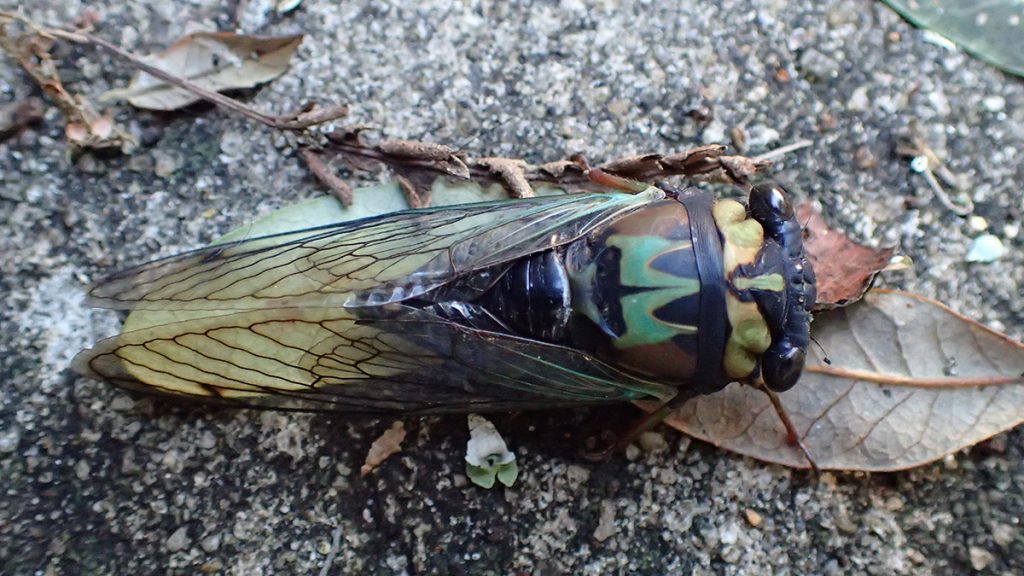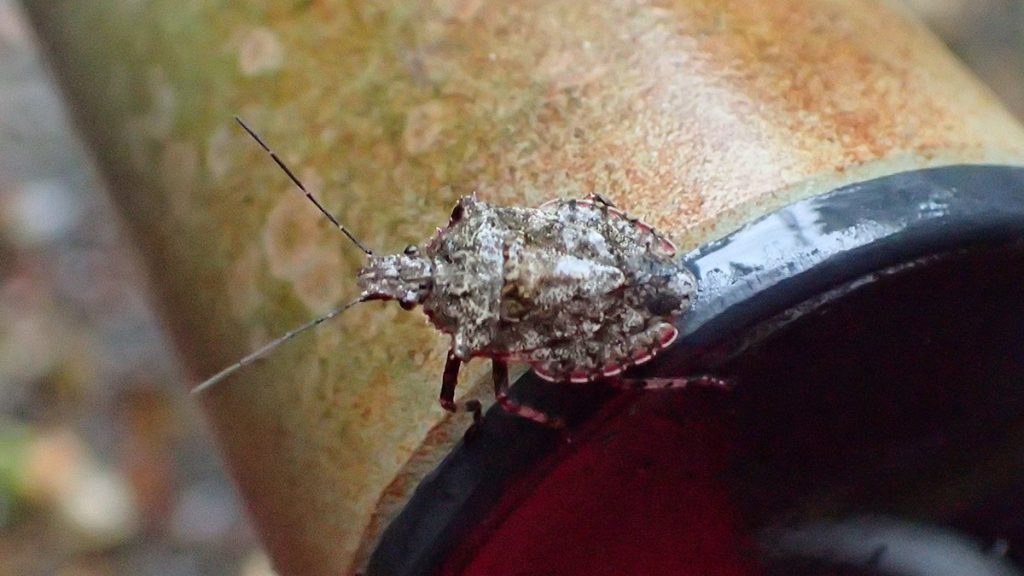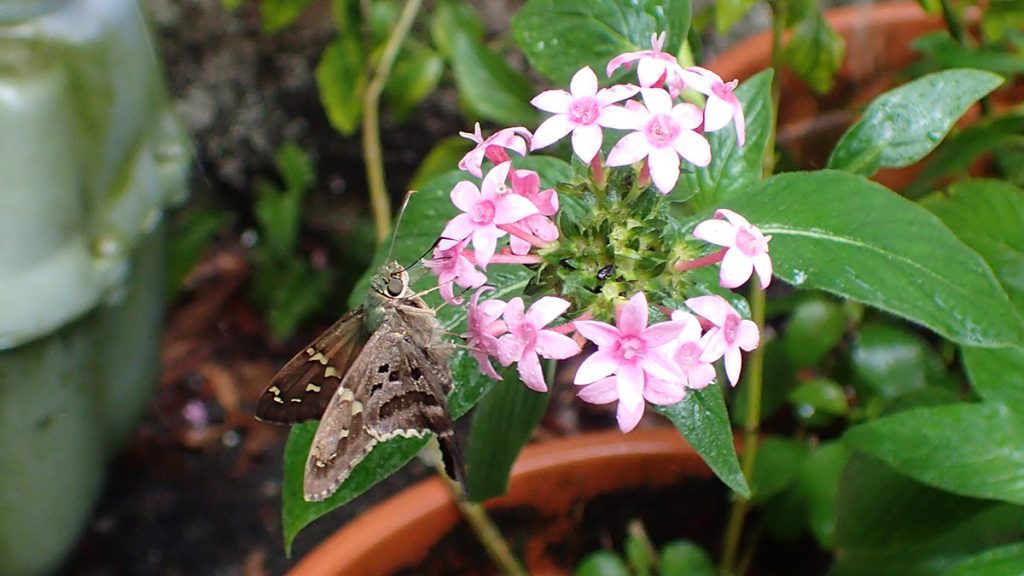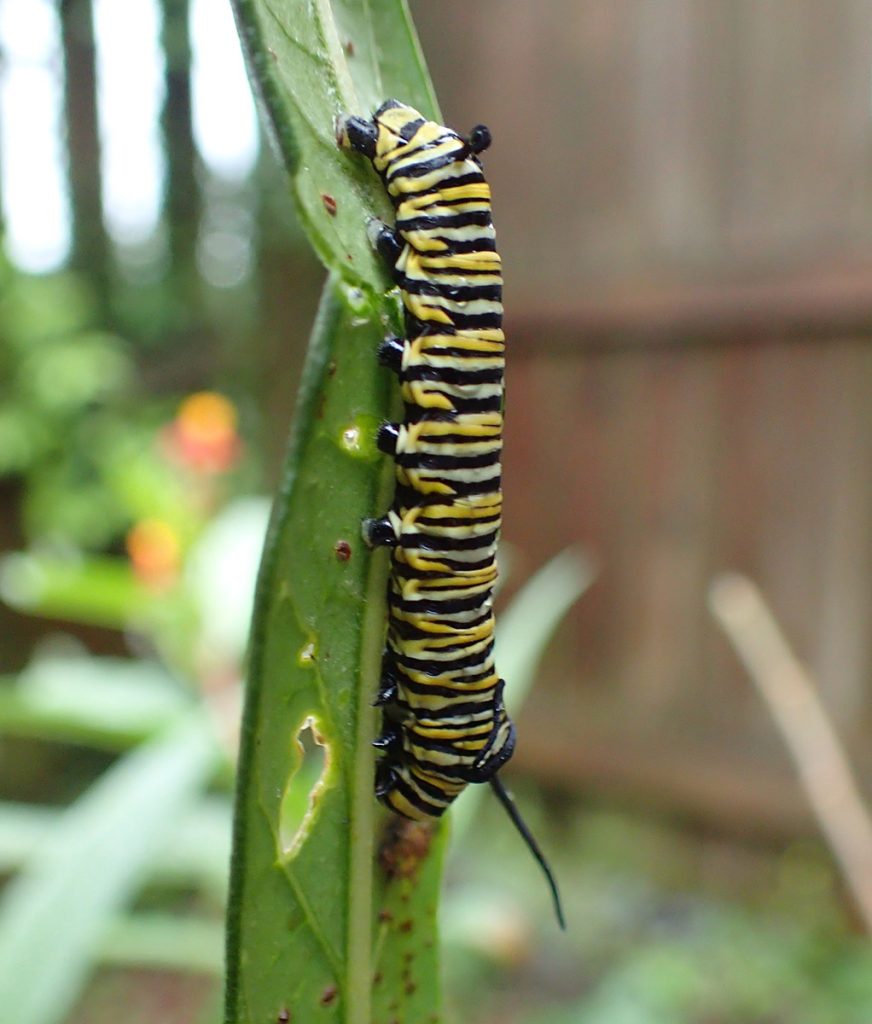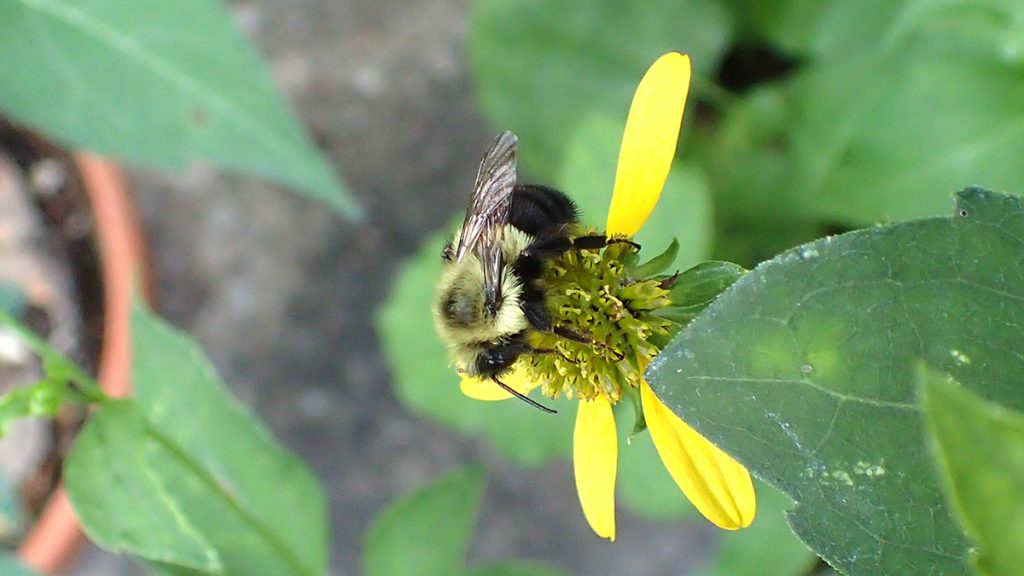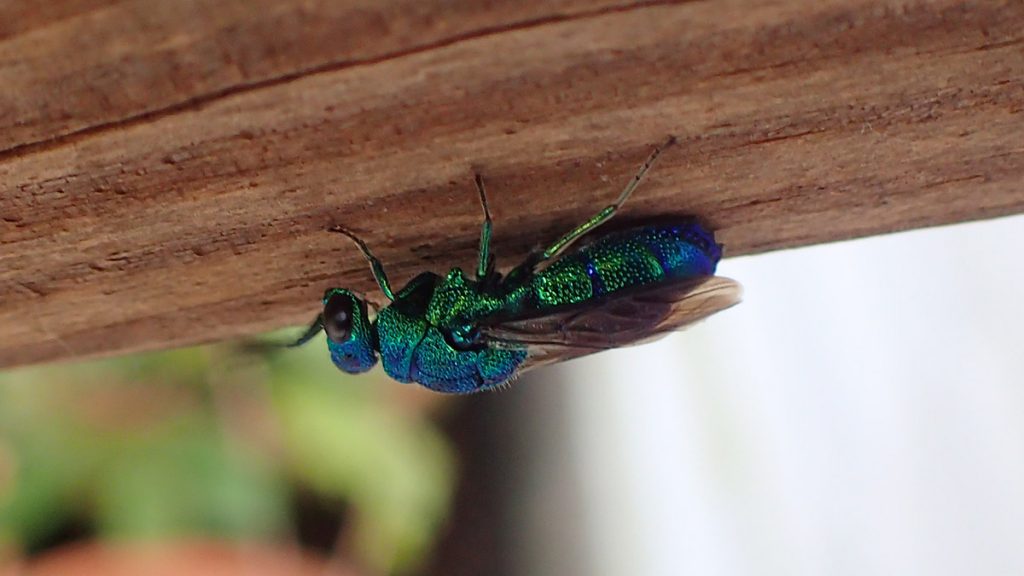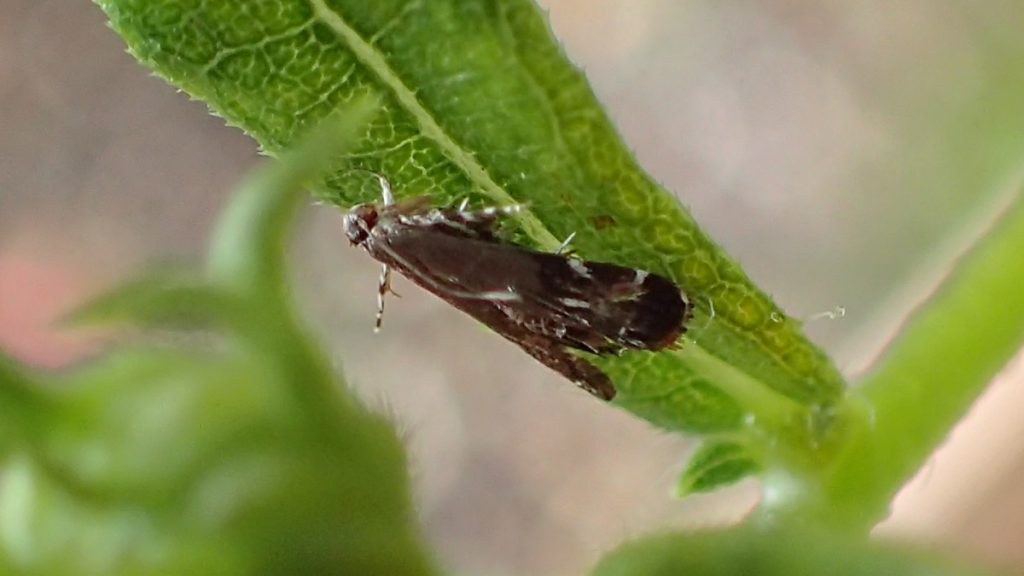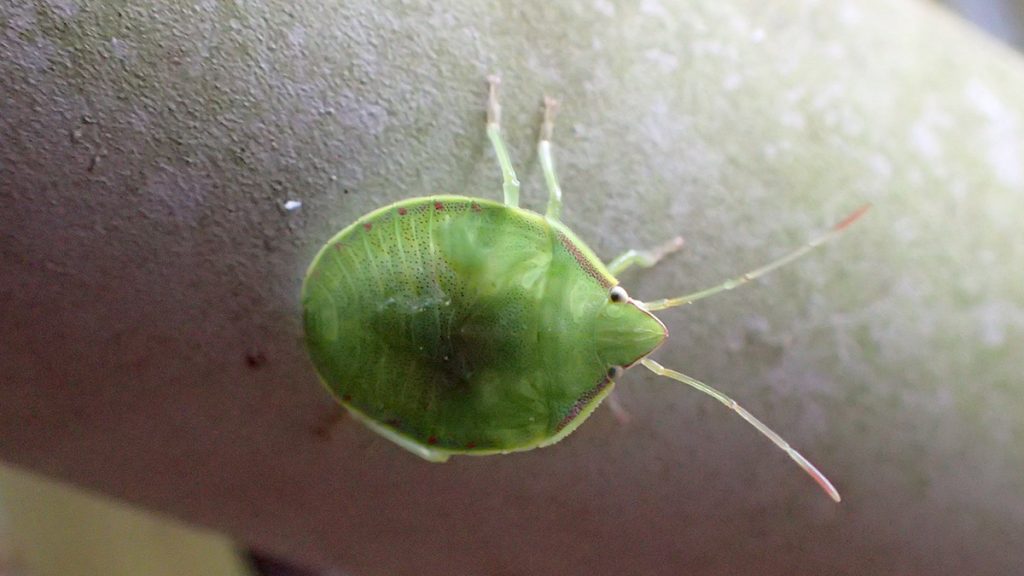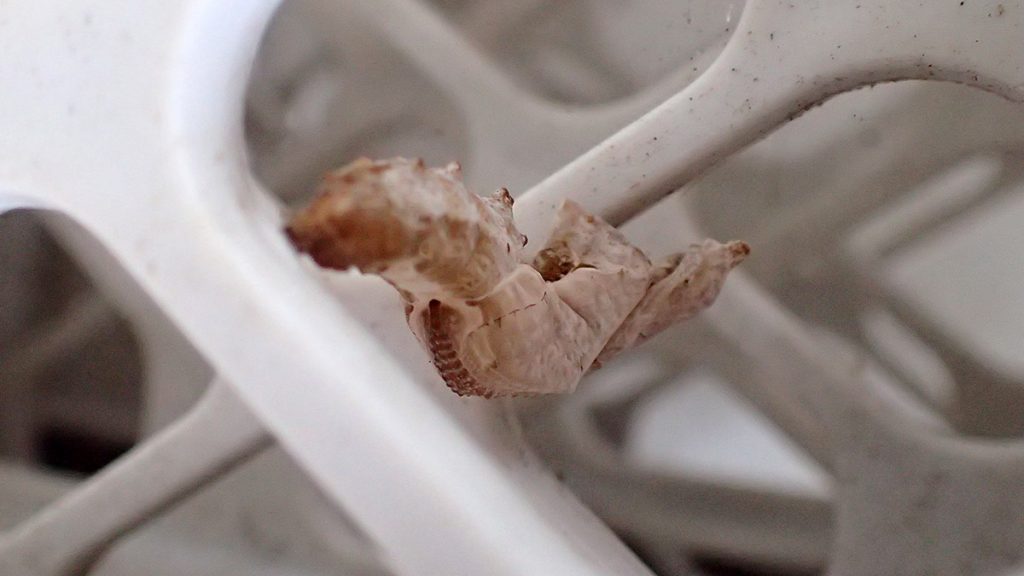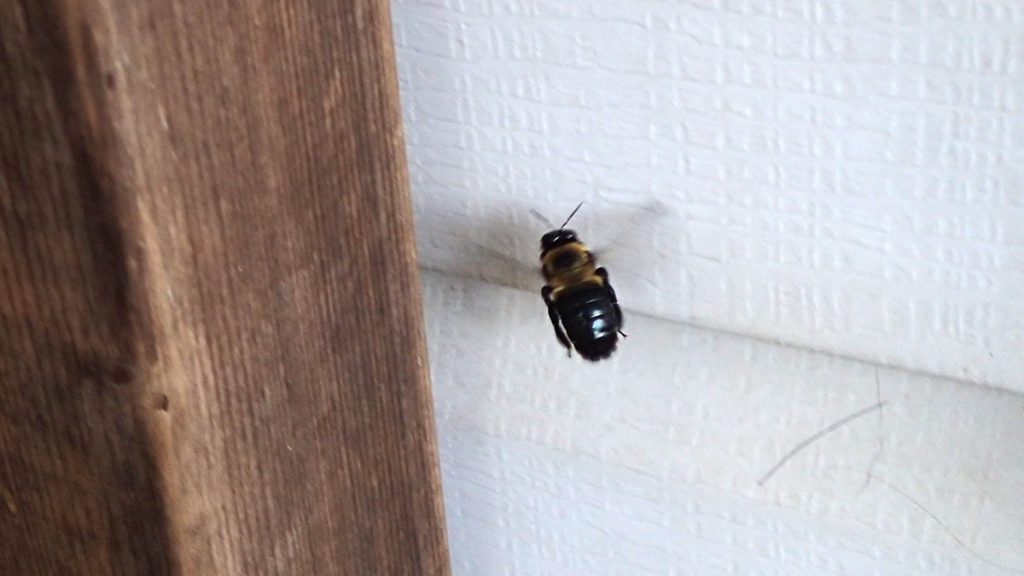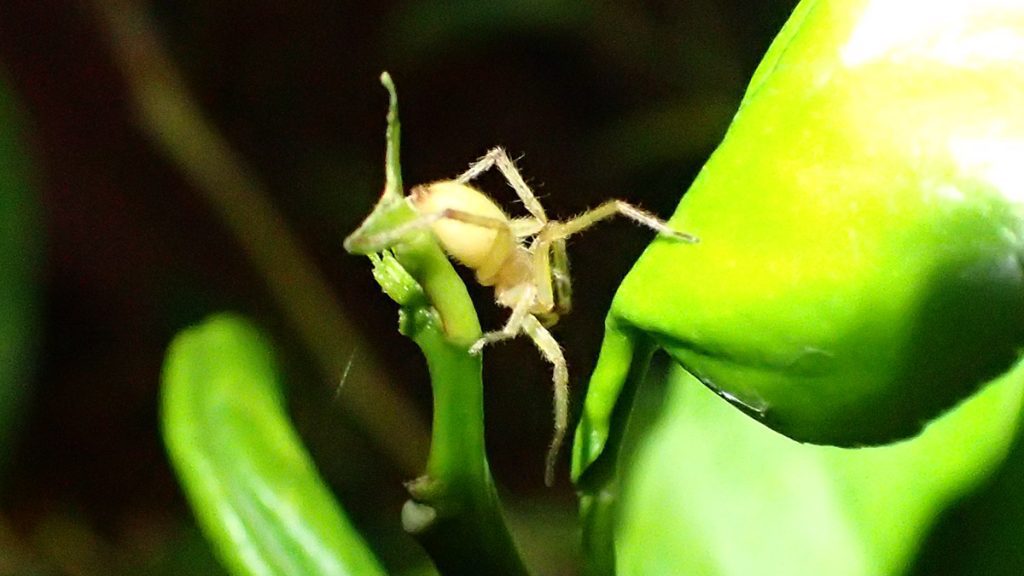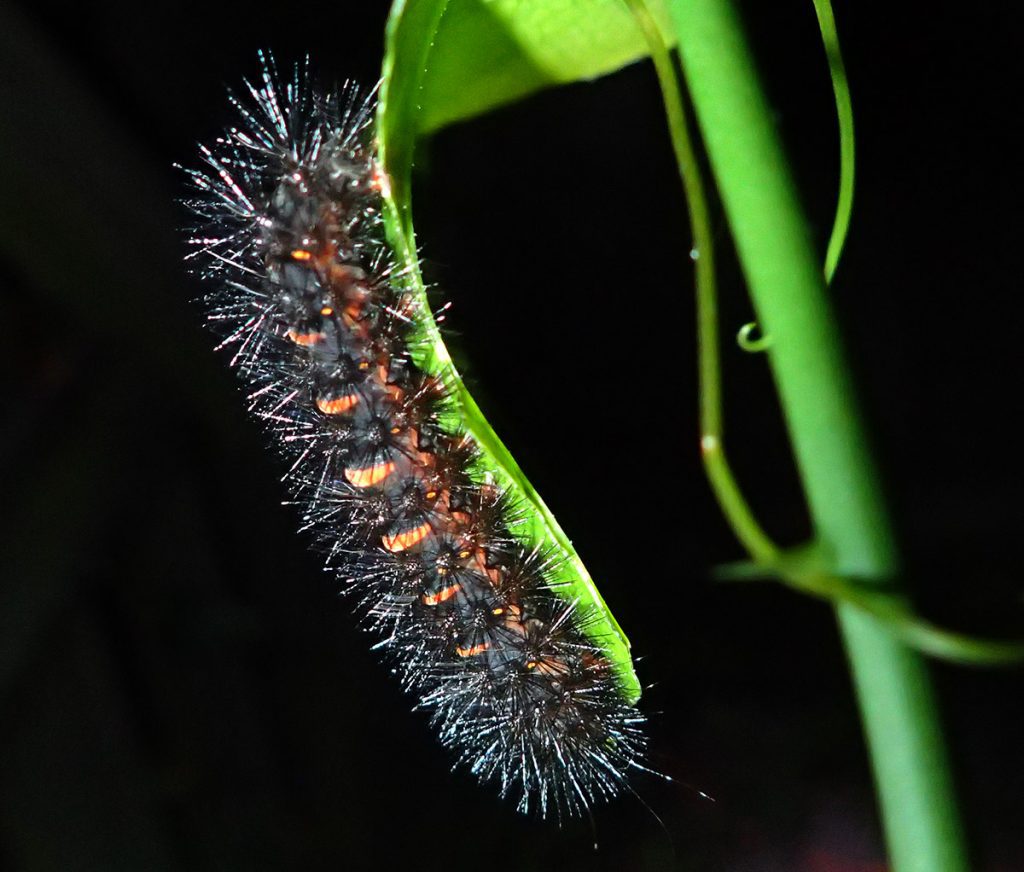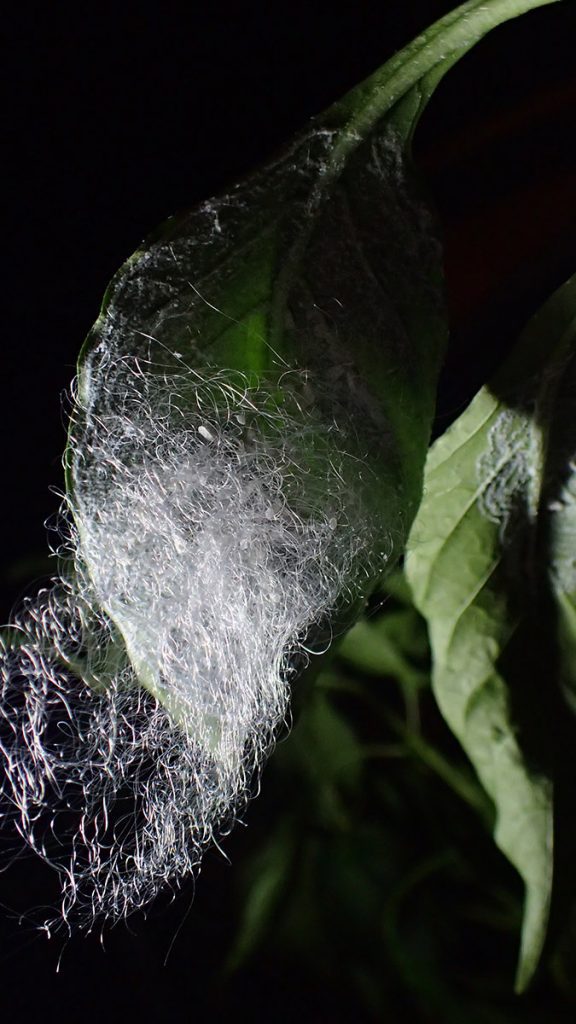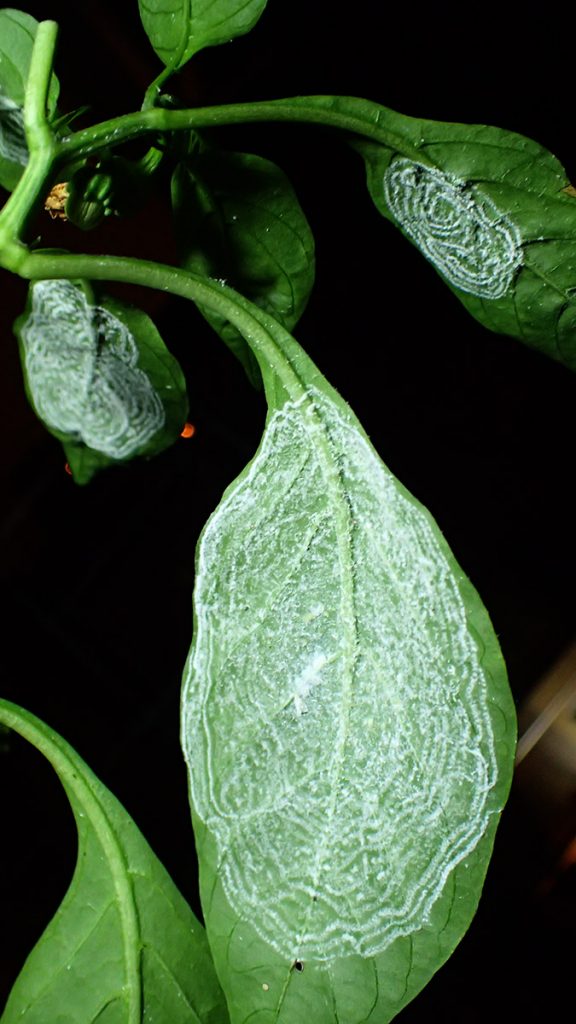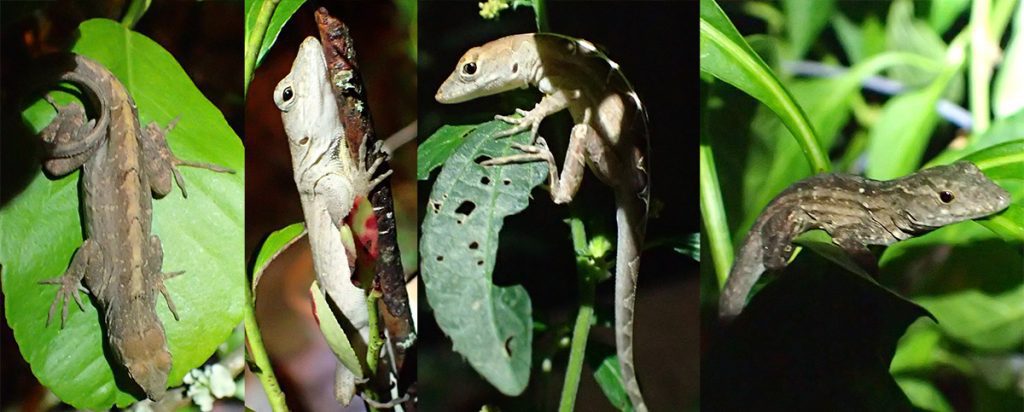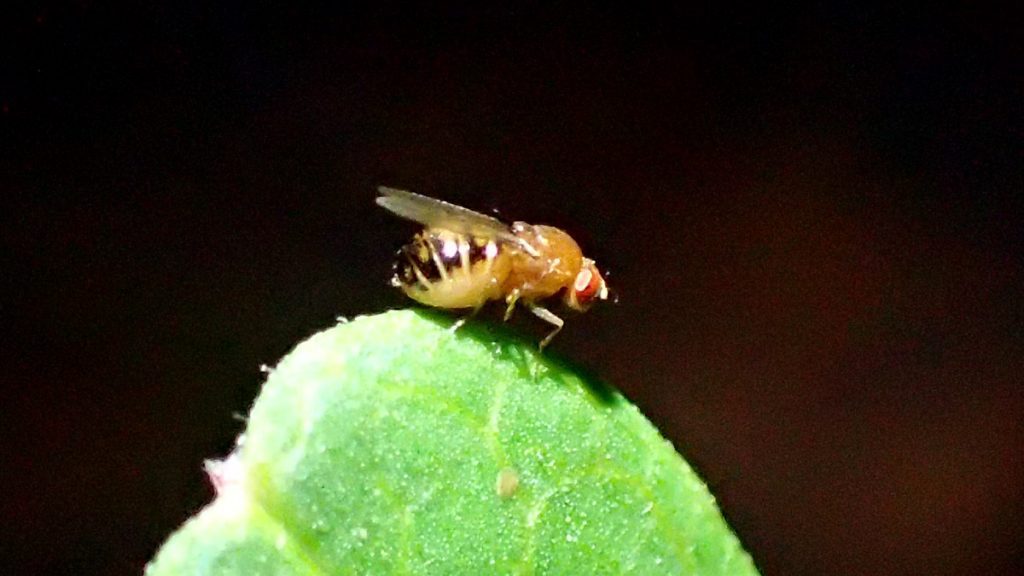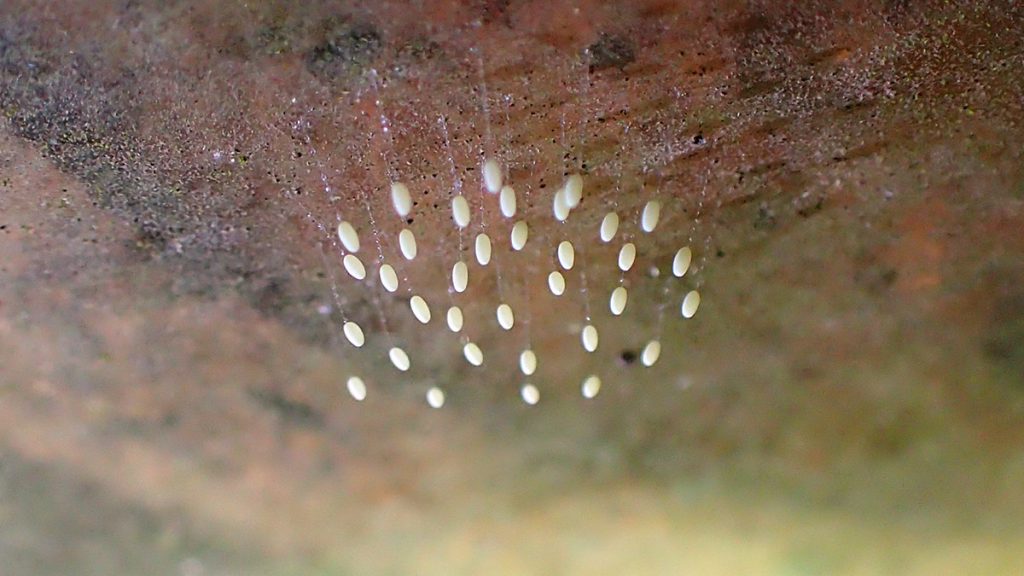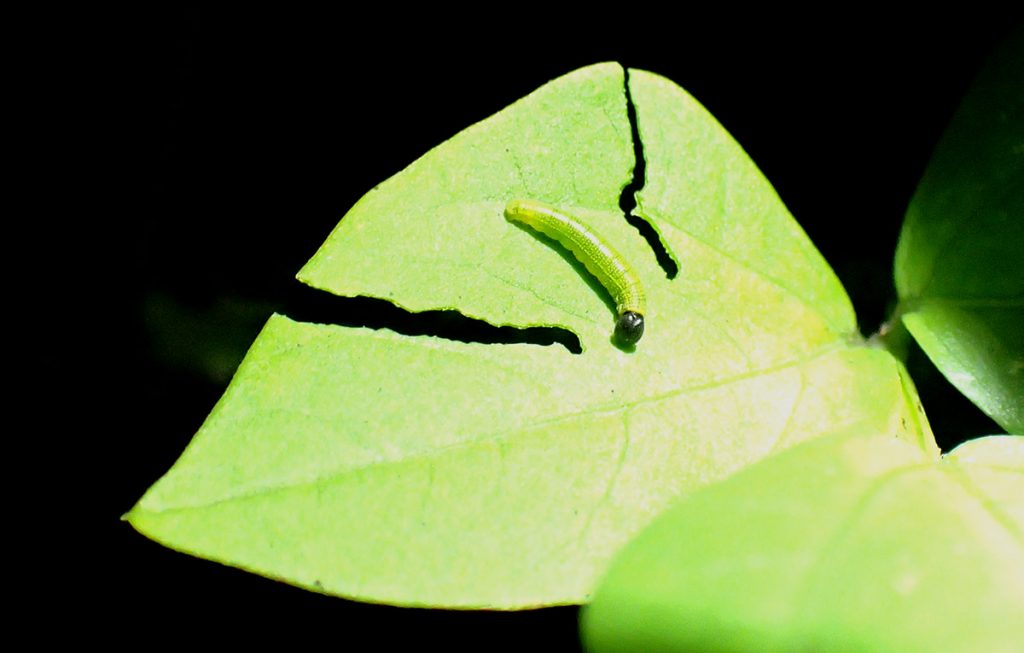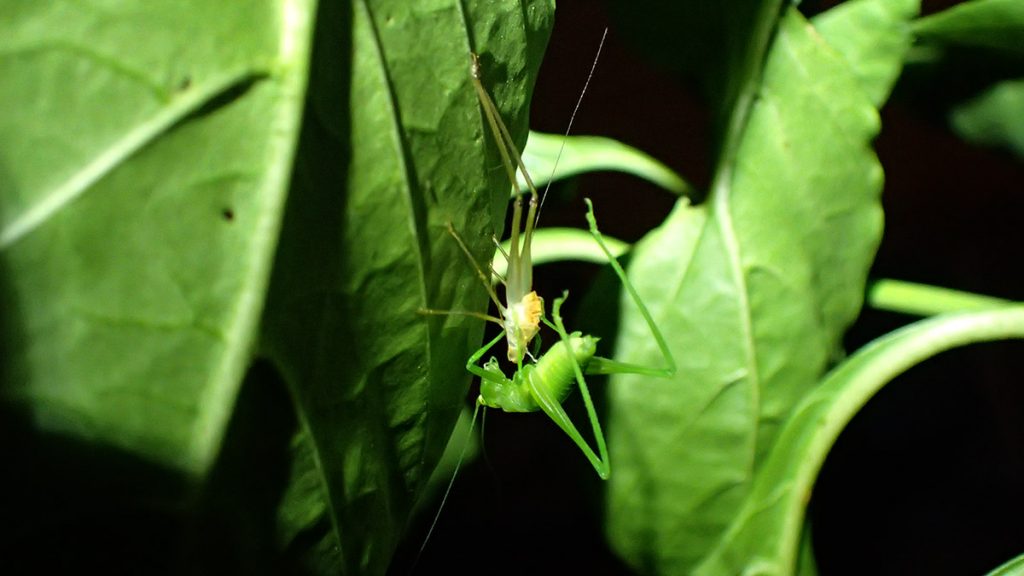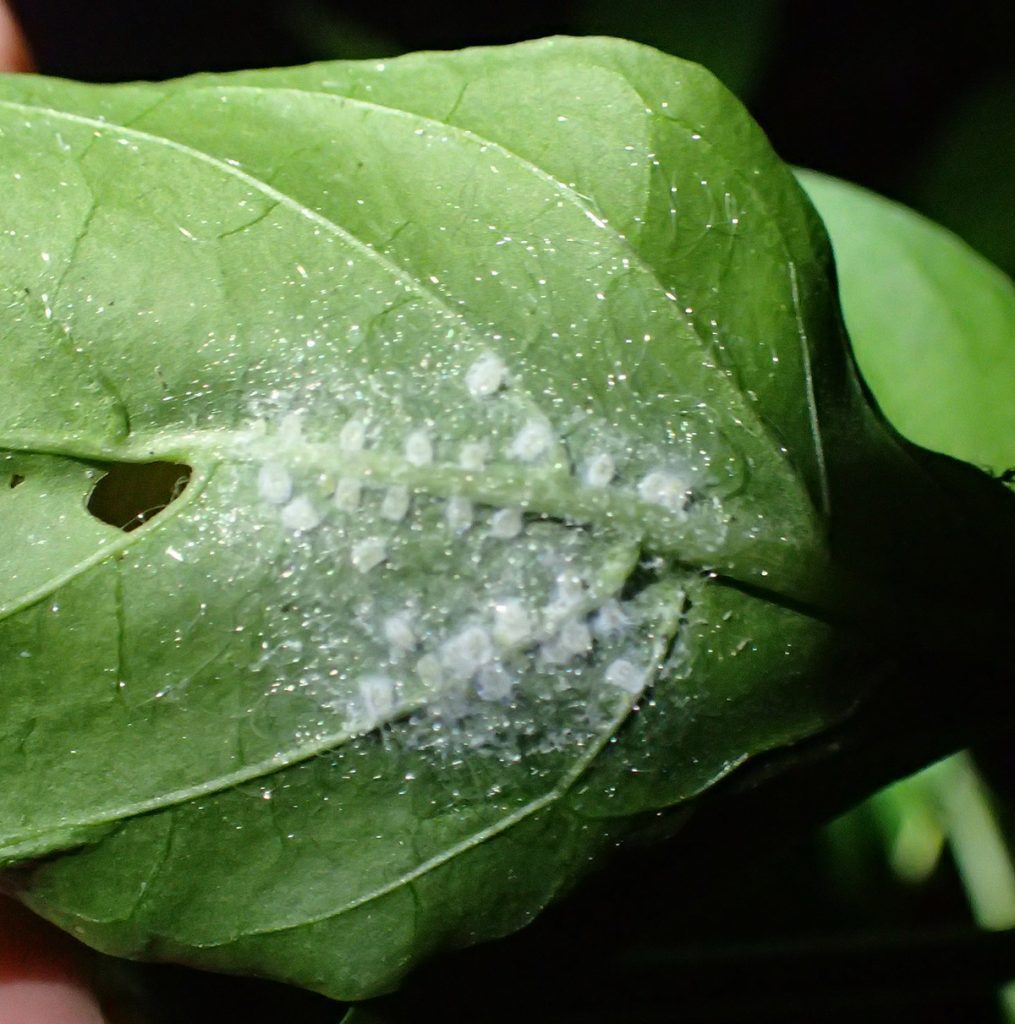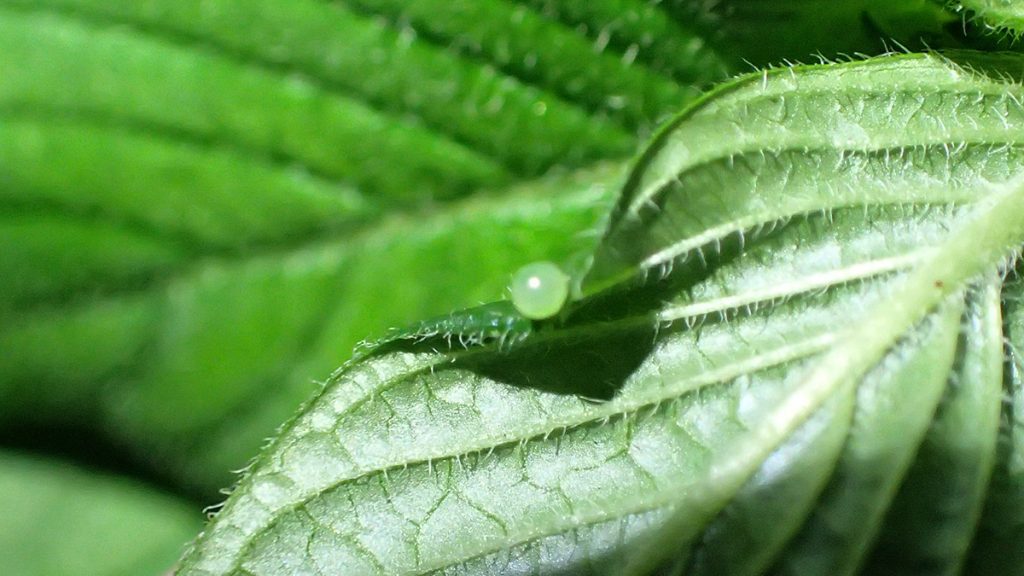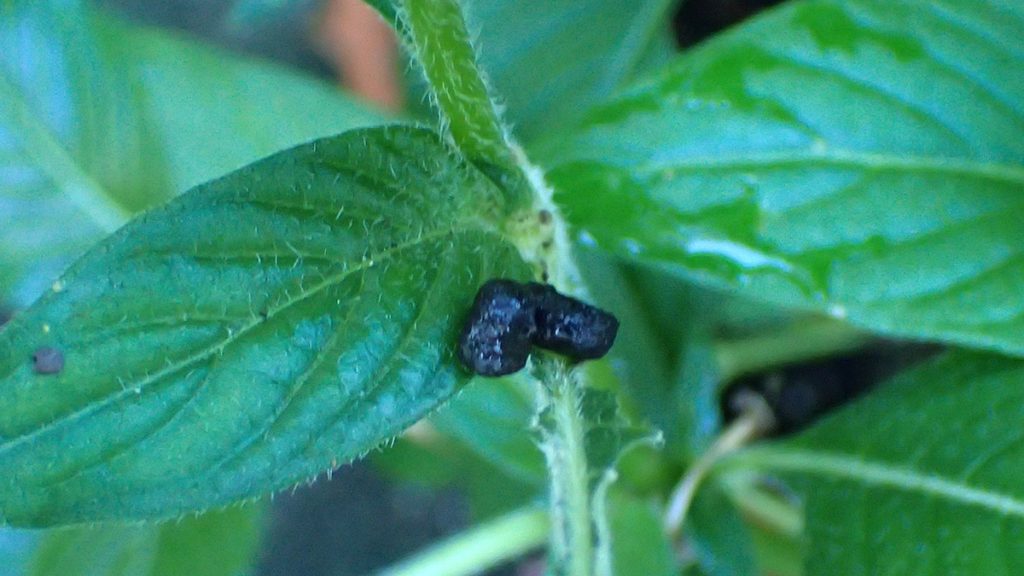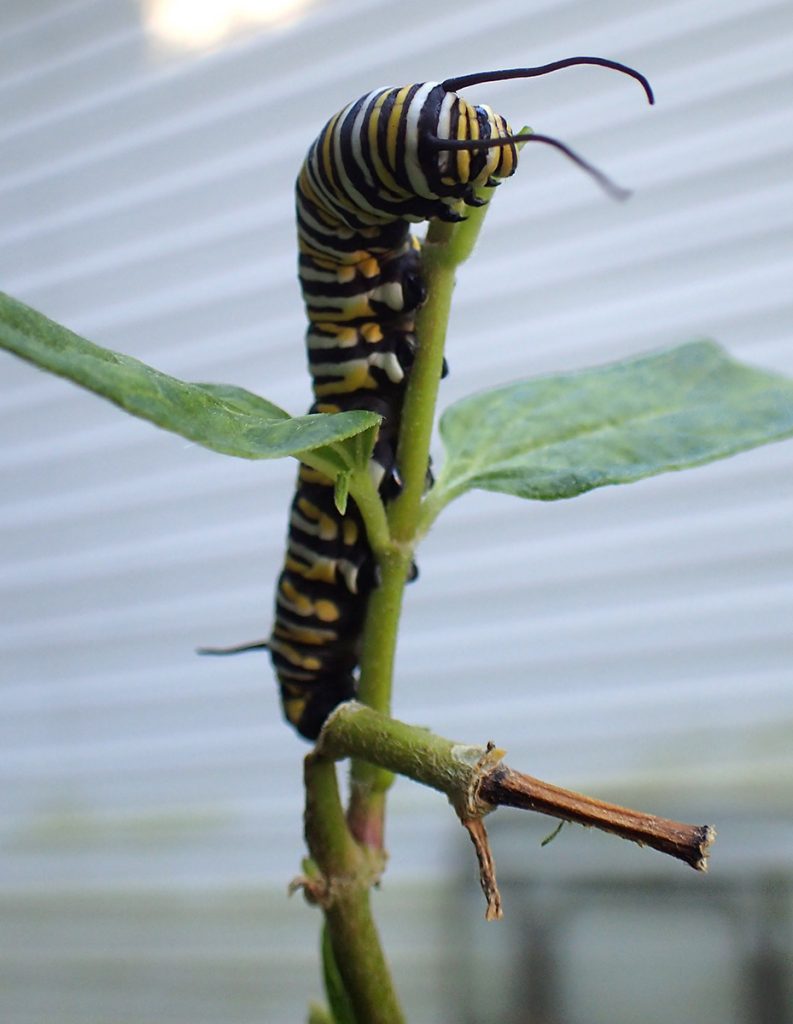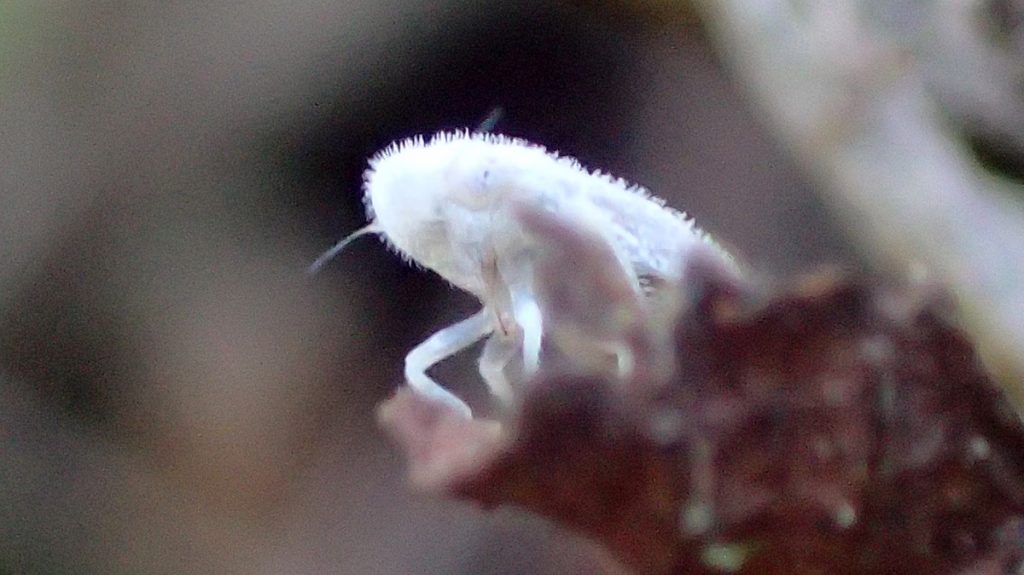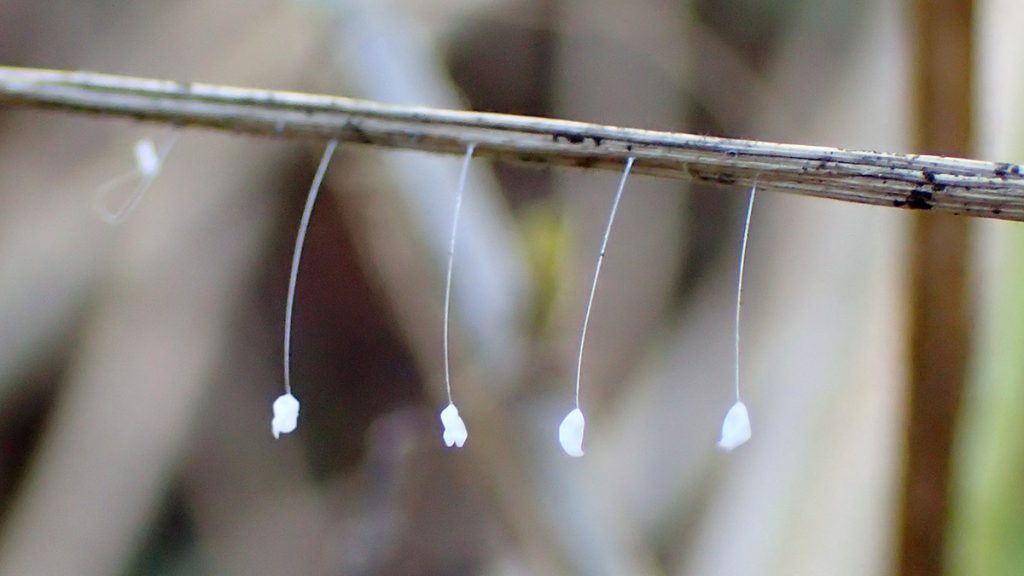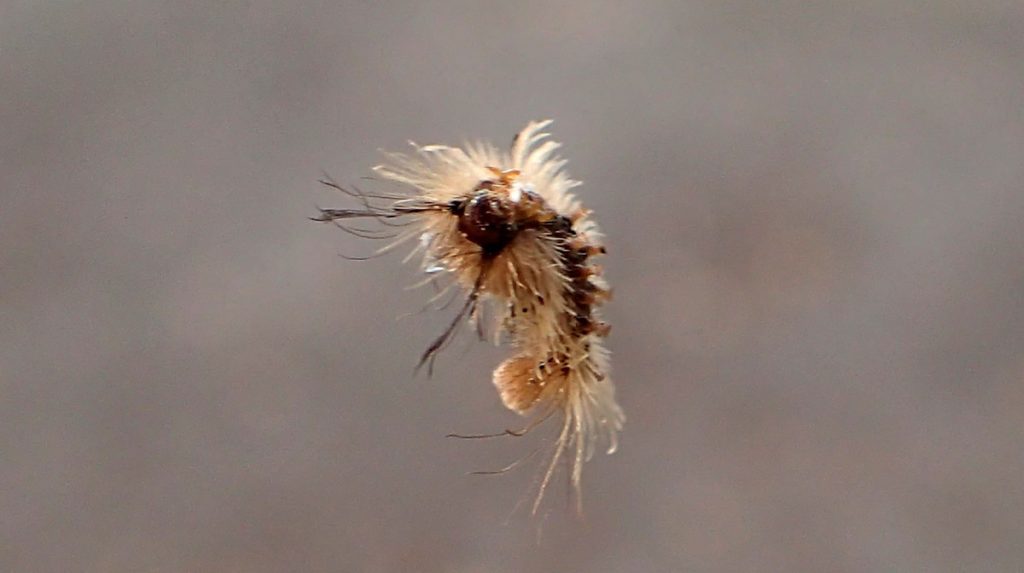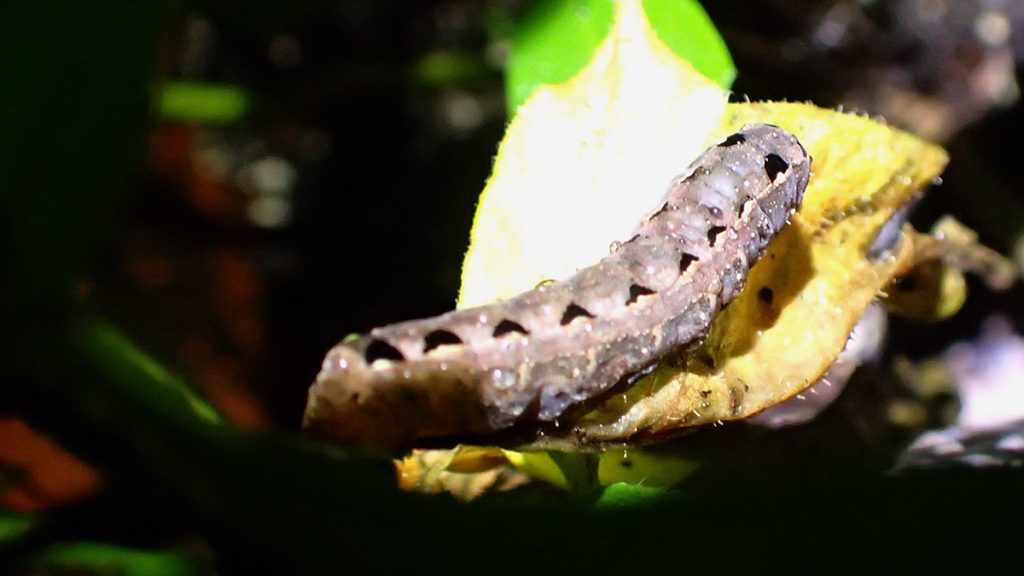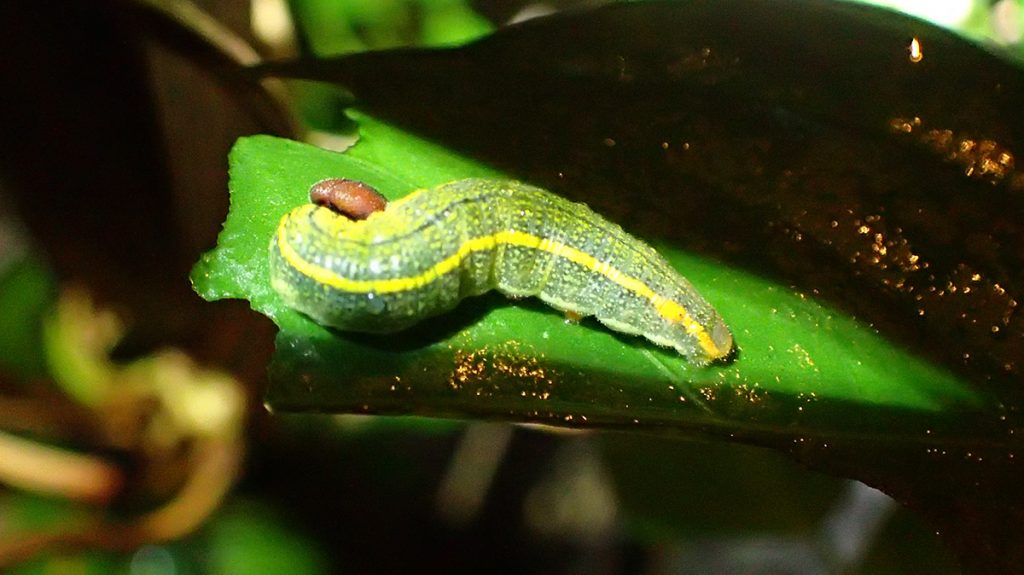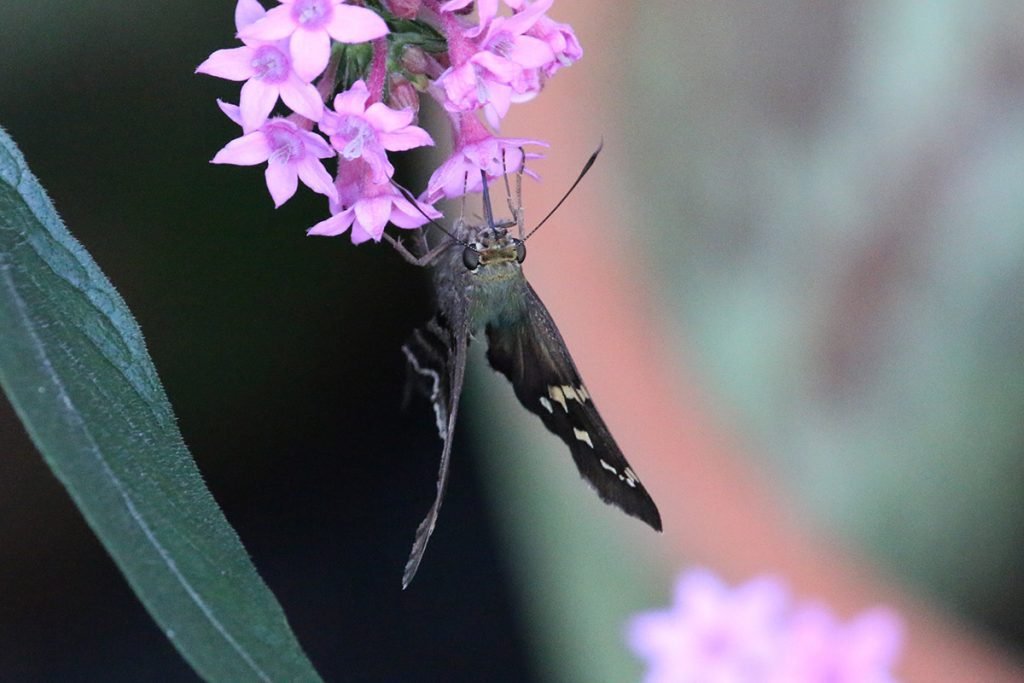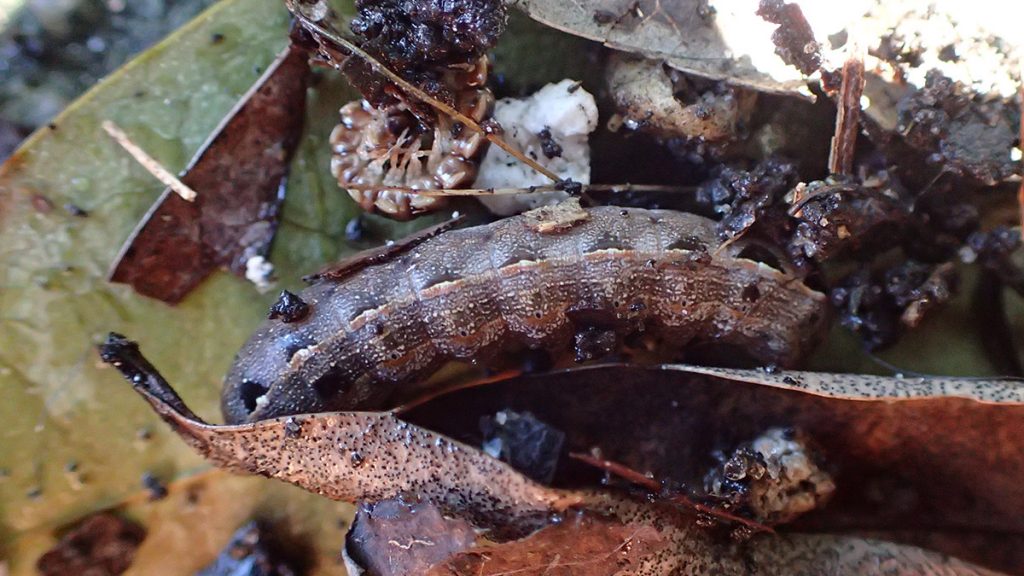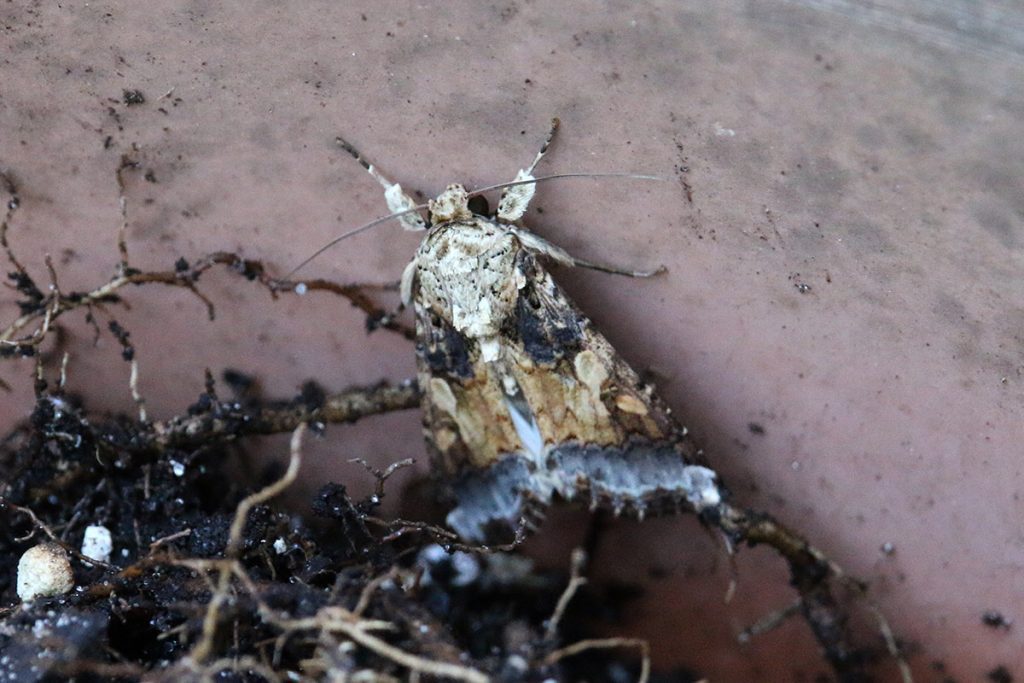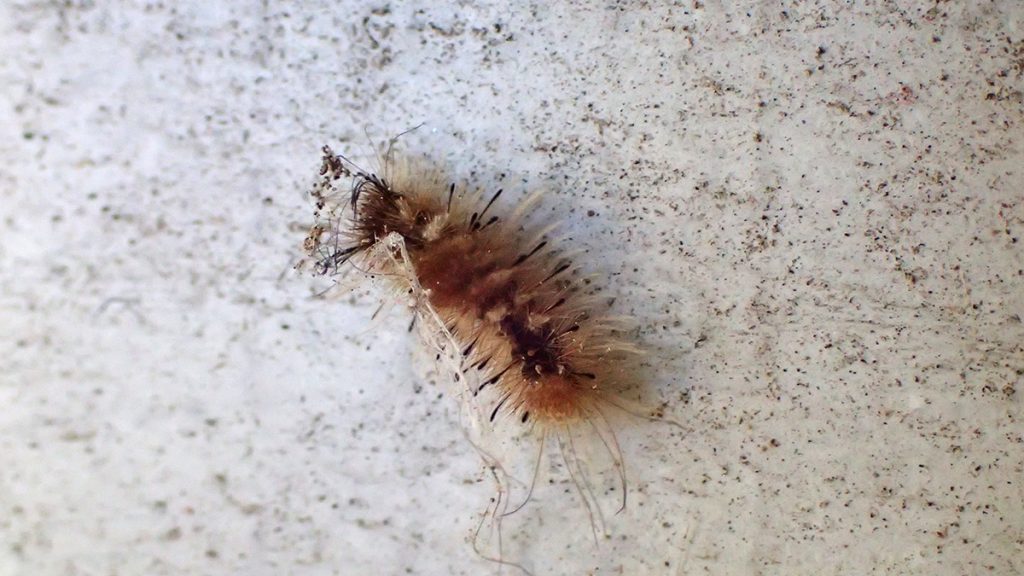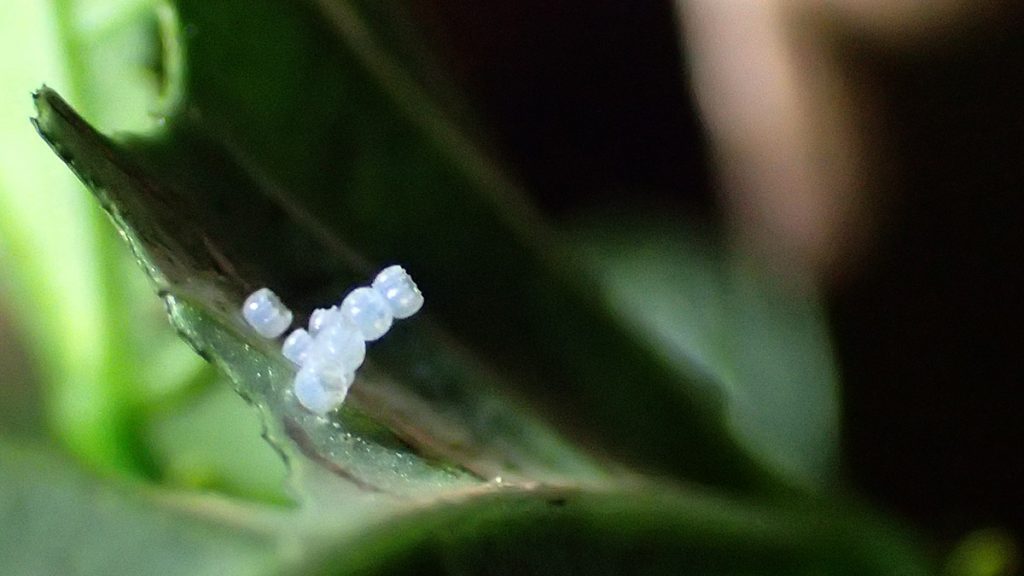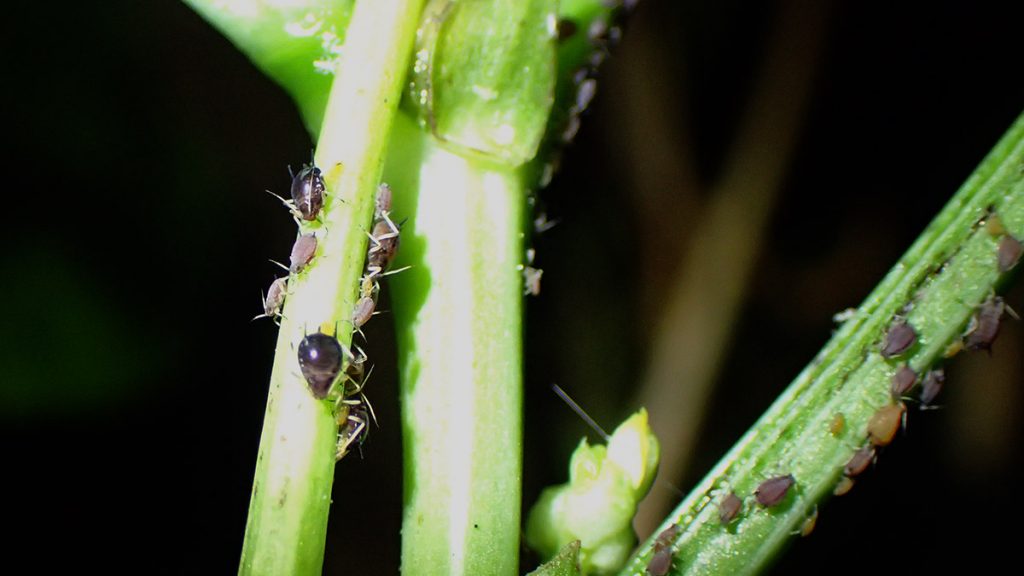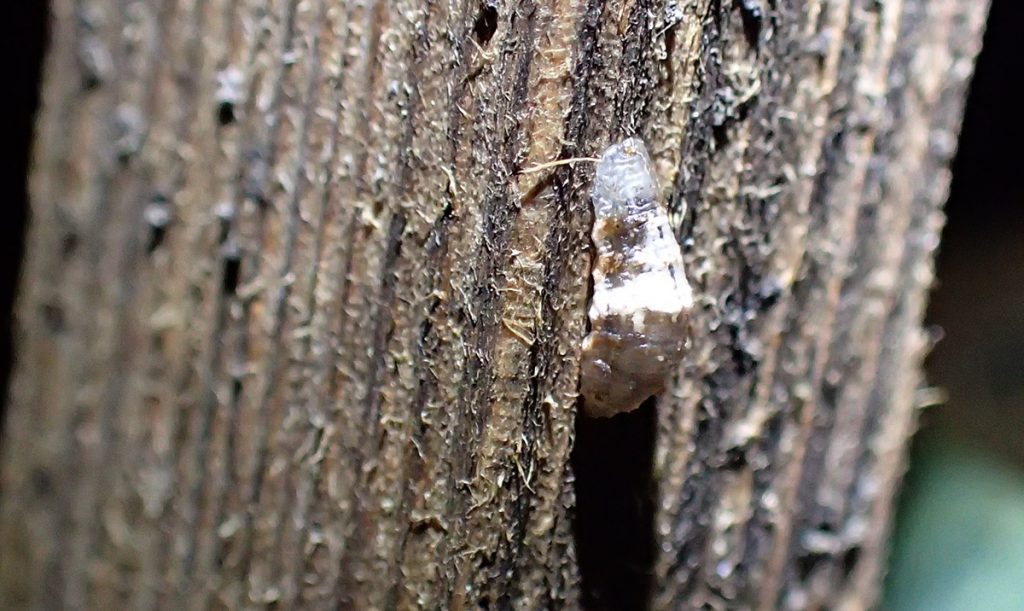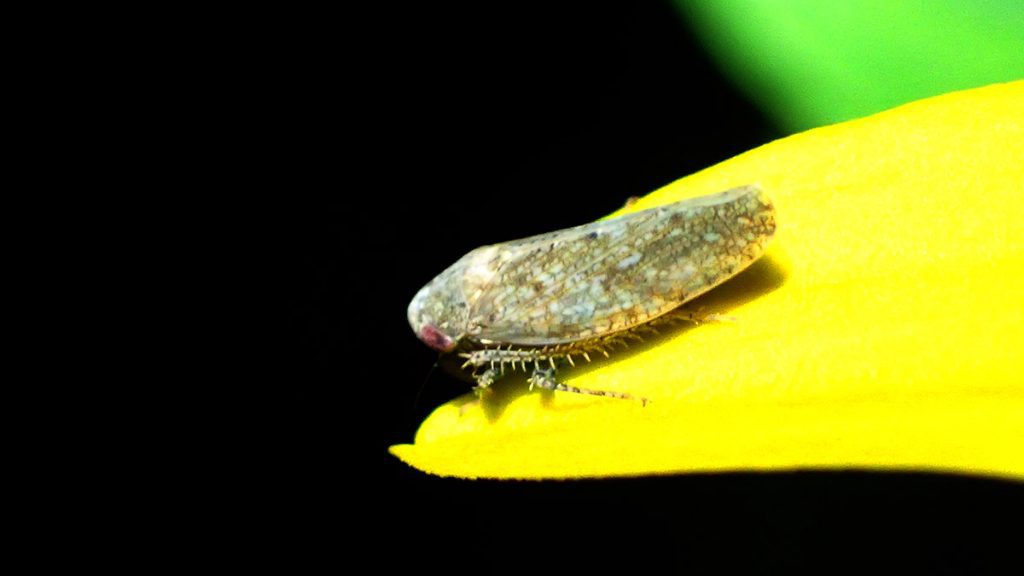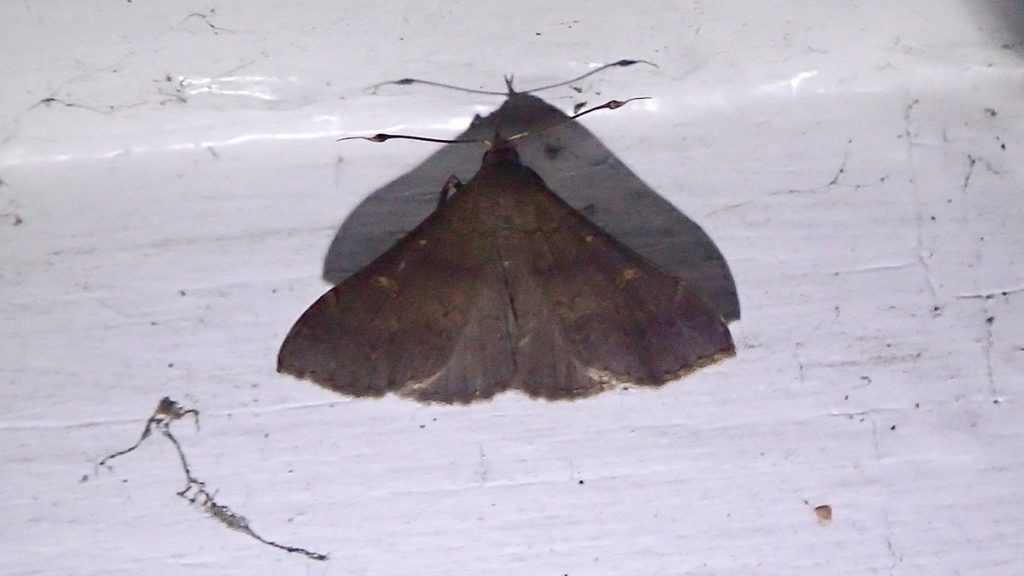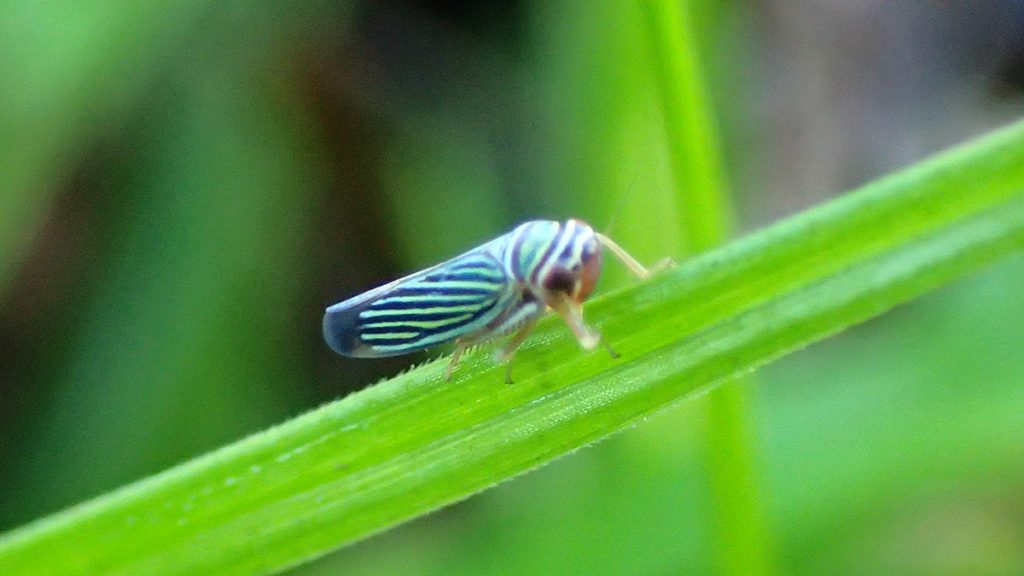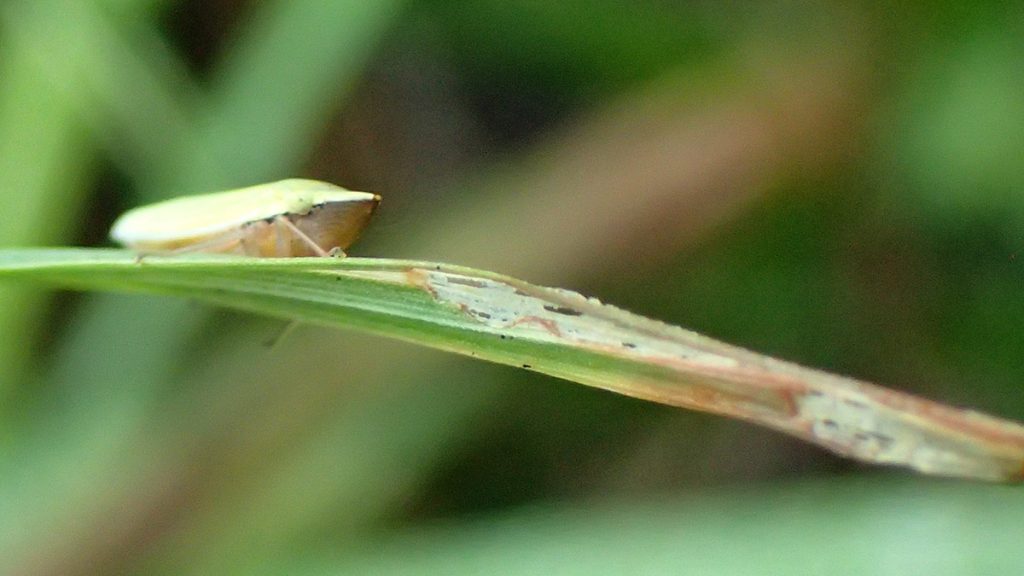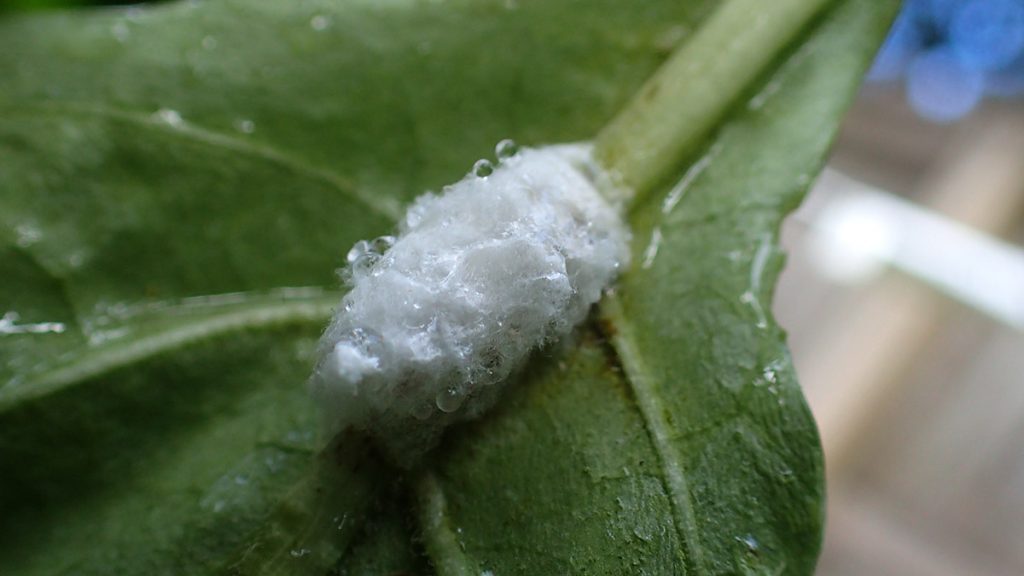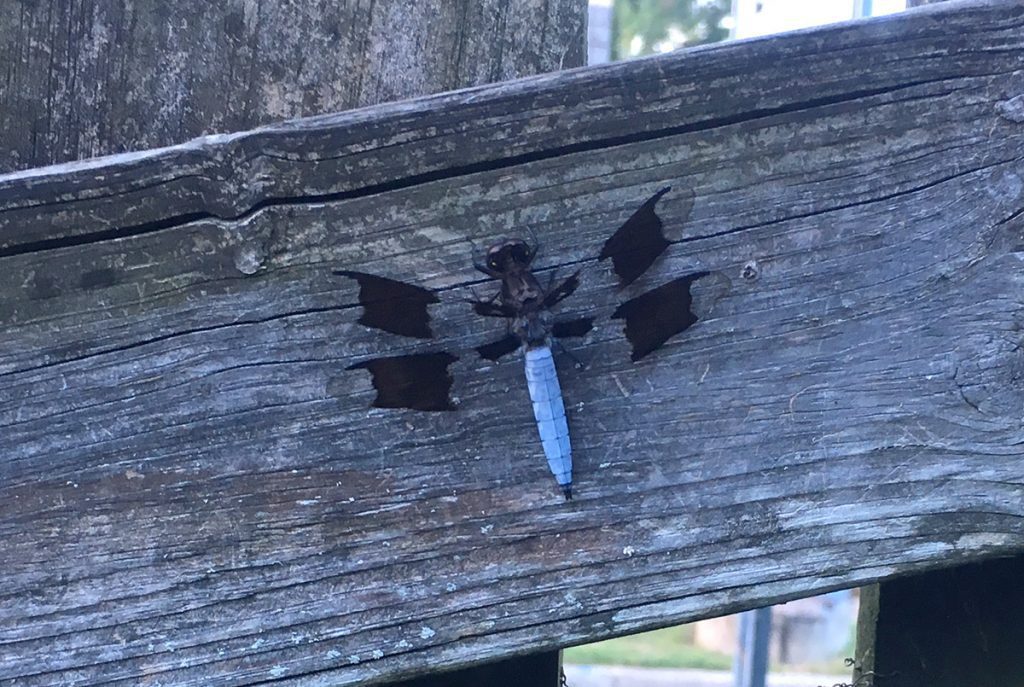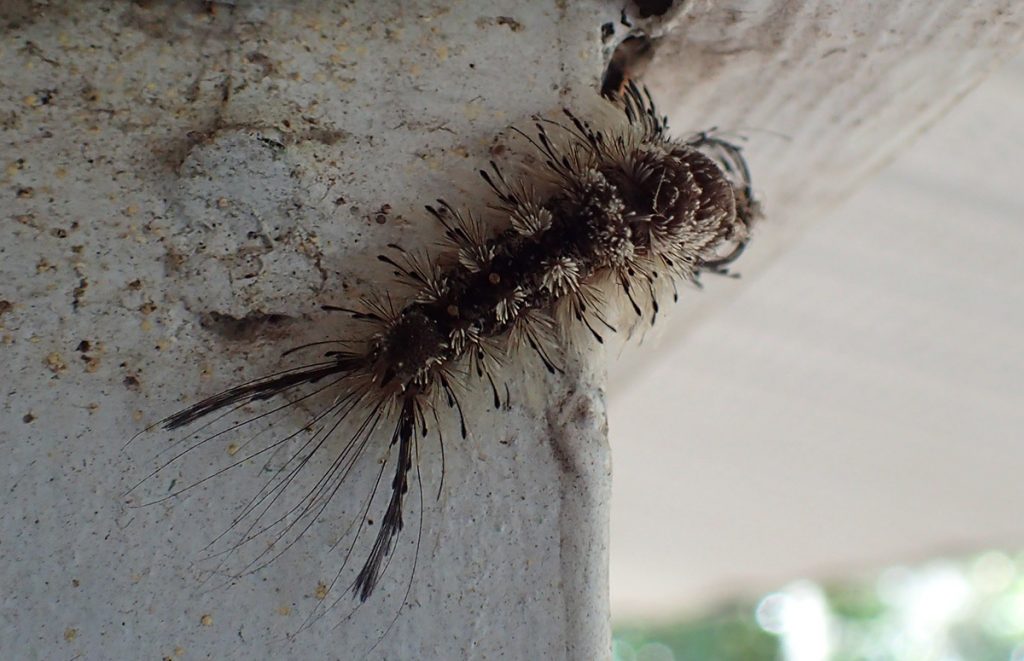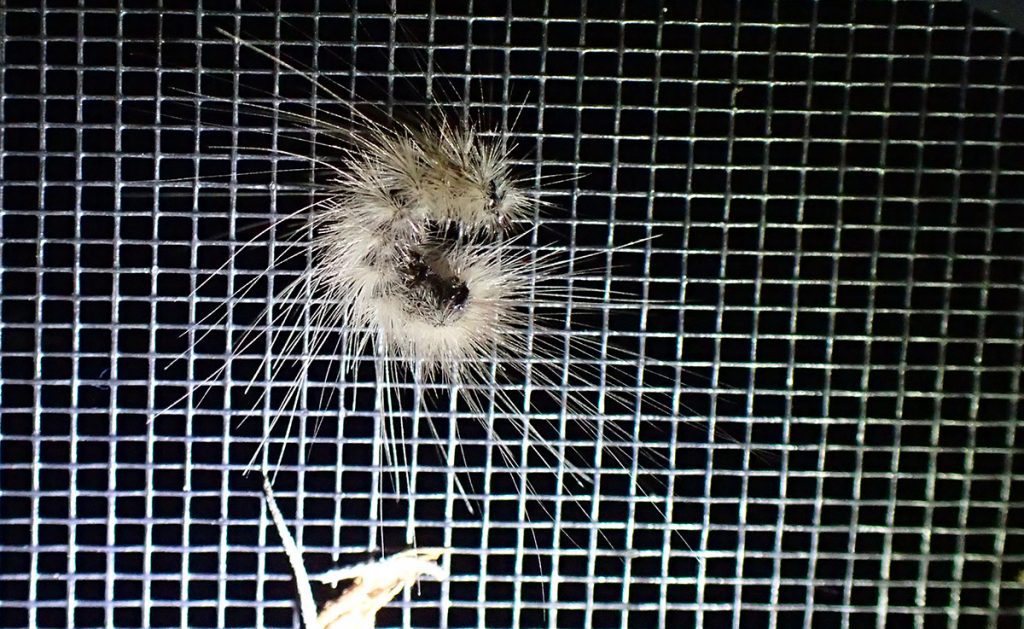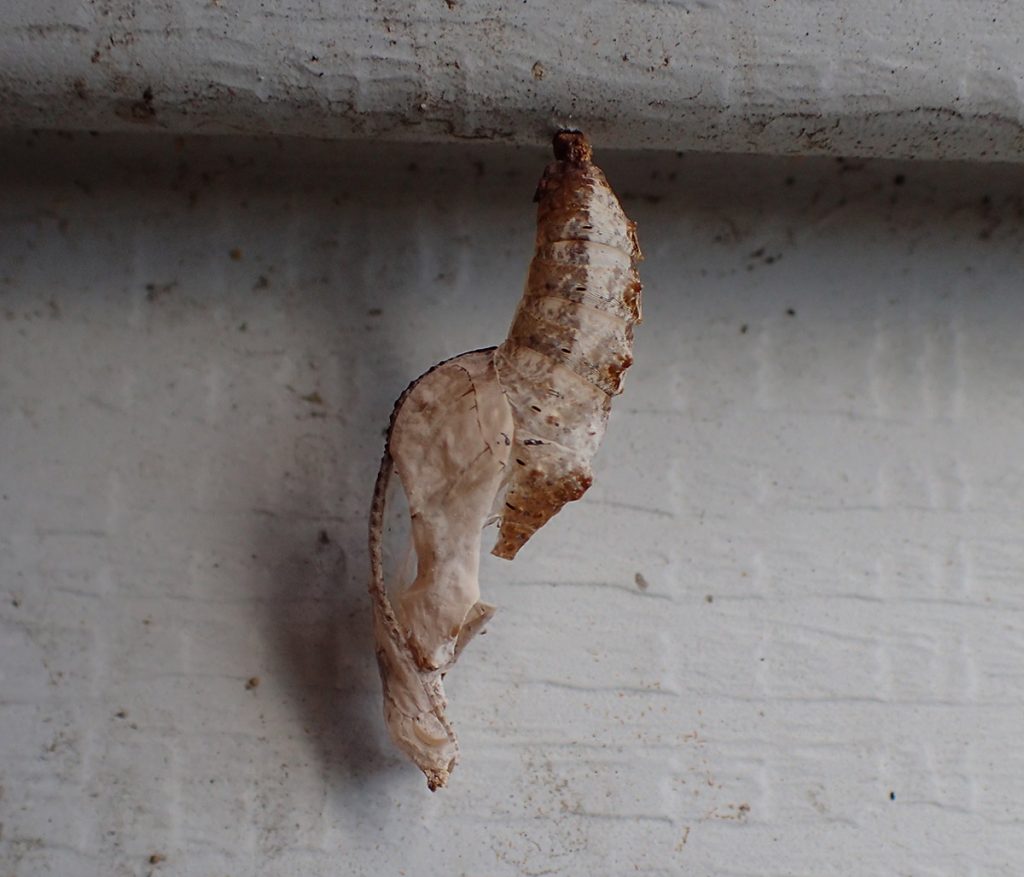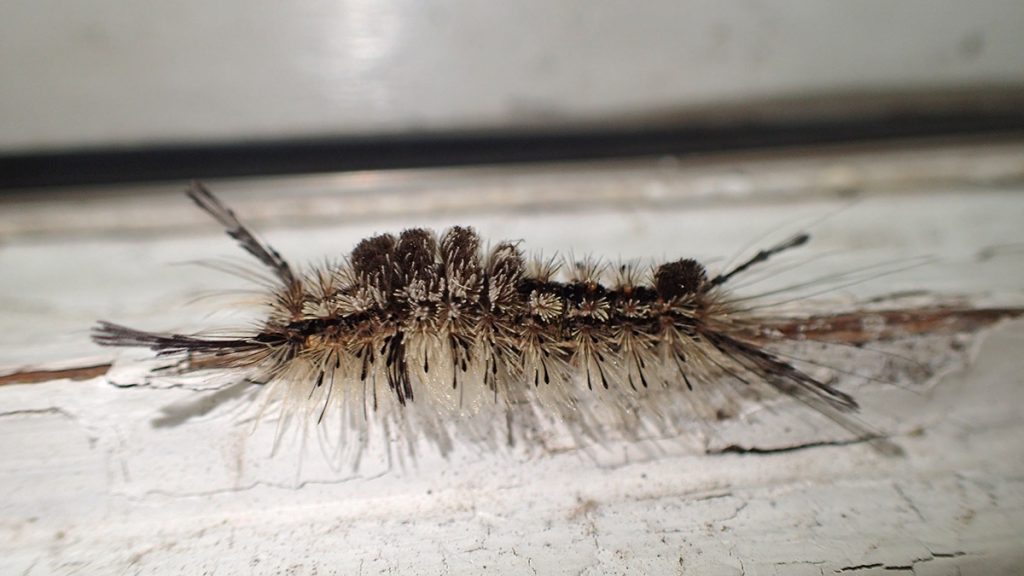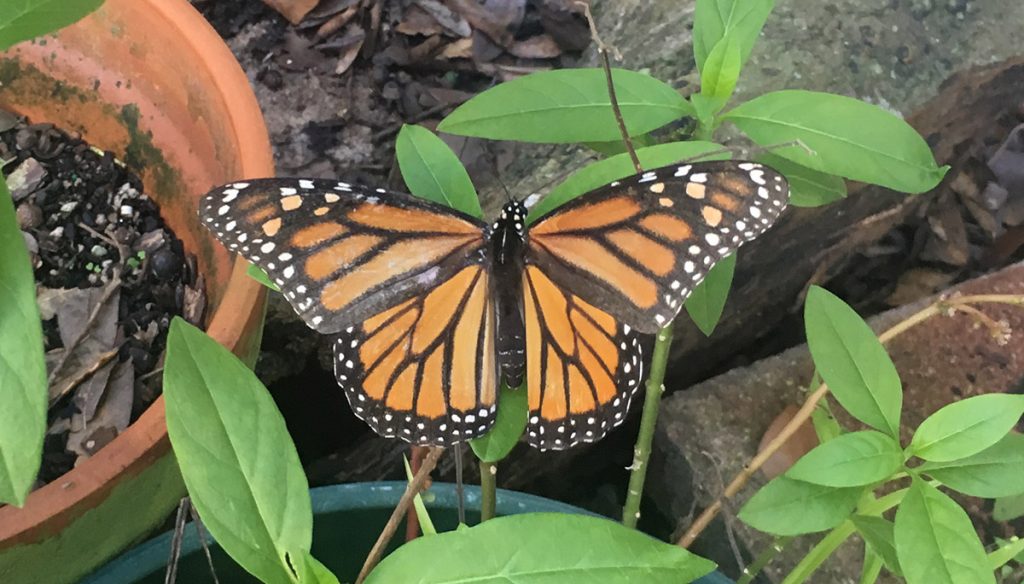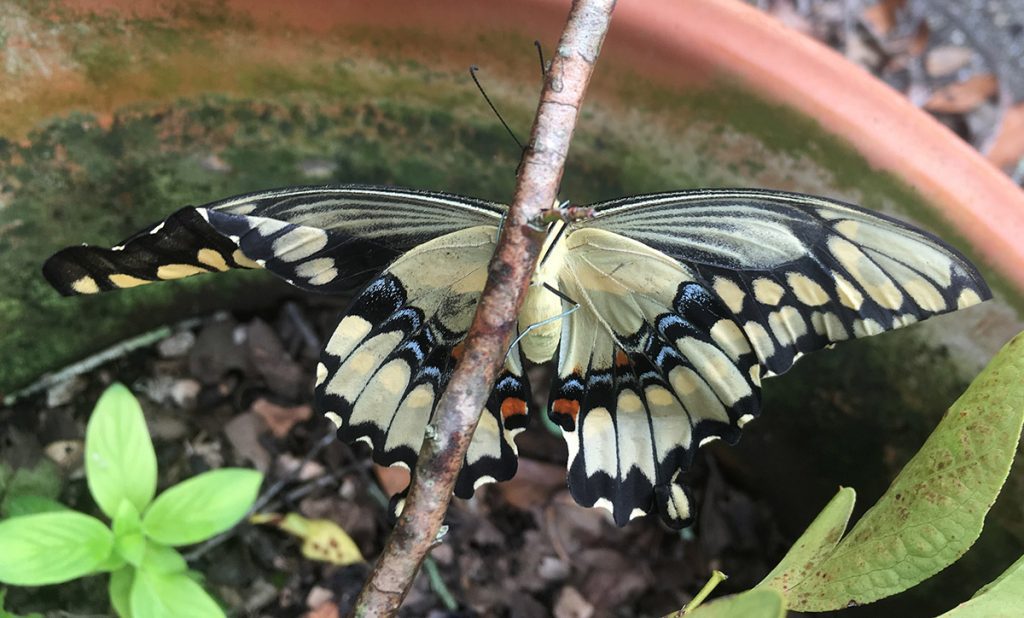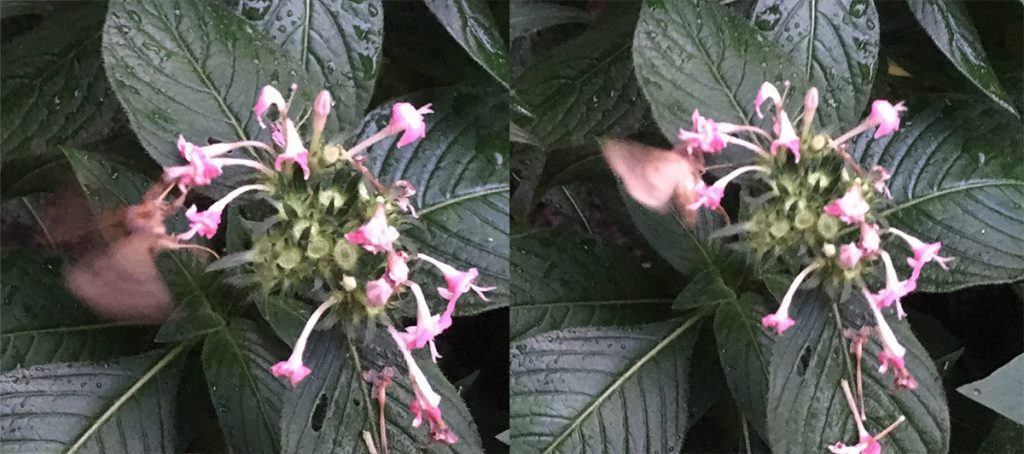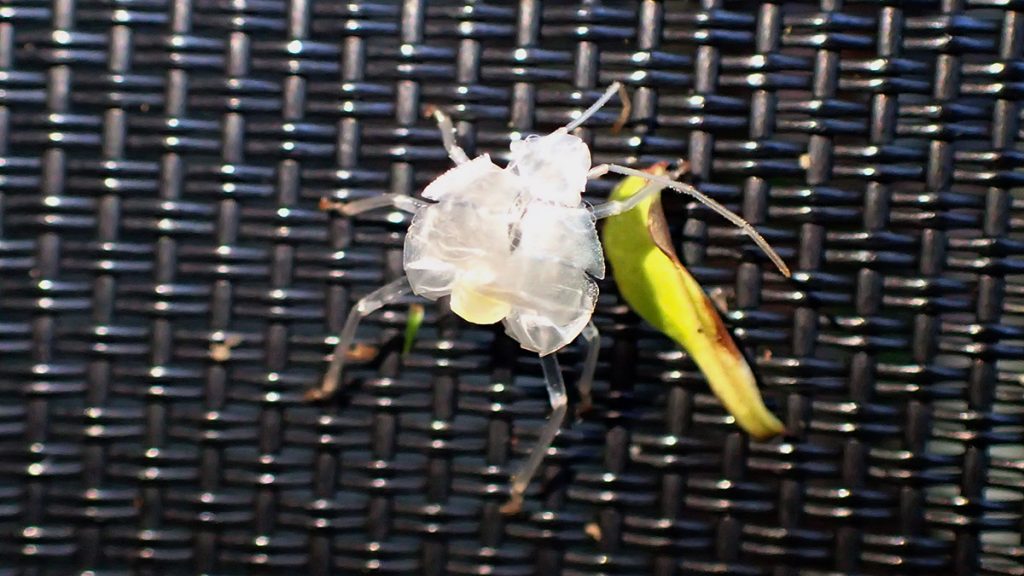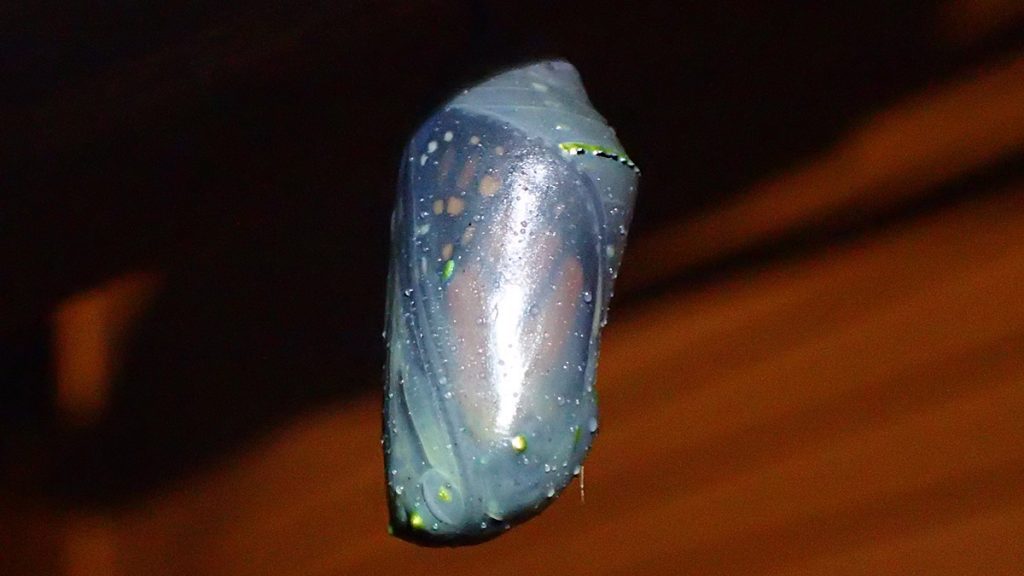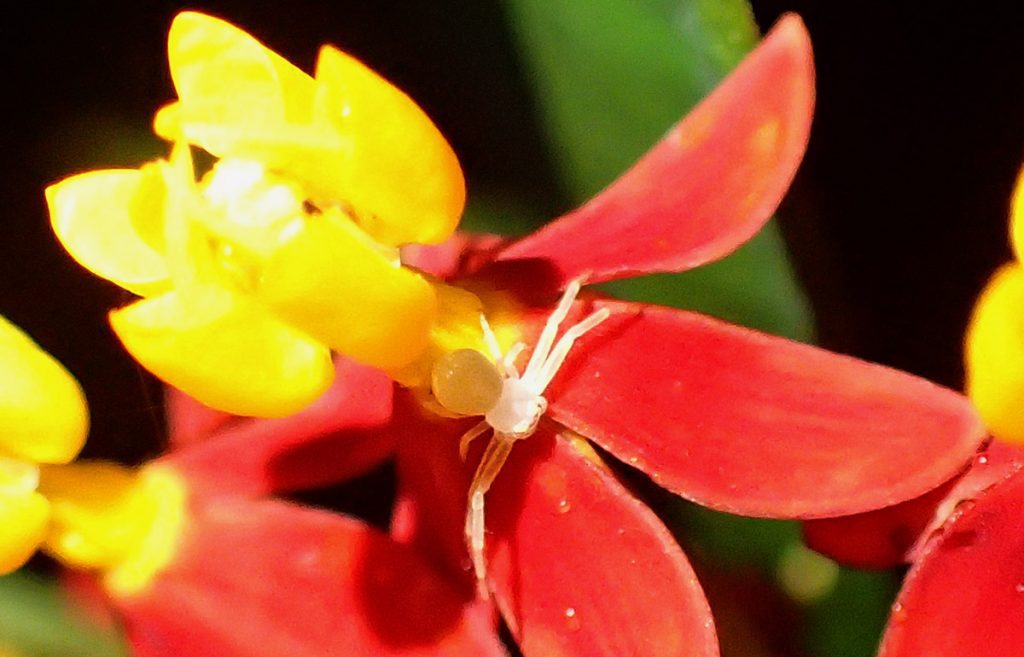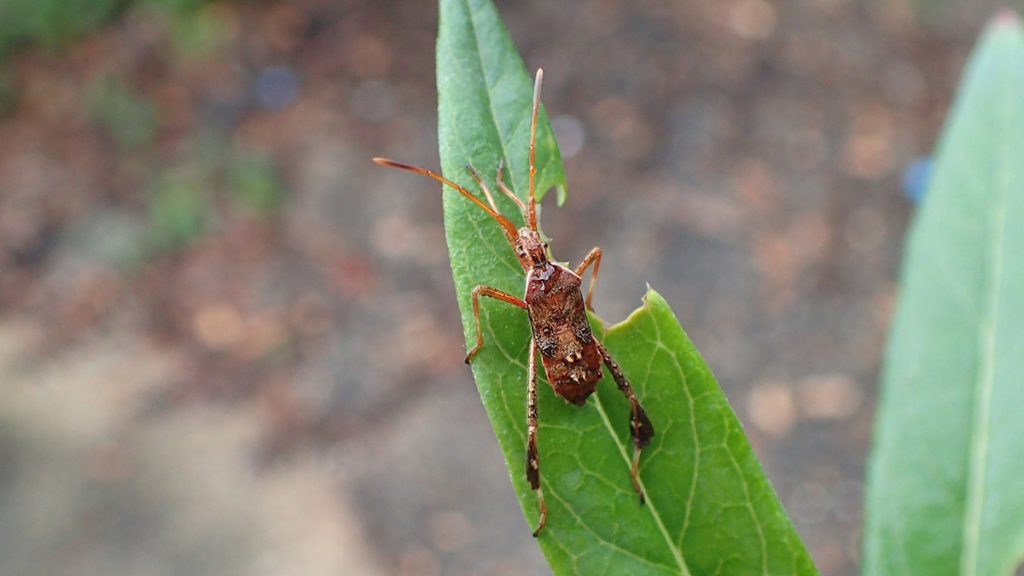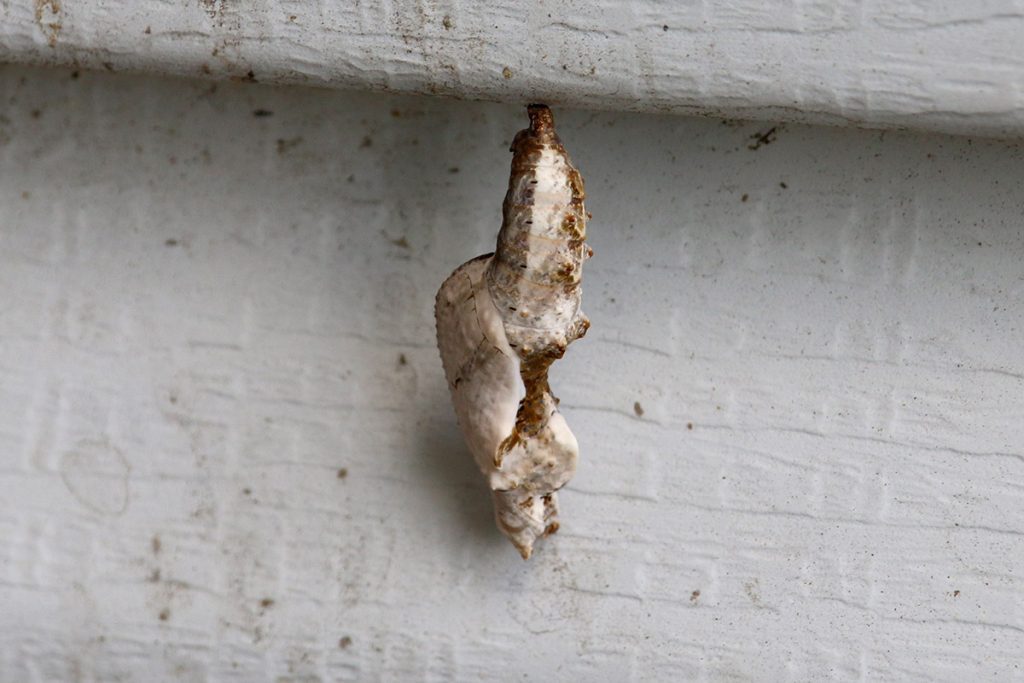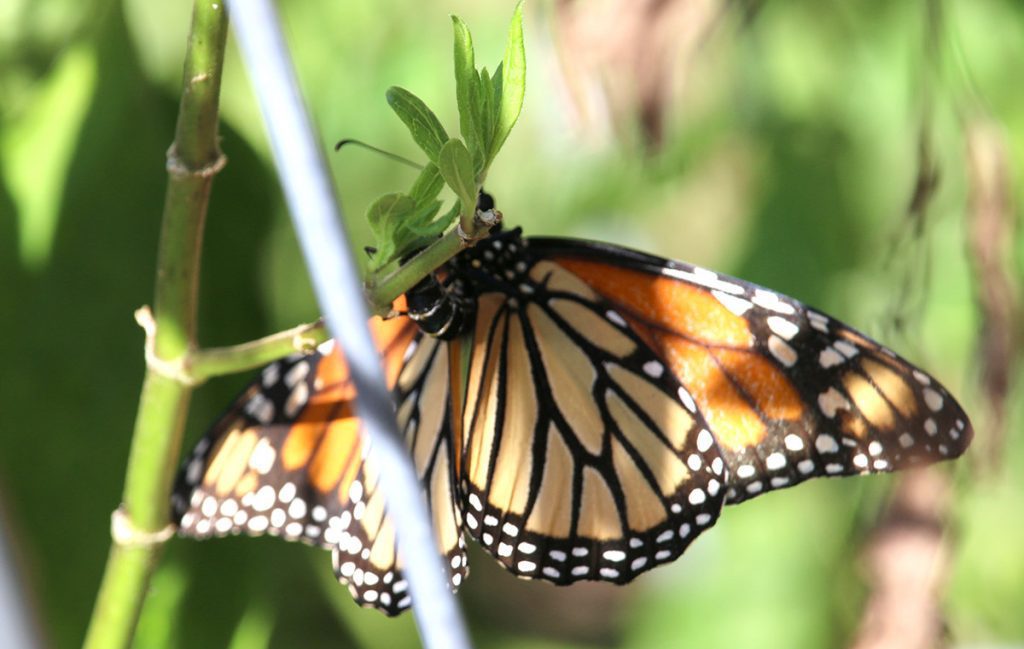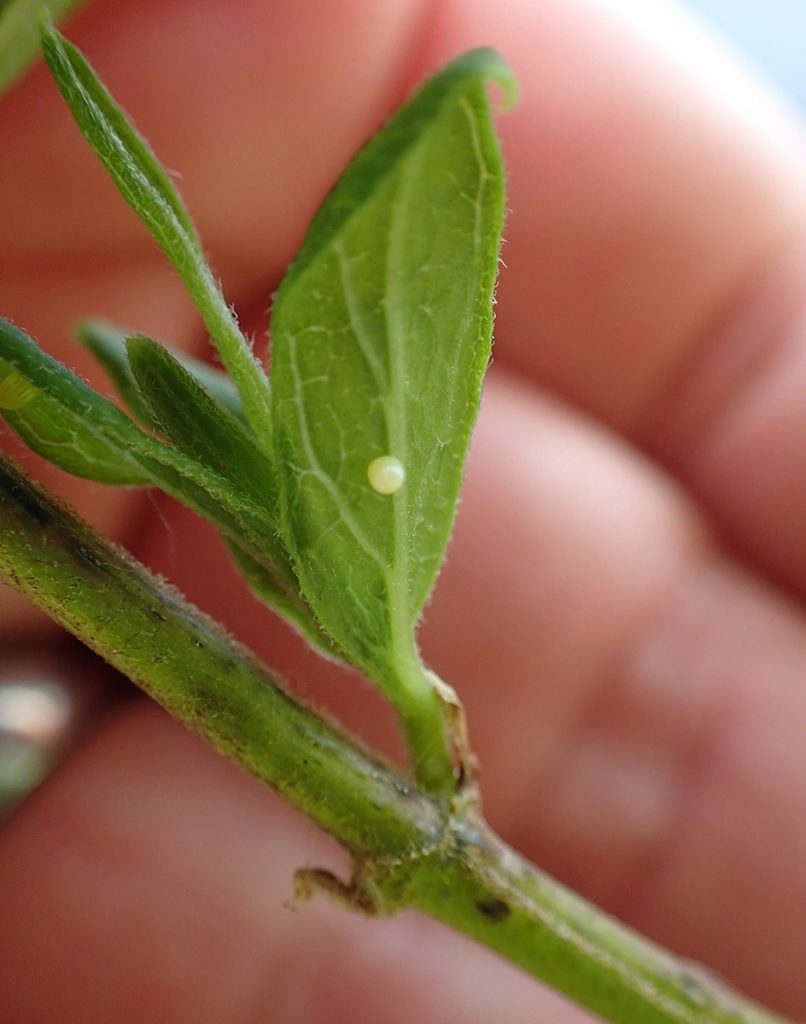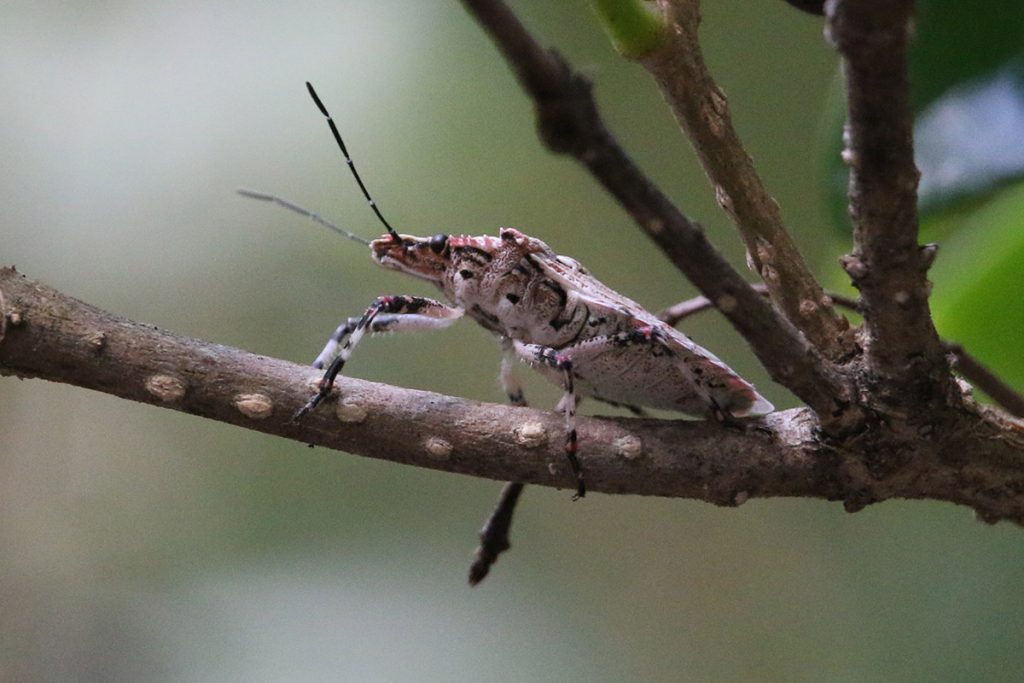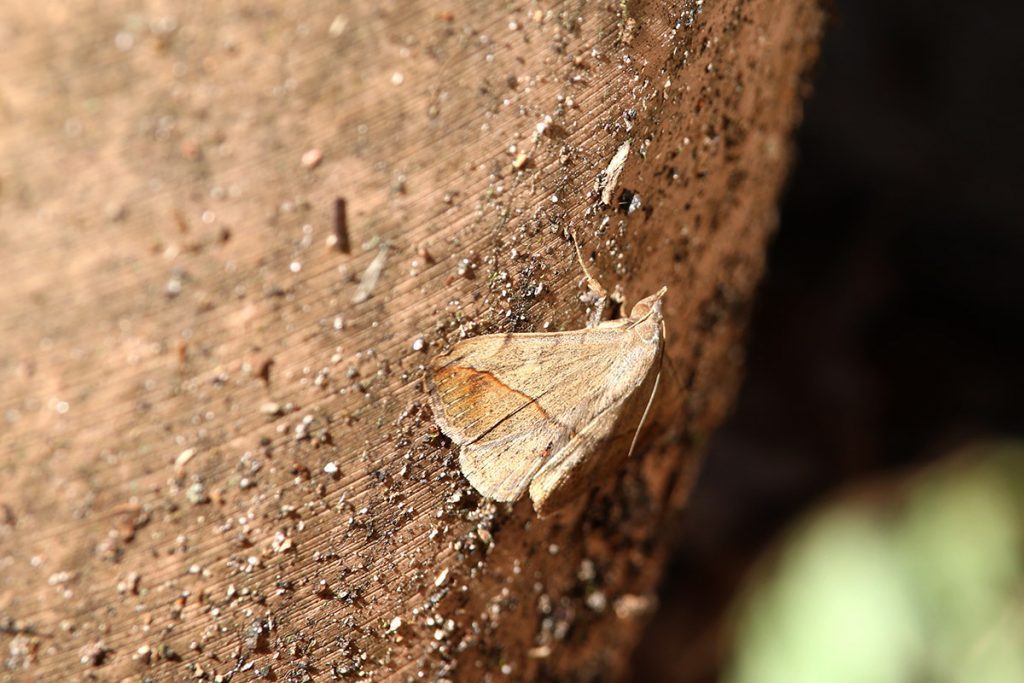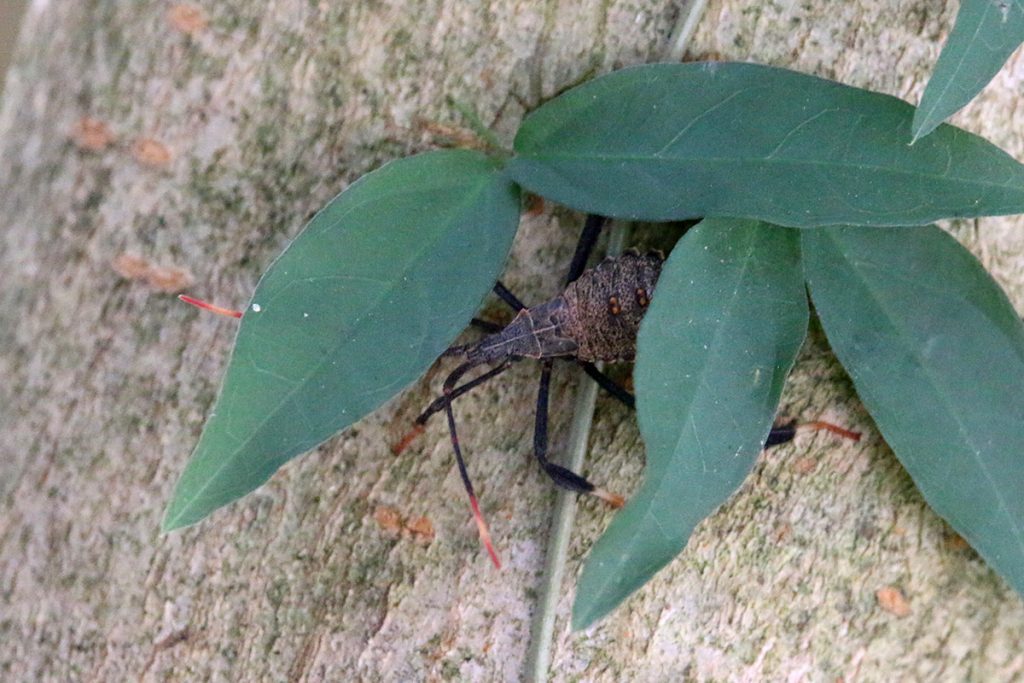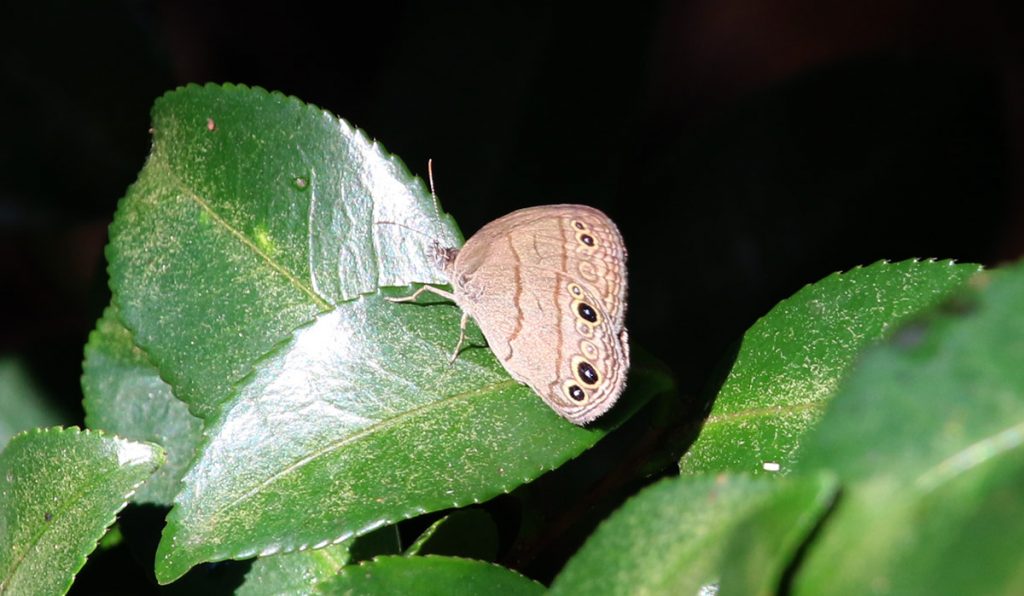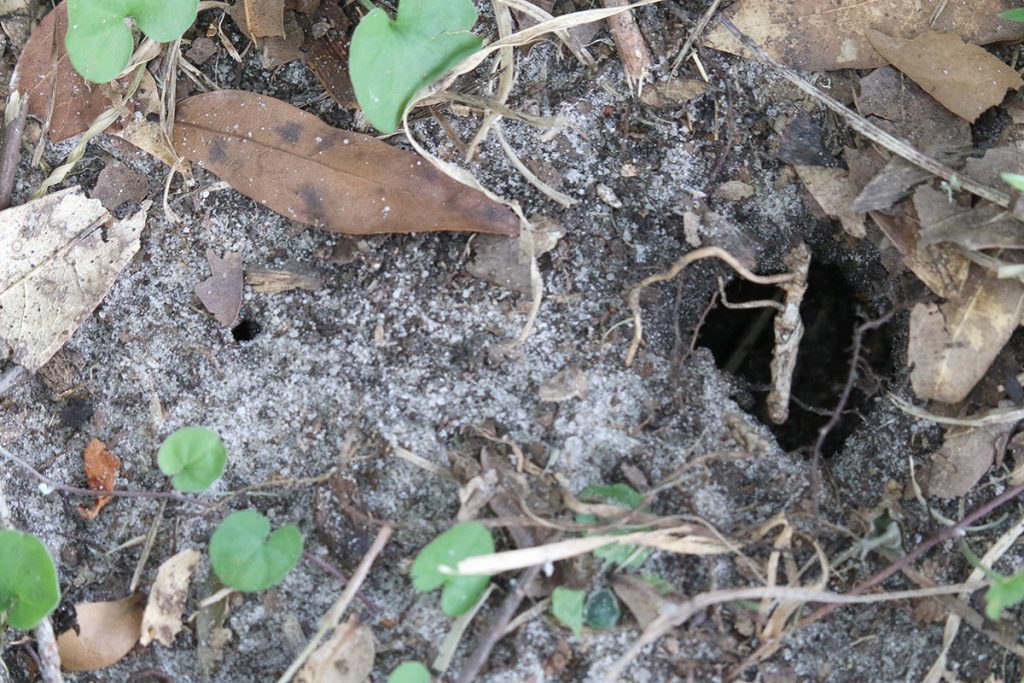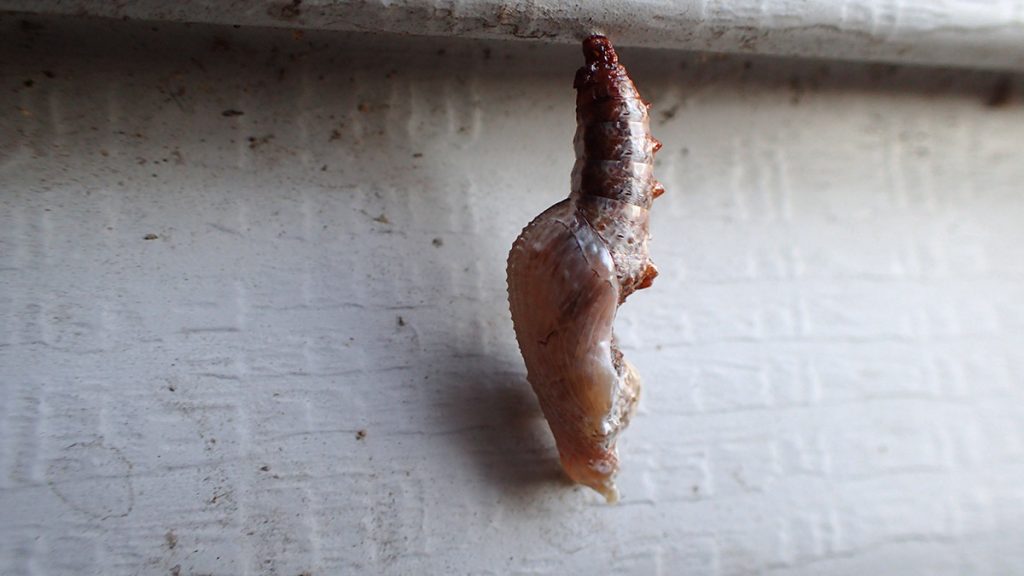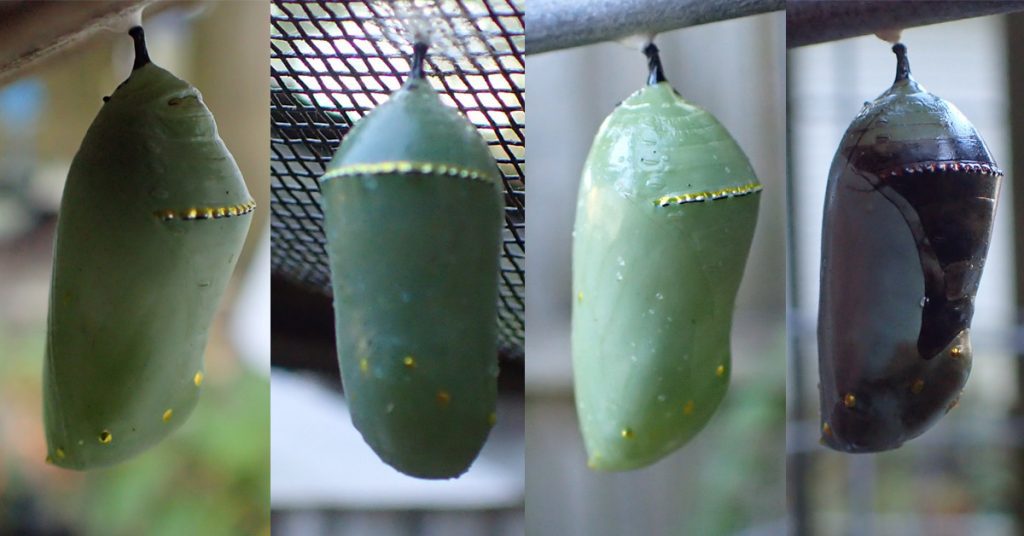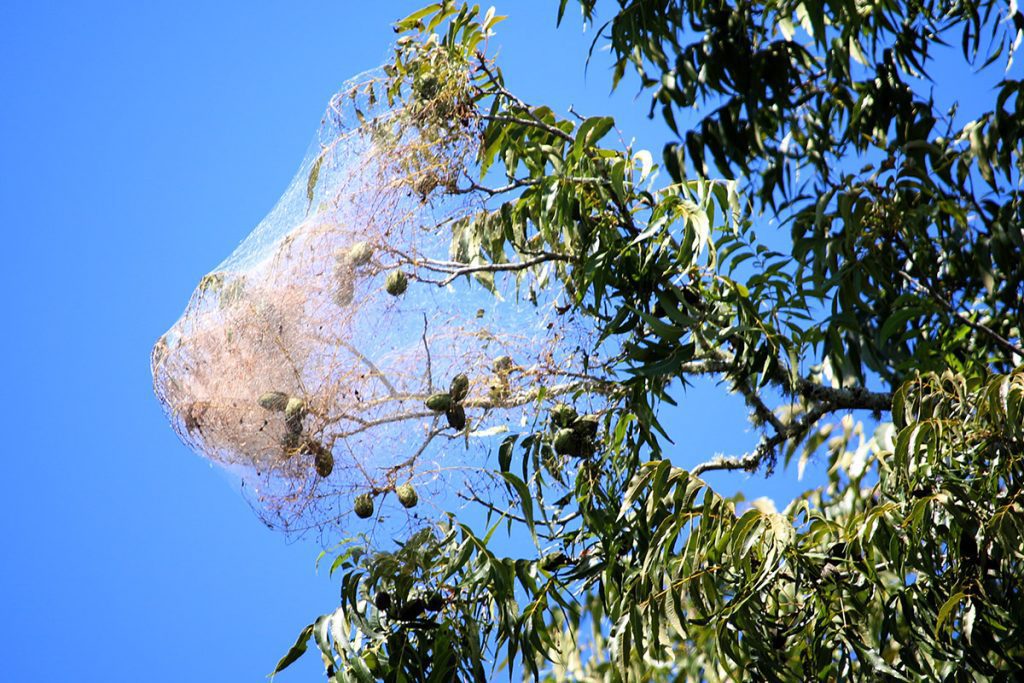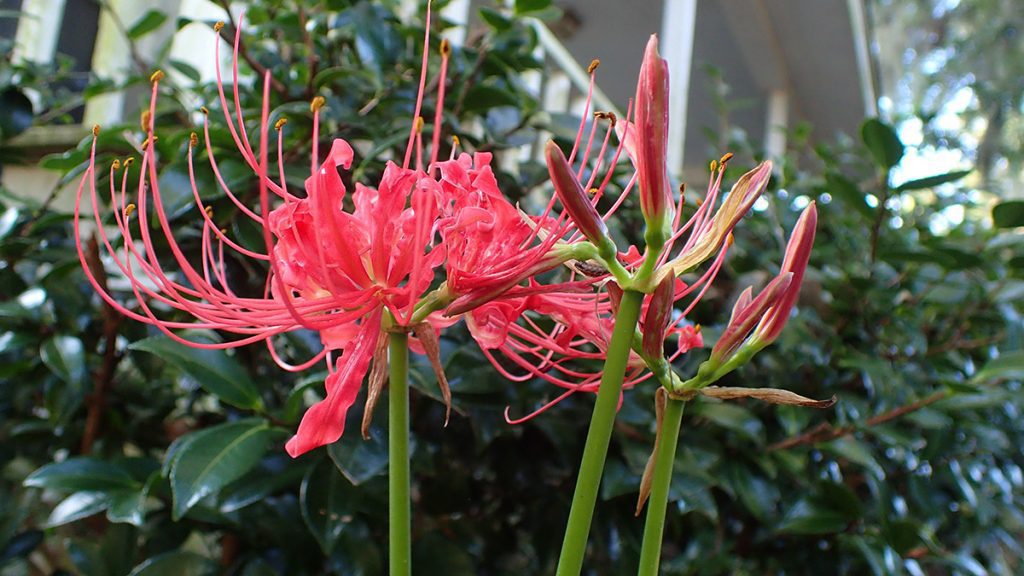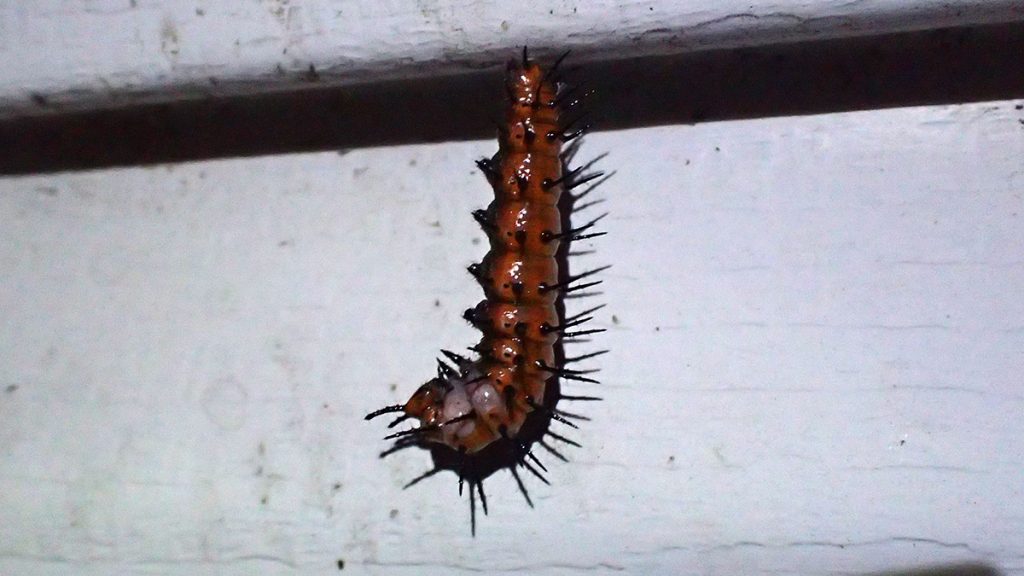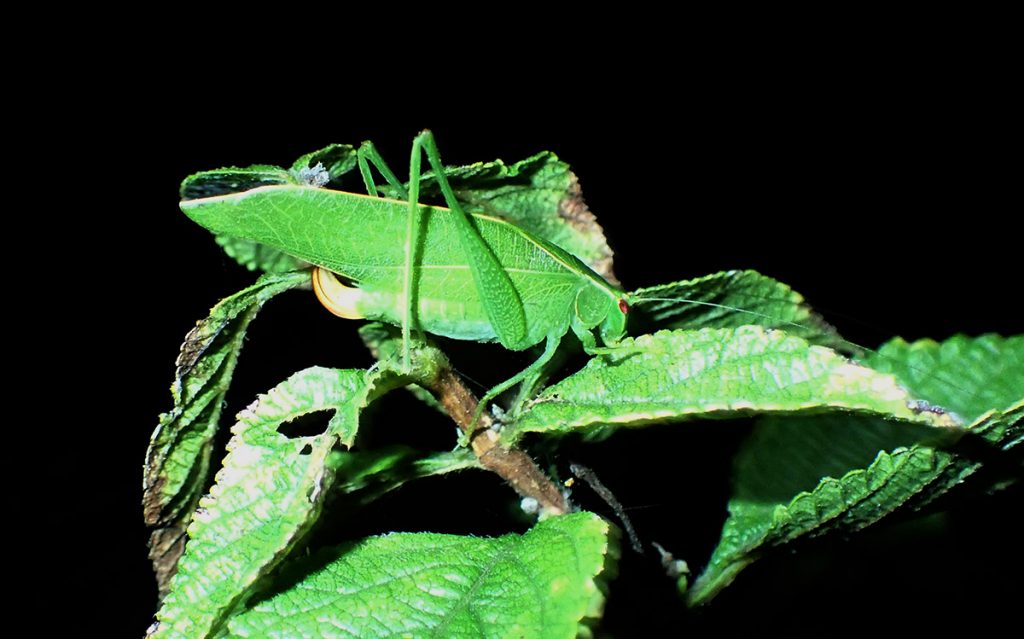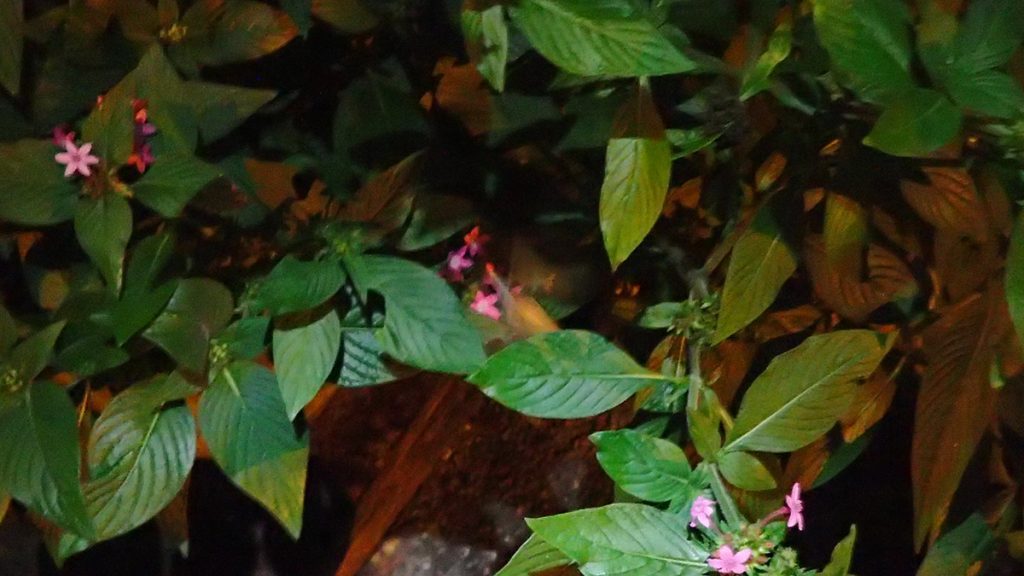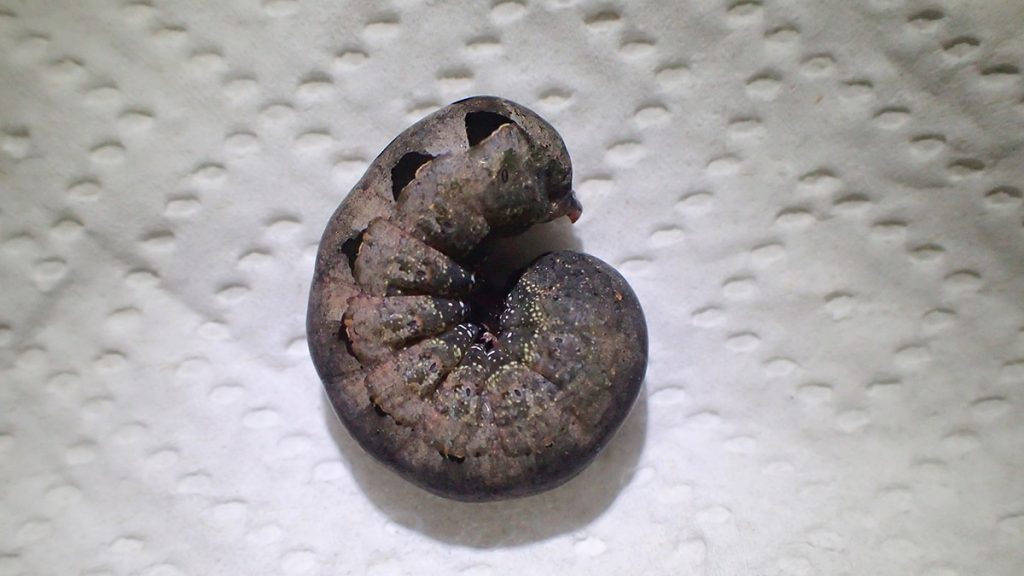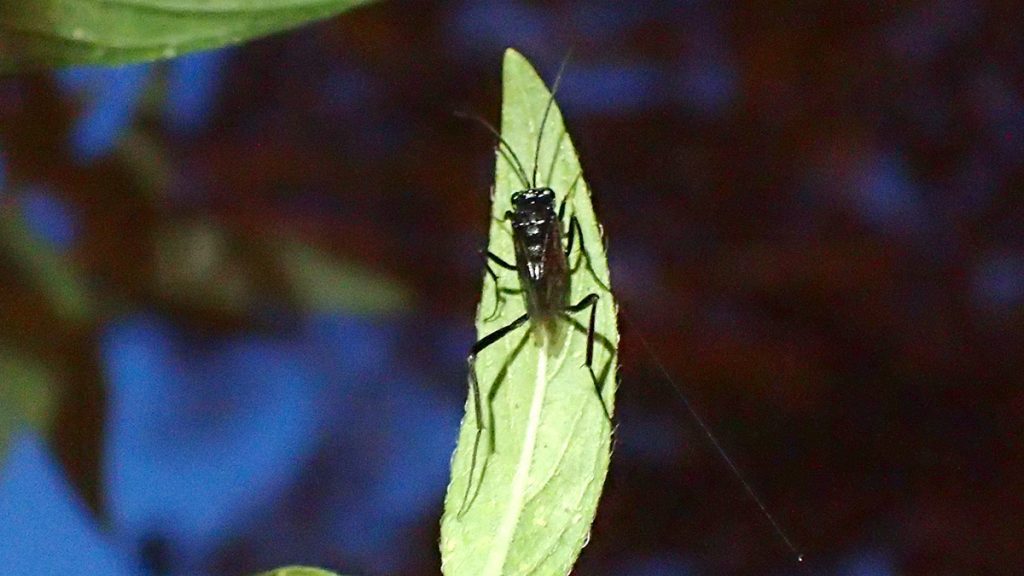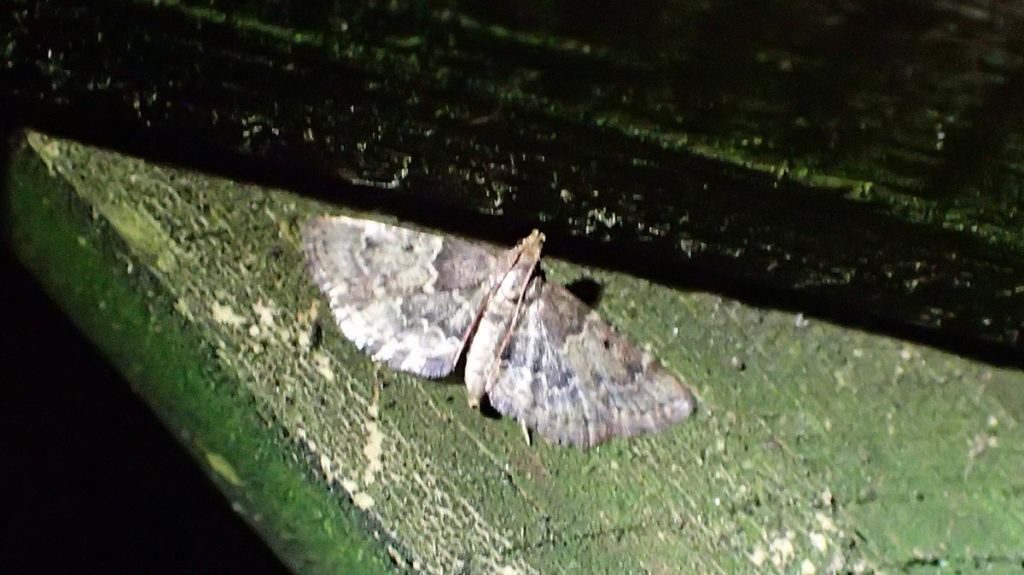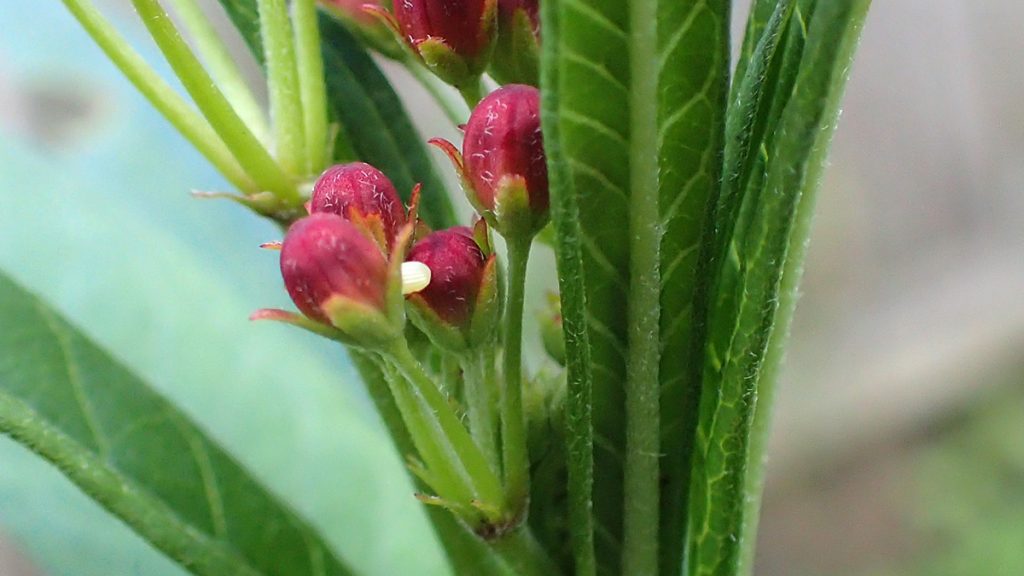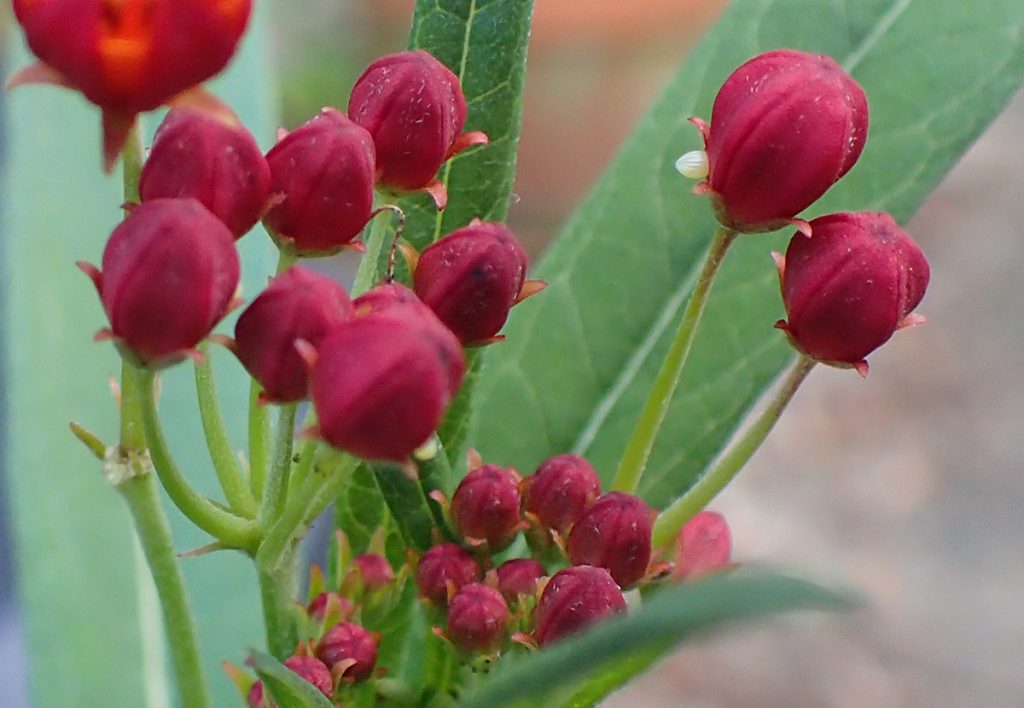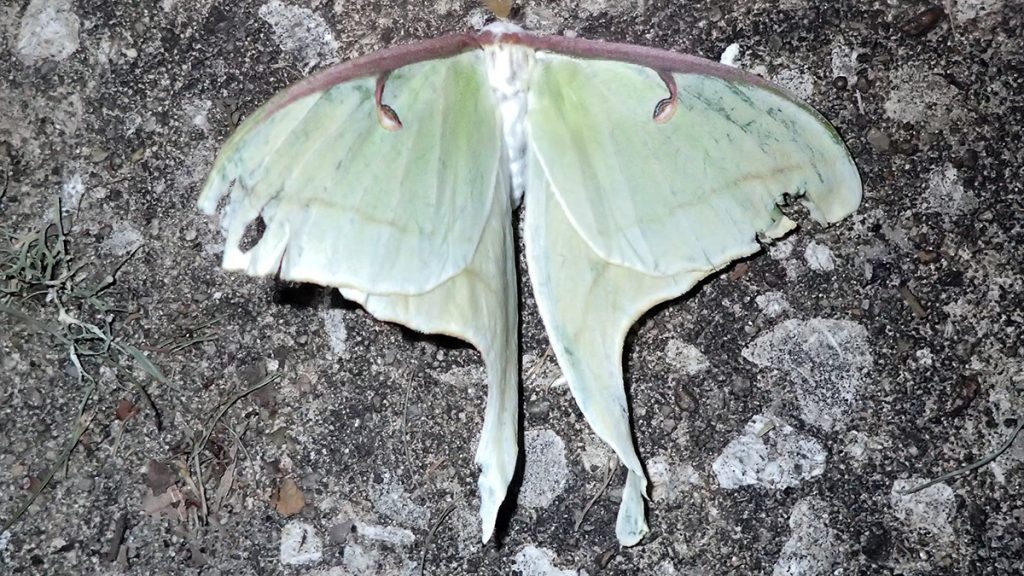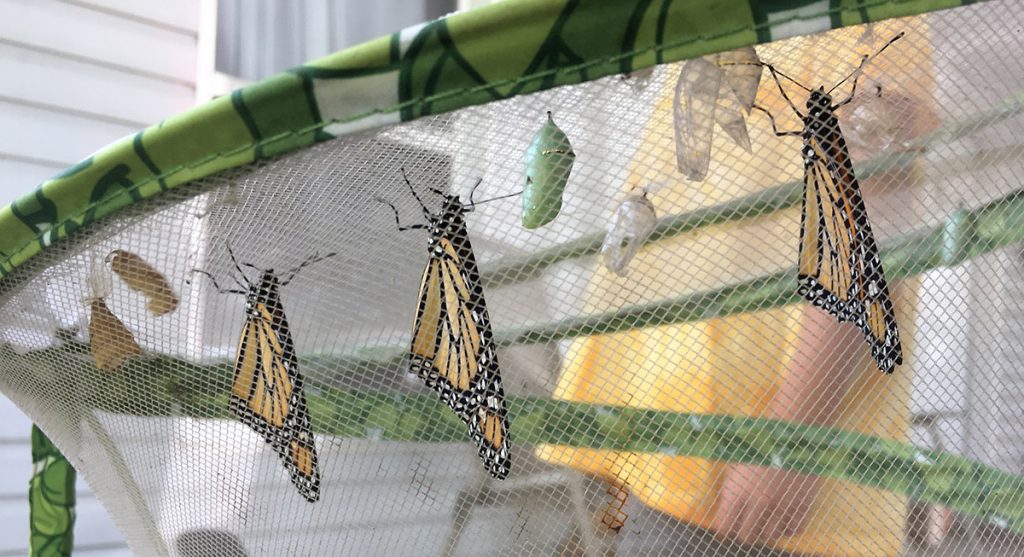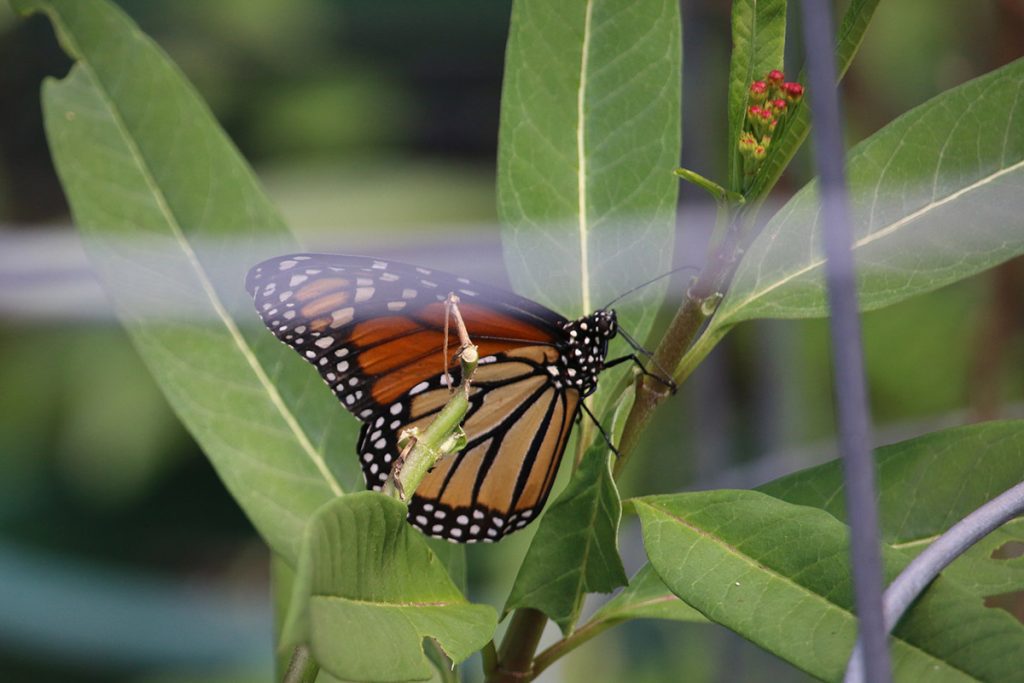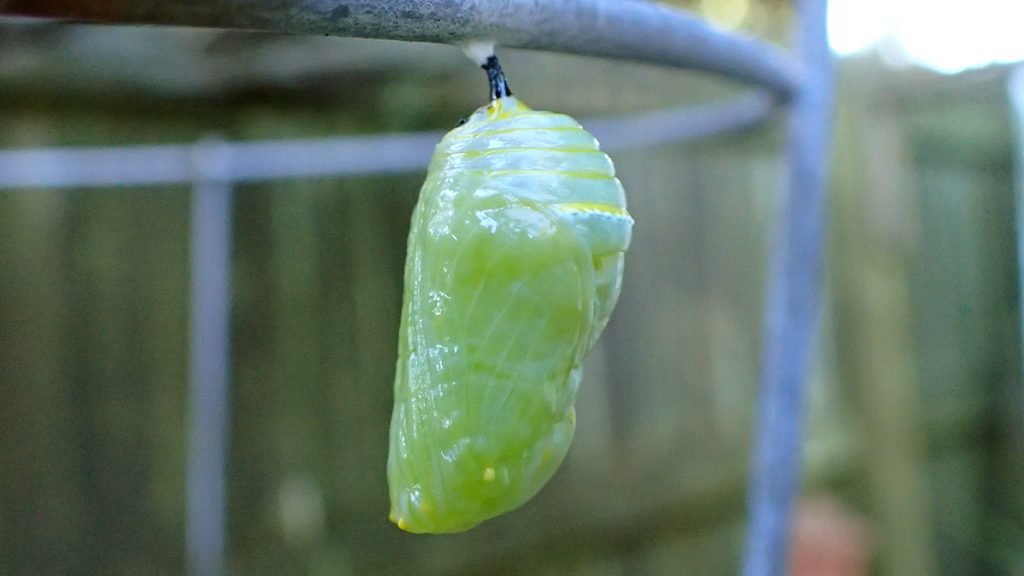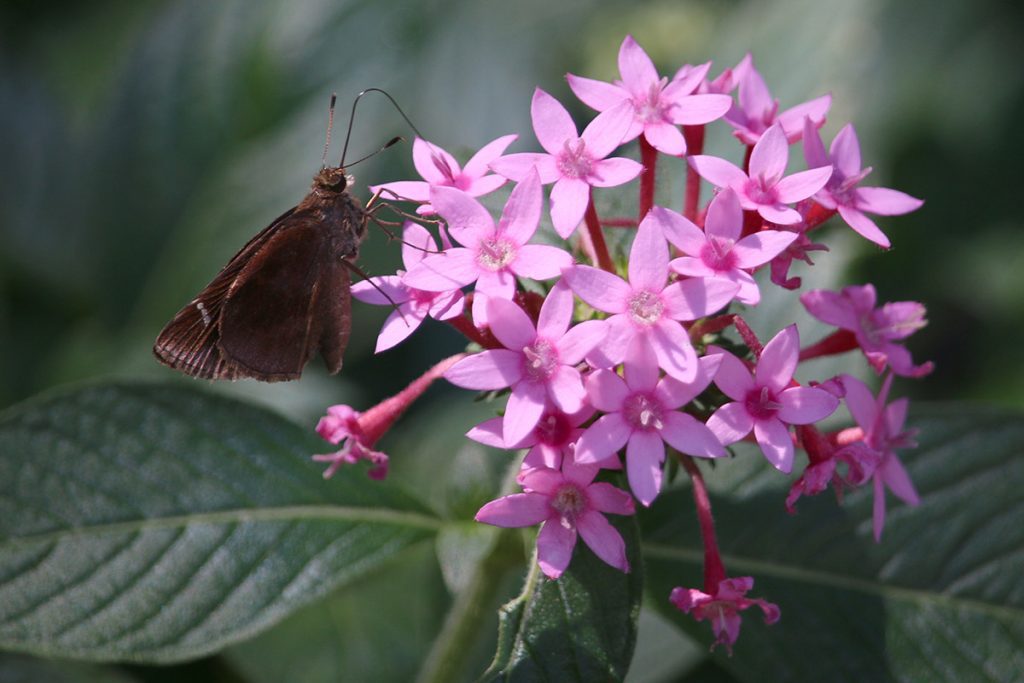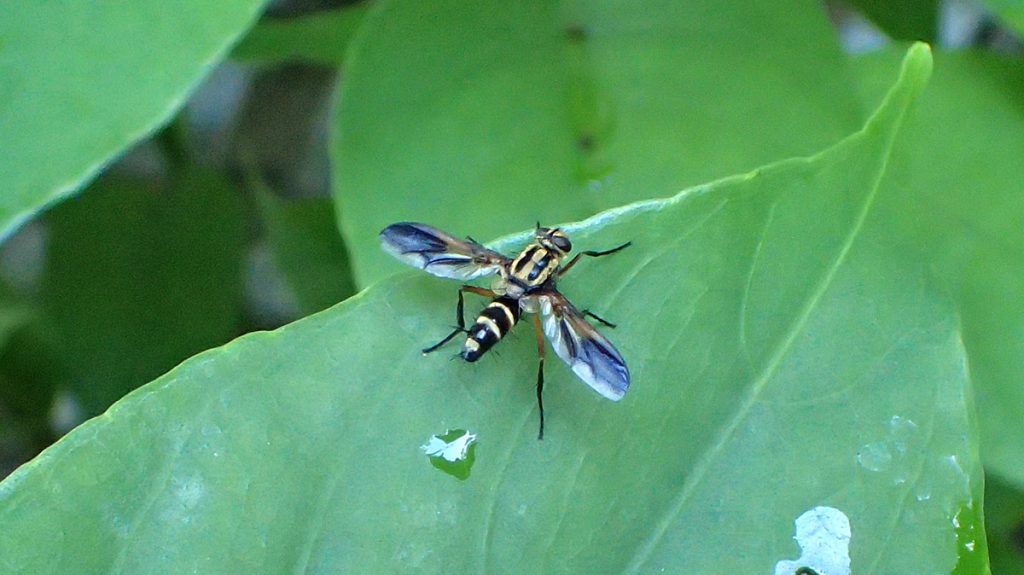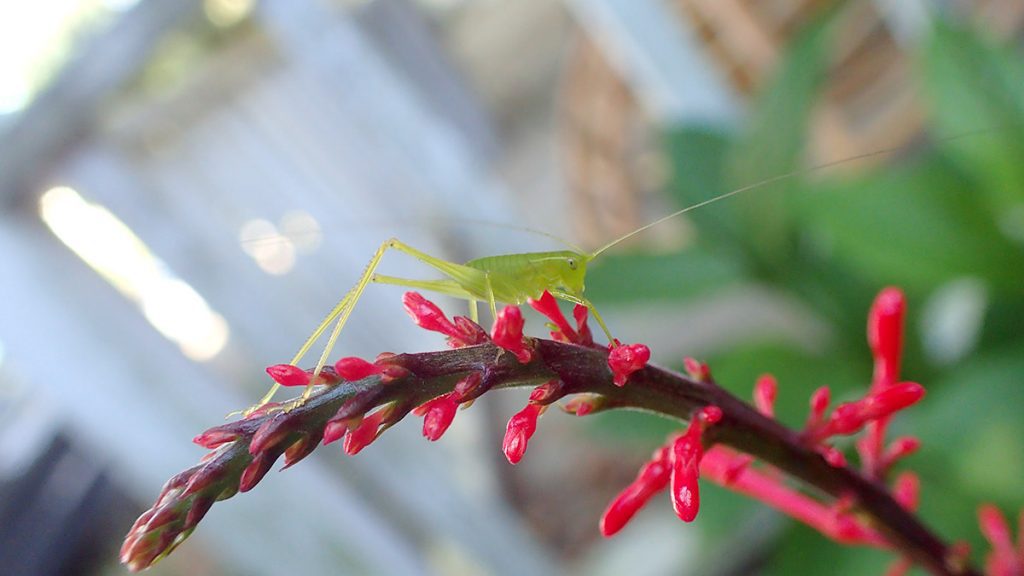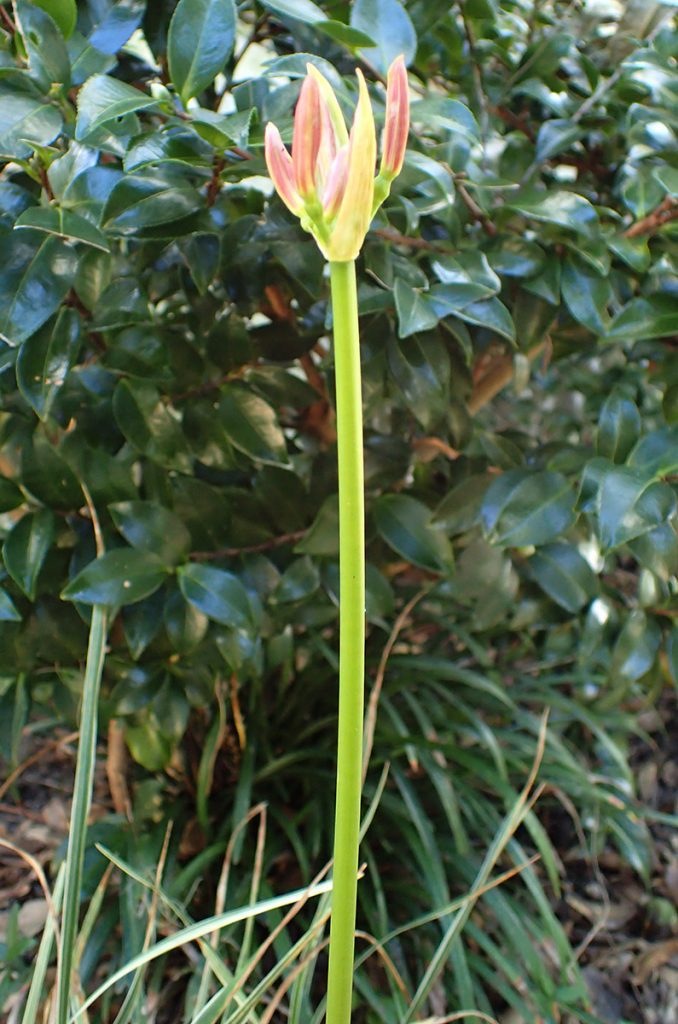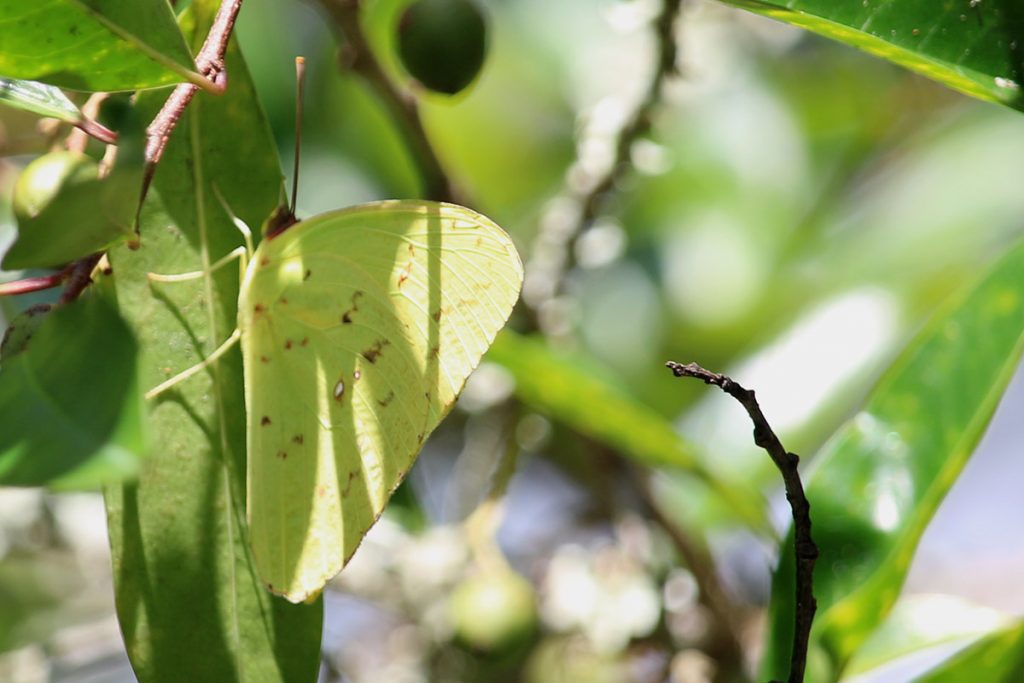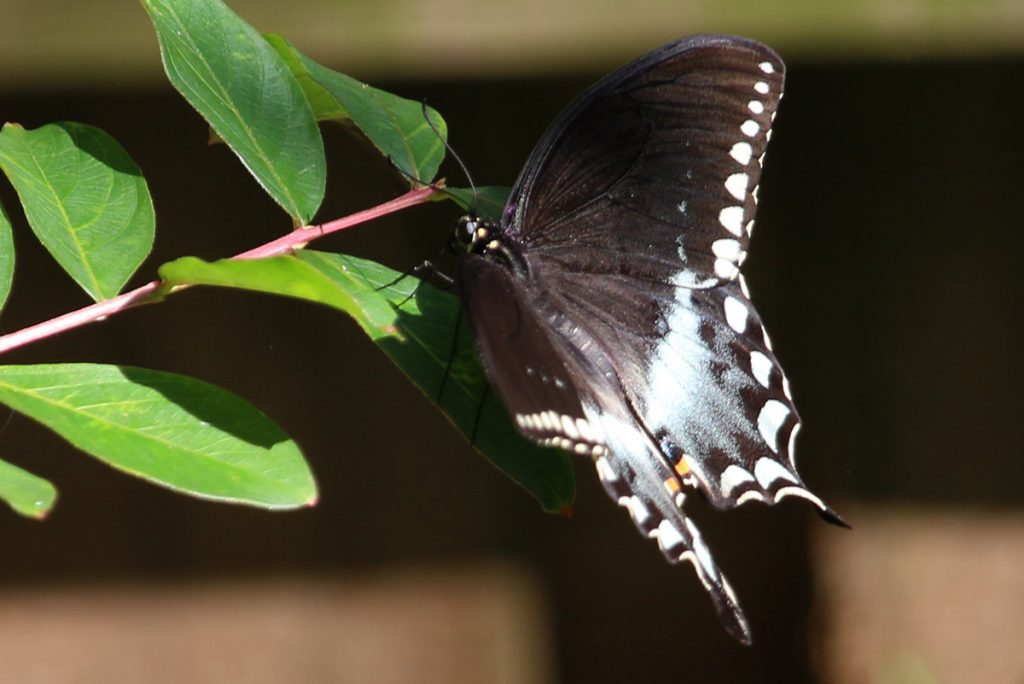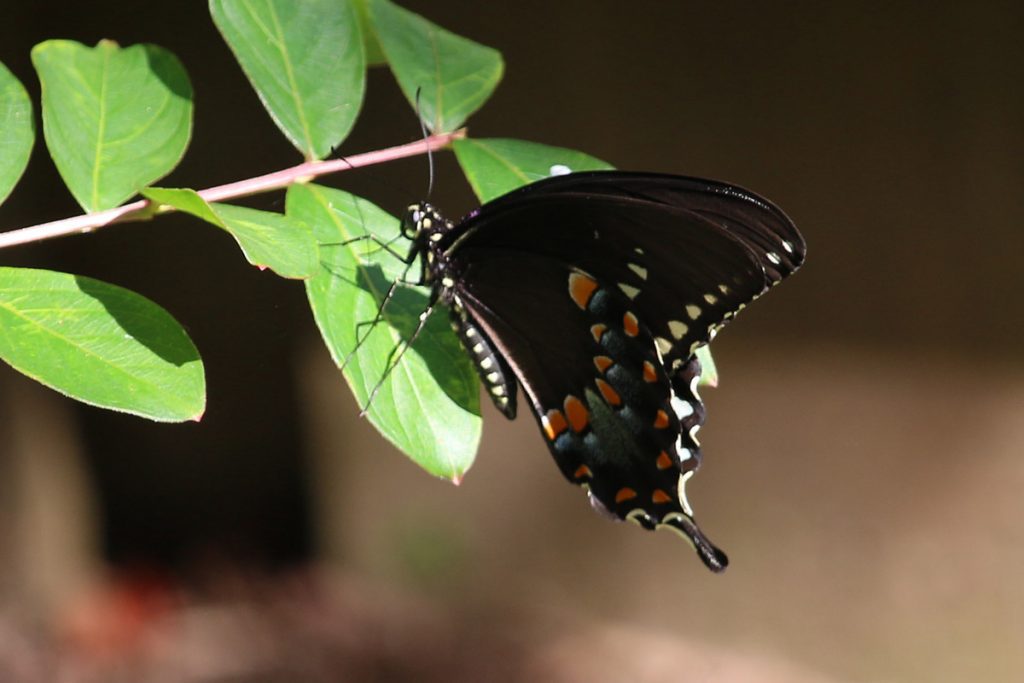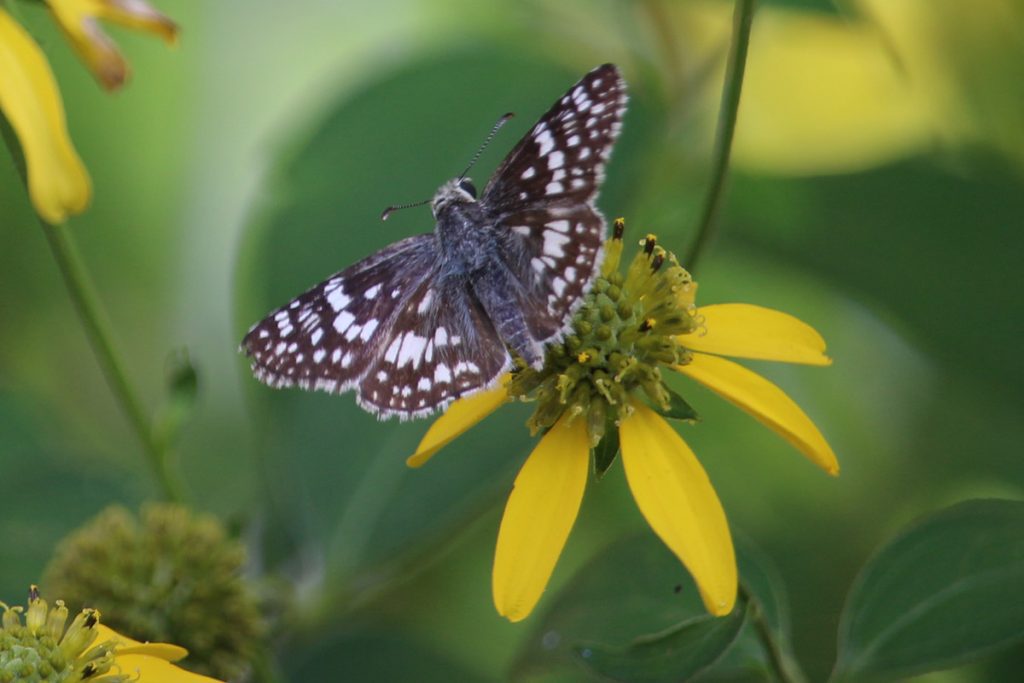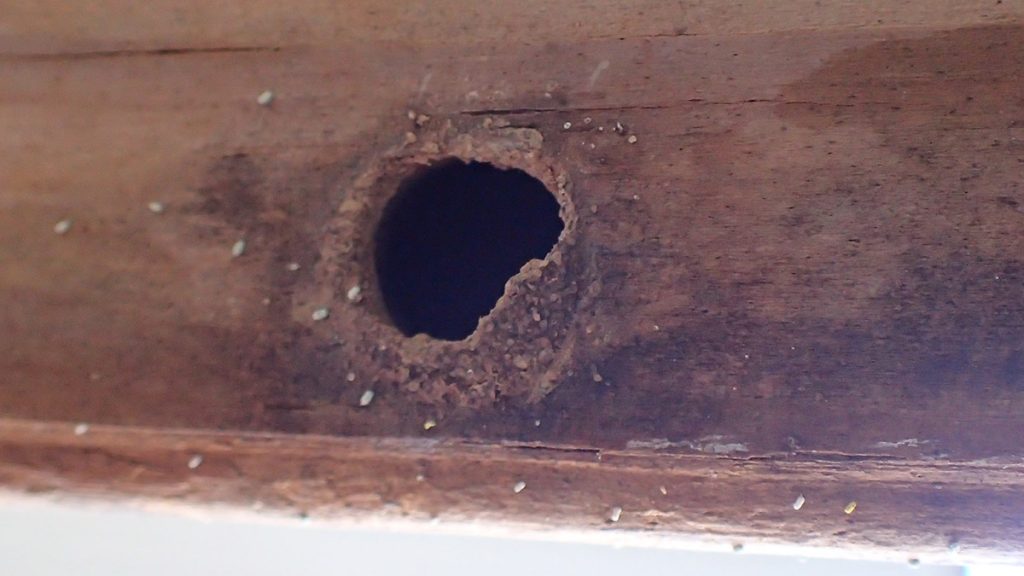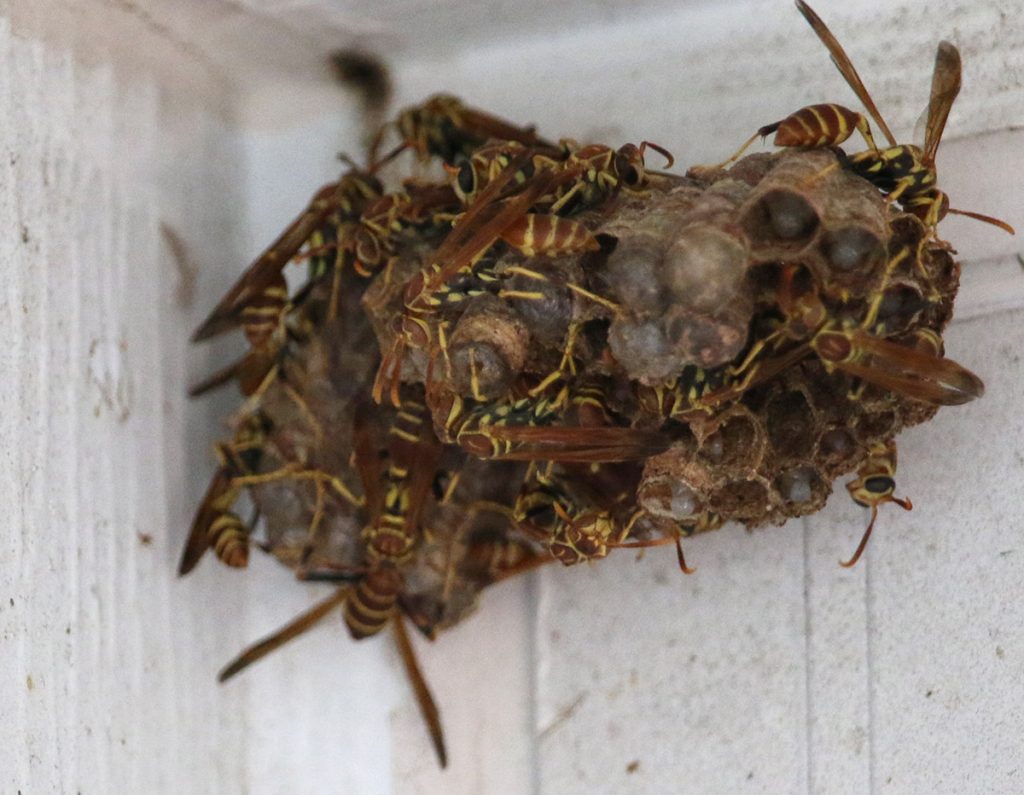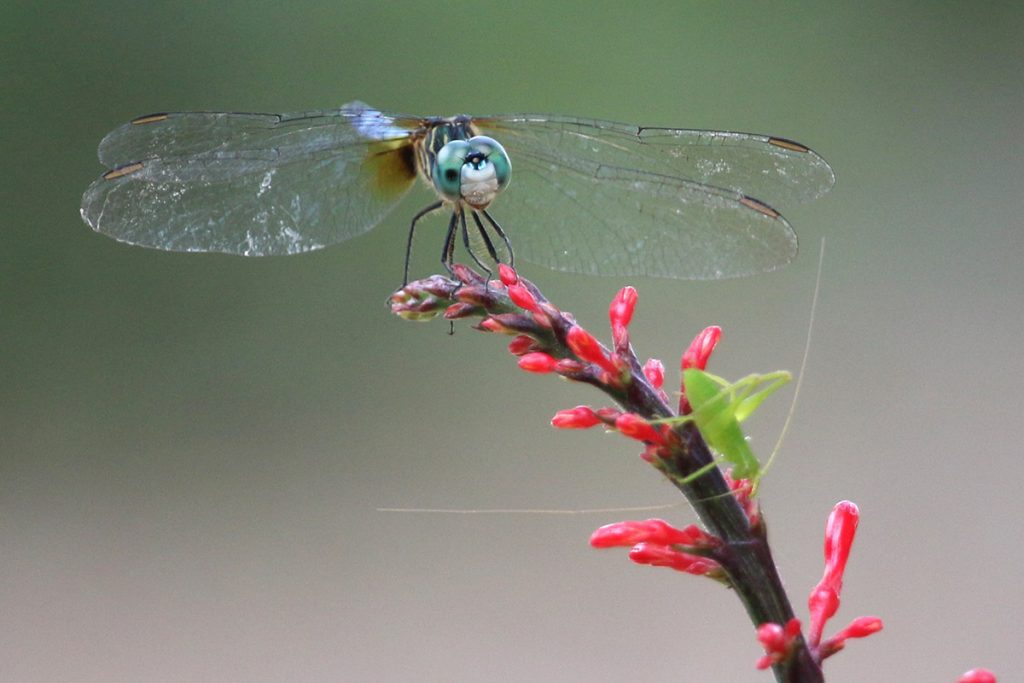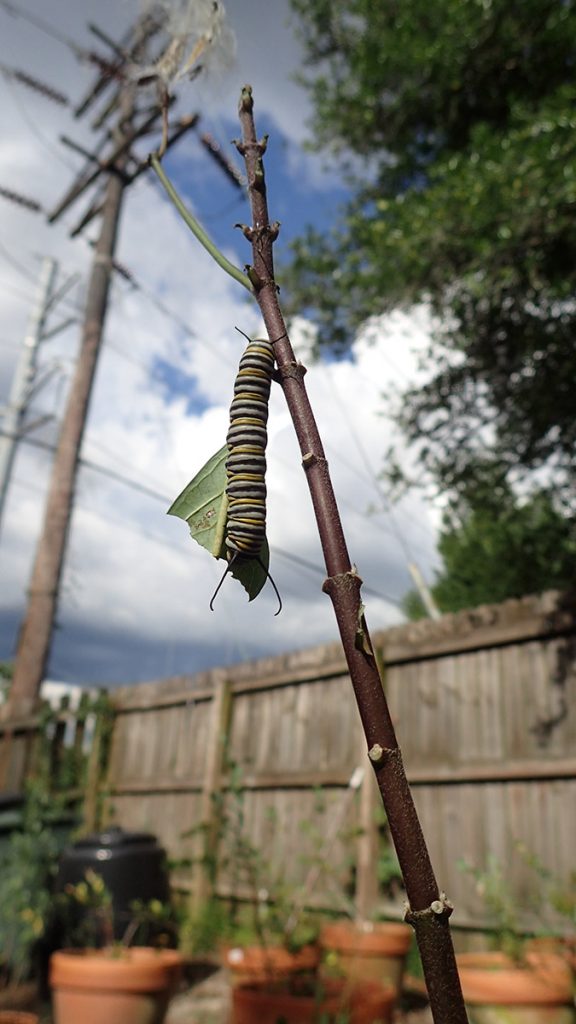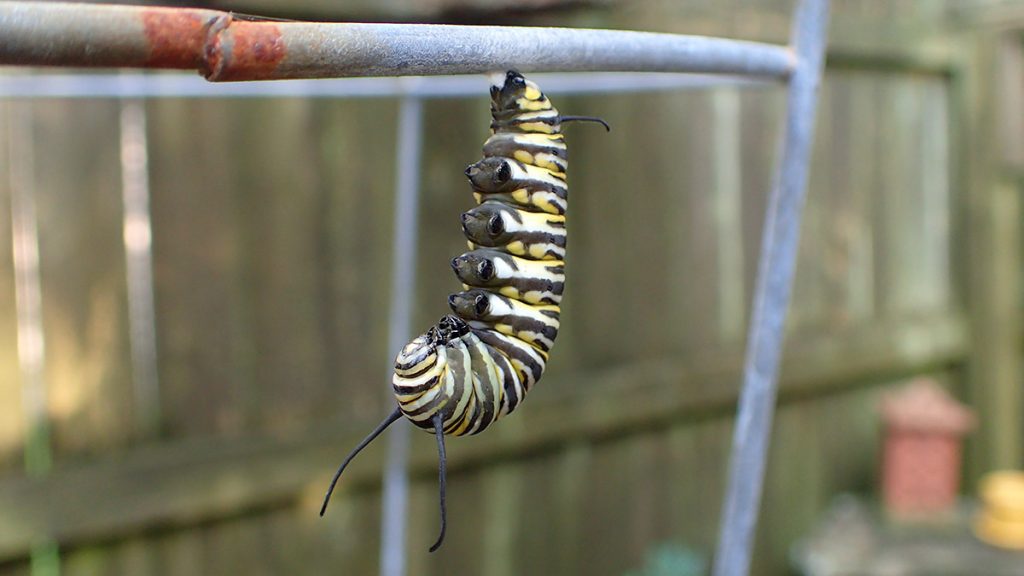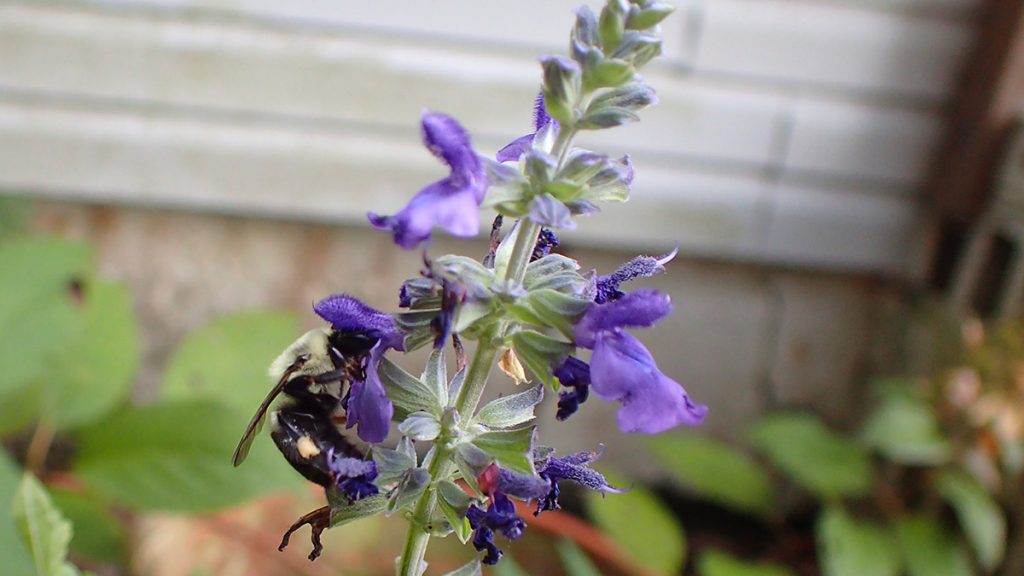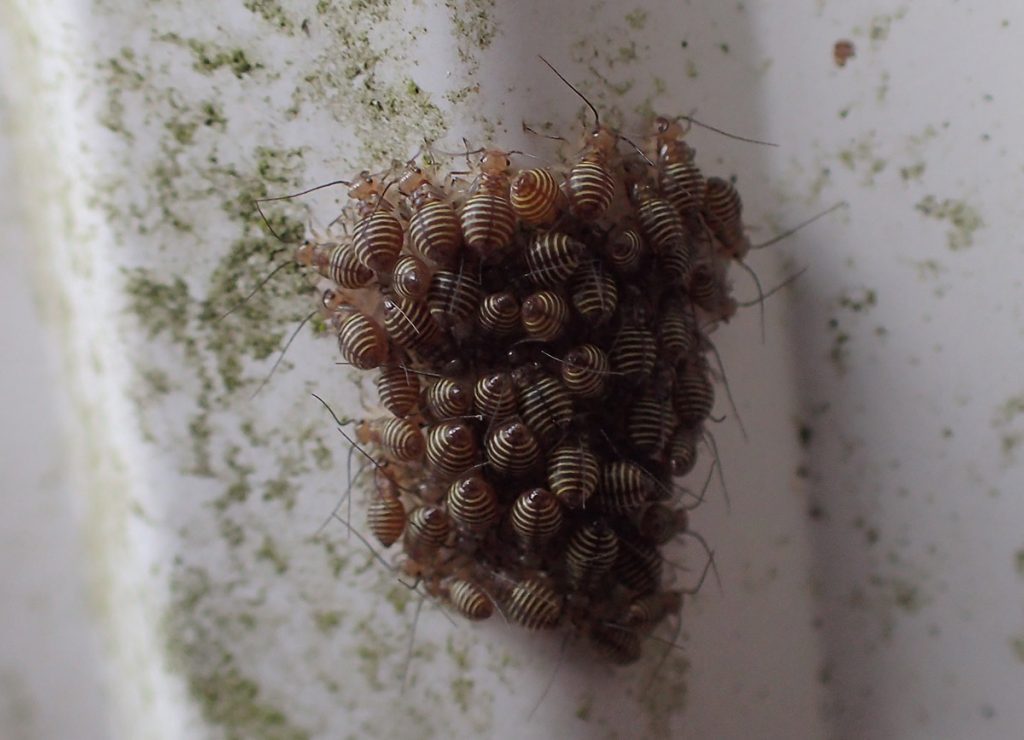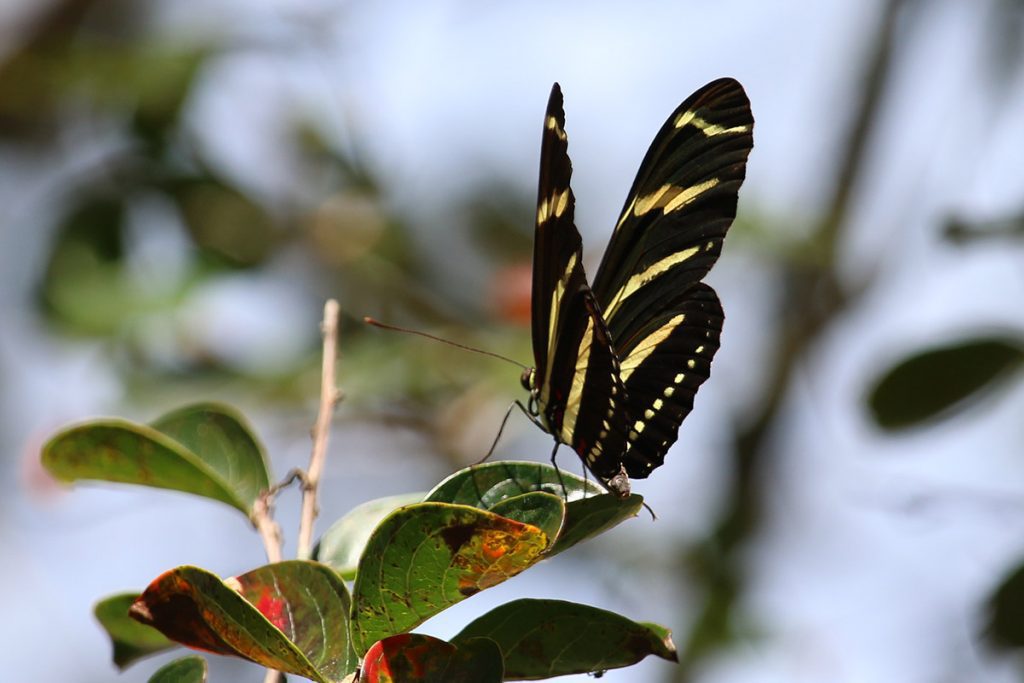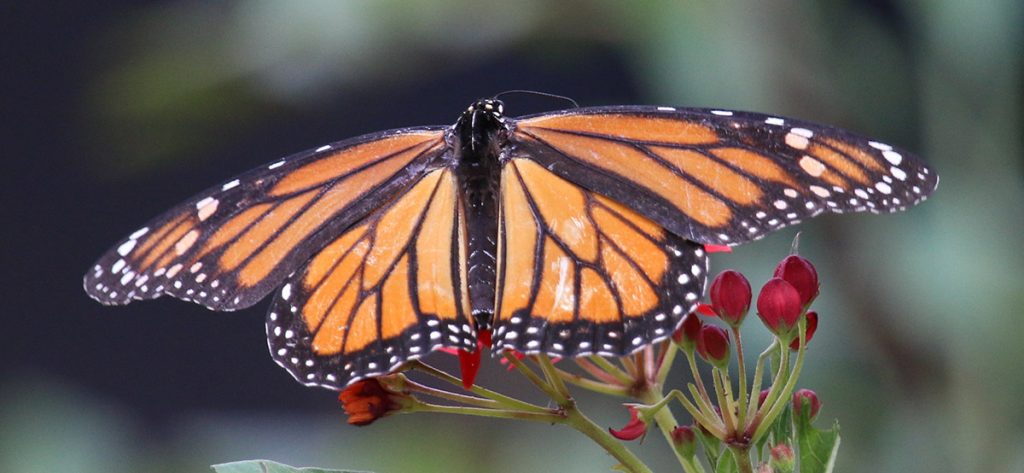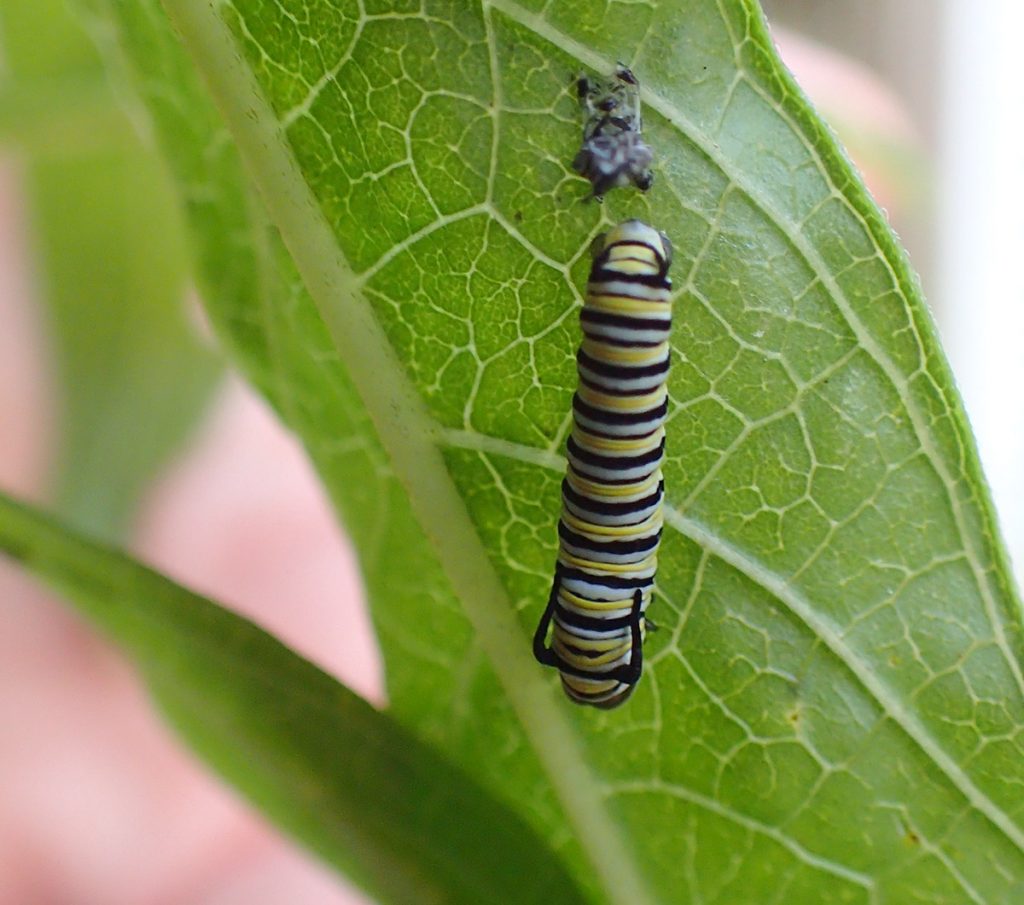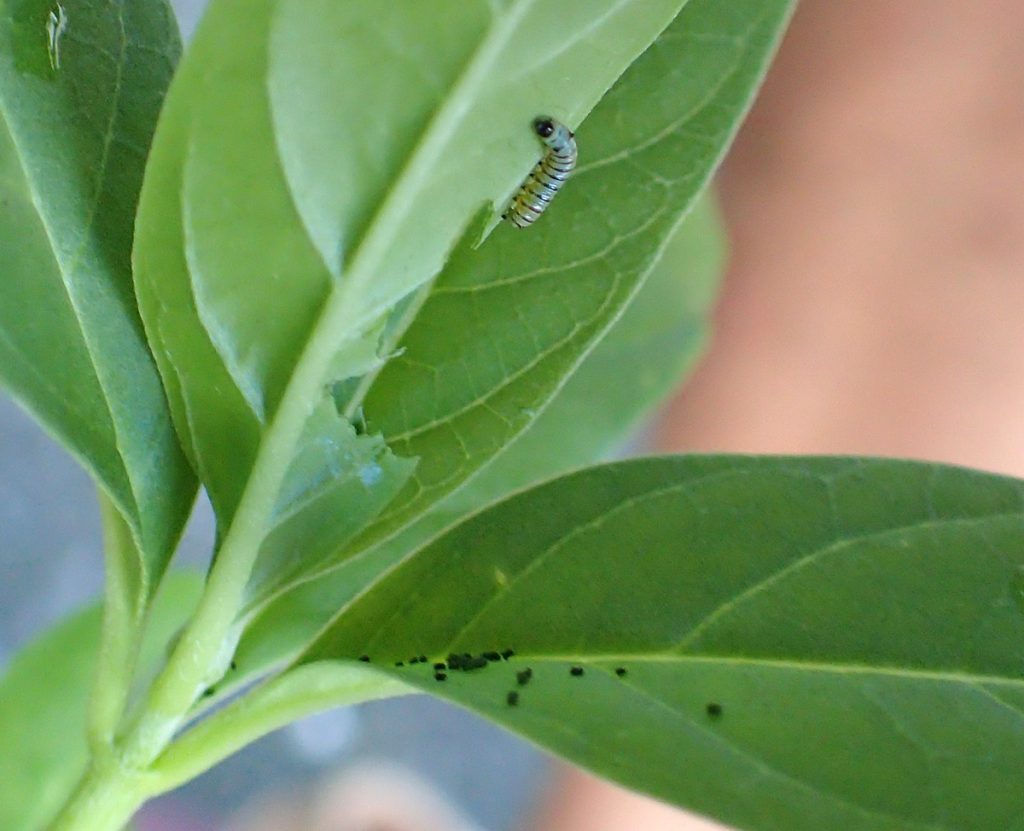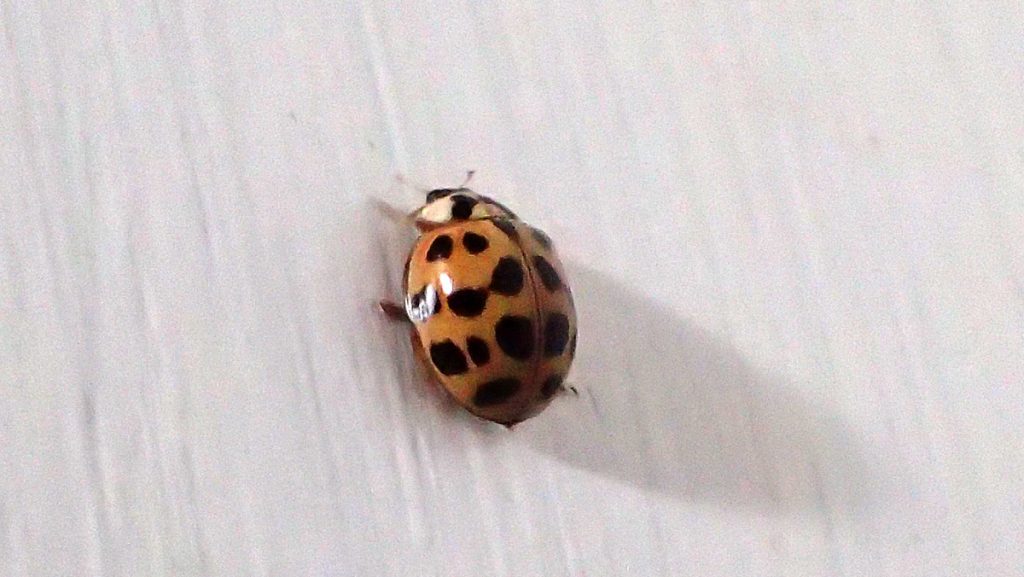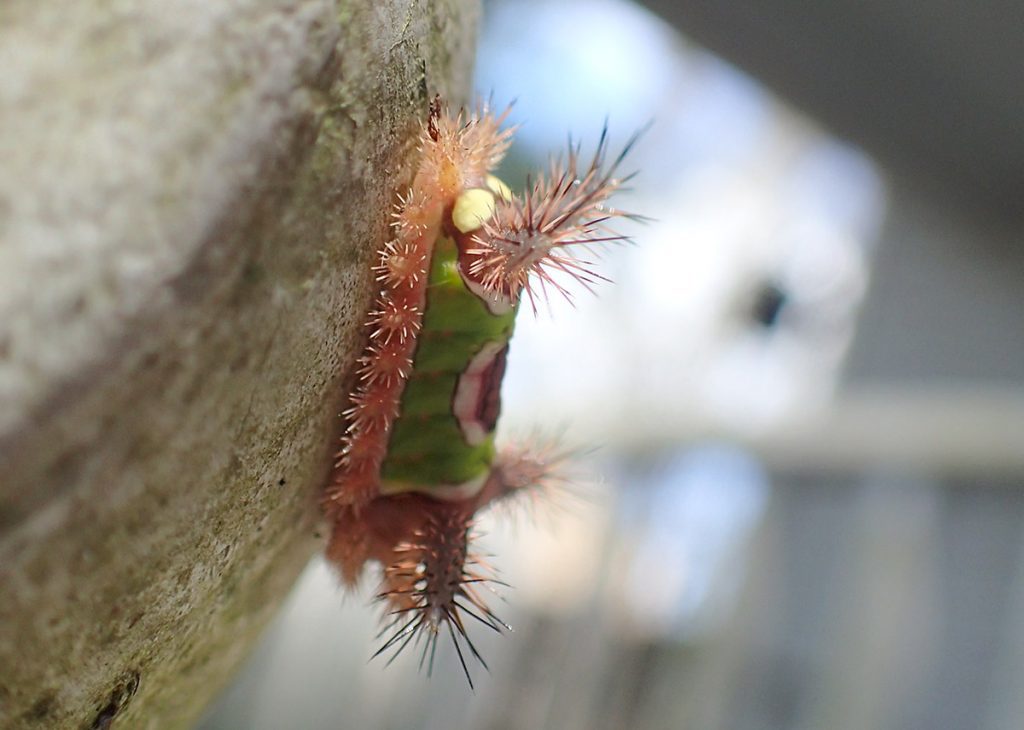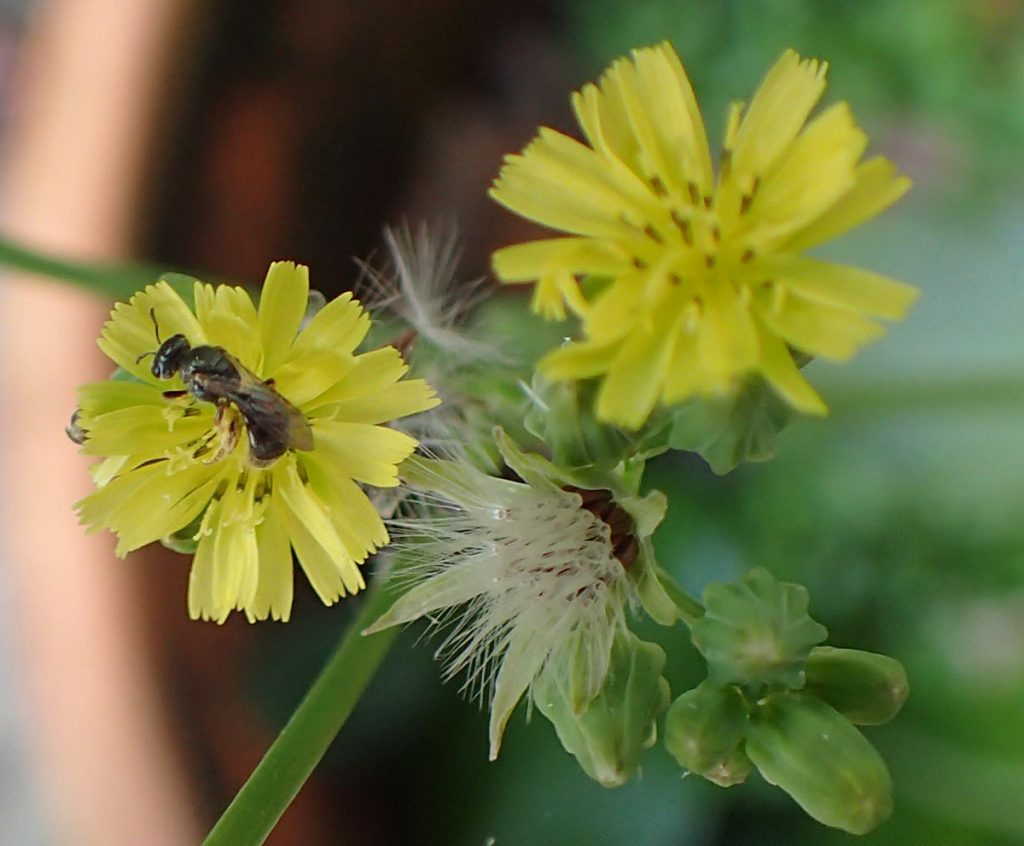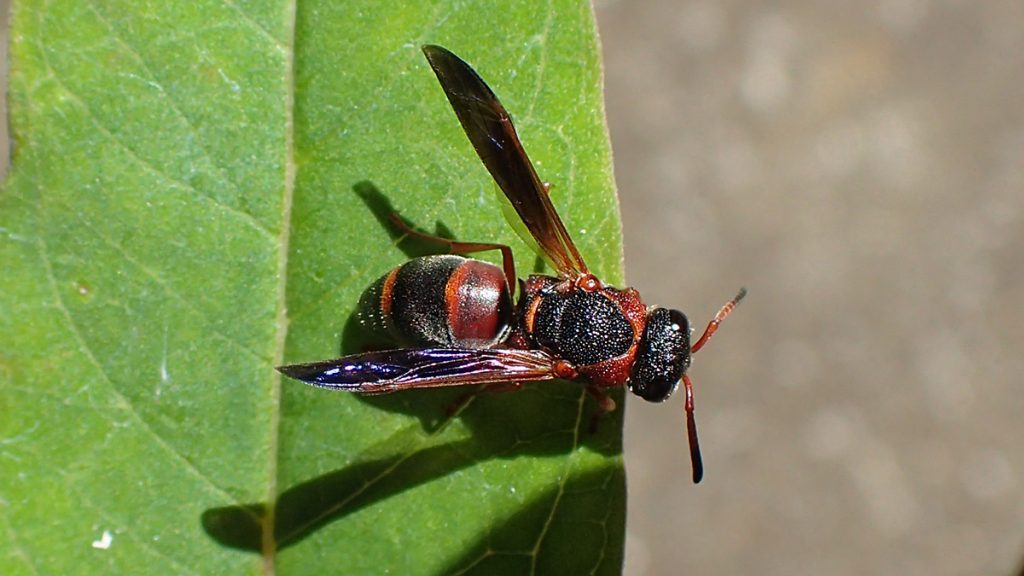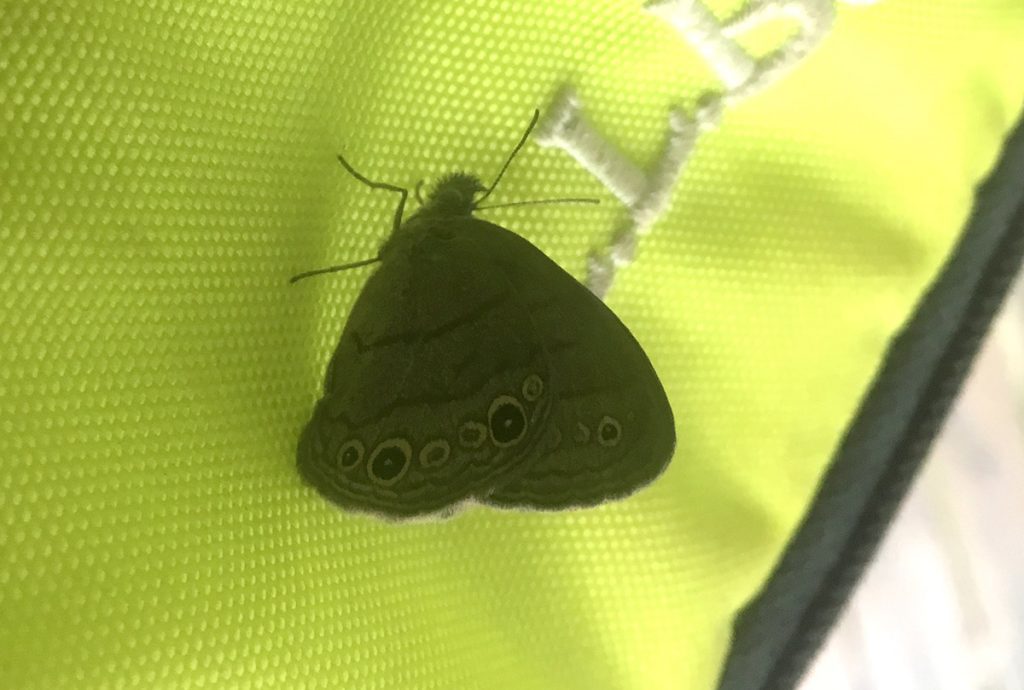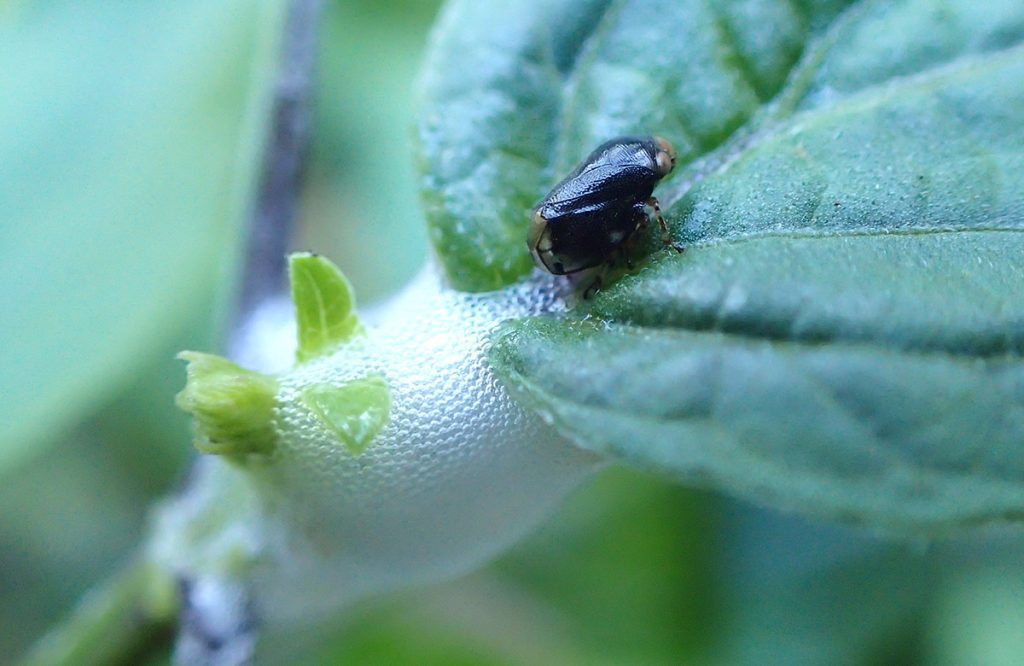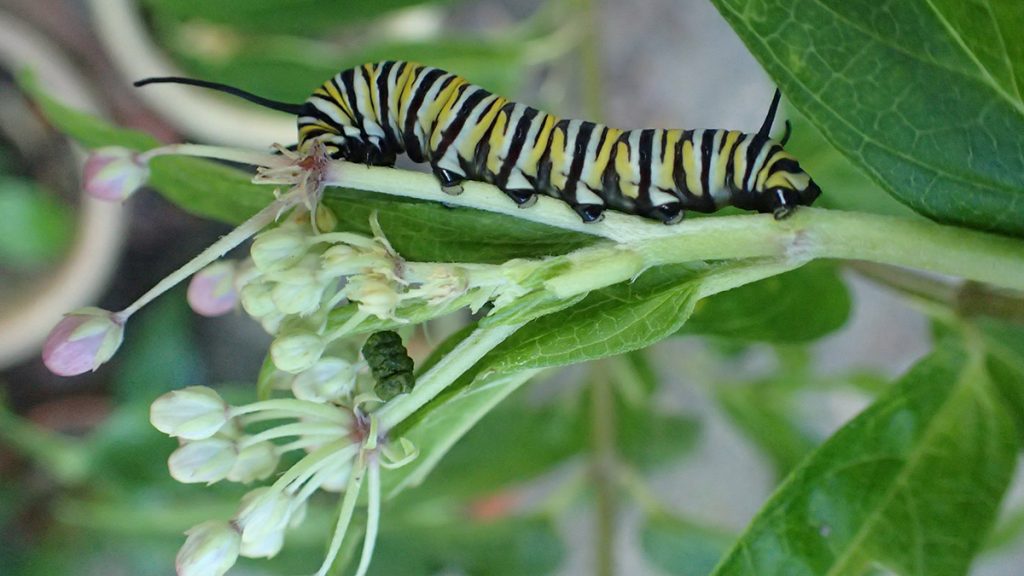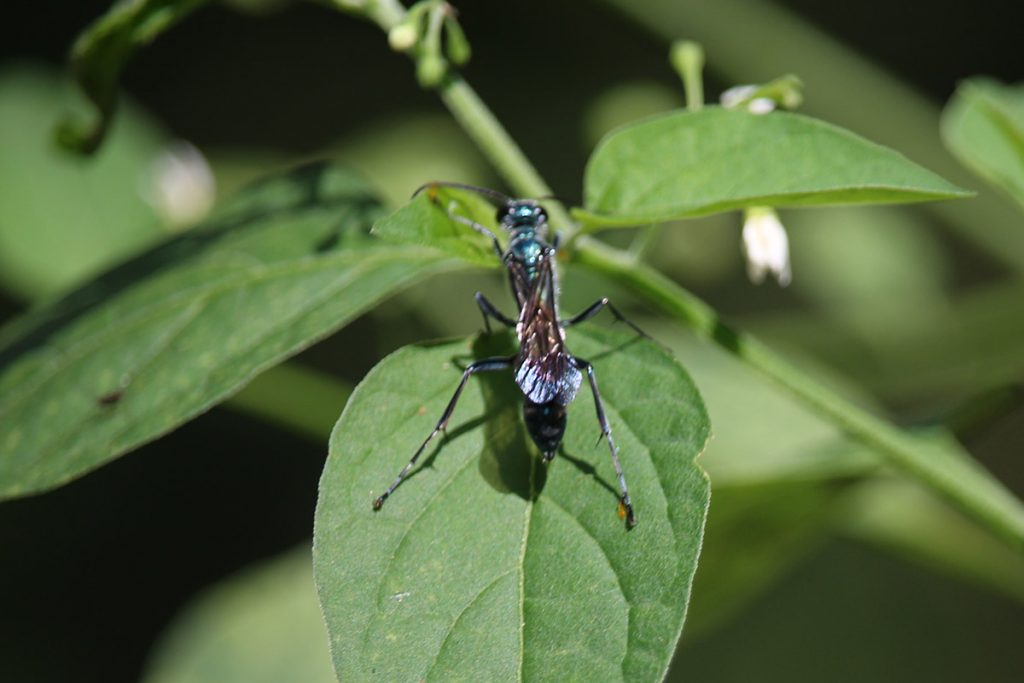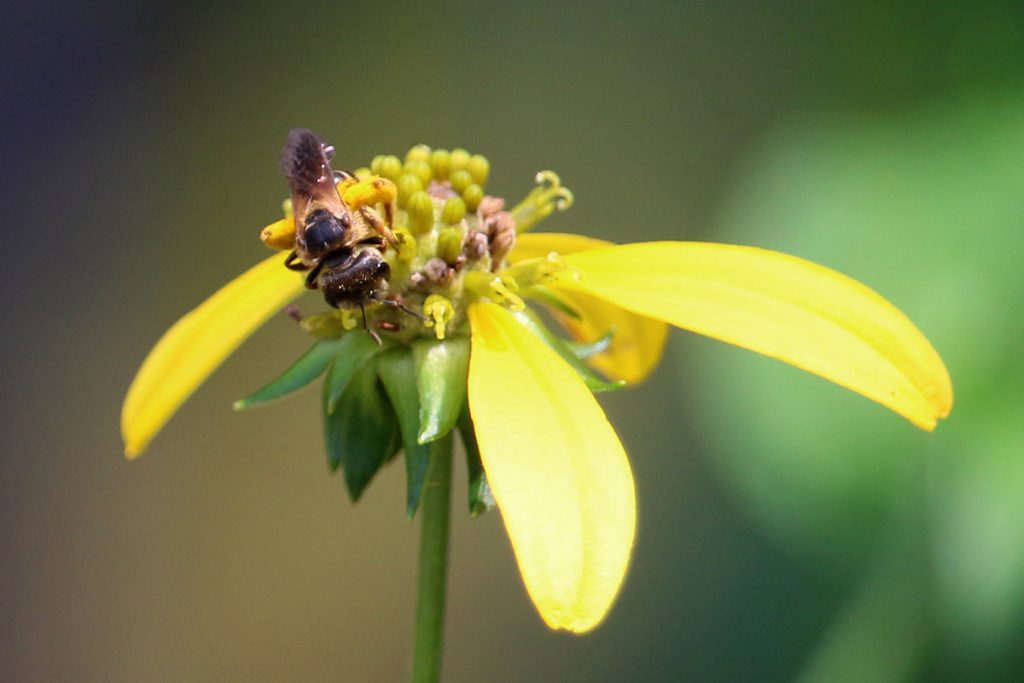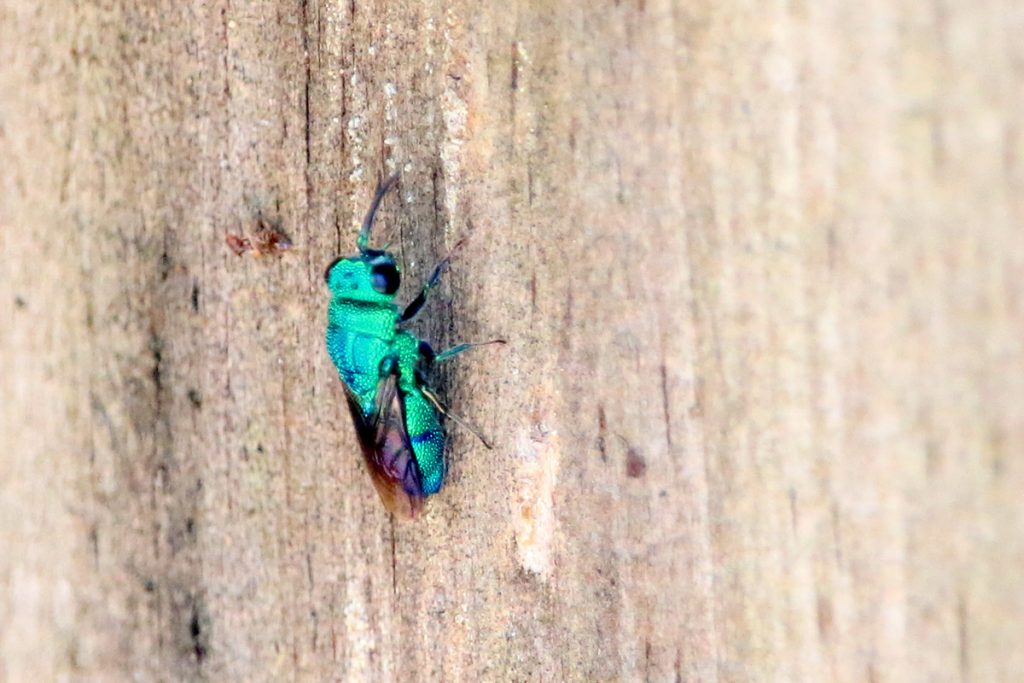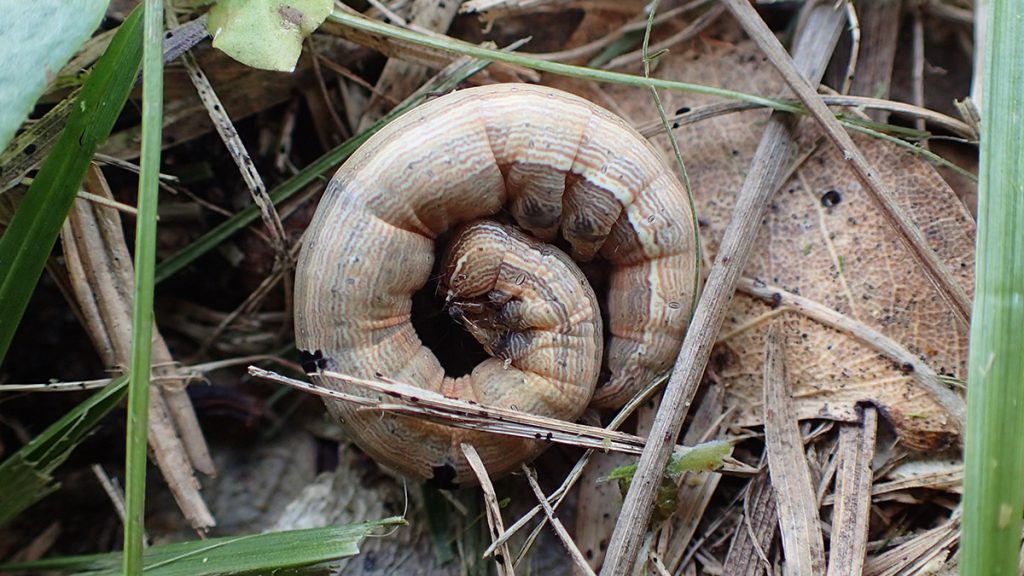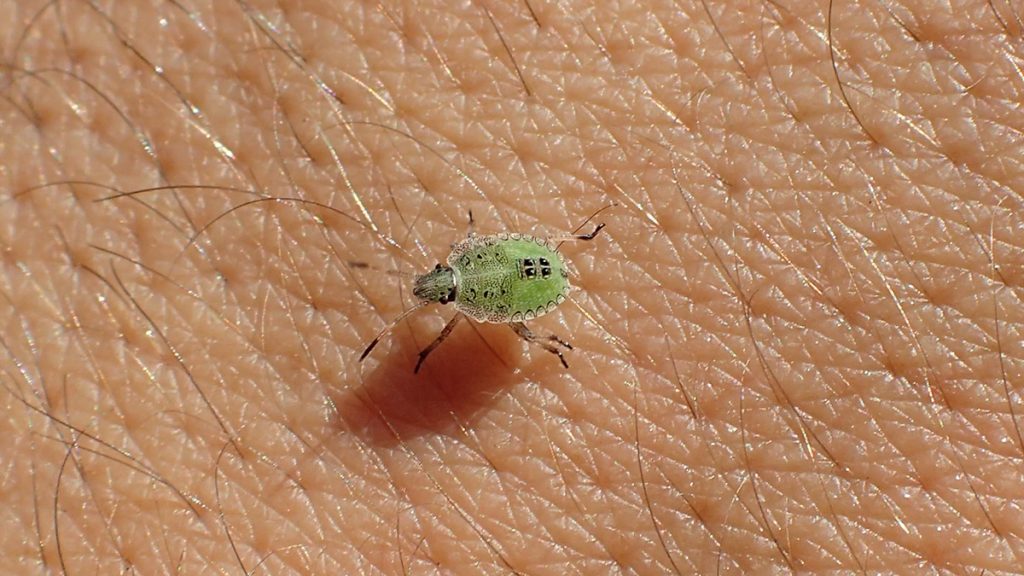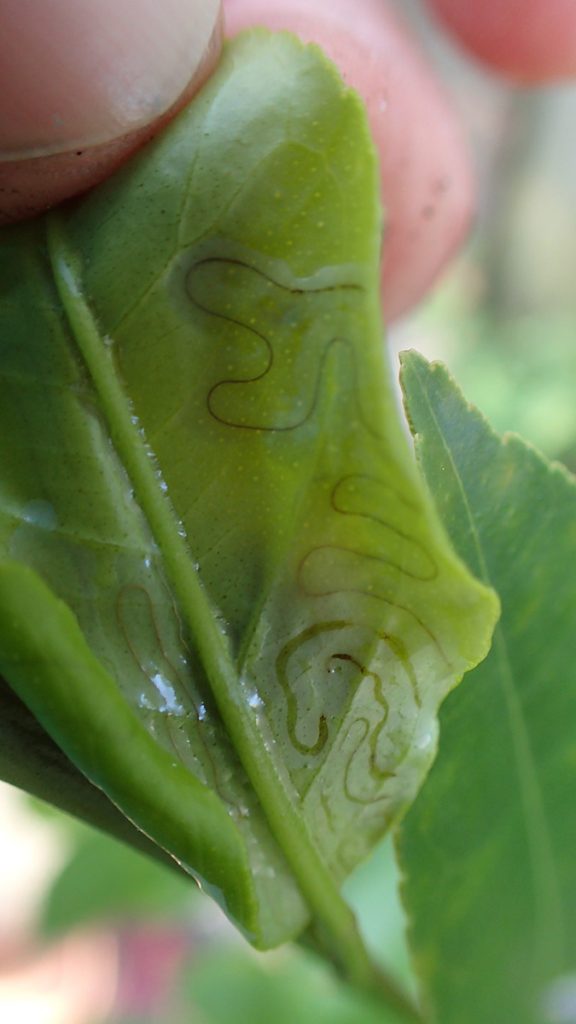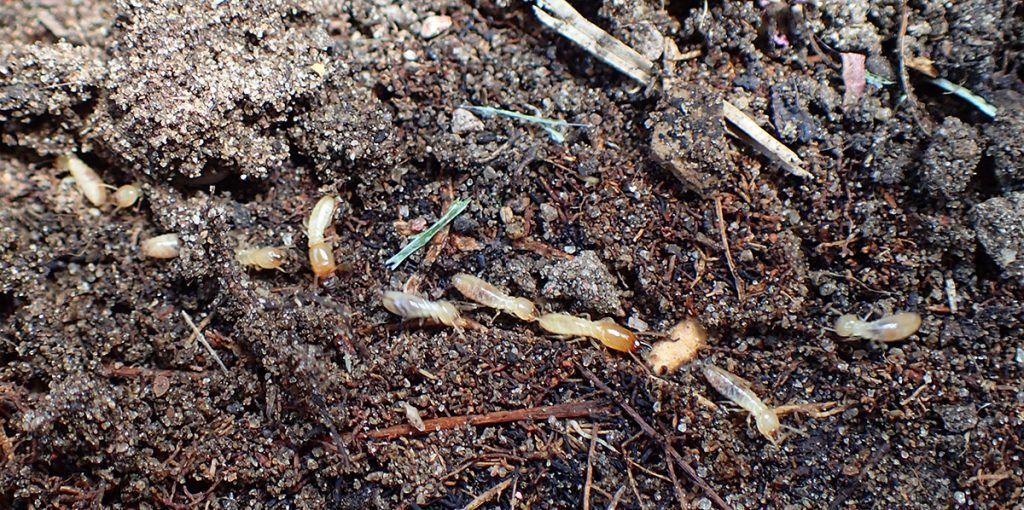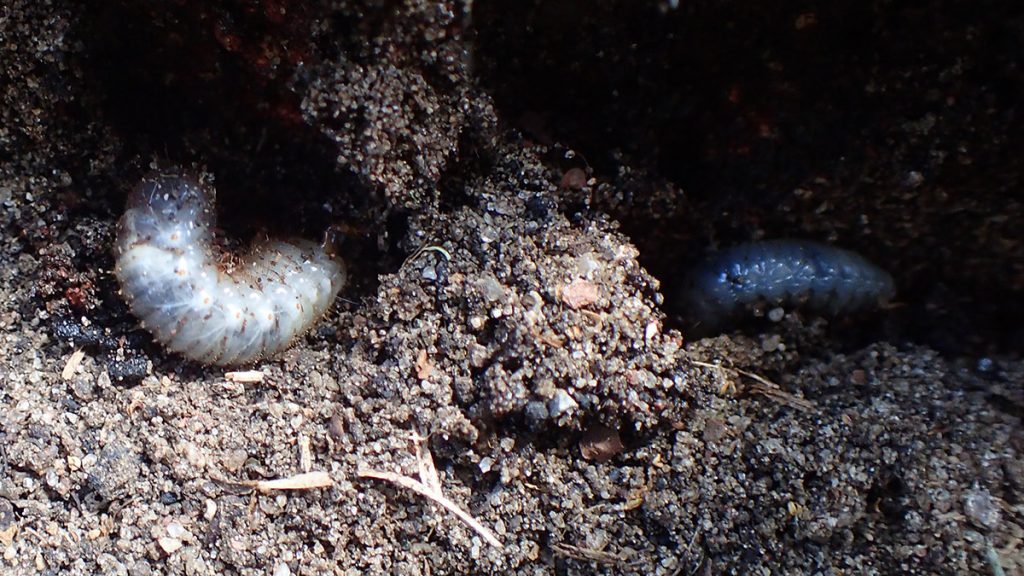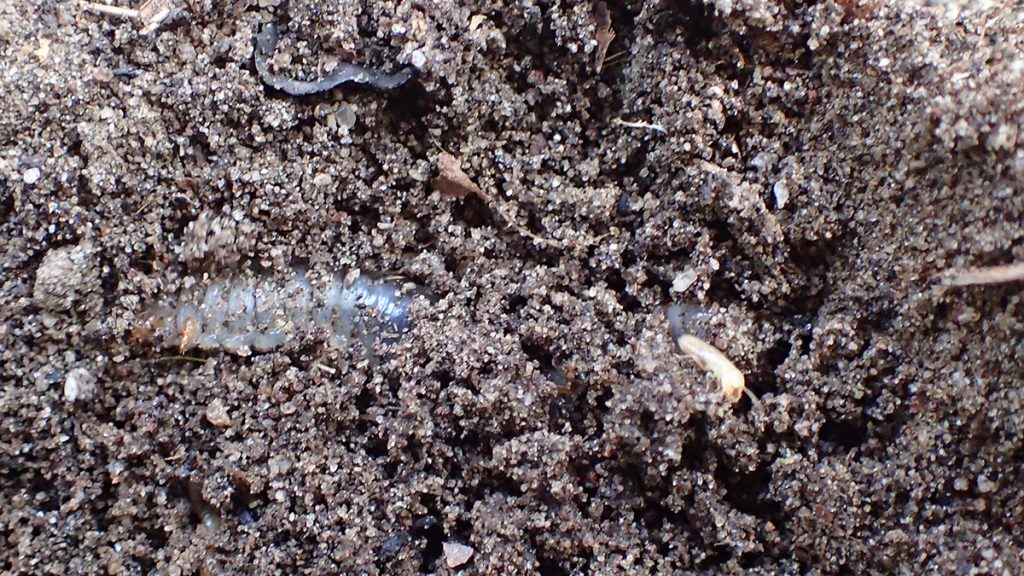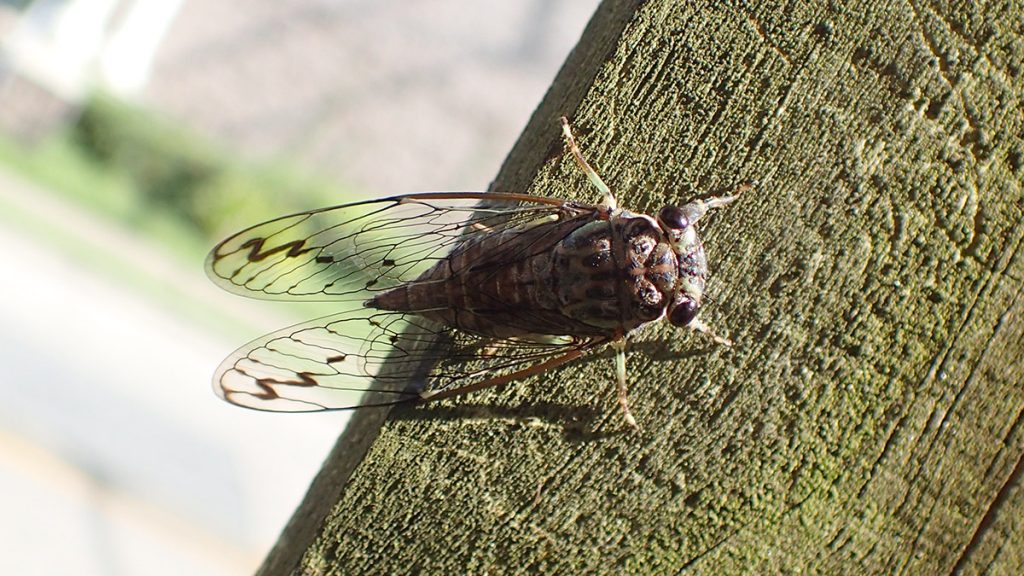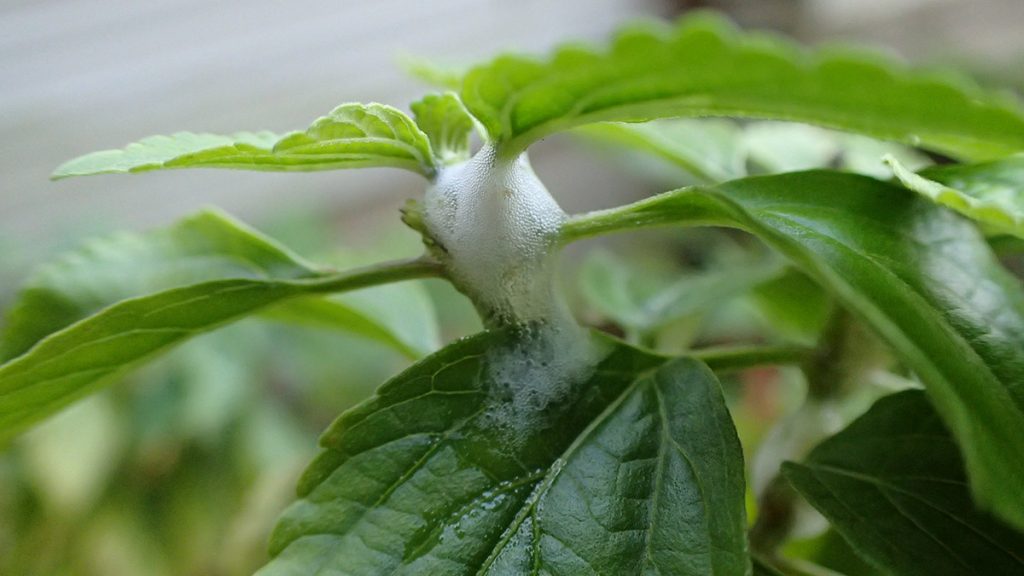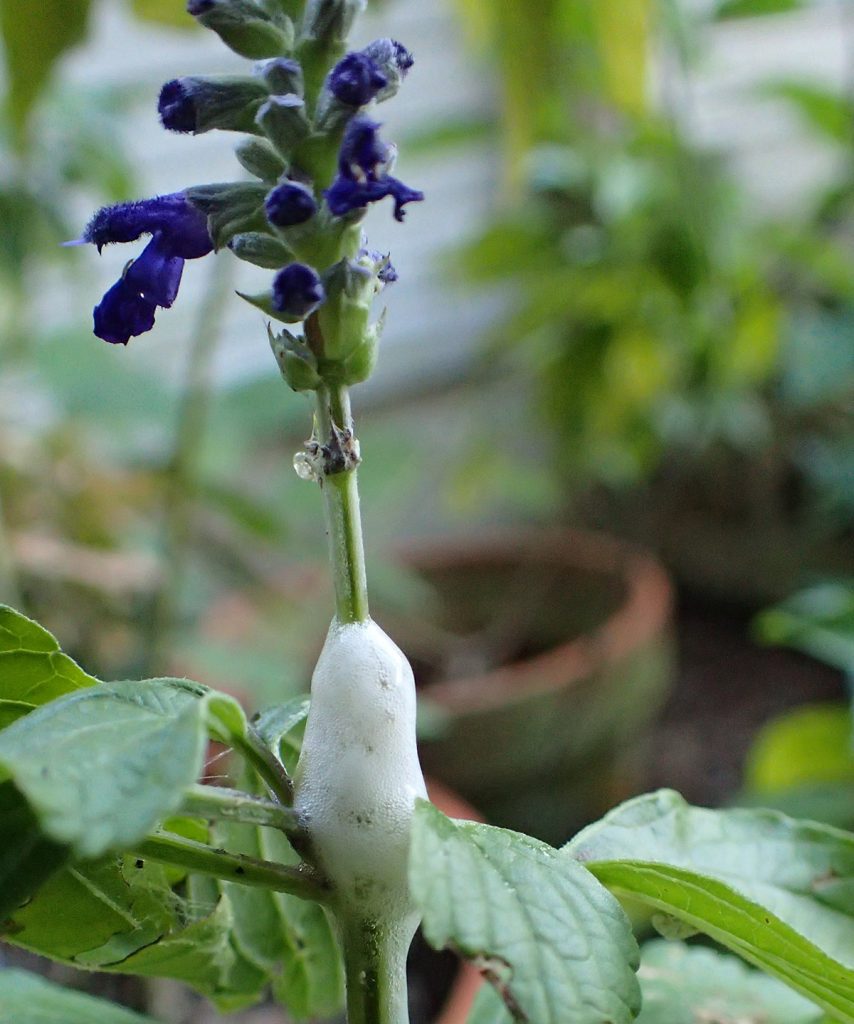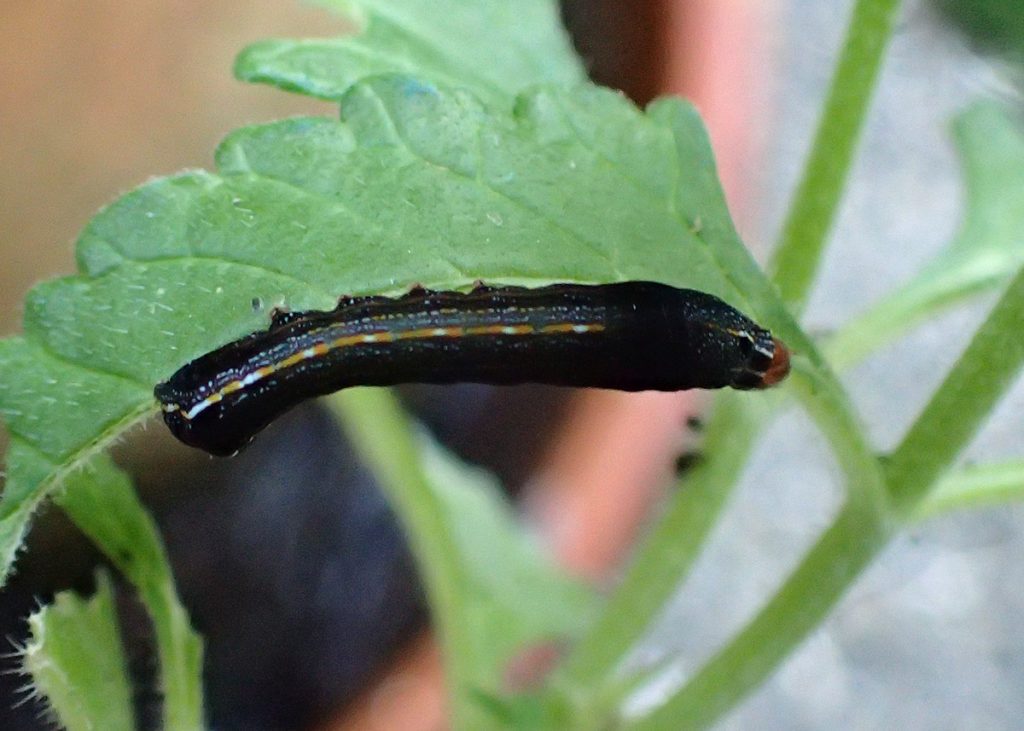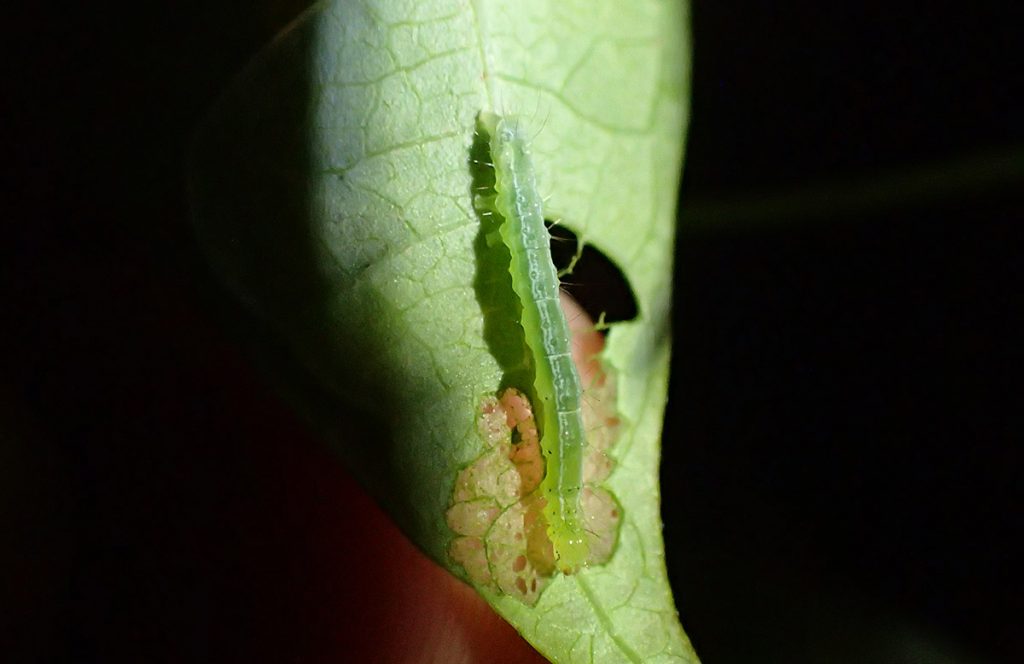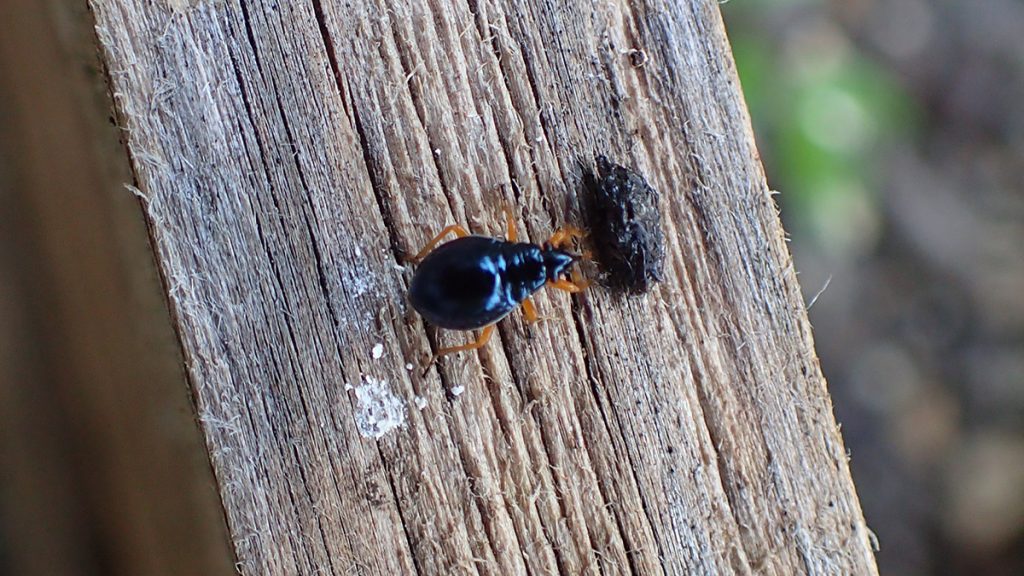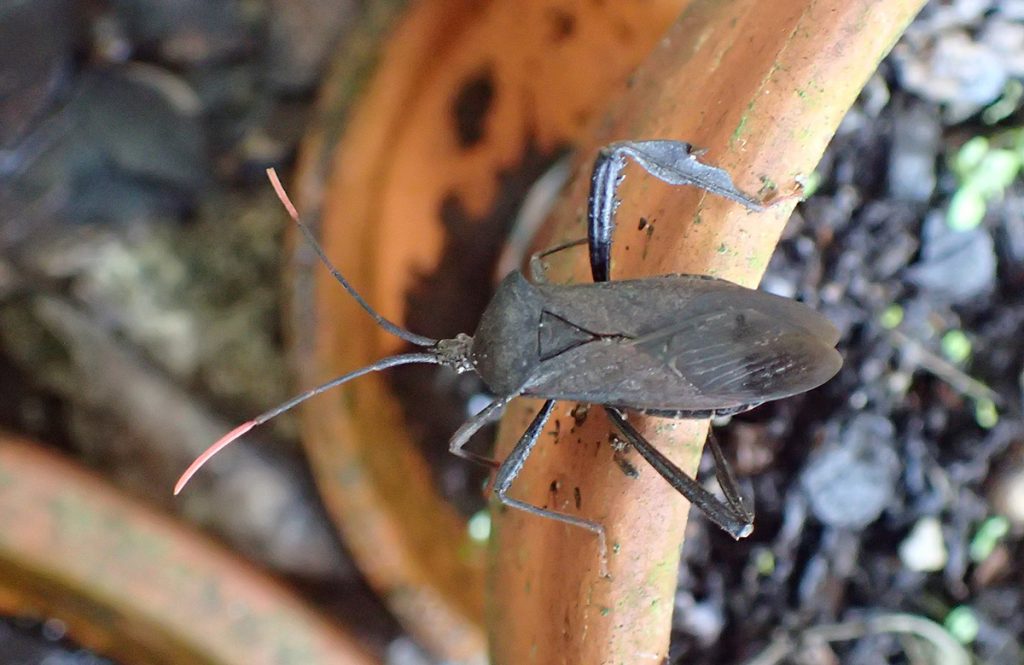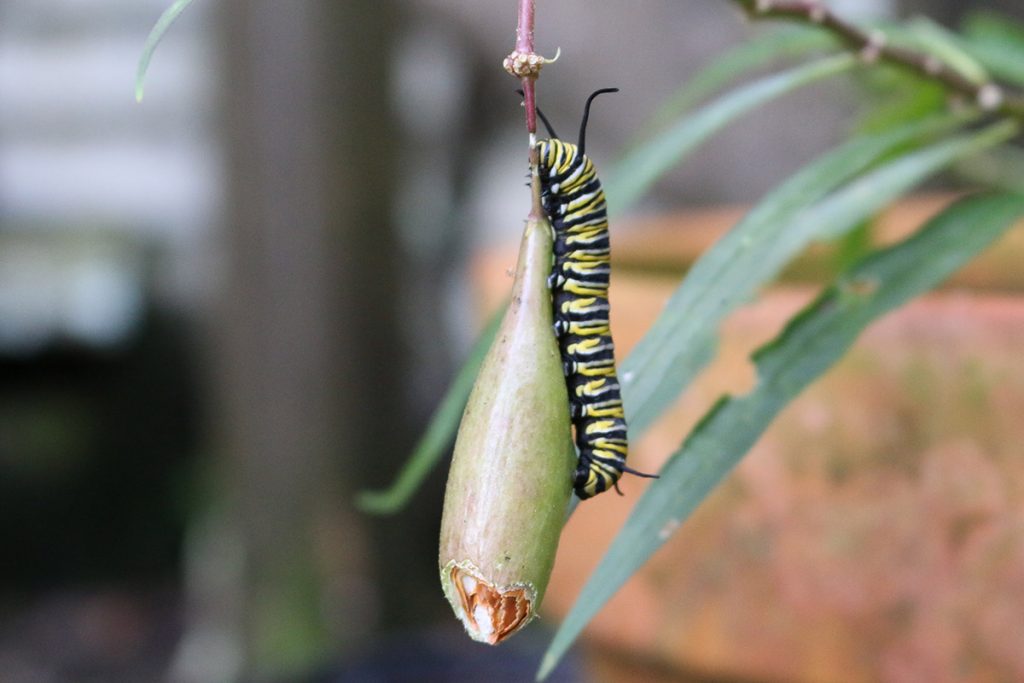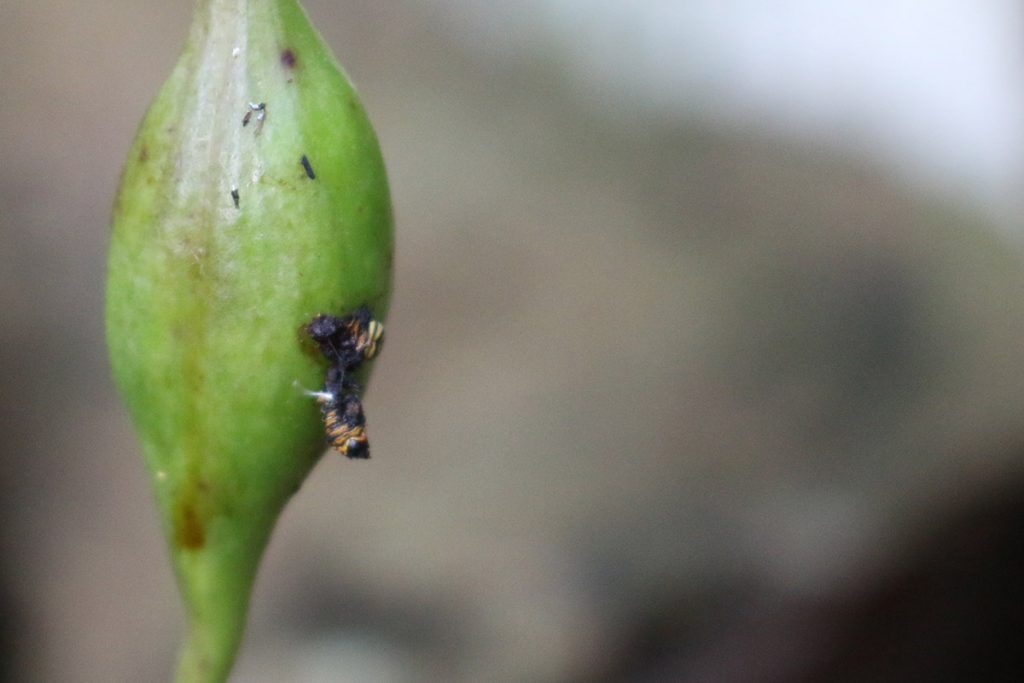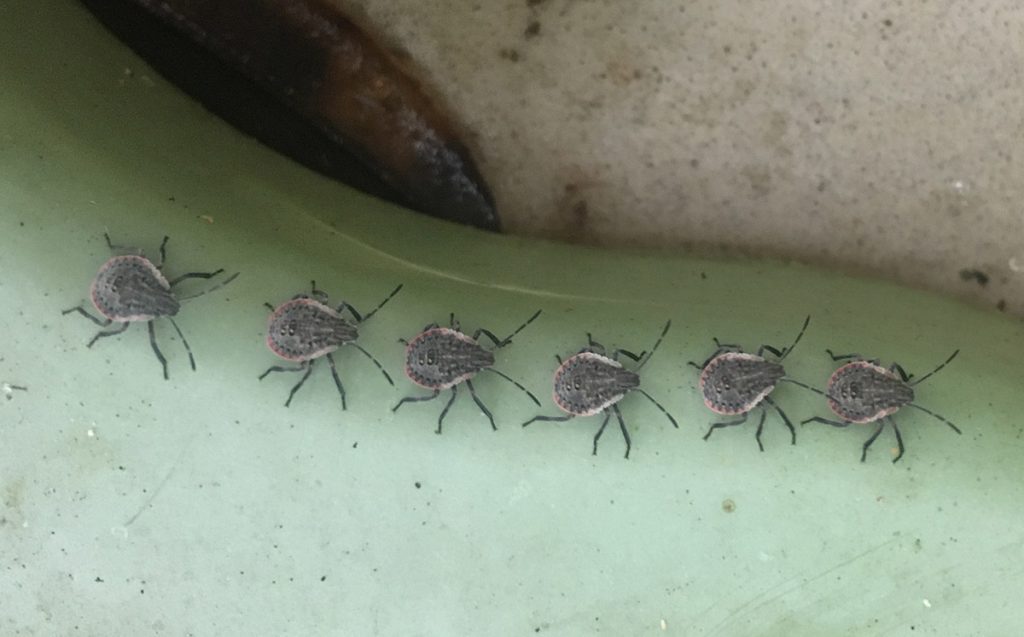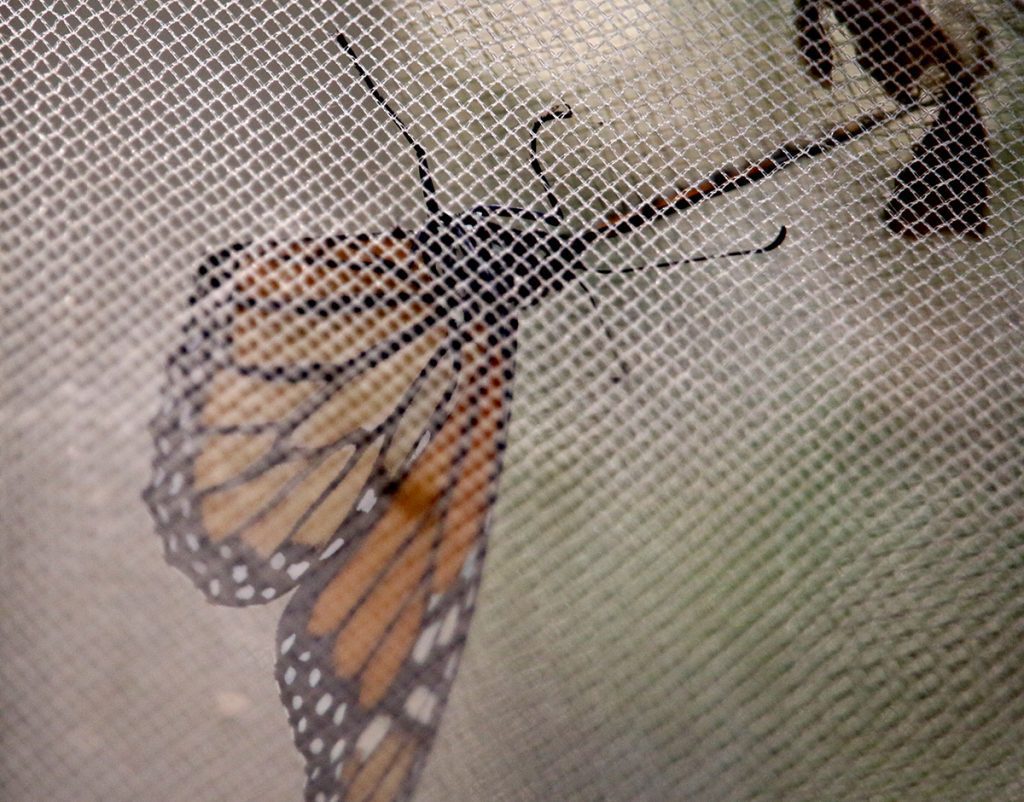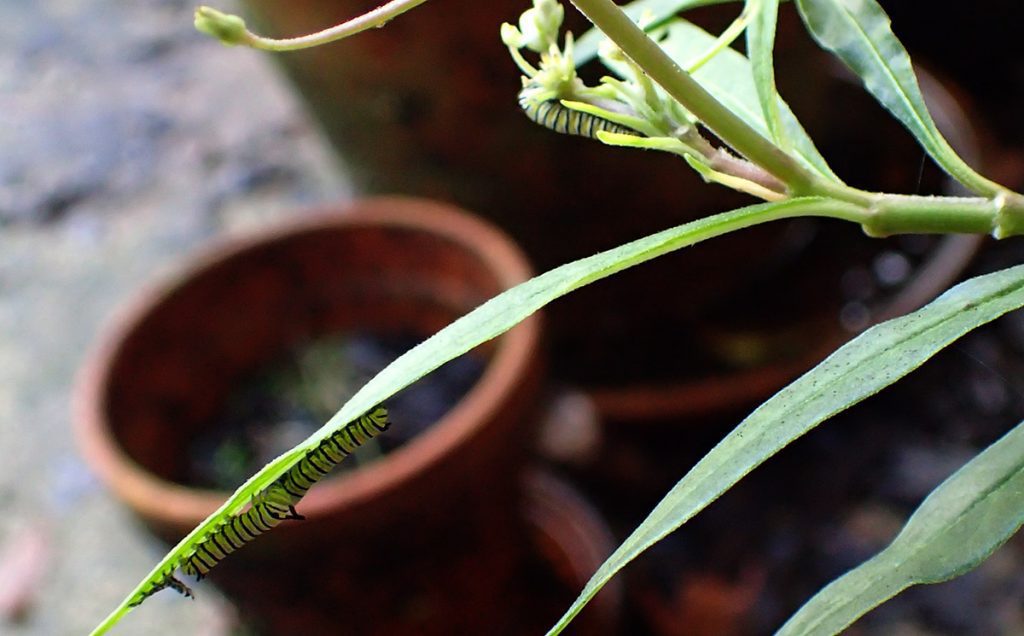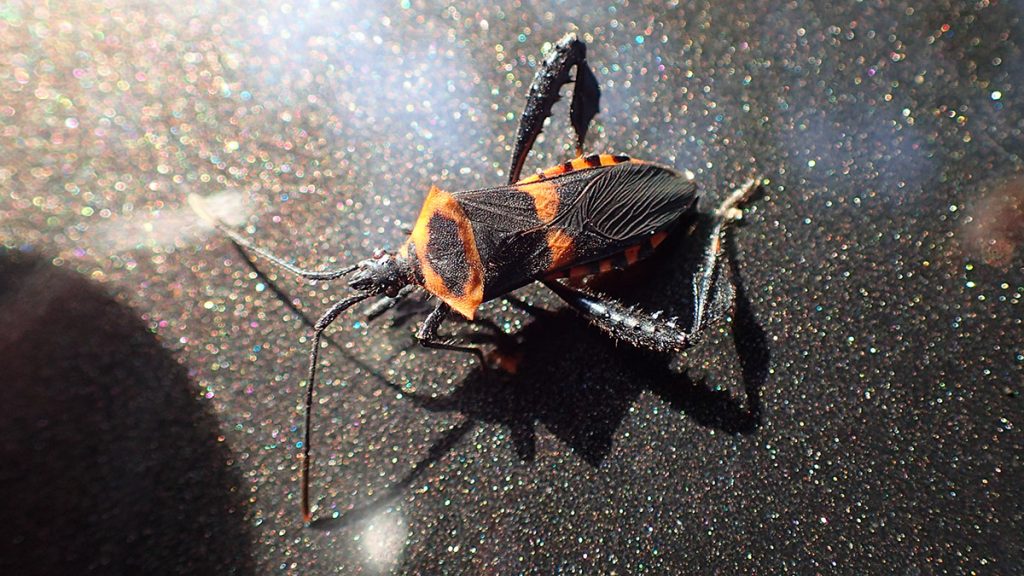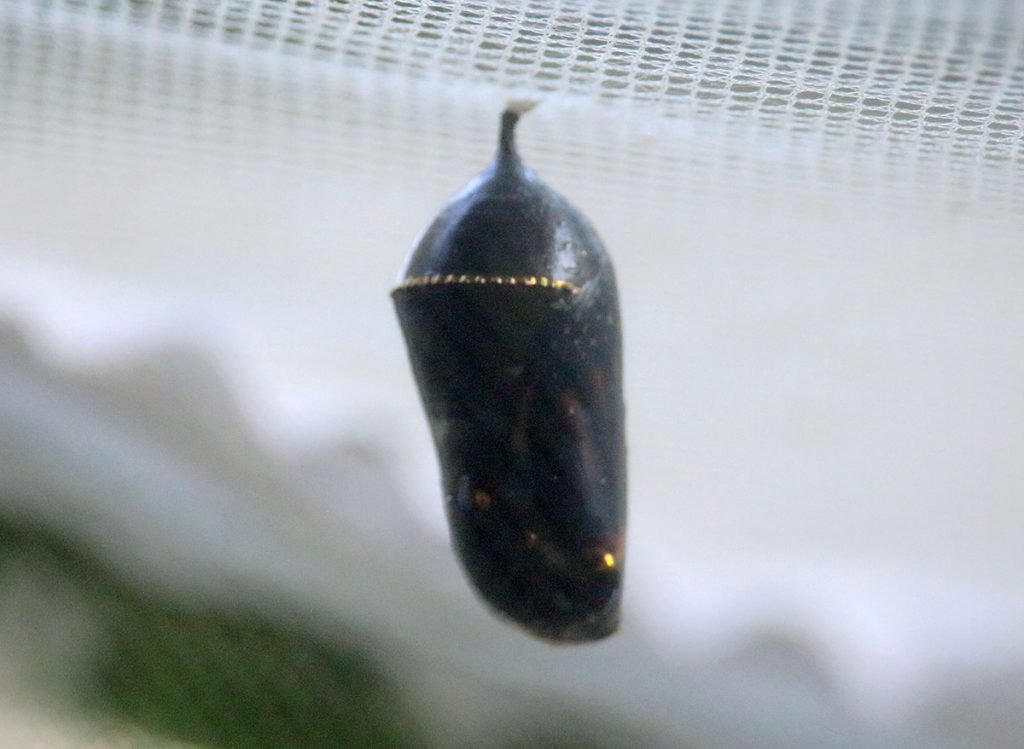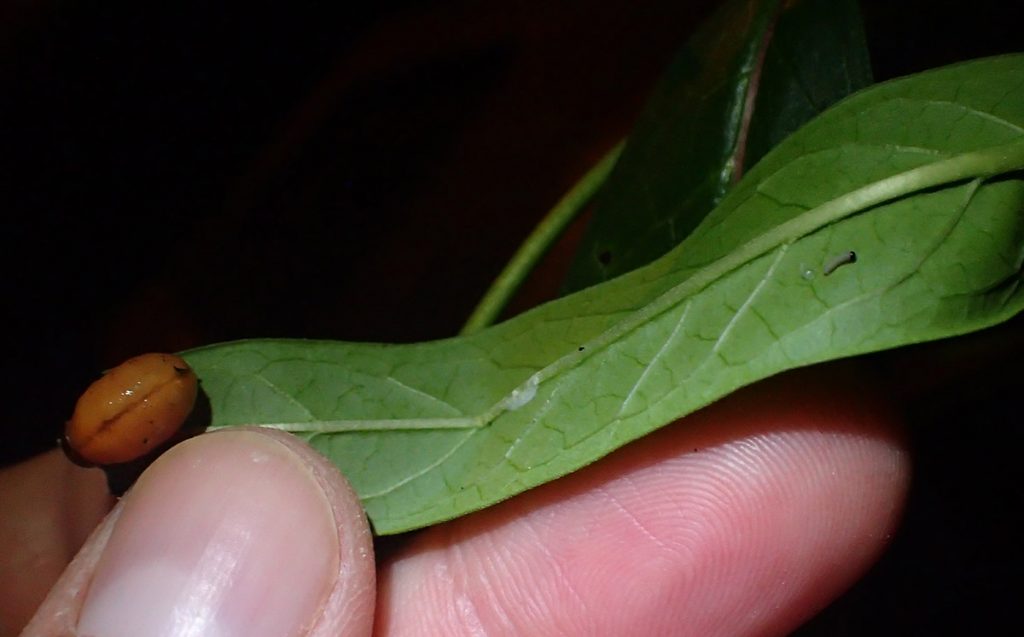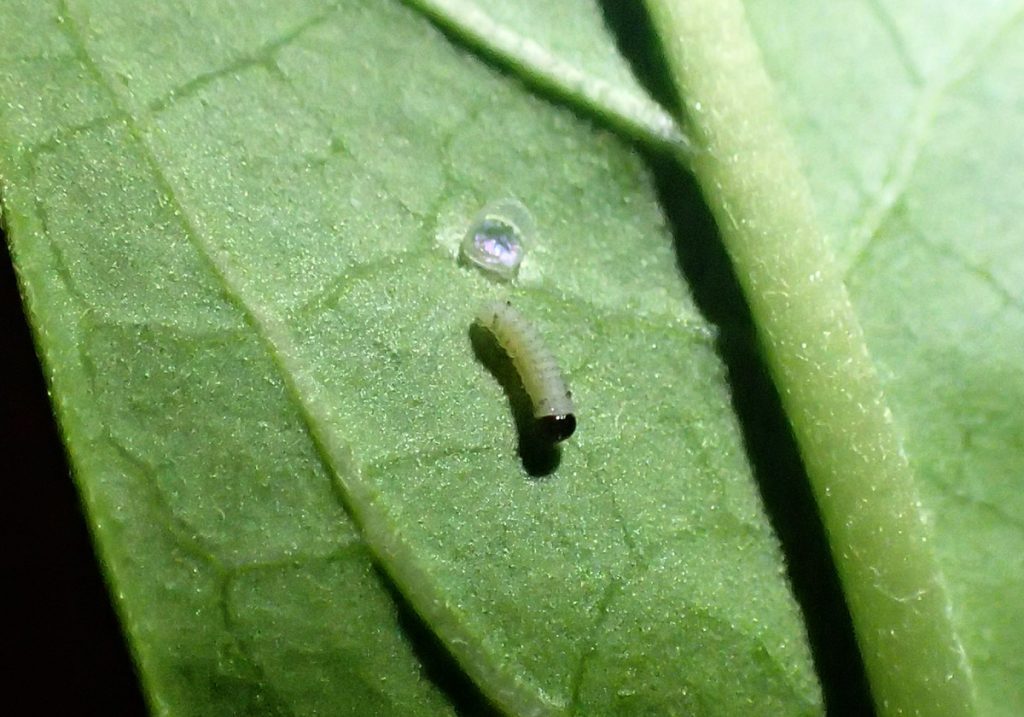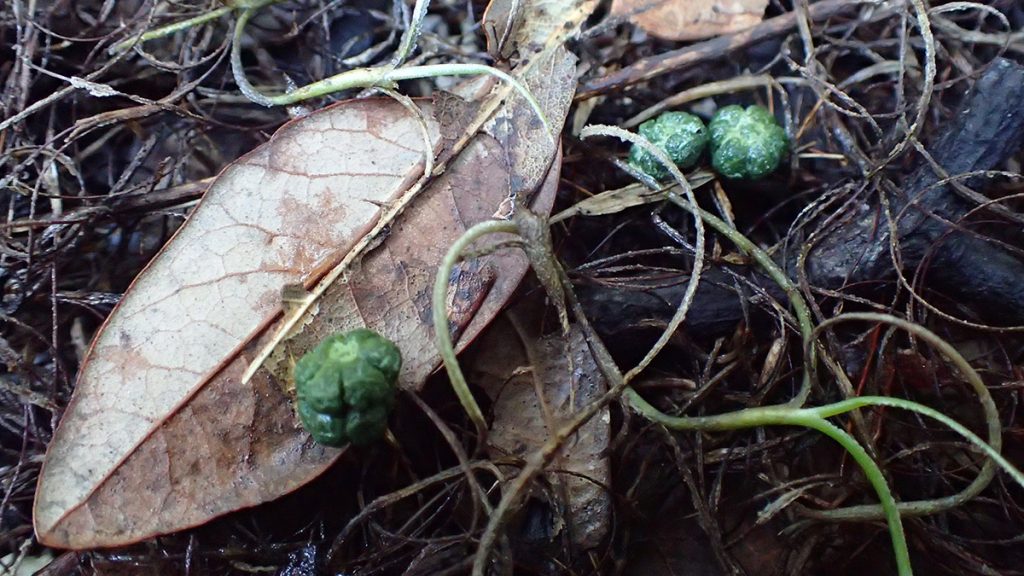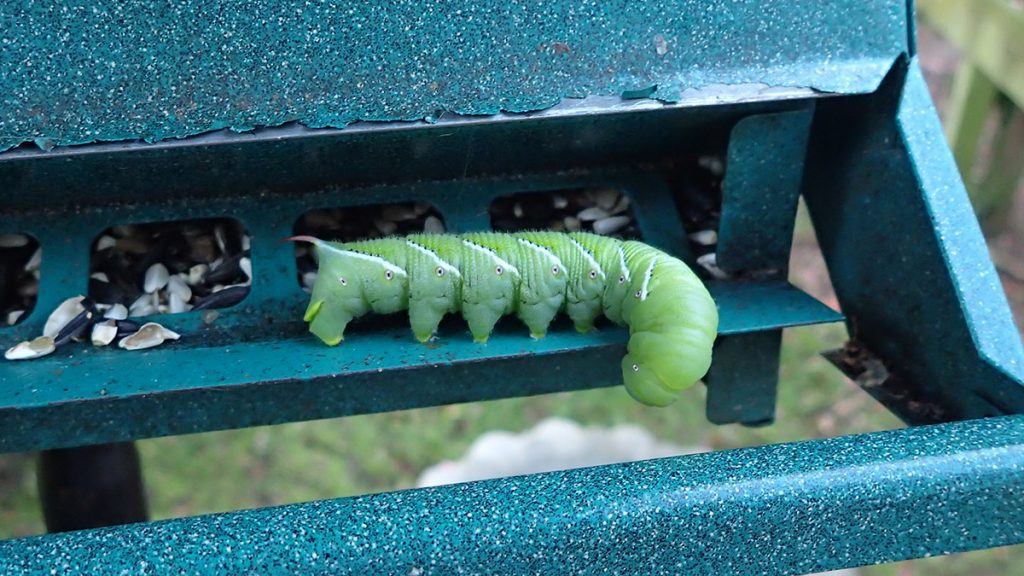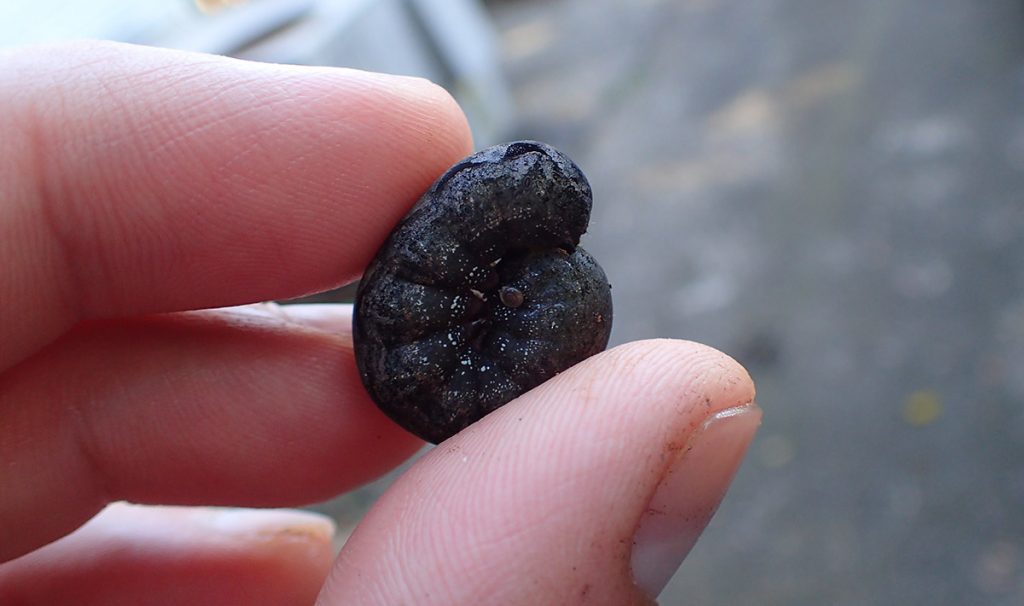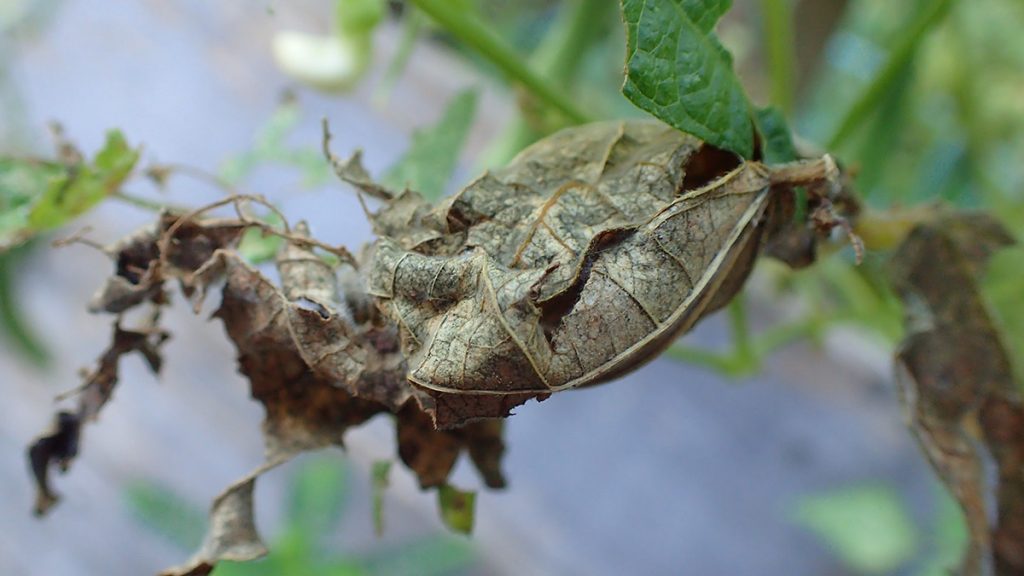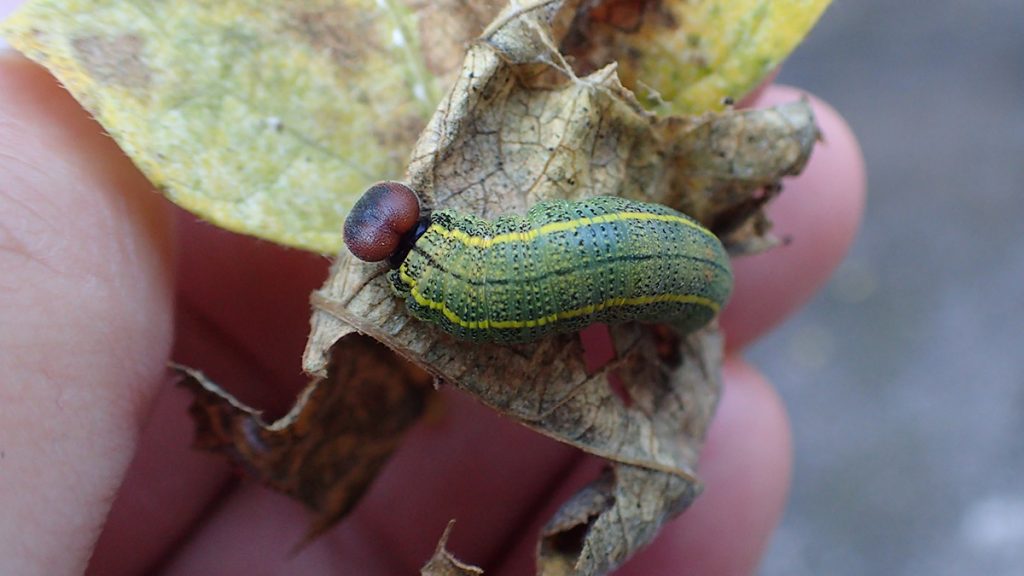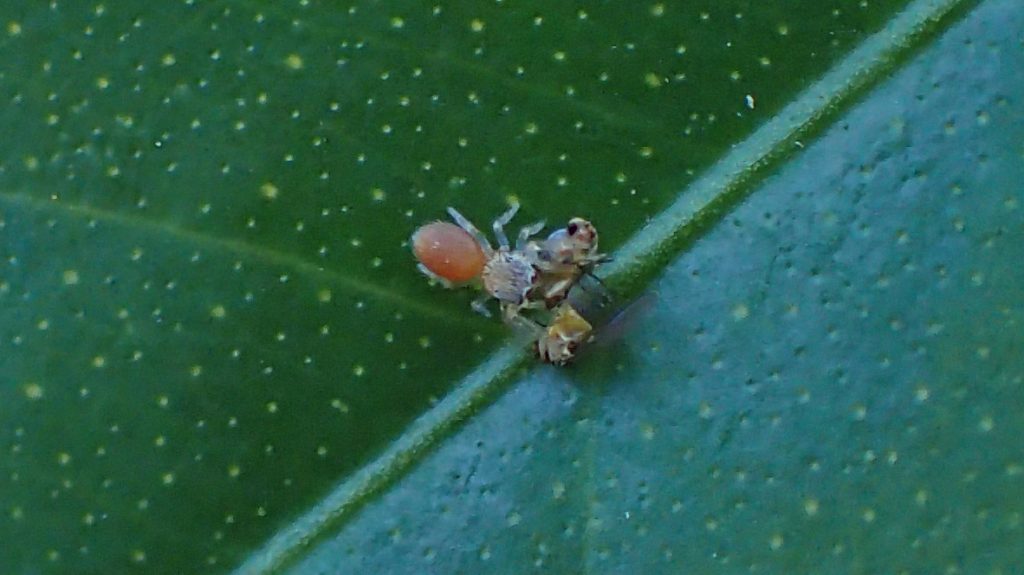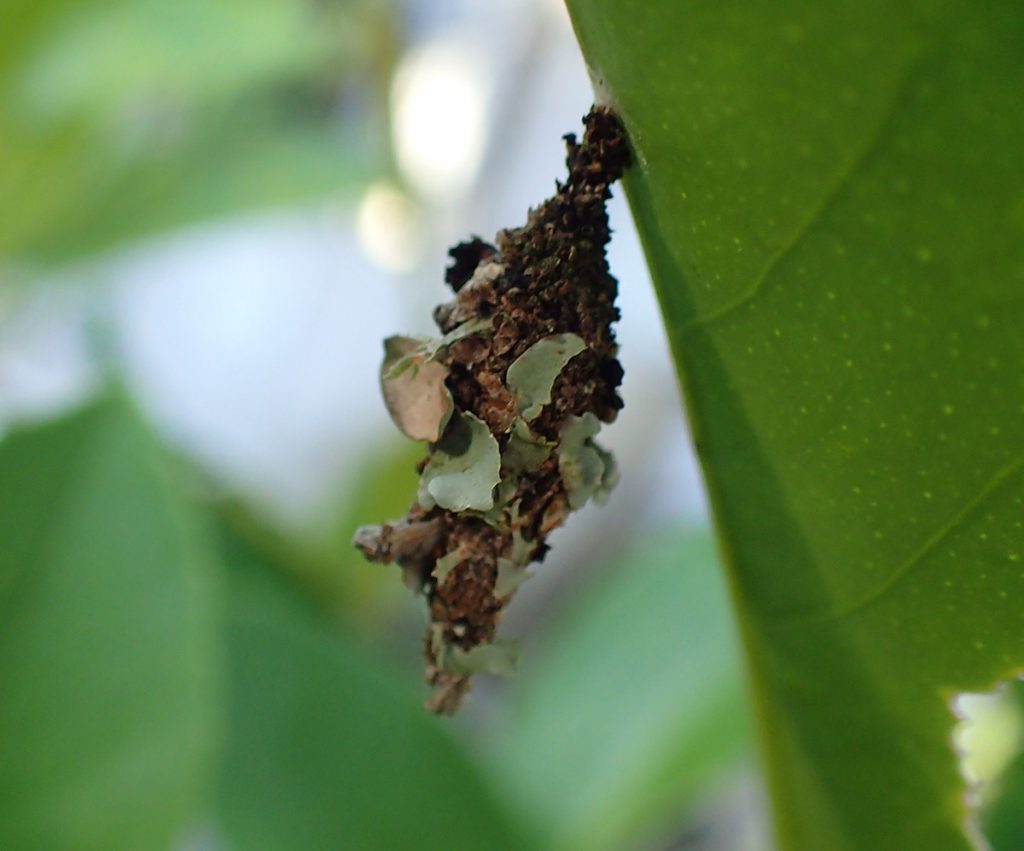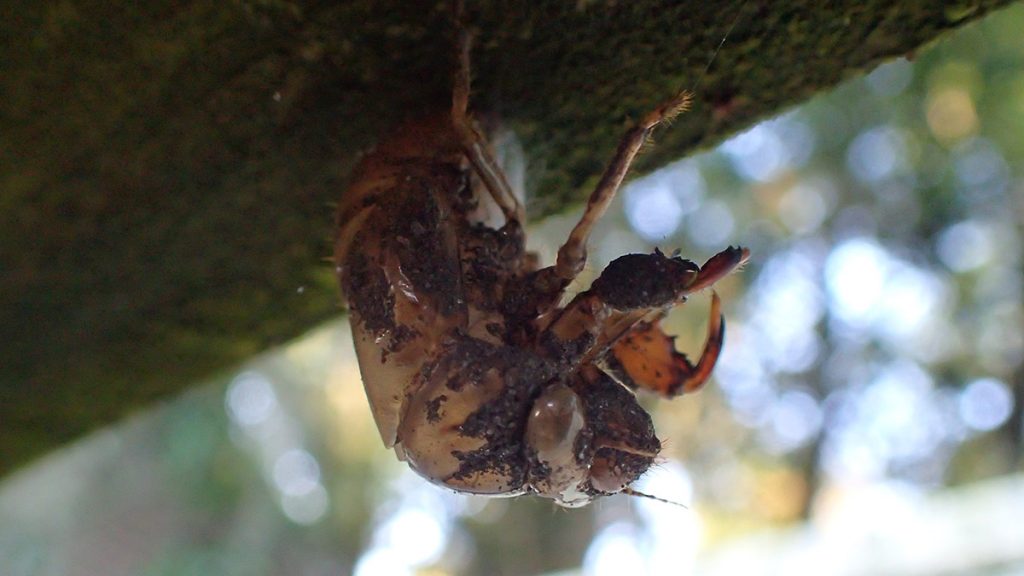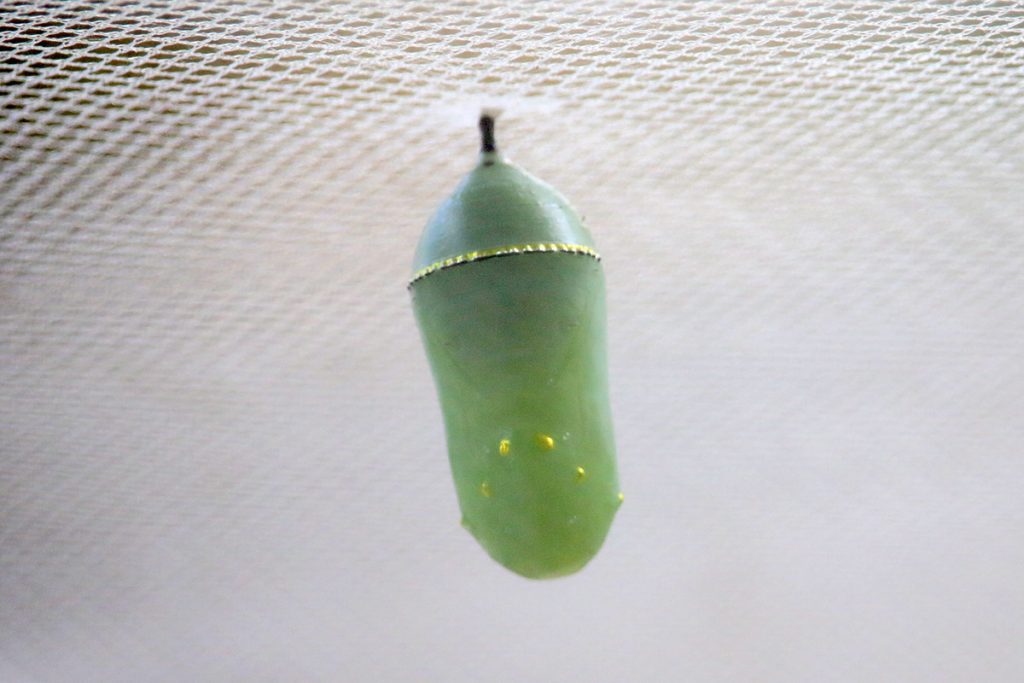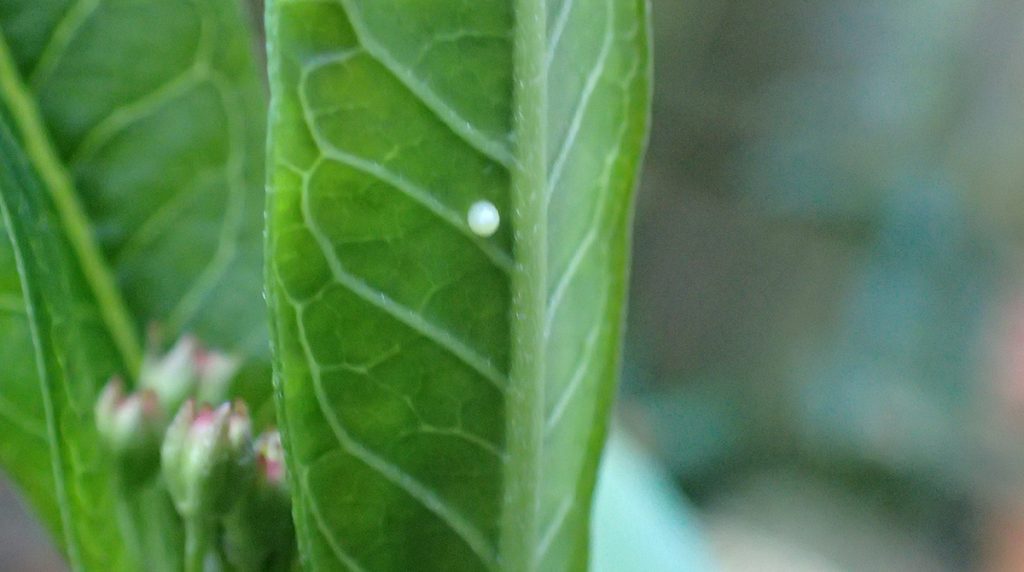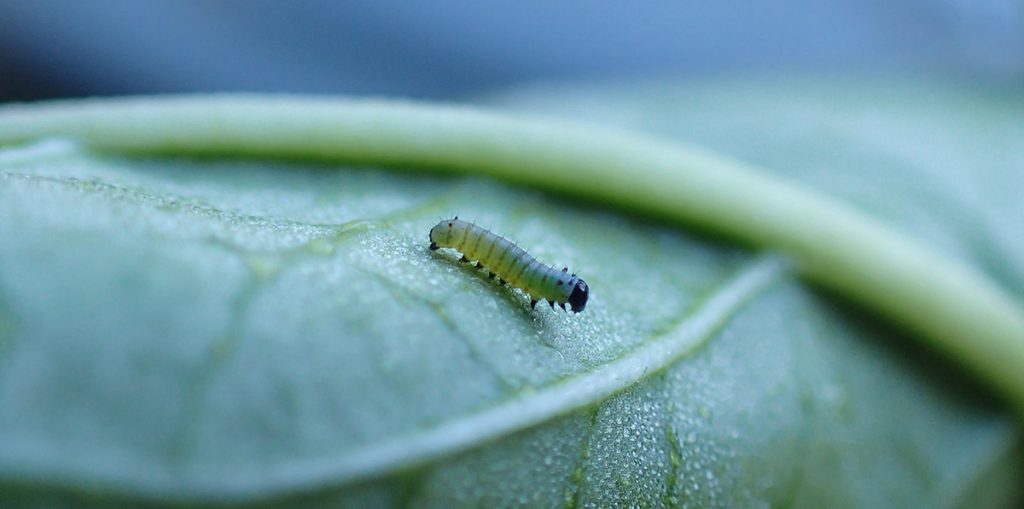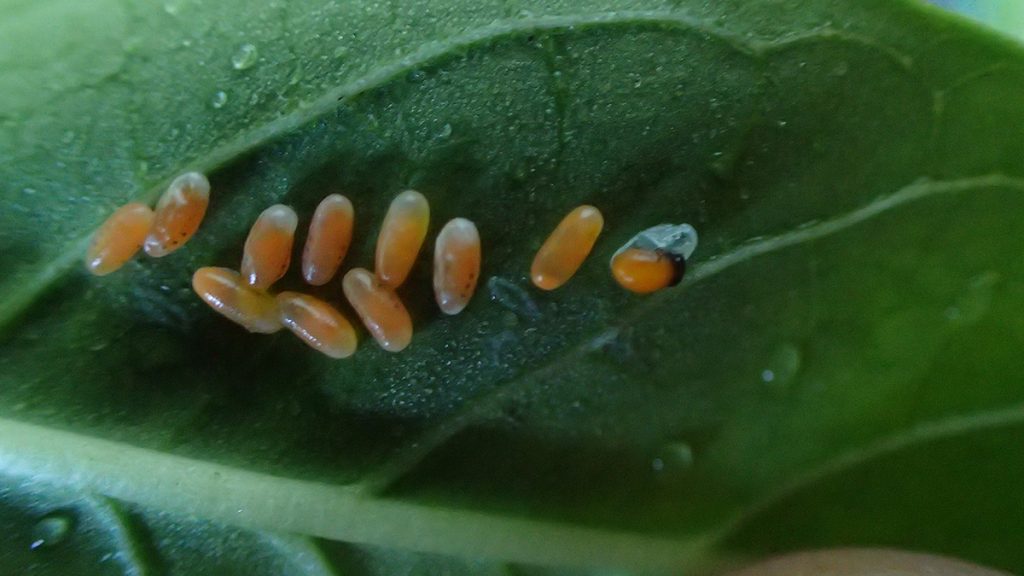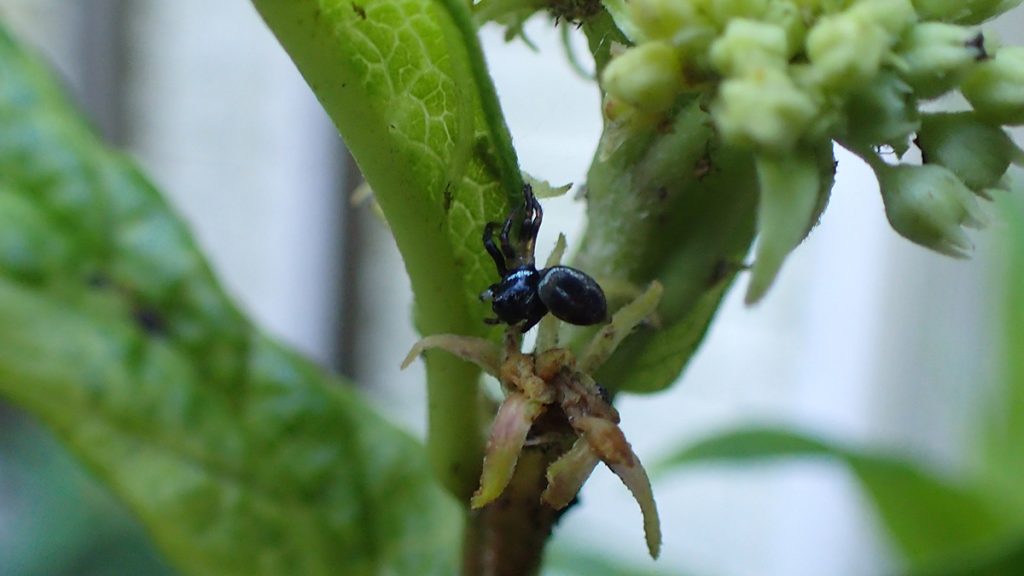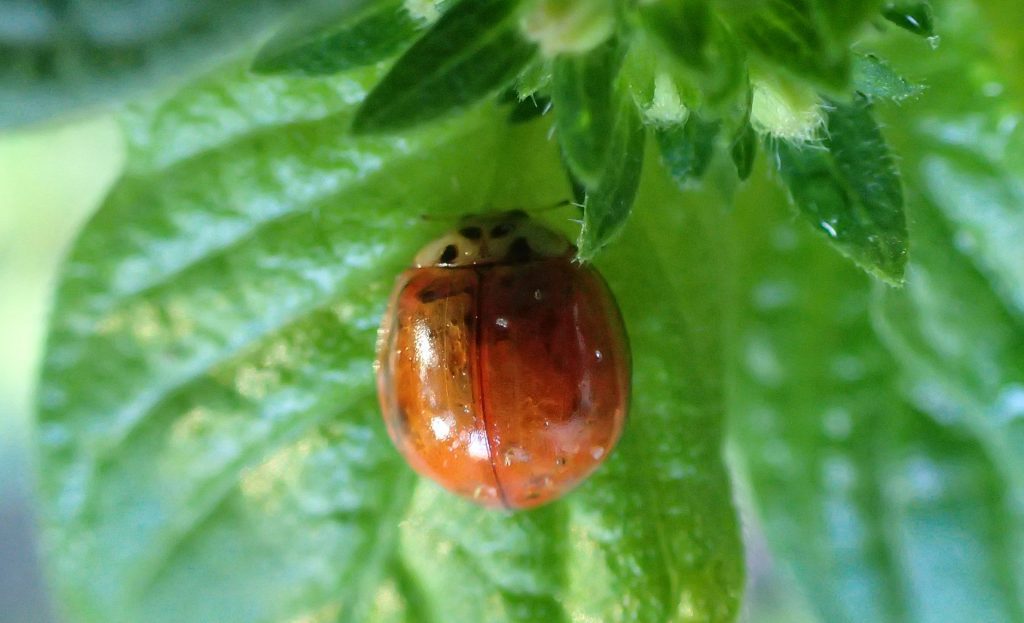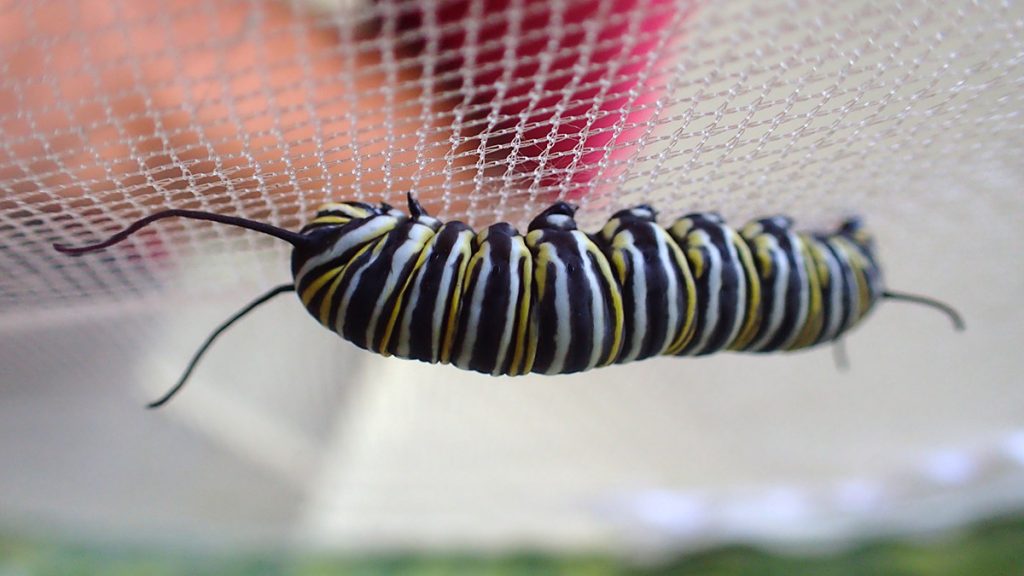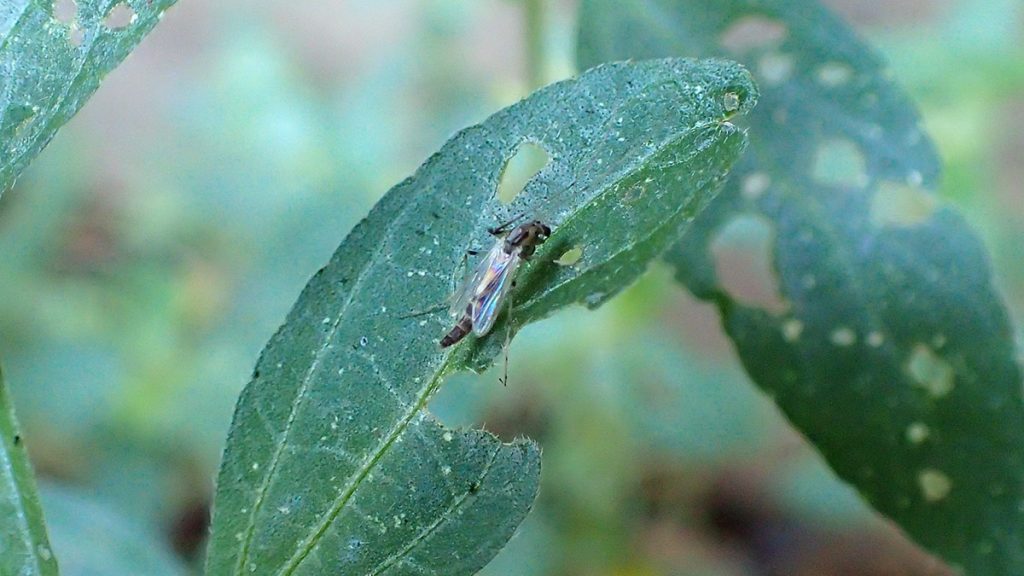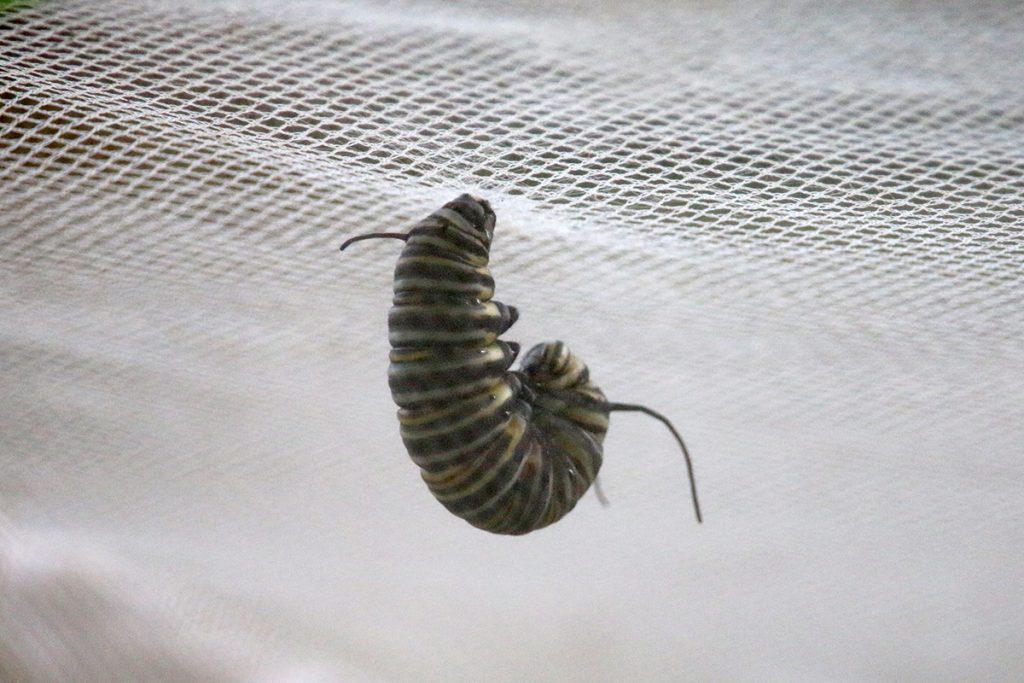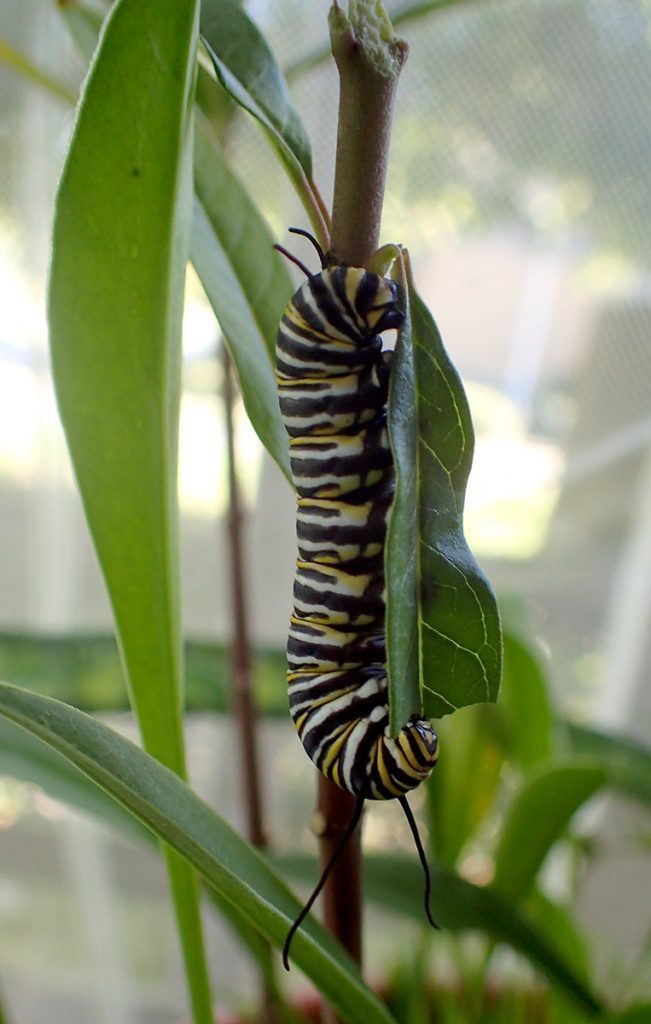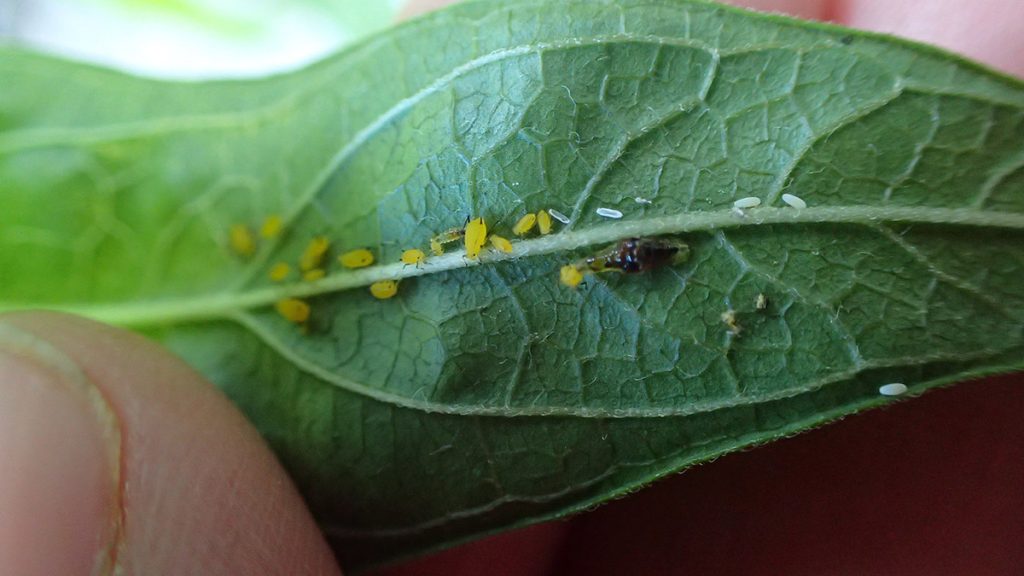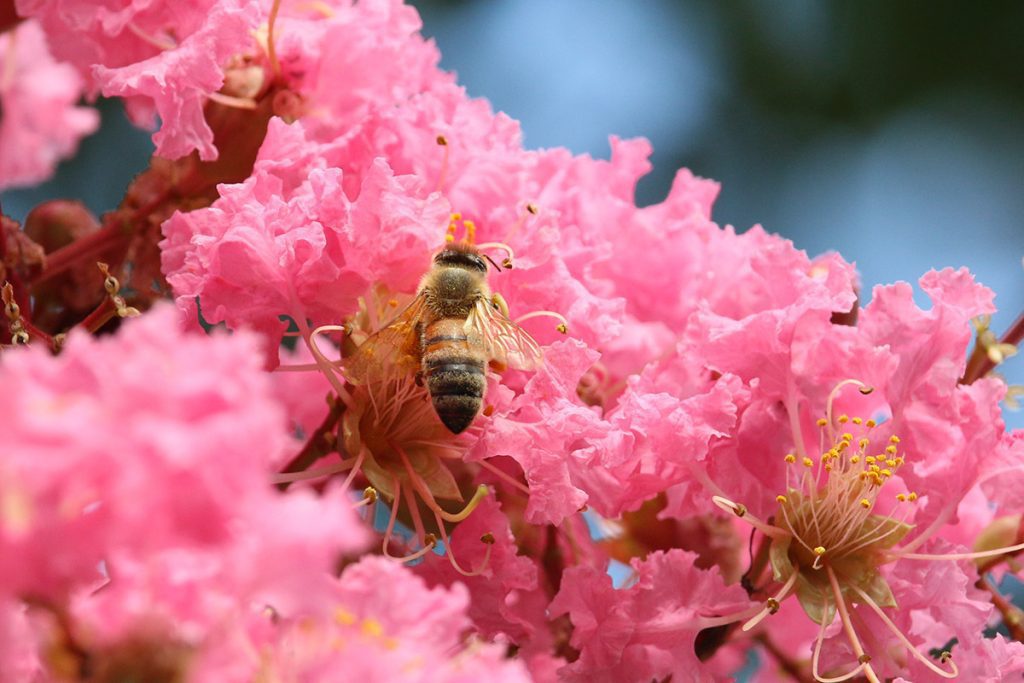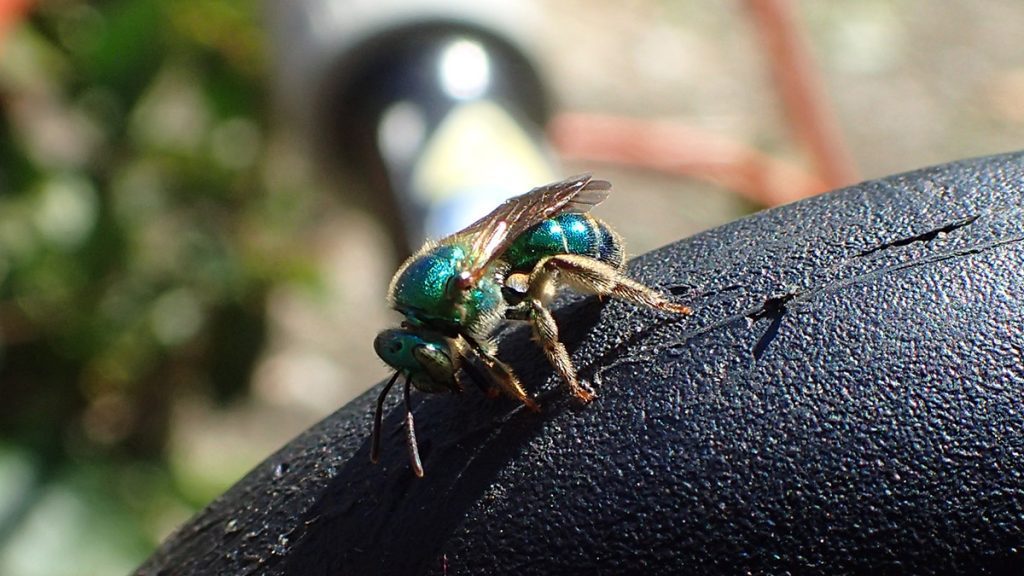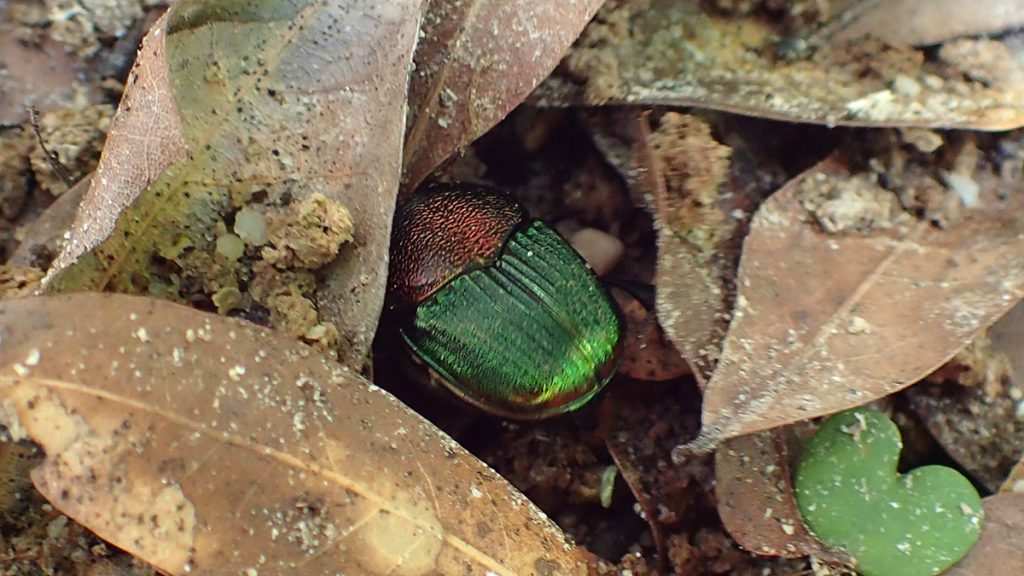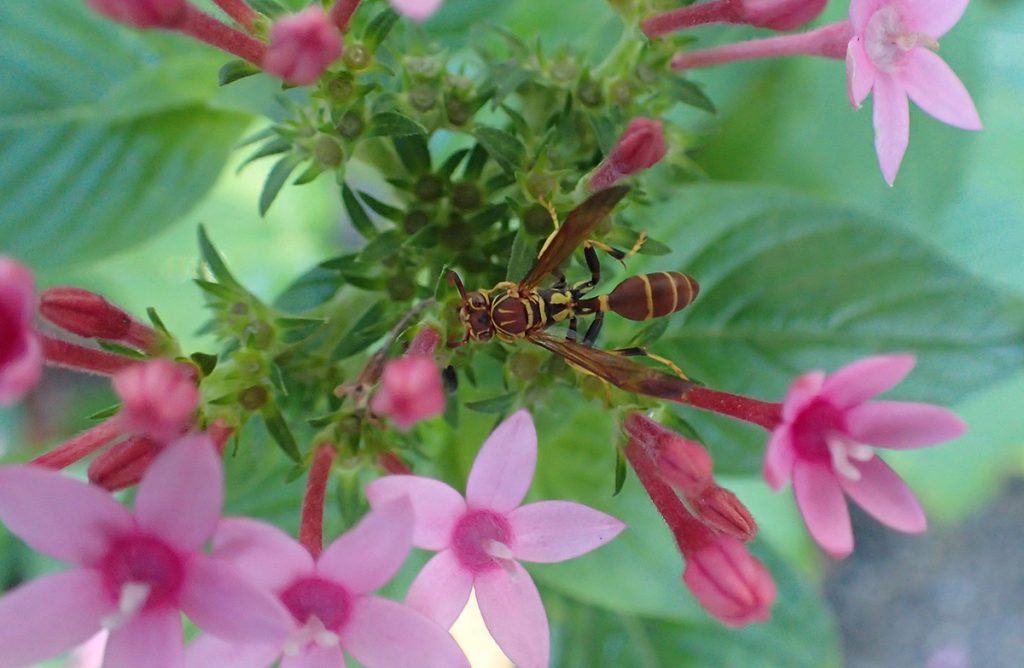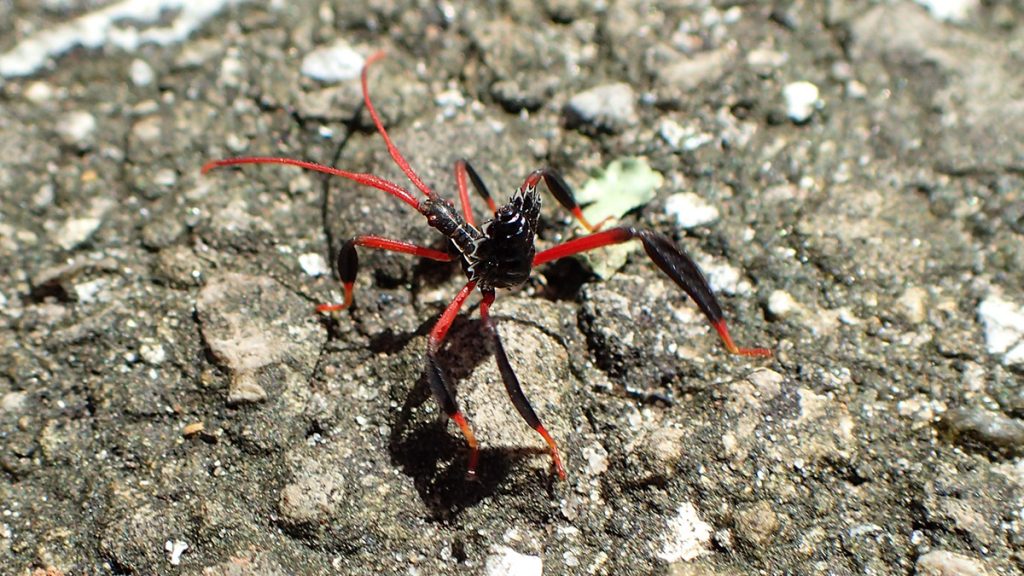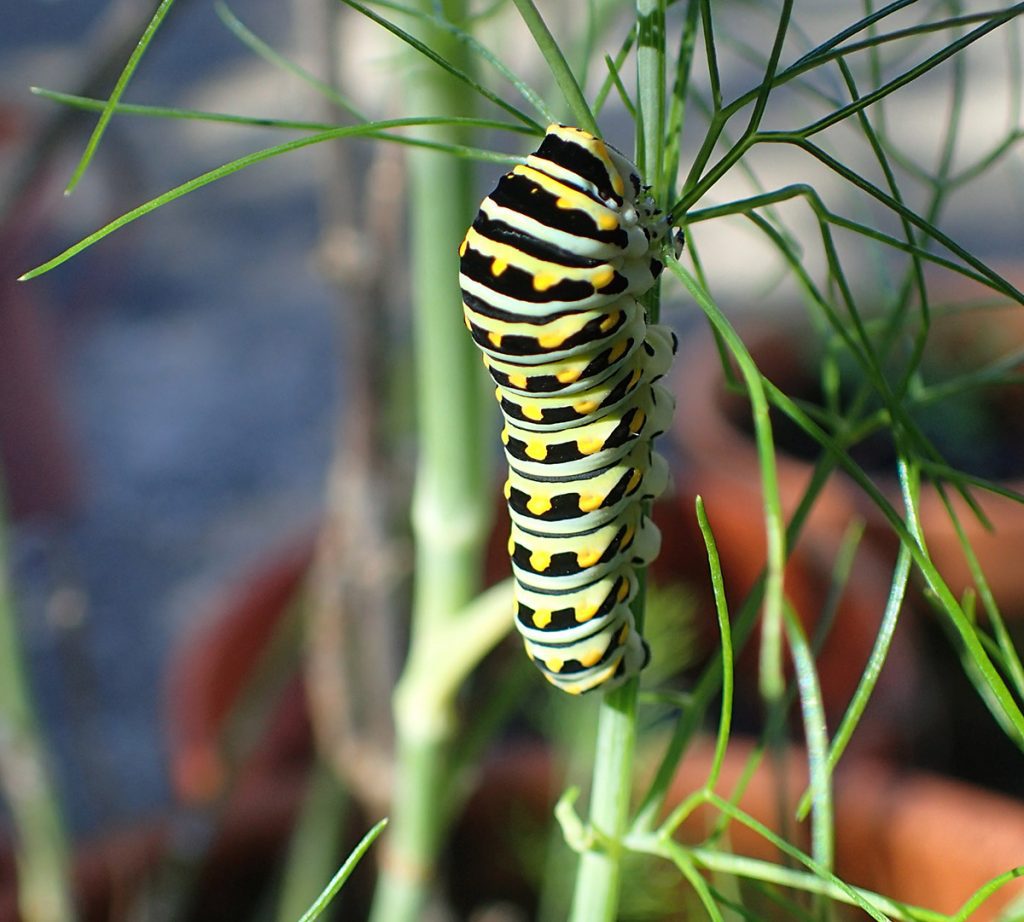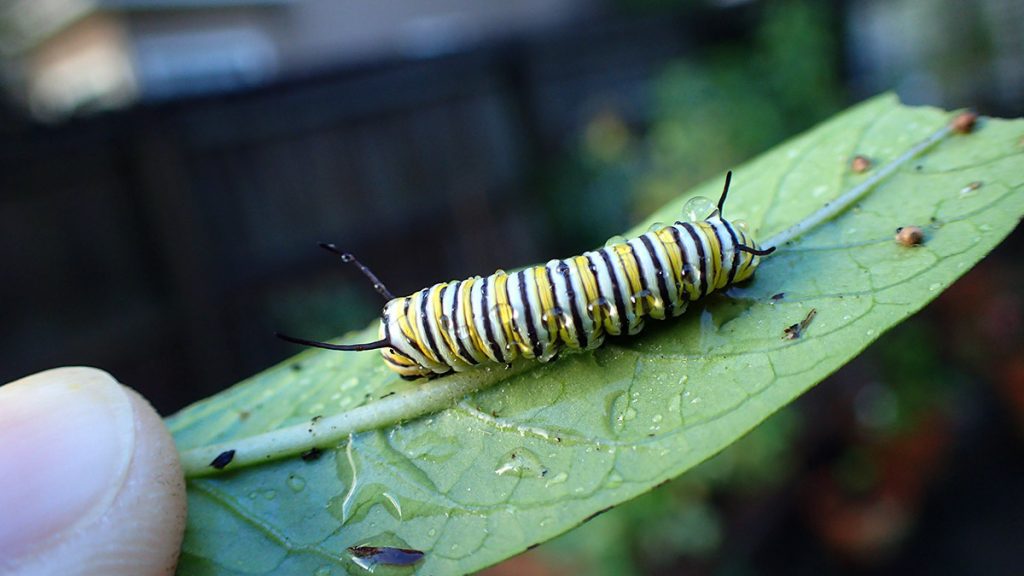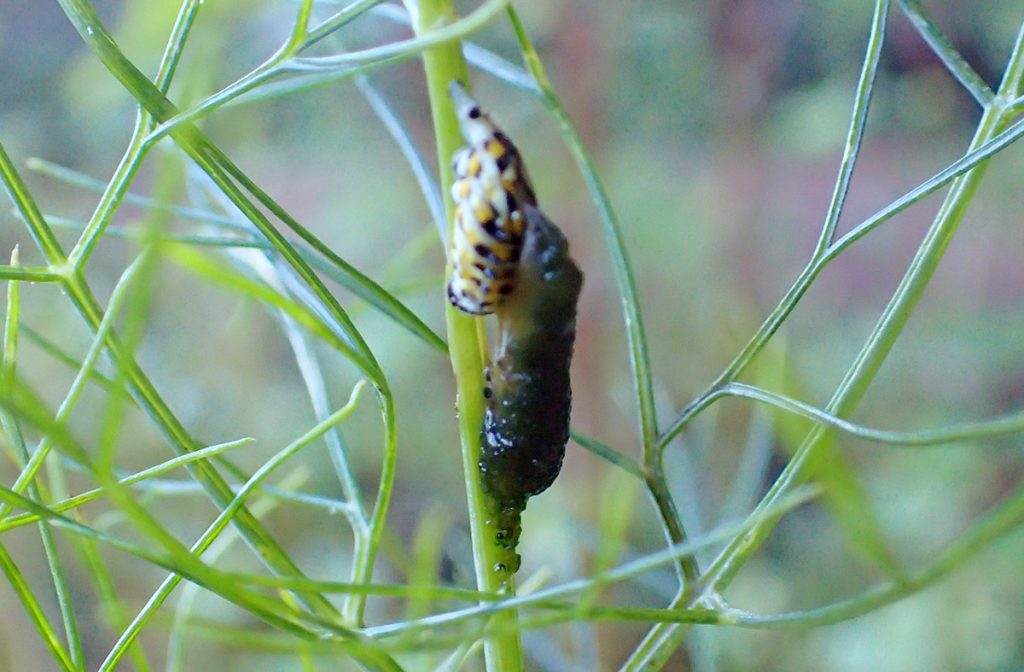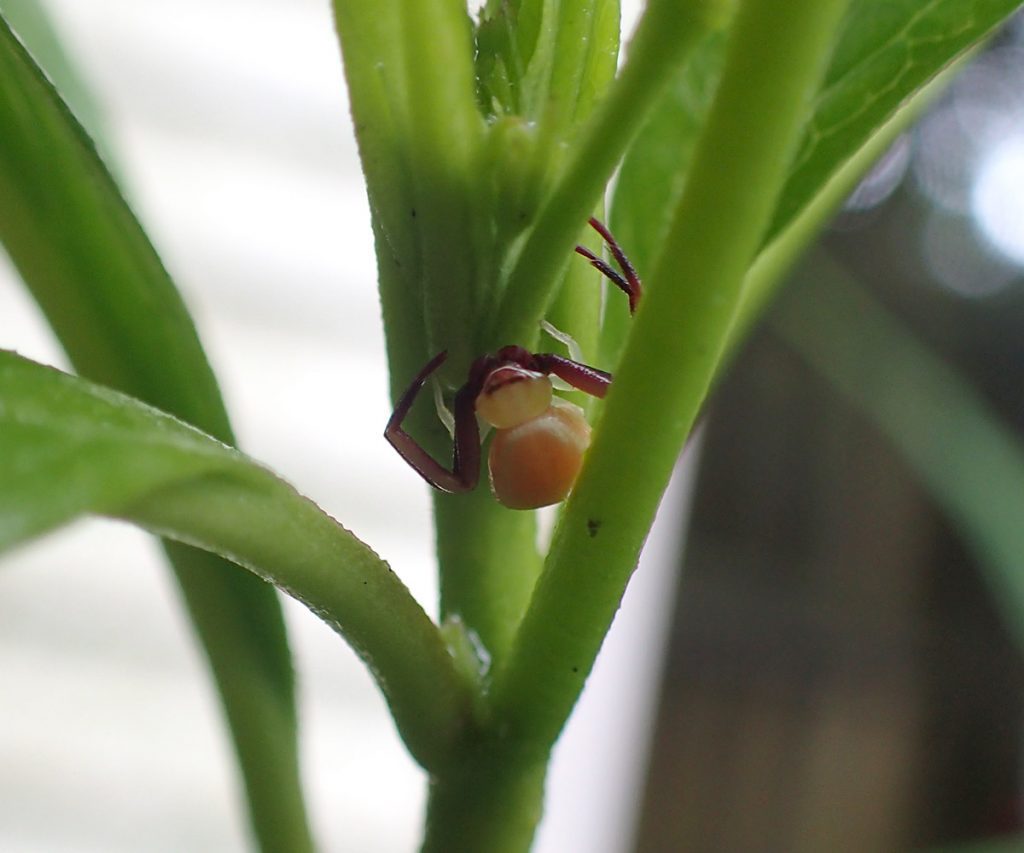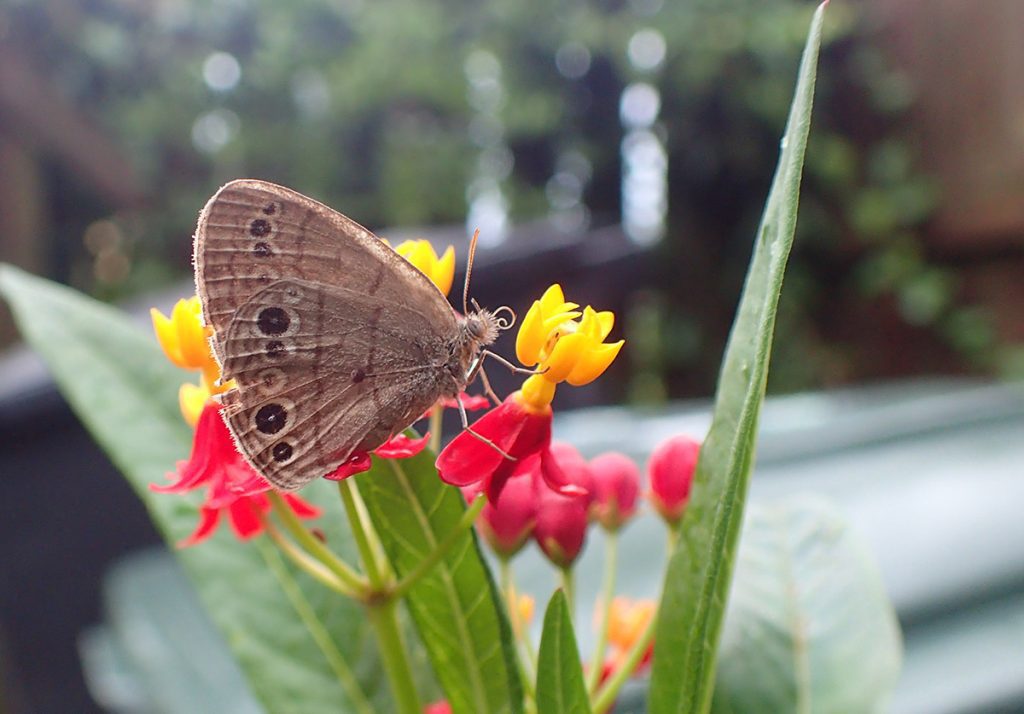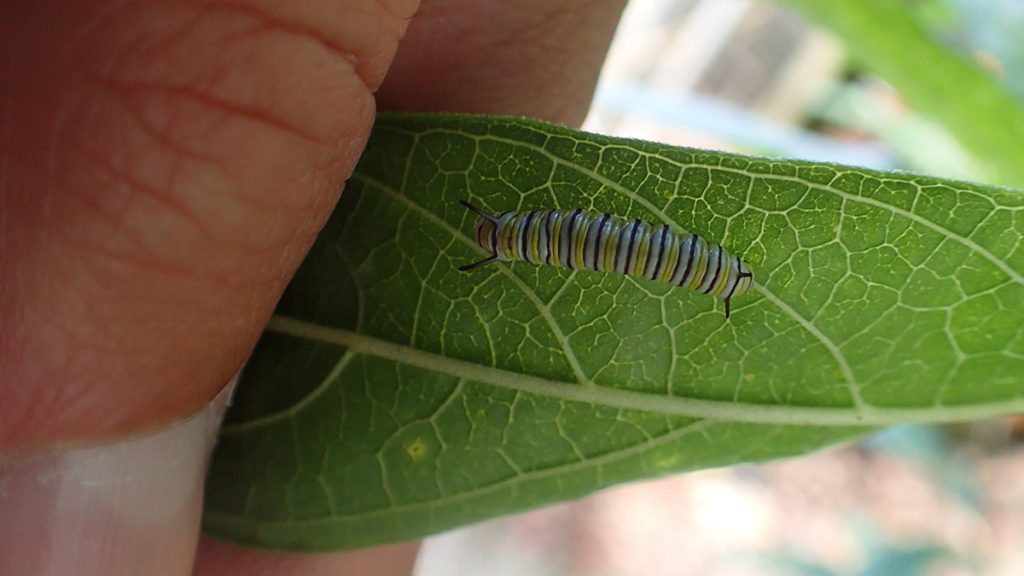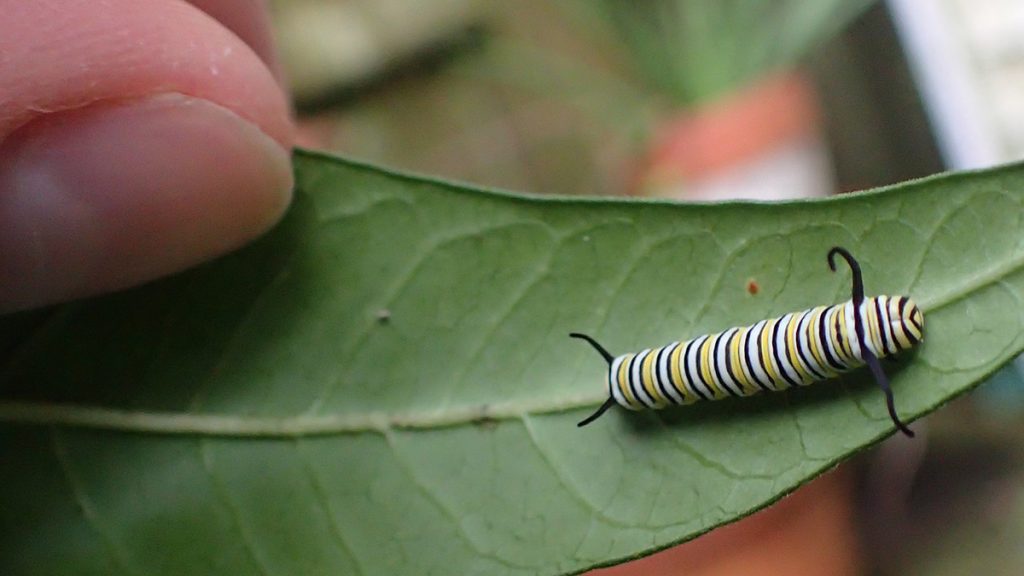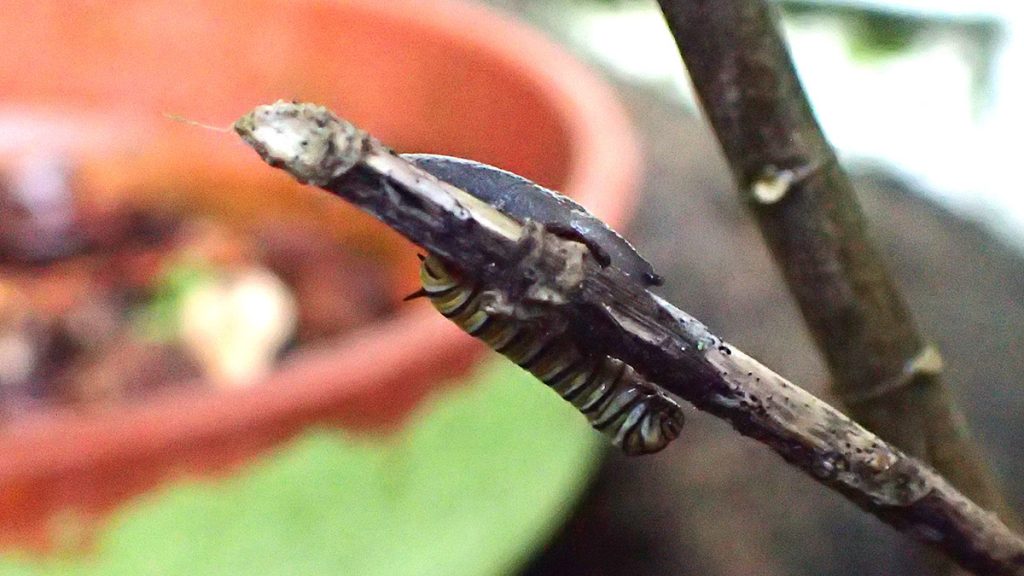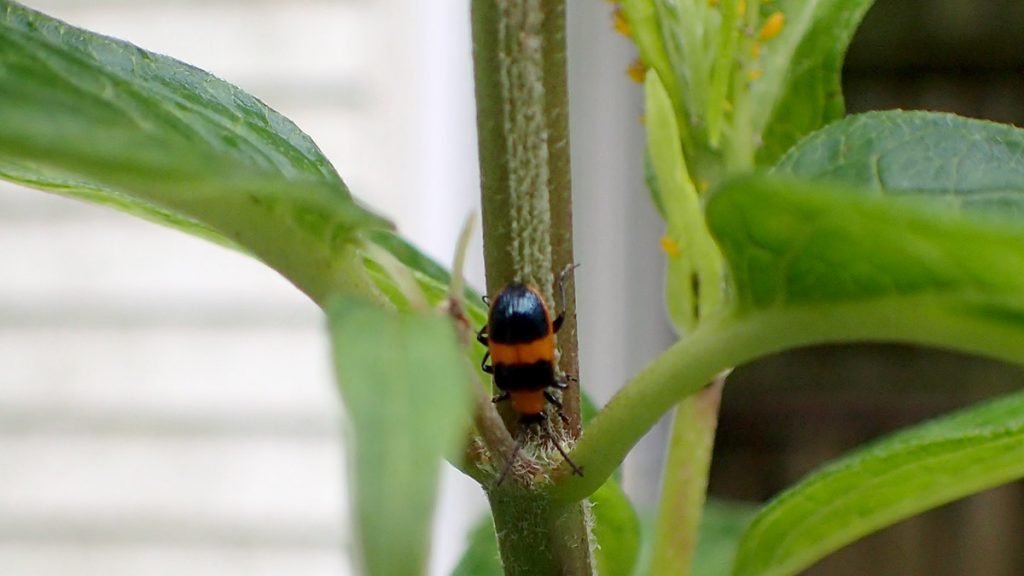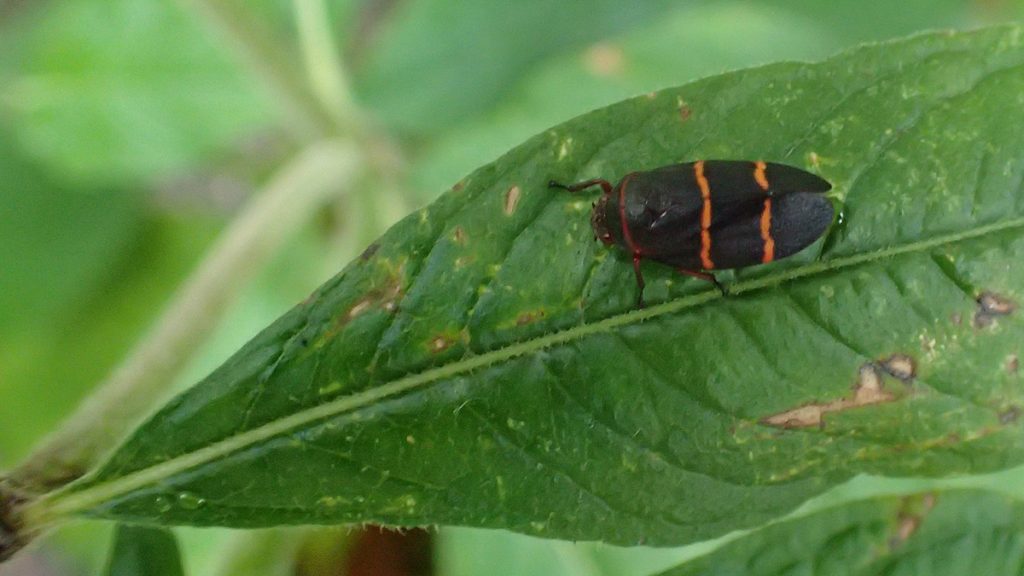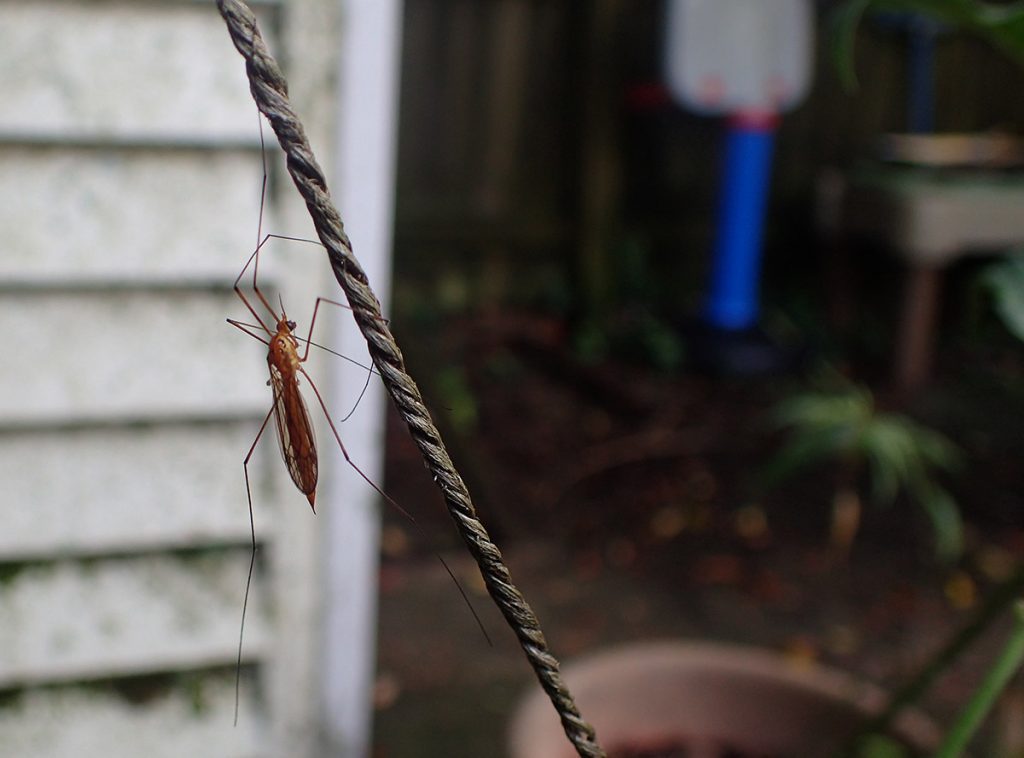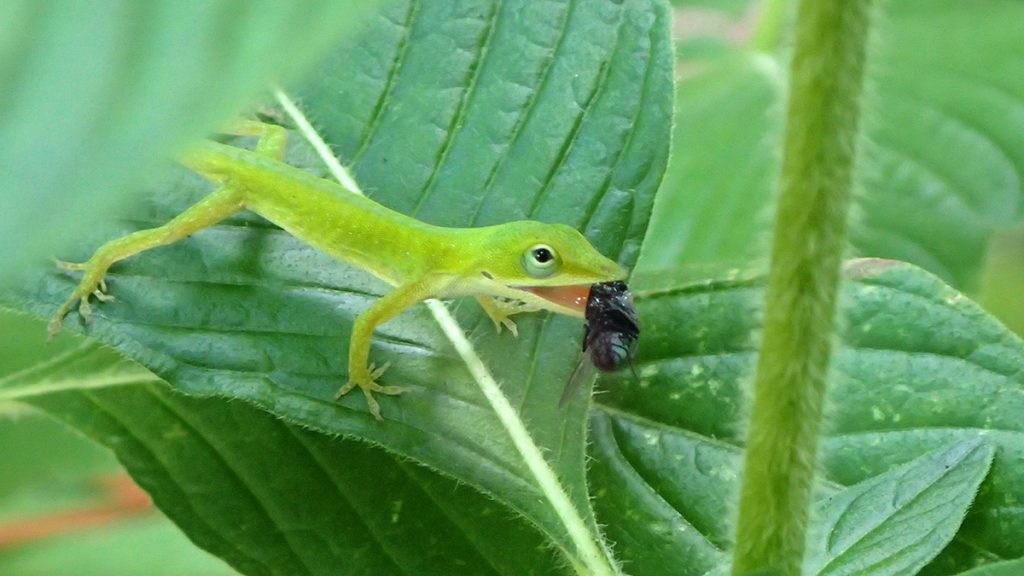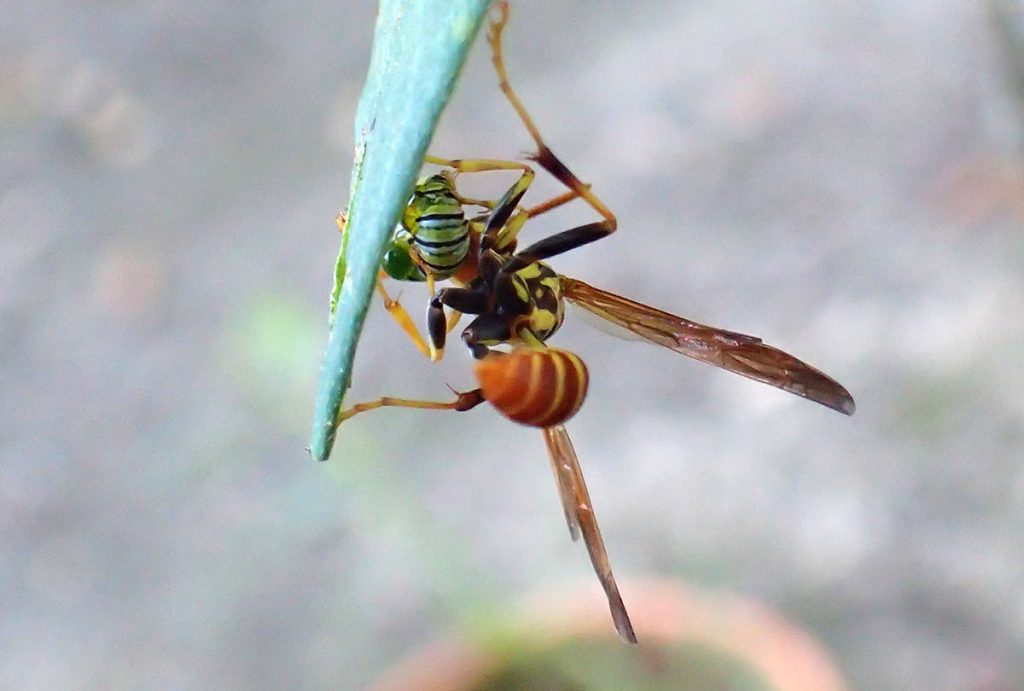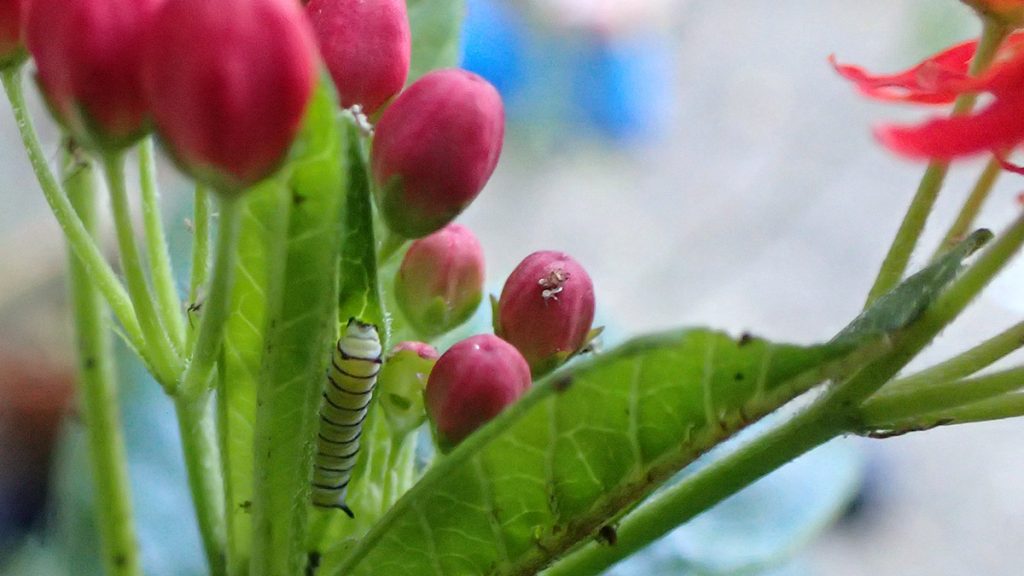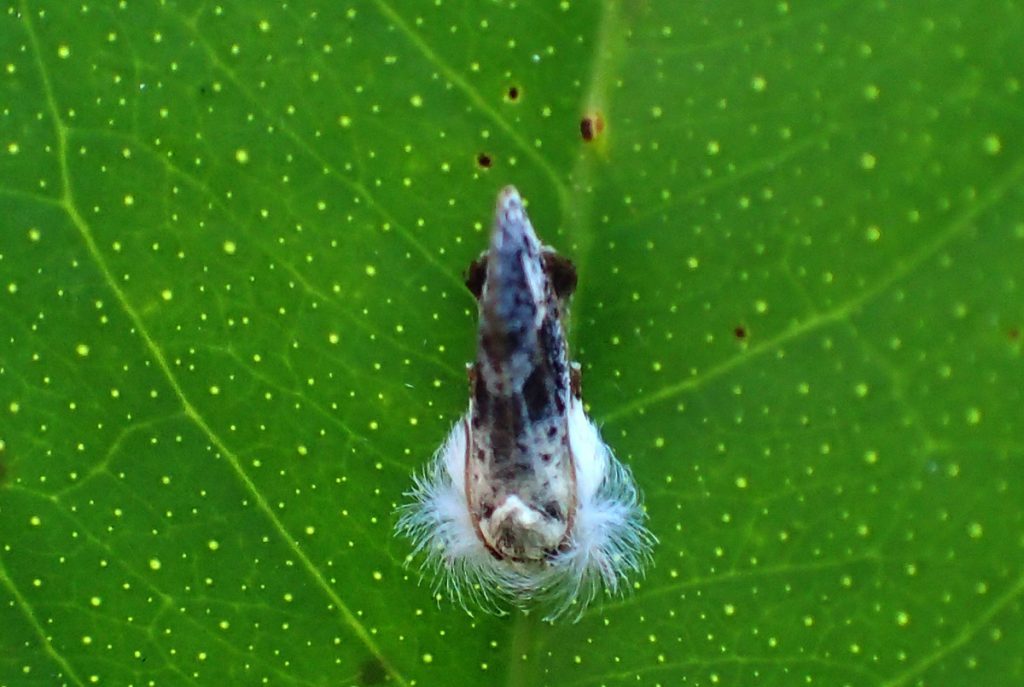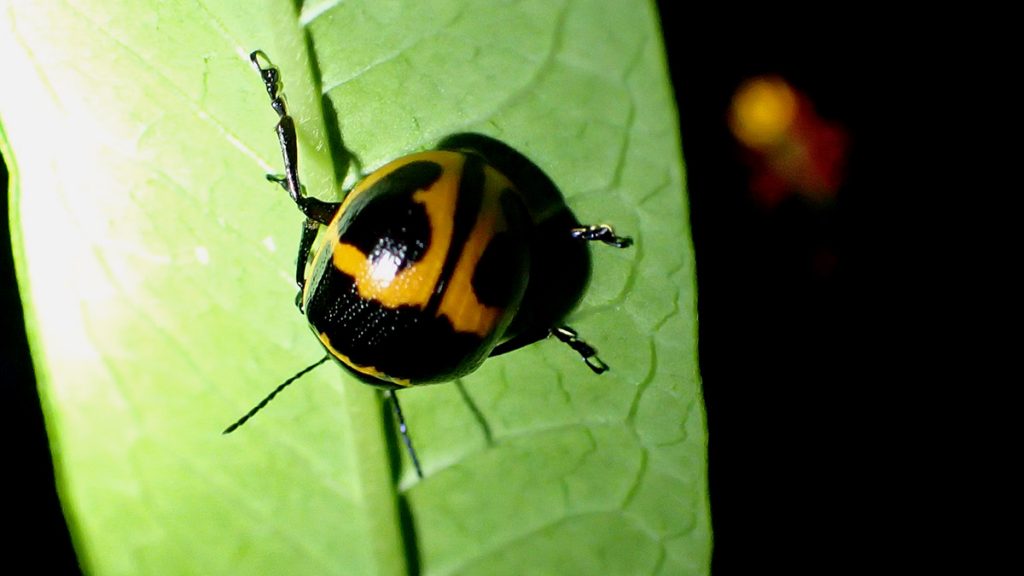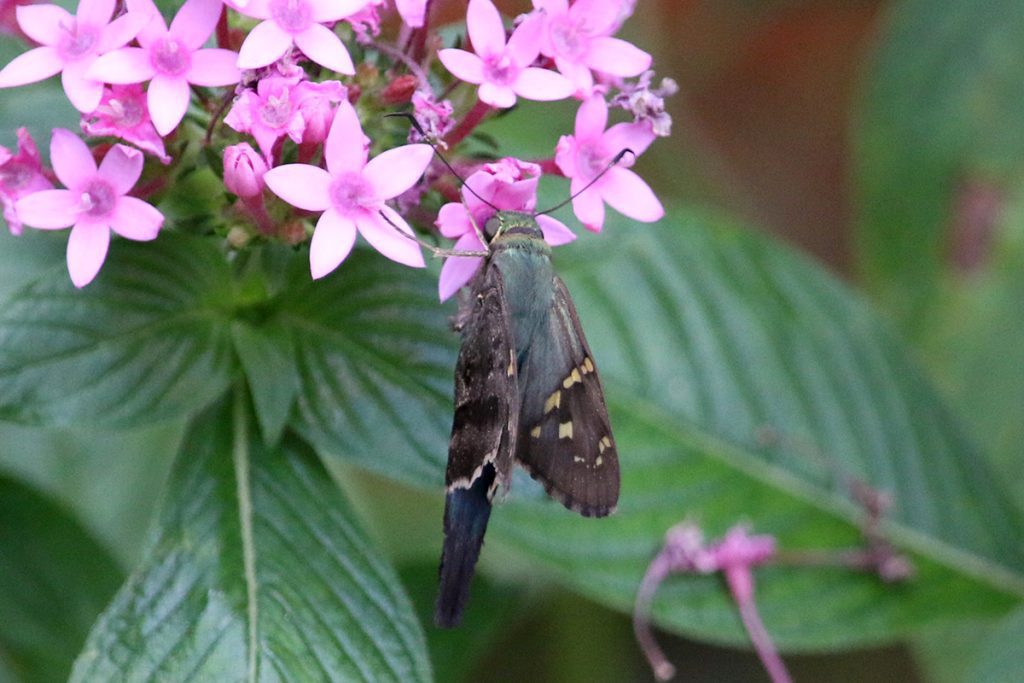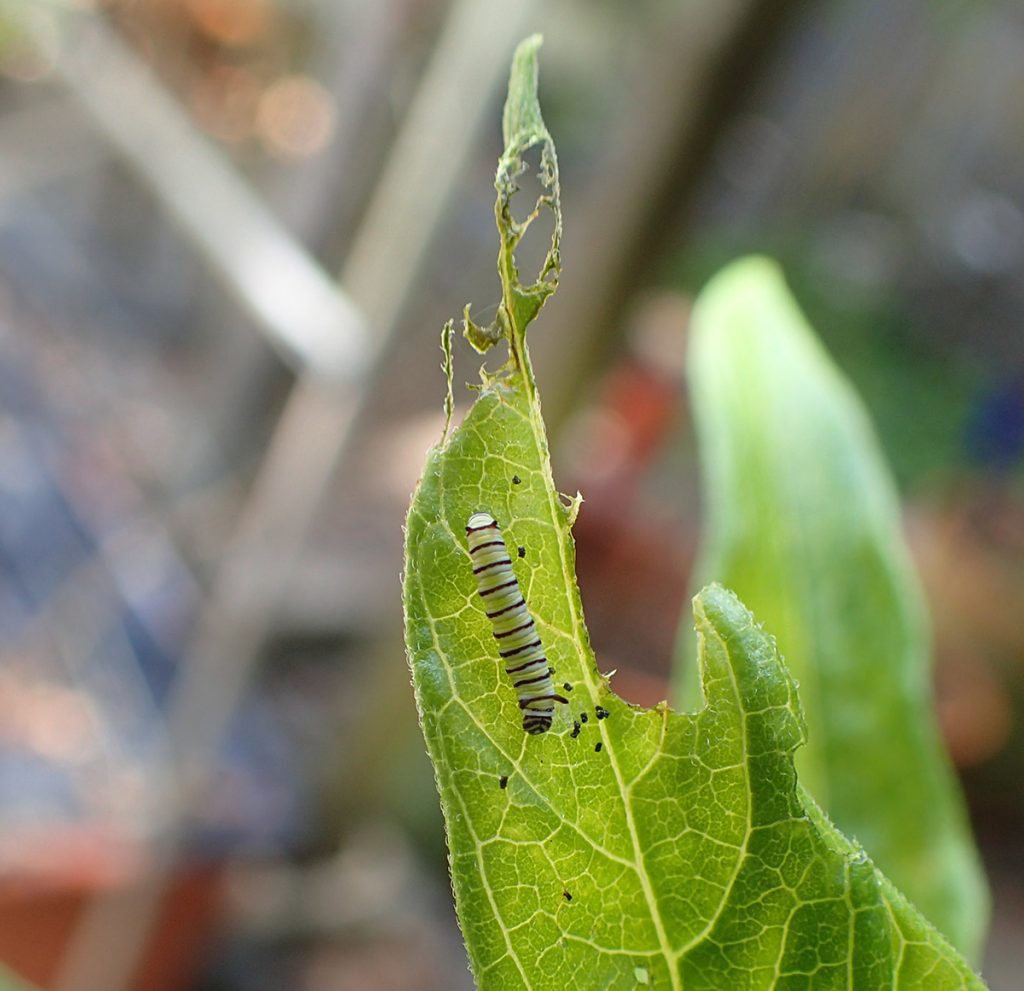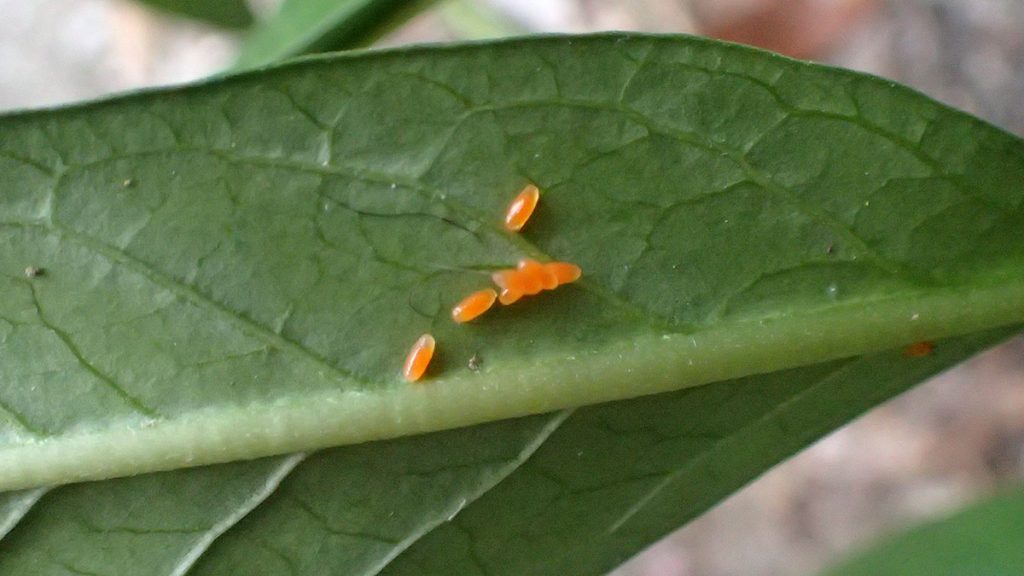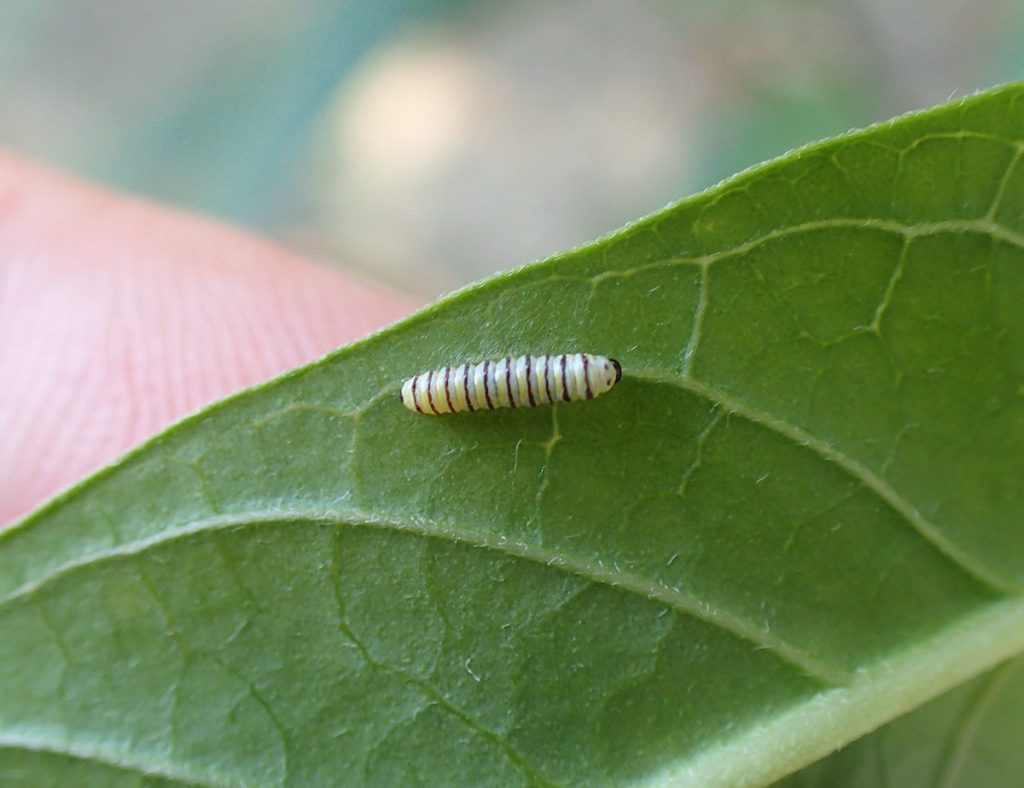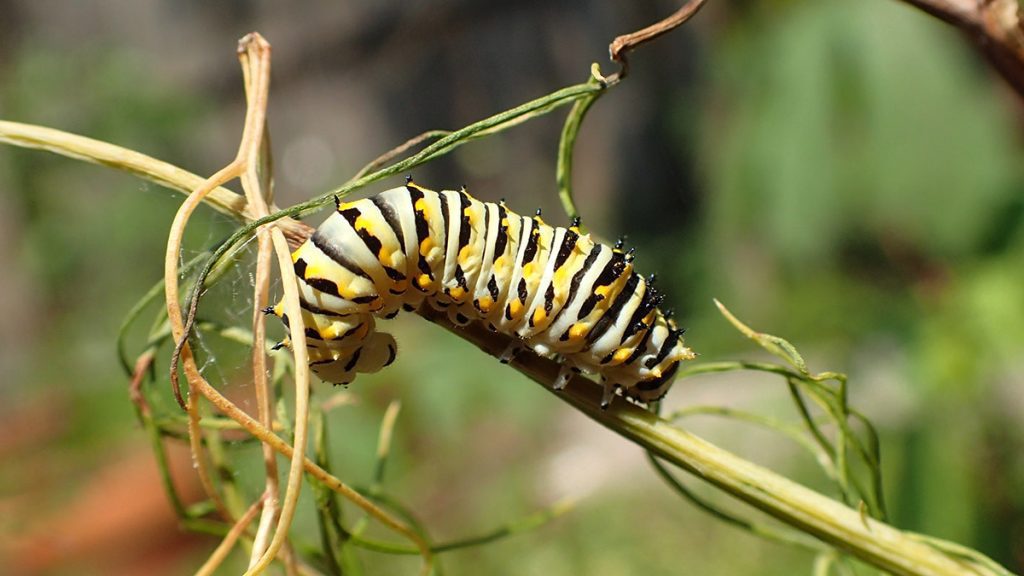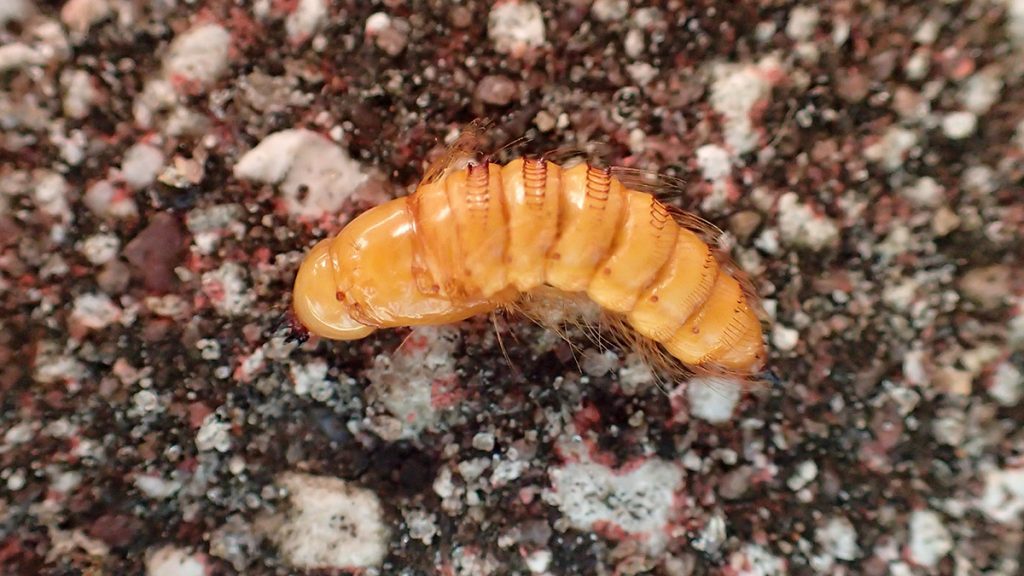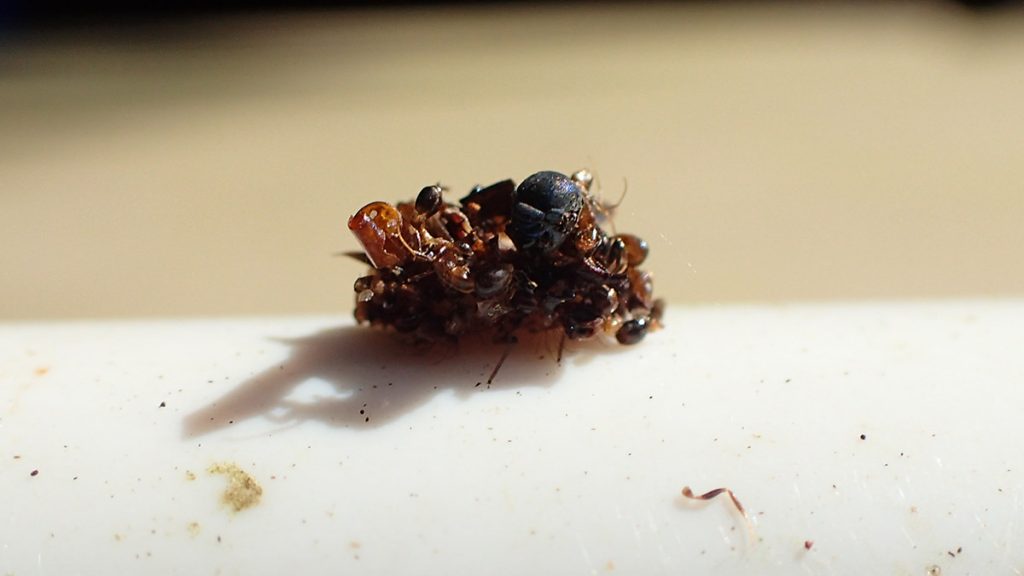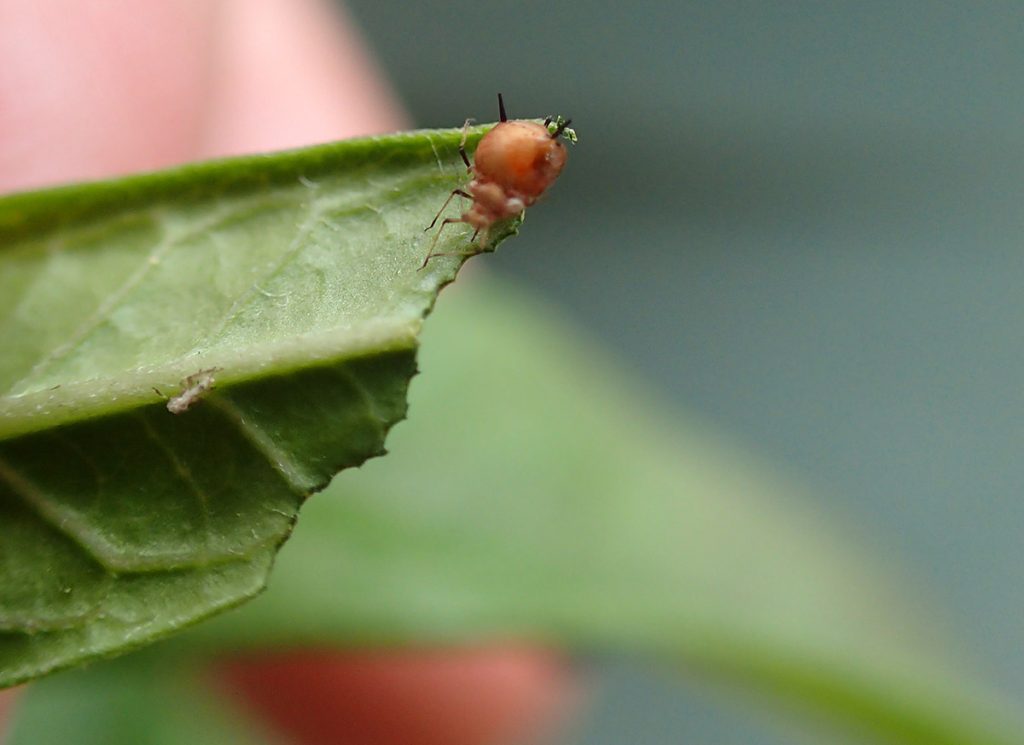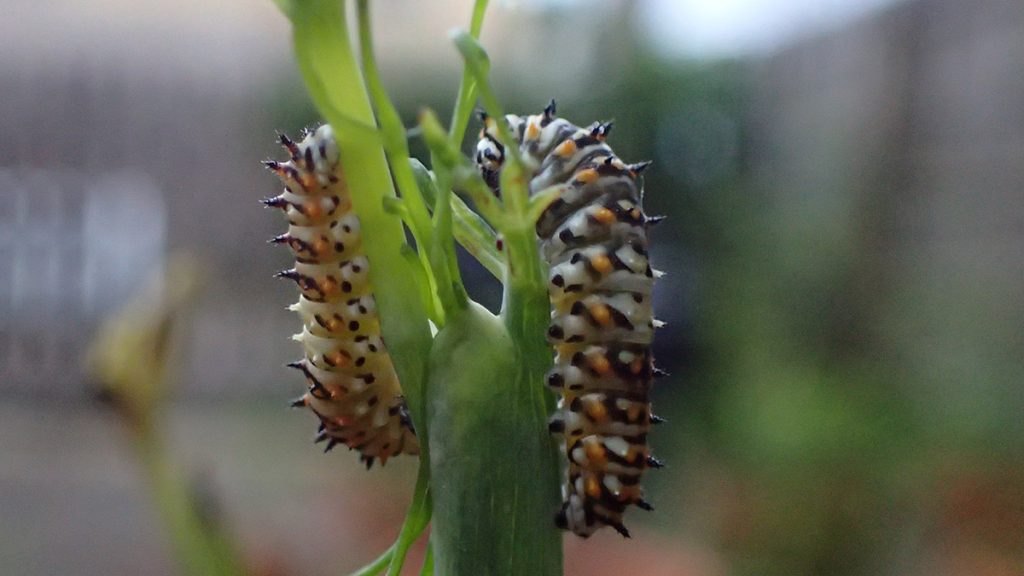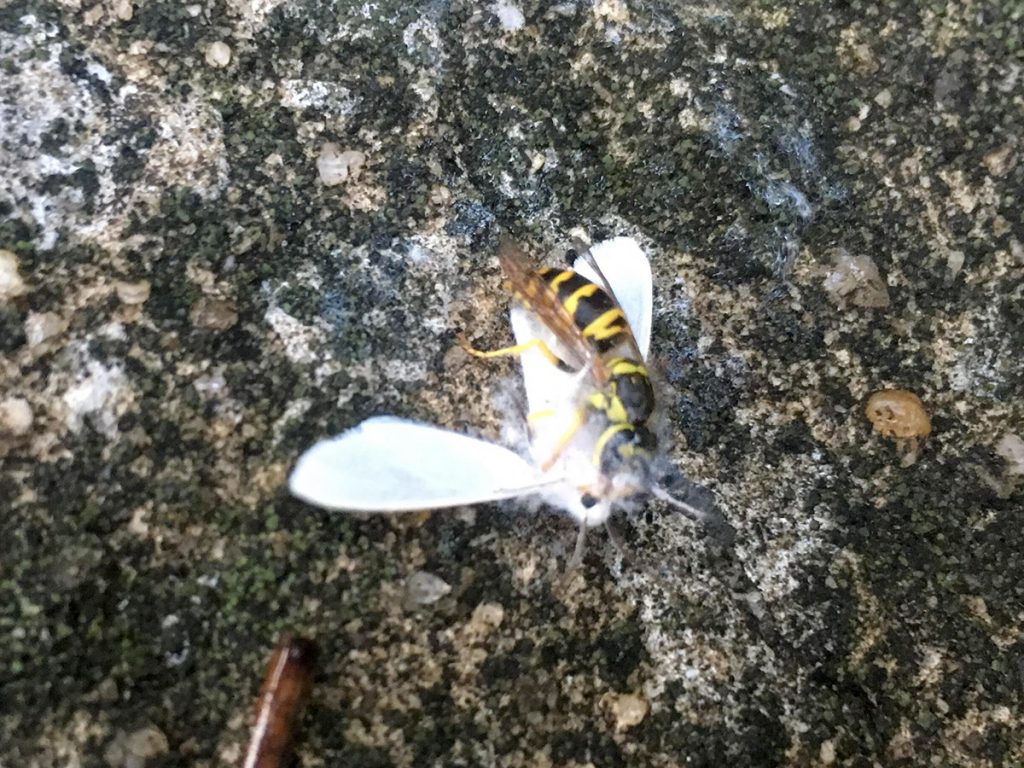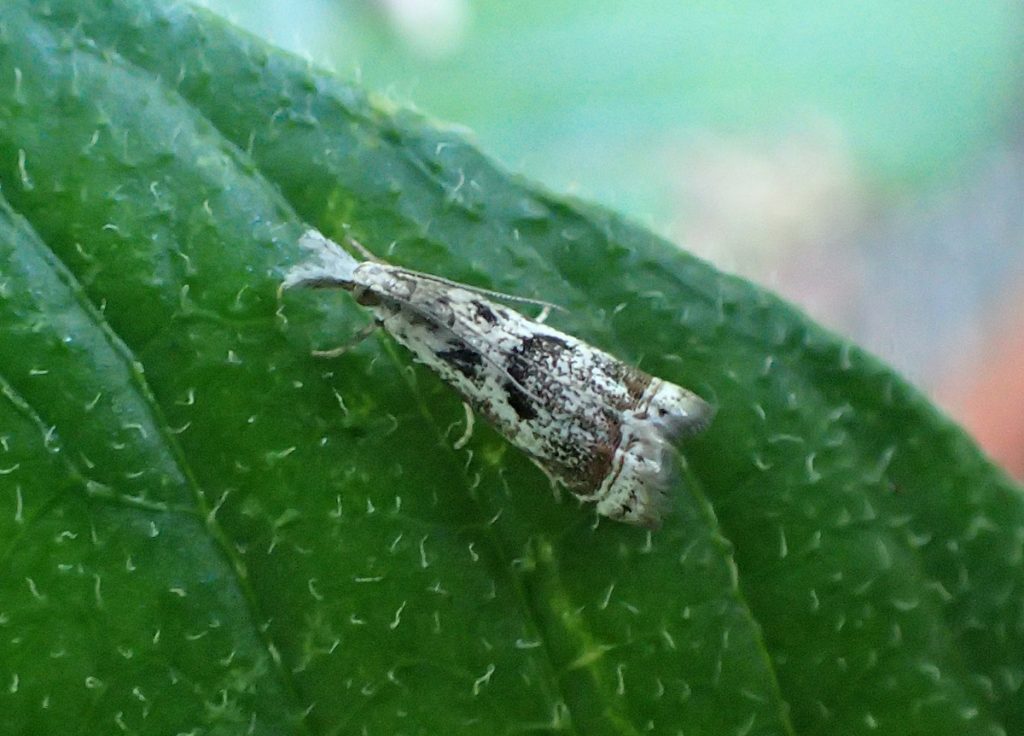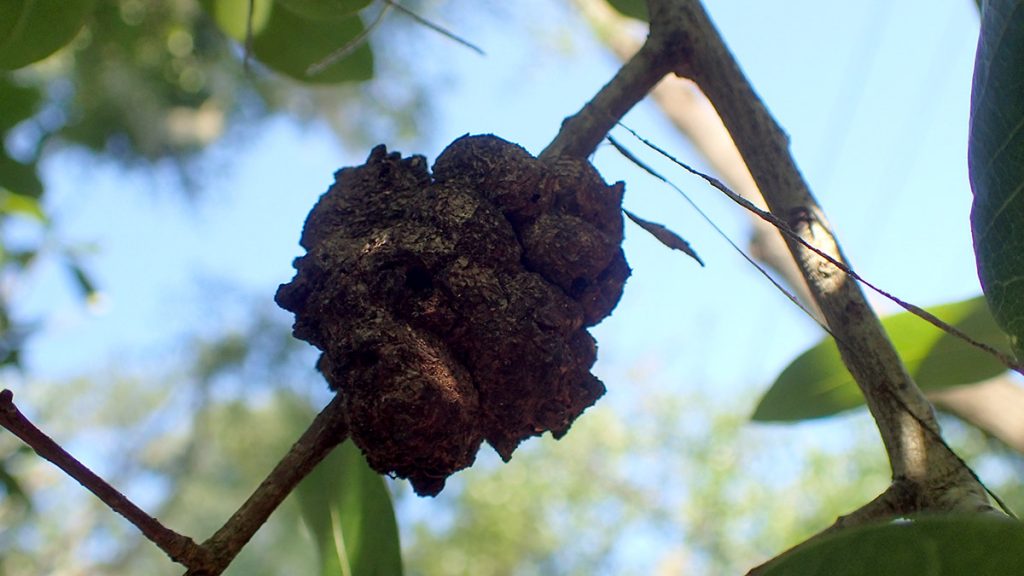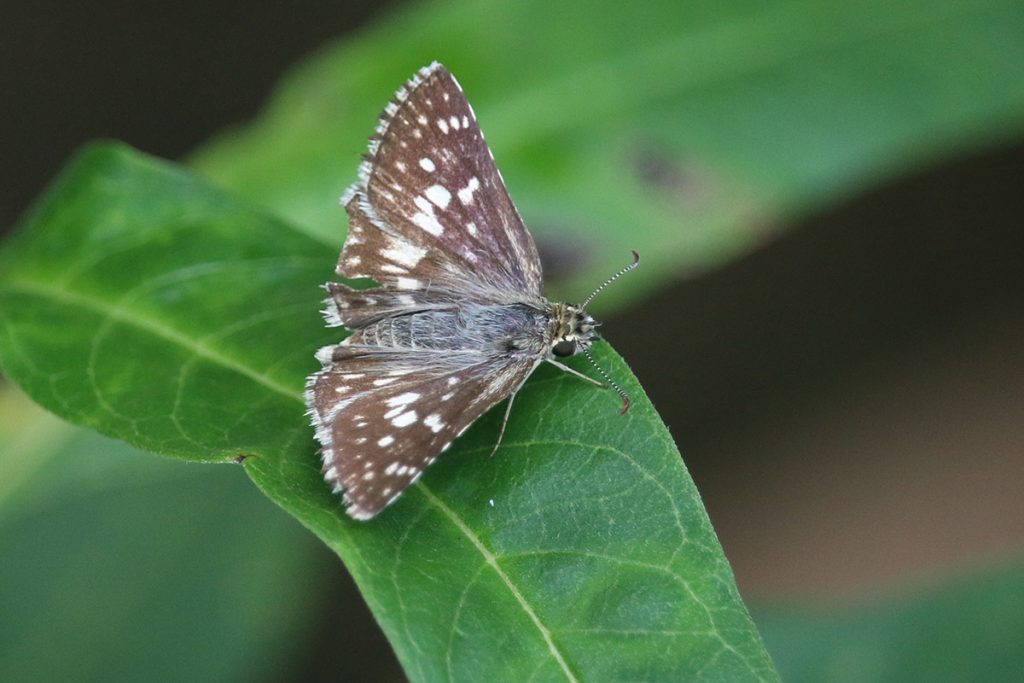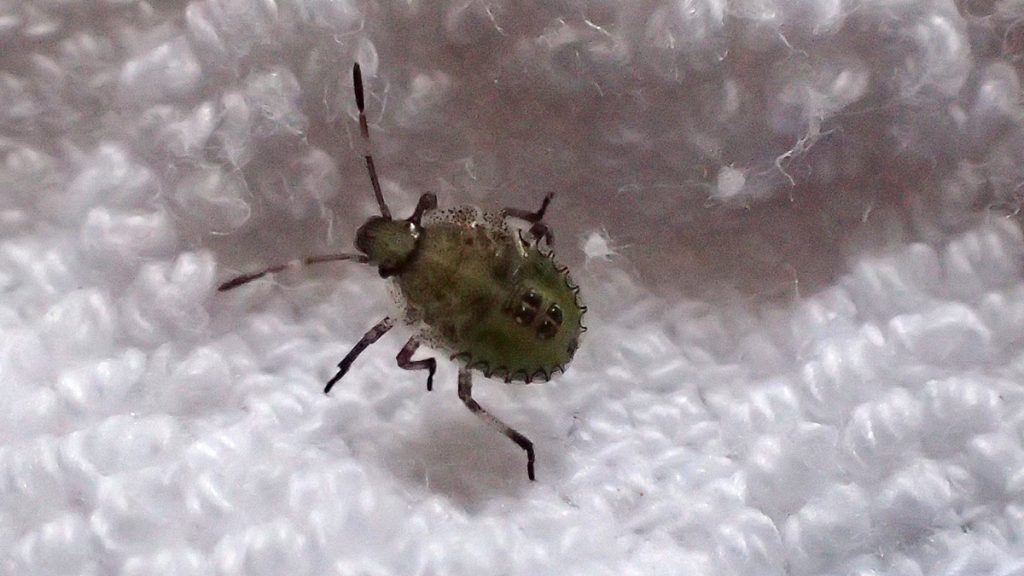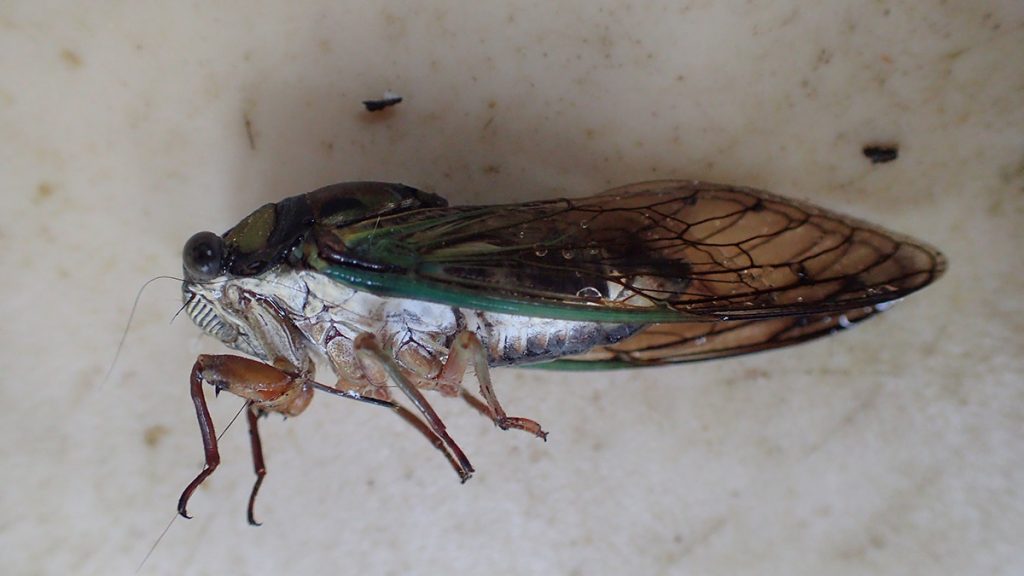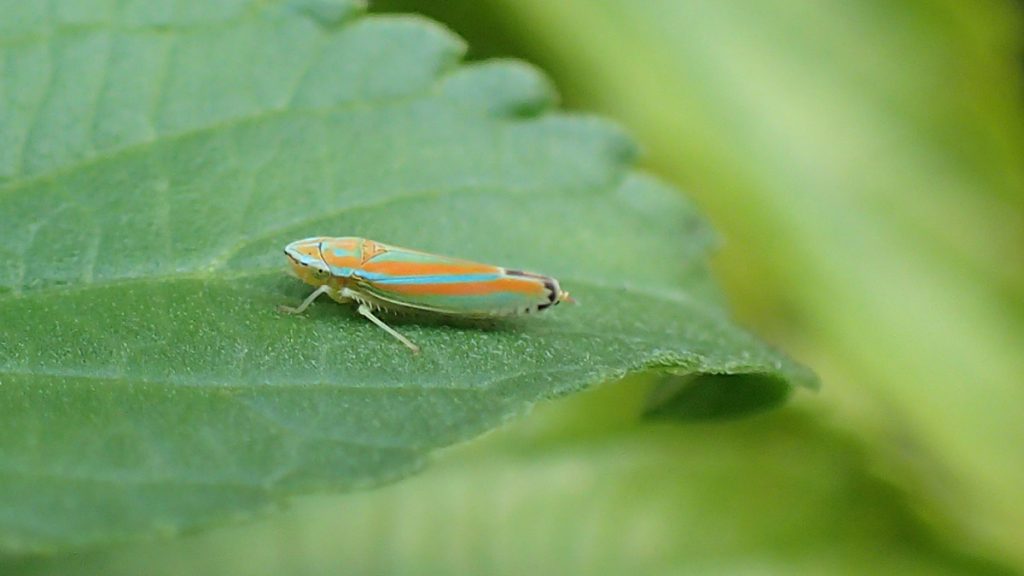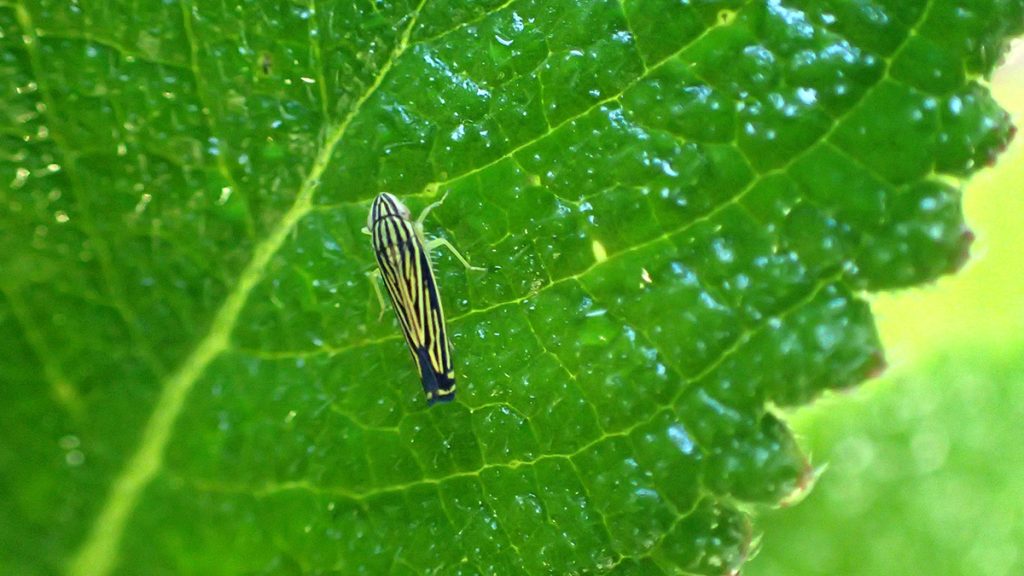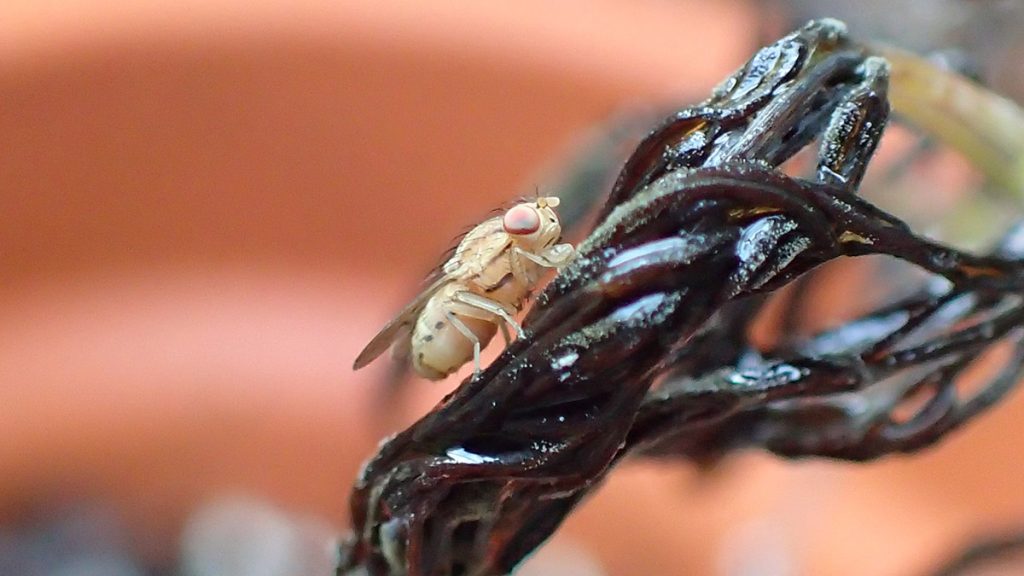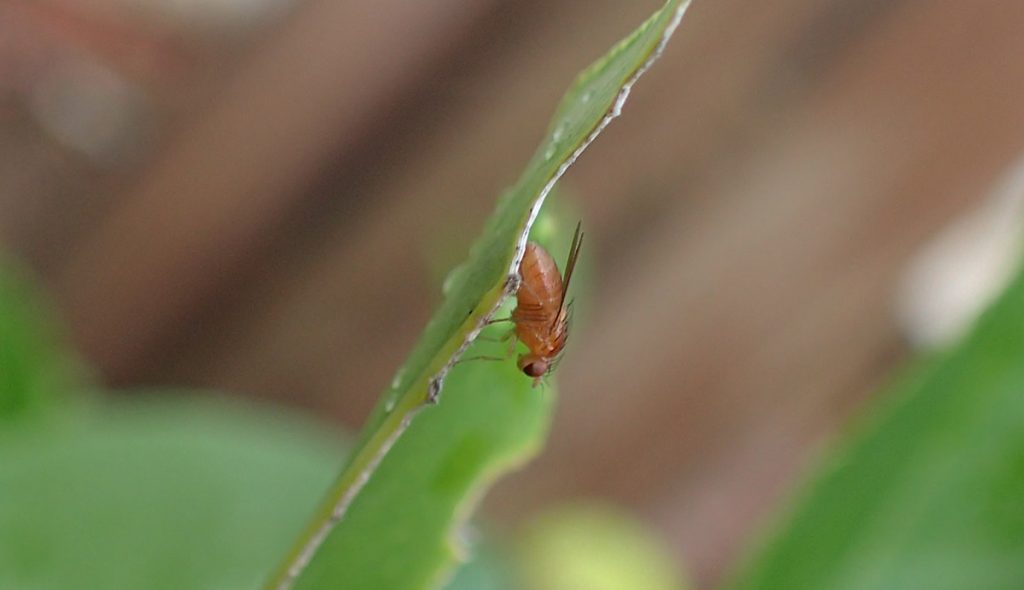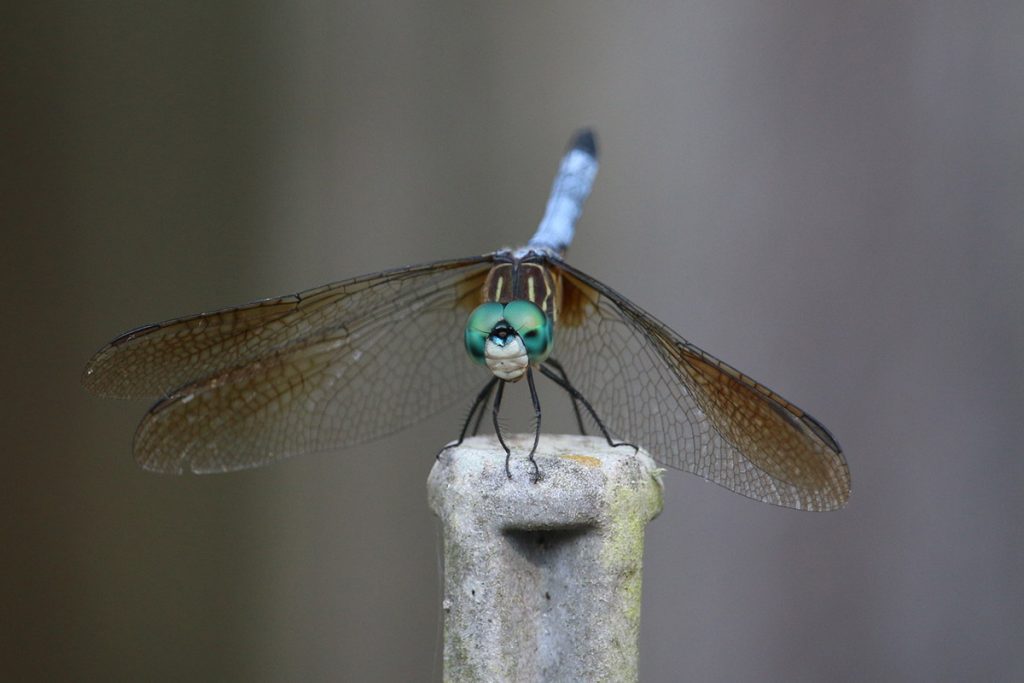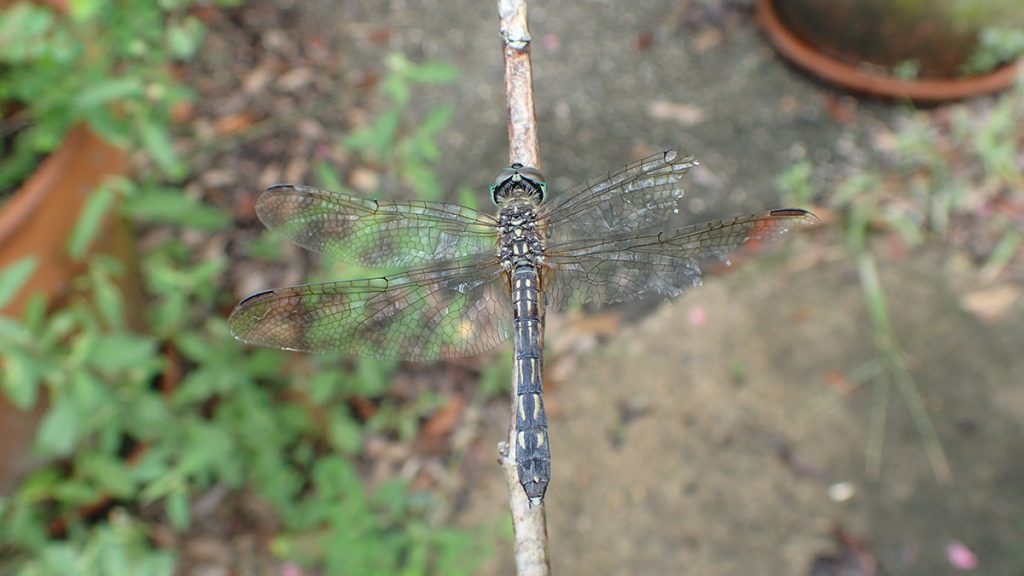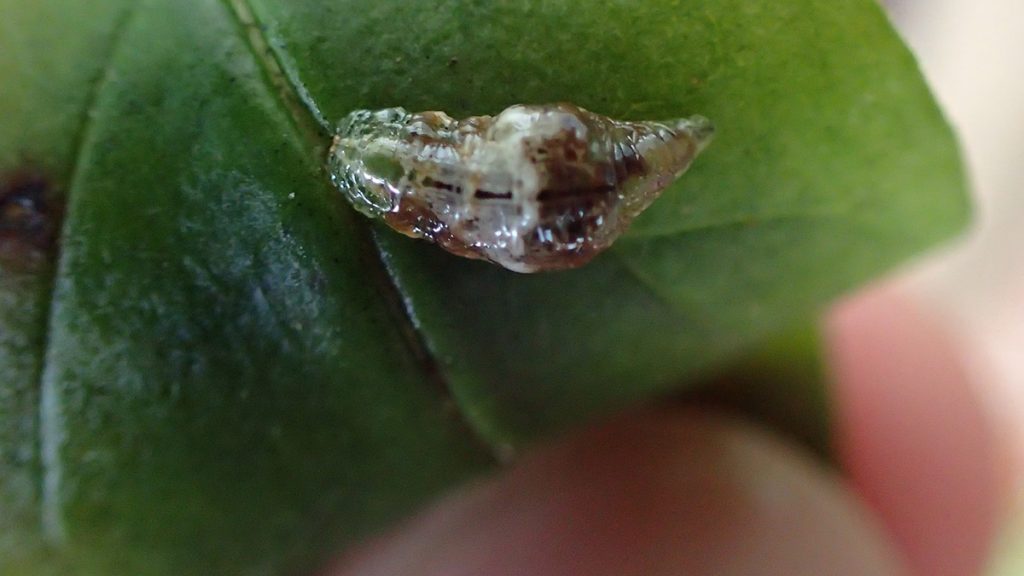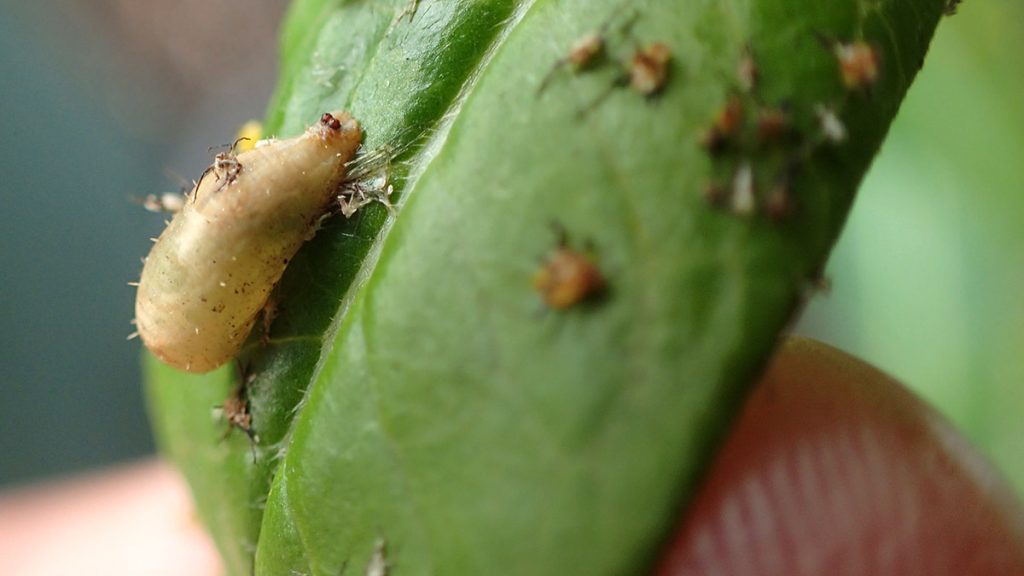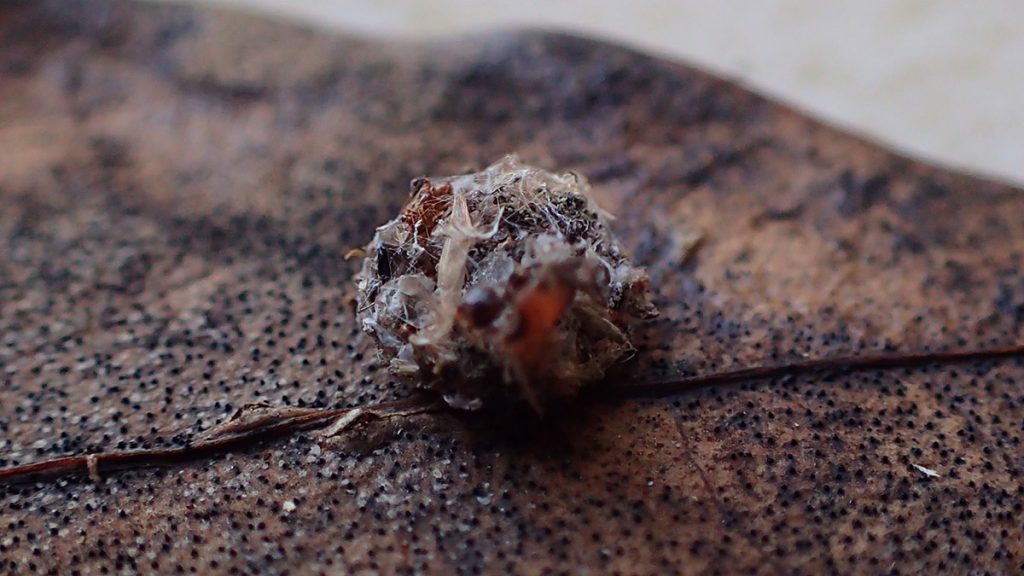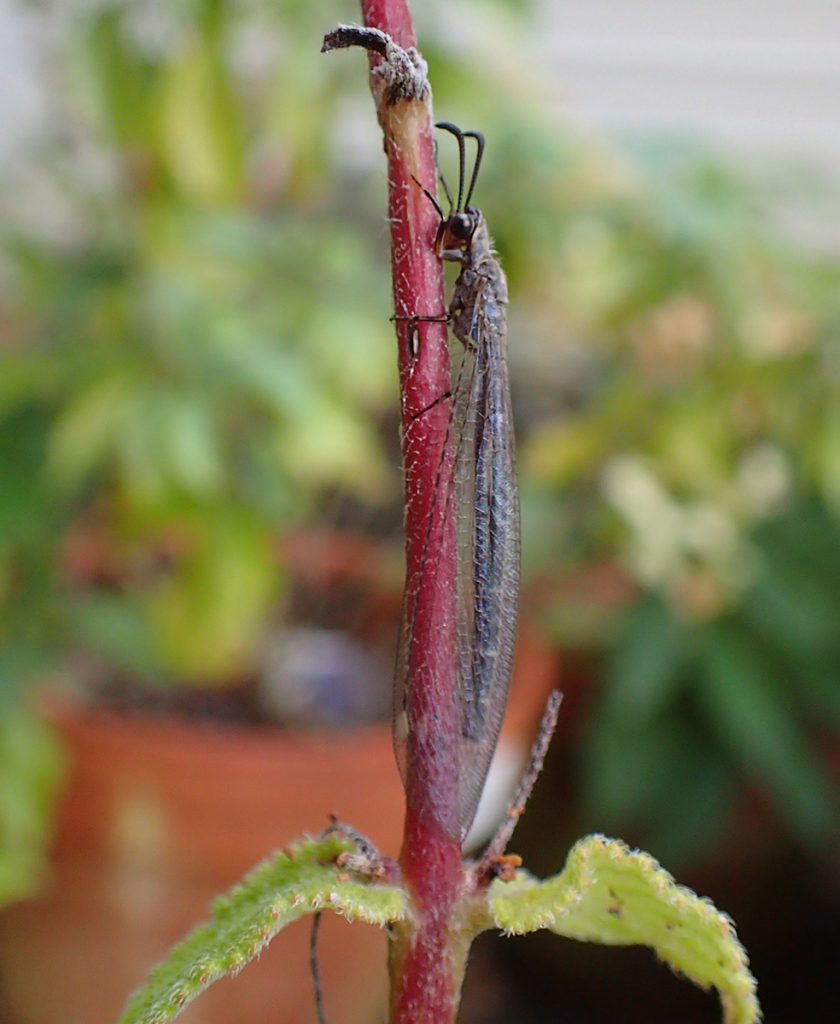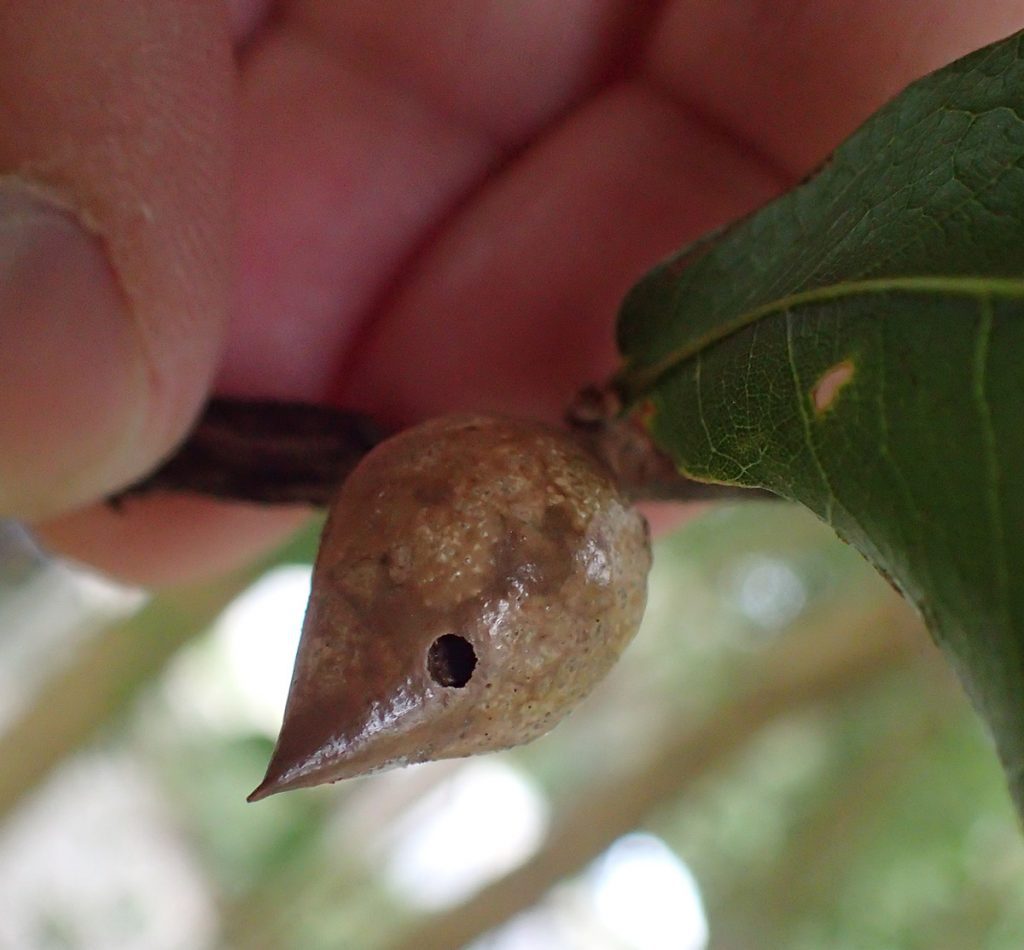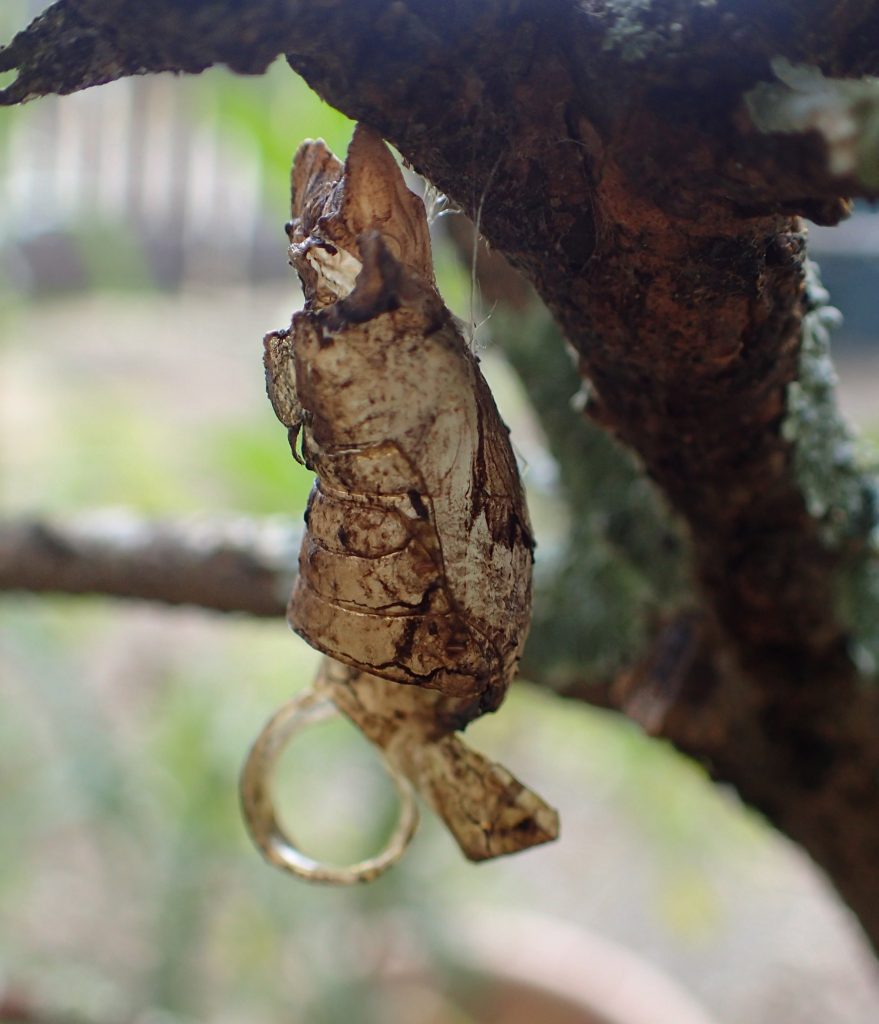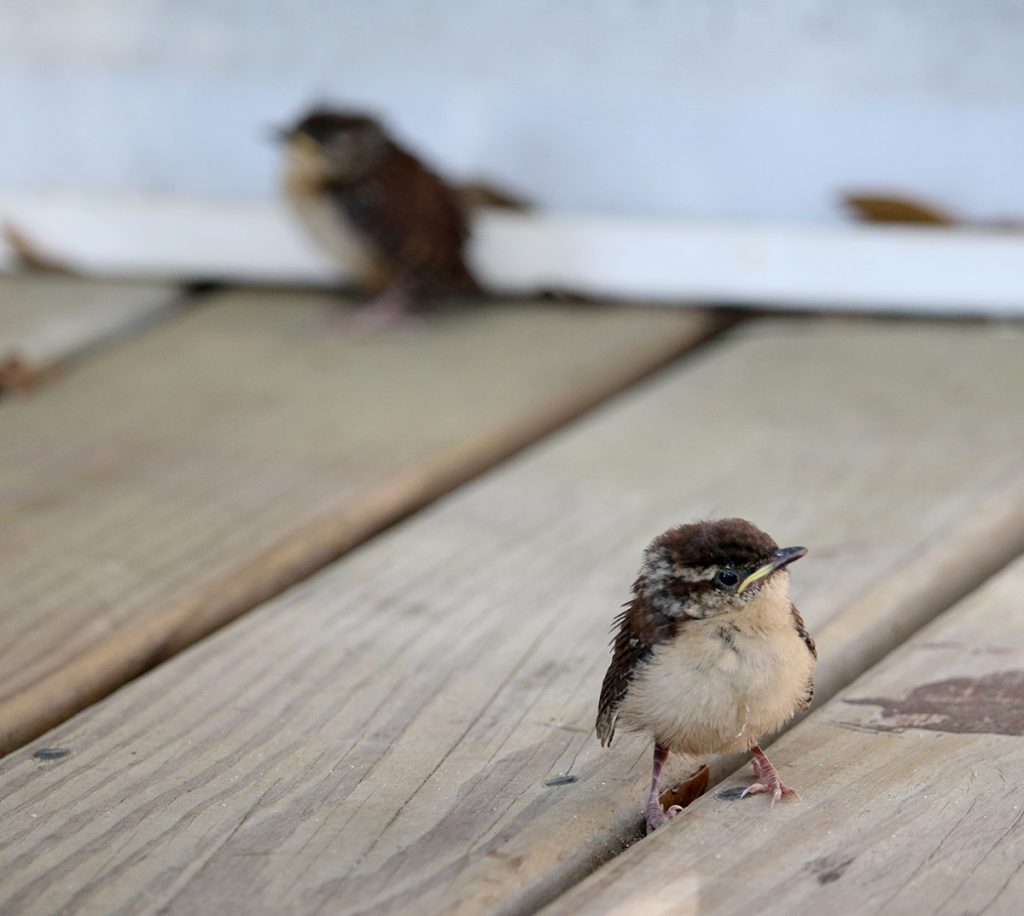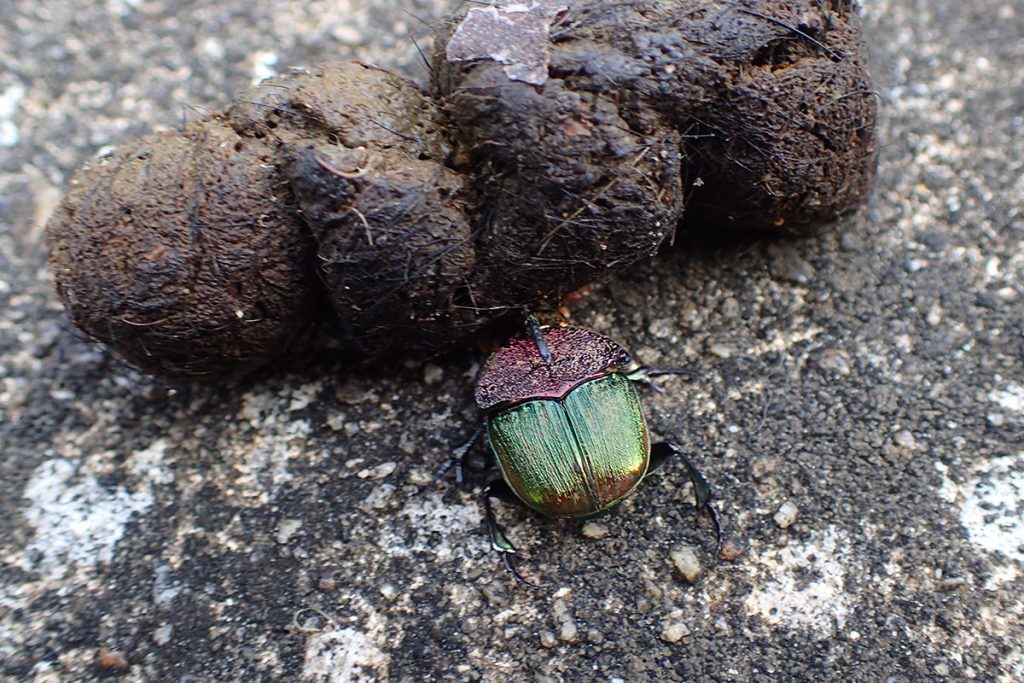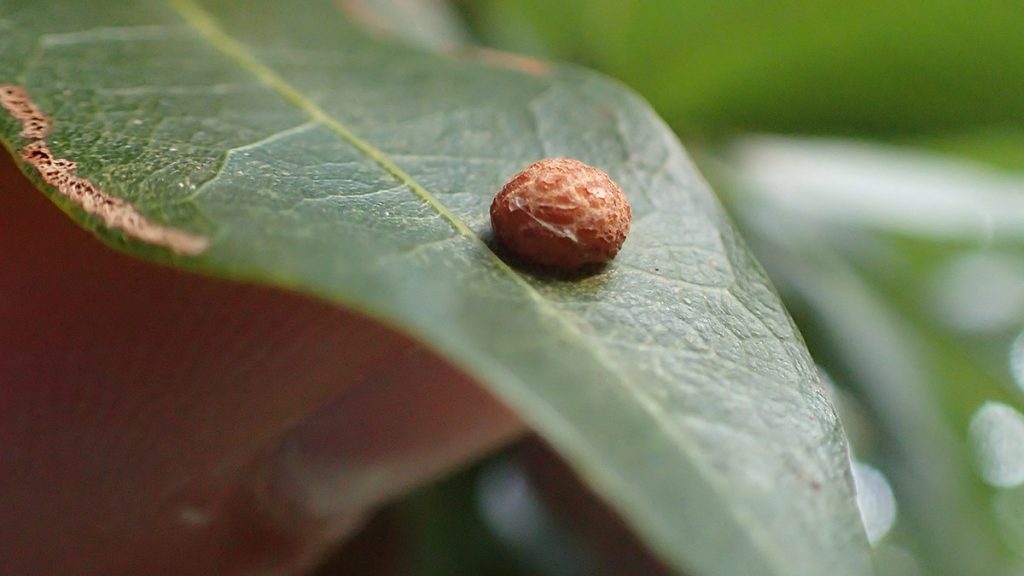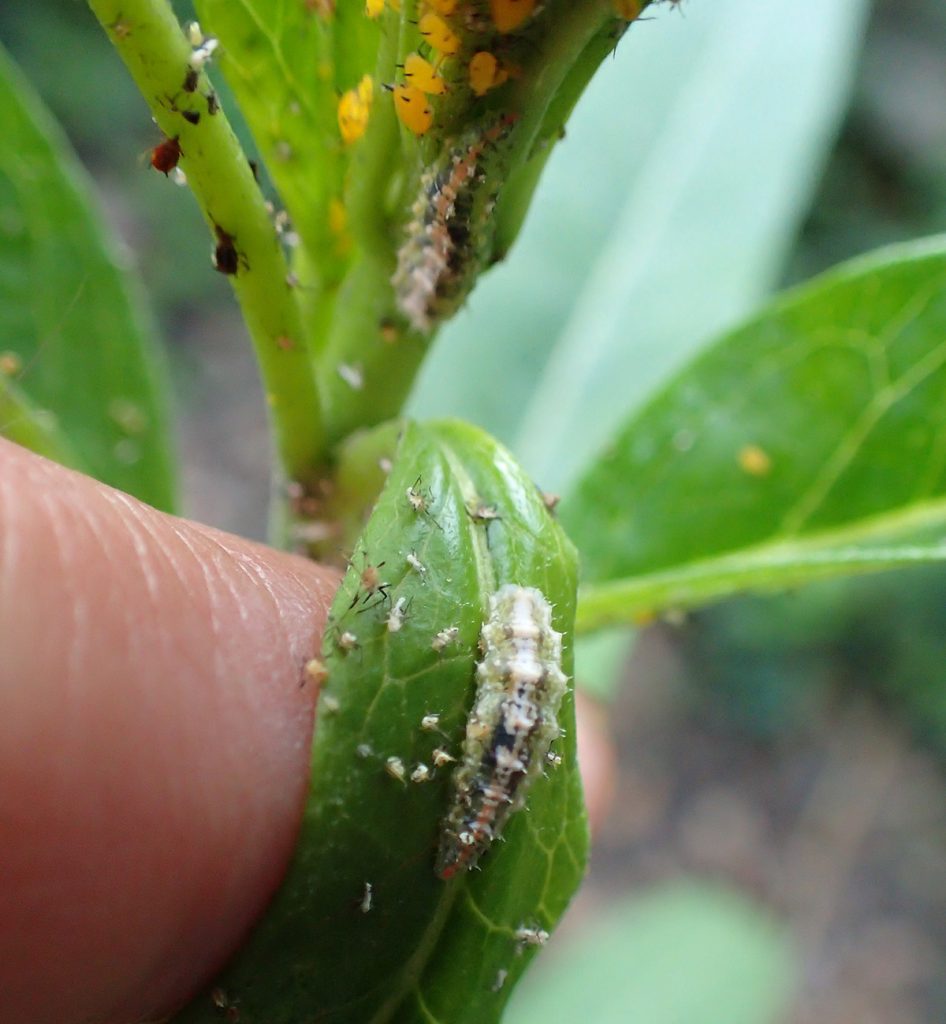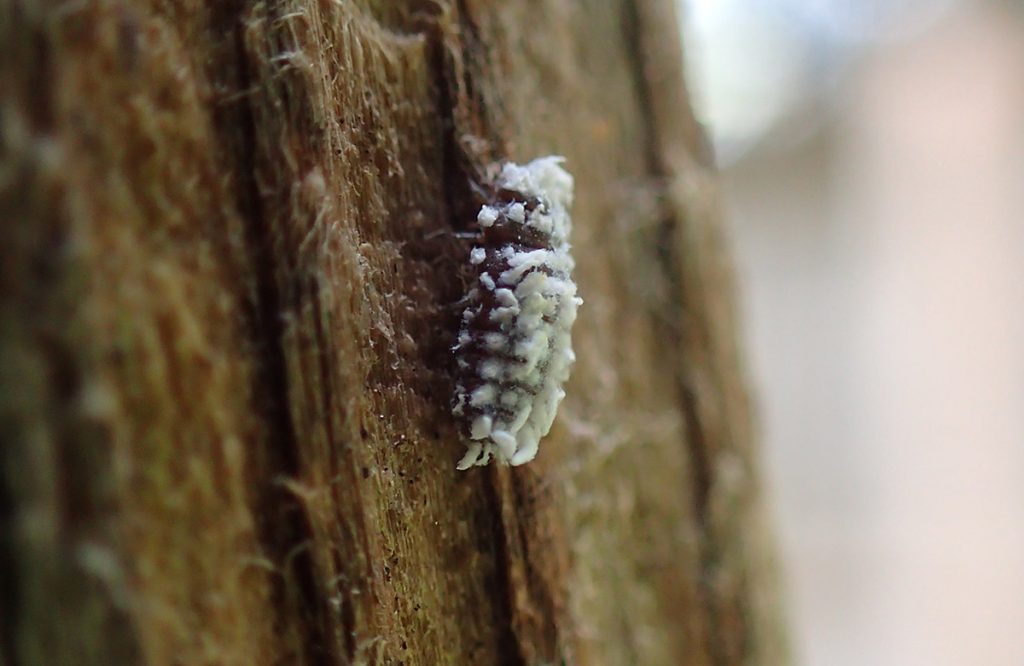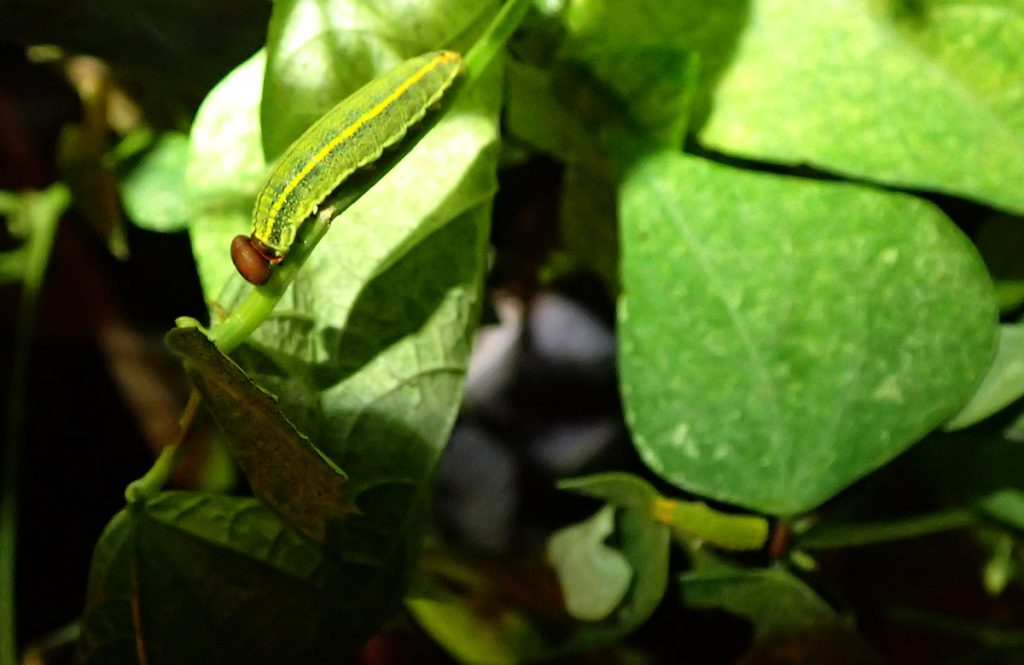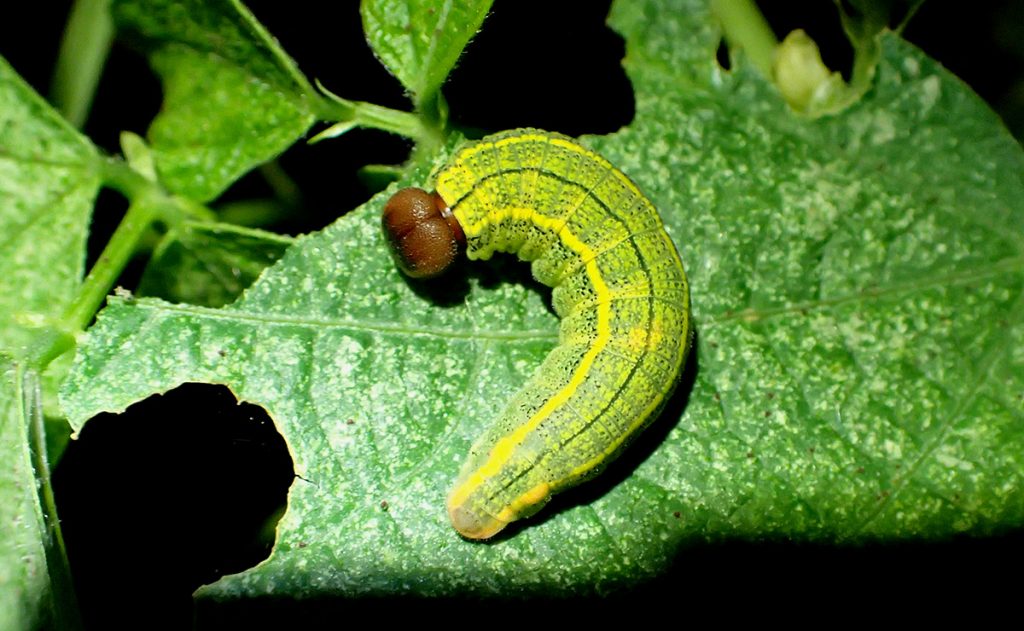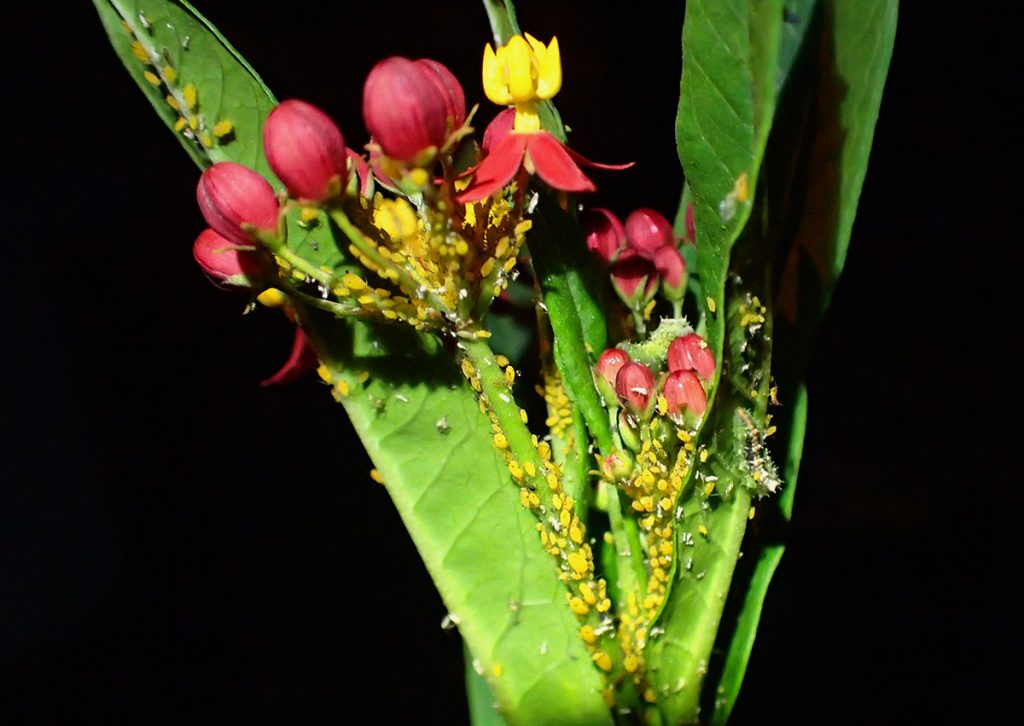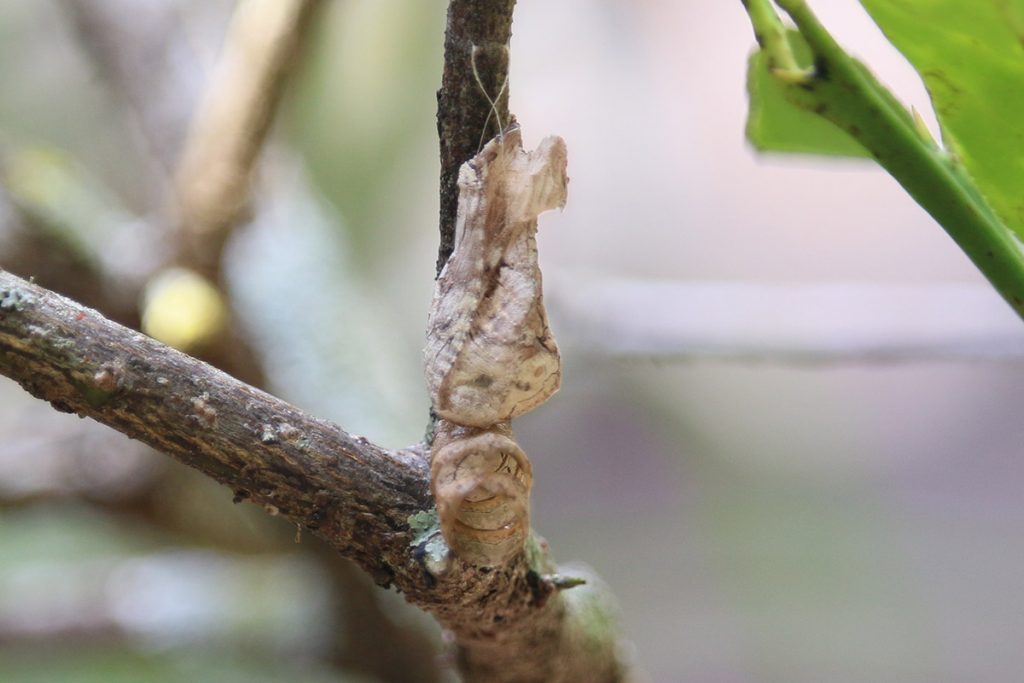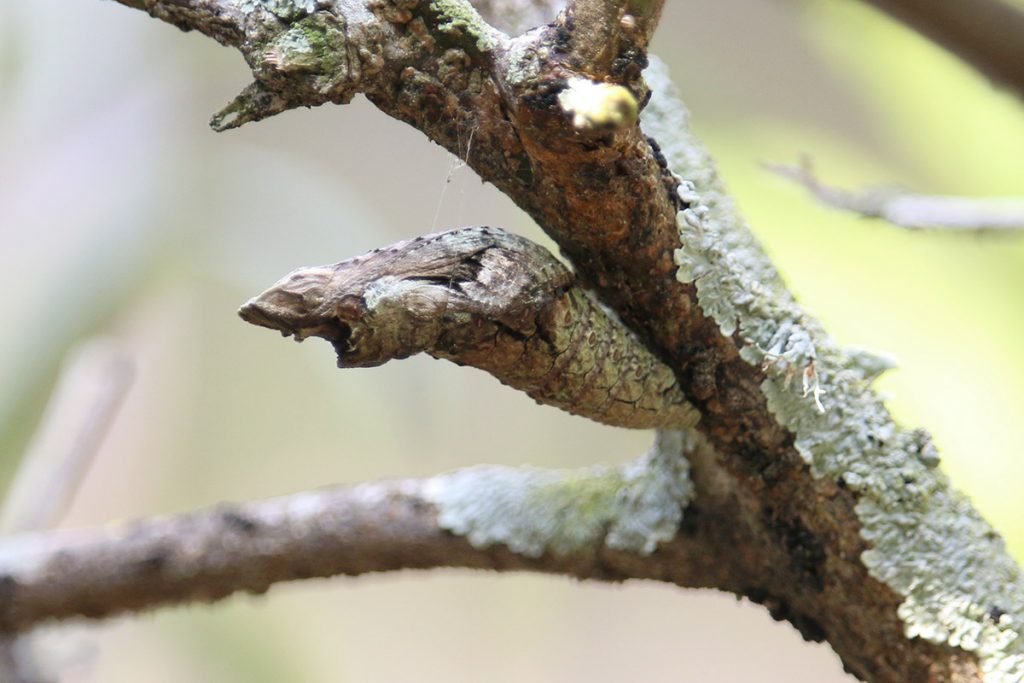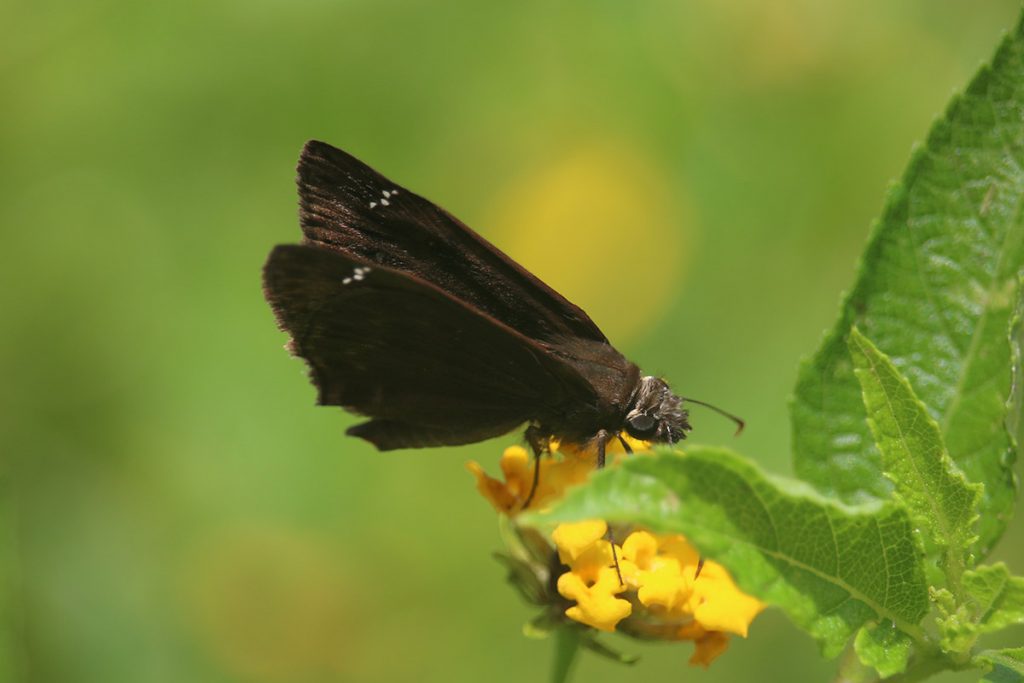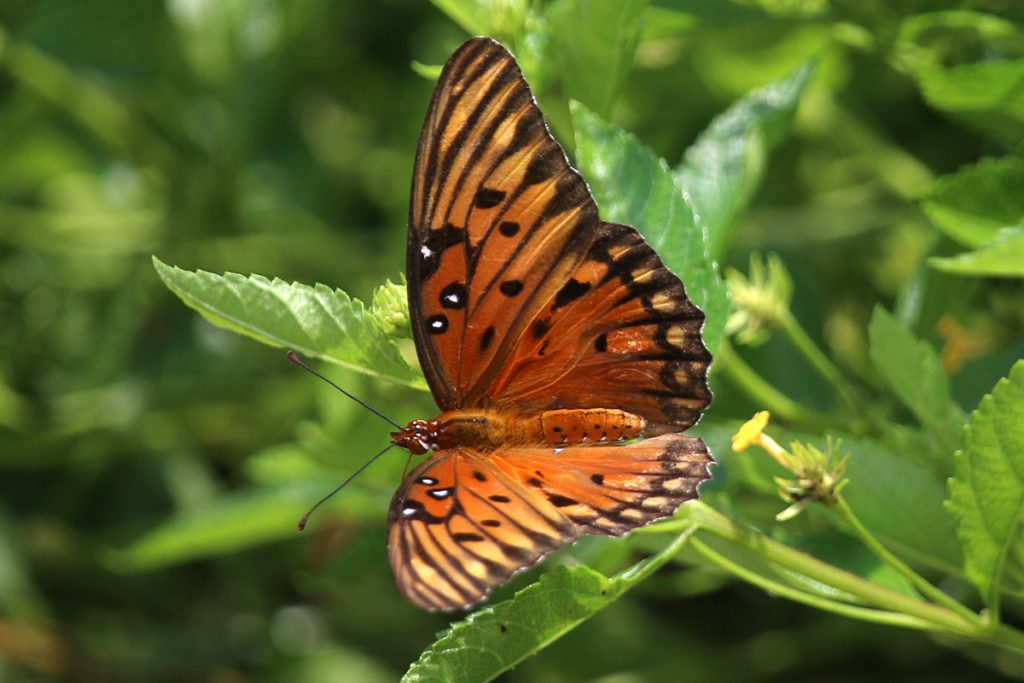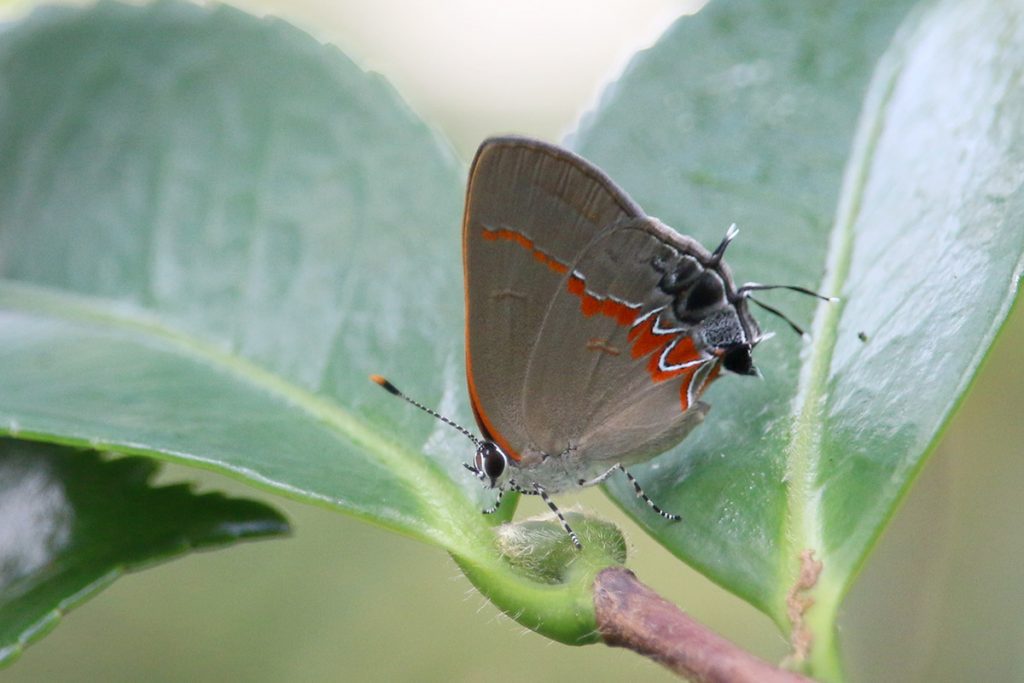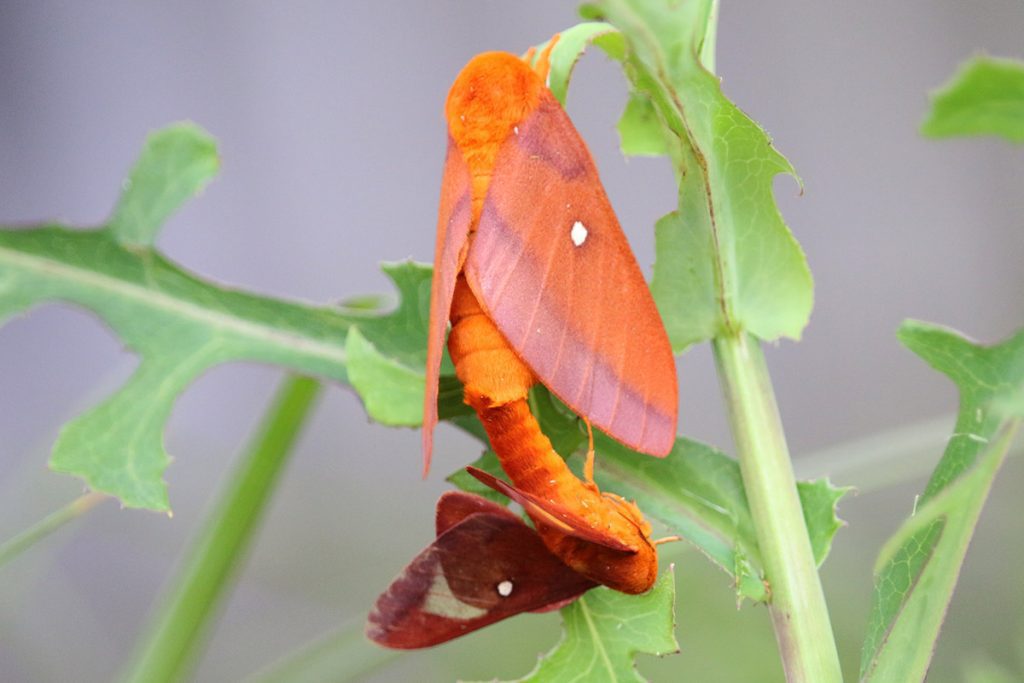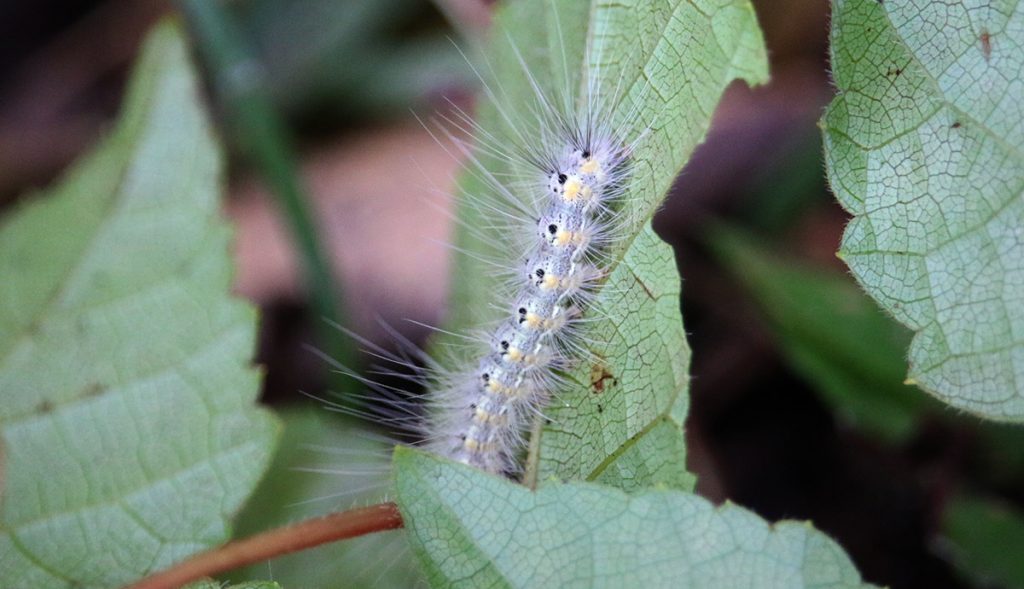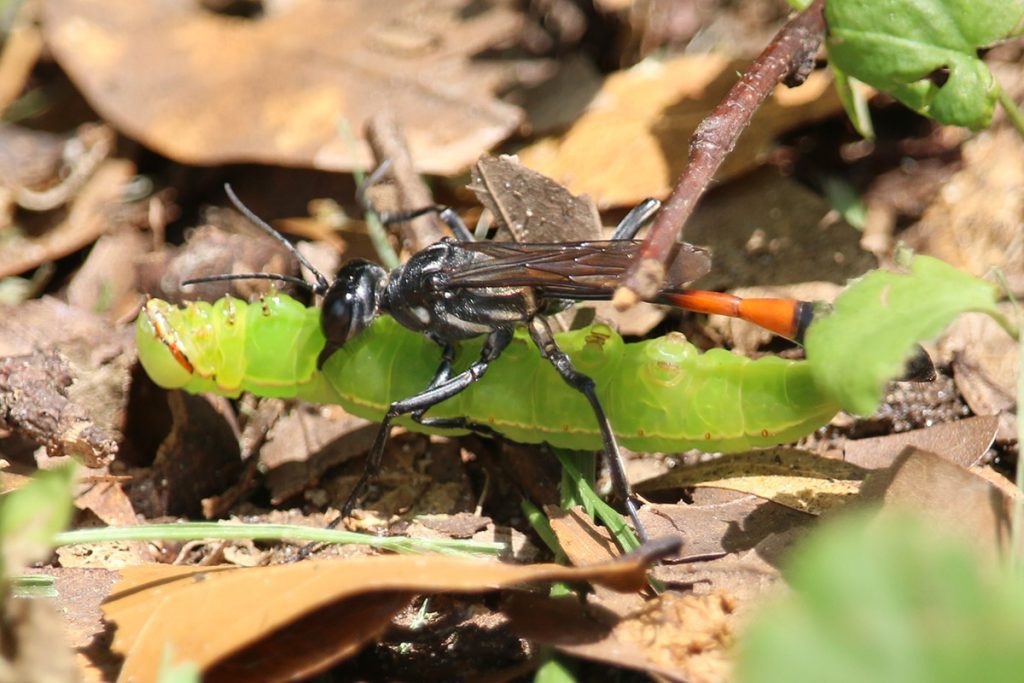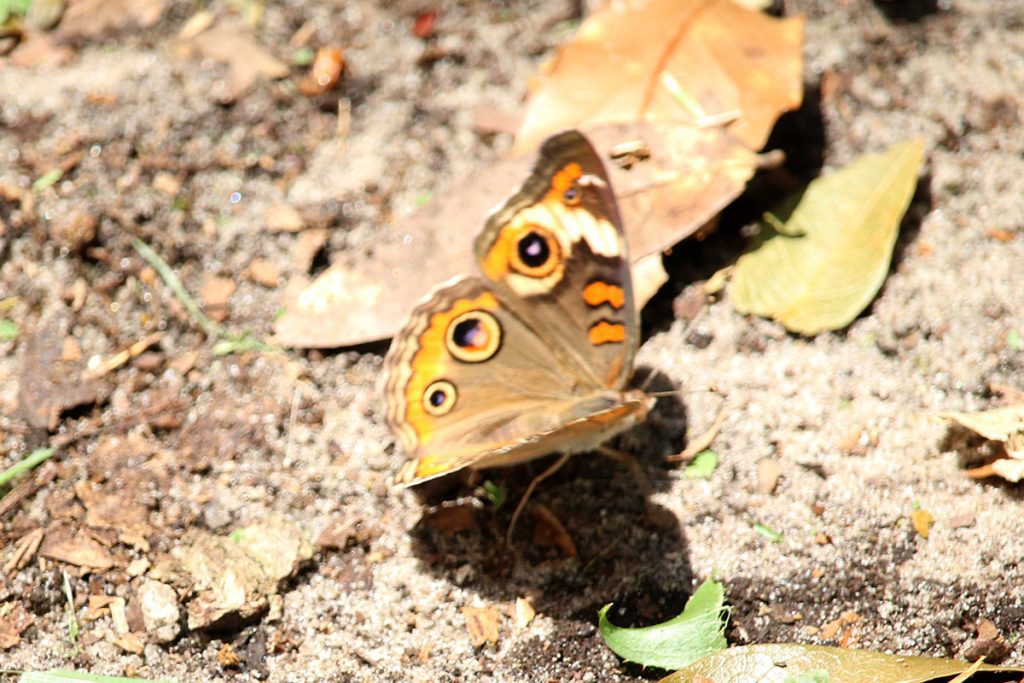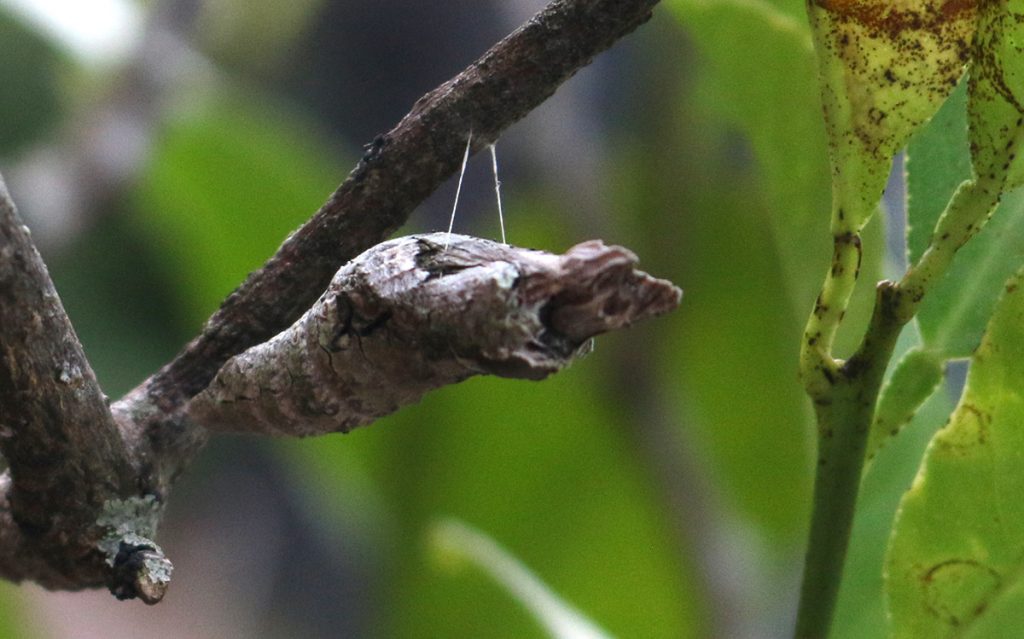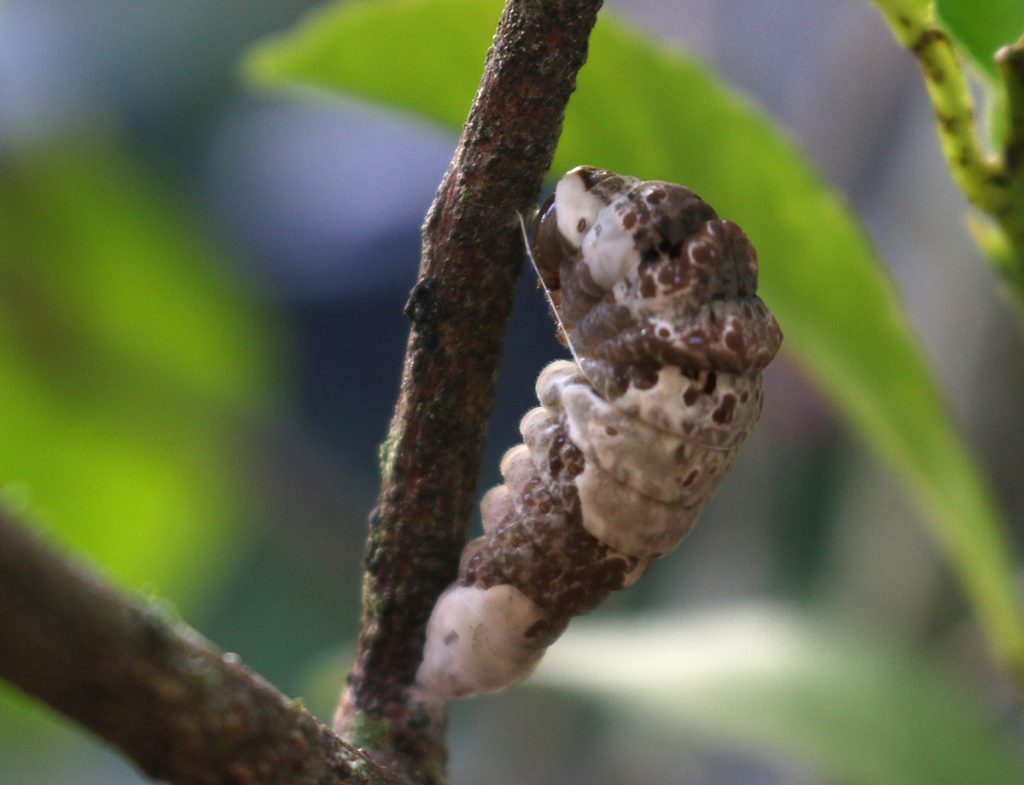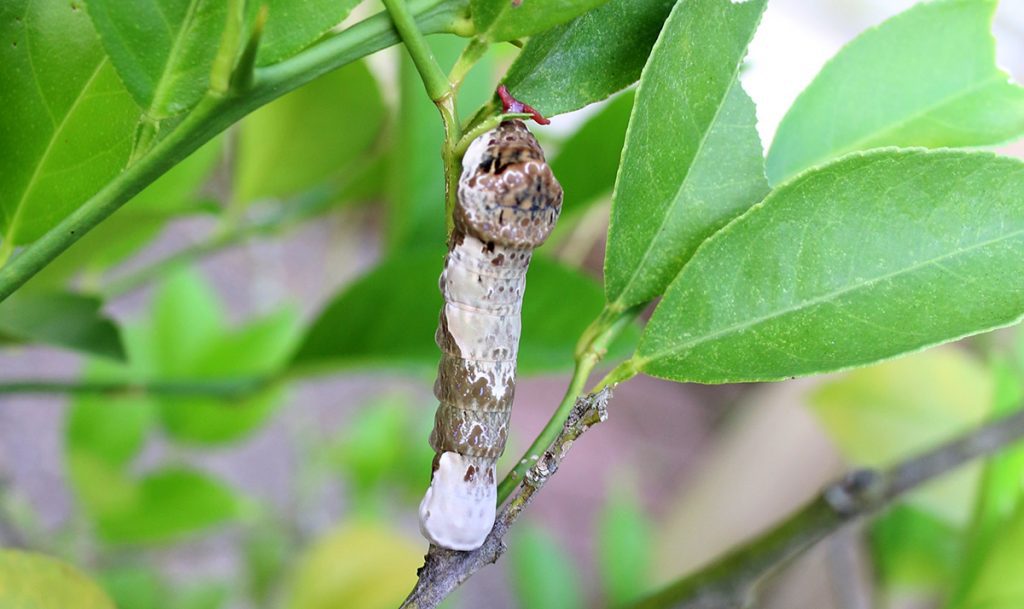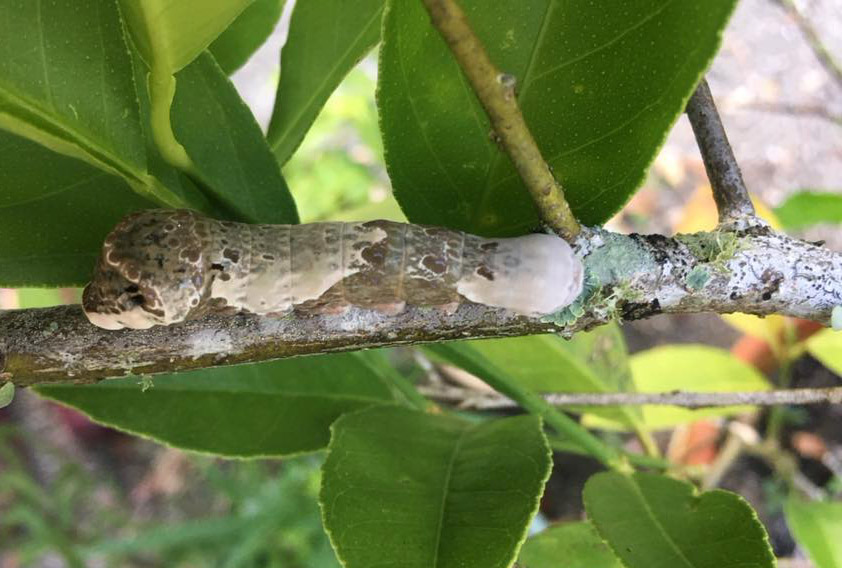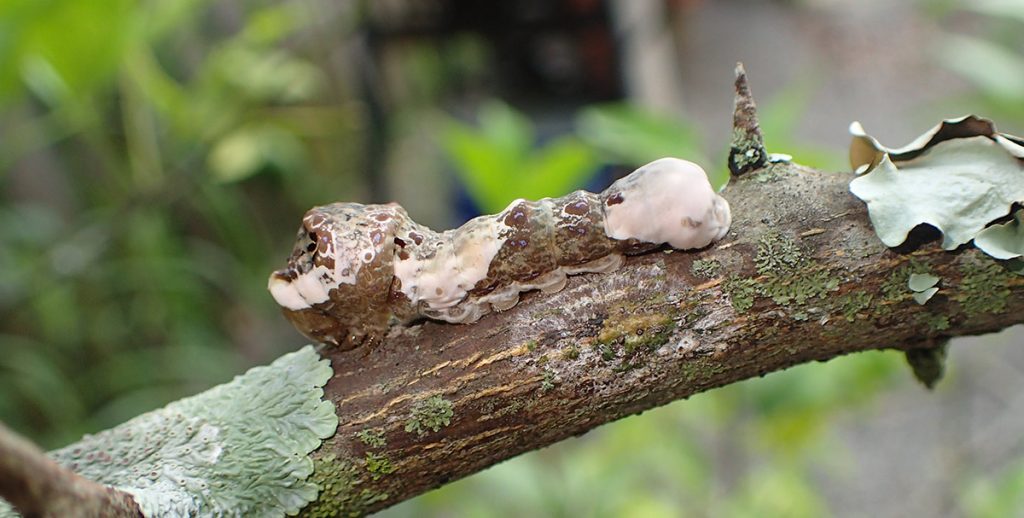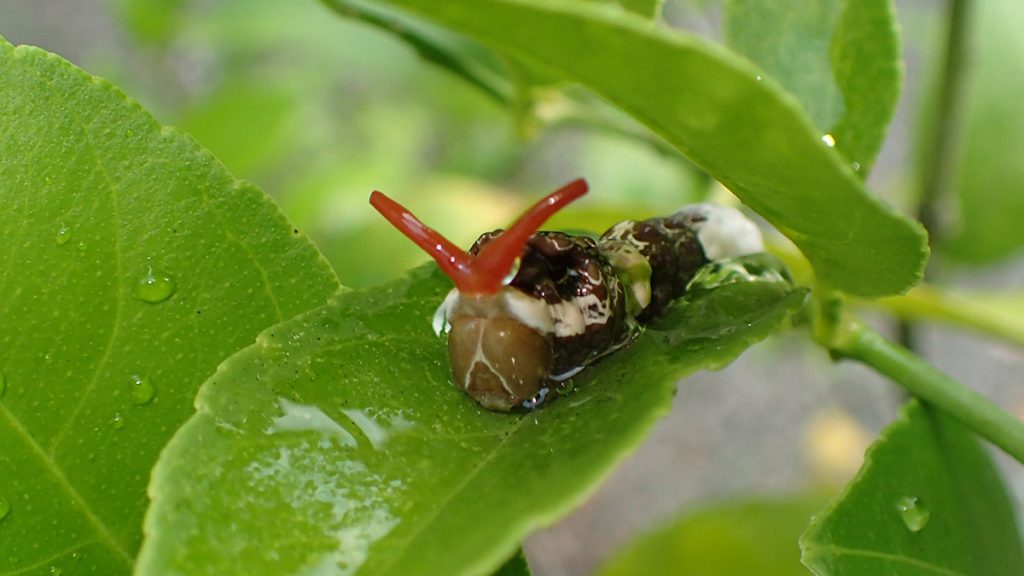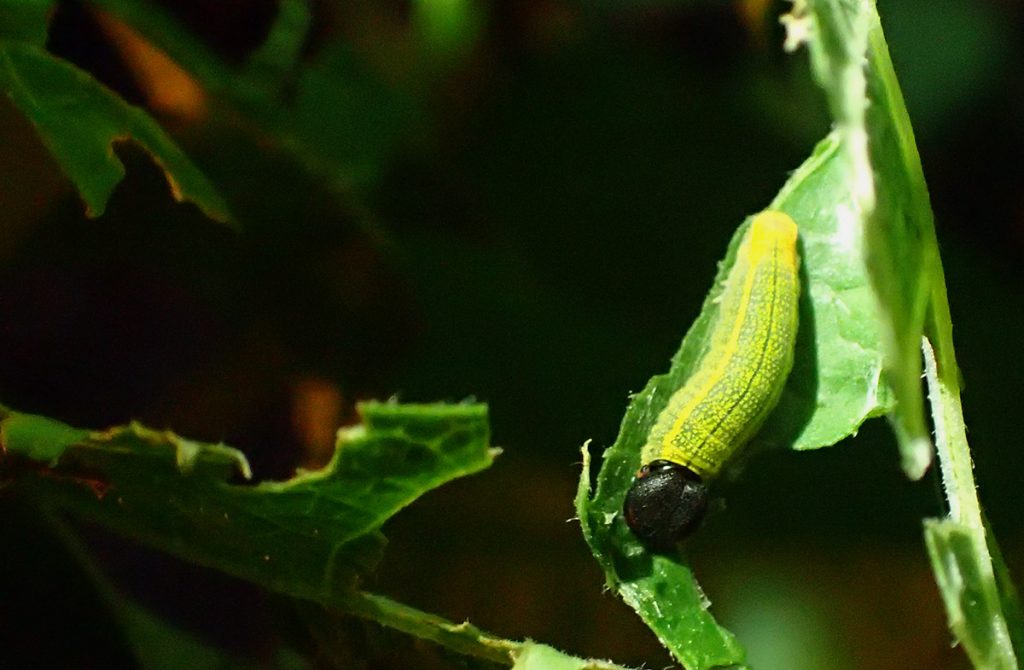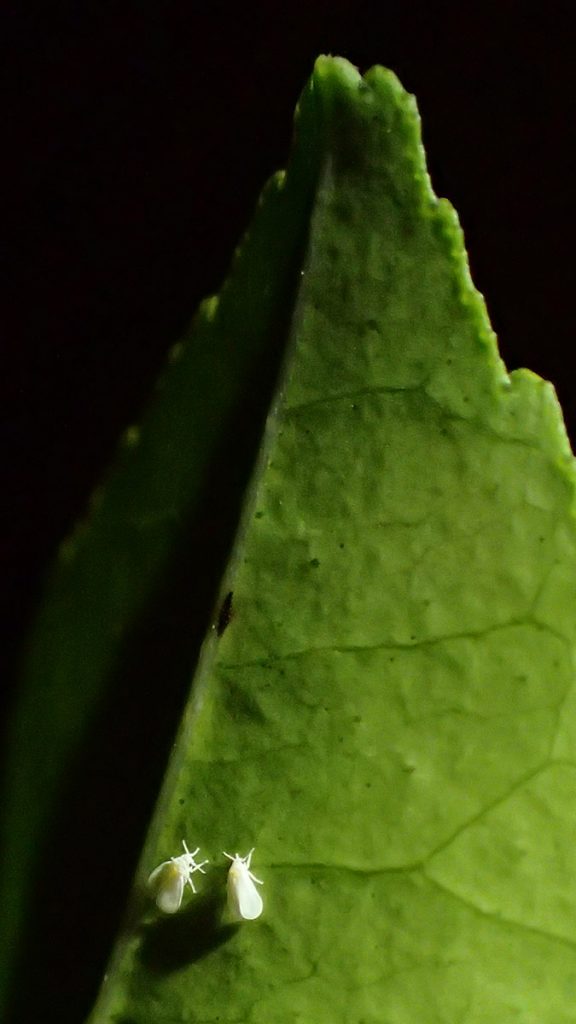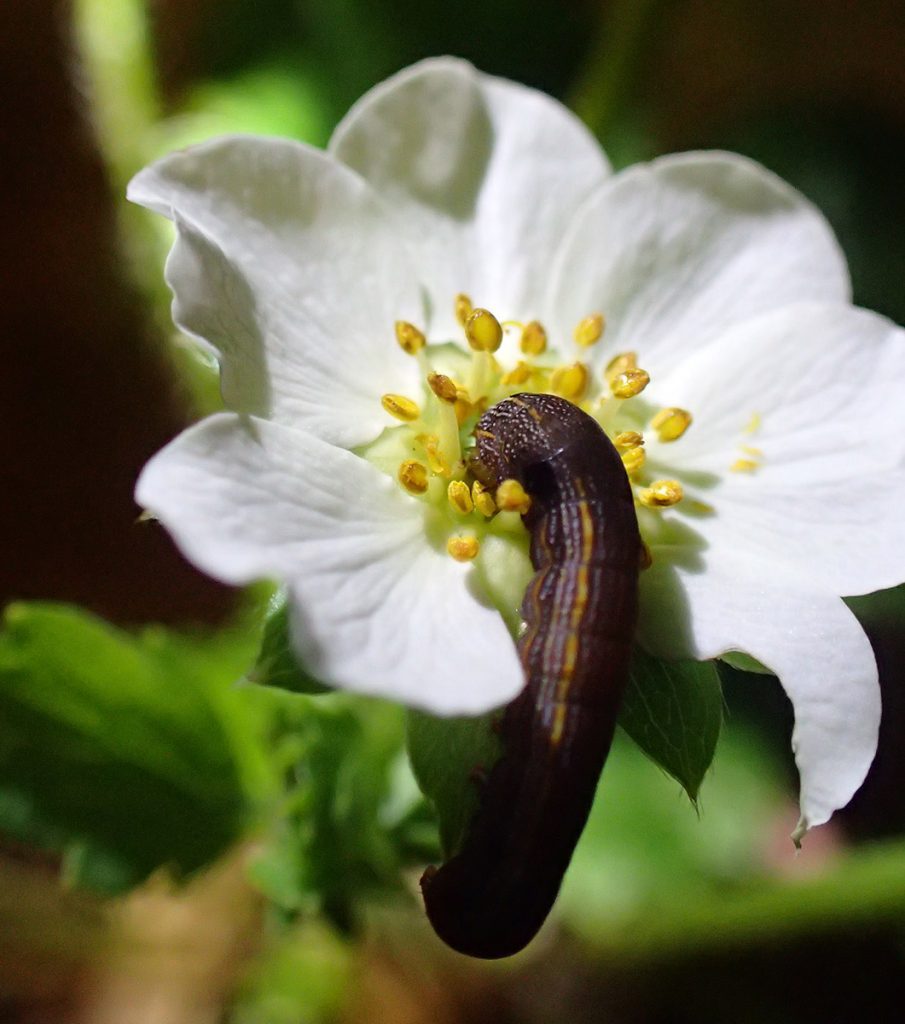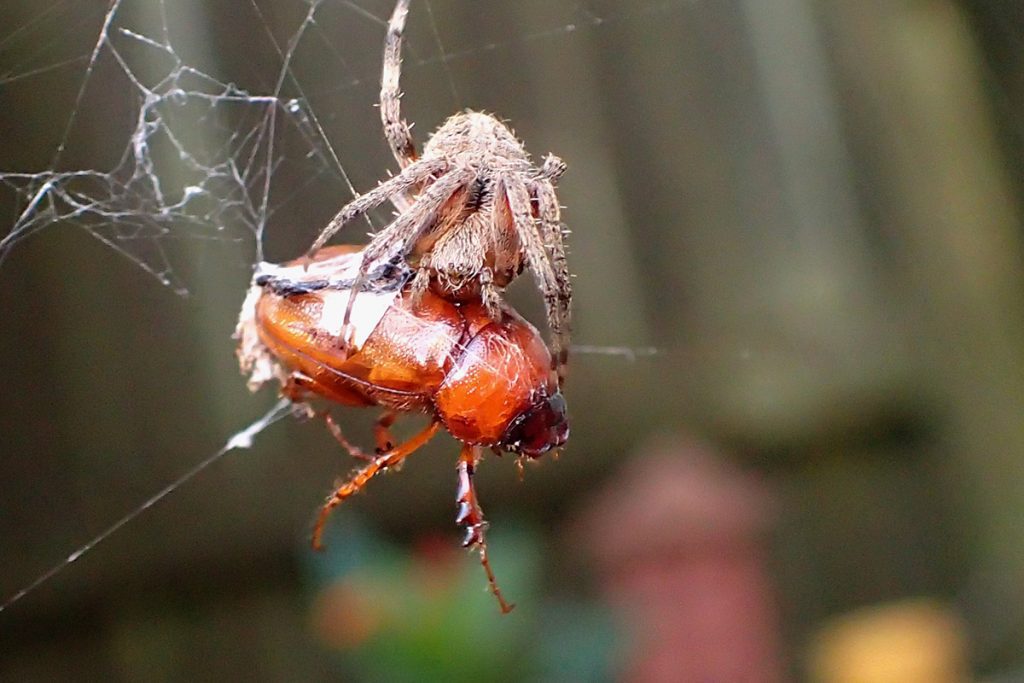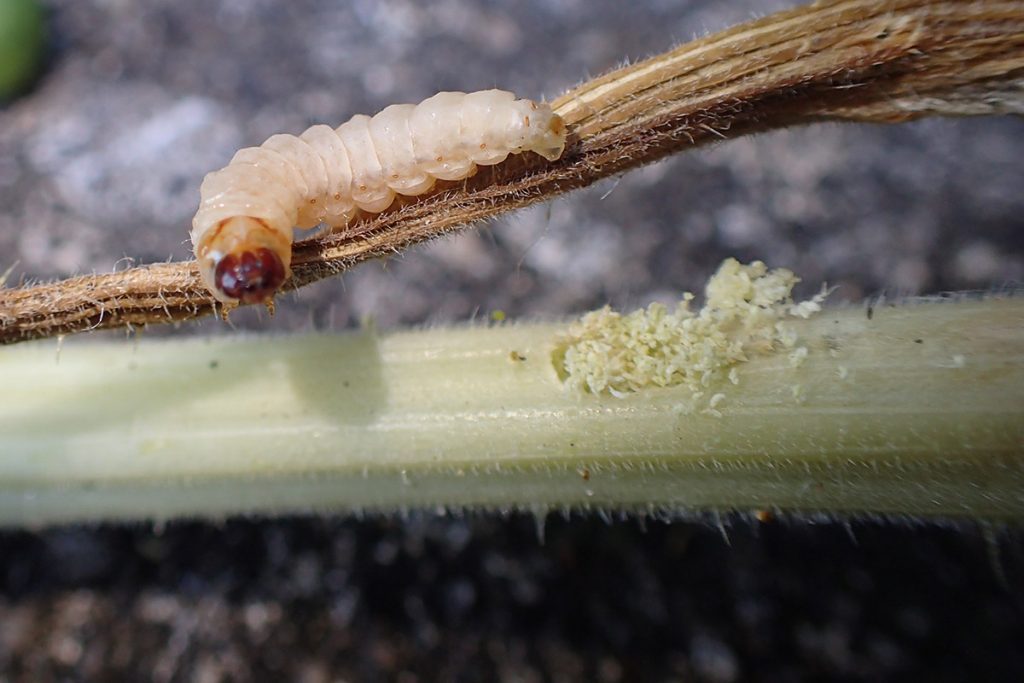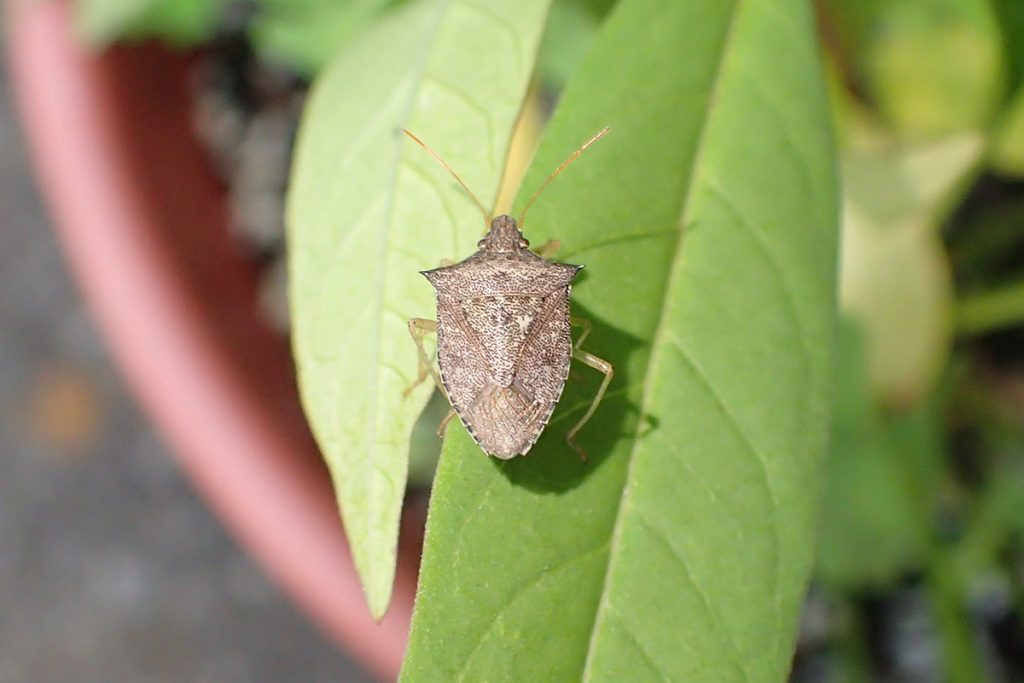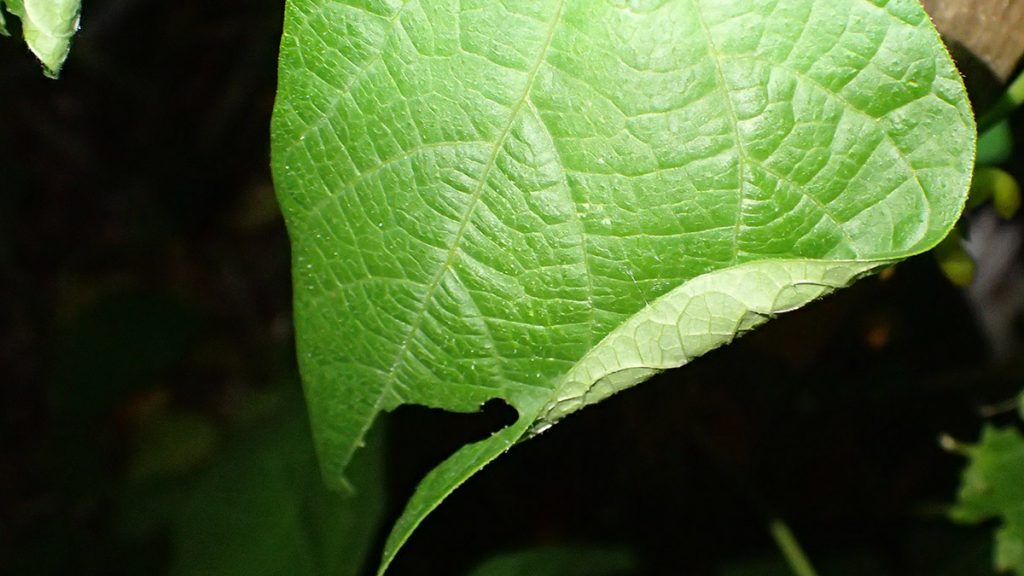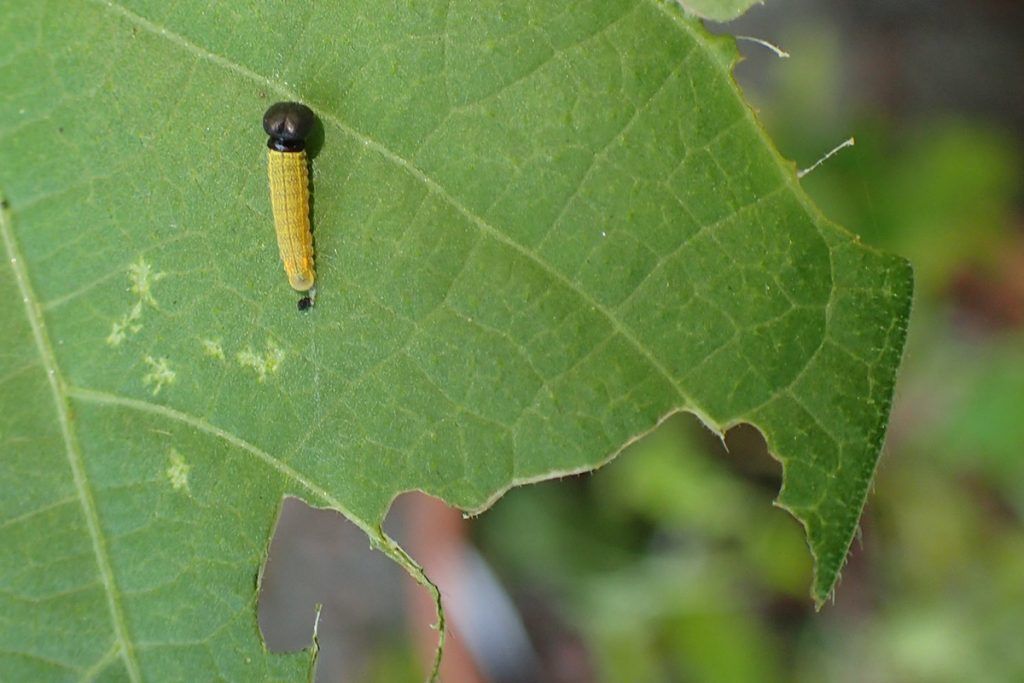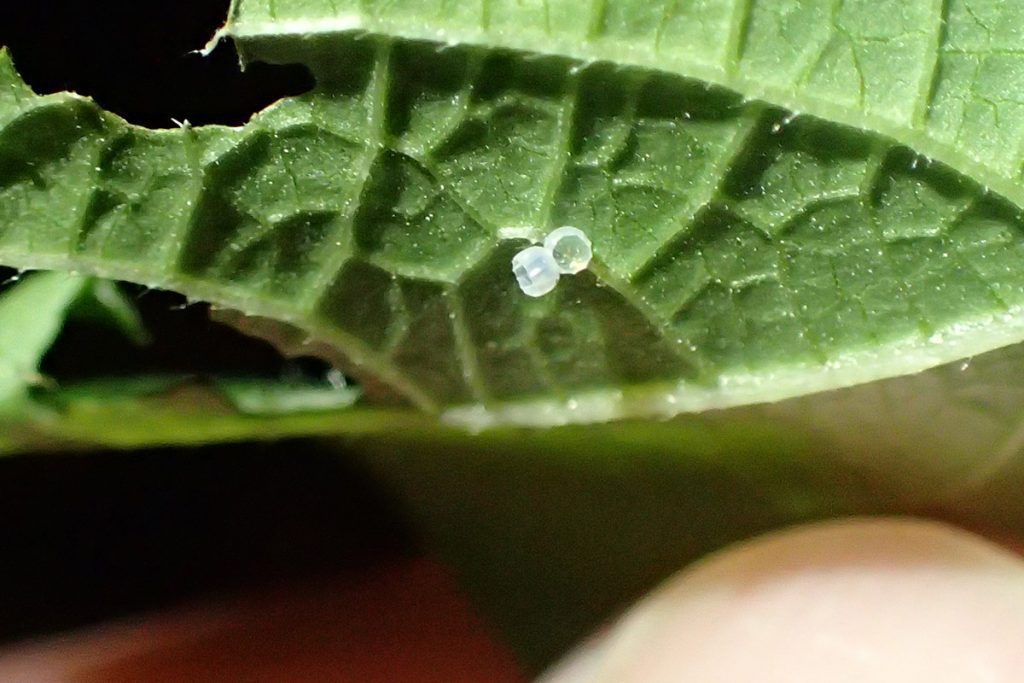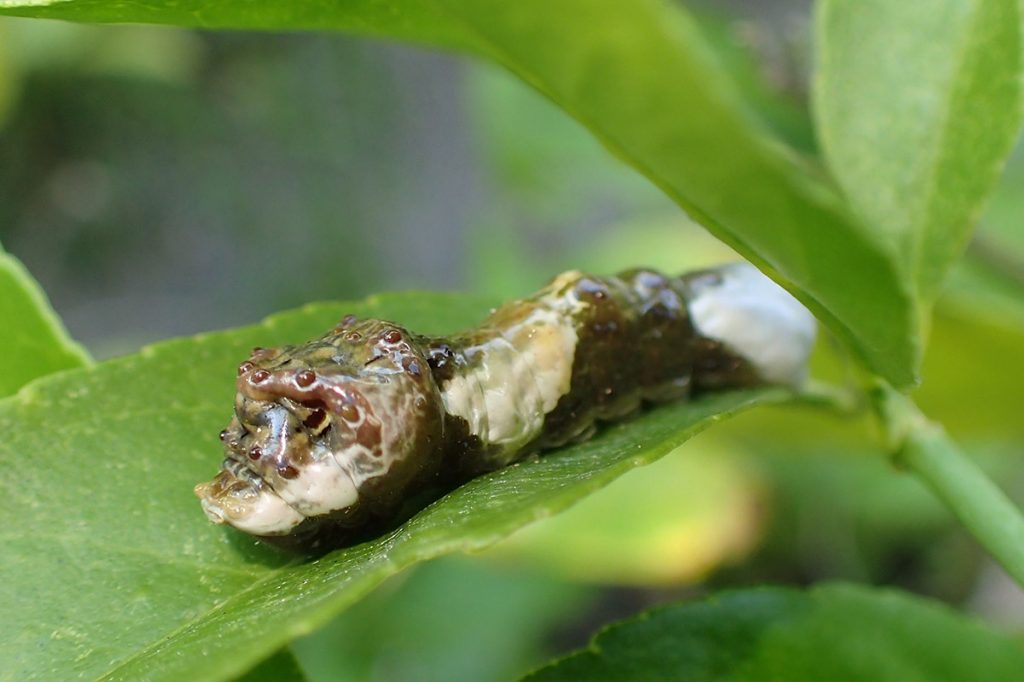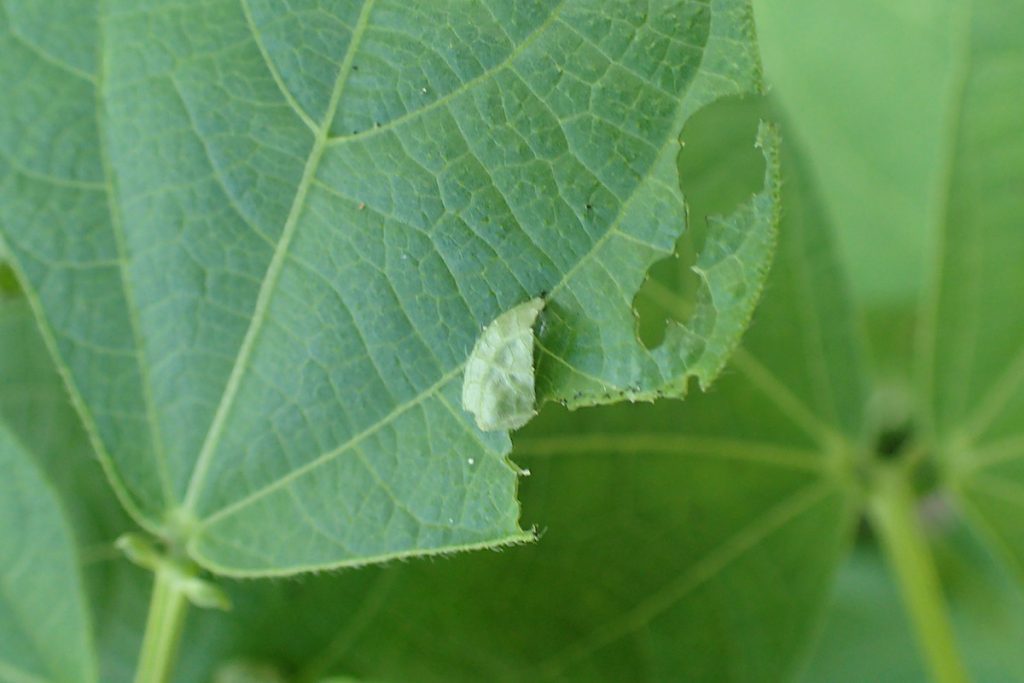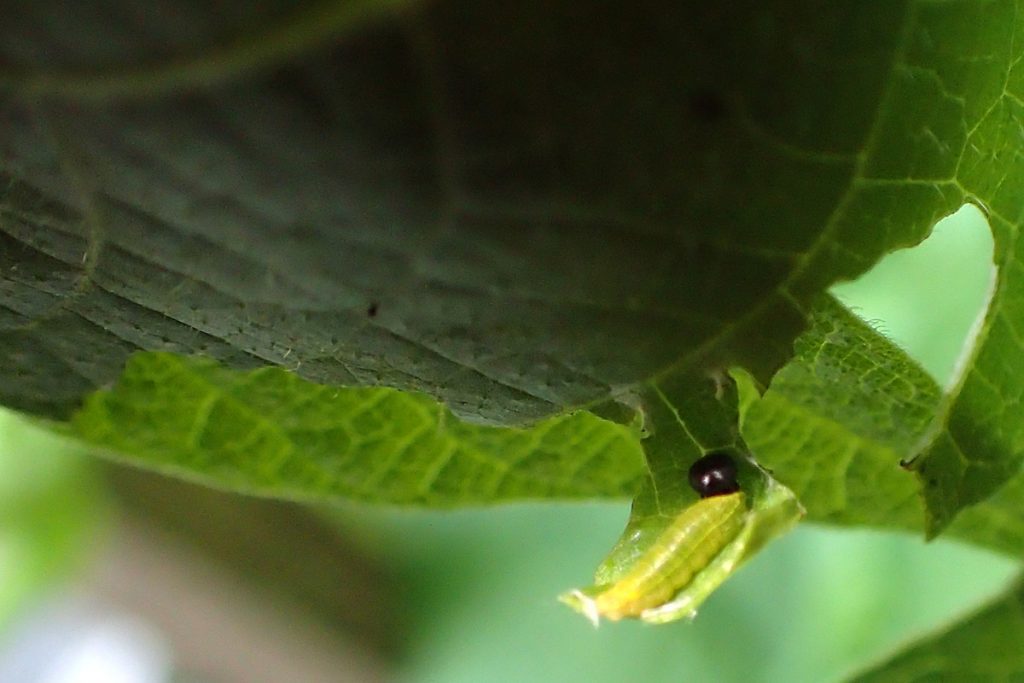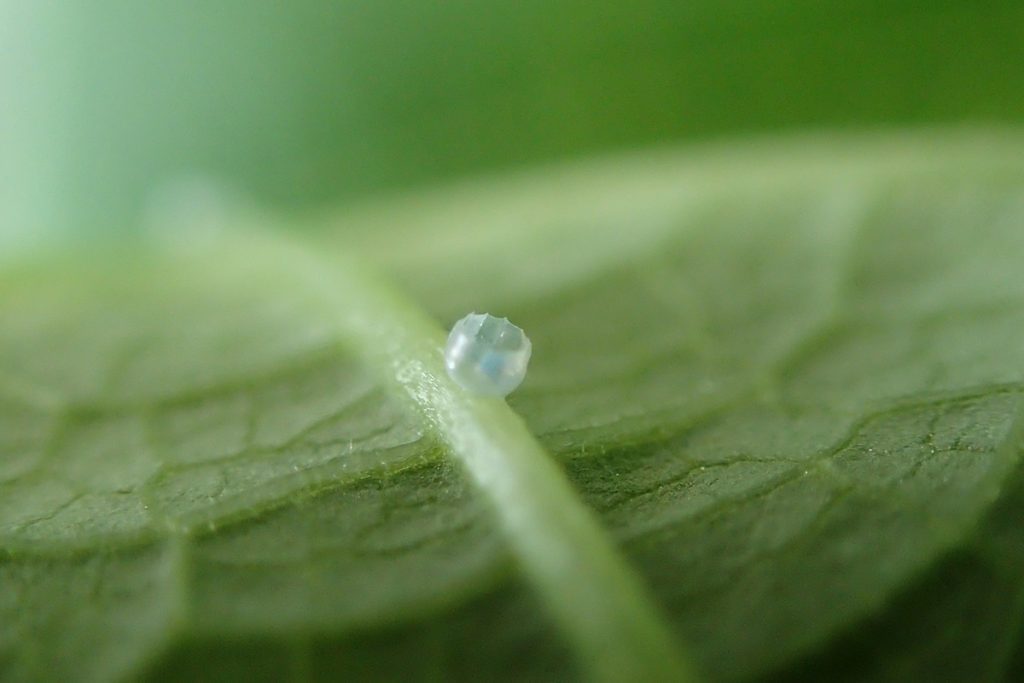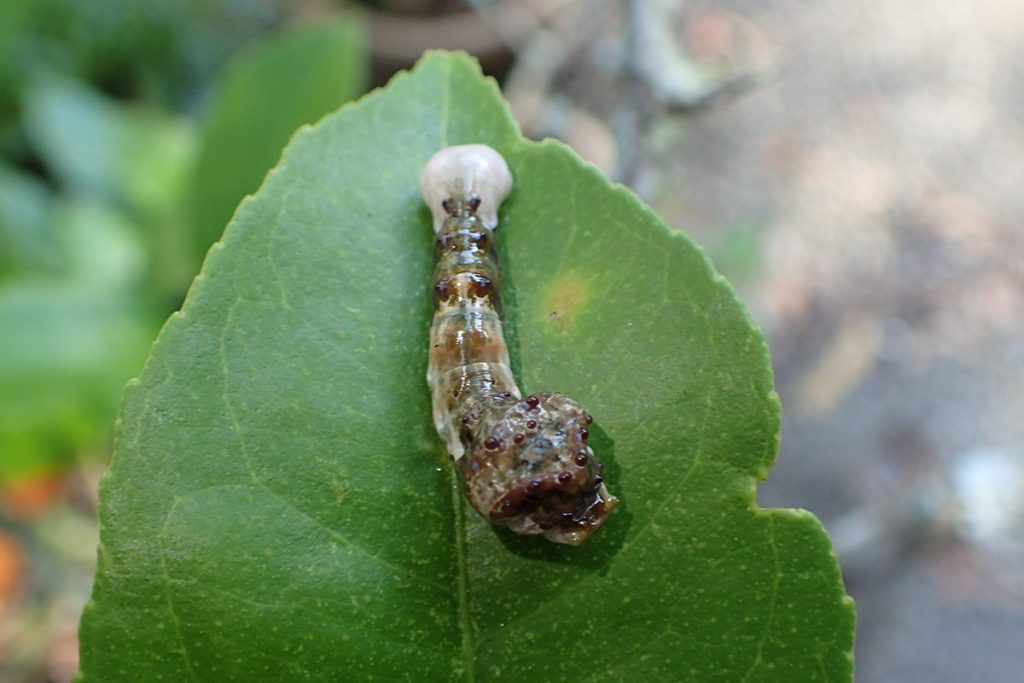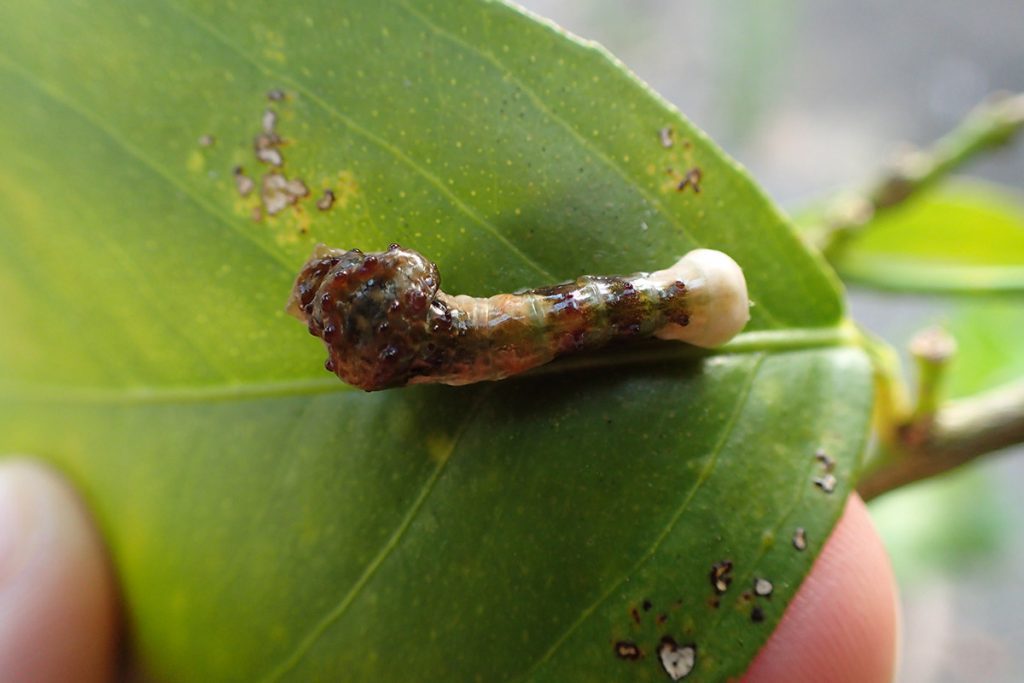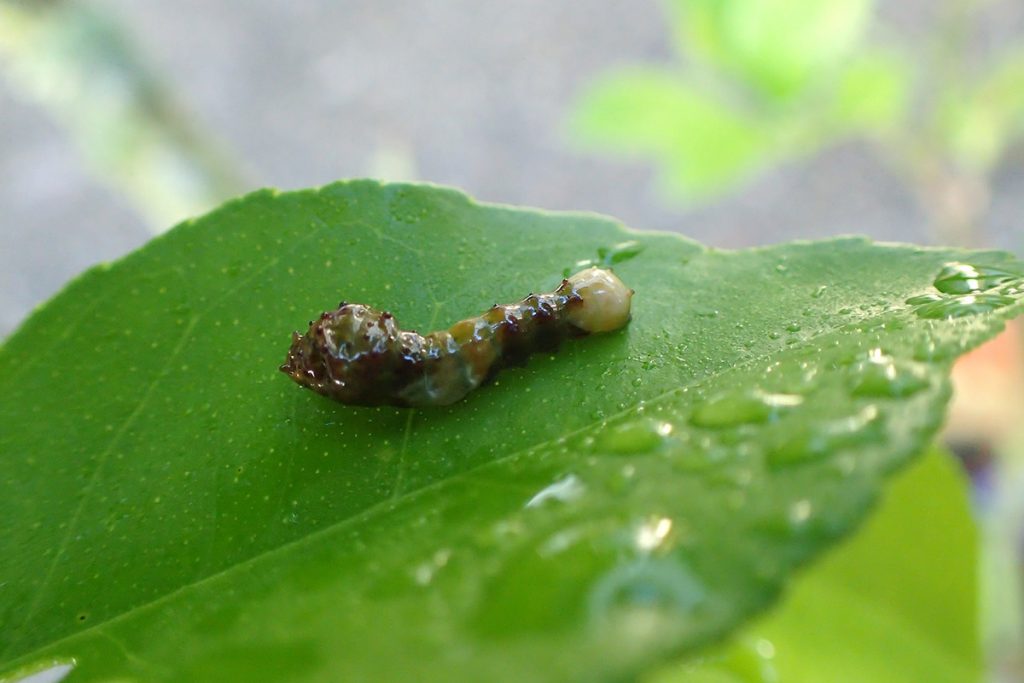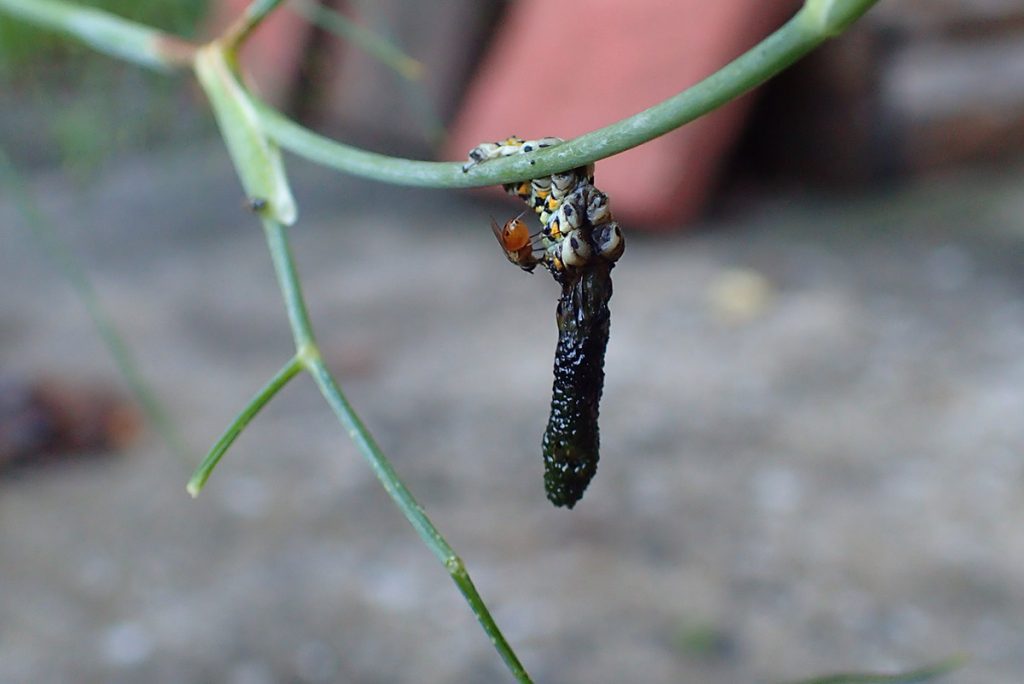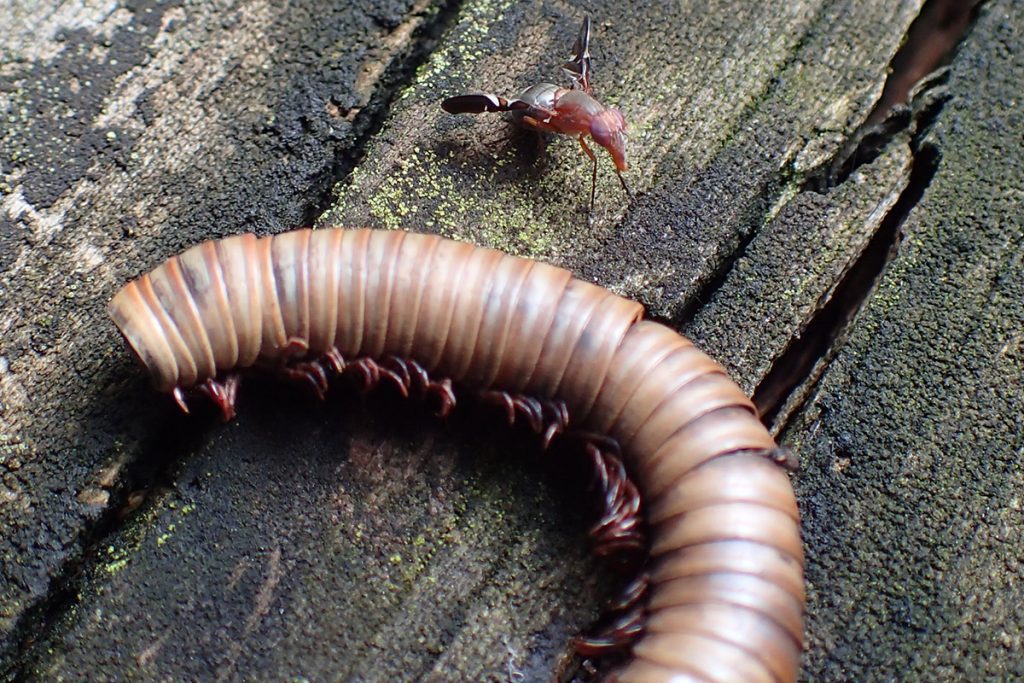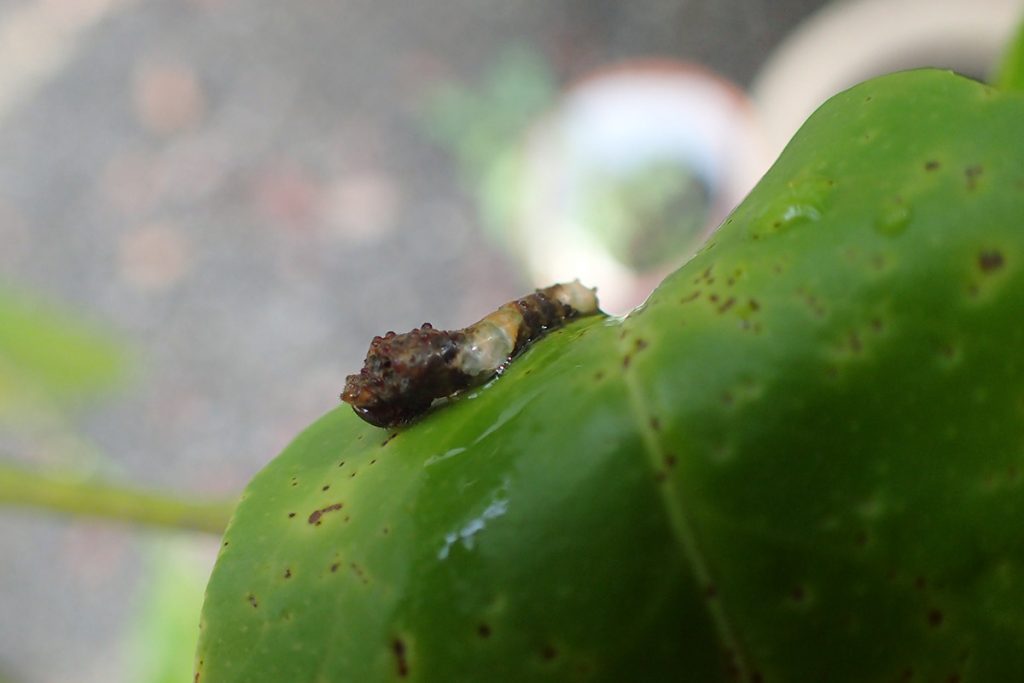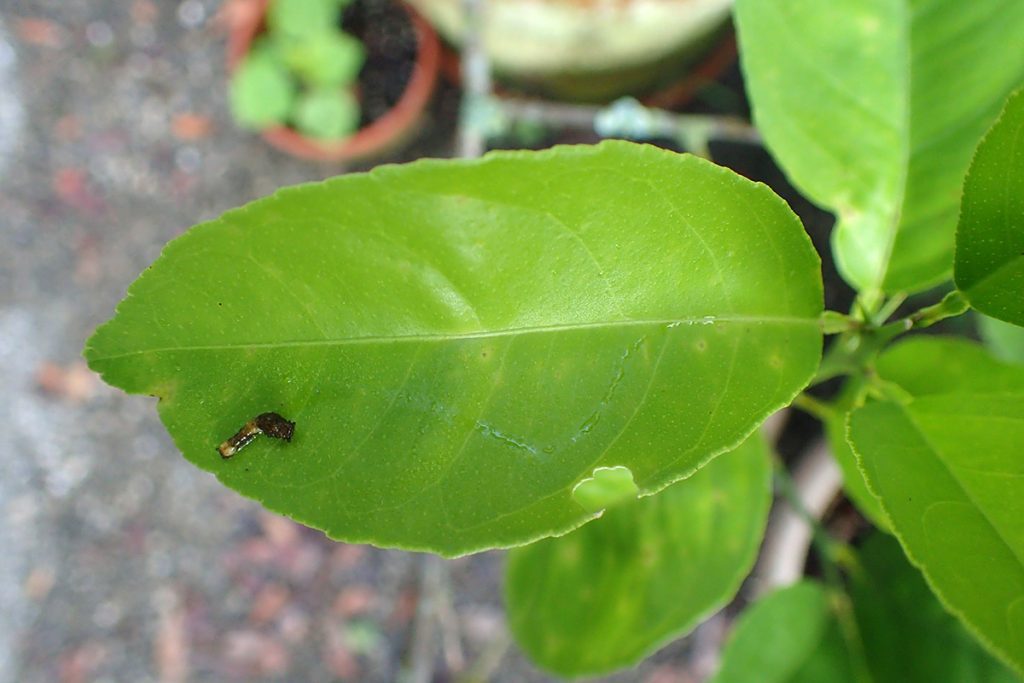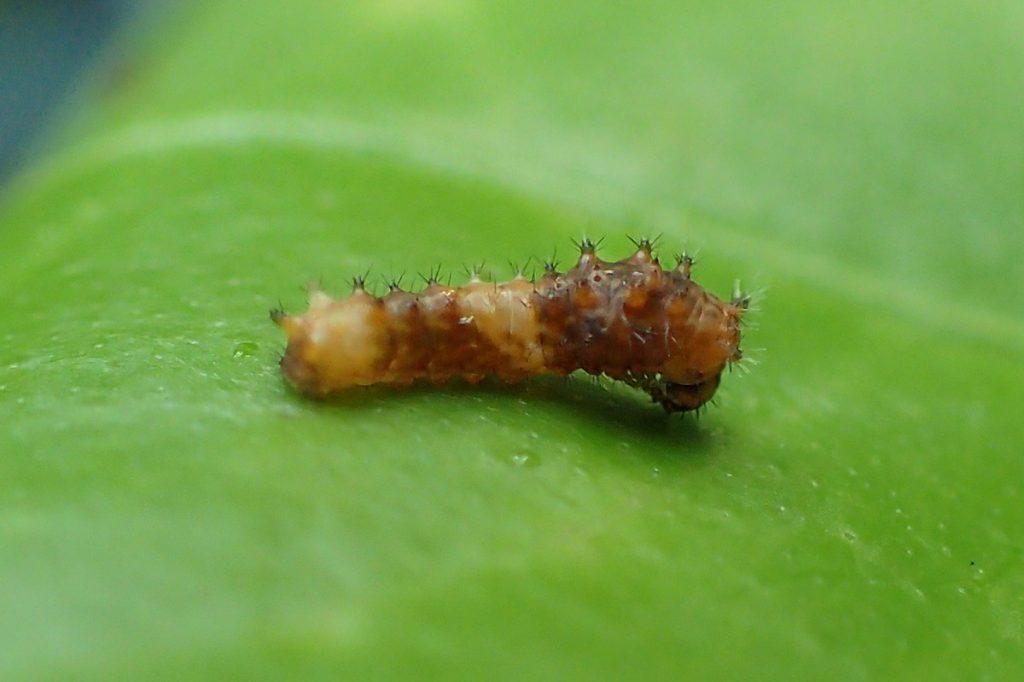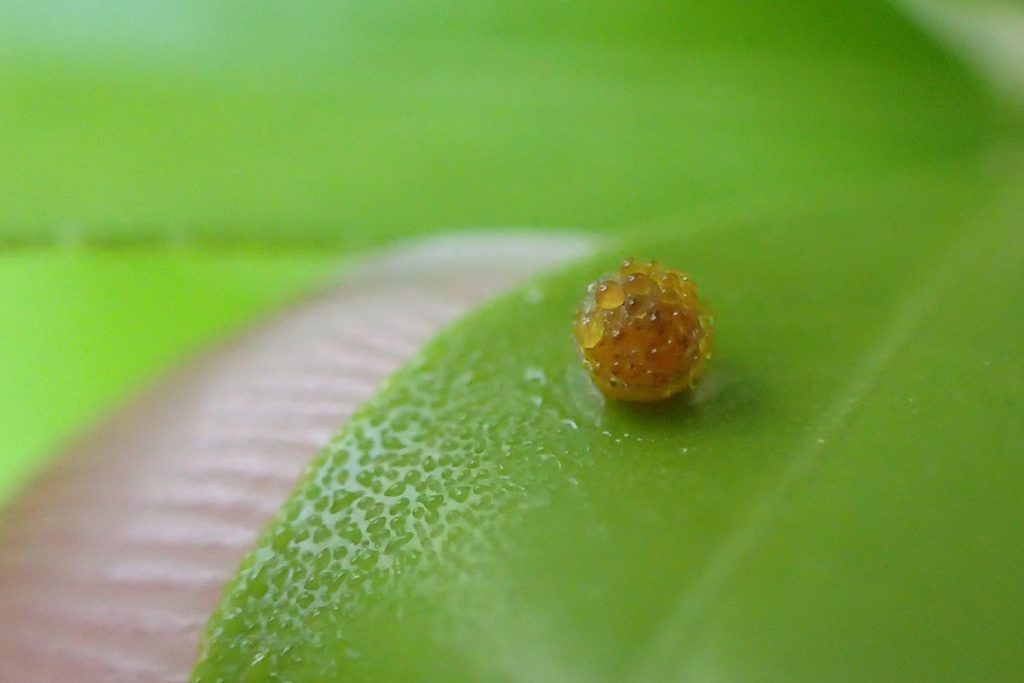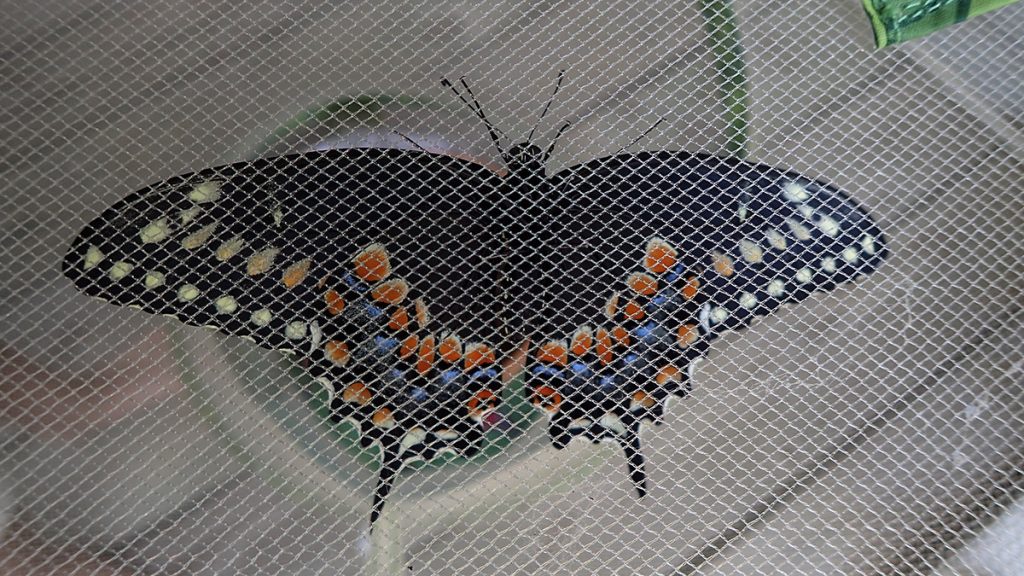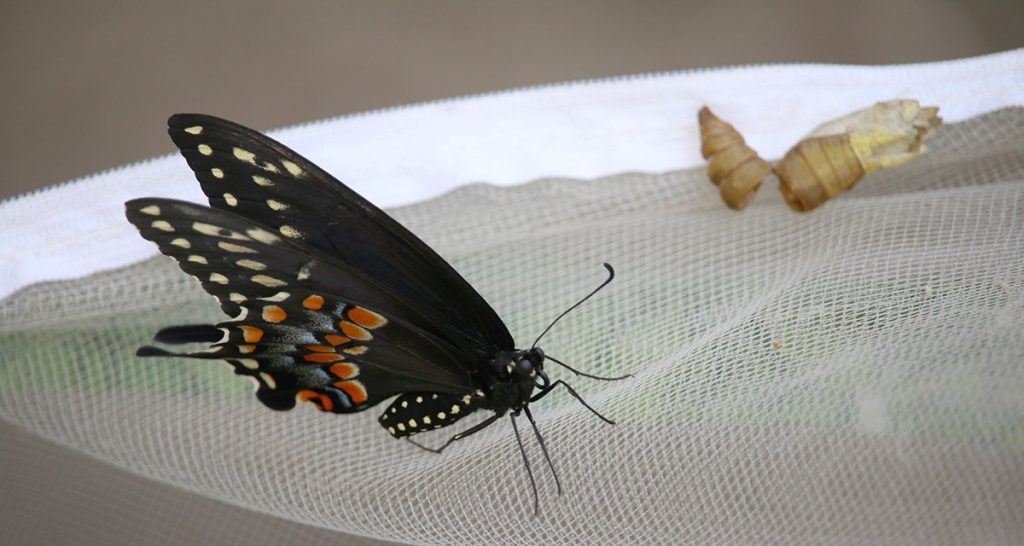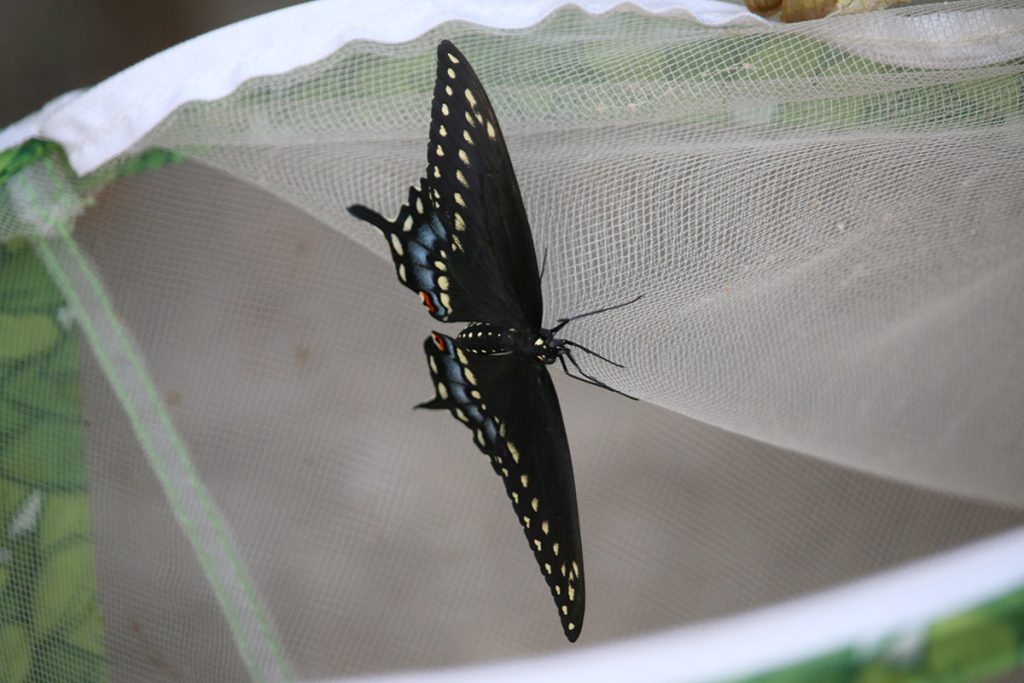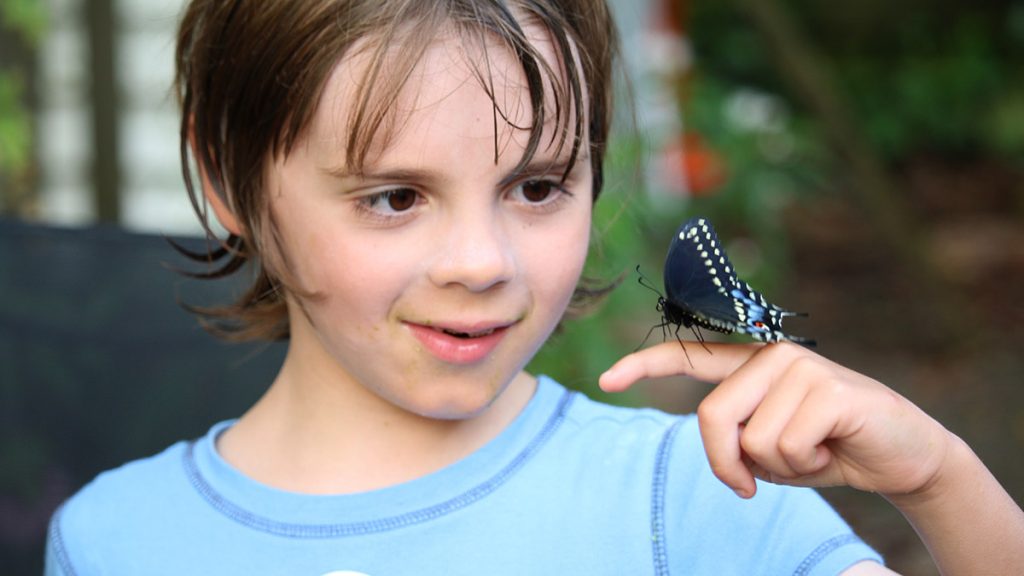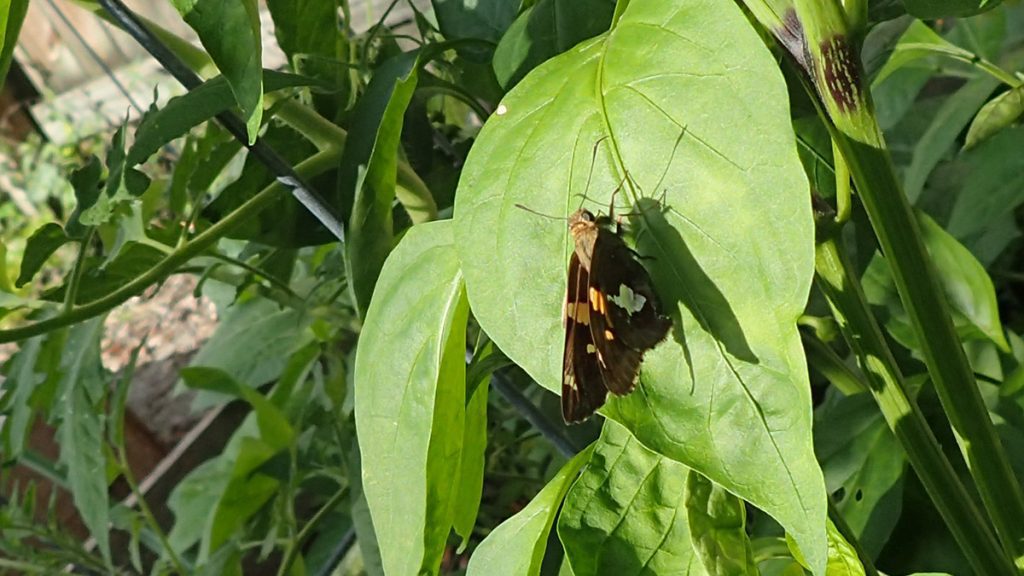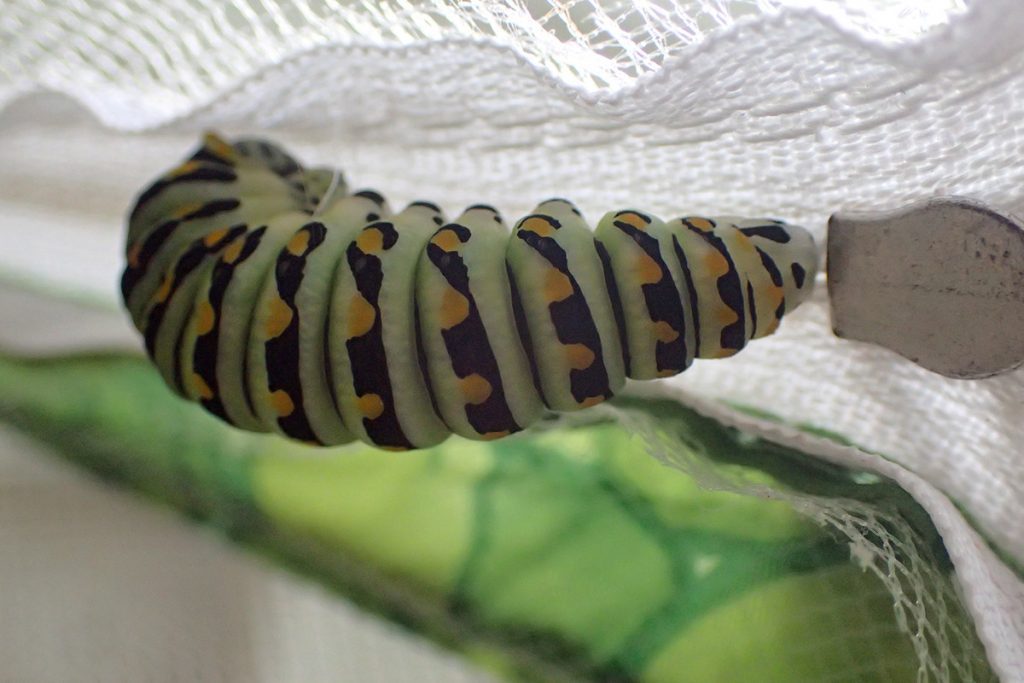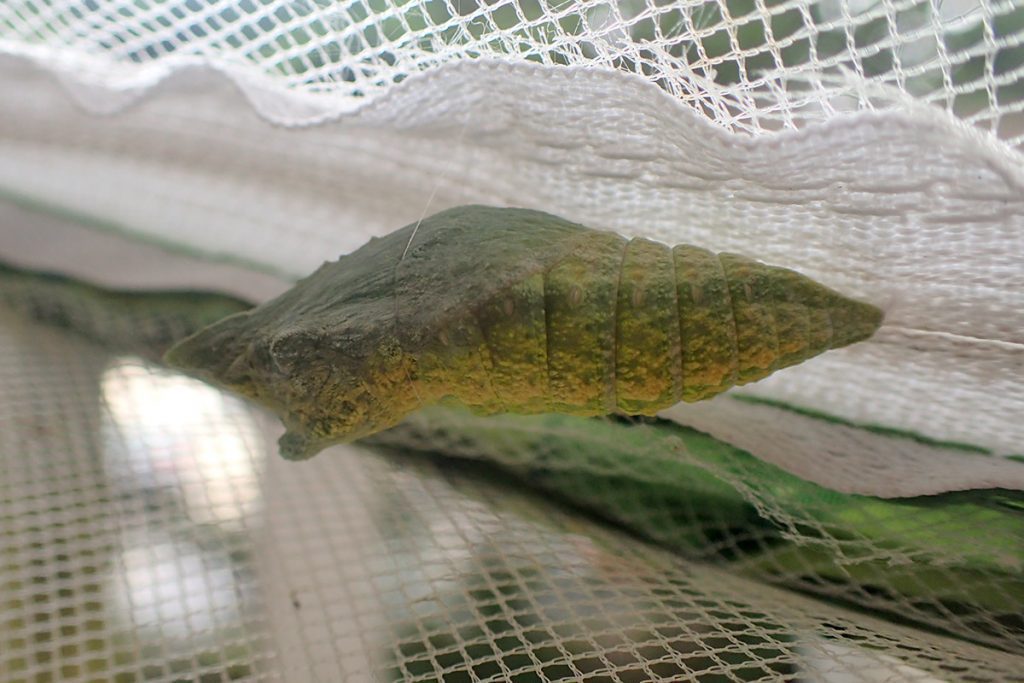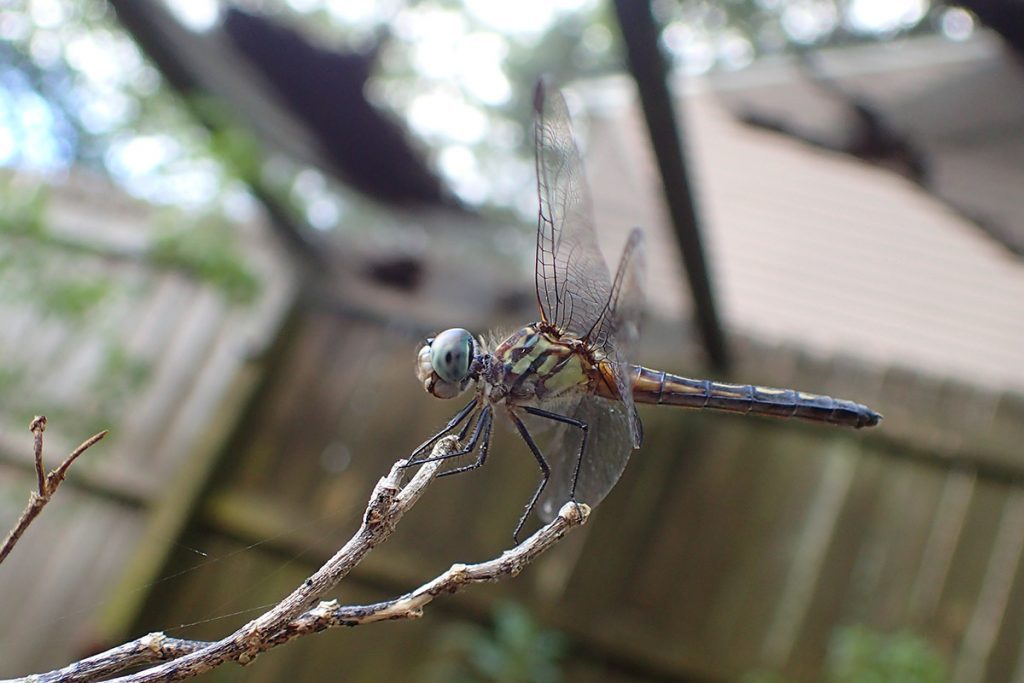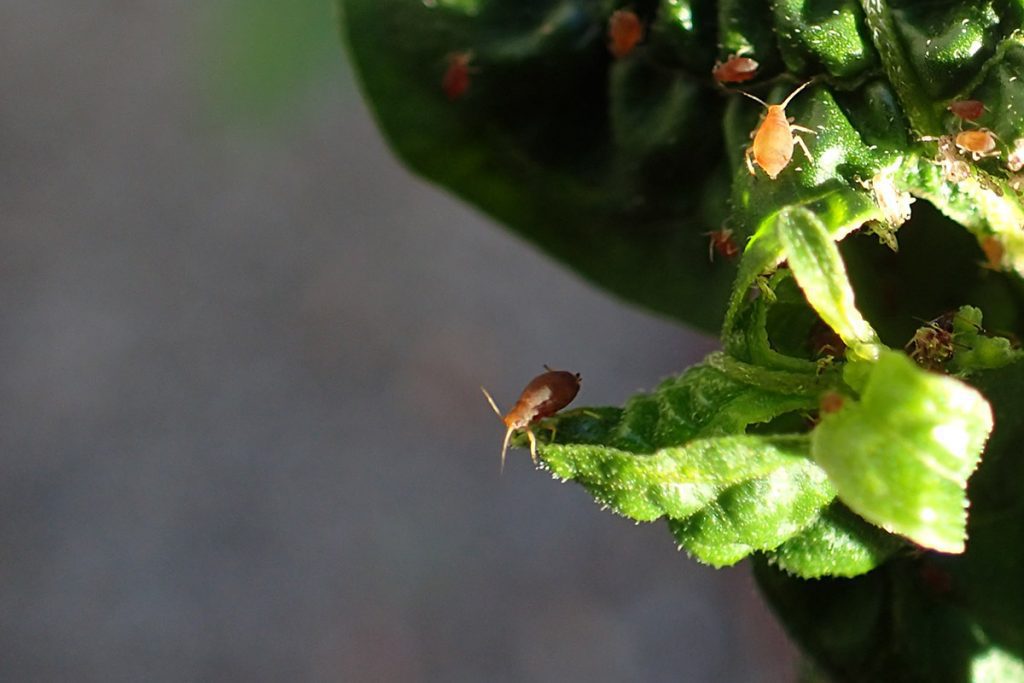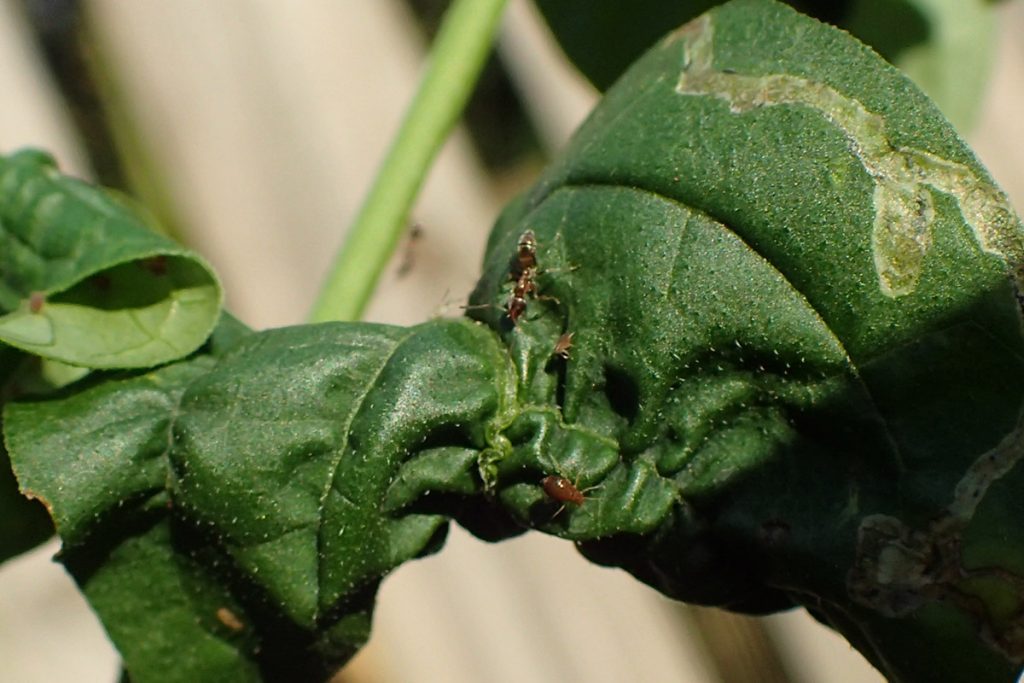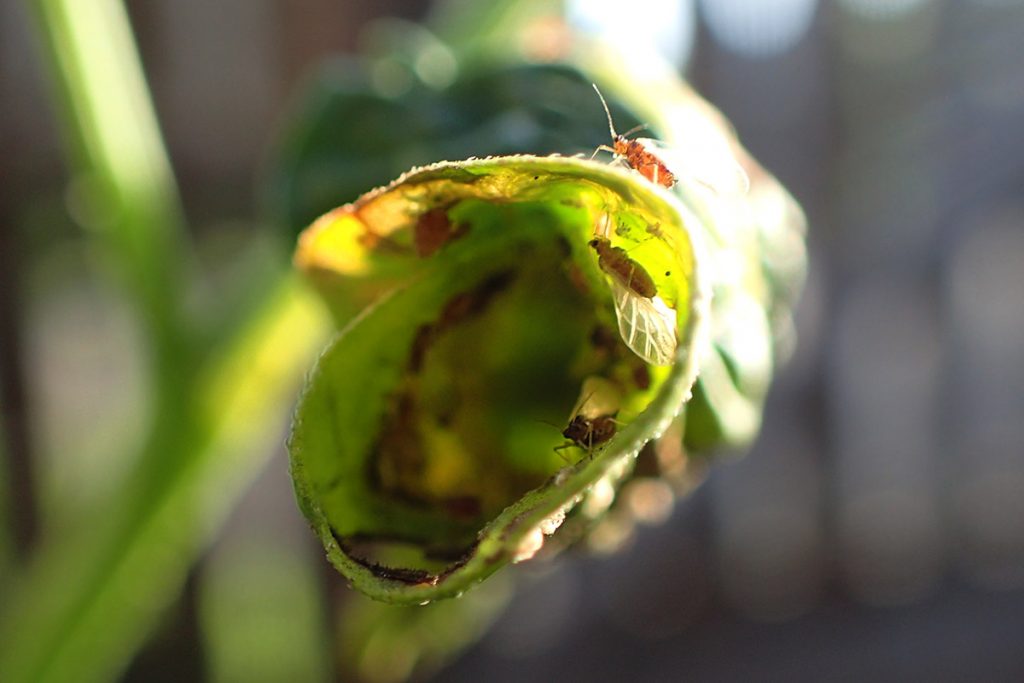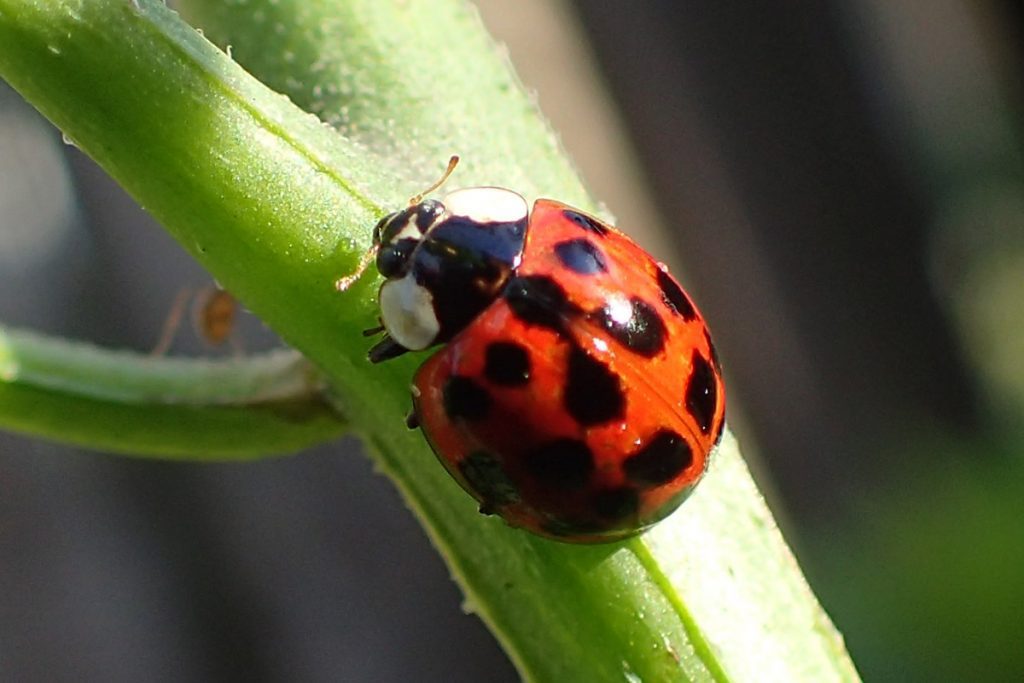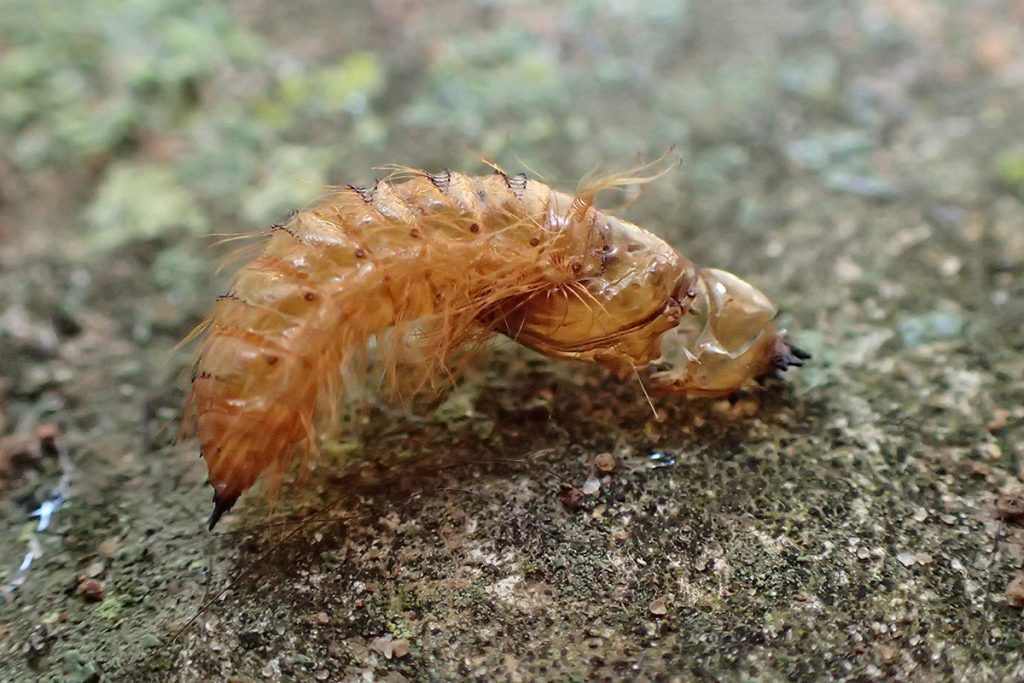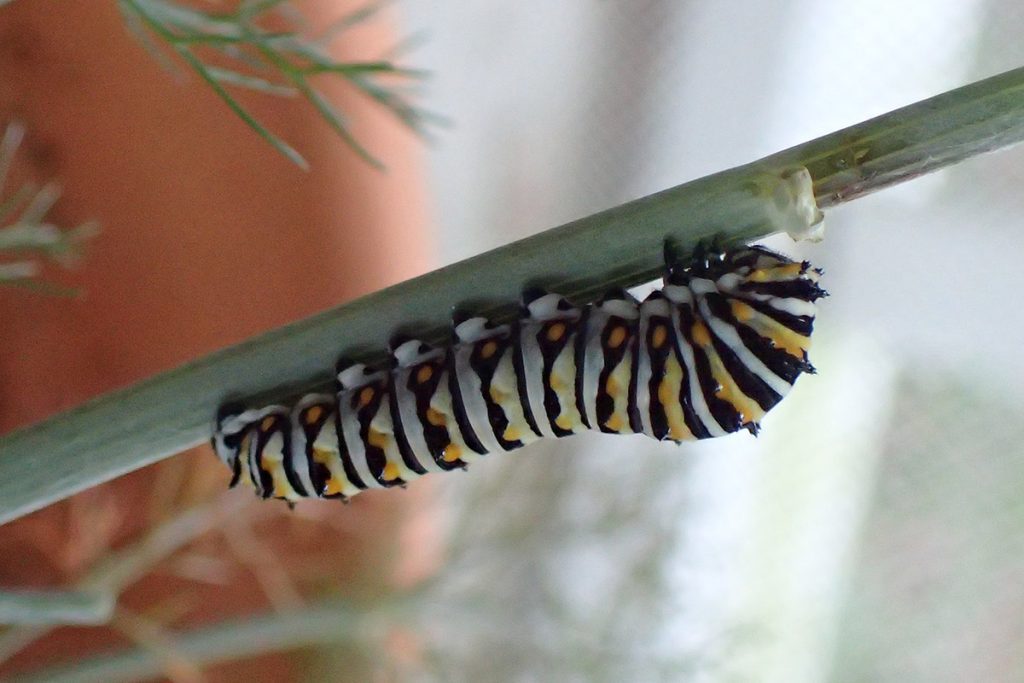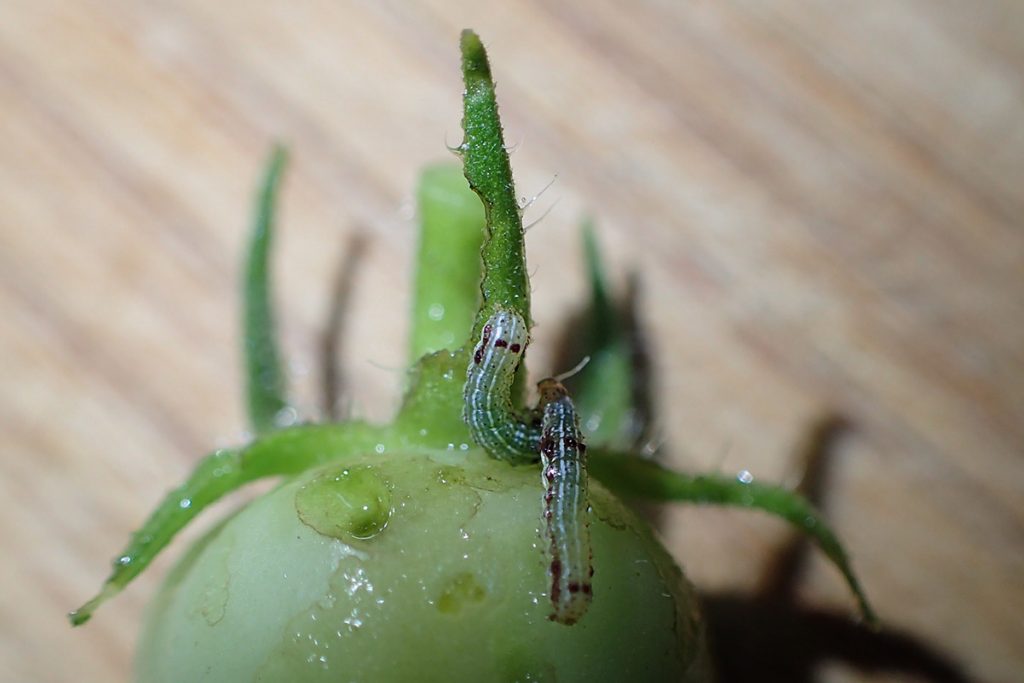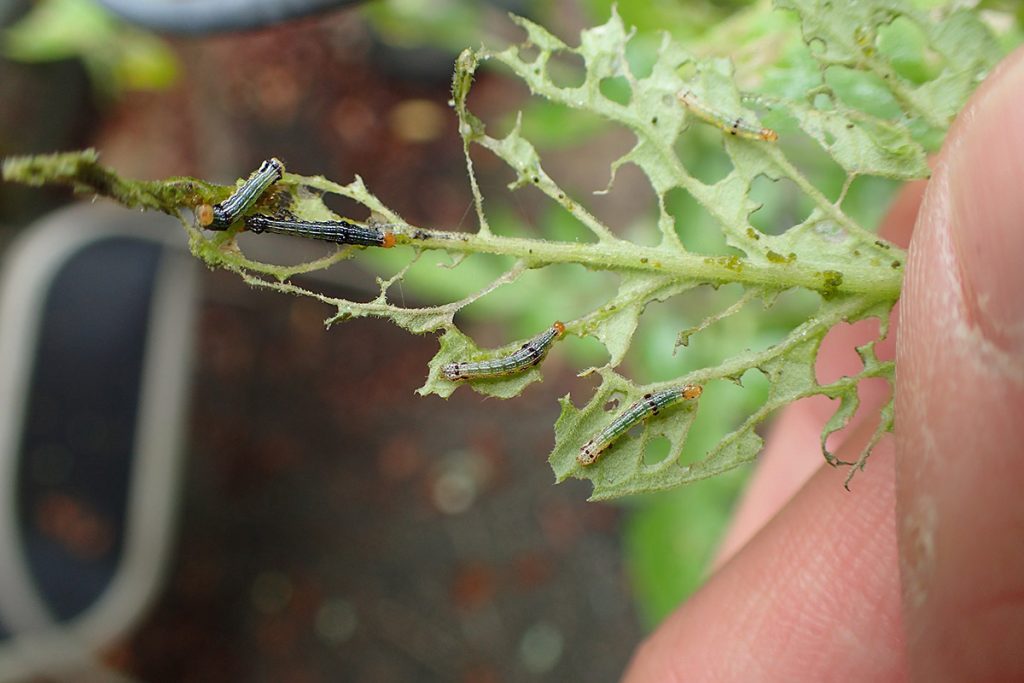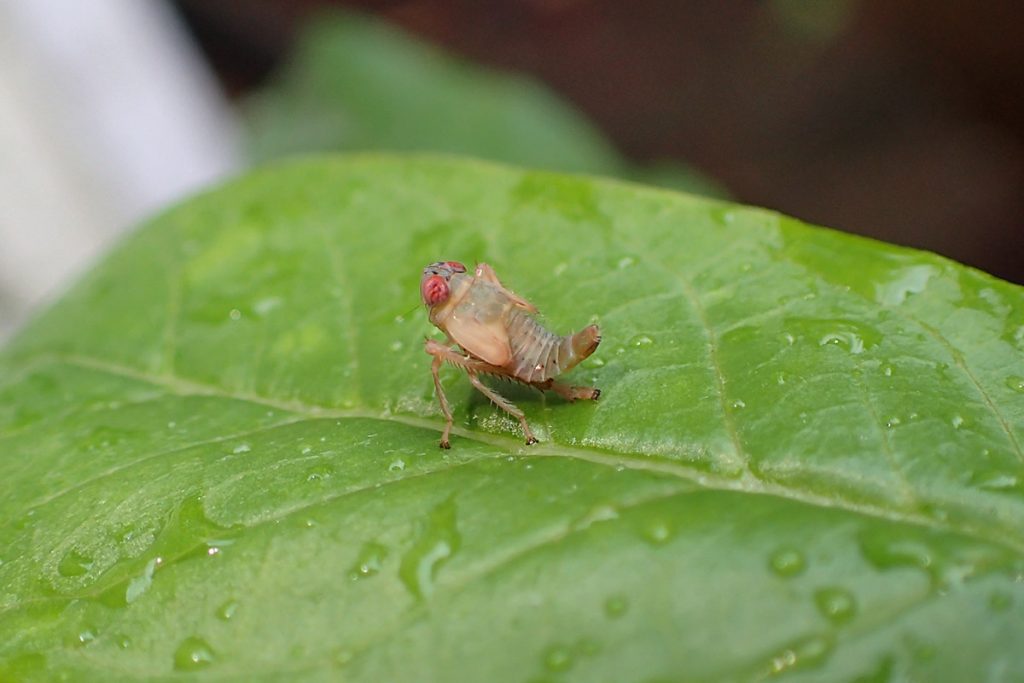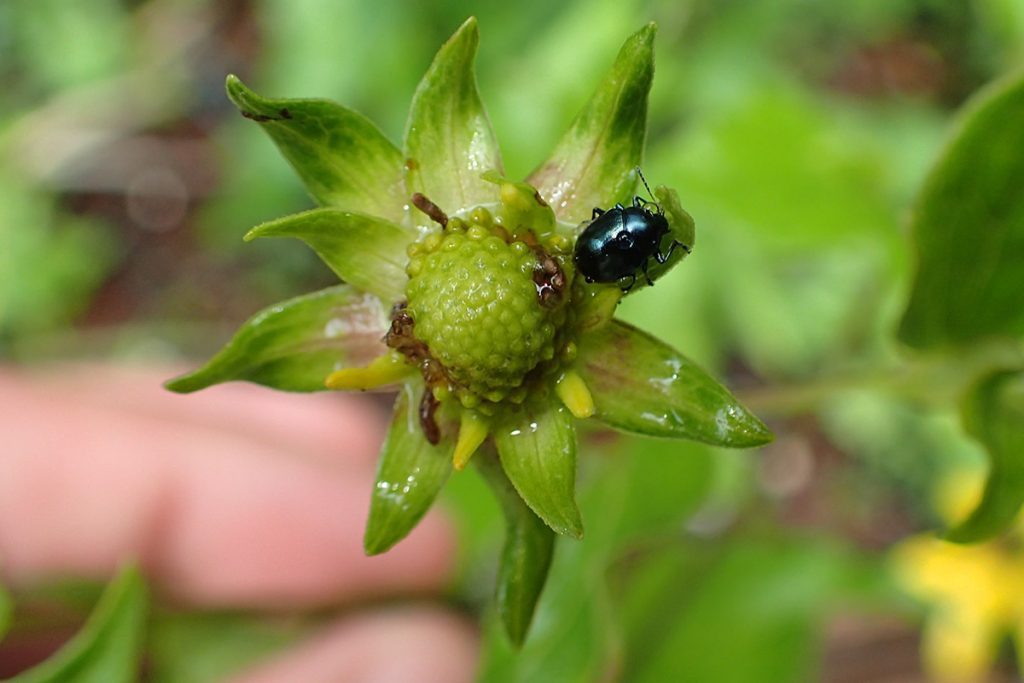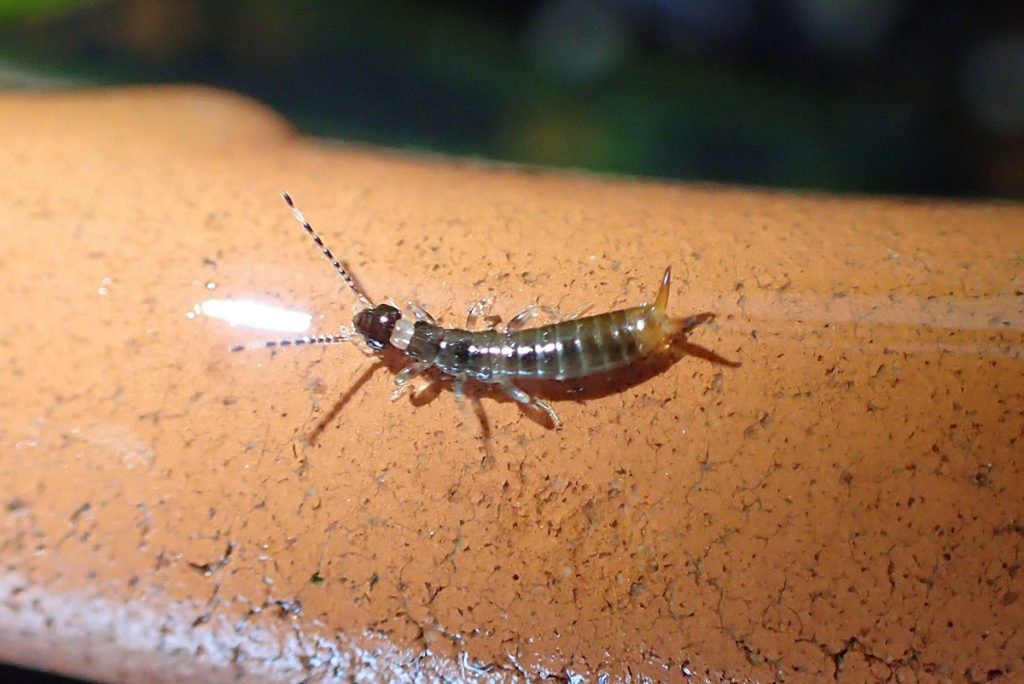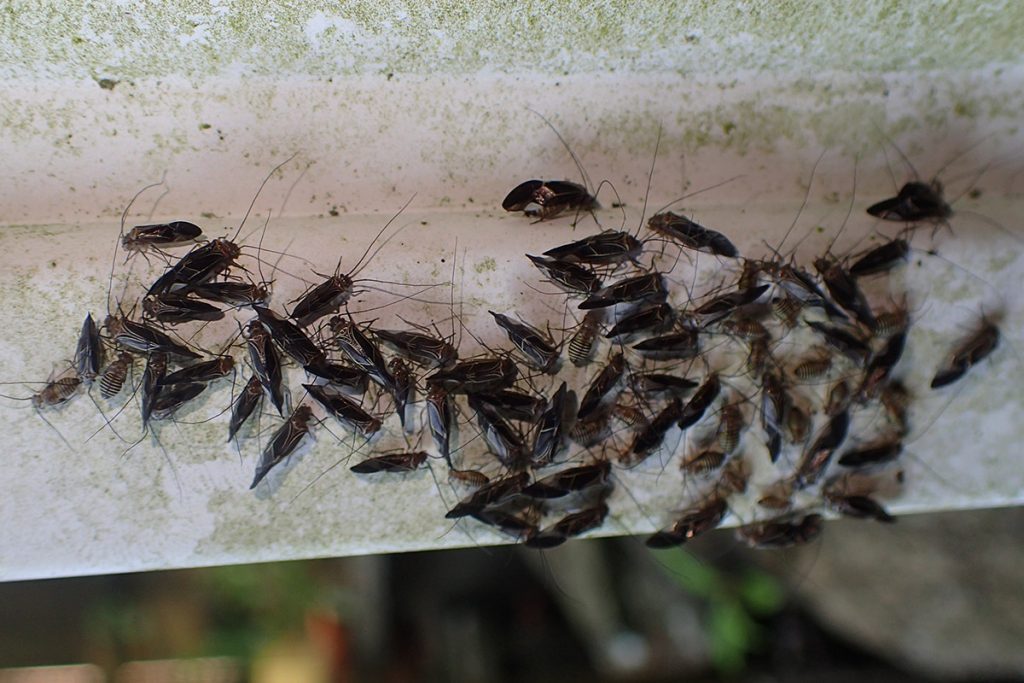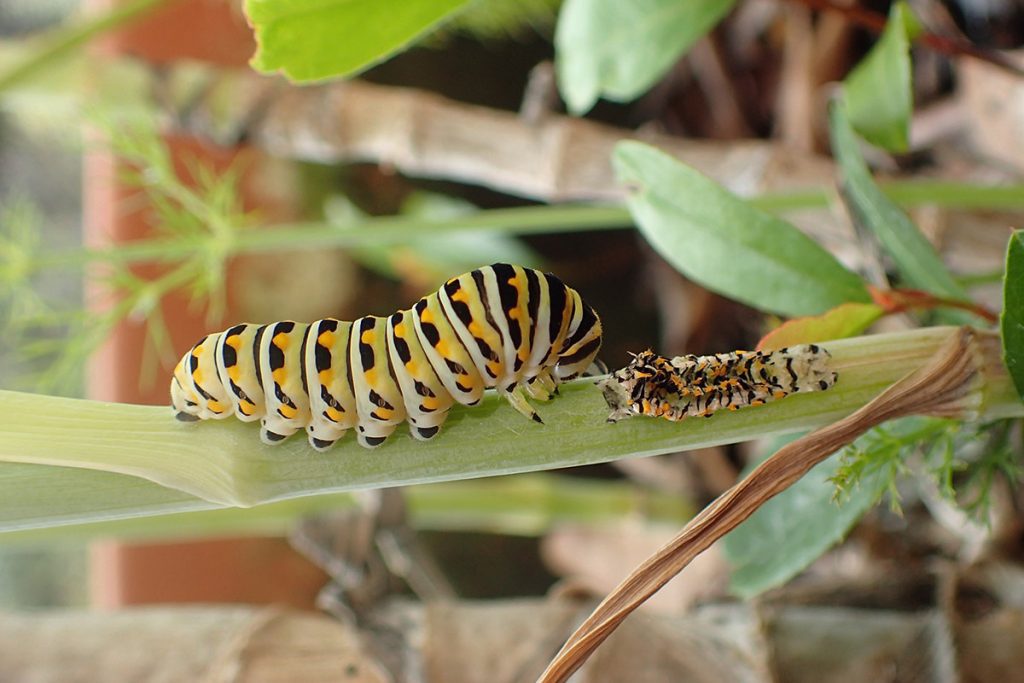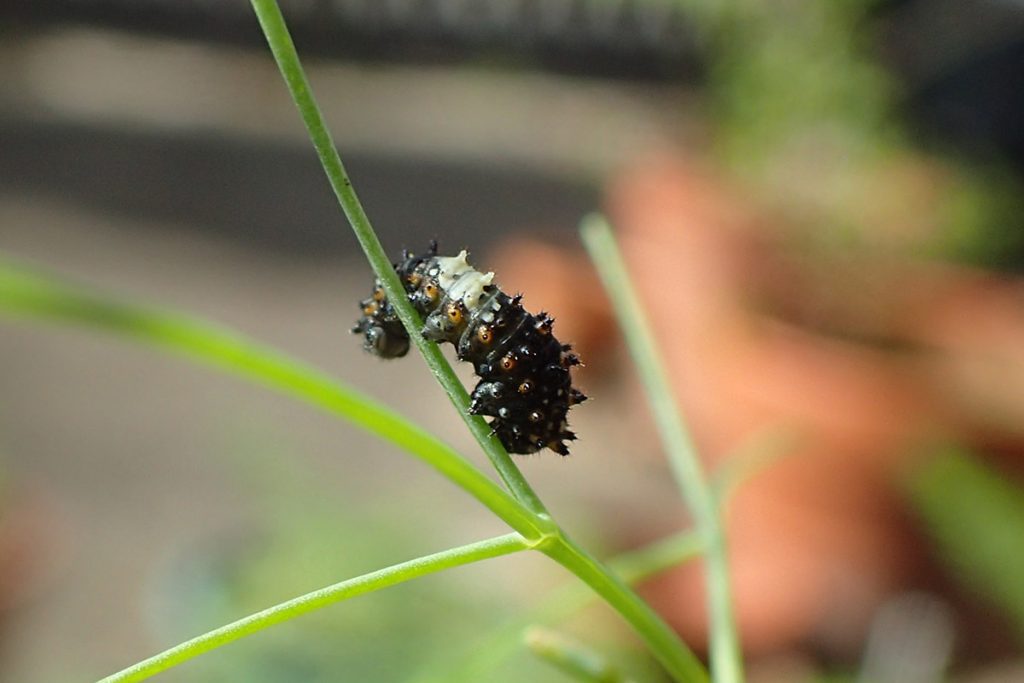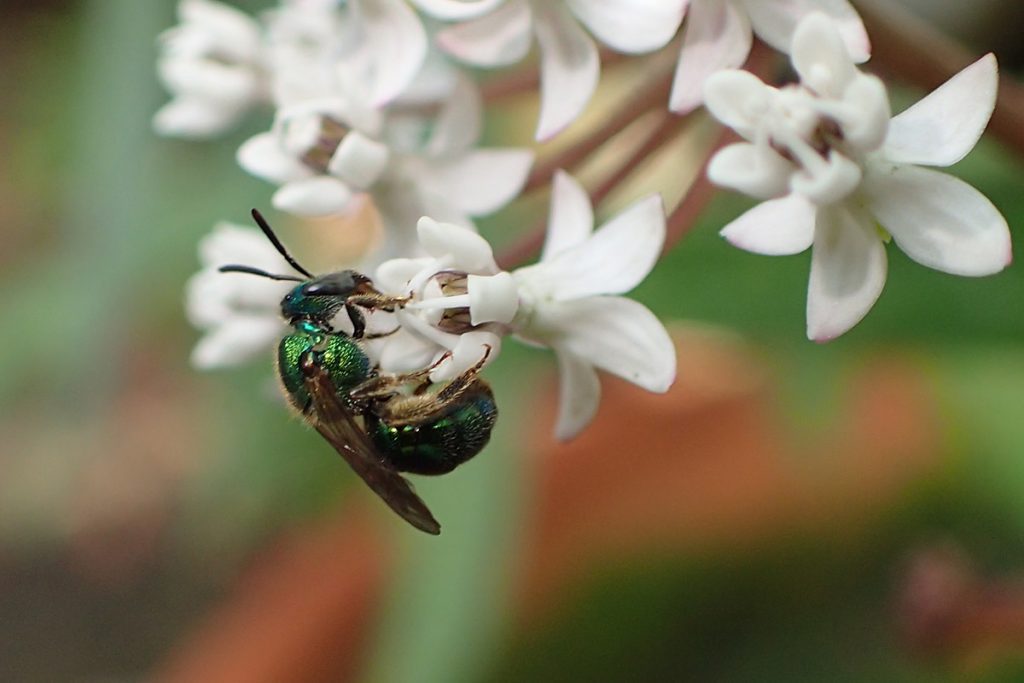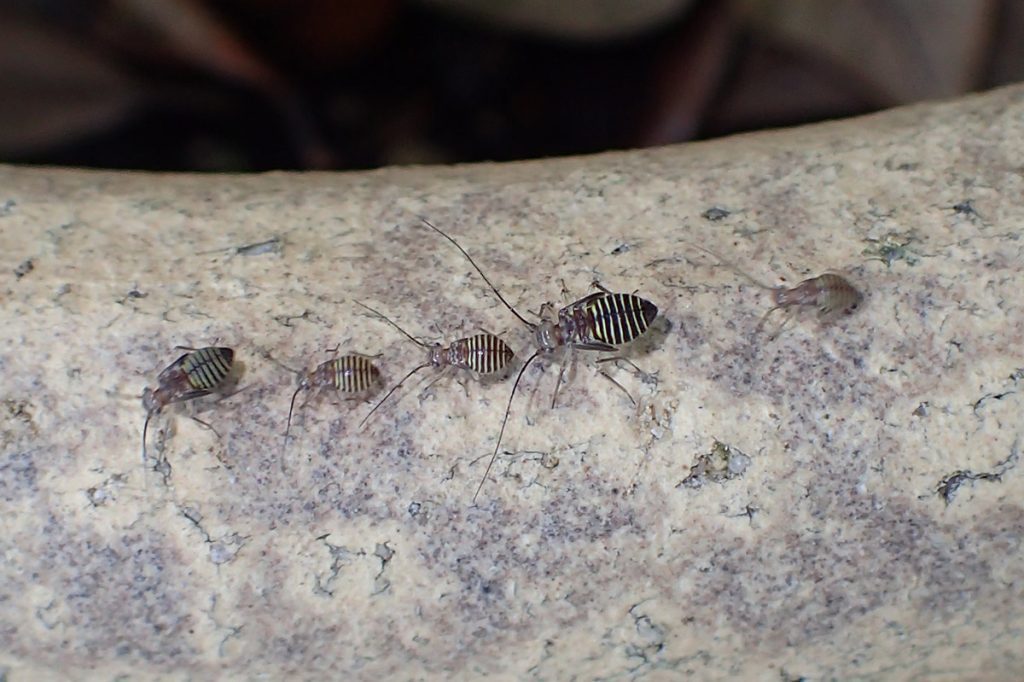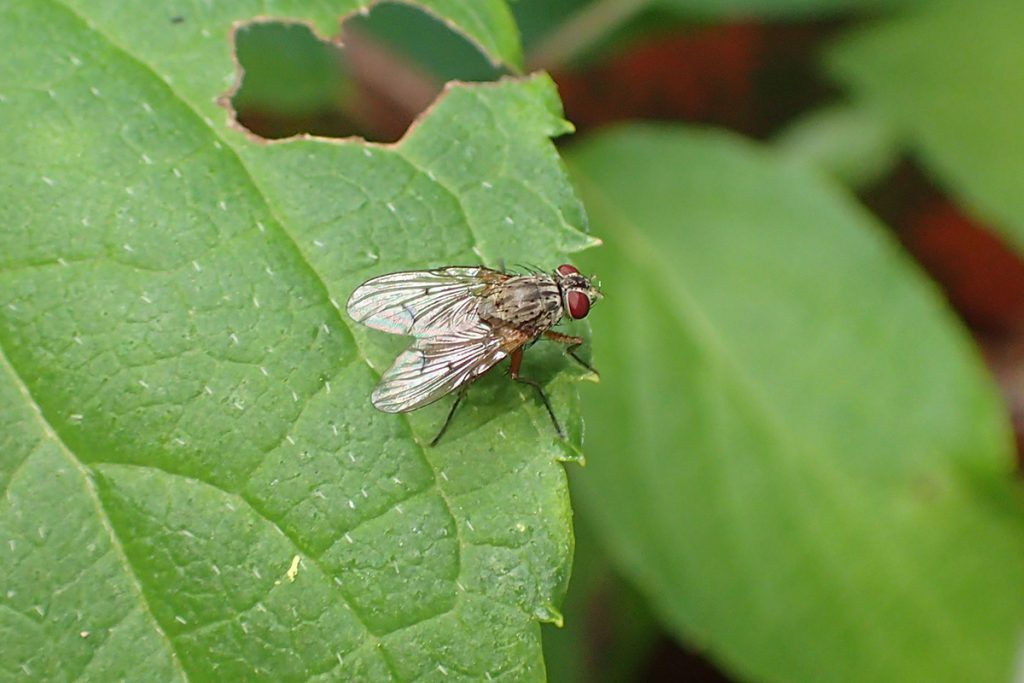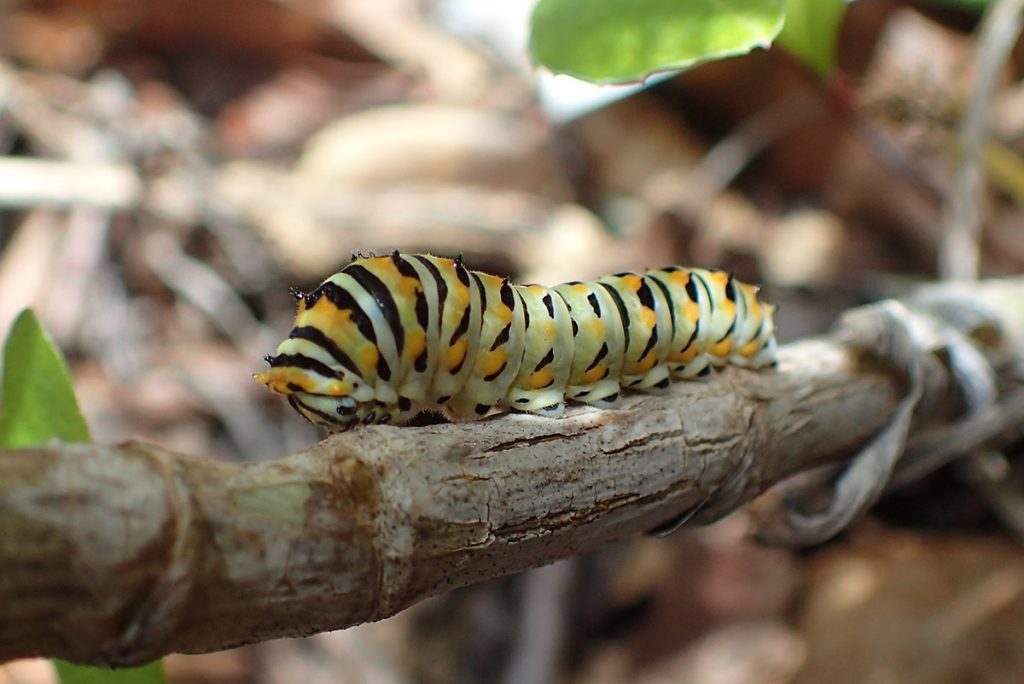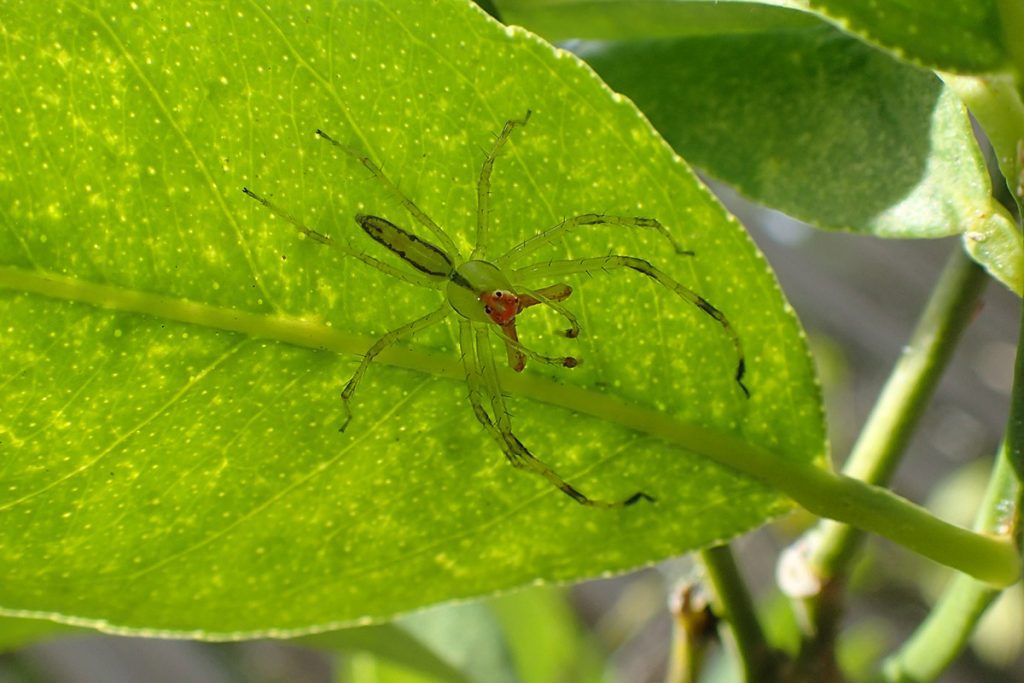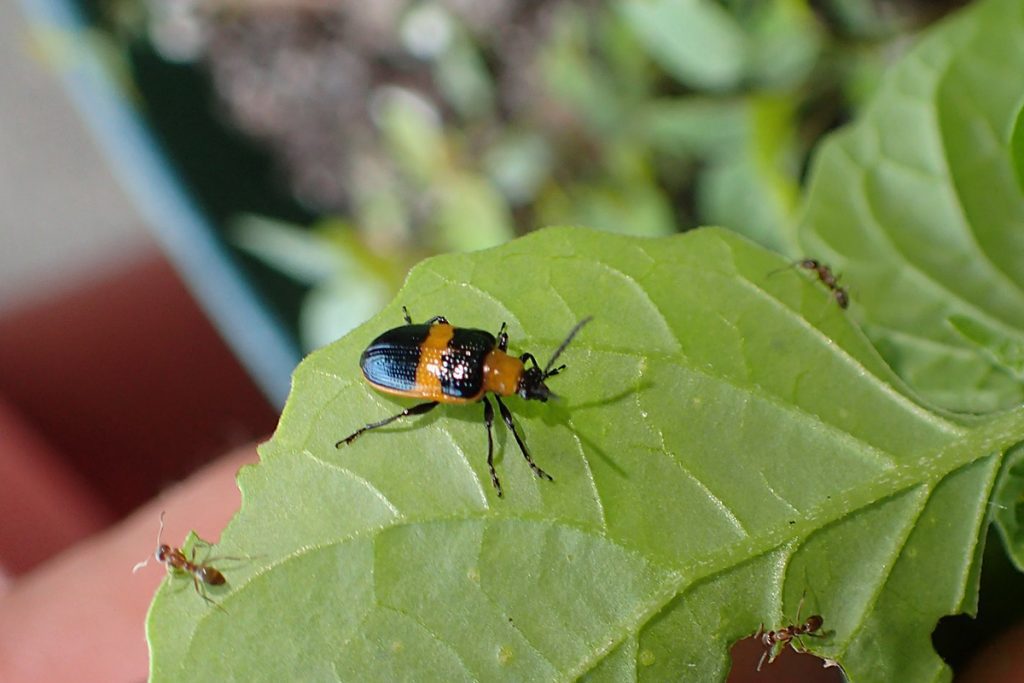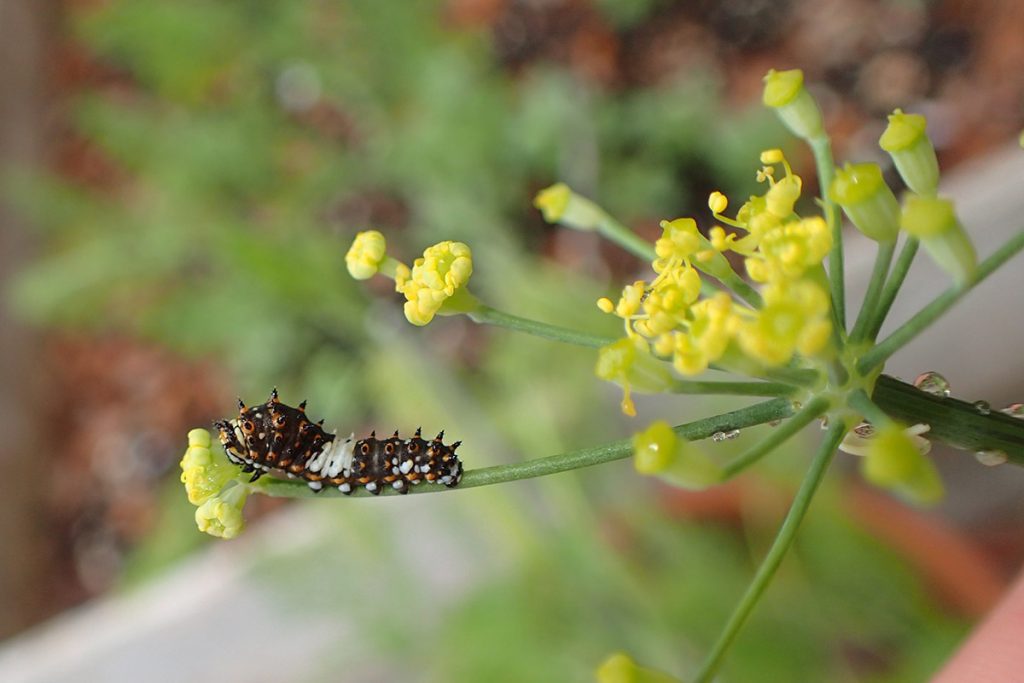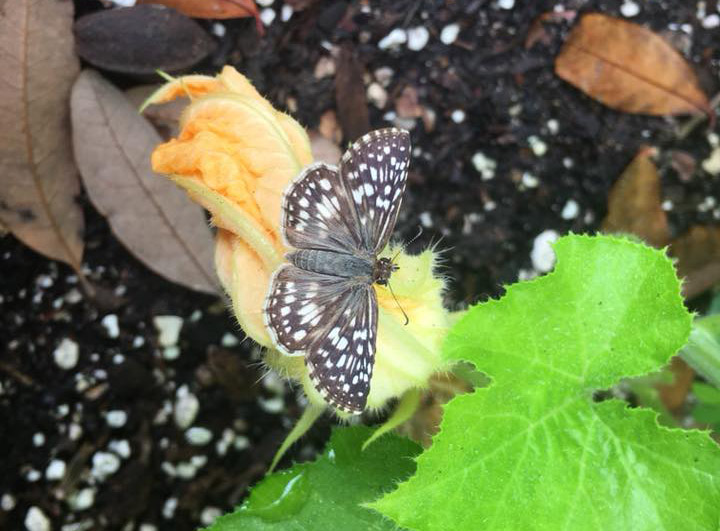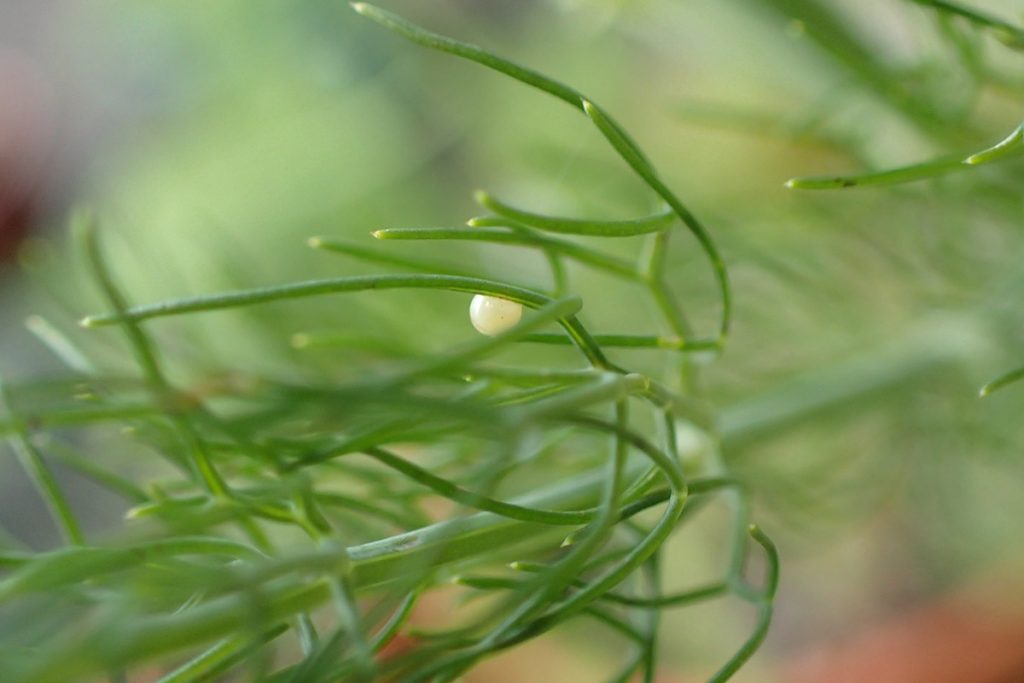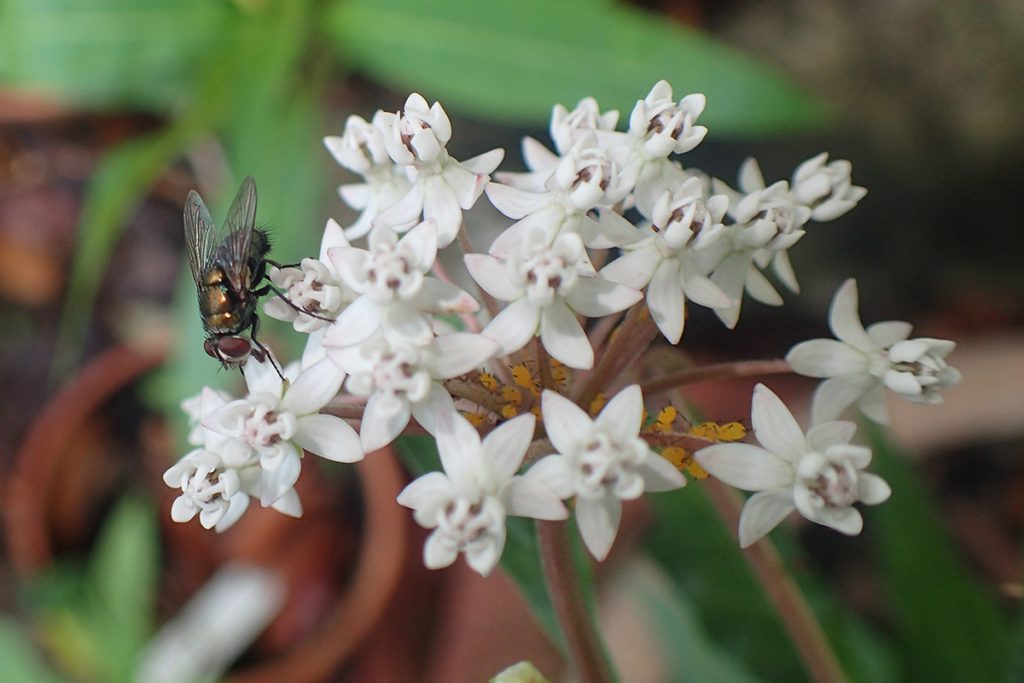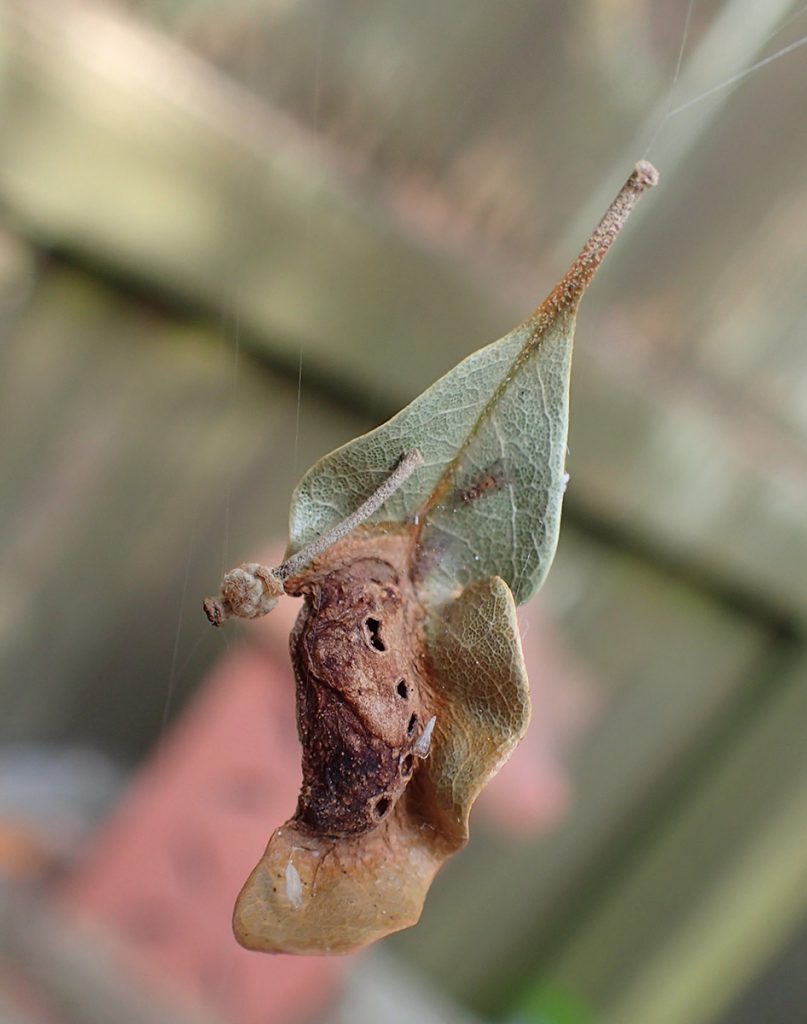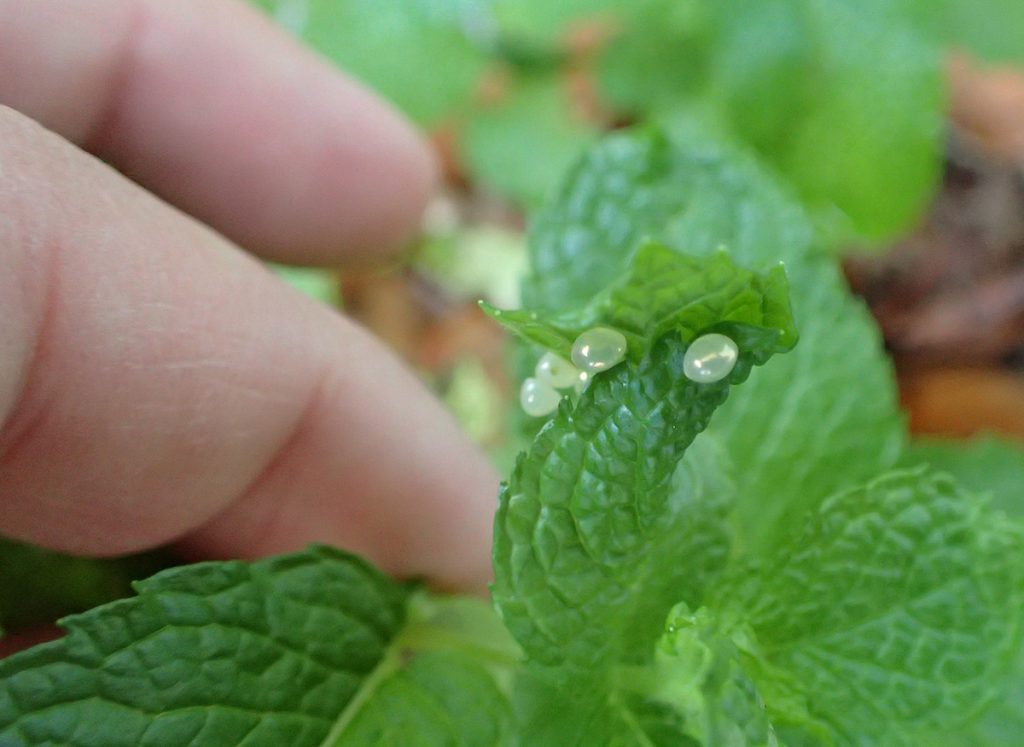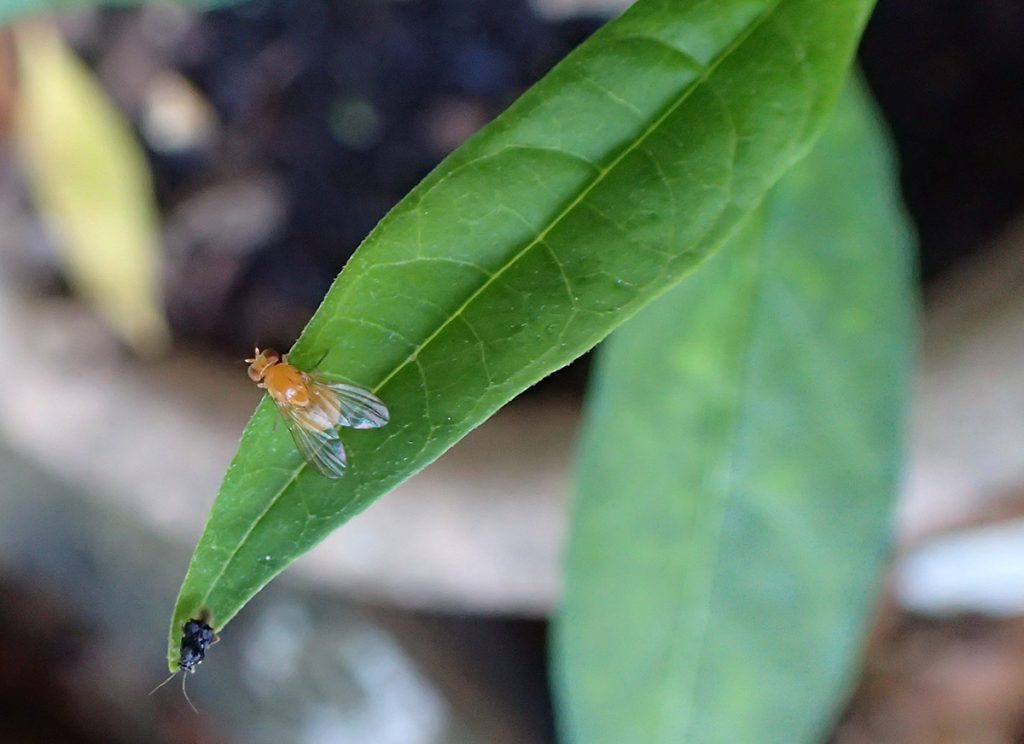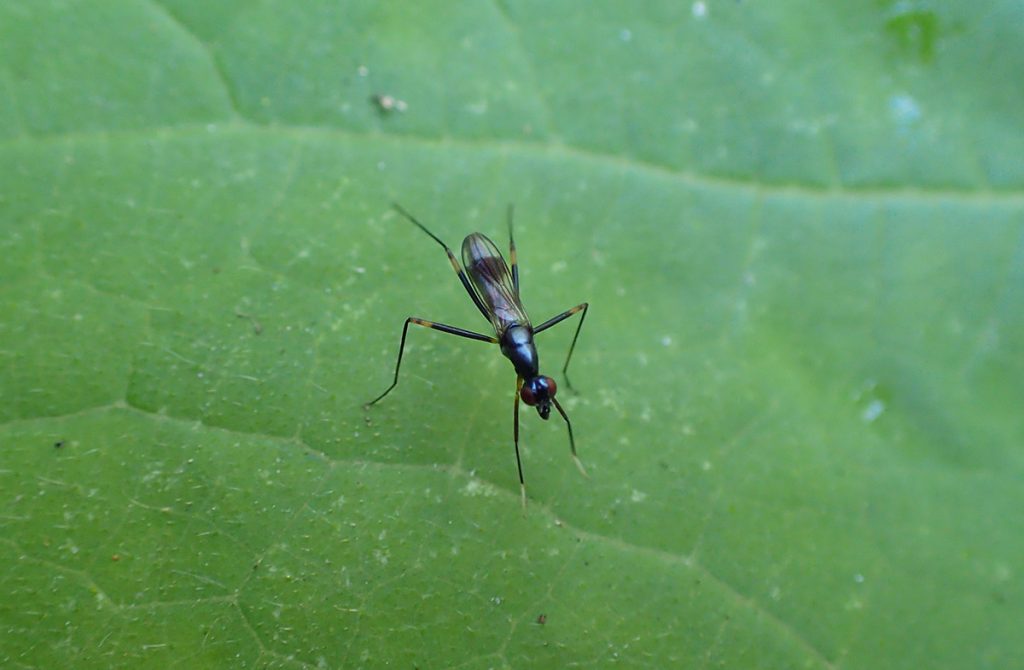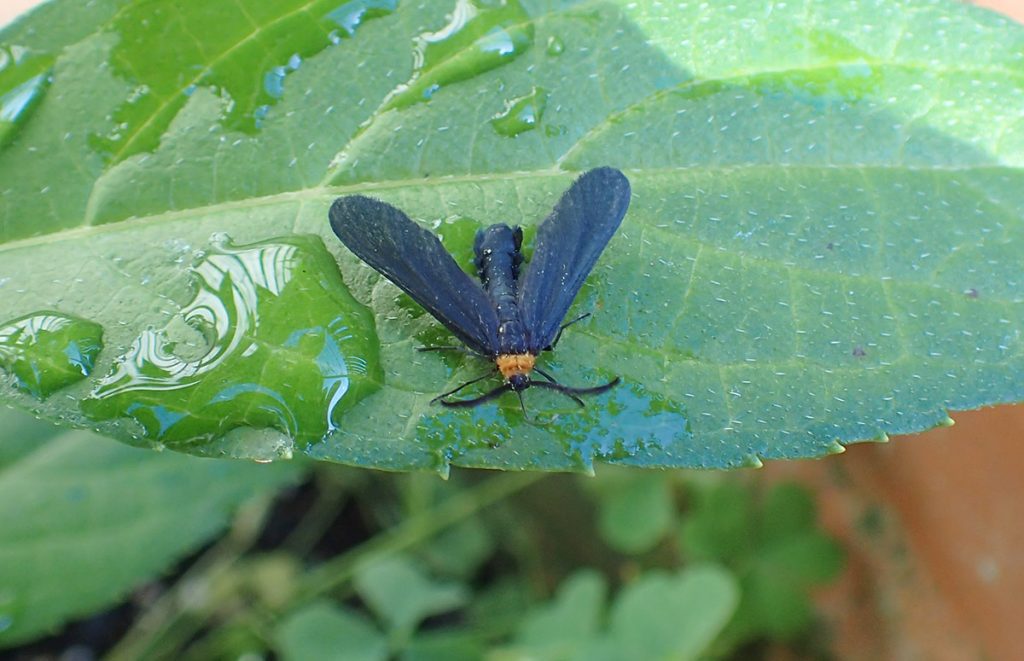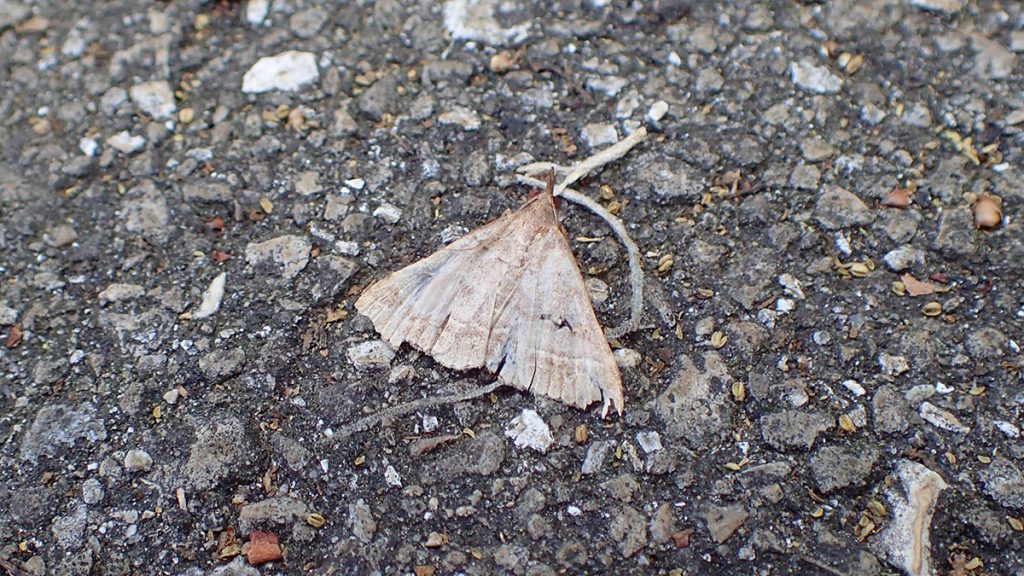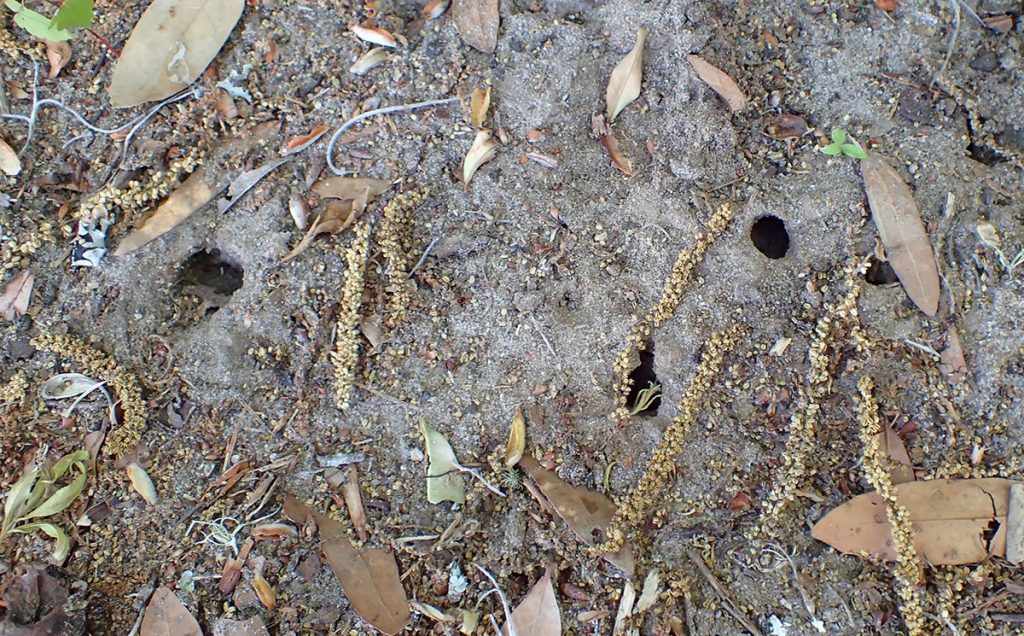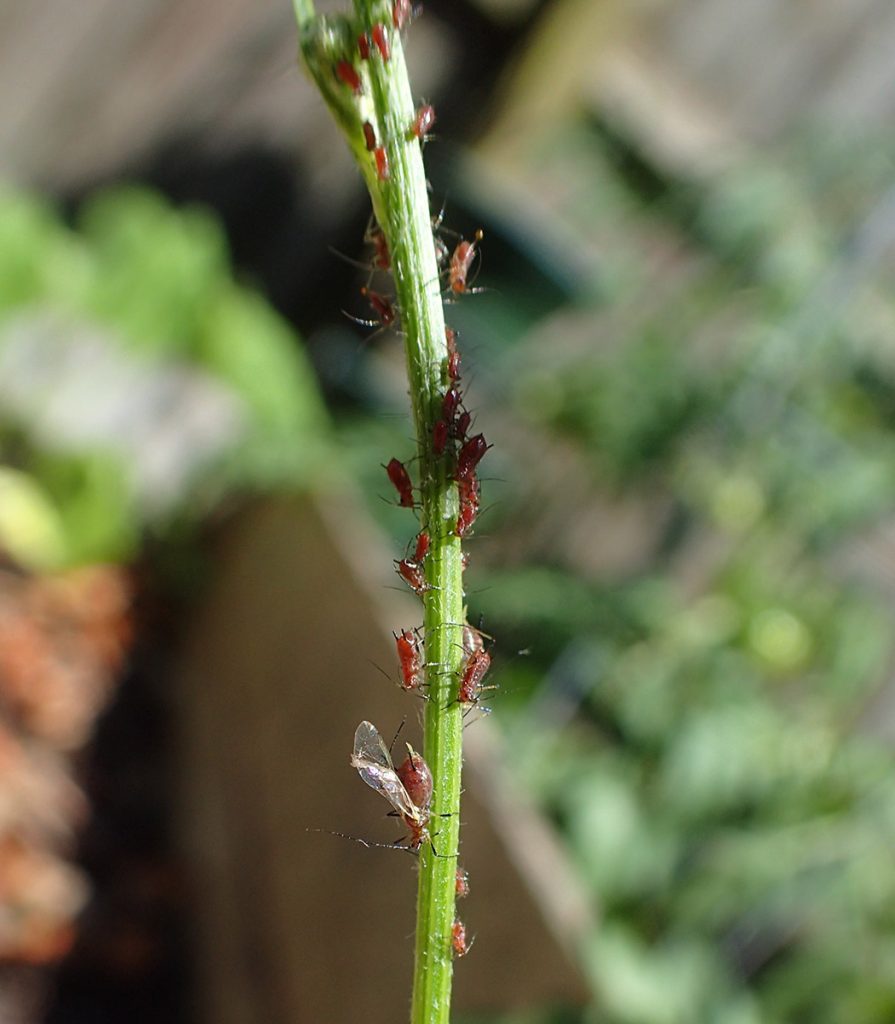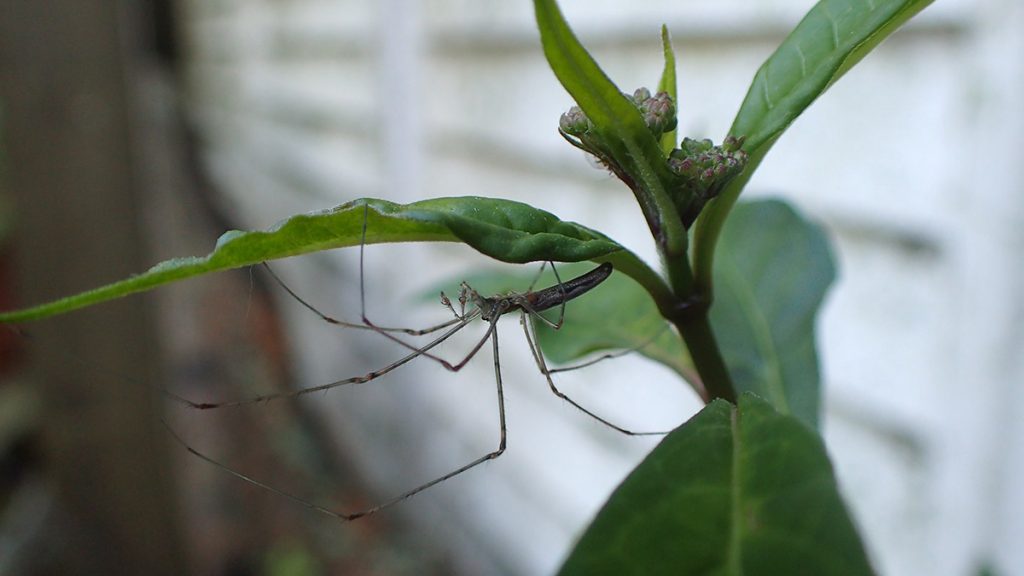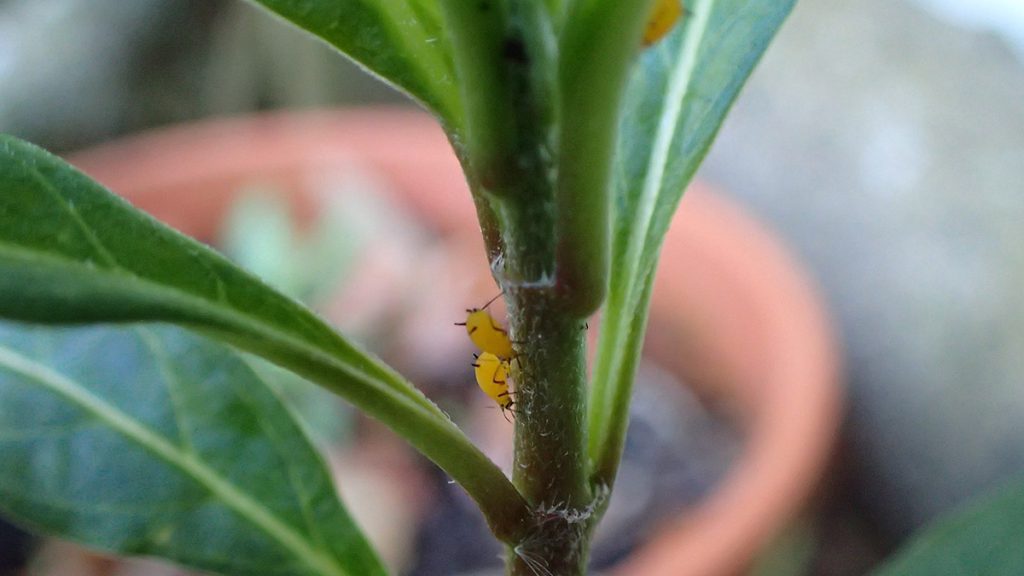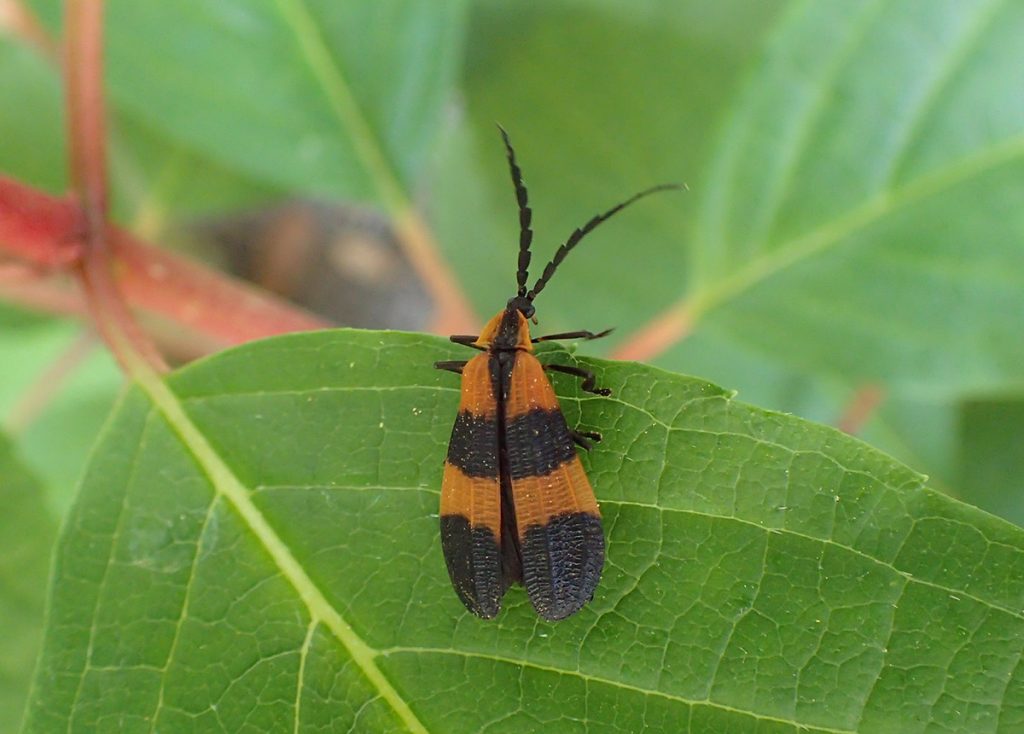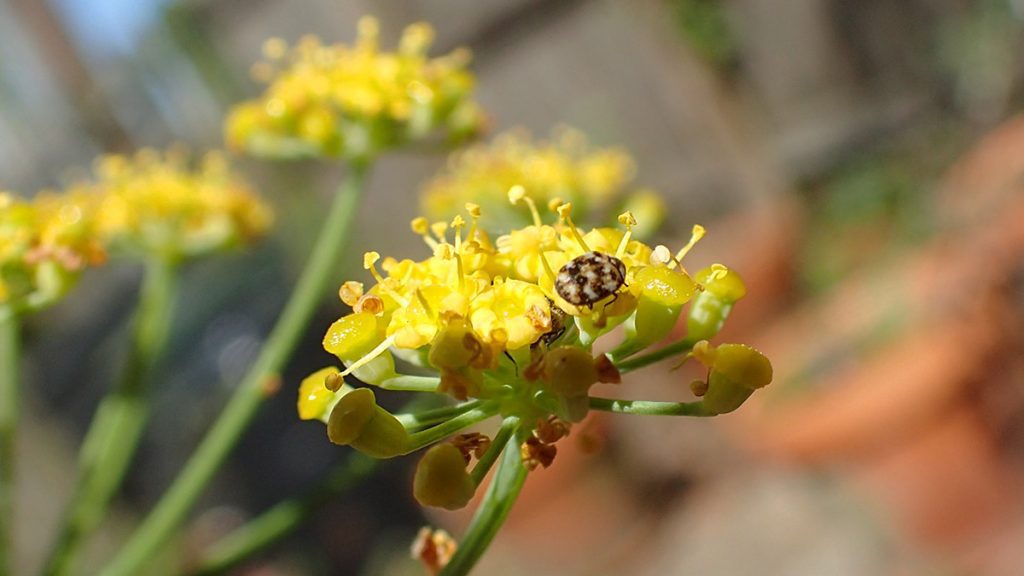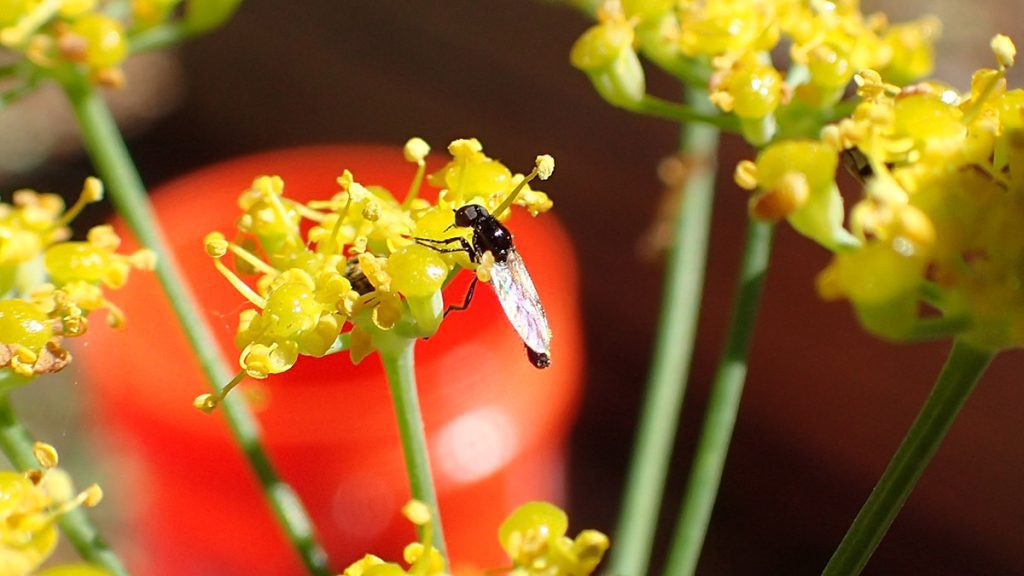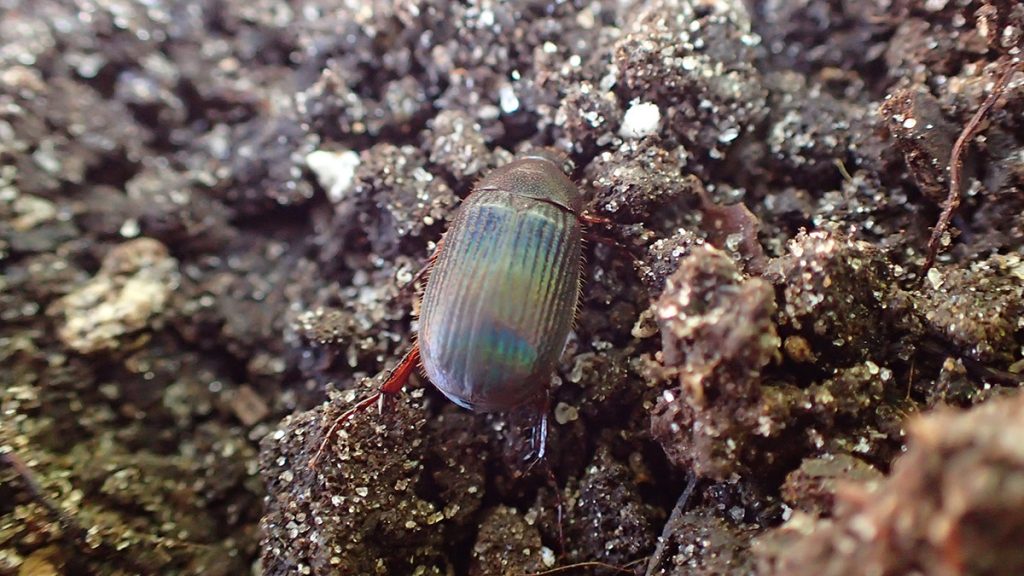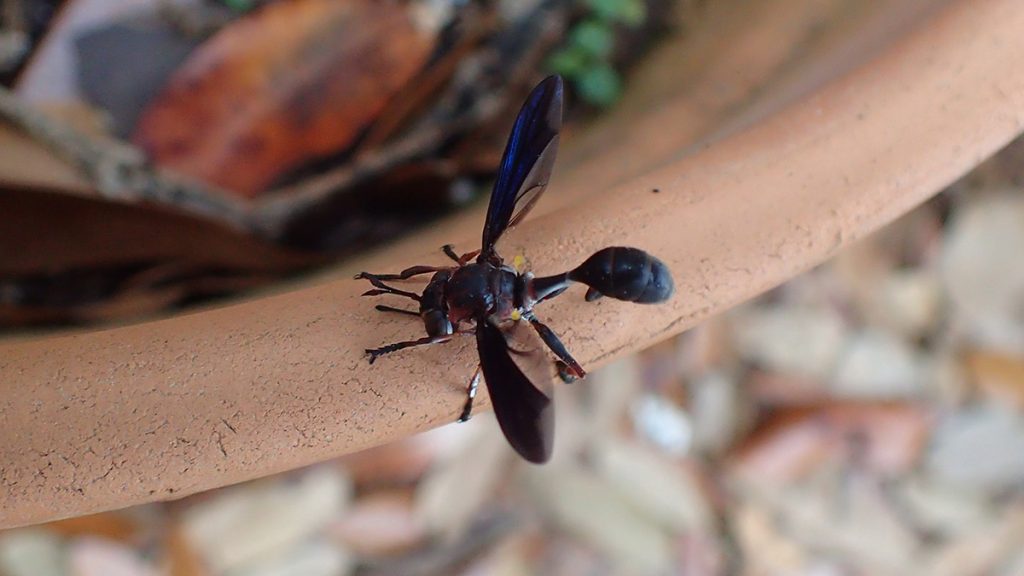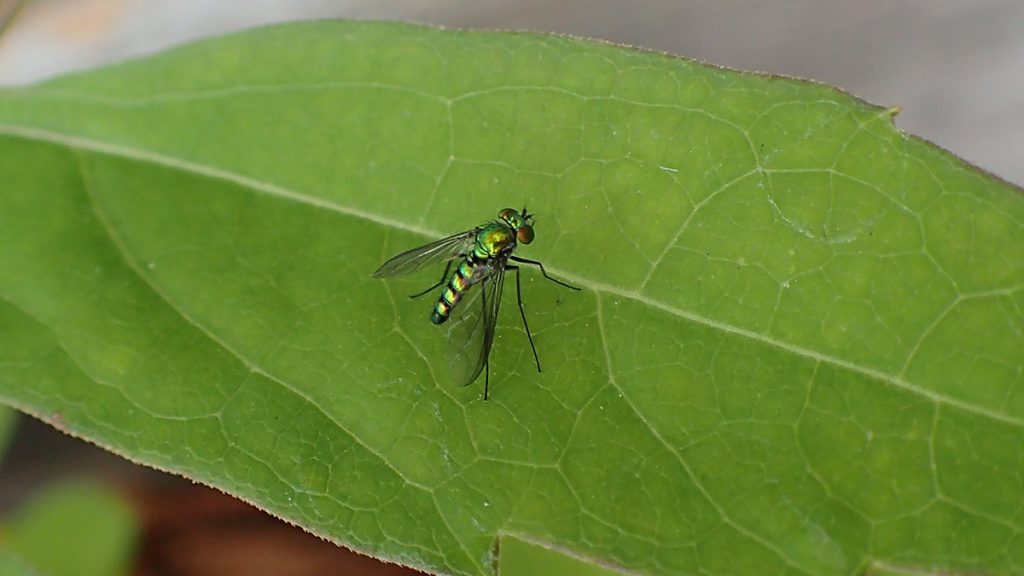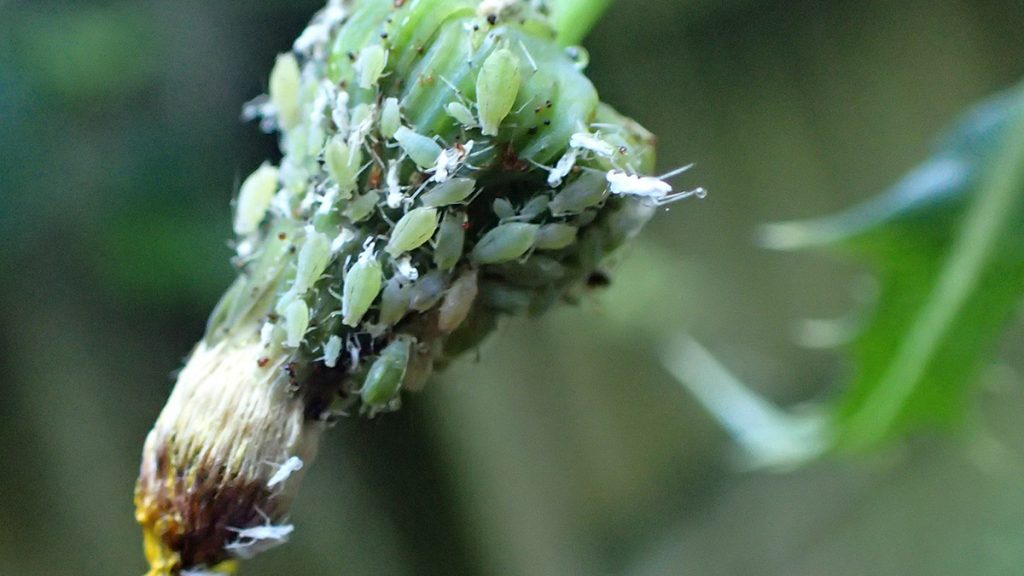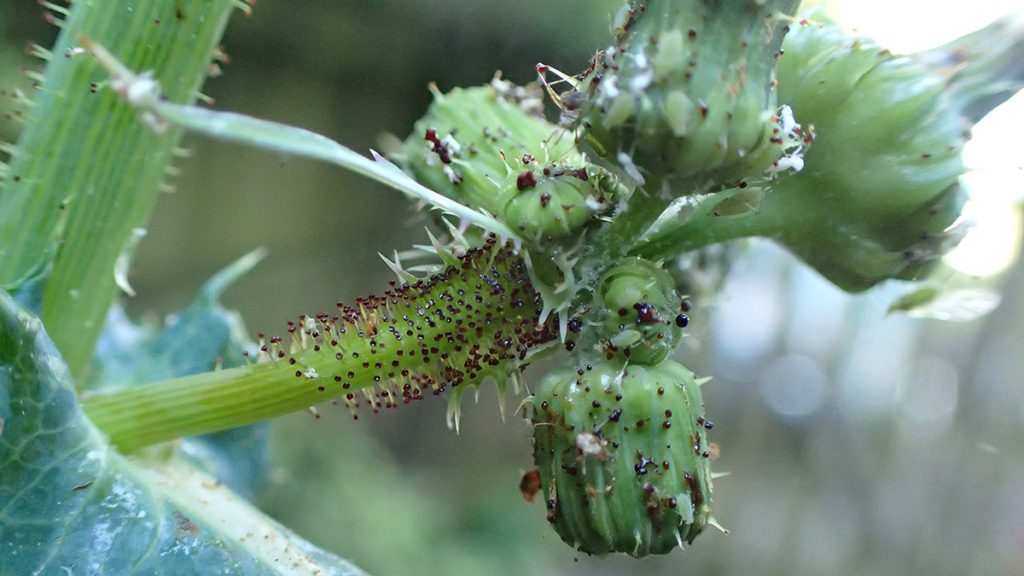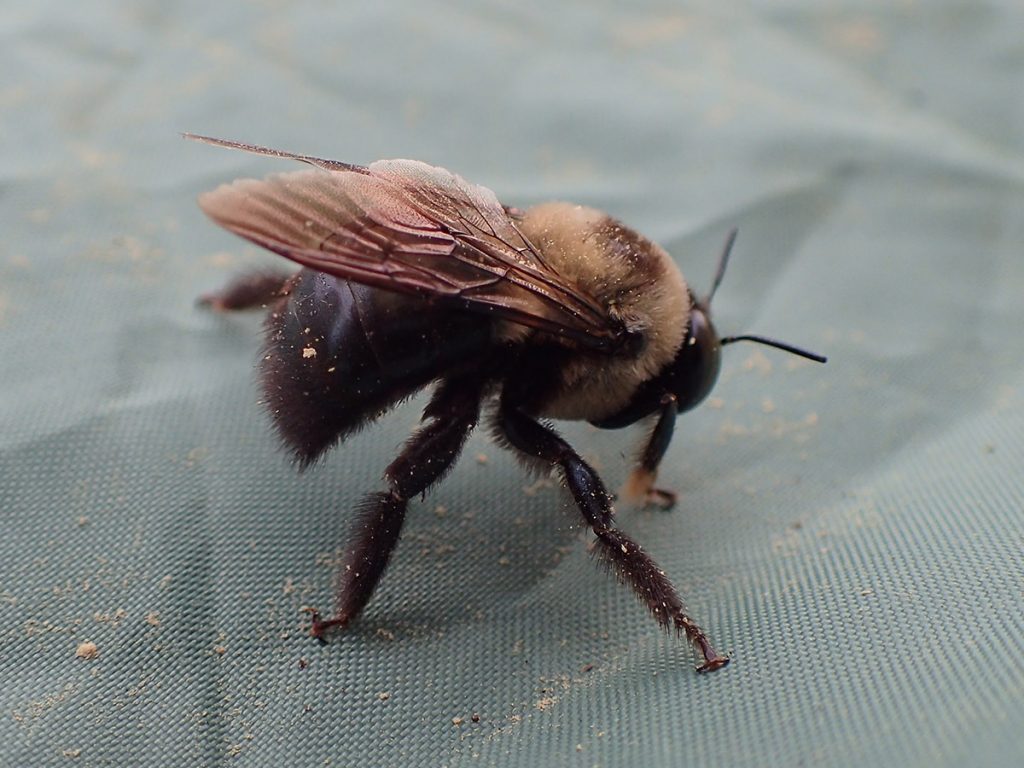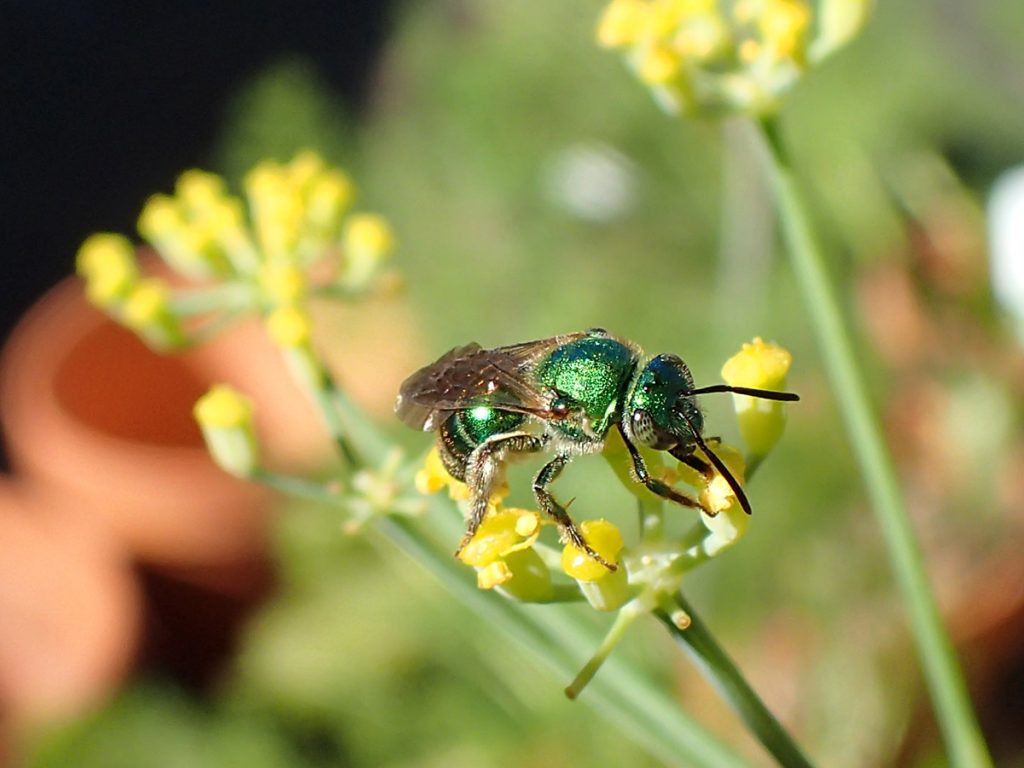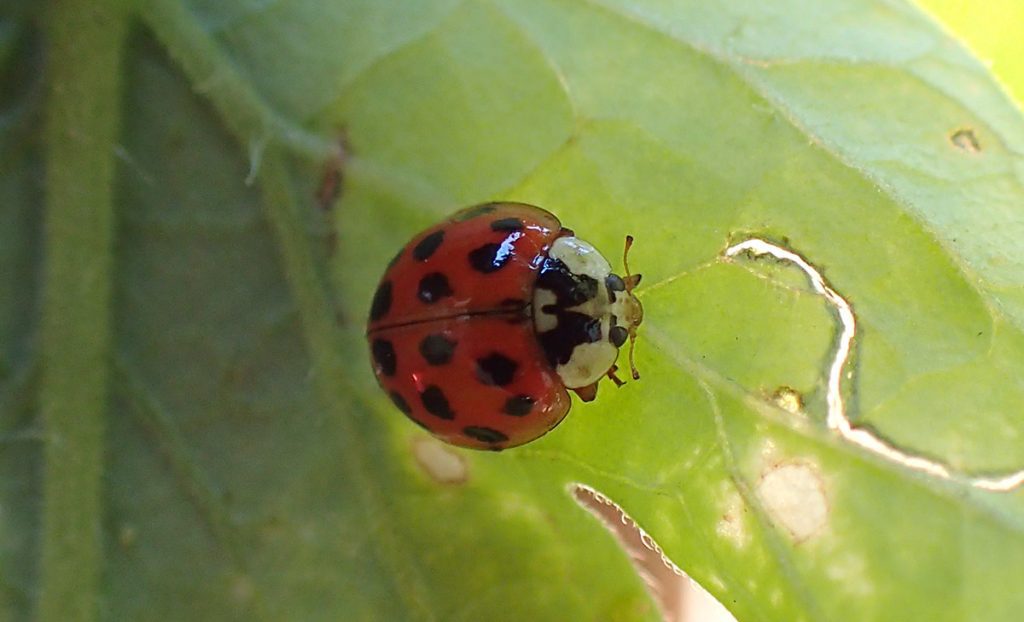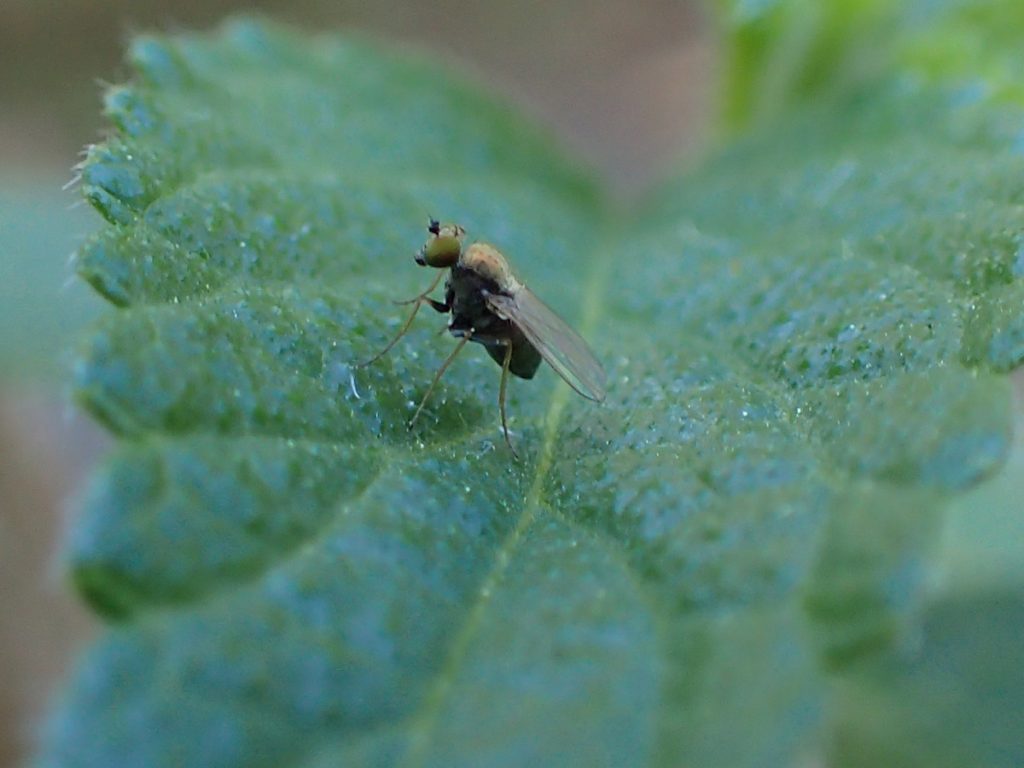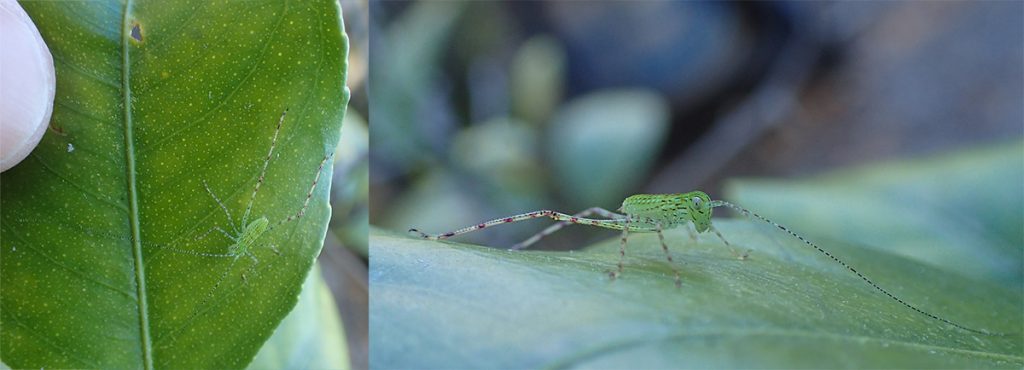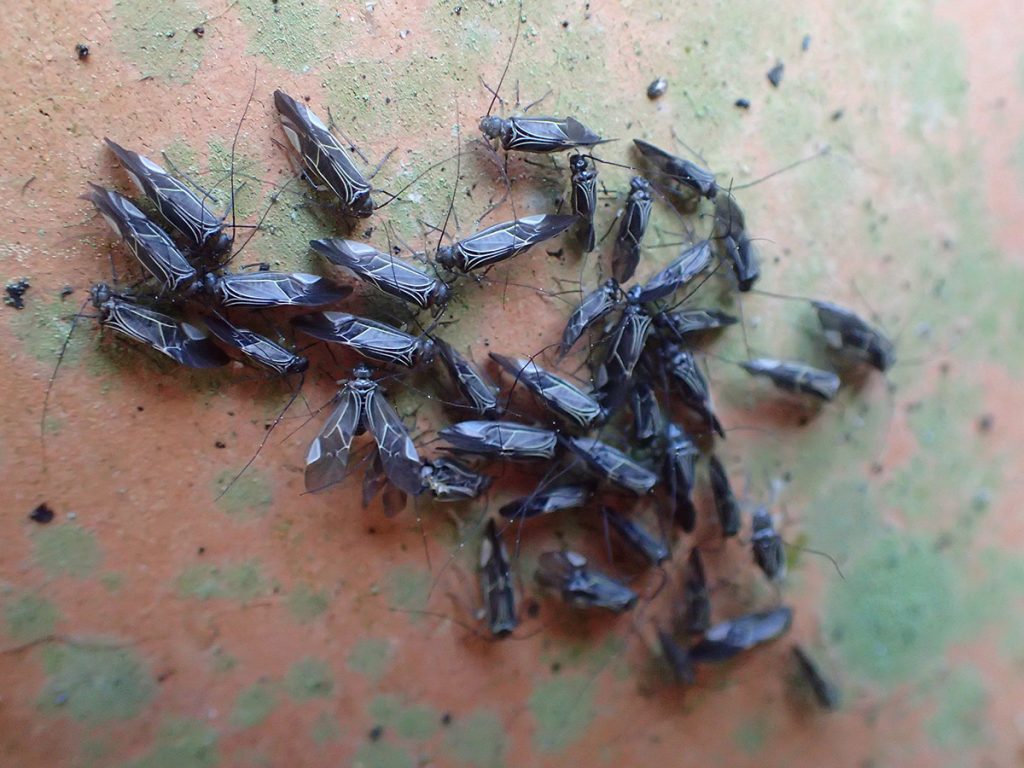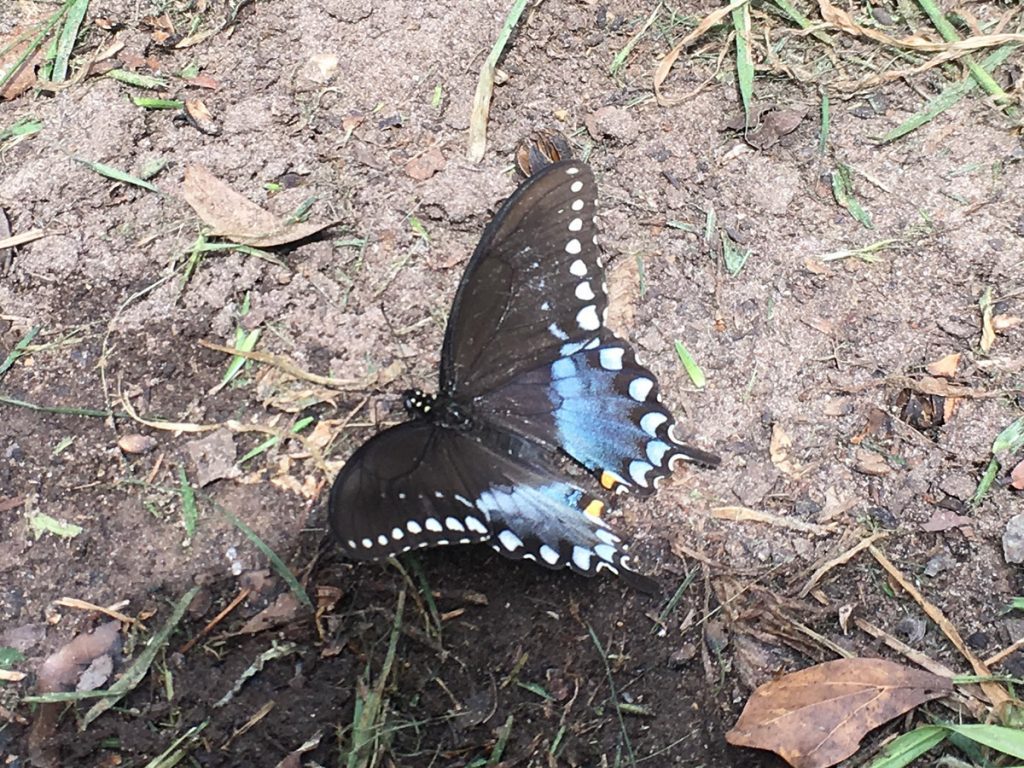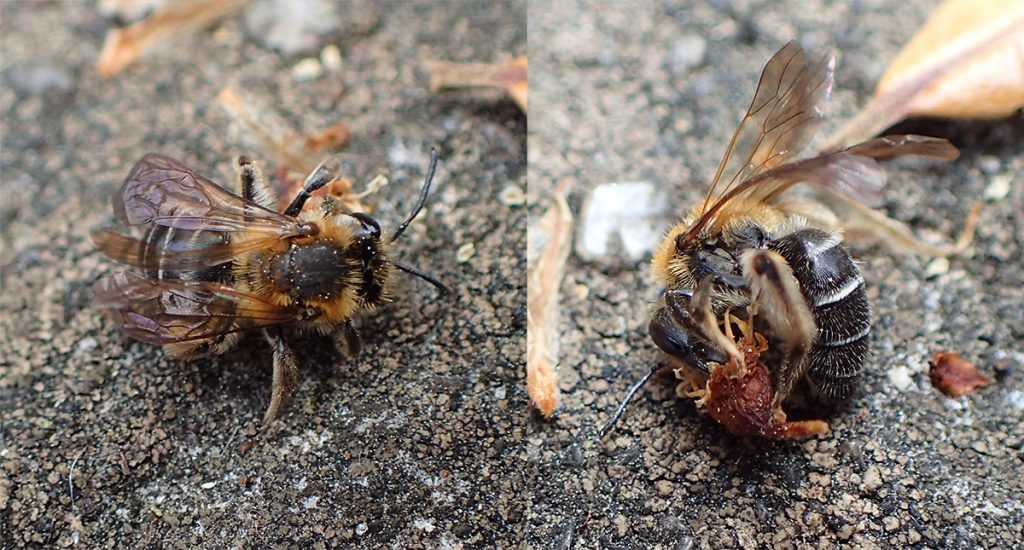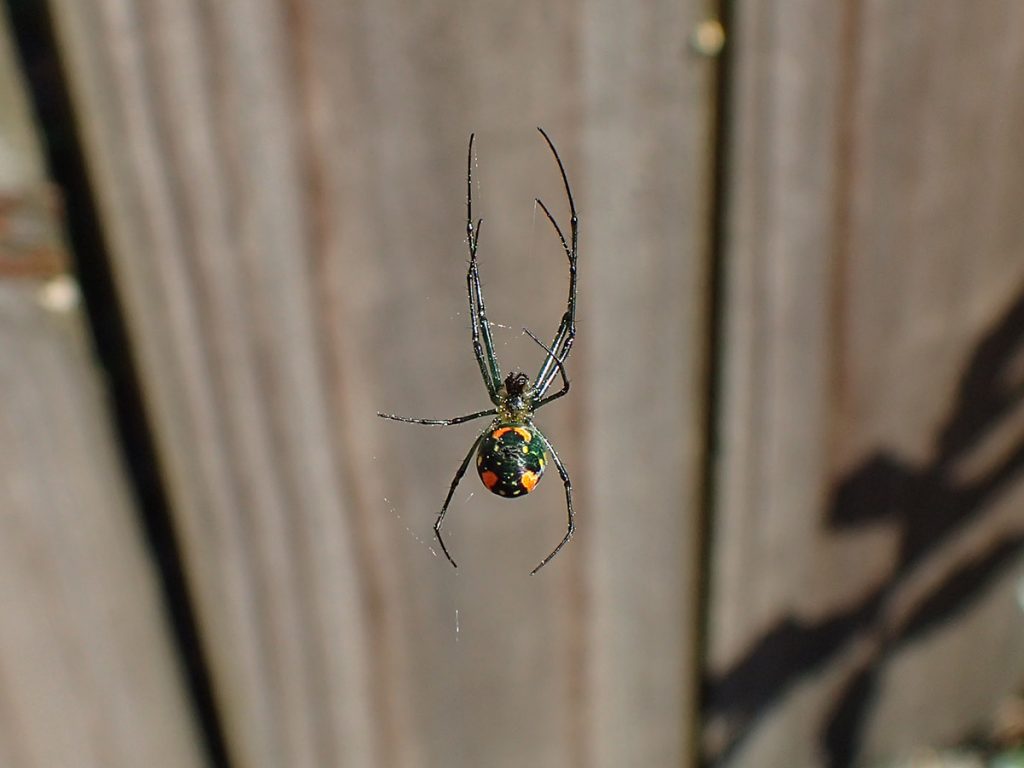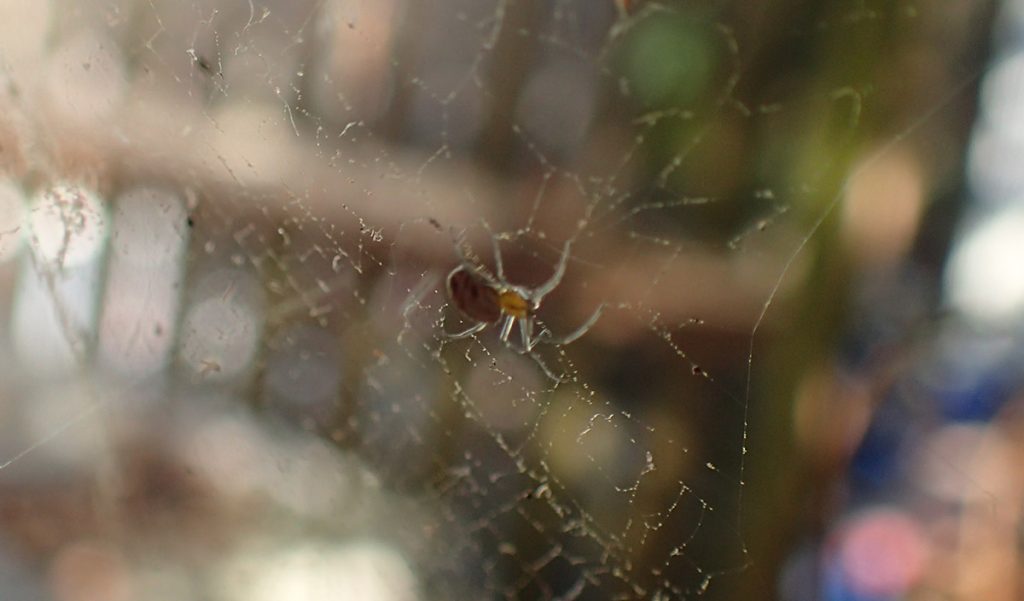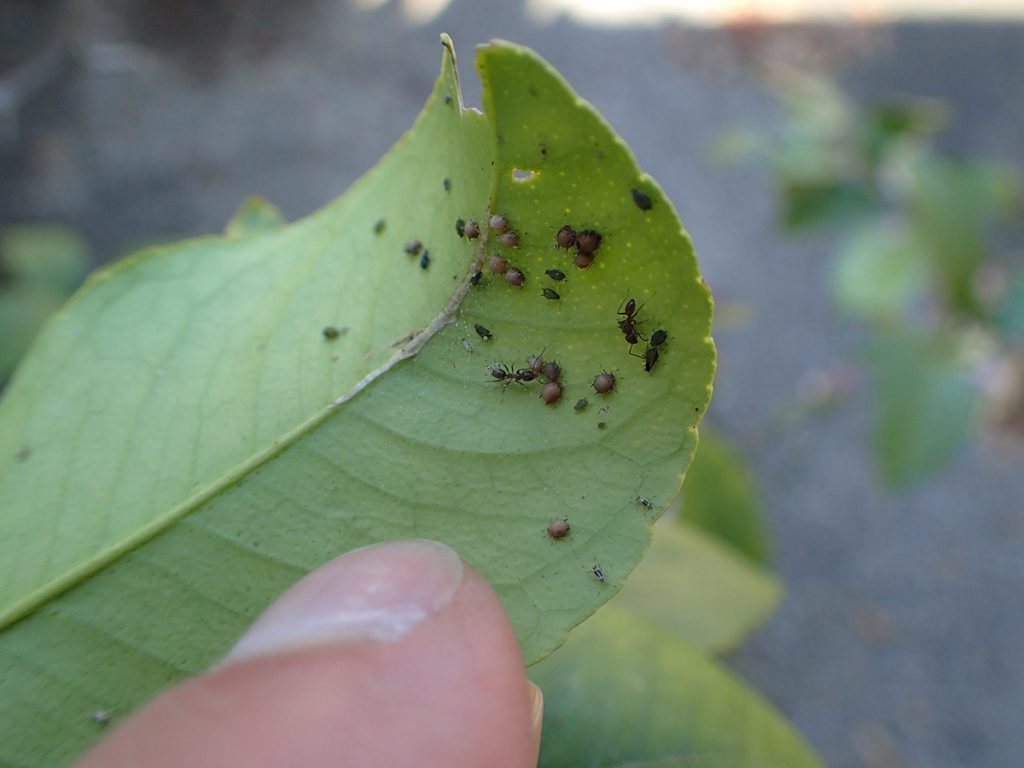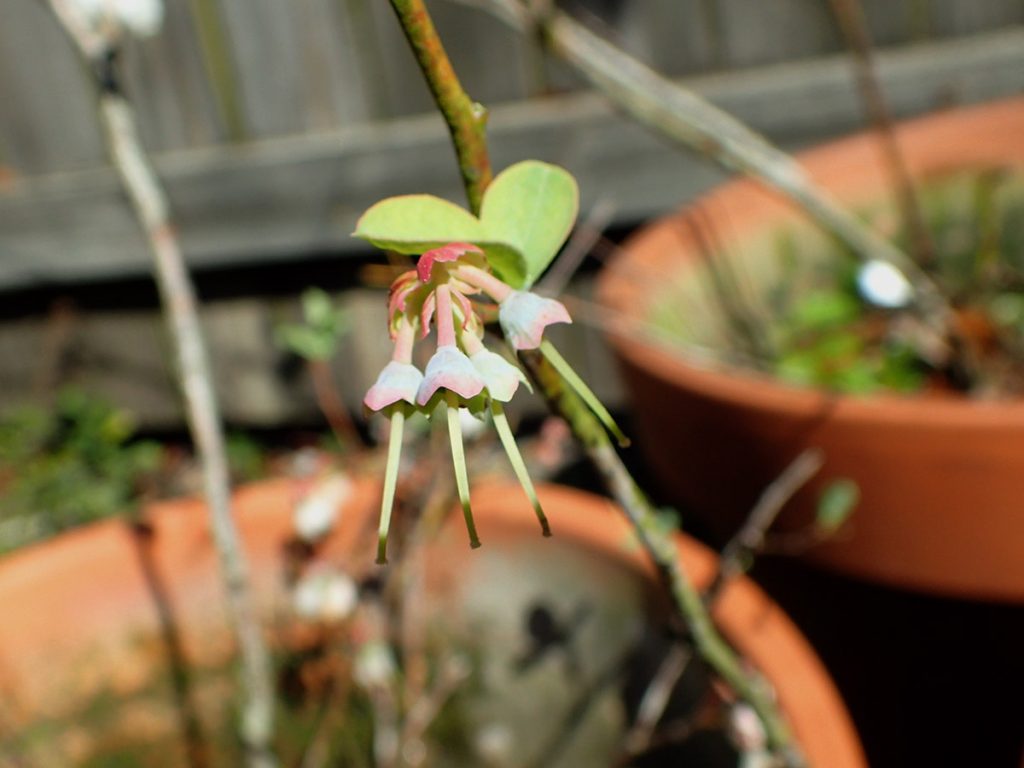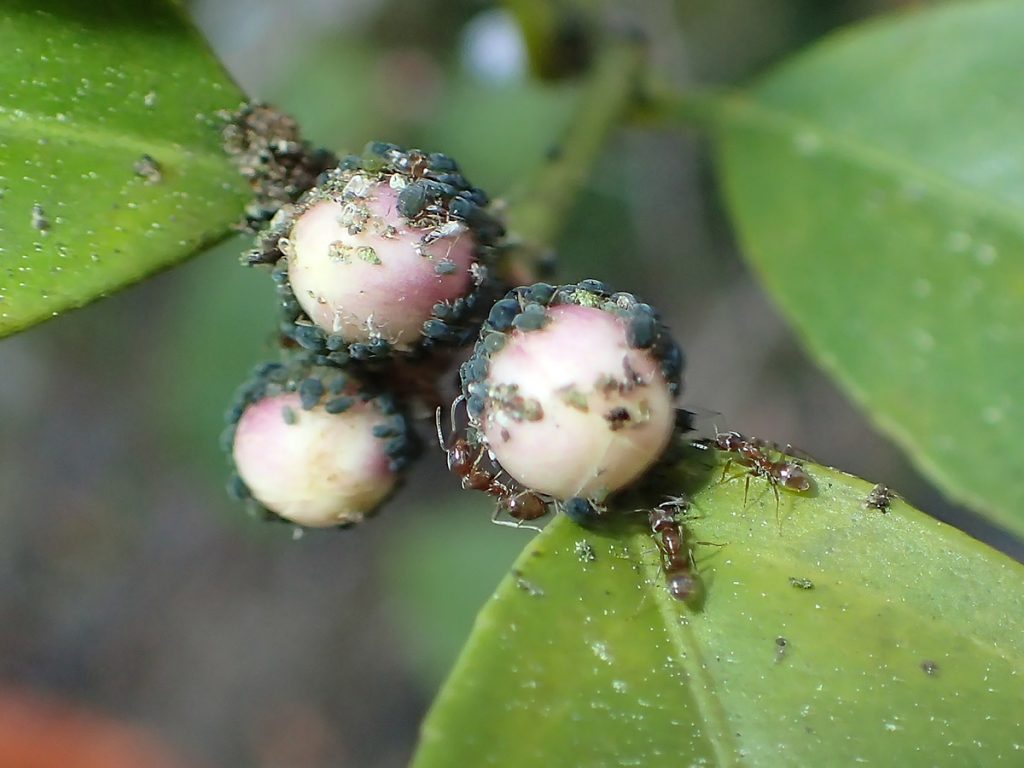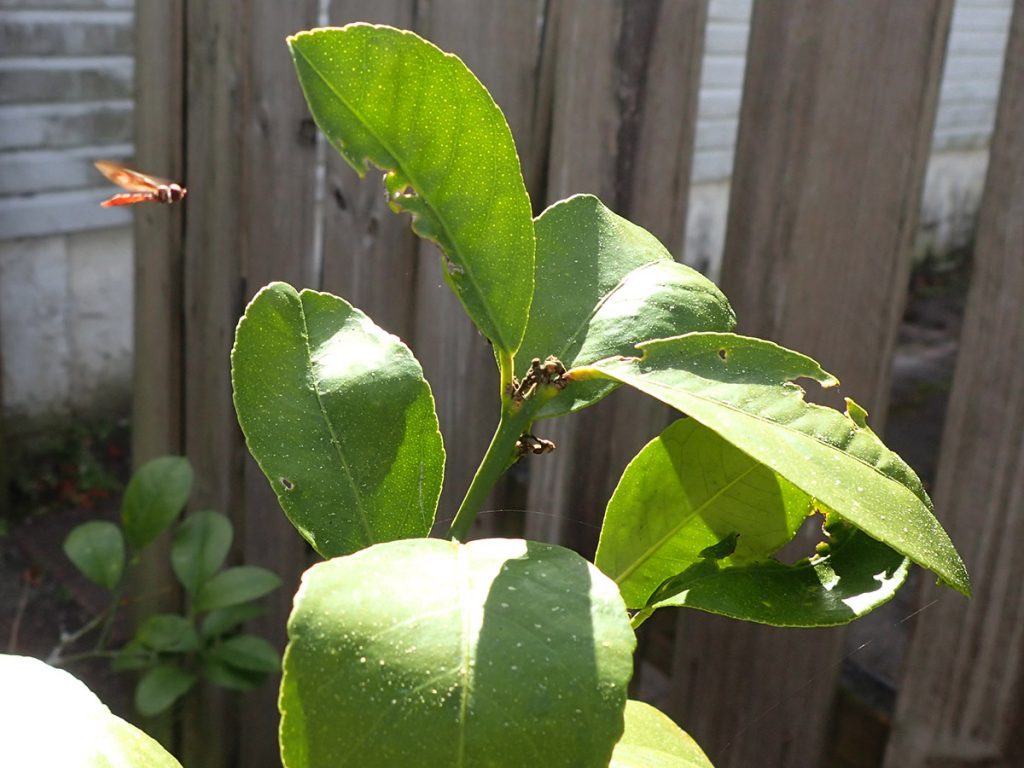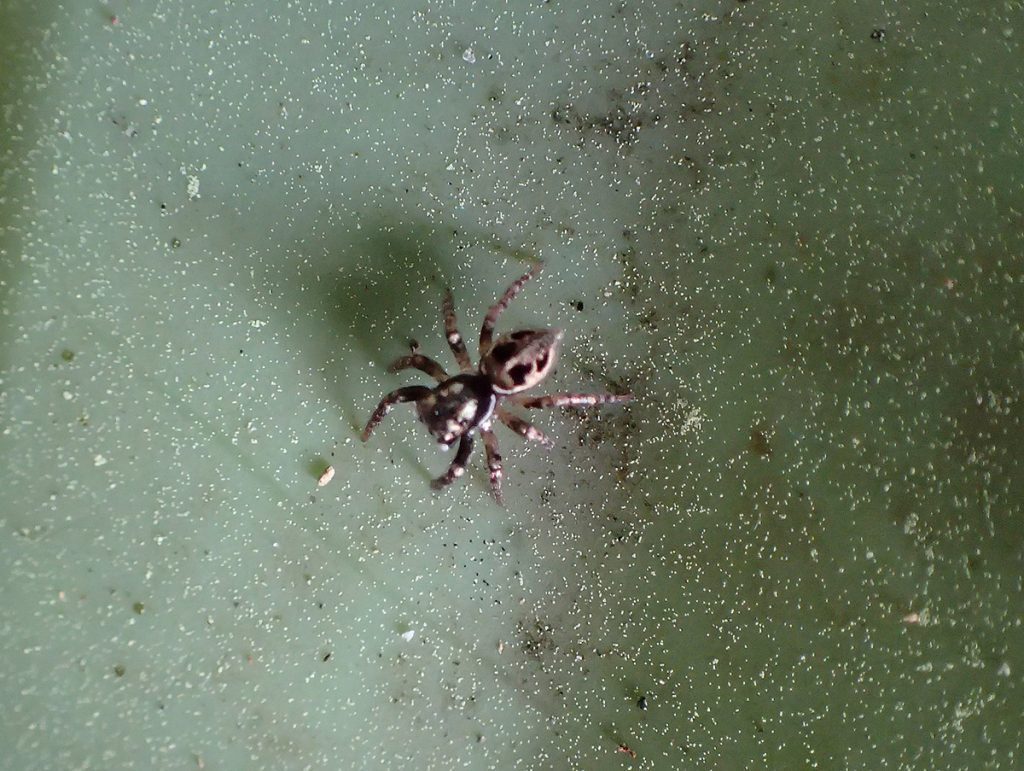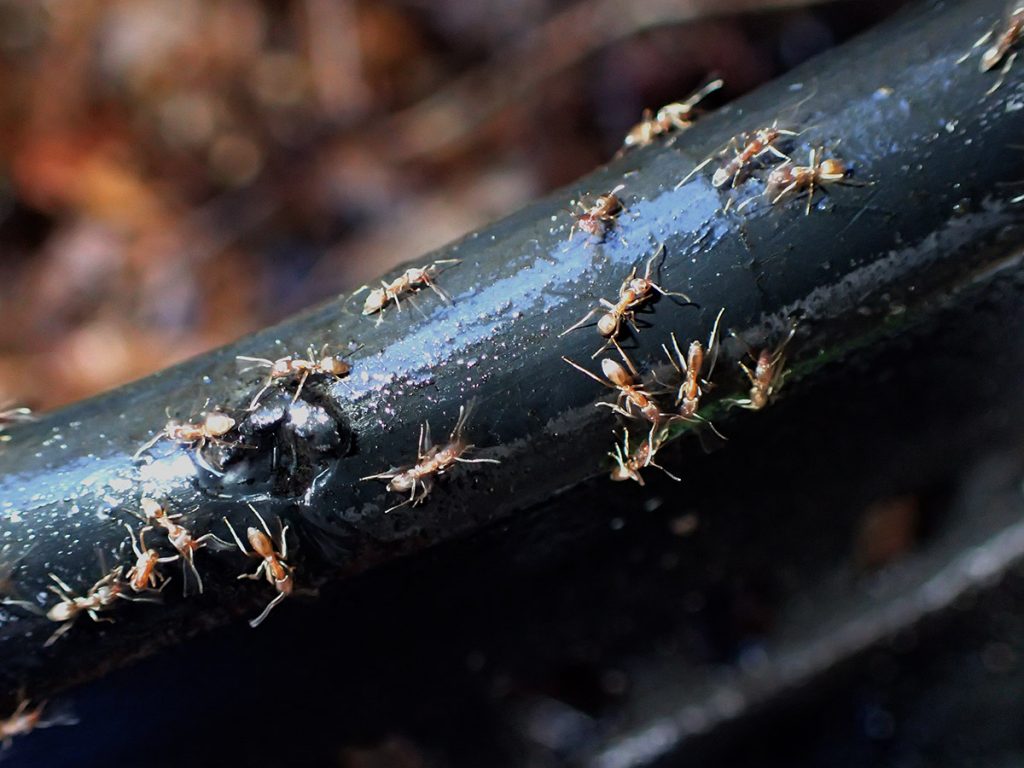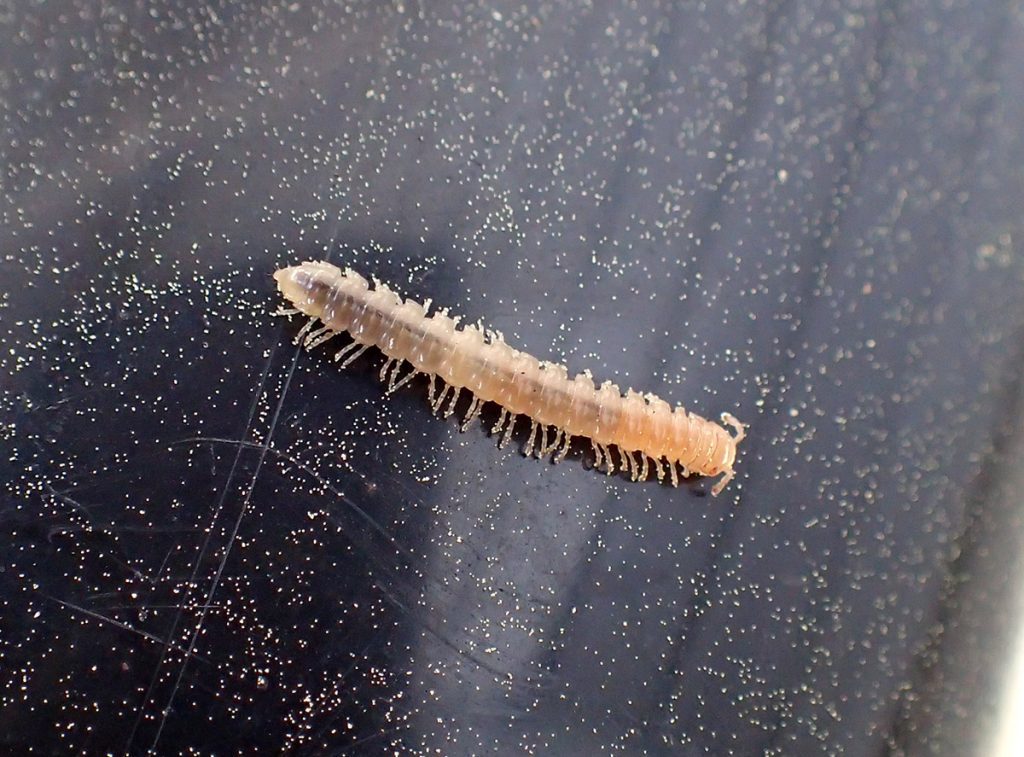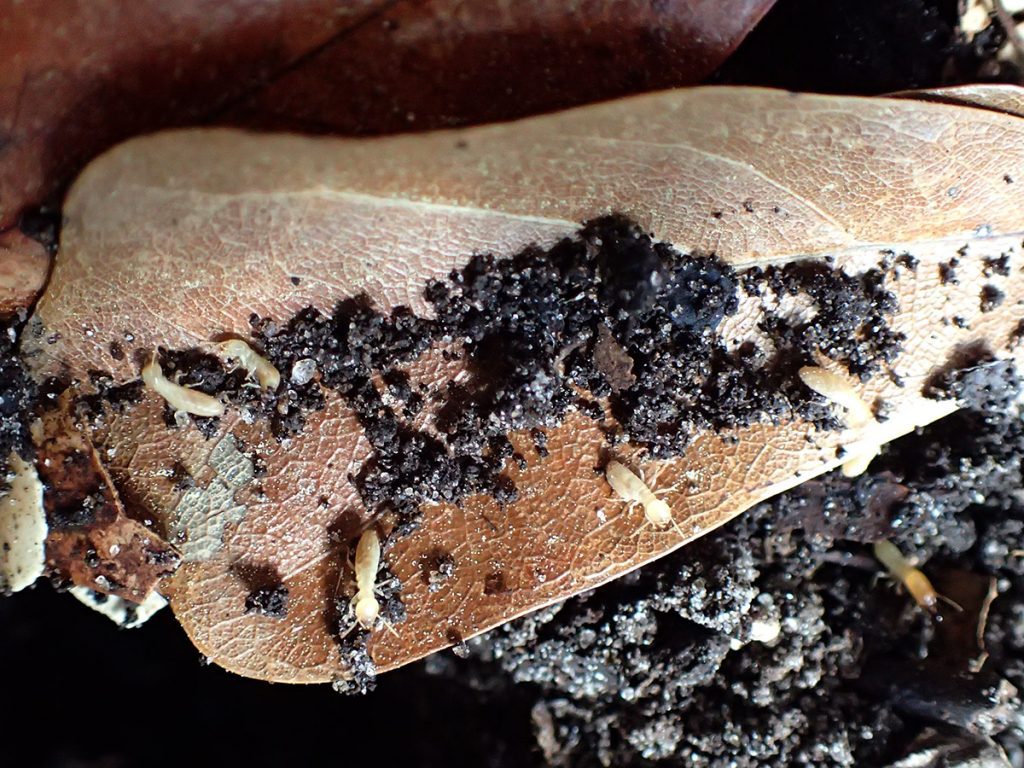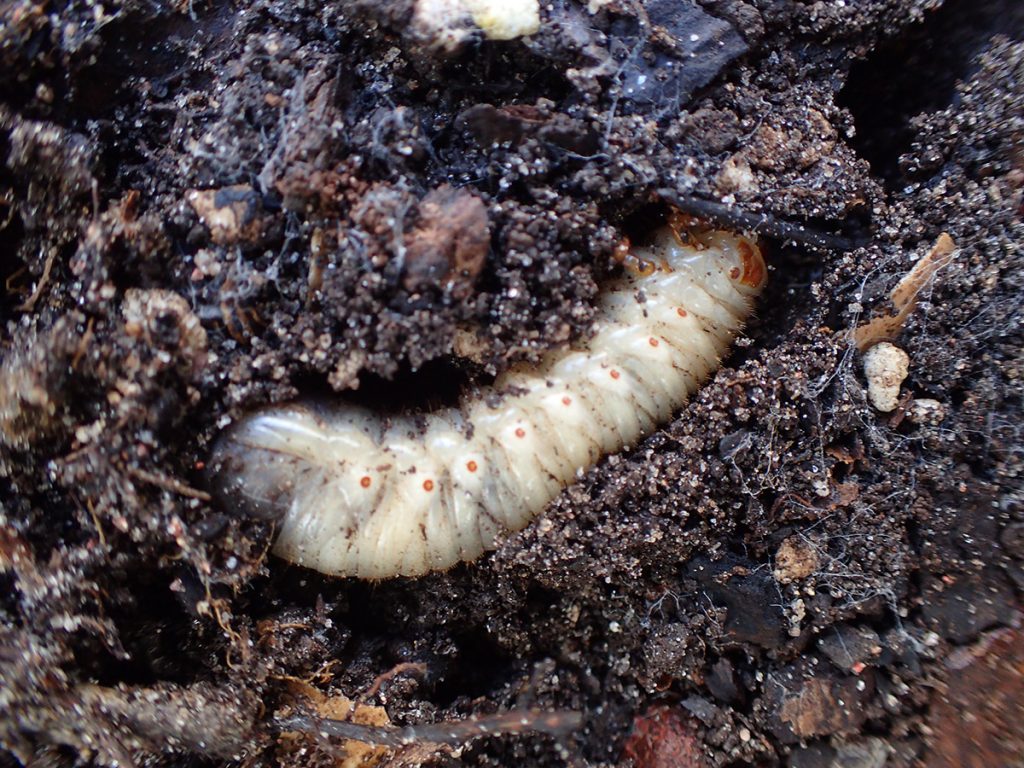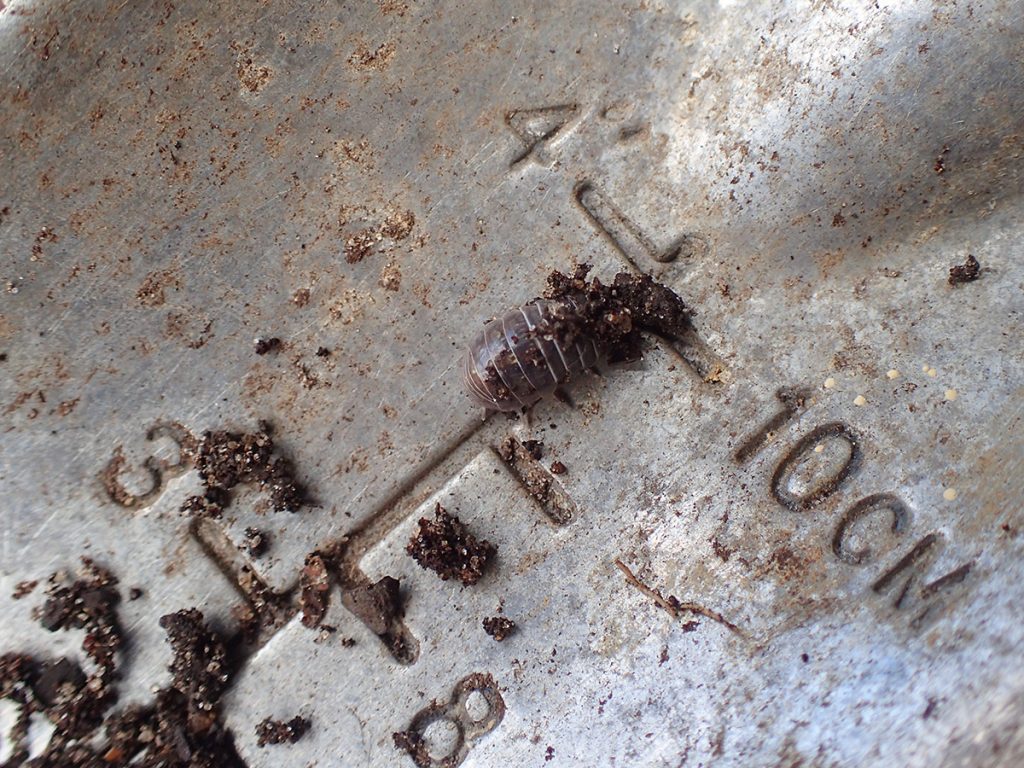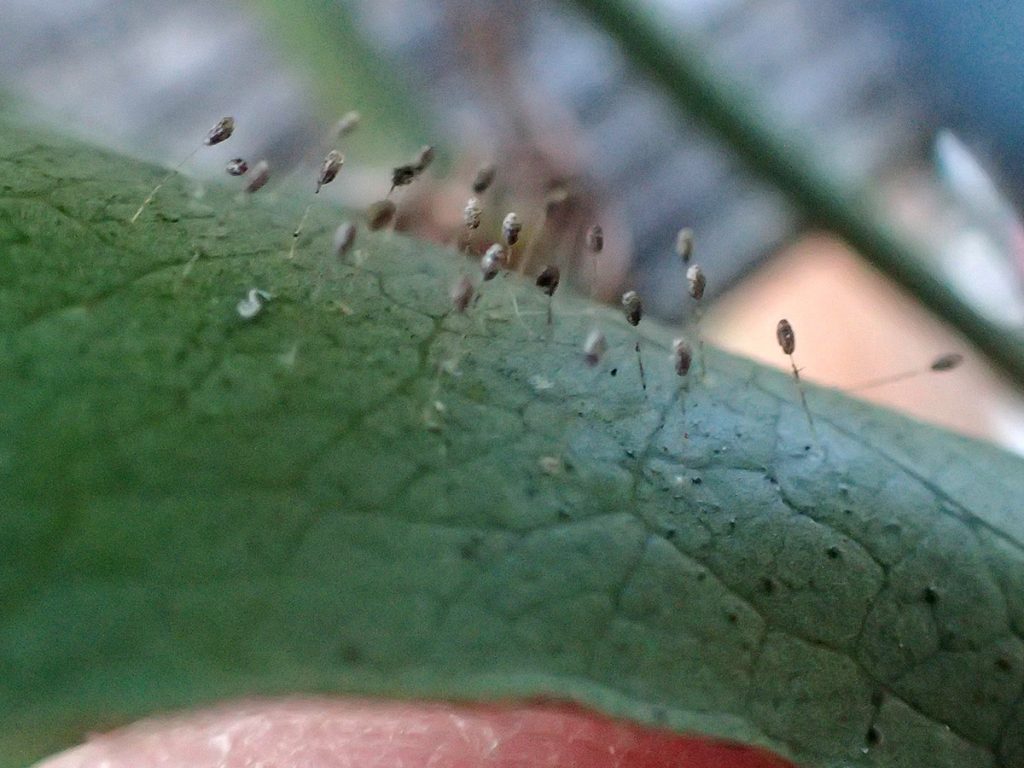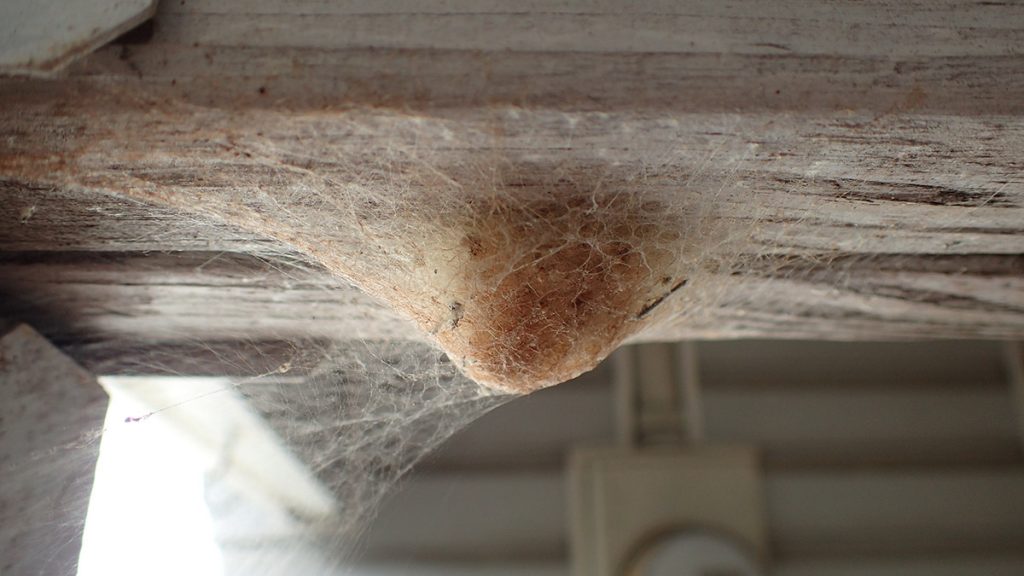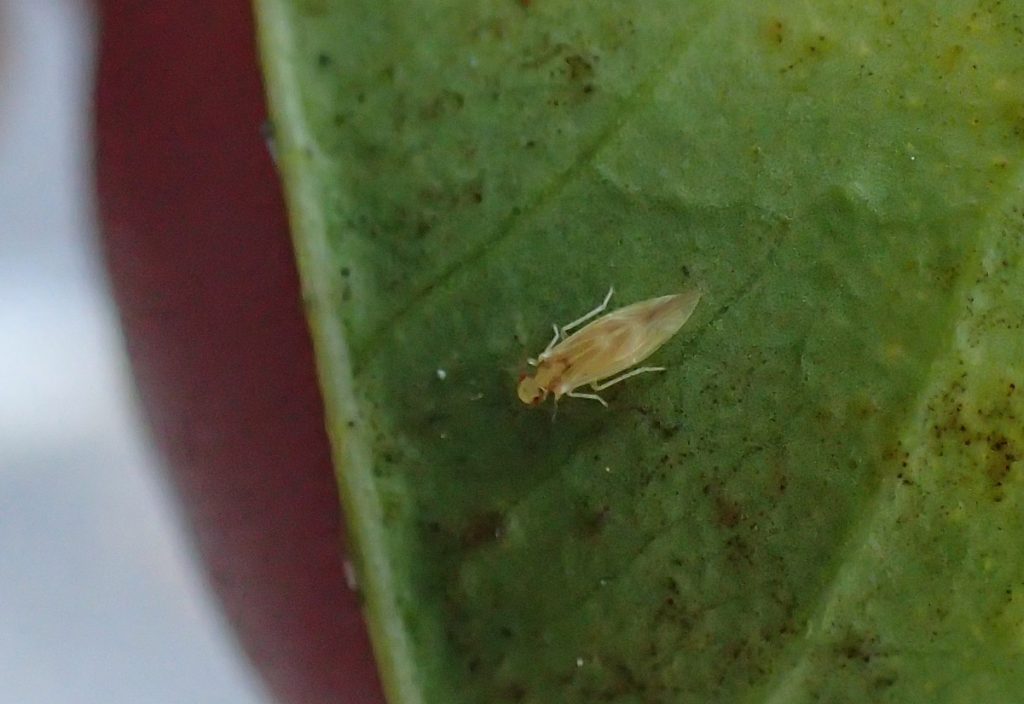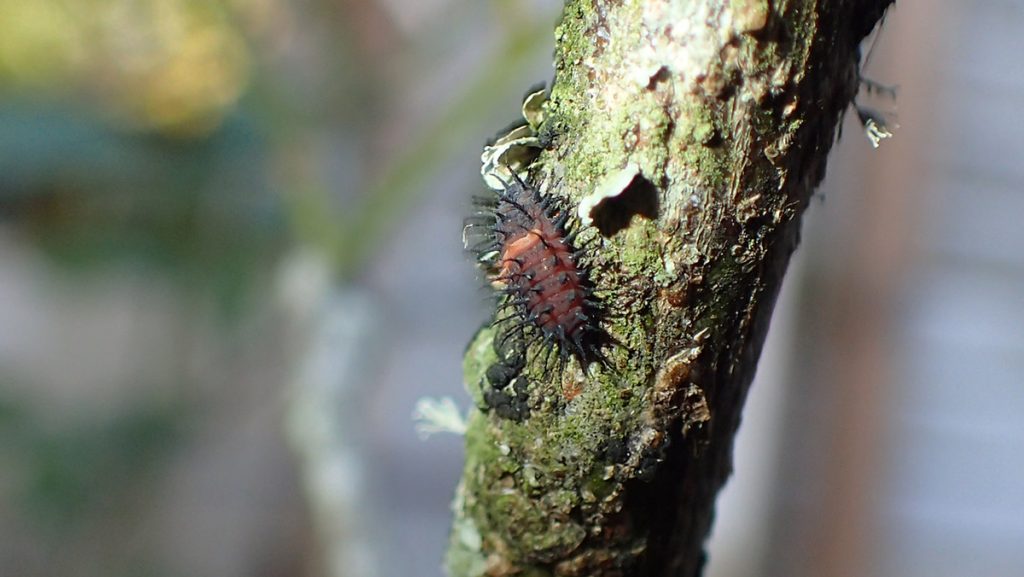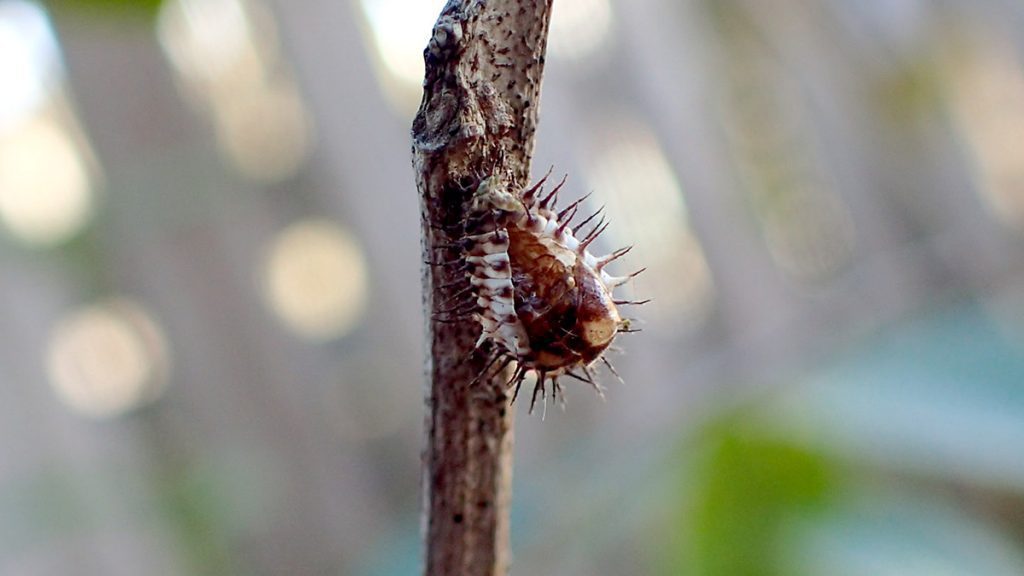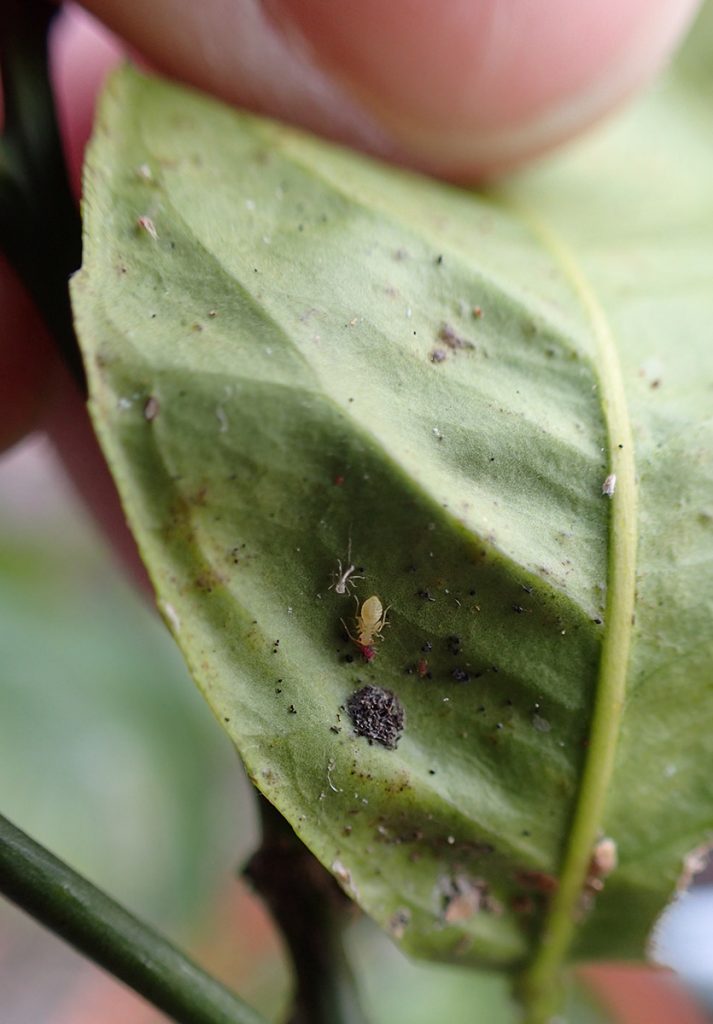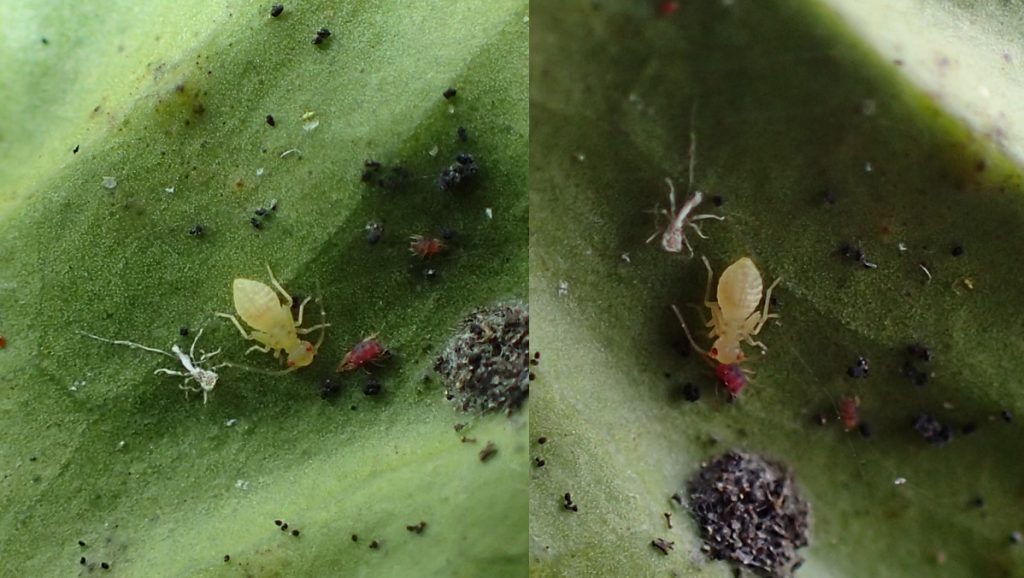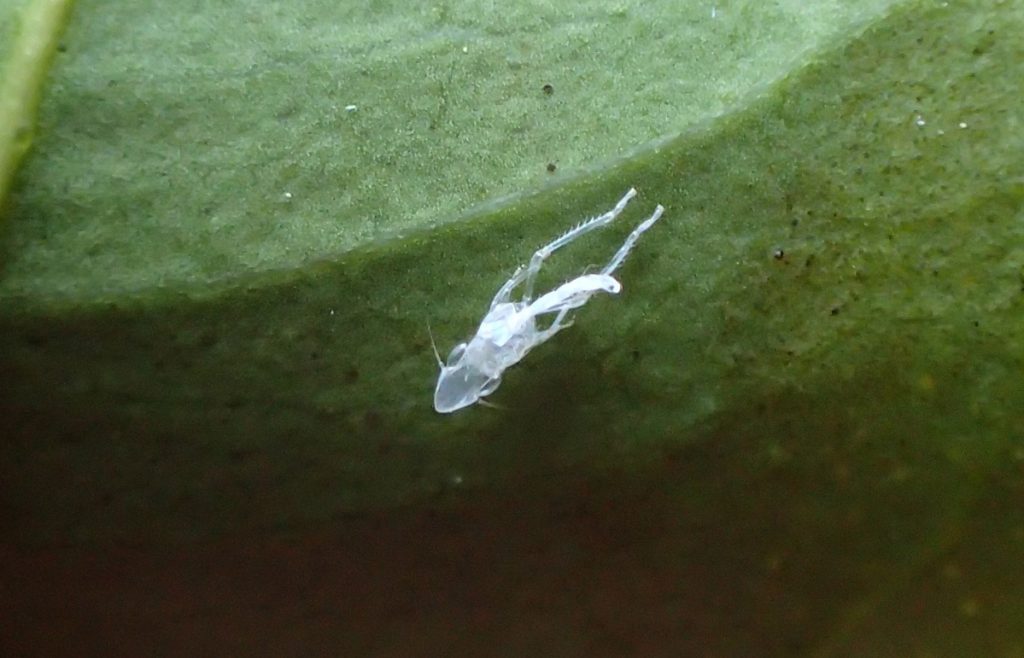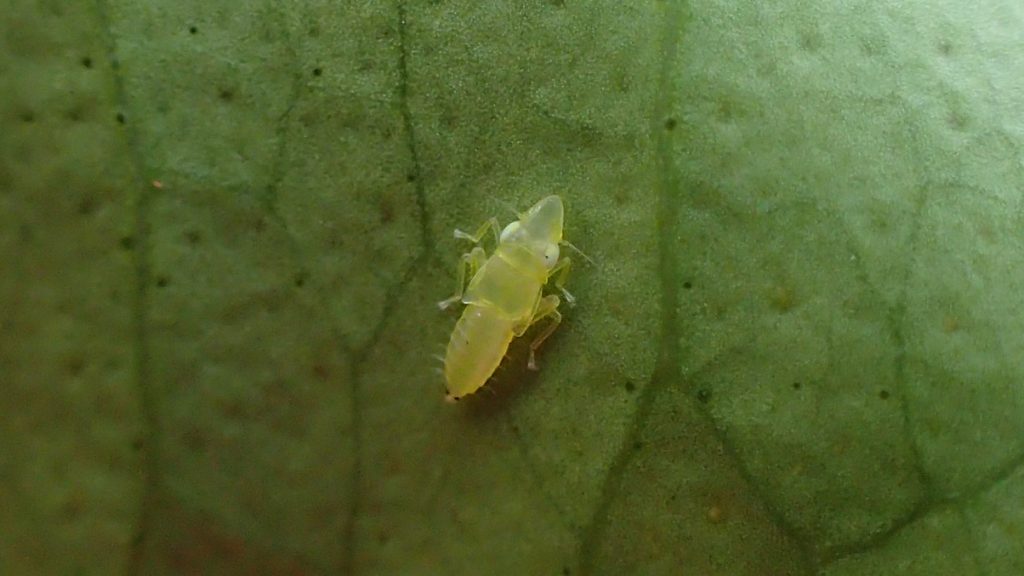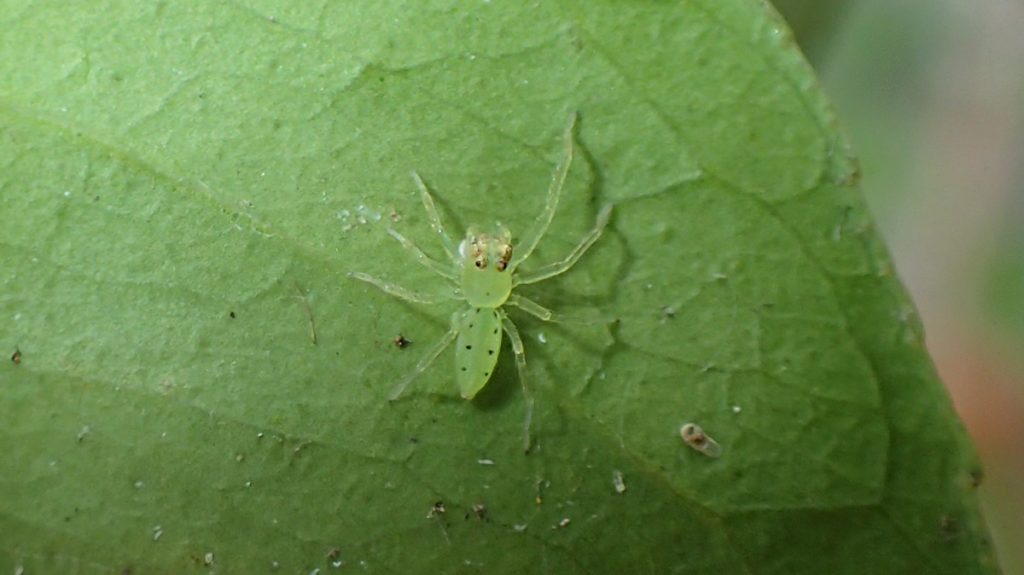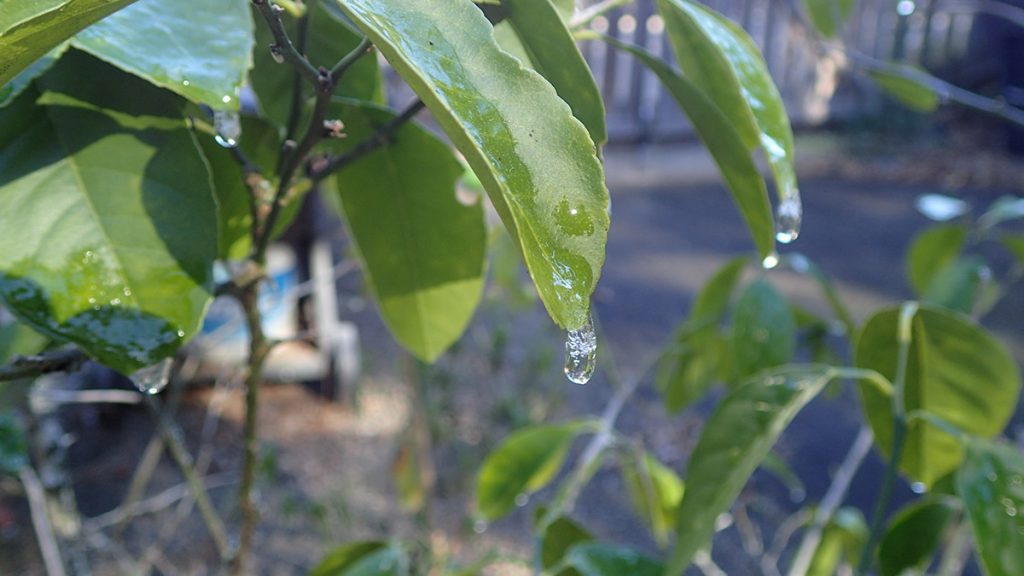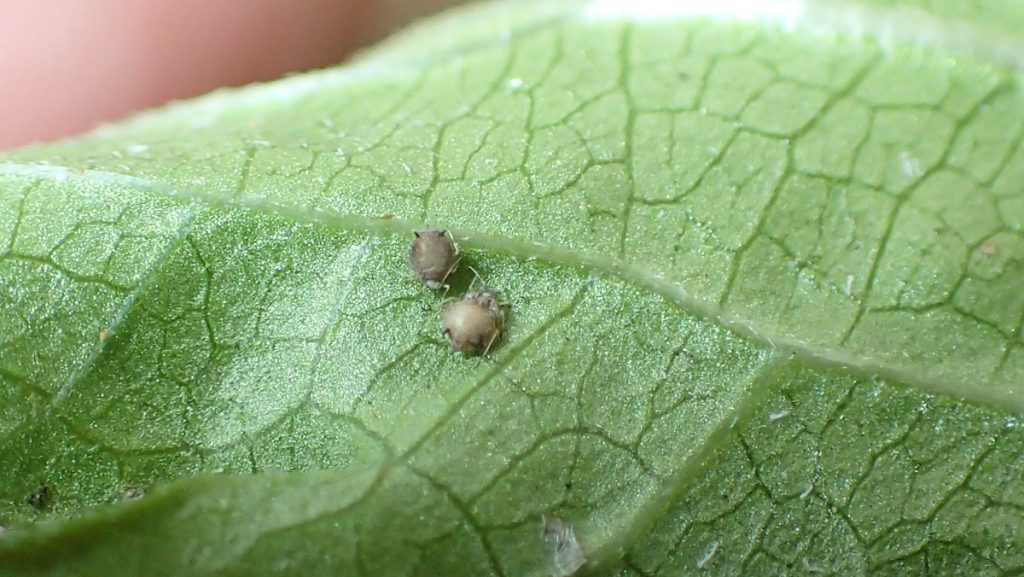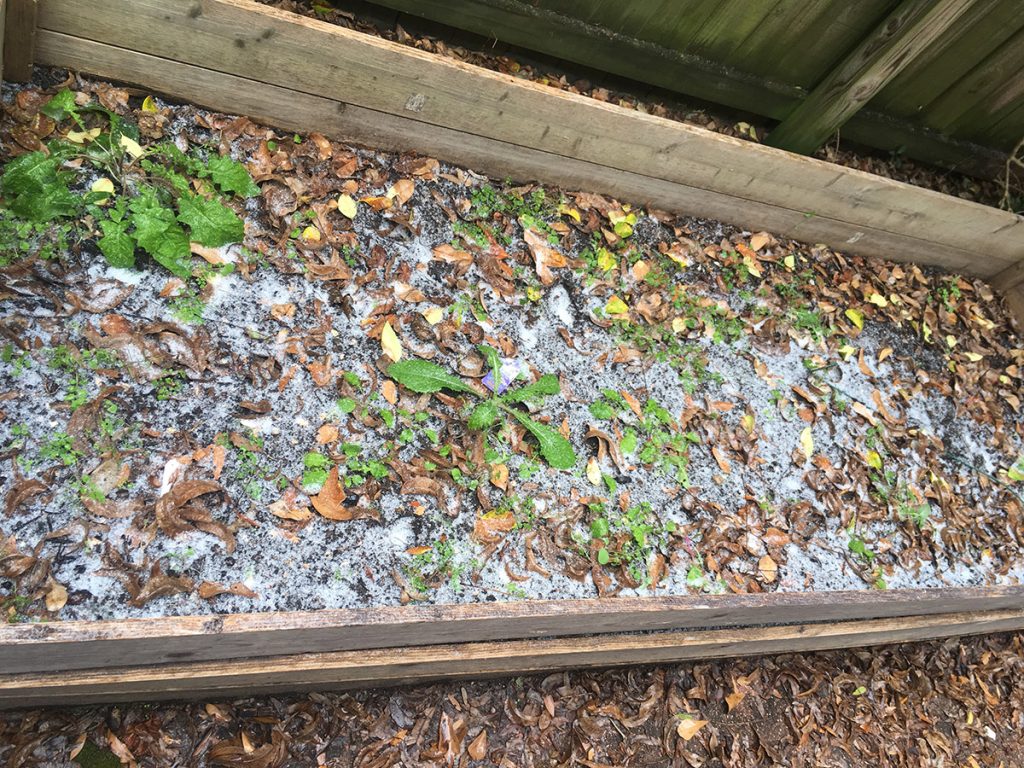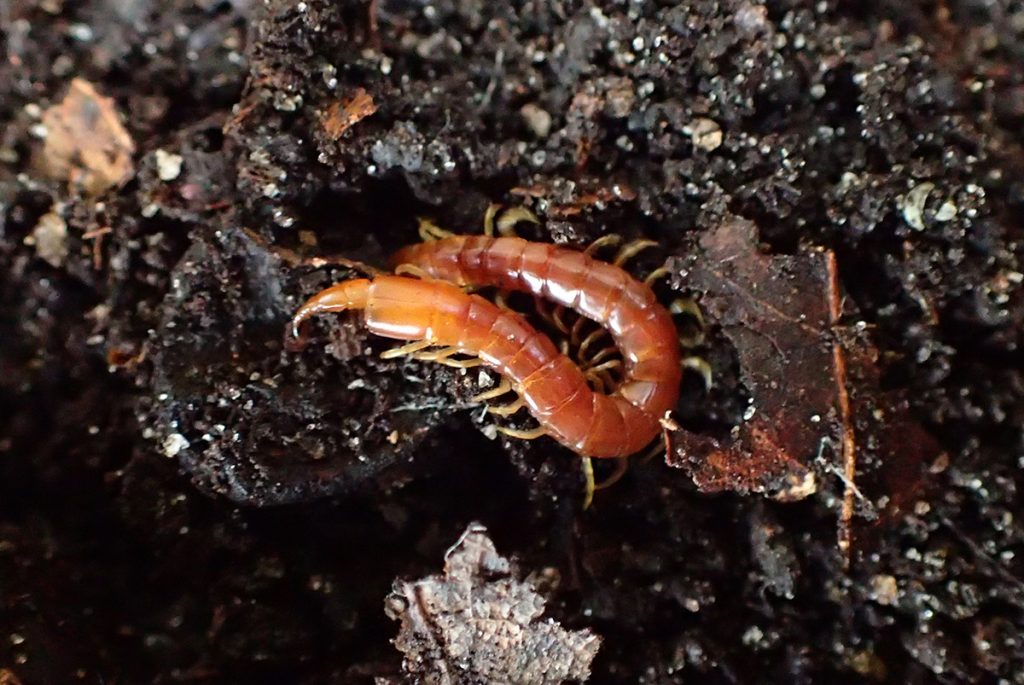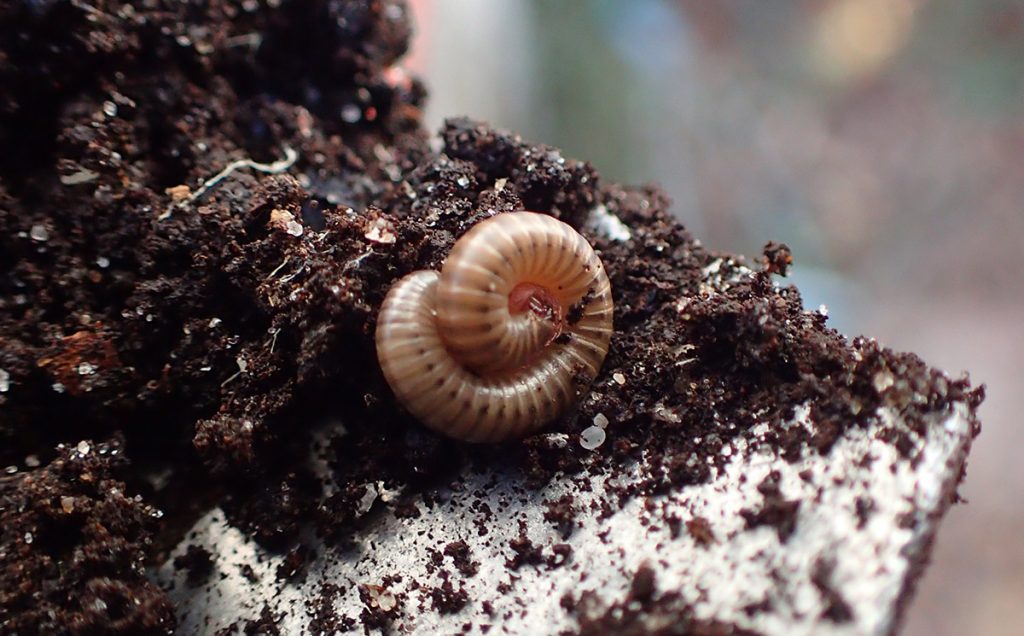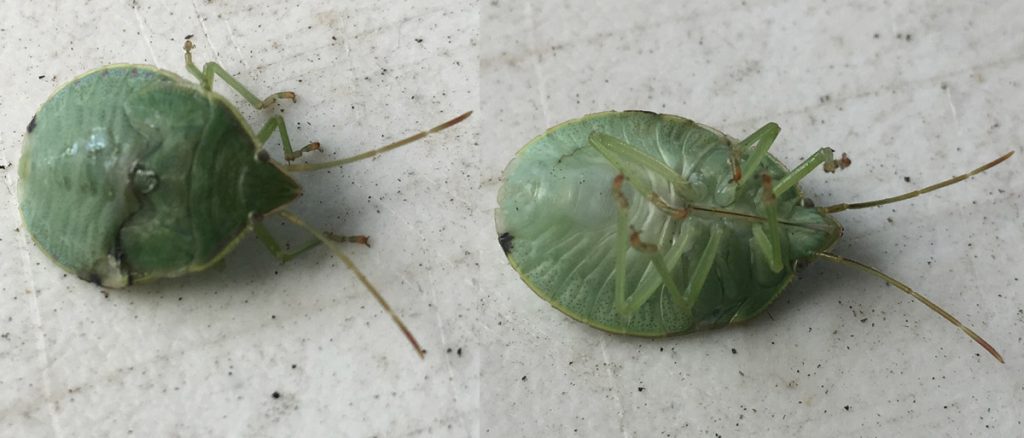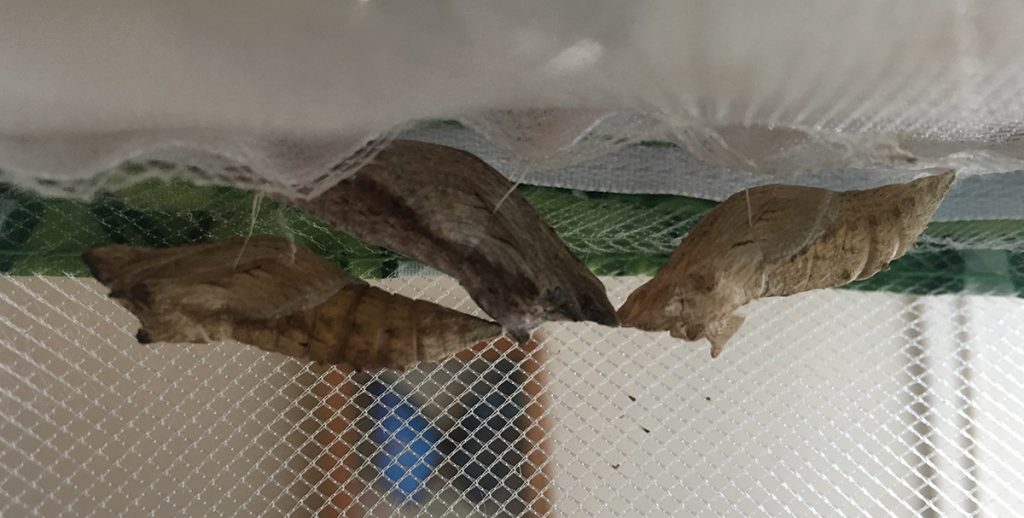National Geographic has declared 2018 the year of the bird. On this page of the WFSU Ecology Blog, however, it’s the year of the bug.
Here’s the idea: I’m taking photos of every bug I see in my yard for the entirety of the year. I’ll identify it if I know what it is, and I may look up others if I have time. My goal is to see how many different insects, spiders, worms, etc. I’ll have seen by the end of the year.
We’ll see how bugs interact with different plants, the soil, and each other. Who’s eating whom? What are they doing in different seasons? Let’s take a look:
Newer entries were added at the top of the page. For 2019 Backyard Blog posts, click here.
Day 349: December 15, 2018
High 68º Low 51º
This may be the last entry of the year, and I don’t have much in the way of new photos. Here’s another katydid, hiding in the fennel:
The interesting thing that did happen this weekend happened through iNaturalist, where I learned the identities of two different bug species I’d seen over the course of the year.
One ID came from a commenter, who identified bug #160 as likely being an oak gall in the Andricus genus, and not a flannel moth as I originally suggested. She linked to her ID of the same gall in iNaturalist from October of this year, not long after I spotted mine.
Another ID came from a spider I saw at my younger son’s birthday party, which we held at a Tallahassee park.
iNaturalist’s auto-recognition recommended an ID from the translucent green jumping spider genus- Lyssomanes. From there, two other users suggested Magnolia jumping spider as an ID- Lyssomanes viridis. Well, cool. Here is a spider I’d seen in my yard, and now I know what it’s called.
I’ve edited the entries for both species to reflect this new knowledge.
I started the Backyard Bug section of the blog long before I knew about the grant which will shape what we’re doing in the first few months of 2019. This new project has an emphasis on citizen science, and making our yards inviting to birds and pollinators, all wildlife really. So as I wrap this year in bugs I share my yard with, and with this project being planned, I’m starting to think about Backyard Bugs in 2019.
After one year of this kind of side-project (plus some other photography of insects over the last few years), I have a snapshot of the home biome. What I have to think about now is, what questions do I want to answer in year 2? And how will I set about answering them?
I’ve already written about iNaturalist and the Monarch Larva Monitoring Project. There are other citizen science initiatives as well, quite a few actually. As we keep planning this project, I keep learning about more. If I’m diligent, I can perhaps contribute useful data about insects to any number of research projects. But mine is just one yard.
So, as I’m plotting for next year, on this section of the blog and in our main content, I’m going to be thinking about this. How can I use this part of the blog more usefully? And how can I inspire folks to pay attention to the may critters they share their yards and parks with? This will fill some of what I hope are many quiet moments during my week off. Fingers crossed! And of course, I always love hearing what people think (about this or anything else in nature).
If I don’t write another entry- have a great holiday and see you next year!
Day 343: December 9, 2018
High 65º Low 47º
Another cold, rainy week and I rarely saw insects, aside from some spiders or something small flying away from me. At least, this is how it was during the hours I was home. I did see the occasional butterfly or yellow jacket while out and about.
I did see an non-insect seasonal indicator in the yard today, specifically on the bird feeder. The typical birds on the feeder are cardinals (one male and one female except when they reared two chicks over the summer), Carolina chickadees, tufted titmice, and house finches. Carolina wrens are common in the yard, and nest just about everywhere in spaces along the outside of the house, but only occasionally visit the feeder.
In the winter, we often get migratory birds, and today I saw the first of the season. I took a couple of hazy looking shots of it through the window. Opening the shades too fast seemed to spook it, so next time I saw it I took it slow:
It’s a warbler, and I’ve observed 3-4 species visiting our yard in previous years. I was pretty sure I knew what species it was when it confirmed it by turning its back on me:
This is a yellow-rumped warbler, which are common in Tallahassee during winter months. I’ve been recording several species of migratory birds around town using iNaturalist, which you can see on the widget that’s either on the side of the blog or under it, depending on what device you’re using to visit us. iNaturalist and seasonal change will be a big part of our upcoming spring project, so stay tuned for more information. And this week on Local Routes (Thursday December 13 at 8 pm ET on WFSU-TV), you can see my new segment on migratory shorebirds at Alligator Point. I’ll also have a segment on wood storks later this spring.
But, if you’re here because you’re strictly a bug enthusiast, bugs will be a big part of the spring project as well.
Day 342: December 8, 2018
High 64º Low 47º
I was able to do a little yard work today, and still I didn’t see much in the way of bugs. Living bugs anyway. I did see this on our last tomato plant (which I probably need to scrap. I don’t see those last couple of tomatoes ripening with this temperature):
We have here what seems to be a molted insect carapace sticking out of a decomposing end of a leaf. My theory is that this was a larval insect that created a cocoon from the end of this leaf and emptied itself inside of it to pupate. Time will tell, though I should remove the plant at some point…
Day 340: December 6, 2018
High 57º Low 34º
We’re back to cold temperatures, and yet I was still able to see at least one insect in the yard today:
It looks like a grasshopper, though not exactly like the ones I’ve photographed in the yard. The eyes are bigger and it has those twin tails, which the others did not have. And, again, it’s a translucent green bug found on a cold day, which is consistent with what we found in the earlier part of the year and now again as temperatures have been dropping.
Day 340 total: 1 new bug species
2018 total: 168 bug species.
Day 336: December 2, 2018
High 80º Low 70º
Last week, I learned that butterflies mostly survive the winter as eggs or pupa. So as it gets colder, I’m on the lookout for the eggs and pupa of any insects. Where do they all go? Our big project in 2019 will focus on seasonal change, and what animals do in Florida when it gets cold is something I’ve been curious about. So I’m going to interview some knowledgeable folks to find out.
Do you have questions about bugs, birds, reptiles, or amphibians in the winter? Leave a comment below or e-mail me at rdiazdevillegas@fsu.edu.
As for today, yes, that’s a high of 80 during a week in which parts of Tallahassee had a hard freeze. Between the colder temperatures, rain, and the fact that it’s dark when I water plants in the morning and get home in the afternoon, I didn’t think I’d have photos this week. But this morning, there was enough sun and warmth for a little bug activity.
I was looking out the window and I saw a cloudless sulphur flittering around our bell pepper plants, finally flying under some leaves. I grabbed a camera and zoomed in where I saw it fly. But it took a while to find it.
You can see why. This butterfly is yellow with brownish spots. It looks like a lot of leaves on this plant, and so you can see how this pattern helps it hide. Can you tell which photo has the butterfly in it?
You can see a top view of the butterfly in the first image. I moved to a different spot, keeping my distance so as not to spook it and have it fly off. Here’s a better look:
It wasn’t the only well camouflaged insect I saw today. Looking for wintering insects under leaves, I saw this katydid:
I didn’t have a ton of time to turn leaves over, but I did see something in an early insect phase:
I wonder if the holes mean that some insect has popped out of these structures. Or maybe something poked a hole in to eat them?
Getting back to a less active time of year, I’m paying more attention to every little thing I see. Looking at other leaves in proximity to this one, I saw some leaves that had fallen from higher trees. I didn’t see any bugs on them, but I did see these cool little mushrooms:
Here’s a closer look at one:
It’s one of my favorite things about my constantly looking for and paying attention to bugs in the yard- it’s the other life I see that I may never have noticed otherwise. I found another interesting cluster of mushrooms when I was chasing a large wasp with a camera:
Like the mushroom covered leaf, this came from up high on a bit of branch that fell onto the top of our shed. It makes me think that fall might reveal some previously unseen insect life, those bugs who live high up in trees that are dislodged by leaves falling or branches falling in heavy rains.
It was warm enough that mosquitoes were biting. In the interest of documenting an adult mosquito for this blog (I took some video of larvae earlier), I let this one dig into my leg for a second as I snapped a pic:
Lastly, I marvel at seasons in north Florida. Where we are, winter might be freezing cold or kind of warm. Or, alternating cold and warm over weeks or months. I don’t think I can point to what a typical north Florida winter feels like.
Take this cutleaf coneflower plant. Only one of our three plants bloomed this year after taking a beating last February. Now, in December, the other two have finally started to flower:
Day 322: November 18, 2018
High 73º Low 40º
I was doing some yard work today, taking care of odds and ends before heading out for the Thanksgiving holiday. These two leaves caught my eye. What was keeping them on the shed?
I took a closer look:
Something lives in there, or is making use of the webbing. Hopefully it’s still there when I get back.
Also, lastly, some kind of beetle was perhaps pupating on the shed. Something left this here:
Day 321: November 17, 2018
High 69º Low 35º
We’re leaving for Thanksgiving in a couple of days, so it’s time to take care of an important piece of work in the garden. I’m taking care of our tropical milkweed.
I’m sorry if I’m being repetitive, but some of you may be new here. Tropical milkweed (Asclepias currassavica) is not native to Florida, and can flower year round unless killed by a hard frost. If they don’t fall off, those flowers carry a protozoan known as OE (Ophryocystis elektroscirrha), which can be lethal to monarchs. It is recommended that all tropical milkweed in the United States be cut back after Thanksgiving.
This year, however, I’ve started pulling most of them out. The ones you see above are the volunteers, plants that sprouted from seeds in places where I didn’t plant them. It’s free milkweed! But I’m starting to worry about the mortality of our monarchs, and been trying to move to native for all of my plants. So I’m making a transition.
The one below was our tallest and leafiest milkweed plant, which was growing out of a crack in the pavement. Our last caterpillar brood recently tore through all of its leaves, but here we see that it was starting to resprout from the roots. This plant was vigorously healthy beyond any reasonable explanation.
When I pulled it out, I found the reason for this amazing health:
We’re looking at the underside of the excavated plant. That thick, woody root that I’m holding upright was a taproot that led straight to one of our compost bins. There, it found moisture and a seemingly endless supply of nutrients, allowing it to thrive when I never so much as watered it. Wow. Smart plant.
On to the bugs in our yard, which aren’t numerous. Below is a little green spider:
I found a few of these as I trimmed some branches. During the earlier, colder part of the year, spiders like these were among the few bugs I saw. Here, we seem to be returning to a similar assemblage of insect and arachnid life.
Edit 12/18/18– this is likely a Magnolia Green Jumping Spider (Lyssomanes viridis).
Earlier this week, I had a talk with Dean and Sally Jue, the lepidopterists featured in many of our butterfly segments. I asked them where butterflies and moths went in the winter. I was interested to find out that in few species do adults make it through the winter months. When it’s too cold for butterflies to survive, most live on as chrysalides and eggs, ready to hatch and eclose in spring.
This means if I look, I may actually have several pupa hidden in grasses and under leaves, or in leaf litter. I had noticed that I had a few species of butterfly whose larvae eat grasses. I’ll start keeping an eye out.
Day 320: November 16, 2018
High 60º Low 33º
Below is a photo of what I think will be our last monarch caterpillar of the year. The others had left to, I hope, make their chrysalides. I saw this one on the plant last night as temperatures dipped into the thirties. The six of them had eaten our leafiest milkweed plant bare, but this one stayed to chew on a stalk, as one or two often do.
The forecast approaches freezing again tonight, so I don’t have great expectations for this last brood. We’ve had stragglers like this every year we’ve raised monarchs, who breed when most of the butterflies have started leaving for the wintering grounds. Their mortality is poor, perhaps owing to whatever has put them out of sync with the majority of the population.
I wish I saw where even one of these guys has gone to make a chrysalis. Unless I do, how they fare will remain a mystery.
Day 317: November 13, 2018
High 75º Low 56º
We’re back from camping, and five of our monarch caterpillars are still here. They’ve taken care of the leaves on our largest milkweed plant. Even though this plant has hosted a dozen or two caterpillars since July, it had never gotten totally stripped before. Perhaps we had less mortality with this round than we had previously. Also, previous batches had more caterpillars so I’d move other potted milkweed closer so that they could spread out and get all that they needed.
In the brief time I was out, I couldn’t spot a chrysalis, but I imagine, looking at the size of these five, and the bareness of the plant, that it made one around here somewhere. If they’re still on the plant when I get home, I may move them into an enclosure to better protect them.
Day 313: November 9, 2018
High 82º Low 62º
Amy has to work tonight, and I’m home alone with the boys a little earlier than usual. So I’m home at a time with good light to check on our monarch caterpillars. They appear to have reached the fifth instar.
Size isn’t the only indicator for larval stage, though these guys are big. Consulting the University of Minnesota Monarch Lab online guide, I see that the black bands become more pronounced in this phase, and appear “almost velvety.”
The one below has chewed the base of the leaf to break it and let it hang vertically. This is typical of this instar. You can see this in action on the video I shot when we had our first monarchs two years ago.
Here in our fennel, we see what looks like a bagworm moth caterpillar. Its “bag” isn’t as decorated as the others I’ve seen in the yard, which leads me to believe it’s a younger caterpillar.
Seeing the fennel makes me wonder what might have happened with black swallowtails around my house. They had been consistently laying eggs on the fennel until about August, when a small batch of eggs failed to hatch. I haven’t seen any since. We had eggs a lot later last year, and had overwintering chrysalides. Why the change this year? Luck of the draw?
As we continue to plan our spring citizen science project, I wonder how we can use tools like iNaturalist to gather this information locally. Is it just my yard, or part of a regional trend? If so, over how large a region? But maybe this is too specific a question for iNaturalist, which records information for all plants and animals. For more focused information crowd sourcing of this sort, maybe a local butterfly and caterpillar Facebook group would work better? Hmmm…
Anyhow, you can see what I’ve been seeing as I get acquainted with iNaturalist. I haven’t been recording all of the species in my yard, but have been visiting parks and recording what I see as fall becomes winter.
Day 312: November 8, 2018
High 80º Low 63º
Our narrowleaf sunflower continues to be a focal point for insects and spiders in the yard. Here, we see what I think is a mud dauber (species last spotted on August 26) grabbing some nectar.
This insect looks to me to be a spittlebug, and we have been seeing spittle on this plant. I last saw one on August 28, and though it’s a different color, it has the same shape. A different species of spittlebug?
Here’s our lone bumblebee, working a pentas plant. You can see the pollen it’s storing on its back legs.
Here’s a small fly on one of our milkweed plants.
Lastly, I went to count our monarch caterpillars again this morning. We had eight when I last counted and entered data for the Monarch Larva Monitoring Project. Initially, I only saw one in the leaves. Did I lose seven caterpillars? Experience has taught me that they sometimes take a break and hang out on the ground, or on the milkweed stalk.
And here they were:
We’re down to six, it seems. Still fourth instar.
Day 312 total: 1 new bug species
2018 total: 167 bug species.
Day 310: November 6, 2018
High 82º Low 70º
Over the last weeks, temperatures have dropped and we’ve gotten a bit of rain. I’m still seeing plenty of insects, but perhaps less than I had been. I feel like we’re past the peak season for butterflies, moths, and caterpillars, and I’m not seeing as many new bug species. Scroll down to the summer months and you’ll see the amount of activity that was easily observed in the relatively small space of our yard.
Anyhow, I have been seeing a fair amount of spiders:
This one was hanging on a web between two blueberry bushes. Using the macro mode on a point and shoot camera, I lined it up with our black compost bin so the auto focus could pick it up better as it floated there.
Day 310 total: 1 new bug species
2018 total: 166 bug species.
Day 309: November 5, 2018
High 81º Low 65º
So here’s the thing: I wasn’t here for a lot of this week to photograph our yard. I was at the Cornell Lab of Ornithology for a big upcoming project, which will be the main focus of the WFSU Ecology Blog in the spring. And a lot of what I learned can be used to enhance what I’m doing here on the Bug Blog.
Let’s start with the one species of insect I’ve been consistently seeing in the yard since temperatures have been dropping: the monarch caterpillar. Oh boy, more monarchs, you might say. I know I’ve had a lot of photos of these guys since July. Today, they just happen to be the easiest insect to spot.
But here’s the thing- monarchs breed on their northern migration. They stop breeding around the time they reach the northern United States, and then head south. And just today, I saw a photo posted by the Apalachicola National Estuarine Research Reserve of monarchs massed on the coast, ready to finish the southern migration over the Gulf and into Mexico. This, while caterpillars munch away on milkweed a little ways down the panhandle.
It’s been documented that the southward migration has been delayed by warming temperatures in recent years. It also feels like warmer winters see them leave Mexico earlier. This year and in 2016, I didn’t see caterpillars until July; where last year, which started with a mild winter, we were swamped by mid-April.
Those are my observations, and I can’t necessarily draw conclusions from them. But if I, and other folks who raise monarchs, share these observations, we might help researchers get a handle on how climate is affecting these insects.
With that in mind, today I entered information about my monarchs with the Monarch Larva Monitoring Project. After creating a new login, I entered my yard as a new observation site. Researchers need the location to help map where monarchs are, but you can choose to make a site anonymous to the public.
Next, you enter how many of each milkweed species you have. And then you enter monarch information- adult, egg, or caterpillar. I have 15 plants (3 white swamp milkweed, 1 pink swamp milkweed, and 11 tropical), and only one plant had caterpillars. That one plant, tropical milkweed that sprouted from a crack in the pavement, had eight caterpillars. So next, I looked up what instar they were, using their guide. It just happens to be what I used to identify the instars of that first batch I chronicled two years ago– it’s thorough.
Today, I have eight 3rd instar caterpillars. They had tentacles at both ends, and the ones up front were just starting to get longer than the ones at the rear.
There was also a spot to mark whether there were milkweed aphids on any plants. As we see above, I did see them on some plants, just not the plant with caterpillars. Researchers are trying to establish a link between the little orange pests and monarch mortality. My theory is that plants with aphids attract predatory insects, which increases risk of caterpillar predation. I’d like to be able to record these predators as well, like the syrphid larva below, spotted near the aphids above.
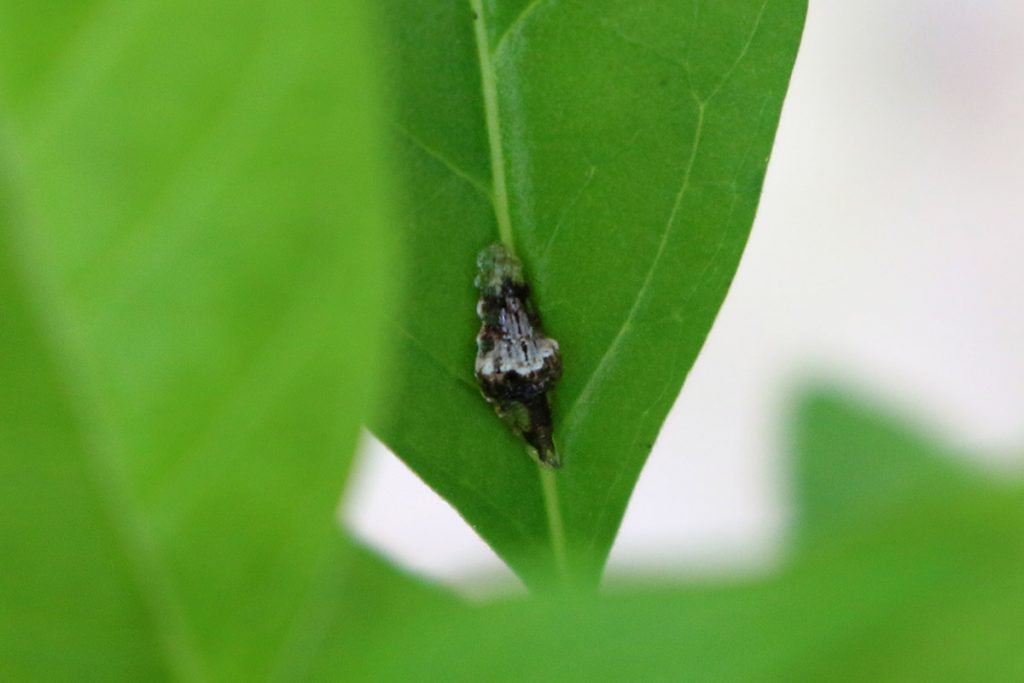
Syrphid larvae eat milkweed aphids. This means they can stomach the toxicity of milkweed leaves. Does this make them a threat to monarch caterpillars? Probably not. But aphid-eating ladybugs and assassin bugs are.
Using some of their optional worksheets, I could add this information as well. This sheet allows me to enter whether the plants were in bloom, or had seed pods. Also, since many of my plants are resprouting leaves after previous monarchs devoured them, I can enter leaf density as well. With other optional sheets, I can monitor daily rainfall, or more specifically look at monarch mortality.
Wasps are another threat to monarchs. While the adults are pollinators, they often feed caterpillars to their larvae. Here, a wasp seems only interested in the flowers.
Anyhow, I’m starting late in the season, but if I keep up with it over the next few years, and choose to fill out the optional, more in depth worksheets, I might learn a few things about the monarchs we’re raising.
I learned a lot about citizen science this weekend in Ithaca. Expect to see more about how we can report what we see out in “capital N” Nature or in our yards and parks.
Later that afternoon…
Wouldn’t you know that later on the same day I enter my information, the caterpillars appear to have molted. Note how much longer the forward tentacles are. The ones I see now appear to now be fourth instar.
Moving away from monarchs- going out at night, I saw a couple things under the light of my headlamp.
I last saw one of these on January 6 (Bug #9 on our count). Interesting to see it again as it gets cooler, though that doesn’t necessarily mean anything.
I saw this small, translucent spider on a narrowleaf sunflower petal.
Earlier today, I had seen this small insect pollinating the sunflower. I love this plant. I had bought one a couple of years ago that didn’t survive over winter. Here, it has reseeded and is finally blooming in November. A lesson that I need more flowers in the ground and less in pots.
This sunflower species typically flowers starting in late summer, but I think being in a pot has slowed its development. It’s the first year I’ve fertilized flowers, but wildflowers are happier with their roots in unbound earth.
And so having less flowers in pots will let me get a better sense of seasonal change. I’m going to drop a word on you: phenology. This is the study of seasonal change- natural climate cycles and the activity it spurs in plants and animals. And as climates change globally, we can expect that these activities become altered (like monarch migration or the times of year that certain flowers bloom).
My plants in the ground are behaving about as expected. The Georgia aster below also bloomed last week, just as the literature said it should.
I was surprised to see a camellia flower, but it is getting to be that time of year. So far there’s only one on our bushes, but several buds are breaking open as well.
While in Ithaca, I learned about several programs I can use to chart flowers and pollinators, as well as other wildlife. I’ll be signing up and reporting things soon, and will share these experiences with you. If I stick with it, I’ll no longer have to go by my feeling on whether certain blooms or caterpillar visitations were earlier or later in a given year. And if more of us start reporting this information, and stick to it, we can get a real sense of trends in our area.
That’s exciting to me. To know, year by year: when is spring starting? Are we maintaining a steady number of pollinators? Are there effects on plants and animals when spring comes early? Maybe the answers can come from our own observations.
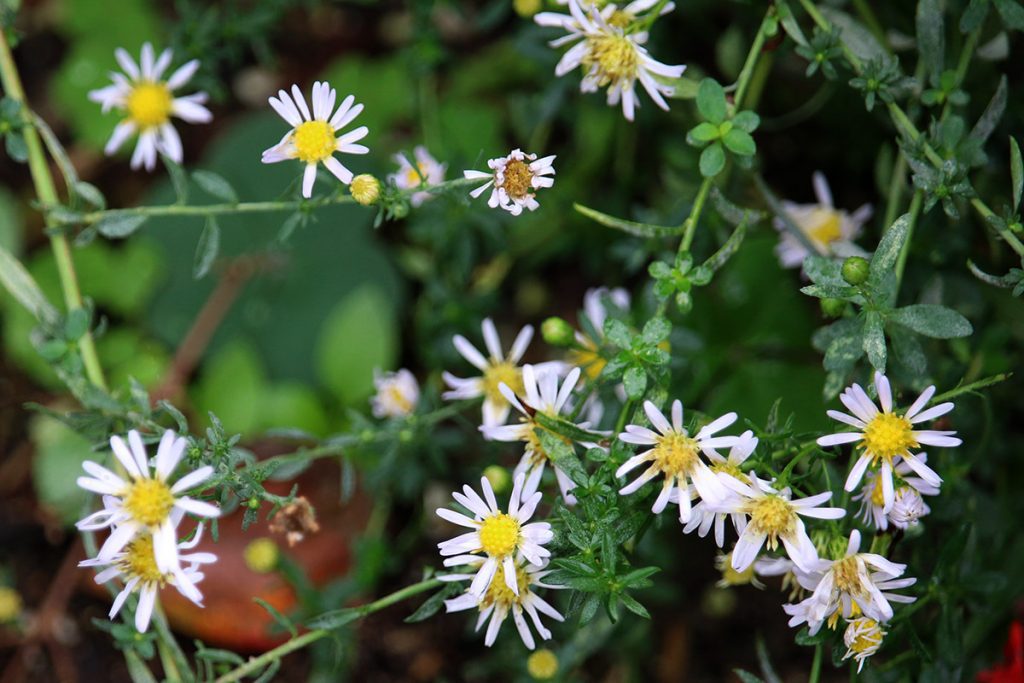
Possibly rice button aster (Symphyotrichum dumosum). This wildflower volunteered in my yard, and is popular with several species of native bee.
Day 309 total: 2 new bug species
2018 total: 165 bug species.
Day 300: October 27, 2018
High 70º Low 50º
It’s finally starting to feel like fall around here. Maybe that’s the reason I haven’t been seeing as many insects in the garden. Some rain this week kept me from having to water plants in the morning and I haven’t been out during those peak warm, sunlit hours where I might see a lot of butterflies.
Additionally, we have tall trees encircling the house. Between them, the house, and fences that separate sections of the yard, much of our outdoor space doesn’t see full sun this time of year. I’ll have to move some of our potted flowers to the sunnier parts of the yard to see if that attracts butterflies. I’ve been toying with mapping shadows in the yard by month, both to help me figure out permanent raised bed locations and to devise a schedule for moving potted plants around.
It’s not that I haven’t seen any insects. I’ve caught the four-tooth mason wasp fleeing into its burrow in the railing, and that lone bumblebee doesn’t mind pollinating in the shade. And of course, this latest batch of monarch caterpillars is starting to hatch and eat.
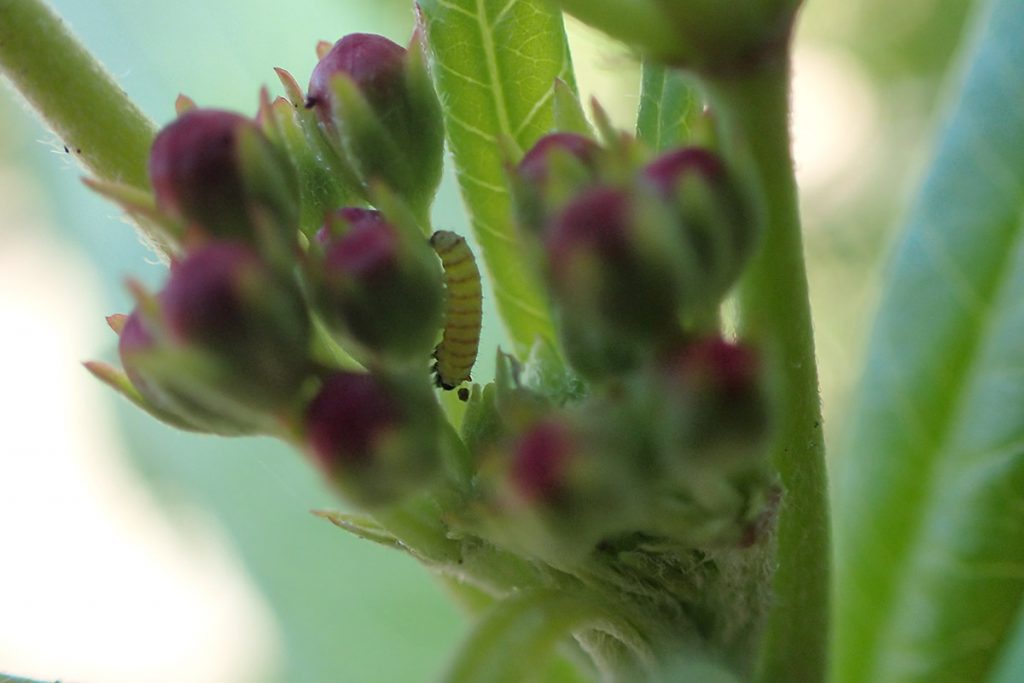
First instar monarch caterpillar hides among the flowers of a tropical milkweed (Asclepias curassavica) flowers.
I haven’t been looking for them at night, when a headlamp under a leaf makes a silhouette that makes them easier to find than during the day. They keep a low profile during their first couple of instar phases, often hiding among the flowers. And that’s where I found these two; on a tropical milkweed volunteer growing next to our bell pepper plants.
Today I also saw a zebra longwing making its way across the yard, stopping momentarily to sun on a crepe myrtle tree. I’ve been seeing them around town this way, often zipping past. I’m noticing them more, which doesn’t mean there are more, but anyhow, I’m still seeing them less than last year.
Perhaps a cold winter affected them, either directly or indirectly by killing back nectar or larval food sources. It does highlight the importance of growing larval food plants, in this case the same passionvines that fed our surprise gulf fritillary chrysalides. If a species gets hit with a weather event or a climatologically unfriendly stretch, these plants will make the species more resilient. If they can’t feed their next generation, how would they rebuild their numbers?
Day 292: October 19, 2018
High 88º Low 68º
When I got home, Amy told me she saw a monarch laying eggs on the milkweed. I was sure we were done for the season.
Right about now, monarchs should be starting their southward migration from the northern US/ southern Canada. I’ve noticed that these later season larva tend to make less successful chrysalides than earlier in the season. I remember an enclosure full of 8 brown chrysalsides, and the one weak, deformed monarch that happened to hatch. I remember seeing similar chrysalides and another deformed monarch crawling on the ground at the kids’ school around the same time.
Tropical milkweed, since it blooms longer than native species, can carry OE and delay migration. They say to trim the blooms after Thanksgiving, so maybe these guys aren’t too late in the season? Anyhow, there are eggs on multiple plants. I’ll keep an eye on them, to see how they do as fall weather finally arrives in Tallahassee.
Day 290: October 17, 2018
High 90º Low 68º
A couple of days ago, I took a photo of a sider crab on a flower bud. Behind it was some spittle from a spittlebug, perhaps a meal for the spider. It was a little out of focus, so I decided not to use it. I already had crab spiders and spittlebugs on this blog.
I didn’t think anything of it until yesterday, when I received an e-mail from a blog I follow, the Prairie Ecologist. The whole post was on crab spider tents. And low and behold, there was one such tent on this plant:
This is apparently a nest for baby spiders. When they hatch, maybe they’ll come for this spittlebug (it’s in there somewhere):
Day 289: October 16, 2018
High 91º Low 69º
Watering the plants this morning, I saw this moth resting between milkweed leaves. It let me get fairly close to take this photo, much closer than any moth or butterfly will unless they’re taking nectar. I guess that, just before sunrise, this nocturnal animal was looking for a place to rest for the day.
That evening, Amy and I were preparing dinner, when she went to pick a red bell pepper from the garden.
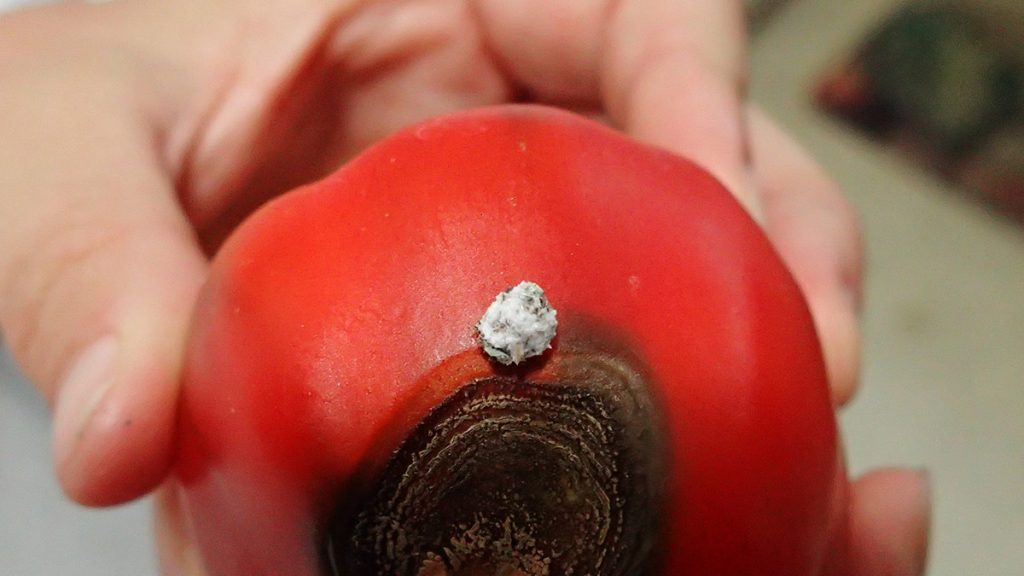
Woolly aphid, seemingly leaving a dark ring as it travels around a black patch of a red bell pepper.
Amy noticed that as this woolly aphid slowly moved counter clockwise around this dark spot, it left a burned looking surface. We cut that part off of the pepper, and I was a little irked about the part we lost. However, this wasn’t our first pepper with such a wound, and it is interesting to see how they get made.
Day 288: October 15, 2018
High 91º Low 69º
There are some plants in the garden whose leaves look eaten, and try as I might, I can’t find what’s eating them. That was the case with this lantana plant. At least, it was until I took a closer look at what I thought was a torn part of the leaf. Looking closely (and using macro photography), I see a small inchworm.
This looks similar to the inchworm I found on August 25- Bug #125. Here’s another look.
I picked four inchworms, also known as geometer moths, off of this plant, which they’ve pretty effectively torn into. These are the larvae of the geometrid moth.
Day 284: October 11, 2018
High 88º Low 68º
Hurricane Michael’s eye ended up speeding past Tallahassee, though the city was not without damage. It is heartbreaking to see what has happened further west in the panhandle. We were very, very lucky. Our property was undamaged by falling limbs; I think Hermine knocked loose the weakest branches right around our house a couple of years ago.
But the storm did leave a mess, which, for the purposes of this blog, let us see a lot of insect life that was previously hidden high above us.
I went maybe a little slower than usual cleaning up, and kept an eye out for what might be in the leaves and branches on the ground.
Edit 12/17/18:
I had trouble IDing the fuzzy thing under the leaf below, and the closest thing I could think of what some sort of a caterpillar- my original ID was a Southern flannel moth. However, over the weekend, Lisa Kimmerling left a comment that this was the oak gall of another species of gall wasp, likely of the Andricus genus. She linked to an iNaturalist entry for the same kind of gall.
I love this for a couple of reasons:
- Now I know what it is (or I’m much closer anyway).
- Our big spring project features iNaturalist, and that seems like a useful tool in helping to identify the many insects, wildflowers, mushrooms, and even lichens that show up in the yard or in our trees.
- It illustrates the vast number of forms of insect life we might encounter, even in the relatively small space of our yards. Think about it. There are between 6-10 million species of insect in the world. Each has a larval stage, or multiple larval stages during which their appearance changes. Then they pupate, often forming some kind of weird looking structures. Even their eggs can take a wide range of forms. If you’re into bugs, you can spend your whole life learning about them.
And speaking of oak galls, here are a few under another leaf. Again, these are made by gall wasps, who inject chemicals into leaves, creating these nursery structures for their eggs.
Back on September 15, I noticed a large web covering a branch on our pecan tree. Today, I’m finding several clumps of leaves bound together by webbing, and covered with what look like fuzzy caterpillars.
Taking a closer look, these dead looking caterpillars are surrounded by what looks like poop from a larger caterpillar. Perhaps these are molted skins? They are likely fall webworms.
Here’s a leafhopper hiding in the lichen of a broken branch. Wonderful camouflage.
So many of the branches that have fallen are covered in quite a diversity of lichens (maybe some of these are mosses and/or fungi?). Let’s take a closer look at a couple. I know this is a bug blog, but it’s very much about observing the wild things growing in our yard. And I think they look cool.
It’s beautiful, but seeing how many of the fallen branches have thick growth on them, it’s likely that they’ve weakened these particular branches. Or perhaps they’re more likely to grow on dying branches.
Here’s a ladybug I found. It doesn’t look like the other ladybug species I’ve seen so far. It has a similar shade of red to the spotless ladybird I saw on August 7. It has spots, but not nearly so many as the ones I took photos of in March. Try Googling “ladybug species.” There are many, and with subtle differences. It may be a difference in how many spots, or of their pattern. Other insects in the ladybird family aren’t what many of us would recognize as as ladybugs.
This is an Asian lady beetle, an exotic invasive introduced in the US to control aphid populations. Unfortunately, they also eat rival lady beetle larvae.
These last few weeks, I’ve been noticing more fuzzy moth caterpillars. Like butterfly caterpillars, they molt and progress through a succession of instar phases. I have found a few that looked dead- but were they? Unlike monarch or black swallowtails, these caterpillars aren’t going to eat their molted skins, which are covered in venomous spines. I think what I’m seeing here is an abandoned husk of a molted caterpillar:
Sweeping up my driveway, I found myself face to face with a green caterpillar. It was dangling from a thread, swaying closer and farther from my face as I tried to take a photo. Finally, it landed on the driveway:
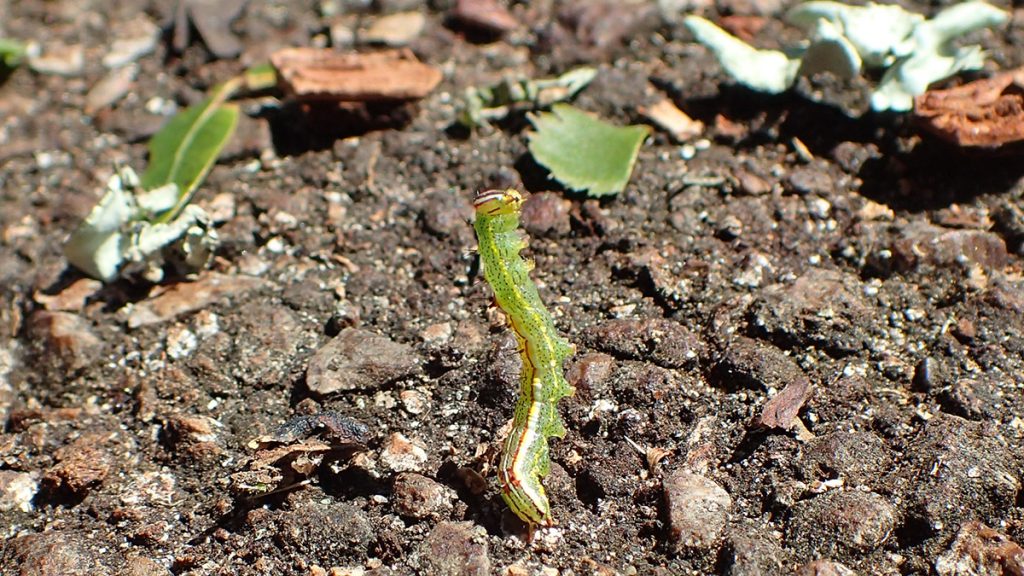
Bug #163: Likely a winter moth caterpillar, being held upright by a thread attached to our pecan tree.
This is likely a winter moth caterpillar. The wingless mother lays about 150 eggs in the bark of a tree. After they hatch, they disperse to nearby trees and shrubs using threads to guide them.
And lastly, I found this cicada in the backyard. My son Max has evidently gotten these to climb on his finger before, and that was the photo we tried to take. But this cicada had other ideas, and flew off.
Day 284 total: 4 new bug species
2018 total: 163 bug species.
Day 283: October 10, 2018
High 80º Low 76º
One new species today as I make one more pass over the yard. Consulting my handy stinkbug guide, I see that this is a rough stinkbug:
It’s an overcast day, with what ends up being a higher end category 4 moving closer to landfall. It’s not butterfly weather, but this long-tailed skipper doesn’t seem to mind:
And, at the end of monarch caterpillar season, we have a couple of little guys hanging out on our milkweed.
Judging by the shaggy look of its skin, it’s about ready to molt into a new instar phase.
Anyhow, time to go inside and see what happens.
Day 283 total: 1 new bug species
2018 total: 159 bug species.
Day 282: October 9, 2018
High 86º Low 76º
Hurricane prep at our house involves moving the many potted plants in our yard to safer locations. At this time, Michael looked like it would hit the coast as a category 3 and curve straight into Tallahassee. And you want to minimize the number of projectiles that might hit your home, or the homes of others.
Anyhow, it was an opportunity to see a few insects. One regular morning visitor is this bumblebee:
Another insect that seems to have become a regular visitor is this blue metallic cuckoo wasp. It’s an insect that I hadn’t noticed in previous years, and I wonder if I was confusing it with blue metallic sweat bees. Anyhow, paying closer attention to bugs in the yard has taught me quite a lot about what critters call my yard home.
I do keep seeing it under this railing, which is where the four-toothed mason wasp has a cavity. Cuckoo wasps lay their eggs in the nests of other insects- could it be doing this to the mason wasp?
I’m pretty sure this is a moth. It landed on this plant that I’ve been interested in, a volunteer I chose not to weed. You can see the plant’s bud defocused in the foreground, I think it’s a type of sunflower.
I found the next guy on our hammock stand. At first glance, it looks to me like a stinkbug. But it’s too round, and its head maybe too triangular. Googling round green bug, I see it might be a shield bug. But none of those is an exact match, either. Maybe a green potato bug? In my searching, I see that these insects have various juvenile stages where their appearance changes. I’ll need further research. It is kind of pretty, though.
Moving this dog gate off of the porch, I find a gulf fritillary chrysalis. That makes two, despite our not having their larval food, passionvine plants.
And finally, an insect that had been a regular fixture in our yard for years, but that had been absent. It never really landed, so snapping a photo was difficult with the camera I had on me. But this is a carpenter bee.
They do burrow in wood, and can be a problem. But we’ve only ever had one or two at a time, and I never noticed serious damage to the railing they had occupied.
Day 282 total: 3 new bug species
2018 total: 158 bug species.
Day 281: October 8, 2018
High 84º Low 60º
It was a relatively cool night, and not many bugs were visible. But I did see this spider hiding on the leaves of a bell pepper plant:
Day 281 total: 1 new bug species
2018 total: 155 bug species.
Day 280: October 7, 2018
High 91º Low 66º
So, I went camping this weekend. That means no yard work, and none of the photos of insects that I get from doing that. But, late at night, I had to take the trash out. And I saw this:
I’ve seen these in the yard before. I have to keep an eye out for the mature moth, which has a striking black and white pattern.
And it’s eating a smilax leaf. Here’s a plant I was likely going to get rid of at some point, so I’m happy to have it host caterpillars. If I have less time, I cut them back, but typically I have to follow it back to where it leaves the ground. Here, I find a tuber, the root system I have to remove completely. Many vines have a similar tuber at their root.
I know it doesn’t make me popular with my wife and neighbors when I let things grow in the yard, but I sure do see a lot of caterpillars and interesting insects when I do. The challenge I’ve been mulling is, how do I make it attractive? How can I have a yard that’s kind of wild, but still human friendly? Something fun to figure out.
Day 280 total: 1 new bug species
2018 total: 154 bug species.
Day 277: October 4, 2018
High 91º Low 67º
A couple of days ago, I found what looked like whitefly eggs, and didn’t address it. Today on our pepper plants, I found this:
It’s on a few leaves:
I tore the leaves off to dispose of them, and several whiteflies flew off of them.
So, we’ve seen plenty of pests and pest eggs in the garden this week. Not surprisingly, I’ve also seen a ton of these guys:
It’s a pattern that repeats itself continuously in the garden ecosystem: surges in plant consumer species (pests and butterfly caterpillars that we attract by planting their larval food) are met with an increase in insect predators. We haven’t had a serious infestation of insects we couldn’t manage. On the other hand, we want some species (monarchs, black swallowtails, etc.) to achieve a higher than average survival rate, so we manage pests or separate them from the “wilderness” of the ecosystem.
Day 276: October 3, 2018
High 91º Low 72º
Another mostly slow night, aside from finding armyworms on various plants. Here is an insect I think I’ve seen before, #92 from July 22:
The insect I photographed in July was pale, and the stripes less pronounced. So is this a related or similar looking species, or is one a female and the other a male? Or perhaps it’s the same species, but in a different stage?
Day 275: October 2, 2018
High 90º Low73º
Not much new in the garden tonight, but I continue to find eggs:
Day 274: October 1, 2018
High 90º Low74º
Tonight was an active night in the garden, as I walked around shining my headlamp on leaves. First, I went to our bean rollers, and caught one in the process of making a shelter.
It has made two cuts in the leaf; now, it can roll the middle section over itself to make its shelter. If I had unlimited time, I’d have made a video of it rolling the bean leaf.
Next to the bean plants, here we have our bell pepper plants. Under a leaf, I found what looks like a grasshopper just after molting:
And next, what I think might be whitefly eggs:
For some reason, I didn’t deal with this right away. Wait till you see what this turns into.
And, on a pentas plant, another egg.
Eggs and larva, and animals leaving their old skins behind. The garden remains lively.
Day 273: September 30, 2018
High 93º Low73º
I didn’t see any of our bean rollers emerge from their shelters last night when I checked, but early in the morning, I seem to have caught them returning after a night of feeding on our last bean plant.
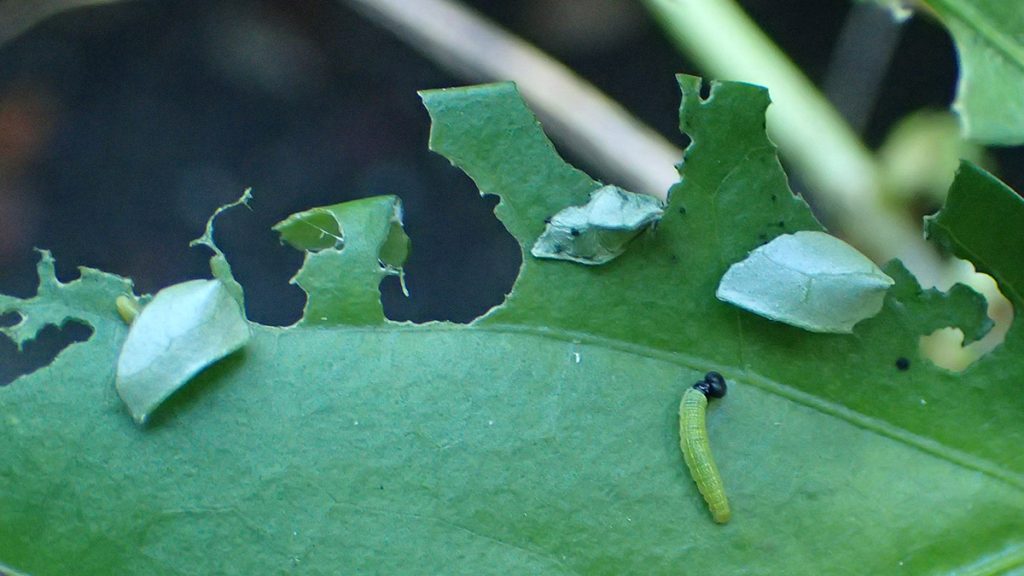
Long-tailed skipper caterpillar (bean roller) roams a bean leaf with folded leaf caterpillar shelters.
On our pentas, I didn’t find the caterpillar that’s been eating its leaves. But I did see evidence of a caterpillar:
In the past, we’ve had tersa sphinx moth caterpillars feed on these pentas plants. I turned over leaves but couldn’t find them. A couple of years ago, I had a legitimate infestation of the things:
The poop is as big as that of a fifth instar monarch caterpillar, so I figure whatever made it was fairly mature.
And speaking of monarchs:
They always gnaw the milkweed stalk after they’ve finished with the leaves. I figure that they do this in the wild; finish the leaves, get a little extra nutrition from this part of the plant, and make their chrysalis. Here the cat has left a couple of leaves, but is still at it on the stalk. Maybe there’s something in this part of the plant that helps get their body ready for metamorphosis.
Anyhow, we have a mix of monarch caterpillars of various sizes, and received yet another sprinkling of eggs this week. The plants have been resprouting from earlier grazing. Most of them are in pots, and so when the smaller caterpillars are close to finishing off the less leafy plants, I move other plants next to them. And that seems to be working; I haven’t had to buy any new milkweed plants in 2018.
I was walking along the side of the house, and once again dozens to hundreds of leaf hoppers fled from my path. I tried again to snap photos of the miniscule things, and found this fuzzy white bug:
While on the ground taking that photo, I noticed these eggs.
These are not leafhopper eggs, but those of some other critter living in my grass or in the lantana bed.
While I was in the front yard, I wanted to check on our oak tree. It seems we have carpenter ants:
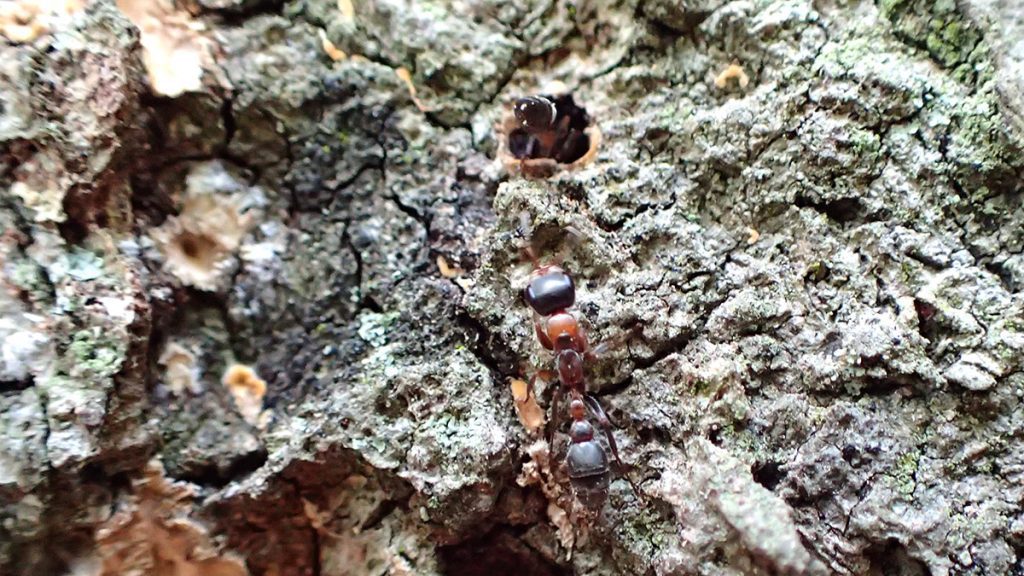
Bug #152: A carpenter ant runs up a dead section of an oak tree, while another disappears into a burrow.
I’ve suspected that the middle section of the tree has been dying since the city cut it back away from a power line. Carpenter ants build nests and burrow in dead wood, so this is a likely possibility.
Nearby, this predatory looking insect lied in wait:
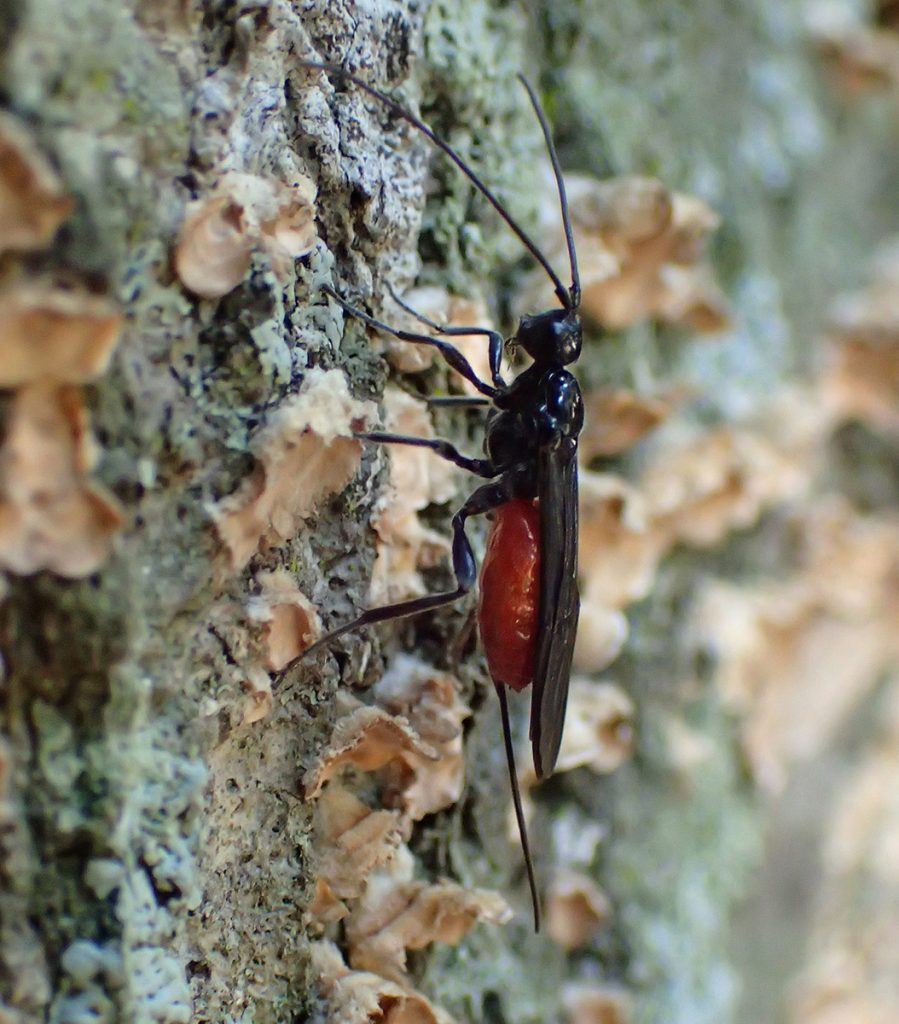
Bug #153: Another menacing looking red and black bug. Likely a braconid wasp, which lays its eggs on many insects considered to be pests. Their larvae then devour the insects.
Walking past the porch, I saw this thing floating in mid air:
It’s the same species as Bug #150 from a couple of days ago. You can’t see the thread, but it’s dangling from a piece of web. Perhaps it’s been caught by a spider?
I finished up my yard work and took my kids to a birthday party. Later, after the night’s (welcome) storm, I went out as it sprinkled and found our nocturnal caterpillars at work:
So it wasn’t a tersa moth after all. I found another cutworm on a cutleaf coneflower. Into the bird feeder with them.
I also saw the largest of our long-tailed skipper caterpillars out:
Right now, we have two healthy populations of different butterfly larvae in the yard. Some weeks back, a couple waves of black swallowtail eggs were either eaten or didn’t hatch at all after a busy early summer for them.
Day 273 total: 2 new bug species
2018 total: 153 bug species.
Day 272: September 29, 2018
High 86º Low 64º
Doing yard work today, we saw a couple of long-tailed skippers (Urbanus proteus) nectaring on a few of our flowers. It’s strange, but it’s the first time I’ve seen more than one of any butterfly species in the yard this year. And having seen their larvae earlier in the week, the bean roller caterpillars, this may be a breeding pair.
Over on the bean plant hosting the skipper larvae, I saw the wasp species that has been hunting caterpillars in the yard (see below the photo of a wasp taking a monarch caterpillar from July 30). It seemed to be sniffing around, perhaps looking for caterpillars safely rolled up in sections of leaf.
I had the boys in the yard, picking up leaves (that was the goal, anyway). I have three cutleaf coneflower plants in pots, which had accumulated leaves between them. I found a pest caterpillar hiding in this leaf litter:
We saw what looked like a fall armyworm egg cluster, and now here’s an armyworm. They often bury themselves in the dirt during the day, but now we see that they find other places to hide as well. Anyhow, into the bird feeder with you!
But we may not have been done with armyworms. I was re-potting some new flower purchases, and moving soil into new pots when something flew out of the newly dislodged soil:
Over the course of a few days, I’ve seen (I think) the armyworm, its eggs, and its mature form.
Watering plants on the porch, I found this guy:
I haven’t had any luck identifying this on Google. I thought that maybe it was an earlier instar of the southern tussock moth, but those are whiter. I imaging it’s a type of tussock moth, but can’t find a match with the search terms I used. There are over 160,000 known species of moth, so I guess I won’t always find easy answers.
Anyhow, nighttime rolled around and I wanted to see if any bean rollers were out grazing. No luck, but several leaves were piled up with eggs. I guess those two long-tailed skippers I saw earlier have been busy.
I also noticed an aphid infestation on the plant:
I also saw a familiar aphid hunter in the same raised bed, the syrphid larva:
It’s the first time I’ve seen one of these somewhere other than our milkweed. But I’ve kept those plants clean of milkweed aphids, which has been made easier by monarch caterpillars removing most of the leaves in our garden.
Lastly, I found this small insect on a cutleaf coneflower petal.
It resembles a leafhopper in shape, and it has this elaborate texture.
Day 272 total: 2 new bug species
2018 total: 151 bug species.
Day 271: September 28, 2018
High 92º Low 71º
I was watering the plants just before sunrise again, when my headlamp caught this dark moth on the porch.
I list this as a new species for the year, after first scrolling down and seeing what moths I’ve already seen during the course of this bug photography project. There have been plenty of nondescript moths of similar size, but none so dark. It reminded me of a shoot with lepidopterists Dean and Sally Jue, who, in the course of their surveys, would sometimes spot a smaller dark butterfly that flew away before they could positively identify it. With a laugh, they’d mark it down as an LBJ- Little Brown Job. Birders use the term as well- the animal kingdom is full of small brownish species that hope to escape detection from predators in trees or shrubs by not standing out in any way.
After sunrise, I was carrying some branches to a spot on the side of the house, when I saw hundreds of small bugs jumping at my every step. They were hard to pin down and photograph, but with the macro on, I spotted a couple of different species of leaf hopper:
They’re not great photos. These guys were so tiny, and it was difficult to get a focus as the wind blew the blades of grass they were on.
Googling them, I see that there are quite a few species of leaf hopper, and many that are similar looking.
Day 271 total: 1 new bug species
2018 total: 149 bug species.
Day 269: September 26, 2018
High 92º Low 73º
When I get home from work, between 5 and 6 pm, my full-sun plants look sad. With a lack of afternoon shower, they’ve been baking during a hot September. It feels like I’m almost too late to water them again then, but what can I do?
Anyhow, as the hose hit some droopy leaves on a bell pepper plant, I saw a flash of something white under a leaf.
Sadly, I don’t look up my finds until Monday when I update the blog. When I searched “white fuzzy under leaf,” one of the variety of white fuzzy insect structures I saw was one strikingly similar to the one above, with several dozen fall armyworms, aka cutworms, emerging from it. This is an egg cluster. Something tells me I’ll be seeing more of these guys throughout the week (okay, I’m writing this several days later, so I can say that yes, I do. Spoilers!).
Day 266: September 23, 2018
High 91º Low 72º
I’ve been seeing this guy in the yard, and it’s shy for a dragonfly, many of which let you get close. I quickly snapped a photo with my phone, trying the method of taking a photo, taking two steps closer, and repeating until it flew away.
I saw the southern tussock moth caterpillar again, once again climbing up the side of our porch. Maybe it has a nook somewhere where it seeks shelter?
Here is a caterpillar species I saw a couple of days ago, bug #146:
This is on the mesh of our rain barrel. I blew on it, and it didn’t move. The one I saw the other day appeared to be dead, but perhaps they’re just good at playing dead? Inside the rain barrel, mosquitoes kept flying up to the mesh. The mesh is there to keep mosquitoes from laying eggs. But they do, especially when there’s a good bit of rain and the water level rises just above the screen. I try to draw it down within a day or two, to water porch plants that don’t receive the rain. I guess then, the eggs go below the screen and hatch. It always amuses me to see them trapped in there.
And lastly, I guess I missed our surprise gulf fritillary chrysalis hatch. Maybe it was the one I saw on a purple coneflower while looking out the window. I never saw it go transparent, and I checked nightly. Maybe they don’t in the same way that other butterfly species do. Oh well.
Day 266 total: 1 new bug species
2018 total: 148 bug species.
Day 265: September 22, 2018
High 92º Low 74º
In the afternoon, I was cleaning pecan bits off of our driveway with the boys. It’s another seasonal indicator at our house; the pecan tree provides pecans to squirrels, who wastefully eat some bits and pieces of them, and pelt our cars, house, and driveway with what seems to be most of the nut and also the nuts around them.
Within a couple of days, the driveway will be covered again, but if we don’t keep up with it, we’ll get ants. The driveway smells like a pecan pie, with a rubber and asphalt accent. Mmmmm…
Anyhow, Max noticed this caterpillar climbing up the side of our house:
I recently joined a caterpillar identification group on Facebook, and I’ve been seeing caterpillars with bristles like these called tussock caterpillars. Googling tussock moth, I saw some that looked like this called a Southern Tussock Moth (Dasychira meridionalis).
Several sites list the species with photos of the caterpillar and moth, but I can’t find any indication of what it eats.
Day 265 total: 1 new bug species
2018 total: 147 bug species.
Day 264: September 21, 2018
High 92º Low 76º
I was home for ten minutes to get something I thought I’d left behind, and I saw this fuzzy fellow under a leaf:
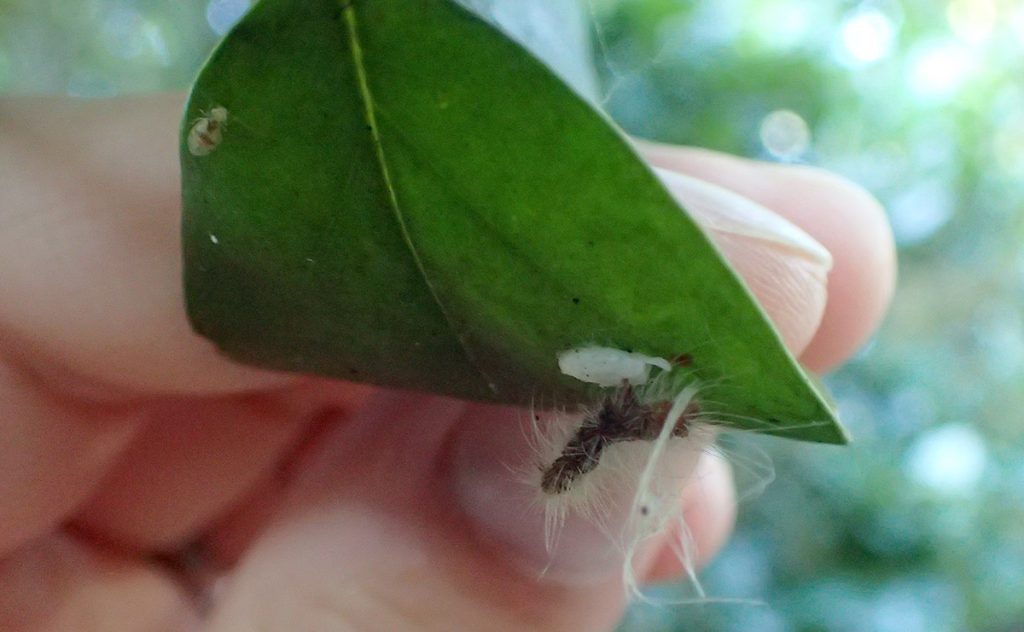
Bugs # 145 and 146: A fuzzy white caterpillar, apparently deceased, sharing a leaf with a small bug.
I didn’t see the second insect at the upper left. The fuzzy caterpillar, perhaps a tiger moth, seemed to be dead. I don’t know what the white thing next to the caterpillar is. I googled “fuzzy caterpillar molting” and it looks like when these bristle covered caterpillars molt, a smooth caterpillar emerges and regrows the bristles, which can be venomous to certain degree. Or maybe the other insect killed or is scavenging the body of the caterpillar.
Also during my short time at home, I saw another monarch laying eggs on our milkweed:
They’ve been busy lately. Our last chrysalides hatched in the last week, but we have a few more large caterpillars ready to go. The plants in this pot, topical milkweed volunteers, recently re-sprouted leaves after having been in the enclosure.
Day 259 total: 2 new bug species
2018 total: 146 bug species.
Day 263: September 20, 2018
High 95º Low 72º
So, the last of this wave’s monarch chrysalides was ready to go last night, and they typically hatch in the morning. It was under the raining on our back steps, so I thought we might even be able to see it from the table at breakfast.
But then I forgot about it altogether!
When I checked later, the butterfly was still inside. So I took a closer look:
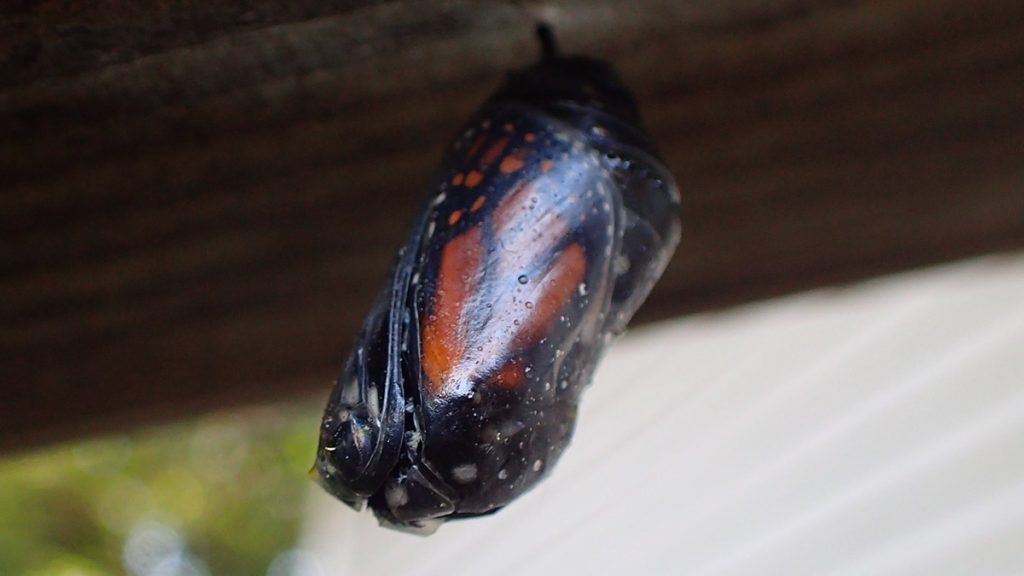
A monarch chrysalis with a transparent shell, cracked but with a butterfly that never finished hatching.
It seems the butterfly was not strong enough to escape the chrysalis, and died in it. I’ve seen this kind of thing before. One morning, my kids and I watched a monarch hatch. But it took forever to get out. And when it did, it was deformed and unable to fly. I felt bad that the kids had to see that. That chrysalis was a little cloudy, however, as were the other chrysalides in the enclosure, which didn’t hatch. That was late in the season, and monarchs at the kids’ school were doing the same thing (we even saw a deformed butterfly walking around a milkweed bed there).
I also once had a giant swallowtail apparently injure itself after hatching last year. I found it under its chrysalis with a bent wing:
Perhaps it was unable to hold onto the chrysalis and hang, as butterflies do while their wings dry.
I walked it onto my finger and deposited it onto a flower. I thought maybe if it got off the ground, and fed, maybe its wing would straighten out. It walked around my yard for a couple of days, and I kept putting it on flowers to feed. Its wing never repaired itself, and eventually it disappeared.
Day 257: September 19, 2018
High 94º Low 71º
Out in the yard as dinner was going on the table, I saw another hummingbird moth on our flowers. Their super fast wing speed and the dimness outside makes a poor combination for a good still photo:
Hummingbird moths, also known as clearwing moths, belong to the Hemaris genus. It’s hard to get an ID with this kind of photo. I knew it wasn’t likely to be there long, so I took a cell phone video rather than run inside and grab a better camera:
I then tried the slo-mo option on my phone, which darkened the image (and it only records in 720p). It’s grainy, but you can see its movement better.
Anyhow, I’d love to have a dslr ready on evening and get better video. Stay tuned.
This also caught my eye on the dark background of a chair:
Did the bug die and turn translucent? It look vaguely like a stinkbug.
Later on in the night, I noticed that the last of our current monarch chrysalides was ready to go for tomorrow:
Day 262 total: 1 new bug species
2018 total: 144 bug species.
Day 261: September 18, 2018
High 93º Low 72º
This week was one of early morning waterings and late night headlamp inspections. Below is the tropical milkweed volunteer growing out of a crack in the pavement. This is by far the largest plant, and has withstood a few waves of monarch caterpillars and kept a fair amount of leaves, which means it has been bombed with multiple eggs over the last few weeks.
Even with the recent egg layings, however, I haven’t seen a corresponding group of caterpillars. This plant has one large caterpillar. Did it eat the eggs? Or perhaps this is a culprit:
Considering the size of milkweed flowers, you can see that this is a tiny spider. I imagine it’s more of a threat to the smaller instar cats and maybe even the eggs themselves? And, at this size and inconspicuous coloring, it hides easily among the flowers, where second instar caterpillars tend to shelter. I saw it moving, otherwise it would have escaped detection.
Anyhow, add this to the list of potential predators hanging out on milkweed plants.
Day 261 total: 1 new bug species
2018 total: 143 bug species.
Day 260: September 17, 2018
High 93º Low 74º
Here’s something that, at first, I thought was an assassin bug. I’ve been learning about true bugs, to which assassins belong. Leaf footed bugs have a similar elongated body. Here’s what I think (aided by iNaturalist) might be a leaf bug in the Neurocolpus genus.
This looks like an assassin bug, but not one I’ve seen in the yard before. Right next to a spot where the milkweed leaf has been eaten, as if the assassin caught a monarch caterpillar mid-meal. But perhaps not.
Day 260 total: 1 new bug species
2018 total: 142 bug species.
Day 259: September 16, 2018
High 95º Low 74º
I checked on our surprise gulf fritillary chrysalis, and saw that its outer shell has gone opaque. I can no longer make out the caterpillar’s segmentation:
A few days ago, I found over a dozen monarch eggs on milkweed plants that had been largely eaten. Leaves are starting to grow back on the plants, though, as you can see in the photo below. And as you can see, there’s a monarch laying eggs right on these newly sprouted leaves:
It’s a little blurrier than I’d like, but you can see the abdomen curled upwards onto the leaf, to deposit this egg:
She went through the yard laying more eggs. I already have small caterpillars nibbling on what’s left of the plants, and I don’t see the leaves being able to sprout quickly enough to satiate this current wave.
I found this insect on a low branch. My first thought is that it was a stinkbug:
There’s no bug with this coloring in the stinkbug guide I got at the FAMU Entomology table at last year’s Tally Science Festival. It’s a little too beautiful to be a stinkbug. Here’s another angle: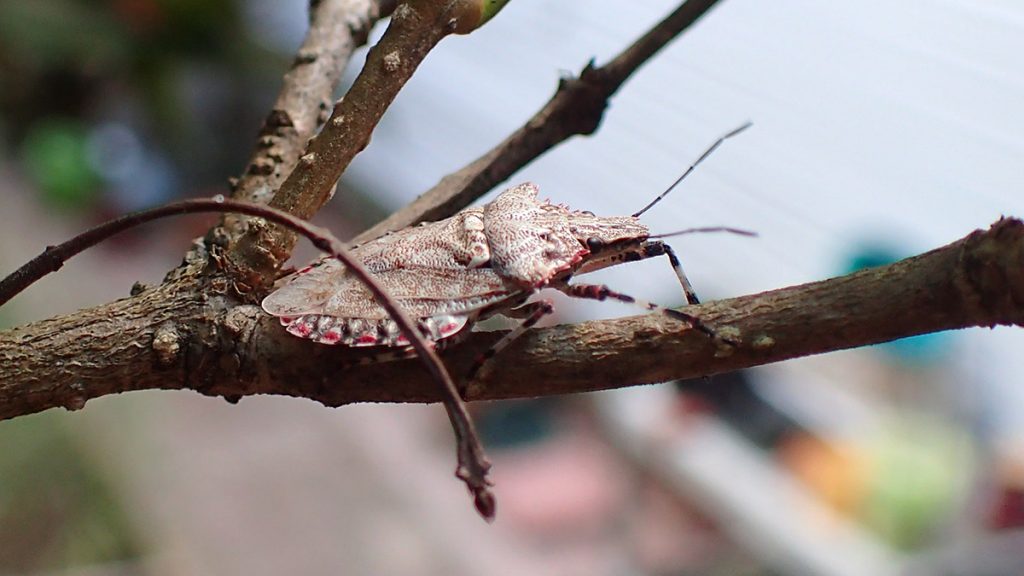
The head is too elongated for a stinkbug. Perhaps a soldier bug? I don’t see any like it on a Google image search. Hmmm…
A quick movement then drew my eye to this moth:
I took a little extra look around after these last two insects. I didn’t see anything new, but I thought this was cool:
A predatory insect lies in wait.
I also saw this small butterfly escape away from me and onto a camellia leaf:
I’ve been seeing this species in the yard this year. It’s a small butterfly, just a little over an inch in wingspan.
And lastly, I’m always noticing the small holes in bare spots on my lawn. Bare spots are important for native bees- they make their home here. But what was this larger hole?
Day 259 total: 2 new bug species
2018 total: 141 bug species.
Day 258: September 15, 2018
High 96º Low 75º
The gulf fritillary J I saw last night was a chrysalis by the time I woke up:
You can still see elements of the caterpillar’s body through its translucent shell.
There are many chrysalides in the yard today, as our monarchs have matured and crawled off to metamorphose:
The one on the left was a surprise, I found it this morning under wooden railing, inches from the four tooth mason wasp cavity featured on the blog last week. That wasp was carrying a caterpillar. Luckily for this monarch, the wasp had no interest in it as it hung one night as a J.
Now let’s look at the chrysalis on the right. It started going black a couple of days ago, and is now completely infested. A likely cause of this butterfly’s demise is the protozoan Ophryocystis elektroscirrha, also known as OE. I’ve been seeing the research shared in articles on social media, warning us to not plant tropical milkweed. It does not die back naturally in the winter like native species, unless there’s a hard freeze. When milkweed flowers don’t die back, they’re more likely to harbor OE and pass it on to butterflies.
I have a mix of tropical and native species in the yard. A couple of years ago when we first started raising monarchs, tropical milkweed (Ascelpias curassavica) was much more plentiful than native species. They were also leafier, and I’d often have a yard full of hungry caterpillars. Also, they’d drop seed and sprout all over the yard, saving me some money.
Of course, I cut the plants down after Thanksgiving, and keep them down until spring. This is my first failed chrysalis of the year, and OE would likely have been contracted by its parent before mating. But after this season I’ll go fully native in the yard.
Anyhow, I also saw this from my backyard:
This is our pecan tree, which has this webbing covering some branch tips.
And lastly, our hurricane lilies are in full bloom:
Day 257: September 14, 2018
High 95º Low 75º
I watered the plants quickly this morning as I had to get out to Alligator Point for a shoot on migratory birds. So no photos from then, but boy was it hot out today. You can see that the temperatures have been creeping higher as September wears on, and the lack of afternoon showers over the last week or so have been brutal for the plants.
At night, taking the dog out, I saw this surprise hanging from the side of our house:
We have definitely seen gulf fritillaries flying in the yard, but their larvae only feed on passionvine plants, which we don’t have. I’m guessing a neighbor of mine does have these plants, and the caterpillar crawled here to make its chrysalis. Perhaps my neighbor’s yard is full of black swallowtail chysalides from the caterpillars in my yard that walk off after getting big.
Day 256: September 13, 2018
High 93º Low 74º
Today I saw a bug that I’ve been hearing quite a bit of in the morning, and at night:
I’ve been looking for the source of this sound when I walk under low branches in the backyard. Sometimes I hear them close by, and turn to shine the headlamp on adjacent leaves, the sound stopping and no insect visible there. This katydid was on a potted plant.
And here, sadly, is my attempt at photographing a hummingbird hawk moth:
It’s that blur you can kind of see center frame. I’d really like to photograph this one, as it’s so cool looking. Maybe one day I’ll surprise one as it rests.
Also on my pentas, I found an army worm chomping on some flowers:
Earlier this year, I had identified this as a cut worm, which is another thing it’s called. I had found a larger one like this, and a younger instar as well. I’ve recently joined a caterpillar identification group on Facebook, which is a great way to learn about the many moth species, especially. I’ve become more familiar with certain families of moths, which splits their infinite variety of caterpillars into categories, which helps me start my Google searches.
Day 256 total: 1 new bug species
2018 total: 139 bug species.
Day 255: September 12, 2018
High 94º Low 74º
There’s a perspective I gain from coming out at night with a headlamp to water the plants or let the dog out. As a light moves over leaves, there are shadows and textures that maybe you wouldn’t see during the day.
Tonight’s new bug is this long legged black bug:
Day 255 total: 1 new bug species
2018 total: 138 bug species.
Day 254: September 11, 2018
High 93º Low 72º
As the sun starts rising later in the day, I find myself watering the plants with a headlamp on, and most days this is the only time I see bugs. But there are a lot of bugs to be seen at night, even if it’s more difficult to take photos then.
Today, I caught a glimpse of this moth:
Day 250 total: 1 new bug species
2018 total: 138 bug species.
Day 253: September 10, 2018
High 91º Low 72º
I know we’ve spent a lot of time looking at monarch caterpillars and butterflies, but they show us so much of their life cycle. Our current cohort of large caterpillars has eaten much of our milkweed. And yet, there are over a dozen new eggs on our plants. Some are on plants with a handful of chewed leaves. Several are on one plant, a tropical milkweed volunteer that has grown to over five feet tall despite growing out of a crack in the pavement.
A couple of things strike me about this current round of egg laying. One is the desperation of this insect, choosing a yard with scant larval host food. The other is the cluster of eggs on the one large plant, whose lower leaves have been largely devoured. Many of the eggs are on flowers, and on the tops of leaves. I’ve always wondered at the success rate of these eggs, and whether natural selection weeded out genetic lineages with a tendency to lay eggs on exposed surfaces, rather than on the sheltered undersides of leaves.
It’s something to keep an eye on.
Anyhow, today was garbage day, and when I went to bring the trash and recycling back in, I saw this luna moth:
I thought it might be dead, but it did crawl along slowly when I blew on it. In the morning, it was gone.
Day 253 total: 1 new bug species
2018 total: 137 bug species.
Day 252: September 9, 2018
High 92º Low 71º
Watering the plants this morning, I saw that three of our captive monarchs had hatched:
I let them hang and dry their wings a bit before releasing them. Meanwhile, in the garden just minutes later, I saw this monarch.
Last week I photographed a mature monarch butterfly. Currently, this species is migrating north, a multi generational migration completed in stages by individuals who live about four weeks. Now look at this one. Vibrantly colored, perfectly flat wings. It looks very much like the individuals in the enclosure.
Until today, when the monarch caterpillars in the yard reached their fifth instar, they’d been disappearing. I hope they made chrysalides. But I hadn’t been finding them. When I enclosed the caterpillars that hatched this morning, there were three such individuals of similar size in the yard. I think we’re seeing one here.
It’s a Sunday morning, and we slept in just a little. But it was long enough for me to miss the butterflies hatching, and two caterpillars spinning chrysalides. You can still see the segmentation in this one, it still has elements of a caterpillar’s texture. It was much more so before I ran in and grabbed the camera. But within an hour or so, it will have a smooth green surface.
I continue seeing a good variety of butterflies in the yard, even if they don’t stick around like they had in previous years. It may be that I’m paying closer attention, because I’m noticing and taking better photos of some smaller species, like this clouded skipper.
EDIT July 16, 2021. In 2020, I uploaded a few insect observations from 2018 into iNaturalist. Sometimes the process takes a while, but this has finally been confirmed as Euantha litturata, a bristle fly. Bristle flies are members of the Tachinid fly family, which are largely parasitoid breeders.
And here’s a new species of insect for the year. I tried to get a specific species for this, but try Googling “yellow and black wasp” or “yellow and black bee,” and see how many different species you see. I also considered that it might be syrphid fly, but it didn’t quite match. I think this is in fact a wasp mimic- a hoverfly.
That fly is on a cardinal guard leaf- the plant has been busy this weekend:
This grasshopper hasn’t moved since I saw it the yesterday. Cardinal guard blooms in late summer and into the fall, so this is a seasonal indicator here in the yard. It reminds me of the last couple of years, where hurricanes at this time of year shut down FSU and kept me home. Eating on the porch and enjoying the cooler post-hurricane weather, we’d see hummingbirds around these red flowers.
It also seems to be our busiest time for butterflies, but that might be because I’m home and in the yard more. During those hurricane off weeks, I shot a good amount of footage for a butterfly gardening segment two years ago (Hermine), and some for the Tallahassee butterfly count segment from last year (Irma).
Also last year after Hurricane Irma, I saw hurricane lilies blooming in the yard for the first time. A year later, they’re resprouting in the same spot:
Storms are out there in the Atlantic, and Hurricane Florence is on track to hit the east coast this week. The cardinal guard is blooming, butterflies have been in the yard more, and I’ve already seen a hummingbird in the yard.
Day 252 total: 1 new bug species
2018 total: 136 bug species.
Day 251: September 8, 2018
High 90º Low 73º
Another day working in the yard, which is a great way to see just how many butterflies pass through, inspect plants, maybe grab some nectar, or find a spot to sit in the sun. Last year we had two to three long-tailed skippers and two to three zebra longwings that spent a good amount of time on our flowers on a regular basis. We don’t seem to have those residents in 2018.
I’ve seen cloudless sulphurs passing through, and finally followed one to a neighbors tree, to a branch hanging over our fence:
Likewise, this spicebush swallowtail (Papilio troilus) wasn’t looking for nectar, but for a place to sit:
I also snapped a photo of its underwing. Swallowtail species have these great colorful underwings:
Another species I see every once in a while is the white-checkered skipper:
The wings have a pale underside, and like many skippers, their small size and fast wing fluttering makes them look like moths when in flight.
Moving back and forth across my yard, a wasp carrying a caterpillar buzzed across my face:
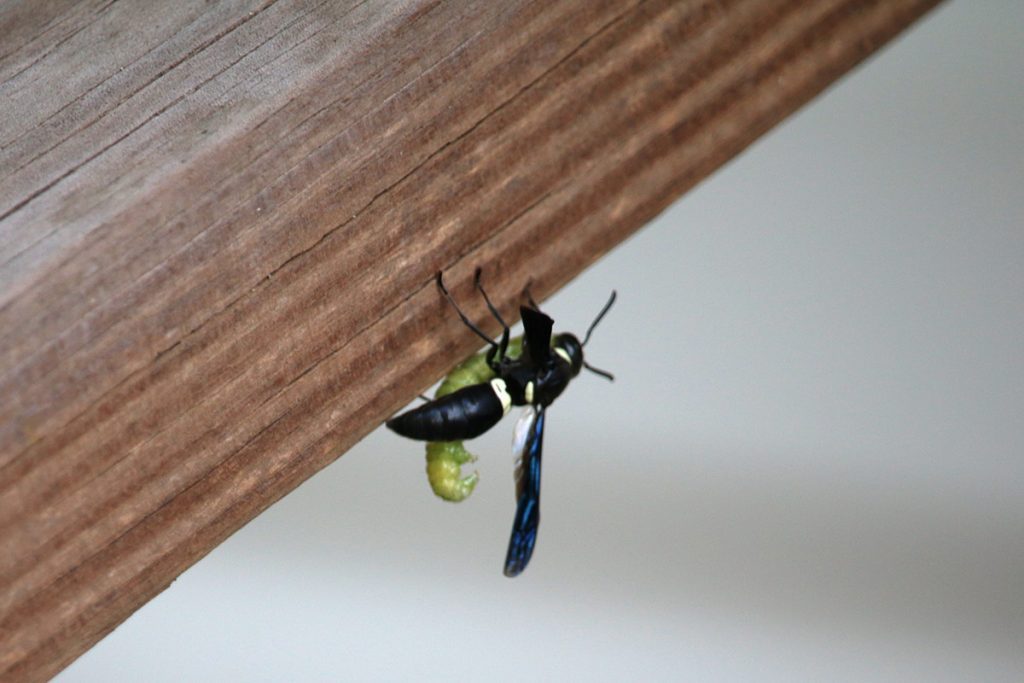
Bug # 134: Four-toothed mason wasp (Monobia quadridens), carrying a green caterpillar back into its cavity on a wooden handrail.
This four-toothed mason wasp was running from me as I pursued it with a camera. It disappeared into its cavity:
I’ve been seeing the wasp flying under the rail in the mornings. Slowed down by its catch, it finally moved slowly enough for me to get a slightly blurry photo.
And speaking of wasps:
This is the species of wasp I photographed grabbing a monarch caterpillar last month. They’ve been active in my yard, and now I see why.
Moving back and forth between my front and back yards, I saw this confrontation between a dragonfly and a grasshopper:
And lastly, our many monarch caterpillars in the yard have gotten nice and big, and hungry:
With a couple of exceptions, most appear to be fourth and fifth instar caterpillars. I found a couple of J formations around the garden:
This J is on a tomato cage. A tropical milkweed plant volunteered in the pot next to the tomato. My tomato plants are all but done now (and the one in this pot was decimated by a tobacco hornworm), and so the milkweed has had plenty of space to grow. Many of our swamp milkweed plants went to seed this year, so I’m looking forward to native species volunteers in the next. Maybe then I can start making the move towards having all of our milkweed be native species.
Day 251 total: 3 new bug species
2018 total: 135 bug species.
Day 248: September 5, 2018
High 90º Low 75º
I didn’t see anything new in the garden today, but I have been noticing a bumblebee dutifully pollinating flowers in the backyard over the last week:
I’ve also seen the bugs clustered below, last on May 22. Every once in a while I see groups of insects like this. I’d love to know what they’re doing in these little groups, and whether they transform into any form I regularly see in the garden.
Day 245: September 2, 2018
High 92º Low 74º
Today was a sunny, butterfly filled day in the yard. Not a lot of them stopped on the flowers, though. I followed an Eastern tiger swallowtail for about a minute before it flew over the fence. Likewise, a sleepy orange moved quickly through. I also followed a zebra longwing, which came to rest on one of our crepe myrtle trees.
What a difference a year makes. Last year at this time, I’d see two or three of these on our flowers daily. But this species was hit hard by a cold winter, it seems. They had low numbers in the recent butterfly count conducted by the Hairstreak chapter of the North American Butterfly Association. Their hypothesis is that they were affected by cold. I’ve seen this discussion come up on butterfly and native plant Facebook groups. I have now seen them once or twice in the last week, and this one, like the others, only stayed a few moments on the tree before heading off.
Also, for the amount of monarch caterpillars I’ve seen in the yard, I haven’t seen the butterfly outside of one we raised and released. Cutting some wood today, I finally saw one:
Look at those wings. This is an experienced butterfly. We’ve had several dozen eggs laid in the yard this week, and she added a few more (I think they have since been eaten- monarch caterpillars will eat their own eggs after they hatch, and do the same with any eggs they come across). You can see some caterpillars in the flowers she’s feeding from:
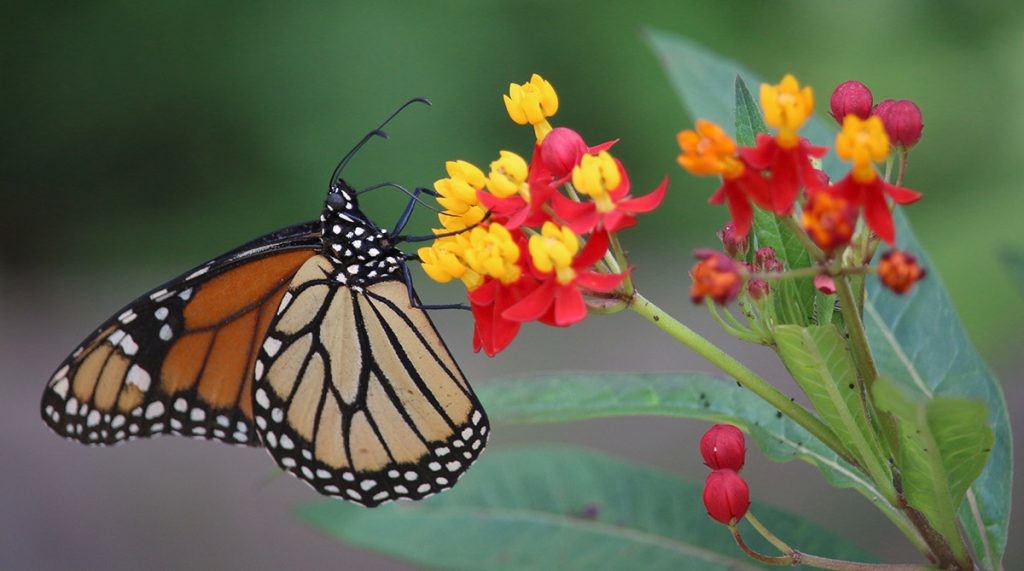
Monarch butterfly feeding off from tropical milkweed, with small monarch caterpillars hiding in the flowers.
You can kind of see them there on the cluster on the right.
As for the caterpillars in the yard, they’ve been growing fast:
I saw multiple caterpillars just after molting, shedding their skins as they enter a new instar phase.
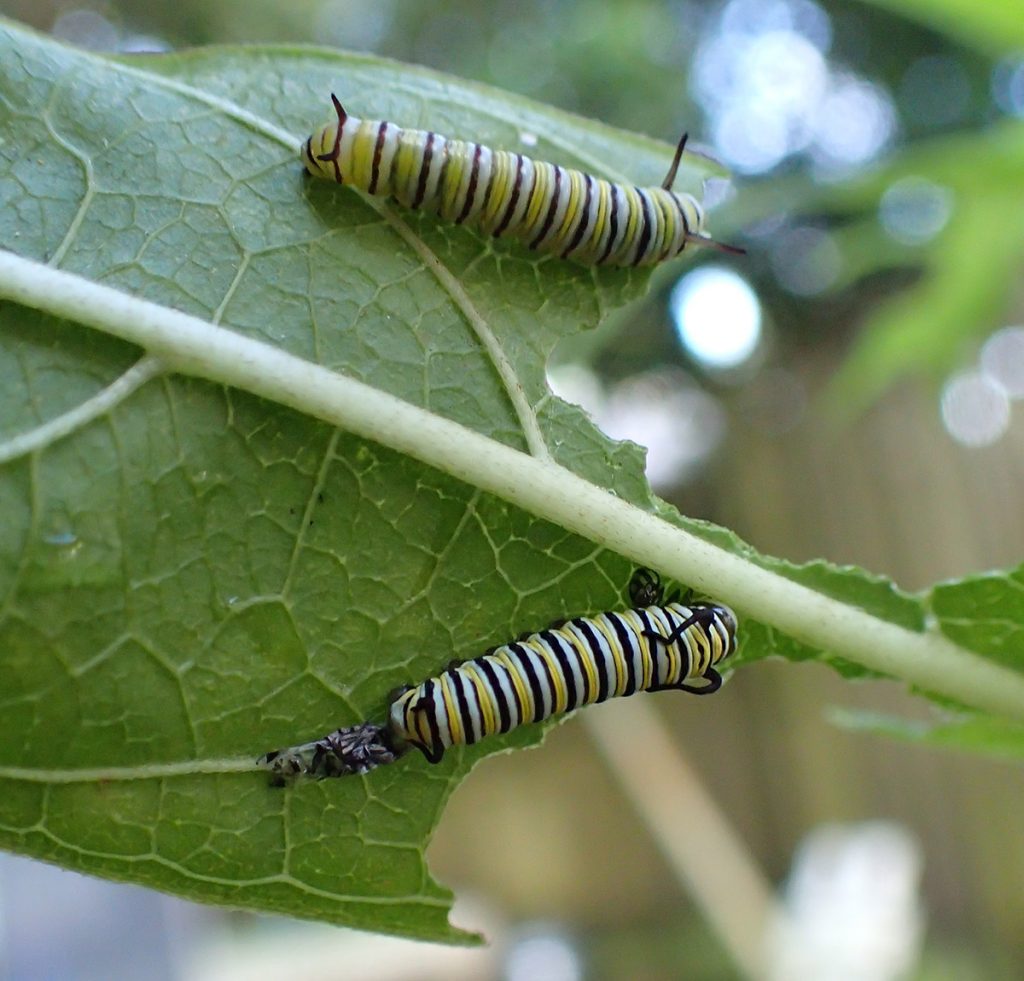
Two monarch caterpillars. The top is a third instar caterpillar. The bottom has just molted into the fourth instar phase.
One of these two sibling caterpillars has just molted. They’re both still a similar size, but the freshly molted caterpillar is more vibrantly colored. Also note how much more starkly patterned it is, and its longer antennae. It has molted into the fourth instar phase, where its sibling is still in the third instar.
We have plenty of much smaller caterpillars, which can be harder to spot. at night, I shine a light under the leaves, and see small silhouettes. During the day, I see another telltale:
Seeing tiny black nuggets on a milkweed leaf, I turned the leaf above it over. Here was a young, 1st instar caterpillar.
Lastly, not a backyard bug, but a surprise indoor one. Washing and spinning some lettuce, which had been in the fridge for a day or two, I found a ladybug which then flew out:
I tried to walk it onto something to take outside, but it kept flying away. Hopefully it finds a way out.
Day 245 total: 1 new bug species
2018 total: 132 bug species.
Day 244: September 1, 2018
High 92º Low 73º
I wasn’t doing yard work, but started on a new building project in the yard. As I set up my work space, I saw a hummingbird. Geez, Rob, what are doing out here without a camera? I corrected my mistake, seeing few cool things.
My favorite today was this guy:
The saddleback caterpillar bristles with defensive spines. The spines have venom at their tips- I’m guessing these caterpillars have a high survival rate. They feed on a wide range of host plants, and this was next to camellia plants.
I also saw this tiny bee gathering pollen from a dandelion:
And finally, this mean looking guy was sitting on a milkweed leaf:
The red and black mason wasp is listed as a beneficial insect. As I note time and time again, though, beneficial insects are a threat to monarchs. I photographed it and then gently shooed it off the plant.
Right now, we have a healthy number of monarch caterpillars in the yard. This week saw a lot of eggs dropped on our plants, and our plants have been pest free (so perhaps less predators have been sniffing around). Today I also chased off a ladybug that was running up and down a milkweed plant with a few small caterpillars. I’m sure there’s more for it to eat in my yard.
Day 244 total: 3 new bug species
2018 total: 131 bug species.
Day 241: August 29, 2018
High 88º Low 73º
When I got home from work, this butterfly landed on my lunch bag. I grabbed my phone and took the best photo I could:
It looked darker on my porch in the early evening, but it appears to be a Carolina satyr, bug #111, which I last saw on August 1.
Day 240: August 28, 2018
High 94º Low 73º
I had previously thought that spittle bug spittle was a way of laying eggs, but reading up on them, I see that it’s a defensive foam to hide the spittle bug nymph (a nymph is an immature form of an insect). So today I looked for and found what looked to be a nymph foaming the base of a leaf:
Googling the insect, I also learned the identity of another insect I had been seeing, which I now know to be a mature froghopper spittle bug. This is bug #107 from July 31, of which the insect above is an immature form.
Day 239: August 27, 2018
High 89º Low 73º
Before I left for work this morning, I checked my monarchs:
It has been a rough year for monarch caterpillars in the yard, but perhaps we’ve turned a corner. I have five monarchs in our enclosure, growing and healthy. We have two on the outside that have grown nice and large. I want to let them eat my outdoor plants but I may move them inside soon to have them make chrysalides in a sheltered environment. We also seem to have been gifted another round of eggs over the weekend.
I’m starting to see milkweed aphids return, and I’ll need to take care of them. I haven’t seen syrphid larvae or milkweed beetles in a couple of weeks, and I’ve been clearing spiders from the plants. I still see that wasp sniffing around the milkweed plants though. I want to keep the plants clean of all insects save the monarchs, to see if that keeps predatory insects less interested in the plants.
Day 238: August 26, 2018
High 93º Low 74º
It’s yard work day, so I’ll have plenty of opportunity to see insects as I alter their habitat.
Below is what I believe to be a blue mud dauber. These wasps make their nests from mud, and are generally much less likely to sting than paper wasps.
I also spotted this small bee on one of our cutleaf coneflowers (Rudbeckia Iaciniata):
I can’t say for sure, but it appears to be a nonmetallic sweat bee species. I love those yellow legs, full of pollen from the coneflower. I remember last year when I was wondering aloud about an all black bee with striking yellow legs, and having my then first grader Max explain to me that bees carried pollen on their hind legs. His class spent a few weeks studying bees and pollination, and it’s knowledge he seems to have retained, as I saw during a discussion on proboscises over the summer.
And next, I thought I had spotted another species of sweat bee, one of my favorites, metallic blue:
Taking a closer look, it didn’t look quite right. Googling it, I saw that this is a cuckoo wasp. Like the cuckoo bird, it lays its eggs among those of other species.
As I cut the grass, I came upon this expired caterpillar:
I imagine this was once a green caterpillar using my lawn as larval food. In recent weeks, I’ve seen two butterflies whose caterpillars use grass as larval food: clouded skippers and Carolina satyrs. Browsing photos of grass eating caterpillars, there are a few more we find in our area. Drained of its color, it’s hard to say what species this might have been.
After cutting grass, I pulled weeds and found this guy:
It’s the same species as bug #88. I don’t know why I didn’t check my stinkbug guide then. This is an herb pilcher (Euchistus quadrator). Yet another pest.
Speaking of pests:
As you see, we have a lot of pests in the garden, and yet I haven’t completely lost my garden to them. Everything has to eat, and many of these critters have things that eat them as well. I’ve complained about the predation of my outside monarchs. The flip side of this is that beneficial insects and birds are also keeping other plant eaters in check. They don’t know which caterpillars I prefer, so I’ll have to be happy with my yard being a functional ecosystem, even if it can be a harsh place.
Lastly, I started the process of transforming a section of our yard. When we bought our house, the yard was mostly paved or covered in pavers. I’m removing pavers in one section to make a better play space for kids, and so that I can put plants directly in the ground, where I imagine flowers will flourish.
Picking up pavers, I came upon some beetle larvae and some other small white bugs:
Everything I uncovered immediately started burrowing or running for cover. These are not things that like sunlight.
And lastly, this cicada was buzzing round my head as I worked:
It’s smaller than the other one I found a couple of weeks ago. But is it a new species, or just the female of the first species? There are many cicada species that look alike.
Day 238 total: 3 new bug species
2018 total: 128 bug species.
Day 237: August 25, 2018
High 91º Low 75º
Today in the garden, I found not an insect but the evidence of an insect:
It looks like we have a spittle bug in the garden. I need to return to this when I get back home (I’m typing this in the office) and peek into the spittle. While the spittle contains eggs, it’s also used by nymphs to cover themselves when they’re feeding. I also need to eliminate it- this insect can be a problem.
Speaking of garden pests, I saw a cutworm, feeling brave by coming out in daylight hours, munching on verbena:
So far this year, I’ve only seen cutworms at night or in the dirt as I pulled weeds during daylight hours. And, speaking of nocturnal pests:
This is an inchworm, the caterpillar of a geometer moth species. I first saw a smaller one dangling from a thread, which ran and hid as I went for a closer look.
Day 237 total: 1 new bug species.
2018 total: 125 bug species.
Day 236: August 24, 2018
High 92º Low 73º
I saw a new bug, crawling on the face of a green bell pepper in a raised bed. It scurried from me as I went to take a closer look. Hunting it down, I found more, scattered on my pepper and bean plants:
I couldn’t identify it. They don’t seem to be eating the leaves of the plant, at least not in any major way. I’ll keep an eye out for them.
Day 236 total: 1 new bug species.
2018 total: 124 bug species.
Day 232: August 20, 2018
High 91º Low 72º
Two years ago, we brought all of our monarch caterpillars inside to feed and grow in a shelter. The biggest challenge in keeping them alive was keeping them all fed. When plants get crowded, some caterpillars stop eating. One tried to make its chrysalis too soon, and when it hatched, it was a small butterfly which couldn’t fly (you can see its wing closeup on one of the rotating blog header images above- if you don’t see it, refresh a couple of times).
Last year, I brought some caterpillars in and left most of them outside. We had some mortality, and I learned about monarch predators, but a healthy amount survived.
This year, it seems that monarch caterpillars left outside have a 100% mortality rate. Yesterday, I had one large caterpillar that looked ready to pupate. When I got home, the leaves of its host milkweed were all gone, and so was the monarch. I looked around for a J or a chrysalis, but then I saw this on the neighboring pot:
EDIT June 2020: Since I started this Backyard Blog, I’ve learned a lot about insects and a lot of what I thought were assassin bugs were leaf footed bugs. Both are true bugs- Hemiptera. Anyhow, I uploaded this to iNaturalist and right now, Acanthocephala terminalis is my guess.
This isn’t specifically a milkweed assassin, but it does look like an assassin bug nonetheless. I never found the caterpillar. They don’t go too far to make a chrysalis, usually, though sometimes I find them in surprising places. But I did find this deadly insect right next to its host plant.
Compared to last year, I’ve seen much fewer butterflies and many more predatory insects and spiders. The same wasp that carried off a small monarch caterpillar a couple of weeks ago is always buzzing by the milkweed plants. I’m also dealing with more milkweed pest insects. My yard seems out of balance somehow.
So, last night, I went out with a headlamp and went looking for monarchs. The really small ones are easy to spot when you shine a light from underneath the leaves and see their shadowy outlines. They’re almost always under the leaf, where the egg was laid. I spotted several that had recently hatched, and one was even eating its egg. I moved four or five to a pot to put in the enclosure. I inspected the pot for other insects or spiders and removed a couple of ants. We’ll see how they do.
Day 232 total: 1 new bug species.
2018 total: 123 bug species.
Day 231: August 19, 2018
High 90º Low 74º
I had to leave for a few days, and returned to find that our second batch of monarchs, just like the first, is down to one:
It seems to have been dining on the seed pod of its host, the white swamp milkweed plant. I would think that the caterpillar would only eat this as a last resort, after the leaves had been devoured. Its definitely a tougher part of the plant. Anyhow, it tried it and then returned to eating leaves.
I noticed more nibble marks on the other white swamp milkweed plants’ seed pods. We were so overwhelmed the last couple of years that most of our plants never had the opportunity to go to seed. And this is the first time we’ve had a native milkweed species go to seed, which is cool- we’ll likely have swamp milkweed volunteers next year. I wonder whether this is a tastier part of the plant, an evolutionarily advantageous flavor to entice insects into spreading their seeds. Ot perhaps the caterpillar just started nibbling there.
I saw this on one of the seed pods:
I’ve kept the milkweed plants fairly pest free, and moved them away from spots in the yard where more spiders tend to be. But I do keep seeing a wasp inspecting the plants, and even nectaring on the milkweed flowers. A new batch is hatching, and they may all go straight into the enclosure. I’ve never had such bad luck with caterpillars.
I wonder if the insect assemblage in my yard, or in our region as a whole, is off from recent years after the extreme cold snap earlier this year. I’ve seen it mentioned in the NABA (North American Butterfly Association) Hairstreak chapter’s Facebook group. They just had their summer count (which we covered last year), and they noted a low number of zebra longwings after a cold winter. I only just saw my first one today, flying quickly over my yard.
Likewise the monarch migration seems to have started later this year. But then, the last couple of years we had such mild winters, and the migrations started earlier than usual. Different flower plants have rebounded more or less quickly after dying back in the cold, and there is definitely less nectar than at this time last year. I’m sure if I kept doing this Bug Blog year after year, I’d notice a lot of changes from year to year, whether attributable to climate or not.
I saw these guys crawling in a single file line. They look to me like something of the stink bug or squash bug variety.
Day 231 total: 1 new bug species.
2018 total: 122 bug species.
Day 226: August 14, 2018
High 90º Low 73º
When I was at work, the monarch came out of its chrysalis. We all came out for the release, as usual. Many of our monarchs last year hesitated to come out, much like our black swallowtail earlier in the year. I was hoping to get great photos of Max walking the butterfly onto his finger and holding it up. But this guy was ready to go. And so this is the best photo I have of it:
In the garden, we have many small caterpillars and eggs on leaves. I was surprised to see so many on a kind of small white swamp milkweed plant:
You can see that the one on the lower left has just molted its skin.
I also found this bug dead on my car door handle:
Now that I’m paying closer attention to the bugs in the yard, I’m noticing what a common color scheme red and black is. It’s a color scheme that means business. To a human, an insect of the same body form looks more menacing in black and red that if it were a pale green, and perhaps the same is true of other species that would harm or eat an insect.
Of course, this is a plant eater. But that color scheme would likely deter predators.
Day 226 total: 1 new bug species.
2018 total: 121 bug species.
Day 225: August 13, 2018
High 92º Low 74º
First week of school, and so my time in the garden has been shorter and during darker hours. As is usually the case when school starts, we have a monarch butterfly ready to hatch from its chrysalis:
Shooting through the mesh muddies the image a little, but you can start to see the orange and black stripes, and the speckles on the edge of the wing. We should see this one at some point tomorrow.
Day 223: August 11, 2018
High 92º Low 72º
I looked out my back window today and saw a cardinal pecking at my bean plants. I went out and saw a curled leaf where I saw it pecking. It must have made a meal of one of the long-tailed skipper caterpillars. Butterflies lay dozens of eggs, and only two need to make it to keep a steady population.
But some species, like monarchs, are in decline. I pay a lot of attention to the monarchs. I can’t enclose them all, so I do what I can to reduce their predation in the garden. During one of my night checks, I saw this:
From what I’ve read, swamp milkweed beetles do not eat monarch caterpillars. But they eat the leaves, so it wouldn’t surprise me if some eggs and small caterpillars got eaten. Milkweed bugs do this, even if they don’t ever seek to eat monarchs. Anyhow, these beetles are pests, so they have to go anyway.
Taking a closer look at the leaf, you can see that the monarch recently hatched:
Day 222: August 10, 2018
High 92º Low 72º
It’s caterpillars that eat my garden day on the bug blog. Let’s start with the granddaddy of pest caterpillars:
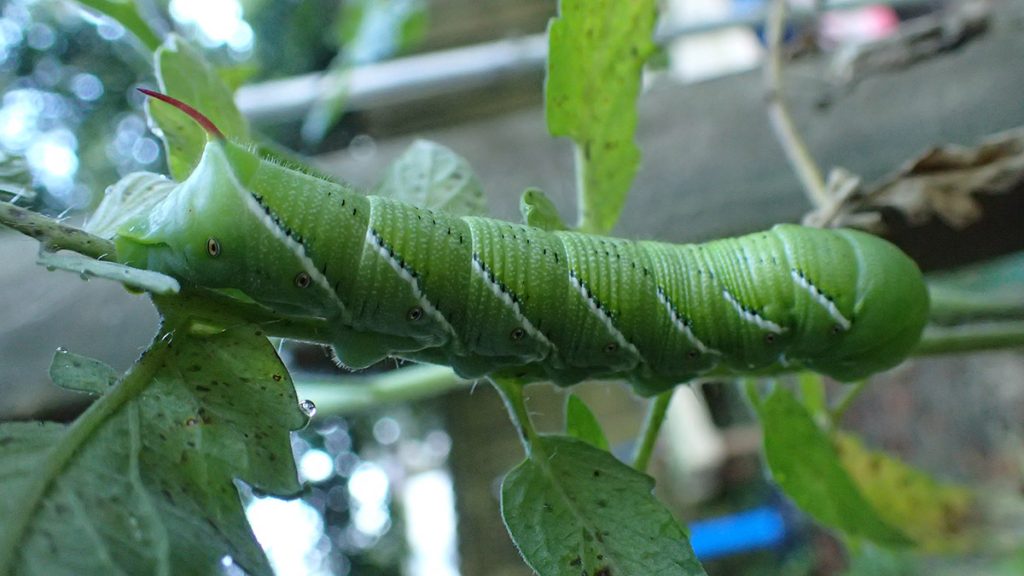
Bug #120: Tobacco hornworm (Manduca sexta), after an all night bender during which it decimated three tomato plants.
I looked out my back door in the morning, and noticed that three of my tomato plants were leafless. I figured I’d find a fat and happy tobacco hornworm (Manduca sexta). I figured I’d find a few, actually, but this one seems to have had a special kind of feast overnight.
Anyhow, I once again followed the advice given me by Lilly Anderson-Messec at Native Nurseries when I interviewed her for out butterfly gardening segment: I popped it in the bird feeder:
I peeked out the window every now and then to see if anything would eat such a large, scary looking caterpillar. I saw a cardinal take a few curious pecks at it. At some point I looked and it was gone. Maybe it crawled off, being as large as it was, to make its cocoon and turn into a sphinx moth.
I continued with my garden chores, and pulling a weed, I unearthed another pest caterpillar:
I don’t know my army worm species, and I can’t tell if this is a larger stage of the army worm I found earlier in the year. They’ve been coming out at night to dine on our plants, and then bury themselves for the day. Pulling that weed, and its roots, disturbed its day time slumber.
And now for a pest I kind of like:
I was clearing some dead leaves from my bean plants, which I will no longer do without a more careful look. Some clumped together leaves came apart, and I saw what looked like a large long-tailed skipper sealing itself in, silking the leaves:
On a day to day basis, they stay inside a curled up leaf. You don’t often see them during the day, but you can keep track of their growth by looking at the size of the leaf curls. After finding this guy, I looked it up and found that they make their chrysalis in dead leaves. I gave it its leaves back and let it be (the first image of dead leaves I found after).
Day 222 total: 1 new bug species.
2018 total: 120 bug species.
Day 221: August 9, 2018
High 91º Low 74º
Even with the macro lens, this scene is so small that I had to zoom way in, and it’s still small. But this spider is tearing some insect in two:
I’m sure many of us have seen the following insect. I finally looked it up and found that this is a bagworm moth caterpillar:
The caterpillar lives inside this bag, which it decorates with bits of vegetation. When it gets to a certain point, it pupates inside of its bag. The males will have wings, its females remain wingless.
And finally here is the empty shell of a cicada nymph.
Day 218 total: 3 new bug species.
2018 total: 119 bug species.
Day 216: August 7, 2018
High 93º Low 73º
When a monarch makes a “J” in the evening, you can expect it to make a chrysalis early in the morning. In the past, they’ve been pretty consistent, and if the kids didn’t have a camp, we could watch them shed their skins to reveal a shiny green chrysalis.
You have to love the gold trim around the top.
This was the last of the our first batch of monarchs this year, the rest having seemingly been eaten. But, as it so often happens in our garden, the next generation pops up pretty much immediatley:
Not only are there several eggs, but also some of the tiniest of monarch caterpillars:
And their not the only newborns in this milkweed ecosystem:
I figured these orange eggs I kept seeing belonged to swamp milkweed beetles, since the adult appeared in the garden when I first started seeing them. Here, you can kind of see the black spots on their orange bodies- they’re basically miniature versions of swamp milkweed larvae, visible through a translucent egg.
I’ve read up on them a little and they are a serious pest. I’ve been squashing their larvae for a few days now.
I’ve also been finding a variety of spiders in the milkweed. It’s a bad year for them in the garden. Of course, spiders serve an important role in checking pests. It highlights the importance of clearing the milkweed of pests. A single small monarch caterpillar doesn’t necessarily attract a lot of attention. But when predators have their pick of aphids, beetles, and other insects, the plant attracts more of their attention.
And speaking of beneficial insects, I found this interesting species of ladybug on our pentas. It’s a spotless ladybird (Cycloneda sanguinea).
Day 216 total: 2 new bug species.
2018 total: 116 bug species.
Day 218: August 6, 2018
High 93º Low 75º
Before I left for work this morning, our lone monarch had eaten the last of the milkweed leaves and gotten in position at the top of the enclosure. Soon, it’ll start spitting out a silky thread and attaching itself to the mesh. I wouldn’t be surprised to see it in its “J” when I get home.
And also, maybe less exciting, but another new species for the year:
And of course, later in the day, our monarch had made its “J.”
Day 218 total: 1 new bug species.
2018 total: 114 bug species.
Day 217: August 5, 2018
High 94º Low 74º
My lone monarch caterpillar, safe inside its enclosure, has gotten big:
And meanwhile, back in the garden, I saw this under a milkweed leaf:
I’ve never actually read that syrphid larvae kill monarch caterpillars. But they tend to be on plants where the caterpillars have disappeared. Last year, after a mass disappearance, I brought my cats in. I found one dead inside the enclosure, and saw that a syrphid larva had made it in as well. That led to me researching monarch predators.
Better safe than sorry. I’ve been trying to clean as many milkweed aphids off of the plants as I can, as they attract predators like the syrphids.
I was out doing yard work, and saw plenty as always. The crepe myrtle had a few guys buzzing around its pink flowers. Zooming in, I saw honey bees:
Honey bees aren’t native to North America, but were imported to pollinate crops and make honey. I wonder if someone nearby has a hive. Anyhow, there are over 300 species of bee that are native to Florida, many of which live in bare patches of dirt where they can dig a home. One rested on my weed whacker as I put it down to take a photo of something:
It’s not a new species for the year, but still one of my favorites.
Before I cut the grass, I go through and pick up dog poop. I felt bad to have lifted a piece right off of a dung beetle. The rest of my time out in the yard, I saw this metallic green flash flying around me. Finally it found a spot in some leaves and started burrowing. What did it smell down there?
And here’s another species I’ve already seen this year. This wasp is the same species (maybe the same individual) that carried off a monarch caterpillar last Monday. Here it is enjoying some nectar on our pentas:
I saw this guy running around on my driveway. He was kinda hard to photograph:
And finally, when the morning began, there were two larger black swallowtail caterpillars on one fennel plant. Soon there was one, and then none.
When they’re ready to make a chrysalis, they go far from the plant. I never really know if they got eaten or whether it was time. Monarchs and giant swallowtails make it easier that way, they always make their chrysalides right by, or on, the host plant.
Day 217 total: 2 new bug species.
2018 total: 113 bug species.
Day 214: August 2, 2018
High 78º Low 73º
My yard seems to have become a hostile place. I’m down to one monarch caterpillar, and so I’ve decided to put it in our butterfly enclosure:
It’s getting big. One reason I didn’t move them all in sooner is that my plants have gotten so big, and I like having whole plants in the enclosure. I do have one pot with three smaller milkweed plants that volunteered in it, and it looks like enough leaves to get this caterpillar to chrysalize.
Meanwhile, I saw this had happened to one of the larger black swallowtail caterpillars on the fennel:
Day 213: August 1, 2018
High 83º Low 73º
Time for my morning monarch caterpillar check. This was a fun find:
I believe this is a type of crab spider. I had quite a time trying to grab it.
And finally, I saw something non-horrifying on the milkweed:
It’s a species of butterfly I’ve never noticed in the yard before: a Carolina satyr. It’s another species whose caterpillars host on grasses.
Day 213 total: 2 new bug species.
2018 total: 111 bug species.
Day 212: July 31, 2018
High 86º Low 72º
I’ve been checking on the monarchs every morning. They’ve been growing, so when I see one or two less than I did the day before, they’re likely gone.
You can use my thumb for a little bit of perspective on the relative size of the caterpillars above and below. Also, the one below has longer antennae, so it is likely a third instar caterpillar, where the one above is second instar.
I couldn’t find anything that says slugs eat monarchs. But they have been eating the milkweed. Here, a caterpillar has left the plant for this dead shoot, killed in the freezes earlier this year. It’s been great to see the milkweed rise from the dead after a harsh winter. Anyhow, caterpillars tend to remove themselves from the plant every once in a while, possibly to molt and move into a new instar phase.
I moved the slug elsewhere, just to be safe.
Now what else did I see today?
So many milkweed associated bugs are red and black. From my searching, I couldn’t see any species of milkweed bug or milkweed beetle that looks like this. It doesn’t look friendly, though.
And here’s another red and black bug, on a pentas plant. And yet another threatening looking bug lurking around the milkweed:
I learned in my bug guide that there are 1600 species of crane flies in North America. some are predators, but some don’t even eat as adults. Interesting.
And finally:
Day 212 total: 3 new bug species.
2018 total: 109 bug species.
Day 211: July 30, 2018
High 87º Low 74º
Today I saw something I have never seen before- a wasp fly off with one of my monarchs:
I snapped the photo before I saw that the wasp had a monarch. When I went to shoo it off, it took the caterpillar with it. It happened fast. The wasp just flew in, landed on the underside of the leaf. I just happened to have a camera in my hand, taking photos of caterpillars. In the time it took me to snap a photo, the monarch was gone.
It’s the challenge of treating your yard like an ecosystem. I could remove every wasps nest and smash every wasp I see. But they likely patrol my tomato and pepper plants in the same way. But then, I also notice that the largest of my black swallowtail caterpillars has disappeared, and it was nowhere near ready to make a chrysalis.
Here’s the kind of photo I was taking before the abduction:
I often see monarch caterpillars of this size hiding in the flowers of the plant, where they’re less exposed.
I was wondering about other caterpillars in my yard. Looking at the Myer lemon tree, I saw something that looked like a bird poop. It wasn’t a giant swallowtail, though:
Looking closely, it’s a neat bug. How much of what looks like bird poop is actually an insect?
After work, I went around the garden with a headlamp and found this under a milkweed leaf.
Milkweed beetles aren’t known to eat monarch caterpillars, but it seems I have less caterpillars every time I check. I feel like anything that eats the leaves might chomp through eggs or smaller cats. Or at the very least, it could attract the attention of predators.
Day 211 total: 3 new bug species.
2018 total: 106 bug species.
Day 210: July 29, 2018
High 93º Low 74º
I didn’t see any new bug species today, but instead, I saw a mature form of an insect whose caterpillar has been eating in my garden:
I took my camera out because I saw a black swallowtail laying even more eggs on my fennel (which already have over a dozen black swallowtail caterpillars on them). It flew off, but I then saw this adult long-tailed skipper. Its caterpillars are called bean rollers, and I’ve been seeing them on my bean plants. This is the best look I’ve gotten at an adult this year.
In other news, the monarchs are still eating away:
Looking at the milkweed, I spotted what I thought were orange milkweed aphids. Instead, I saw they were eggs:
The eggs likely belongs to an insect that will harm the plant, and by extension, the monarch caterpillars.
Day 209: July 28, 2018
High 92º Low 74º
Well, finally. I was wondering if I’d ever see them. There’s a way they eat a milkweed leaf that’s different than slugs (our main milkweed predator so far this year) or insects like those I saw earlier this week. The leaves today were cut more smoothly than I’d seen this year. So I turned one over:
We have about a half a dozen, maybe slightly more. I keep finding them.
On our fennel, this batch of black swallowtails is getting bigger. Well, one of them is. Where did the other one go?
I saw something I couldn’t identify. Beetle larva?
I realize I’ve been finding this critter’s empty shells, and thinking a bee had molted. Time for some research.
I also saw a woolly aphid. The ones I’d seen previously were white, so this darker one was kind of neat:
I flipped it over to see the bug-looking part of it:
Day 211 total: 3 new bug species.
2018 total: 103 bug species.
Day 207: July 26, 2018
High 92º Low 75º
I saw the ends of milkweed leaves eaten off and got excited. I turned it over to see this:
Still no monarchs, but what is this? And will it attract beneficial insects that might eat monarchs? I saw the aphid-eating syrphid larvae on my plants last week, and started removing all milkweed aphids. Does this guy need to go as well?
Also, we have a new batch of black swallowtail caterpillars. And so my quest to shoot one emerging from a chrysalis continues:
These guys decimated this fennel stalk, and started knocking each other around. I’ve seen these caterpillars battle each other. I’ve even seen one destroy another one that was trying to make its chrysalis. These guys are rough.
Day 207 total: 1 new bug species.
2018 total: 100 bug species.
Day 205: July 24, 2018
High 92º Low 71º
I went to work early in the morning, and on my way out, I saw this:
It appears to be a syrphid fly. Last week, I saw its larvae on my milkweed plants for the first time this year. They are a bee mimic. I snapped a quick photo of it with my phone before it flew off with its prey, a white moth.
When I got back home in the afternoon, my son Max and I came across water with little swimming things in it. We transferred the water to a small white tub, and I took out a waterproof camera with a good macro-mode:
These are mosquito larvae, bug #99 on the year. I’m constantly dumping out water from the rain we’ve been having. It was kind of cool to see these guys before they grew to prey on me and my family.
Day 205 total: 2 new bug species.
2018 total: 99 bug species.
Day 204: July 23, 2018
High 92º Low 72º
I’ve ben seeing stinkbugs in the yard, and a couple of different species, evidently. As I’d mentioned earlier, I picked up a stink bug guide at the FAMU Entomology table at the Tallahassee Science Festival last fall. These are garden pests with many lookalikes that are beneficial insects, so it’s good to know who’s who. Below, we see Proxys punctulatus, which is listed as a less common species.
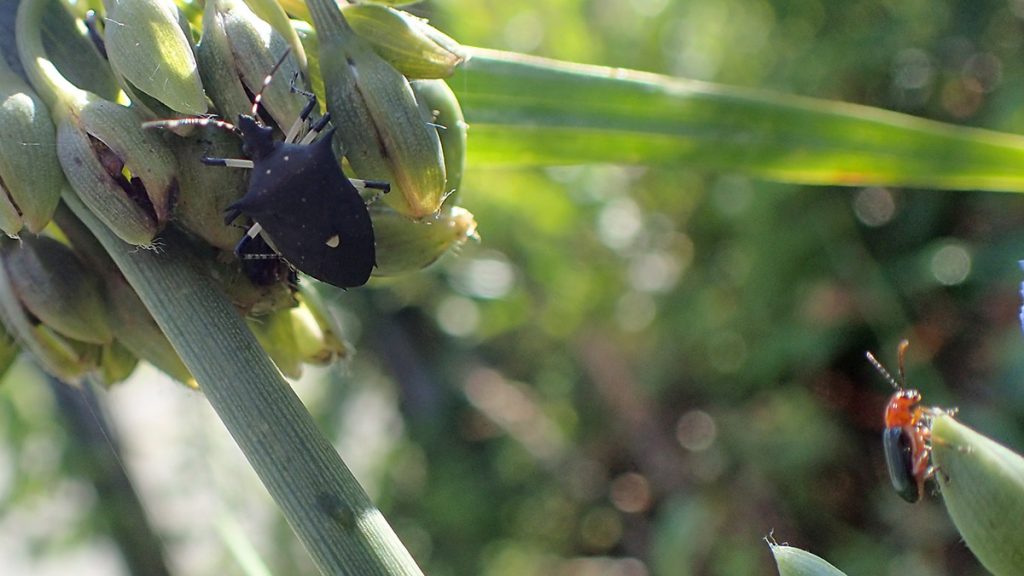
Bug #95, Proxys punctulatus, a stink bug species, on spiderwort buds. Also, Bug #96, a red and black insect seen at the lower right of the photo.
I’ve also ben seeing a lot of moths lately, though many are in flight or quickly fly away upon being discovered:
And next is either another oak gall (we saw a couple of different types last week) or some other type of insect nest in our oak tree:
Day 204 total: 3 new bug species.
2018 total: 97 bug species.
Day 203: July 22, 2018
High 95º Low 75º
Here’s a species I saw in the yard earlier in the year, but not a regular visitor:
I picked a tomato from the garden, and found this guy on the towel:
I have no idea whether is this is harmful or not, but it’s the only one I’ve seen and my tomato plants aren’t getting eaten that I can tell.
As I was cleaning up outside, I saw something interesting in a pile of leaves. Something big and insect-like. I took it out, and it was a dead cicada. Specifically, an annual cicada, a name given to cicada species that appear every summer. Periodic cicadas brood underground for several years and appear less frequently.
Next are a few things I’m not sure about. The yard was hopping with bugs between the storms. Edit 8-2-18: The following two images are leafhoppers of two different species. Leafhoppers suck on plant sap, and are known to carry diseases between plants. They can be serious pests.
This one looks like a photo I saw of a gall wasp when I was researching oak galls:
And here are a couple of dragonflies. I haven’t seen one with these colors in the yard yet. I think this is a blue dasher:
I think I’ve seen the species below before, but now that I’m Googling dragonfly species, this looks like a darner (Aeshnidae family). Judging by the wings, this one’s seen some action.
Day 200 total: 7 new bug species.
2018 total: 94 bug species.
Day 198: July 20, 2018
High 87º Low 76º
Okay, let’s look at our milkweed again. No monarch eggs. But I think here, we have a syphid larva starting to metamorphose. Here’s a critter we’ve been seeing plenty of. If we had monarchs, I’d remove them, as I suspect they eat caterpillars (their main food is another milkweed consumer- oleander aphids).
The critter below is a syrphid pupa. Now the larva is starting to make its transformation into a fly resembling a bee. Let’s see if I’m diligent and catch this when its skin is transparent, and we can see the fly inside.
Below is yet another garden pest, a wooly aphid:
And here’s a critter I need to ID when I have time:
Day 201 total: 2 new bug species.
2018 total: 87 bug species.
Day 200: July 19, 2018
High 89º Low 75º
Looking at the oak tree again today, I see another type of oak gall (containing the larva of a gall wasp). I think the little hole means these wasps are out and about:
Day 199: July 18, 2018
High 91º Low 75º
Kind of a crazy morning. I opened the back door, and several Carolina wrens flew out of the yard. One was in our Meyer lemon tree, it looked to me like it was close to the giant swallowtail chrysalis. And then I saw this:
I don’t think the wrens did this. Or do I? It looks like too neat a job, to leave the shell intact and attached to the tree, while eating its insides. I did have a friend describe a cardinal that ate a giant swallowtail that was trying to chysalize on her door frame- birds do love caterpillars, and wrens are no exception.
This is the backyard ecosystem we try to maintain. We have a bird feeder, and wrens have always made nests in our hanging plants. These wrens might be the fledglings I found on my porch in April:
Anyhow, it’s likely that the swallowtail emerged from its chrysalis earlier in the day (or emerged and was eaten?). I do know that these birds, when they have their nests, scour the yard for caterpillars. And I know that includes both the ones I like and the ones I maybe don’t love.
Also in the yard, a critter with an important ecological niche:
If I don’t clean up after the dog in a timely manner, sometimes I find dung beetles. I’ve been interested lately in what happens when plants and animals die and decompose. Other plants, animals, and fungi do their part to break them down. The same thing happens to animal waste in our wild spaces.
Day 199 total: 1 new bug species.
2018 total: 85 bug species.
Day 198: July 17, 2018
High 91º Low 75º
This morning, I started thinking about the oak moths I found mating under the oak tree. I went looking for caterpillars and found this:
This is an oak gall. This is caused by oak wasps in the family Cynipidae. These wasps inject their larvae into the oak tree, along with chemicals that cause these growths. There are many types of galls. When the wasps are mature, they pop out of the gall.
And here, below, we have one of the garden visitors which has most interested me over the last few years, the syphid larva (I first saw them last night):
When I first encountered these and learned about them, I was ecstatic. The syrphid is a fly that mimics the look of a bee as a defense, and their larva feeds on milkweed aphids. This is a natural way of controlling pests- great! Then, last year, I began to suspect that they may eat monarch caterpillars as well. While I haven’t found any documentation of this behavior, I started seeing that other beneficial insects like ladybugs do prey on monarchs. To the milkweed, after all, the monarch is a pest (even if we like them).
And still no monarch caterpillars this year…
Day 197: July 16, 2018
High 89º Low 76º
I’m not sure what I’m seeing here, crawling up the fencepost:
I came out at night with a headlamp to see what might be eating any garden plants. We have some large long-tail skipper larva, AKA bean rollers:
It’s been a few weeks since I last saw these guys, so I can assume that those have made their transformation, and that these are another wave of butterfly larvae.
Another interesting find for the night is that, while we were gone on vacation, milkweed aphids have become a big presence in the yard. If you look closely in this picture, you can see two of their natural predators (I’ll have a better photo of them tomorrow, in daylight).
Day 197 total: 2 new bug species.
2018 total: 84 bug species.
Day 196: July 15, 2018
High 92º Low 73º
We got back from our vacation late last night. It had obviously rained some while we were gone, and the yard needed some serious work. Unsurprisingly, I ended up seeing a TON of bugs. I don’t often get to spend this kind of time in the yard; it was fulfilling to do so, and I got to see plenty of what lives in my yard.
Let’s start by checking on our giant swallowtail caterpillars:
This guy hatched when we were gone. So we missed seeing it. However, the second caterpillar had made its chrysalis, which is still here:
We’ll keep an eye on that one. It’s a beautiful butterfly.
Anyhow, I got my hands dirty today, but also kept a camera nearby as I worked. What did I see?
Clouded skipper larva feed on grasses, so maybe this was attracted by the long grass on our lawn (which I cut- sorry!). Or maybe it was hosted and born on my lawn during our vacation.
These are regular visitors in our yard, but the first I’ve seen here this year.
Next is a butterfly I’ve never seen in my yard, and perhaps because it’s so small. But I was keeping an eye out for anything flying, and looking to snap photos. Notice the “hairs” protruding from the wings. They move, and I had thought that maybe it was carrying a spider or some insect on its wings. Can you see this on its wings:
I was raking leaves, but left some under the camellias where I found it. This is where red-banded hairstreaks lay eggs.
As I mowed my lawn, I tried to keep little clusters of flowers intact. I was surprised to see this happening on a thistle plant:
Reading up on this species, I learned that the female is larger. This thistle is under an oak tree, and the female will lay eggs on an oak leaf. Something for me to keep an eye on, and hopefully the eggs and caterpillars end up on lower branches that I can see.
Pulling vines, I found what I think is a moth caterpillar:
I a patch of grass I’d just cut, I saw something running fast, and carrying what looked like a leaf. It wasn’t until I zoomed in that I saw it was a caterpillar. I wish I knew what kind it was, but I also wasn’t looking to disrupt the thread waisted wasp’s meal:
And finally, here’s what I wish was a better photo of a common buckeye (Junonia coenia):
I also saw a long tailed skipper fly away from my camera, perhaps this had been one of the caterpillars I had previously seen on my bean plants.
So, did I see so many insects because I’d let my lawn grow, and then cut it, agitating critters that were hiding there? I saw species that used grasses and fallen leaves as host plants, so maybe. But it might just be that summer is progressing, and more things are out. And I was in the yard during the hot parts of the day to see them.
The one thing I haven’t seen yet is monarchs. I have three types of milkweed flowering (butterfly weed, tropical, and white swamp), and perhaps a fourth about to (pink swamp). On my vacation, I visited two Massachusetts Audubon sanctuaries, and saw plenty of monarchs and milkweed. And I saw plenty in the marshes by where we stayed. They’ve been passing through our area, I’ve heard, though not in large numbers. When they do come, we’ll have plenty of larval food.
Day 196 total: 8 new bug species.
2018 total: 82 bug species.
Day 179: June 28, 2018
High 97º Low 74º
Last pic before vacation: a giant swallowtail chrysalis:
Day 178: June 27, 2018
High 95º Low 74º
I had limited time outside today as I get ready to go on vacation, but I did have time to check on my giant swallowtails. I was excited to see one get into position to make a chrysalis:
I’ll check back on that one when I can. The other giant swallowtail also has something interesting going on. Its “tongue” seems like it’s stuck:
It’s been like that for days.
Day 176: June 25, 2018
High 90º Low 74º
Watering my plants this morning, I checked on my favorite garden guest:
The giant swallowtail caterpillars have gotten nice and big. Here, you can see how well its patterning matches that of the lichen covered branch on its host plant, the Meyer lemon tree.
Day 173: June 22, 2018
High 94º Low 75º
I saw some new species at night, but first, let’s look at the giant swallowtail caterpillars:
I had forgotten that they do this when water gets on them:
I’ve been told this excretes an odor found offensive by predators. Black swallowtails stick their tongues out in the same way.
I’ve been making the rounds every night, shining my headlamp on various plants. Some of our pole bean plant leaves were looking especially torn up, and I saw that the long-tailed skipper caterpillars had gotten bigger.
I also spied these garden pests. It’s been quite a week for seeing the enemies of gardeners:
And it gets worse. I saw this yellow striped army worm (Spodoptera ornithogalli, also known as a cotton cutworm) nibbling on a strawberry leaf:
Cutworms come out at night, so it’s worth inspecting plants then. A lot of garden pests, which include butterfly species, come out at night. When I started doing this a few years back, I started learning about different species of caterpillars and decided that I wanted to keep some (long-tailed skippers) and most definitely had to remove others. I typically follow the advice given me by Lilly Anderson-Messec at Native Nurseries when shooting a segment on butterfly gardening. The species I remove, I place in the bird feeder. That way, they can at least fulfill an ecological role in the garden.
Day 170 total: 2 new bug species.
2018 total: 74 bug species.
Day 172: June 21, 2018
High 97º Low 78º
I saw a couple of interesting things today. First, I almost walked into this spider in the process of killing a may beetle:
Also today, I encountered possibly my least favorite garden insect. We haven’t grown squash plants for years because of squash vine borers (Melittia cucurbitae). This is a moth, and like any moth or butterfly, they have larval food plants. And we tend to favor the prettier butterfly caterpillars, even if the eat our lemon and bean plant leaves.
The squash vine borer, however, is particularly insidious. It doesn’t just graze leaves, it destroys the entire plant. And it does it from within. The moth lays eggs on the leaves; one year my wife, Amy picked over a hundred off of our handful of plants. The larvae are born and the bore into the plant. Sometimes that initial damage isn’t terribly obvious, and the plant grows and creates nice looking squash or zucchini. And then you notice a hole on your vegetables, with orange frass oozing out of it.
This year’s plants didn’t get that far. A couple of plants volunteered out of our compost, and I thought it would be neat to see if they made it (and curious to see what kind of squash they were). This year the plant flowered, but eventually failed. This is the first thing I saw when I pulled it out:
And speaking of garden pests, I also found this stink bug:
Last fall, my family and I attended the 6th Annual Tallahassee Science Festival at Kleman Plaza. There, Florida A&M University entomology students were passing out stink bug guides, which is how I identified the bug above.
At night, I inspected the bean plants. Notice that the whole leaf is curled over now, and not just small sections. The caterpillars are getting bigger.
Day 172 total: 4 new bug species.
2018 total: 72 bug species.
Day 171: June 20, 2018
High 98º Low 77º
Today one of the long-tailed skipper caterpillars was out on open leaf, so I was able to get a better photo of it. They’re still pretty small. You can see the damage they’ve caused to the leaf:
I tried to find these guys out in the open at night, but no luck. I did find quite a lot more empty eggs:
And of course I keep watching and photographing the giant swallowtail caterpillars as they grow. I love how their heads are looking right now:
Day 170: June 19, 2018
High 97º Low 75º
Over the last few weeks, I’ve been looking at the leaves of our bean plants with the same attention with which I watch out milkweed leaves. And today, I finally saw the sign I had been looking for. We have our third species of butterfly caterpillar for the year:
Many of the leaves had this very specific kind of tearing, where parts of the leaf are rolled up. This is the work of the long tail skipper caterpillar (Urbanus proteus), otherwise known as the bean roller. They’ll leave these little rolls at night to graze on leaves. But sometimes I can turn the leaves around and see one poking out of its fold.
Turning the leaf over, I also saw its recently evacuated egg:
These can technically be considered a garden pest. I find, however, that while they tear up quite a few leaves, I still am typically able to harvest quite a lot of green beans, peas, etc.
Elsewhere in the garden, the giant swallowtail caterpillars continue to grow:
There appear to be only two now- probably the two larger ones.
Day 170 total: 1 new bug species.
2018 total: 68 bug species.
Day 169: June 18, 2018
High 92º Low 73º
Nothing new so far today, but the giant swallowtail caterpillars continue to grow:
Day 166: June 15, 2018
High 86º Low 71º
Raising butterflies, if you don’t collect them all and put them in a protected enclosure, is filled with the best and worst of everything that happens in nature. Today was filled with a little bit of both. First, the good. Our giant swallowtails keep growing. Here, you can start to see one start to develop the big head that they get, and you can see its different colors blend, allowing them to better camouflage on the tree bark (or look more like poop).
There are a good five or six giant swallowtail caterpillars on the Meyer lemon tree, two larger ones and a few smaller. I don’t expect six giant swallowtail chrysalides, however.
Things happen, as we see with the black swallowtails on our fennel:
Yesterday, I had three black swallowtail caterpillars. Now, one is missing, and the one above has been obviously predated. I didn’t see that smaller insect on it earlier in the day, when I first noticed what had happened. So I don’t think it’s the culprit, but rather a scavenger.
In another part of the yard, I see another insect feeding on a dead millipede:
It wasn’t the prettiest day for insects in the yard, but it’s not always butterflies, ladybugs, and bees.
Day 166 total: 2 new bug species.
2018 total: 67 bug species.
Day 165: June 14, 2018
High 86º Low 70º
Two days later, and you can already see how the giant swallowtail has changed. In our house, we call this the “bird poop” caterpillar:
Day 163: June 12, 2018
High 89º Low 70º
I had been wondering where the butterflies were this year. I know it was warmer last winter, and maybe we had more butterflies year round. But, common, it’s June already! Well, today finally felt like spring in the yard.
For starters, today marked the appearance of what might be my favorite caterpillar, that of the giant swallowtail (Papilio cresphontes):
This will become one big, kind of grody looking caterpillar, one that will camouflage well on the bark of its host plant, our Meyer lemon tree. You’ll notice that right now, it looks similar to a black swallowtail. Once it starts moving through its instars, though, it’ll look much different.
Here’s a closer look:
I found three caterpillars, and one egg:
I went to Native Nurseries after dropping Max off at camp. I asked if they’d seen many monarchs, and while they had seen some, the peak season is still ahead of us. We had a much milder winter last year, which had us swamped with monarchs in March. So I’ll be patient. I’ve been checking the milkweed leaves, but the only thing eating them so far are slugs.
Anyhow, when I got back home, I saw this:
Also exciting- my captive black swallowtail hatched. I thought I had been paying attention to its chrysalis to see if it had darkened, but maybe I didn’t when I got home yesterday? Oh well. I have three small caterpillars in the yard, and may move them into the enclosure to get more chances at getting that footage of them emerging as butterflies.
As we always do in our house, we gathered around to release it in the backyard when I got home from work. It never gets old for the kids, or for me. Max opened the zipper and I got a couple of good shots of this butterfly as it lingered:
Looking at the outside of its wings, you can tell the butterfly’s sex. That top row of yellow dots has smaller dots than a male’s, so this is a female:
It was taking a little while to leave the enclosure, as if maybe frightened by the four large mammals standing around it, staring at it. Max got it to walk onto his finger, from which it flew up and quickly away from us.
It had felt like a slow year for butterflies so far, but I spotted yet another new species for 2018 while out in the yard.
Day 163 total: 2 new bug species.
2018 total: 65 bug species.
Day 155: June 4, 2018
High 93º Low 69º
I was pruning our crepe myrtle trees when I noticed this little white leafhopper hanging out on a branch:
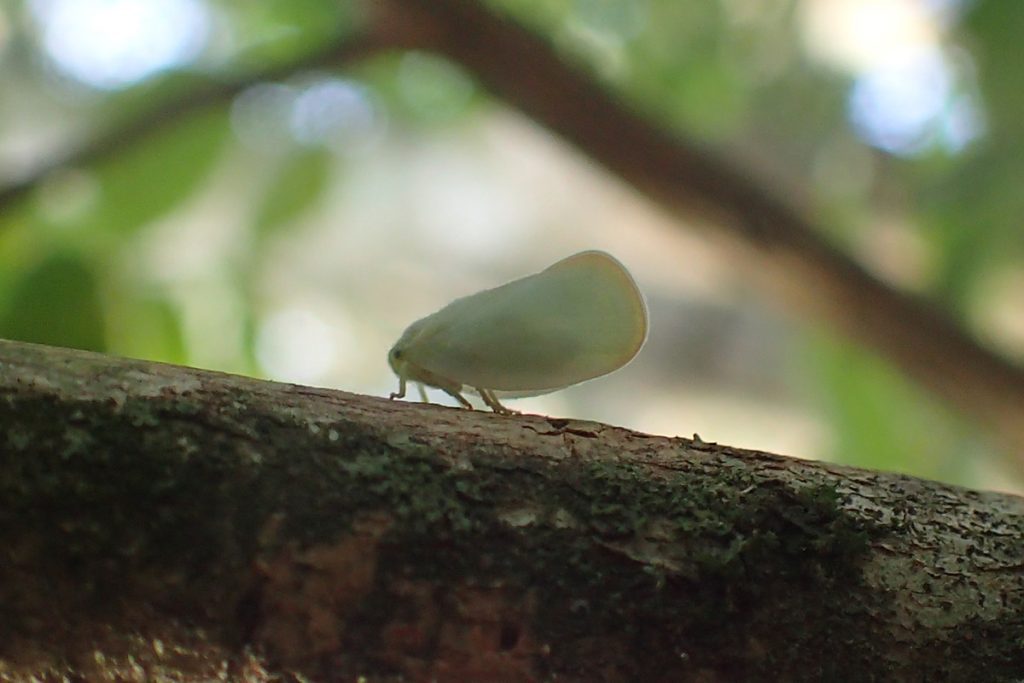
Bug #63: This small white insects is a northern flatid planthopper (Flatormenis proxima), on crepe myrtle.
Day 155 total: 1 new bug species.
2018 total: 63 bug species.
Day 152: June 1, 2018
High 90º Low 67º
This morning, my captive black swallowtail got into position to make its chrysalis. Right on the zipper. Before getting big, it had eaten much of the fennel plant in the enclosure. I had a second, smaller caterpillar in there. Unfortunately, I can’t put in a new plant without opening the zipper. So I took the second caterpillar out (there’s a smaller zipper on the side) and put it on the outside fennel.
Black swallowtails are kind of unpredictable. Last year, most of ours spun their chrysalides at night. Since this one made a J in the morning, I could have expected that it would be done by the afternoon. It would have been good to get daylight footage of it making a chrysalis, but it wasn’t possible for me to spend the whole day outside with it. Monarchs are predictable in comparison, usually spinning, and emerging from, their chrysalides between 6-10 am.
Day 151: May 31, 2018
High 90º Low 66º
I feel like I’ve been seeing dragonflies everywhere else, but finally one landed near my camera here in the backyard. Generally, I’ve found that these guys stay put when you get close.
And here’s an interesting thing happening on a weed I let grow tall. Every leaf is curled inward, and covered with a variety of bugs:
I think they’re aphids. Aphids attract ants:
Are these winged insects a mature version of Bug #58, or there to eat them, or somehow living in a symbiotic relationship with them?
I’ve already seen ladybugs in the garden this year, and this specific type. But it’s worth noting its presence, as they like to munch on aphids as well.
And finally, not a bug, but the molted carapace of a bug. One of my favorite things about paying this kind of attention to my backyard bugs is seeing these signs of their life cycles: A molted carapace, a cocoon, and the different eggs and larvae.
Day 151 total: 2 new bug species.
2018 total: 62 bug species.
Day 150: May 30, 2018
High 85º Low 73º
The first black swallowtail I spotted grew big and left. They travel to make their chrysalides, and I’ve never spotted one in the yard. Last year, I shot a bunch of footage of these caterpillars, and I got everything but a swallowtail emerging from a chrysalis. And I want to finish that video. So now, this guy, which is from one of the eggs I posted a few days ago, is in the enclosure.
Day 148: May 28, 2018
High 85º Low 64º
The big news in our garden on this soggy Memorial Day centers on our tomato plants. I pulled these two green tomatoes off of a plant after noticing that they’d been a little eaten. Here’s what I saw:
I went back out and saw that several leaves had a serious problem with these caterpillars. Searching “caterpillars eating tomato leaves,” I saw a photo of these. These are lily caterpillars (Spodoptera picta):
Ouch. I had some work to do, plucking these guys off.
Checking the milkweed (still no monarchs), I saw this thing. Is it a monarch predator?
I also kind of liked this shiny beetle hanging out on this coneflower bud:
And finally, this guy running around on the lip of a pot:
Day 148 total: 4 new bug species.
2018 total: 60 bug species.
Day 145: May 25, 2018
High 91º Low 70º
No new bugs today, but here’s this little cluster of bugs I saw on March 12:
It’s actually a combination of those and the bugs I saw on May 22. Does the wingless bug turn into the winged bug? Or do the two species just socialize? Hmmm…
Day 142: May 22, 2018
High 84º Low 71º
Time to check on the black swallowtail caterpillars. First, I caught the larger one moments after molting. Caterpillars do this as they grow, shedding their skin and changing their form slightly (they then eat the skin, usually). The next change for this one is now the big one: making a chrysalis:
Also, it appears one of the eggs finally hatched:
Seeing the black swallowtail caterpillars makes me want to check the milkweed. No monarchs yet, but here’s a neat bug:
It looks like the same species of sweat bee I saw on March 23, so it’s not a new species for 2018. But I do like the way it looks on this swamp milkweed.
Looking over the milkweed, I also saw these crazy little guys scurrying around the lip of a pot:
And finally, a fly on the hydrangea:
One fun thing about this little bug photography endeavor is that I’m looking closer at these critters, and seeing how much variety there is in fly species, when you look.
Day 142 total: 2 new bug species.
2018 total: 56 bug species.
Day 141: May 21, 2018
High 85º Low 70º
I checked on the black swallowtail caterpillars and eggs, and saw that the caterpillar had grown and progressed to the third (?) instar, right before it reaches its final stage of maturity and makes its chrysalis.
I also saw this cool camouflaged spider on our Meyer lemon tree:
And this guy:
Day 141 total: 2 new bug species.
2018 total: 54 bug species.
Day 139: May 19, 2018
High 92º Low 68º
So yesterday, I spotted two eastern black swallowtail eggs on our fennel, and somehow missed this guy:
This is a first instar black swallowtail caterpillar. One thing I like about this caterpillar is that, compared to other caterpillars I see in the yard, their appearance changes a lot as they grow. So these guys will be fun to watch.
I also saw this white checkered-skipper on a squash flower. This is a volunteer plant, so I’m not even sure what kind of squash it is, it just grew out of some compost I mixed into a raised bed around pepper plants.
The outer edge of the wing maintains the checked pattern, which is, as we learned last year, how you would distinguish a white checkered from a female tropical checkered-skipper.
Day 139 total: 1 new bug species.
2018 total: 52 bug species.
Day 138: May 18, 2018
High 88º Low 69º
I really haven’t been seeing too many butterflies in the yard this year. And last year, we started getting monarchs in March, though that winter was much milder. Still, our native species of milkweed have all grown back and are blooming, and we have several milkweed volunteers sprouting in pots (our tropical milkweed, Asclepias currassavica, went to seed last year).
So, while we haven’t yet seen monarchs, I did get a pleasant surprise today in the garden:
This is one of two eastern black swallowtail (Papilio polyxenes asterius) eggs I found nestled in one of our fennel plants. We went from 2 to 4 plants last year after two large waves of black swallowtails decimated them.
Day 135: May 15, 2018
High 83º Low 70º
As it has warmed up, more flowers are blooming in the yard. Right now, a couple of swamp milkweed (Asclepias perennis) plants are in full bloom, and attracting a lot of insect attention. Below is a fly proving that not just bees and butterflies pollinate. I also see that milkweed aphids have gotten themselves in a place where it’s difficult to remove them- if I care about keeping the bloom.
Day 135 total: 1 new bug species.
2018 total: 51 bug species.
Day 124: May 4, 2018
High 90º Low 59º
My kids had the day off from school, so I spent a little extra time in the garden this morning. What I found most interesting were a couple of things attached/ in proximity to a spider (Bug #25 from March 3). One is this leaf with some sort of housing- maybe for eggs? Are they the spiders’?
The web attaches to a mint plant, where I found these eggs (maybe these belong to the spider?):
These two insects were chilling on a milkweed leaf:
I found a couple of different insects on hydrangea leaves:
I kicked over a ball of Spanish moss on our driveway, and this moth flew out. I’m due for a night inspection of the garden with a headlamp, where I’d see more of these guys and their caterpillars:
These interesting holes have appeared on a bare patch. This is the kind of place where native bees might nest. Love me some native pollinators!
Day 124 total: 5 bug species.
2018 total: 50 bug species.
Day 118: April 28, 2018
High 83º Low 49º
These guys were hanging out on a weed growing next to a raised bed:
Day 118 total: 1 new bug species.
2018 total: 45 bug species.
Day 104: April 14, 2018
High 84º Low 59º
I saw something I needed to remove on our swamp milkweed. It looked like something potentially unfriendly to monarch caterpillars (which have yet to arrive). I like spiders, so I relocated it elsewhere in the yard.
And I’m noticing that milkweed aphids are returning. They attract predatory insects that threaten monarch caterpillars. Ab of course they’re harmful to the plant itself.
And then there was this guy on our hydrangea:
Day 104 total: 2 new bug species.
2018 total: 44 bug species.
Day 91: April 1, 2018
High 83º Low 44º
Saw a couple of interesting insects on our fennel flowers today:
And this beetle digging around on a raised bed:
Day 91 total: 3 bug species.
2018 total: 42 bug species.
Day 90: March 31, 2018
High 76º Low 51º
I saw a few things in the garden today:
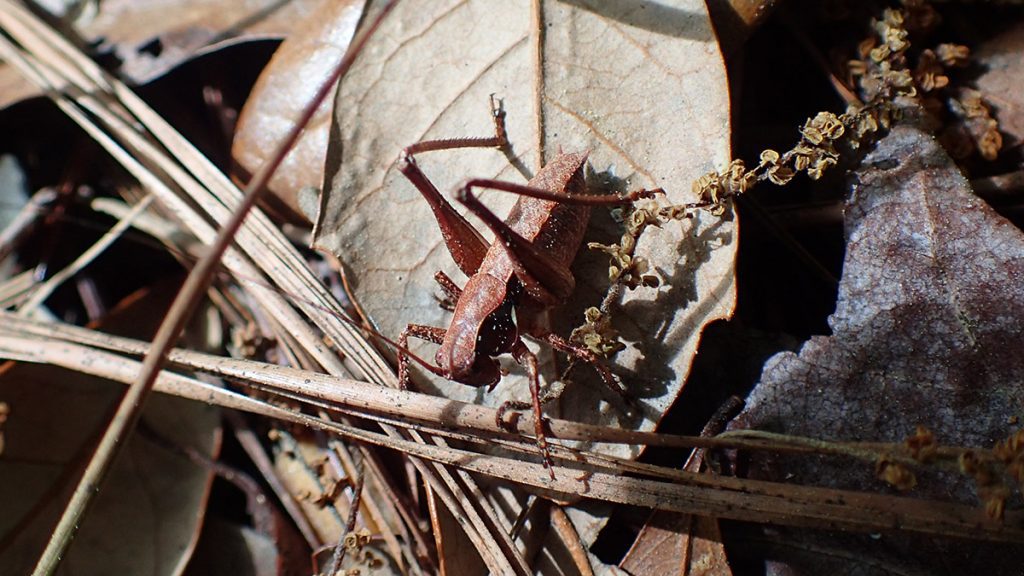
Bug # 36- grasshopper- EDIT June 2020- I’ve entered this into iNaturalist. It recommends grasshopper species, but this does look like a shieldback katydid species we saw on the Garden of Eden Trail.
And then there’s this thistle, which has these green bugs and what appears to be their eggs?
Day 90 total: 4 bug species.
2018 total: 39 bug species.
Day 82: March 23, 2018
High 72º Low 35º
I was air drying a tent fly in the backyard, which had gotten folded over somehow. When I unfolded it, I found this bee seeking shelter from a cold morning:
The afternoon was much more insect friendly, and there was a lot to see. One was a favorite insect of mine, a blue sweat bee, here pollinating the flowers of one of our fennel plants.
And then, hiding under a tomato leaf, I saw this ladybug:
And, maybe not as exciting as the other bugs but a part of our backyard ecosystem nonetheless, is this guy:
I’m starting to see more and more butterflies, with caterpillars soon to follow, I’m sure.
Day 82 total: 4 bug species.
2018 total: 35 bug species.
Day 72: March 13, 2018
High 63º Low 33º
The Meyer lemon tree continues to be a reliable host for several plant species. Like many of the species we saw during the colder winter months, this is a translucent green. Perhaps this is an adult version of one of those bugs? I have some research to do when my video deadlines slow down.
Day 72 total: 1 bug species.
2018 total: 31 bug species.
Day 71: March 12, 2018
High 60º Low 43º
I noticed these guys hanging on behind a terra cotta pot before work one chilly morning.
I also went into the Apalachicola National Forest today with Dr. Walter Tschinkle, for a segment on his work with ants. He makes metal castings of ant nests, creating a three dimensional image of tunnels and rooms running several feet deep. This will air on April 26 at 8 pm ET on WFSU-TV’s Local Routes.
Day 71 total: 1 bug species.
2018 total: 30 bug species.
Day 70: March 11, 2018
High 76º Low 44º
Before it warmed up, I saw this spicebush swallowtail butterfly (Papilio troilus) walking around on the ground. Not flying, but walking. Eventually, it got enough sun and flew off. (Edited 6/19/2018- originally identified as a black swallowtail)
Day 70 total: 1 bug species.
2018 total: 29 bug species.
Day 69: March 10, 2018
High 68º Low 33º
Not a terribly warm day, but I did see this bee walking around on the ground. Perhaps the cold was keeping it grounded?
Getting up close with the macro, I could see that it was pollinating a fallen, kind of shriveled flower. A sign that not much in the yard is blooming yet.
Day 69 total: 1 bug species.
2018 total: 28 bug species.
Day 62: March 3, 2018
High 74º Low 43º
Got a little bit done in the garden today, and saw a few things.
Spider webs and ant piles have popped up around the yard. I took a couple of spider pics:
And back on our Meyer lemon tree, ants appeared to be feeding on these insects. They look different than the previous aphids, but perhaps they’re a different species, or stage of the same species?
A bumblebee quickly flew by me, but they’ll be easier to capture on camera when I have more flowers in bloom. Anyhow, something was pollinating our blueberries:
And lastly, our milkweed is starting to re-sprout after dying back in the cold. After last year’s mild winter, monarchs migrated earlier than we expected. Our plants weren’t too big yet, and Native Nursery didn’t have many for sale. We’ll see how it goes this year.
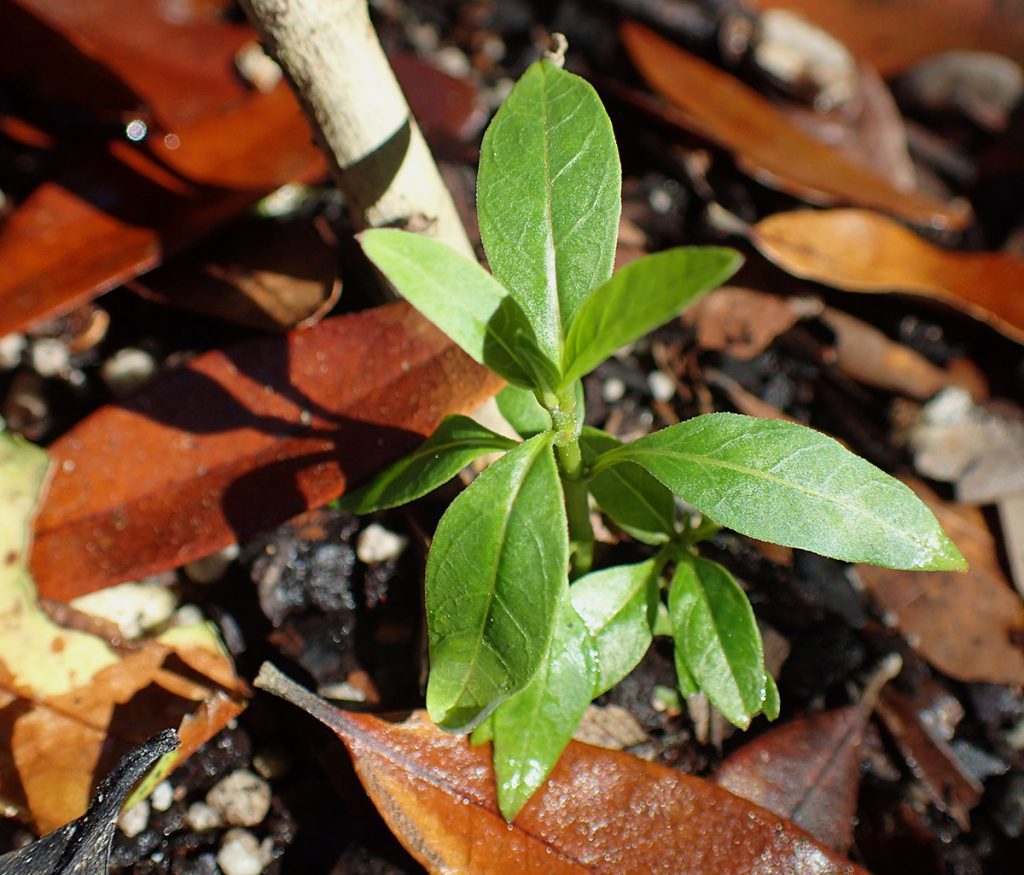
Tropical milkweed growing back as temperatures warm. Our native swamp milkweed plants managed to hang on.
Day 62 total: 3 bug species.
2018 total: 27 bug species.
Day 49: February 18, 2018
High 83º Low 61º
It’s been warmer the last few weeks, but I’ve had to work weekends, I’ve been sick, I’ve been out of town. So I haven’t been keeping up with bug pics. But today, I had some (long overdue) work to do in the garden. I’ll need to start bringing out the DSLR to capture flying insects, and I think that should also be easier when more flowers are in bloom.
A lot of plants are starting to flower in the yard, and our Meyer lemon tree has a couple or three dozen. I found a few covered with aphids, which of course attract their predators, ants. I saw a ladybug quickly in the yard, and this is perhaps why.
It’s not the best pic, but this winged predator found a meal on those Meyer lemon buds. I want those lemons, but I’m also curious to see these buds’ food web if I let them be for a little while. Hmmm…
This was on the kids’ sand table. Just as a seasonal note, we can see that here in mid-February we have started getting that pollen coating.
There are so many ant species. Some will be more obviously different from each other, but I couldn’t say that these are different than what was on the lemon tree. I found these in a compost pile.
Another compost critter.
I broke up the soil in one of my raised beds and planted some seeds. There were a lot more bugs than when I dug in the dirt, for curiosity’s sake, on January 3, our snow day. I did see the same couple of bug species I saw that day, and a few more that must have dug down deeper for warmth.
I looked up roly poly bugs. They’re actually terrestrial crustaceans, a type of wood lice in the Armadillidiidae family.
Day 49 total: 8 bug species.
2018 total: 24 bug species.
Day 15: January 15, 2018
High 60º Low 27º
It warmed up nicely this afternoon. Not any bugs flying around that I saw, but I’ve been turning over leaves to see what’s hiding there. I found these eggs under a smilax vine leaf.
Day 7 total: 1 bug species.
2018 total: 16 bug species.
Day 7: January 7, 2018
High 57º Low 22º
I found something kind of interesting when cleaning up on the side of our house. It looks like a moth cocoon. Something to keep an eye on over the next couple of weeks, or months. Some moths overwinter just like the swallowtail butterfly chysalides we have in our kitchen (scroll to January 1).
I also found three more insect species on our Meyer lemon tree. The more I look, the more I find. I’ll have to start doing the same with other trees on our property. Each is an ecosystem unto themselves.
The first insect I saw on the lemon tree is another little green translucent critter. It’s interesting how many of the creatures I find on it share this trait.
I also found a couple of spiky little guys. I see them a lot when I look for giant swallowtail caterpillars, which start out kind of spiky looking themselves.
When I was in the yard today, I saw a handful of robins in the trees above. Yesterday, I saw just a single robin. I wouldn’t be surprised to see a flock of them roaming the neighborhood soon, as they do this time of year.
Day 7 total: 4 bug species.
2018 total: 15 bug species.
Day 6: January 6, 2018
High 53º Low 22º
Today I took my search for bugs to our Meyer lemon tree. This is a potted tree (most of our yard is paved), yielding a handful of lemons a year. It also hosts a handful of giant swallowtail caterpillars every year.
Surprisingly, I found quite a few bugs on a cold day.
These guys are so small, I didn’t entirely get what I was seeing until later when I zoomed in:
The bigger bug looks like it’s eating the smaller red ones. Or maybe those are its babies? And then there is that shell of another bug nearby- maybe its prey? Or maybe a casualty of the cold. I saw a few white “bug ghosts:”
And I saw another green translucent insect:
It looks similar to the other bug, but with white eyes instead of red. And it kind of looks like it has false eyes on the tip of its abdomen.
I also saw this green translucent spider (edit 12/18/18, this is likely a Magnolia Green Jumping Spider (Lyssomanes viridis):
I wonder what these guys did during the snow and freeze on January 3. This is what the same leaves looked like that day:
Lastly, I saw these things under one of our coneflower leaves:
I’ve been seeing a Carolina wren poking around the edges of the yard. This usually means they’re building a nest- usually in one of our hanging plants. I’ll have to keep an eye out. The main food they’ll feed their nestlings is insects- caterpillars, grasshoppers, and even spiders.
Day 6 total: 5 bug species.
2018 total: 11 bug species.
Day 3: January 3, 2018
High 47º Low 24º
It snowed in Tallahassee today, the most snow we’ve seen here since 1989.
Not a day to see a lot of bugs out and about. However, it did occur to me that bugs have to go somewhere when it’s cold. So I took a trowel to a corner of the yard where a leaf pile was decomposing into soil. Here is what I saw:
This guy scurried back under immediately. The one below never uncurled- perhaps it was hibernating?
I was curious to keep digging, but I had other chores and so did the bugs- breaking down leaves to make them soil. I figure I’ll see plenty more bugs in the dirt when I plant for the spring.
When I was out in the yard today, I saw a yellow rumped warbler- a migratory bird escaping a much colder place than here.
Day 3 total: 2 bug species.
2018 total: 6 bug species.
Day 1: January 1, 2018
High 44º Low 33º
It was a cold day, but I still saw some bugs. First was this guy, dead in my driveway:
I did see something moving outside:
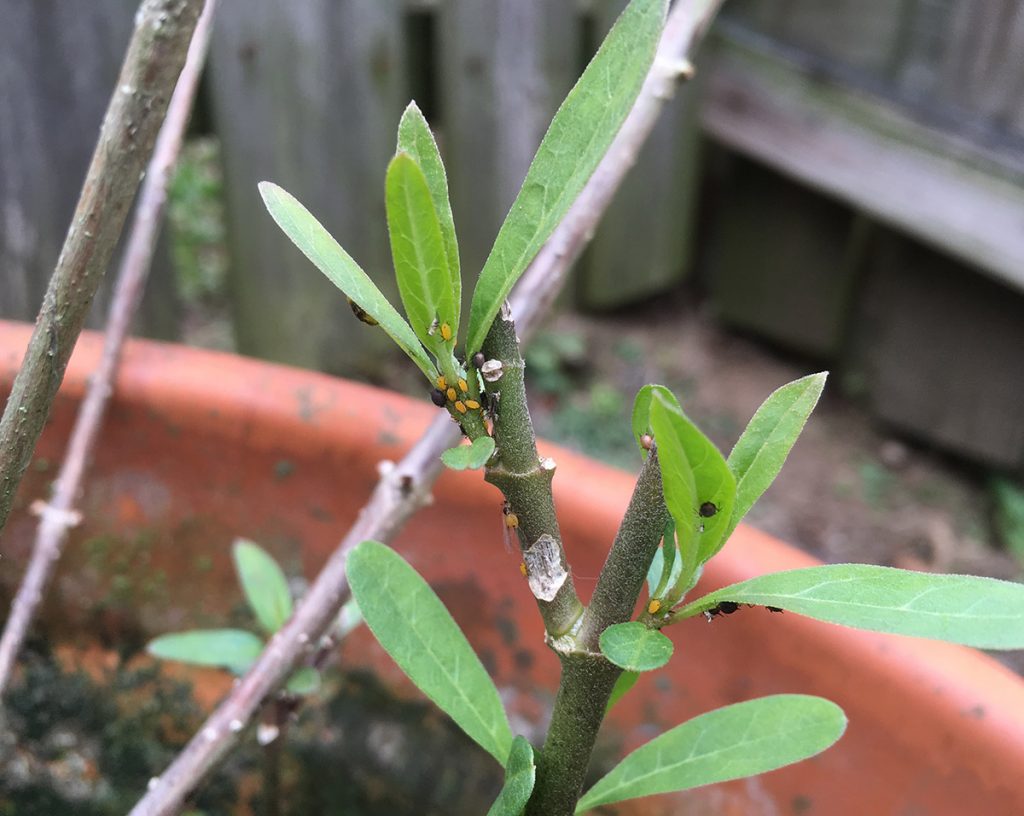
Bugs 2 & 3: Little orange milkweed aphids on tropical milkweed (Asclepias currassavica), along with larger black bugs.
I had just cut back my tropical milkweed plants, as we should all do after Thanksgiving. As we learned in our segment on pollinator gardening, tropical milkweed is not native to our area, and its flowers don’t die back in the winter. The thing is, when those flowers don’t die off, they carry OE (Ophryocystis elektroscirrha), a parasite that affects monarch butterfly mortality. That’s why we clip the plants to six inches after Thanksgiving.
These orange milkweed aphids also endanger the monarch caterpillars we like to raise in our yard. While they don’t affect the caterpillars directly, they can attract monarch predators.
And lastly, we have this in our house:
Last summer, we brought some black swallowtail caterpillars into our house. They aren’t as predictable as monarchs- they make chrysalides at night and it’s hard to tell when they might hatch. Here we see three chrysalides. The two on the outside hatched in November of 2017. However, if they don’t hatch before it gets cold, swallowtail species overwinter.
If you’re keeping an overwintering chrysalis in your house, be careful not to let it get too hot, or it will hatch (and not thrive outside). You can keep the outside, just be careful to keep them safe from little critters that might eat them.
I have a lot of footage of these caterpillars. When I get a shot of one hatching (2 left, and still so unpredictable), I’ll produce a video.
Day 1 total: 4 bug species.
2018 total: 4 bug species.
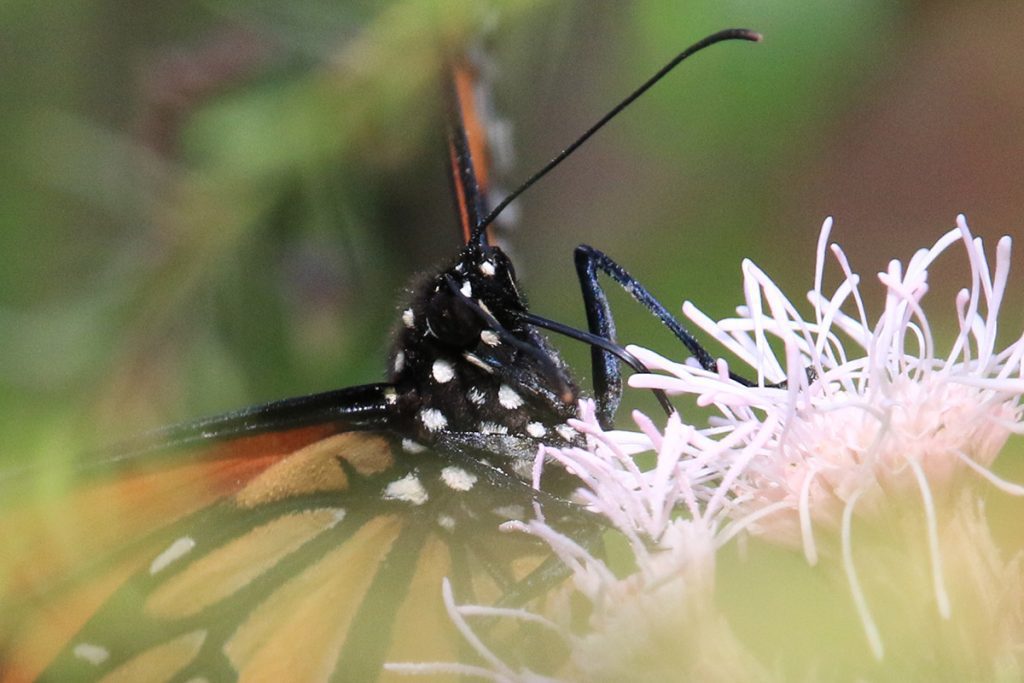
Dig Deeper into Backyard Ecology
What can we do to invite butterflies, birds, and other wildlife into our yards? And what about the flora and fauna that makes its way into our yards; the weeds, insects, and other critters that create the home ecosystem? WFSU Ecology Blog takes a closer look.

